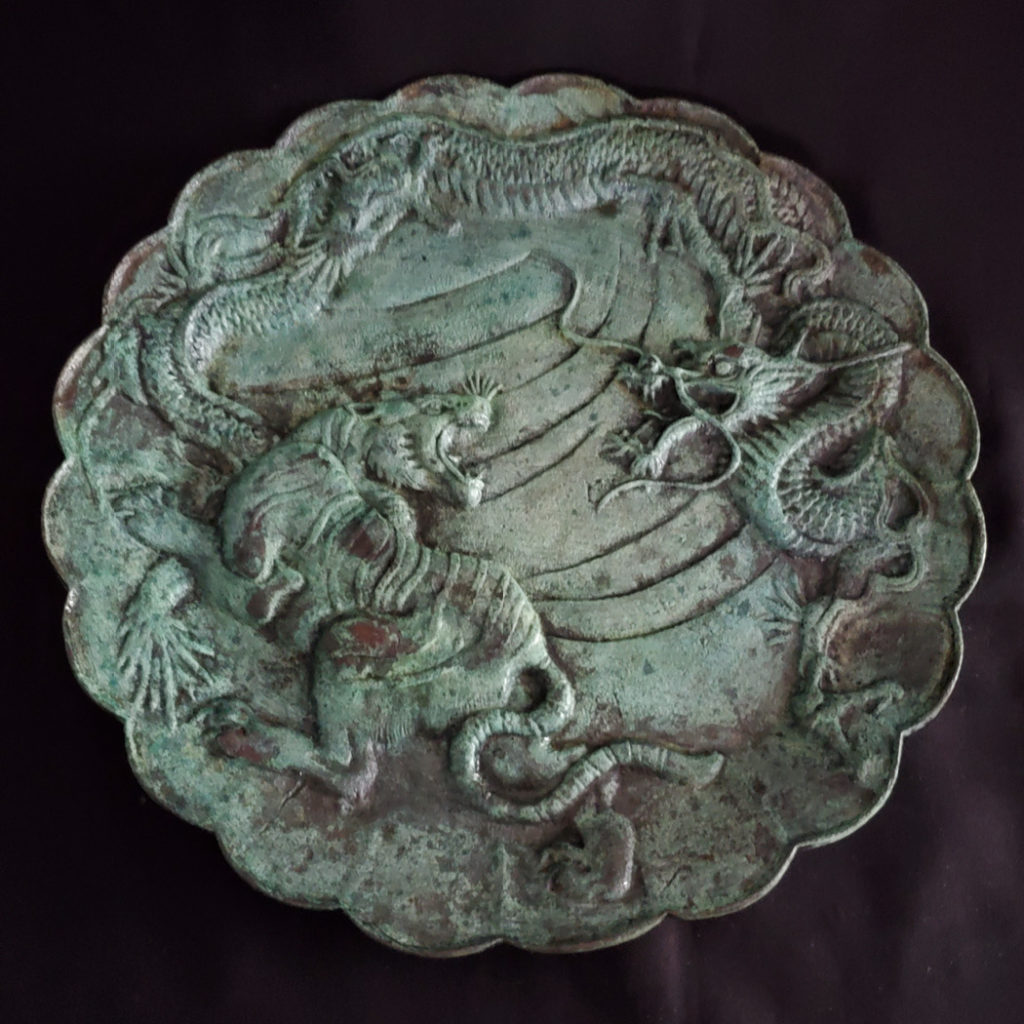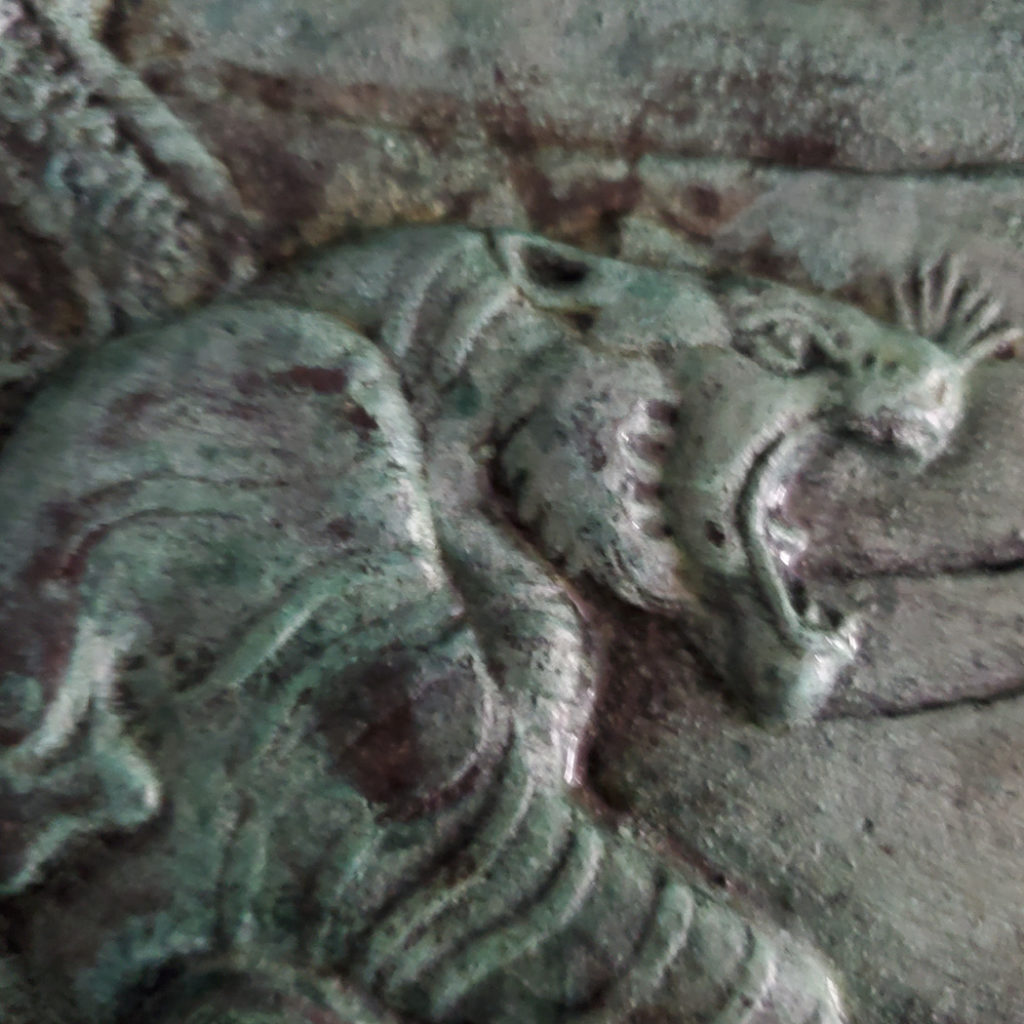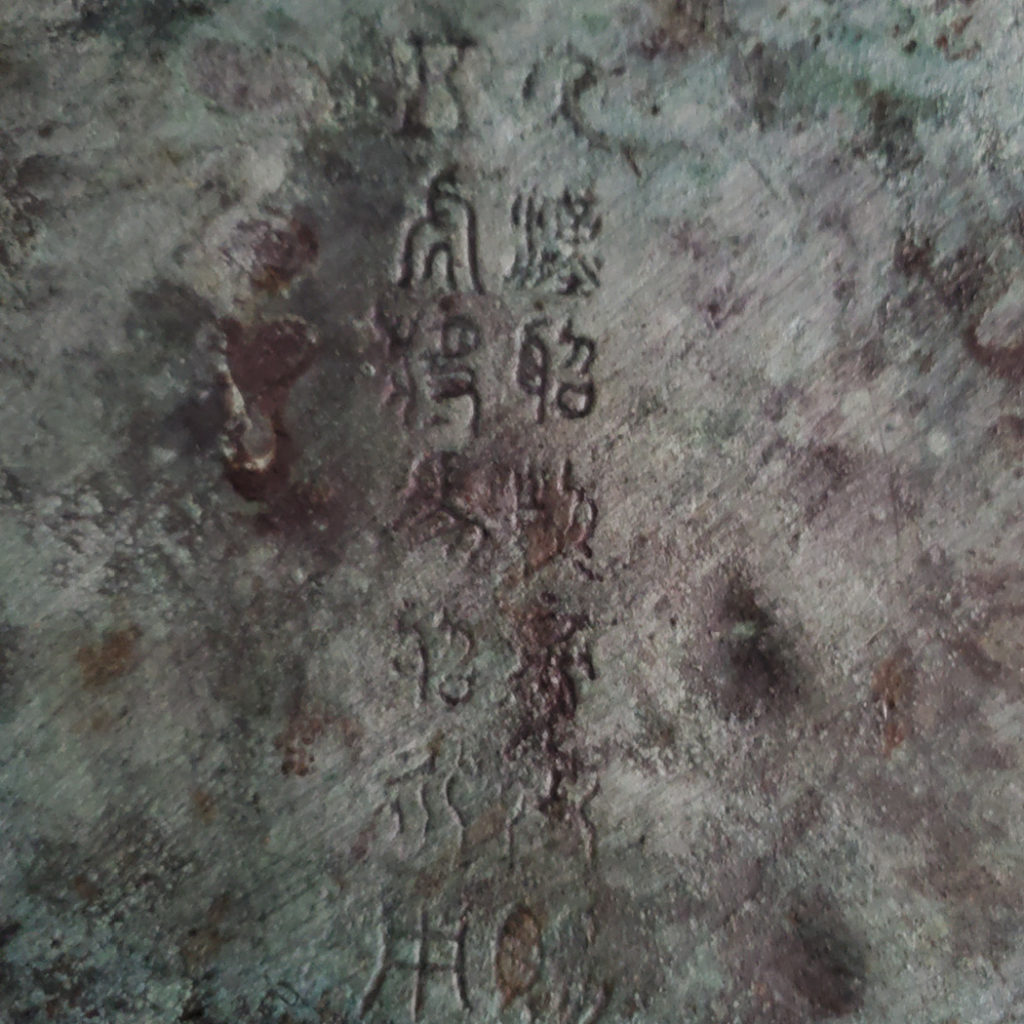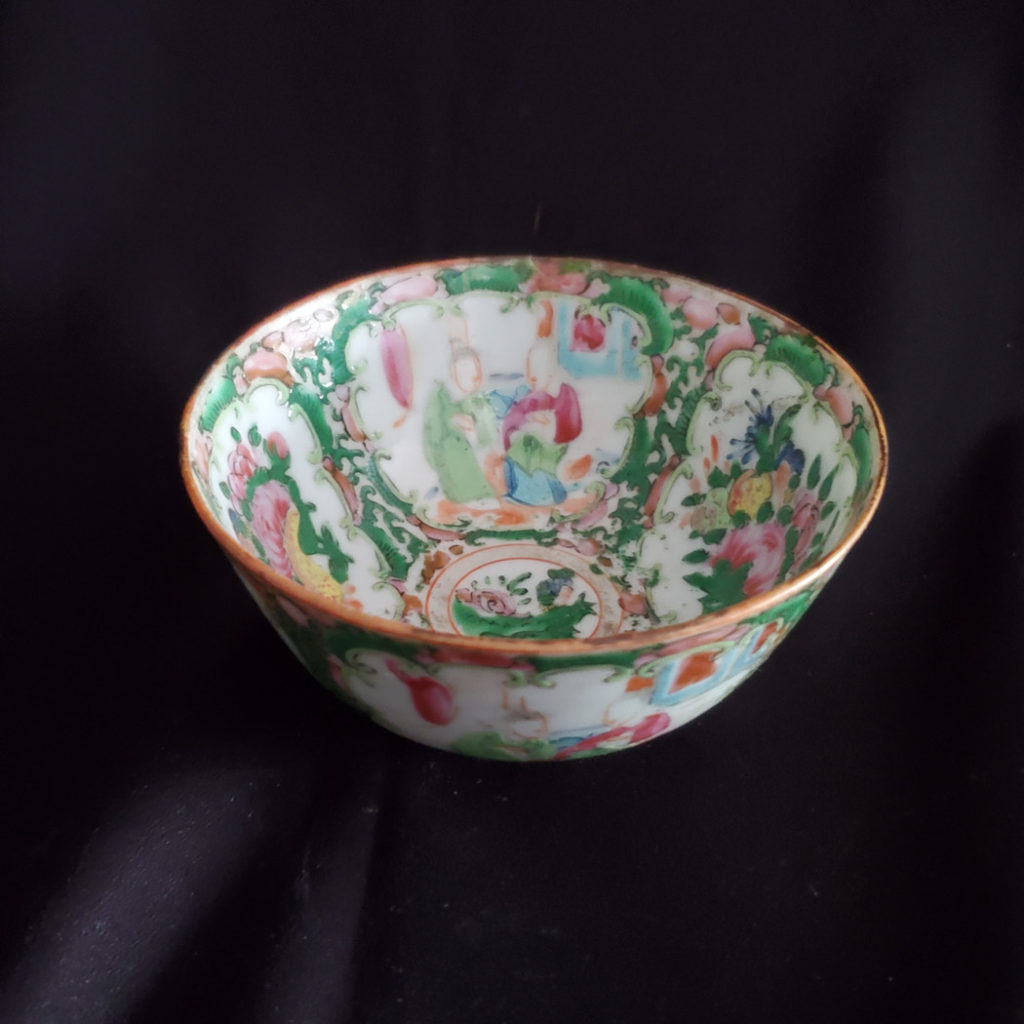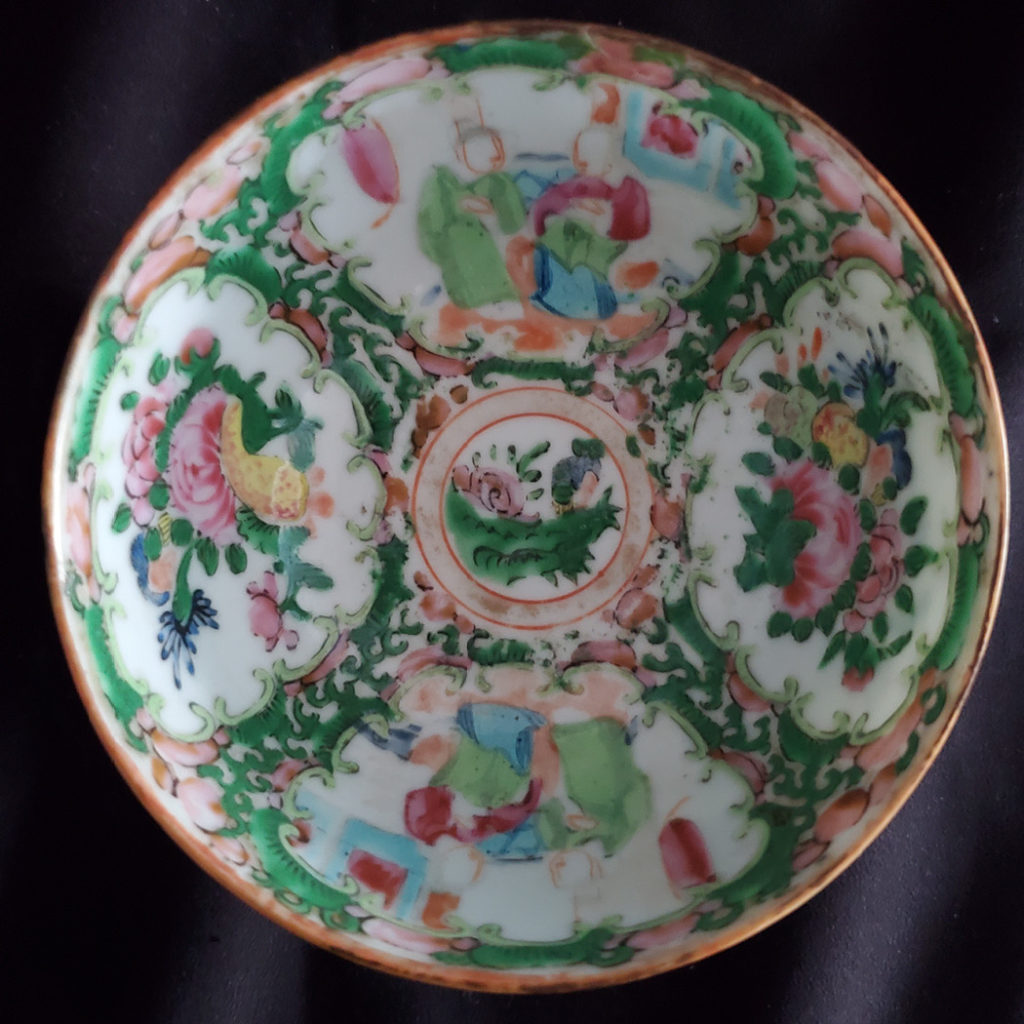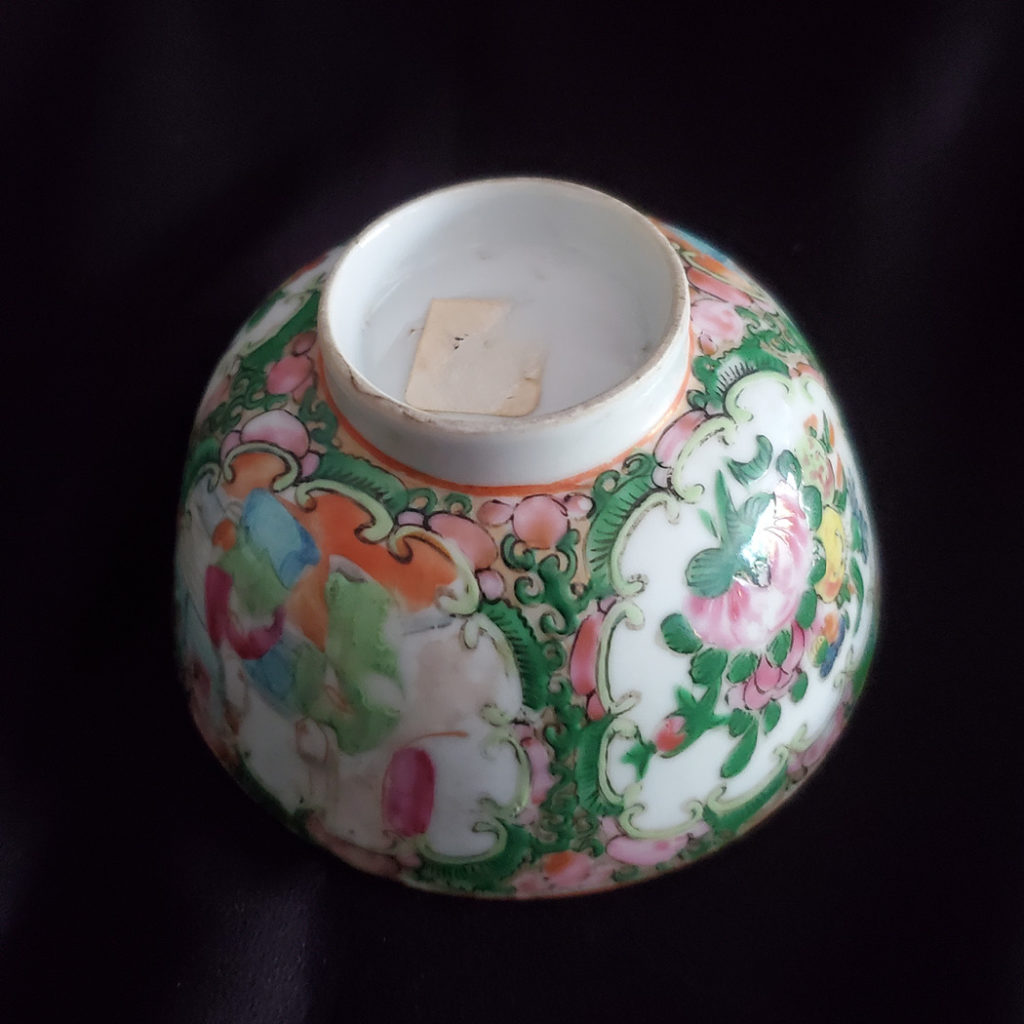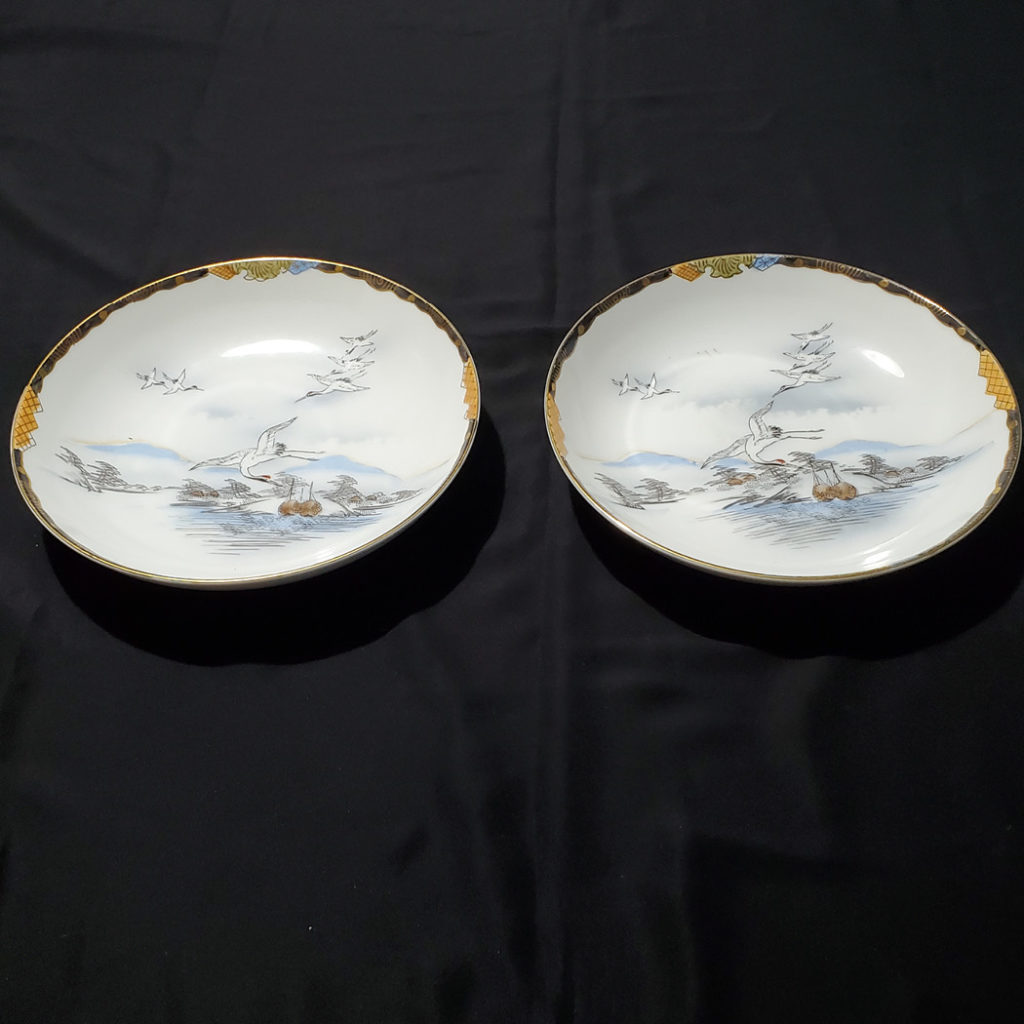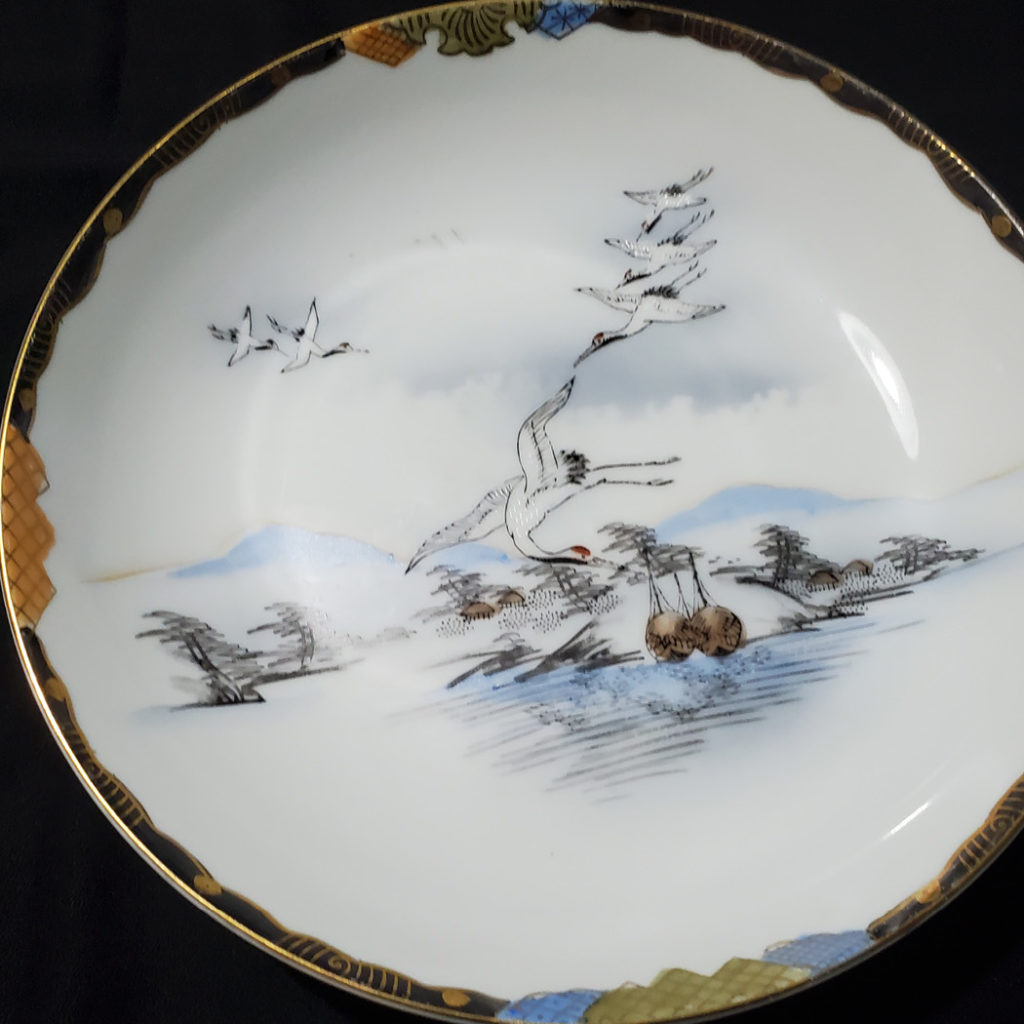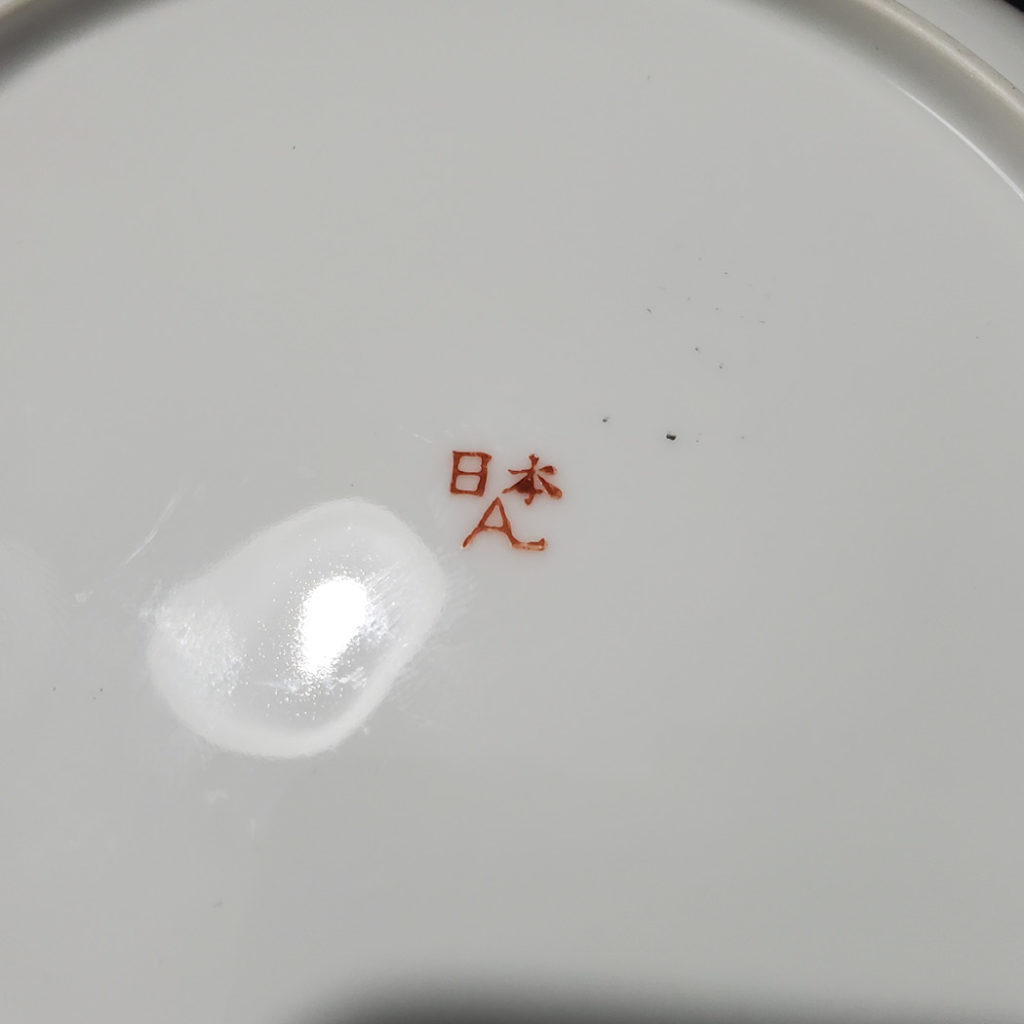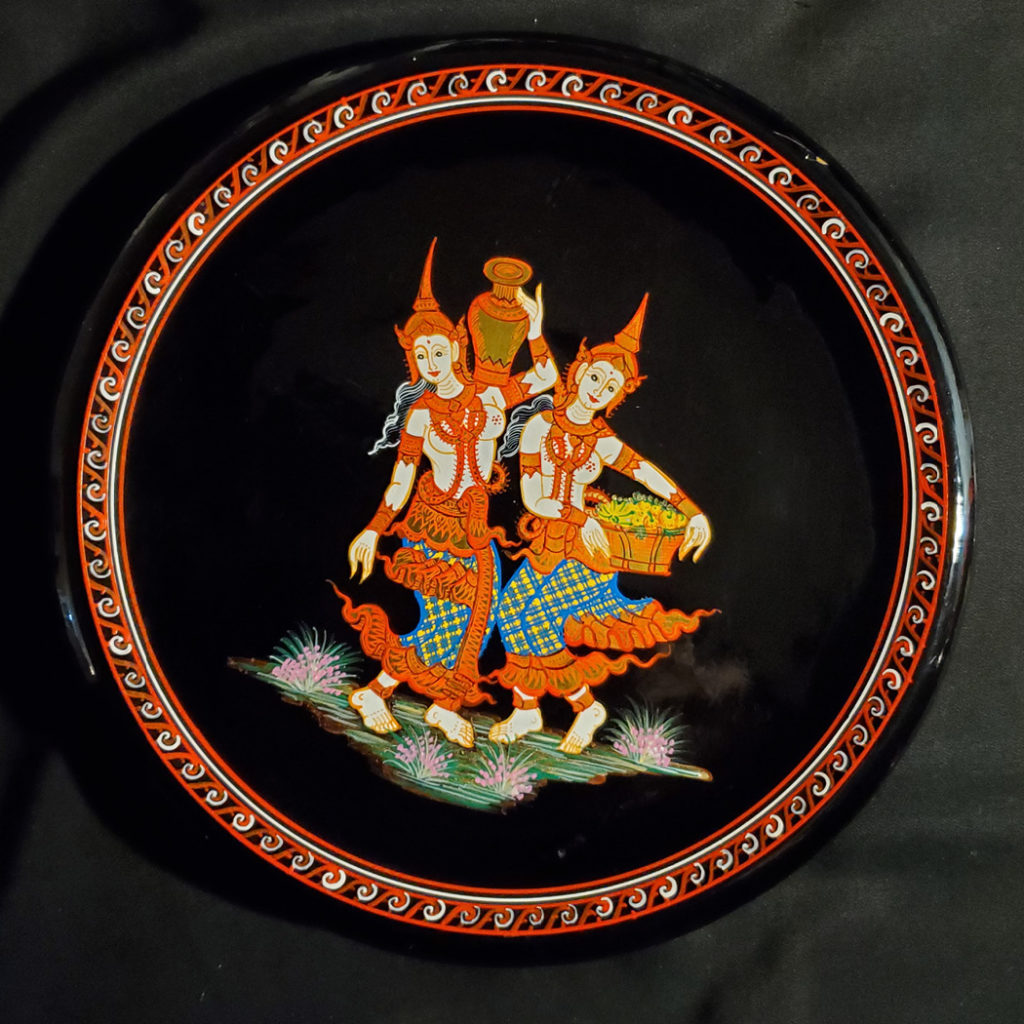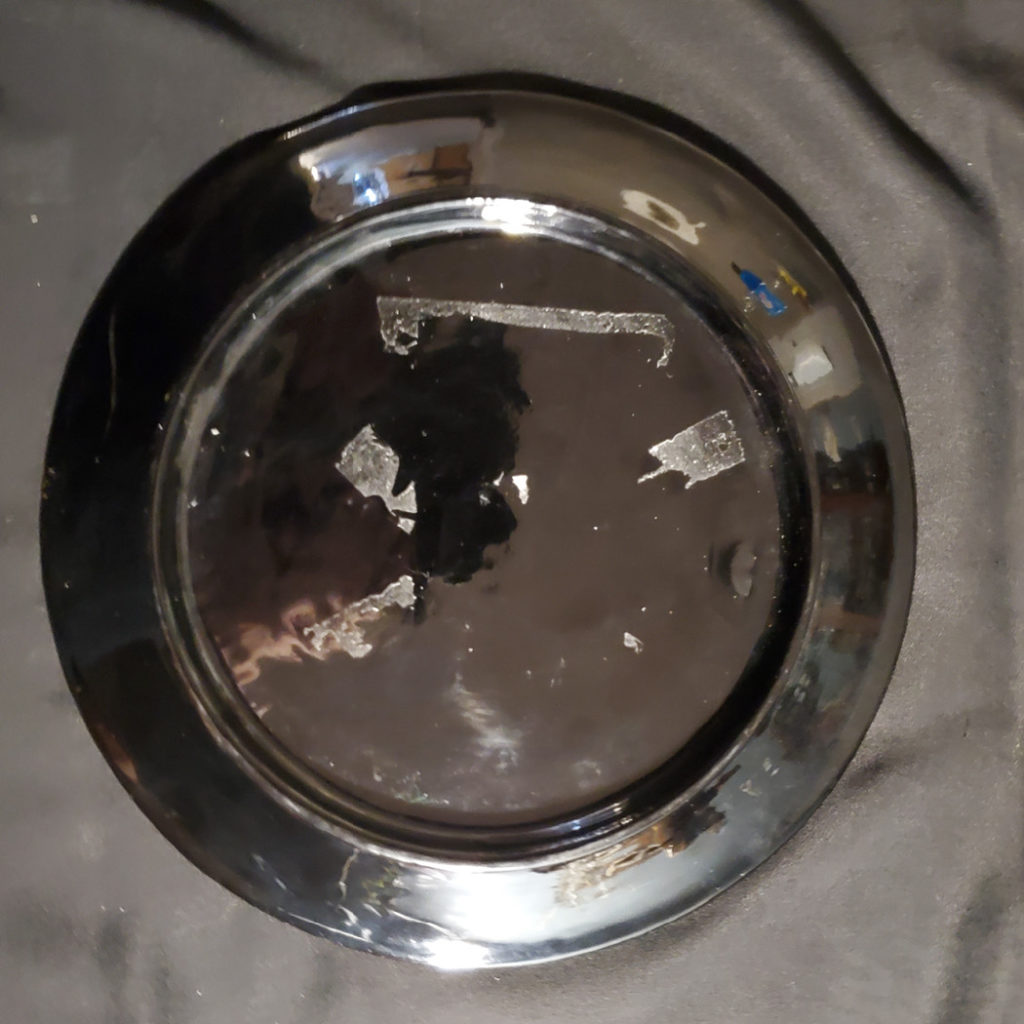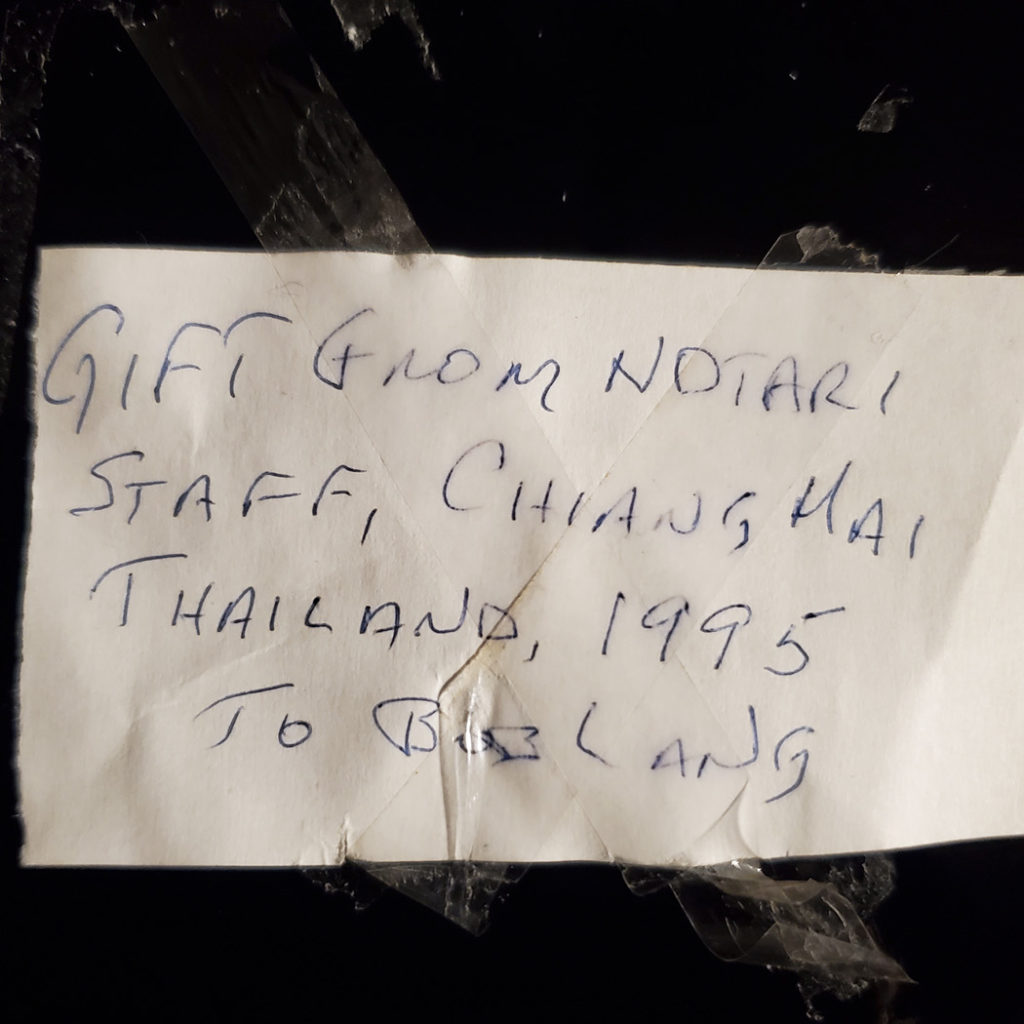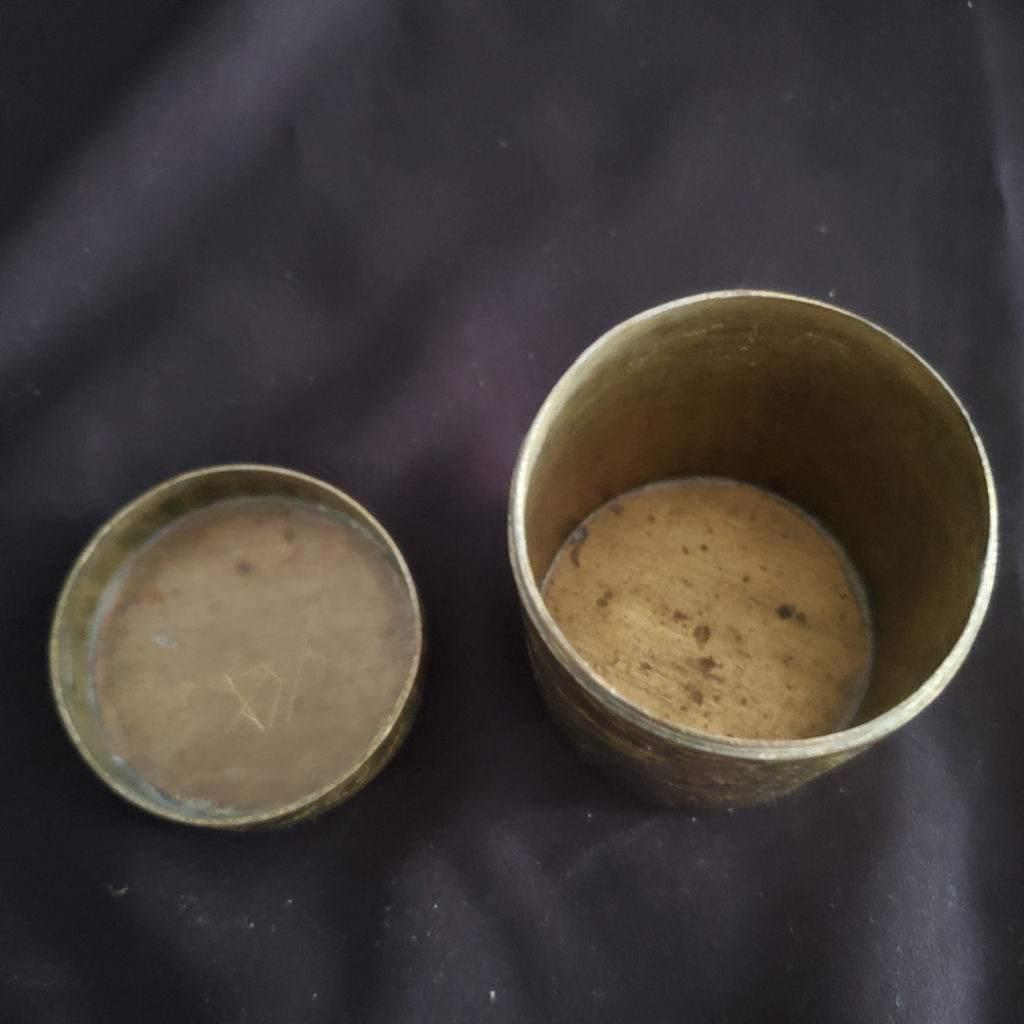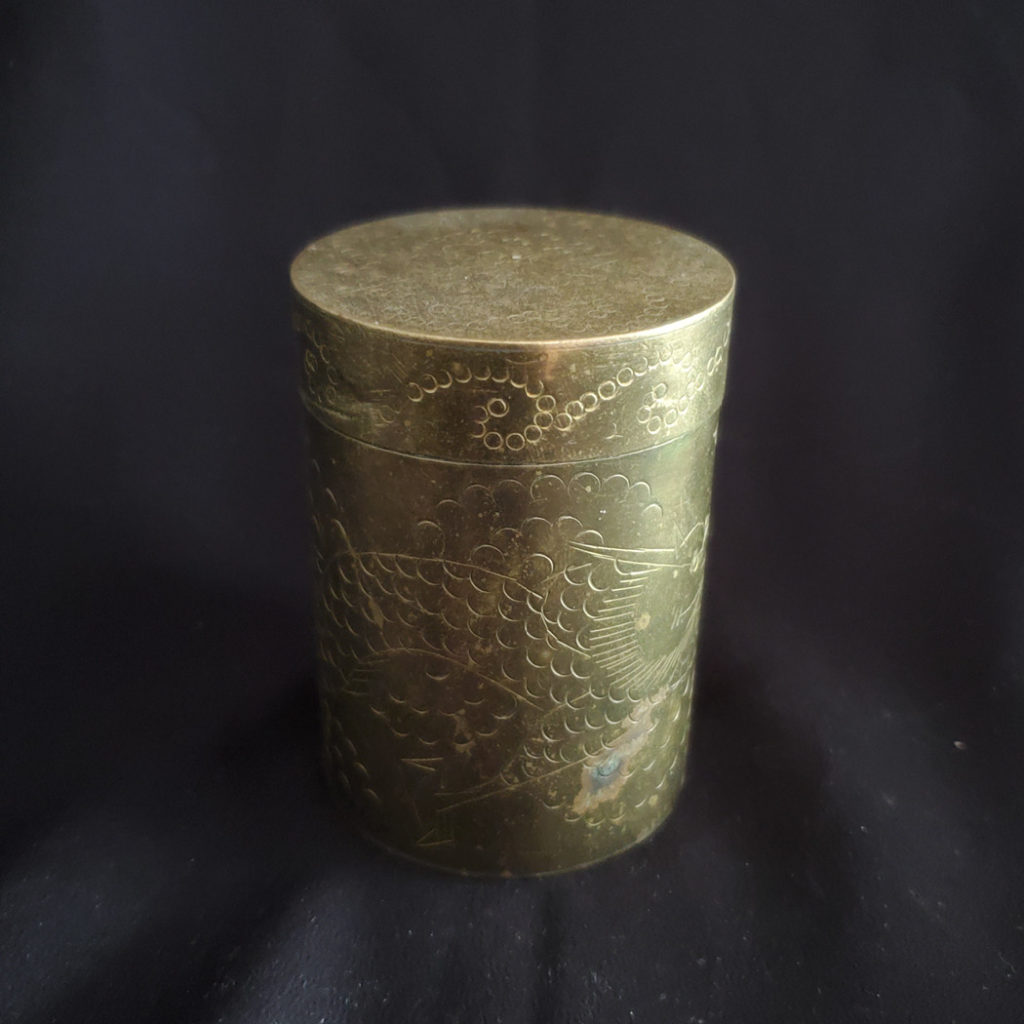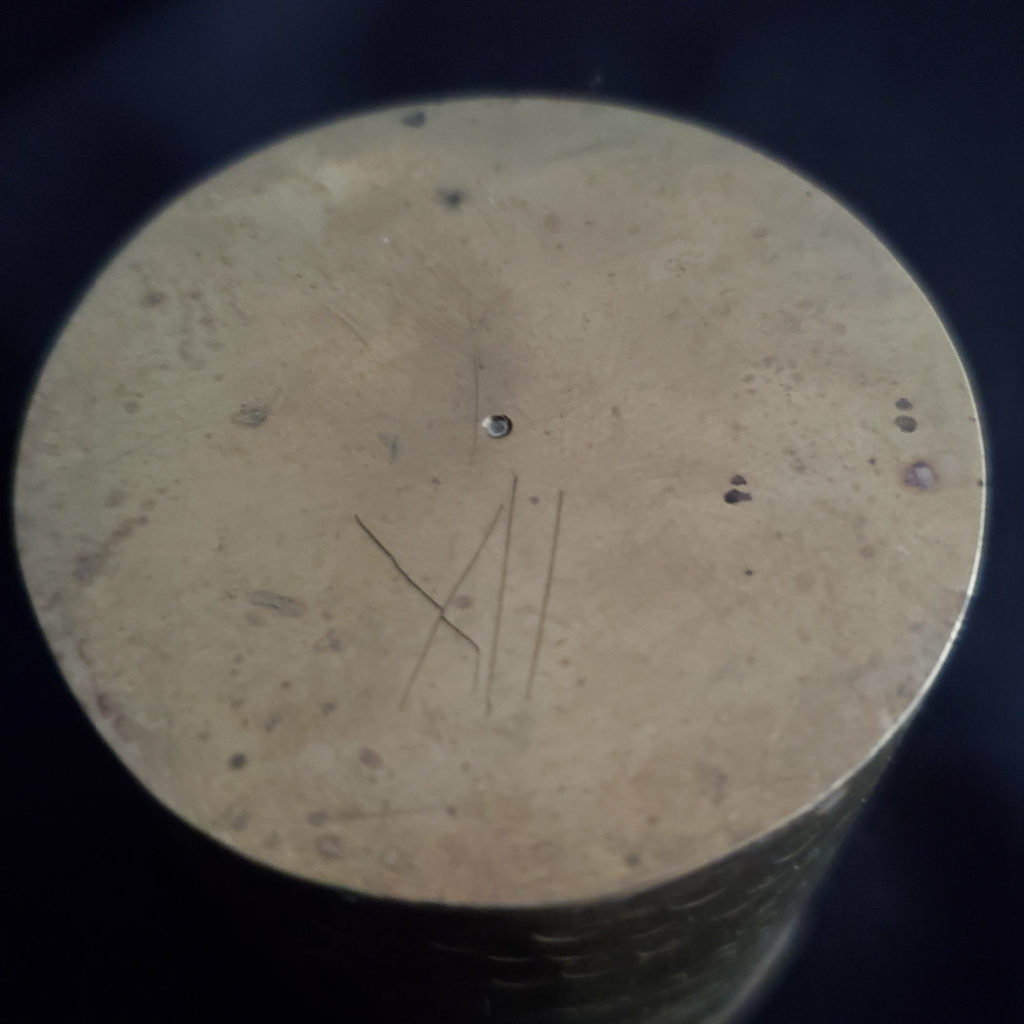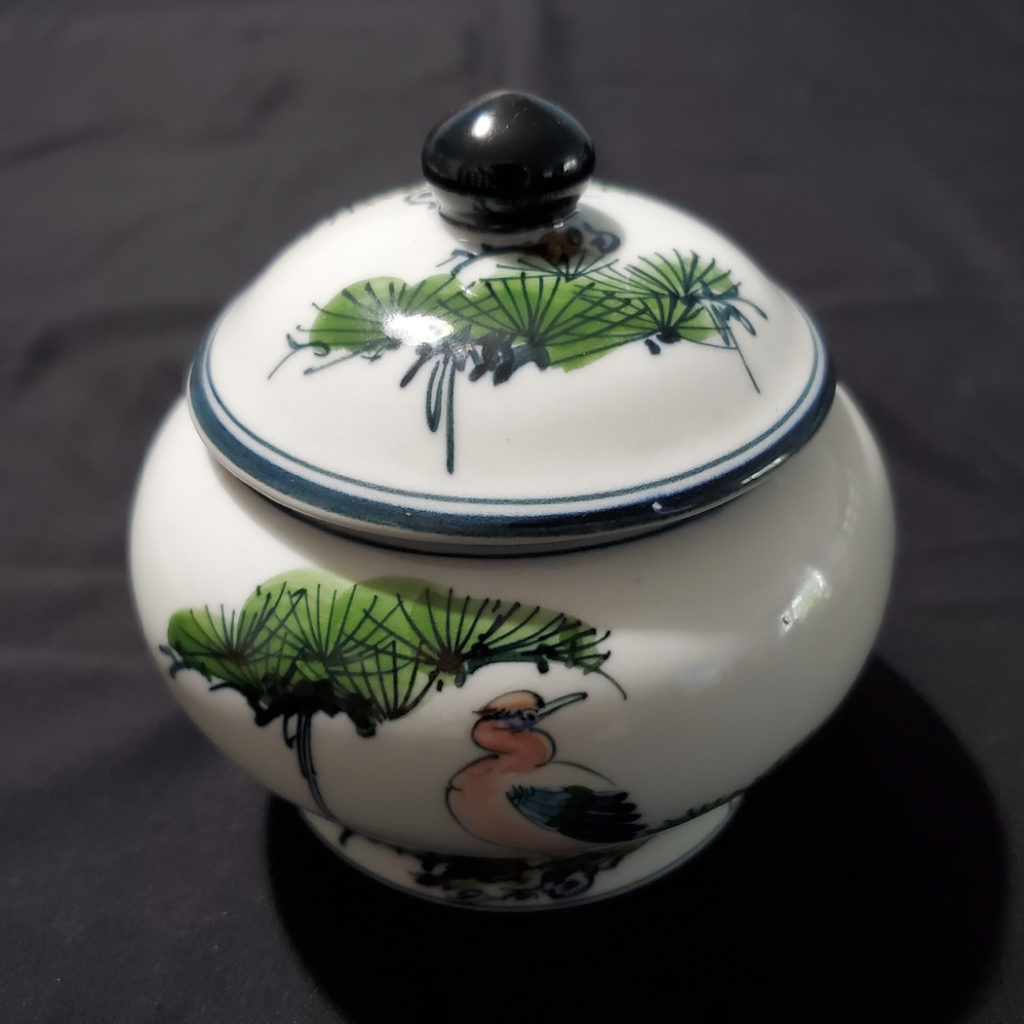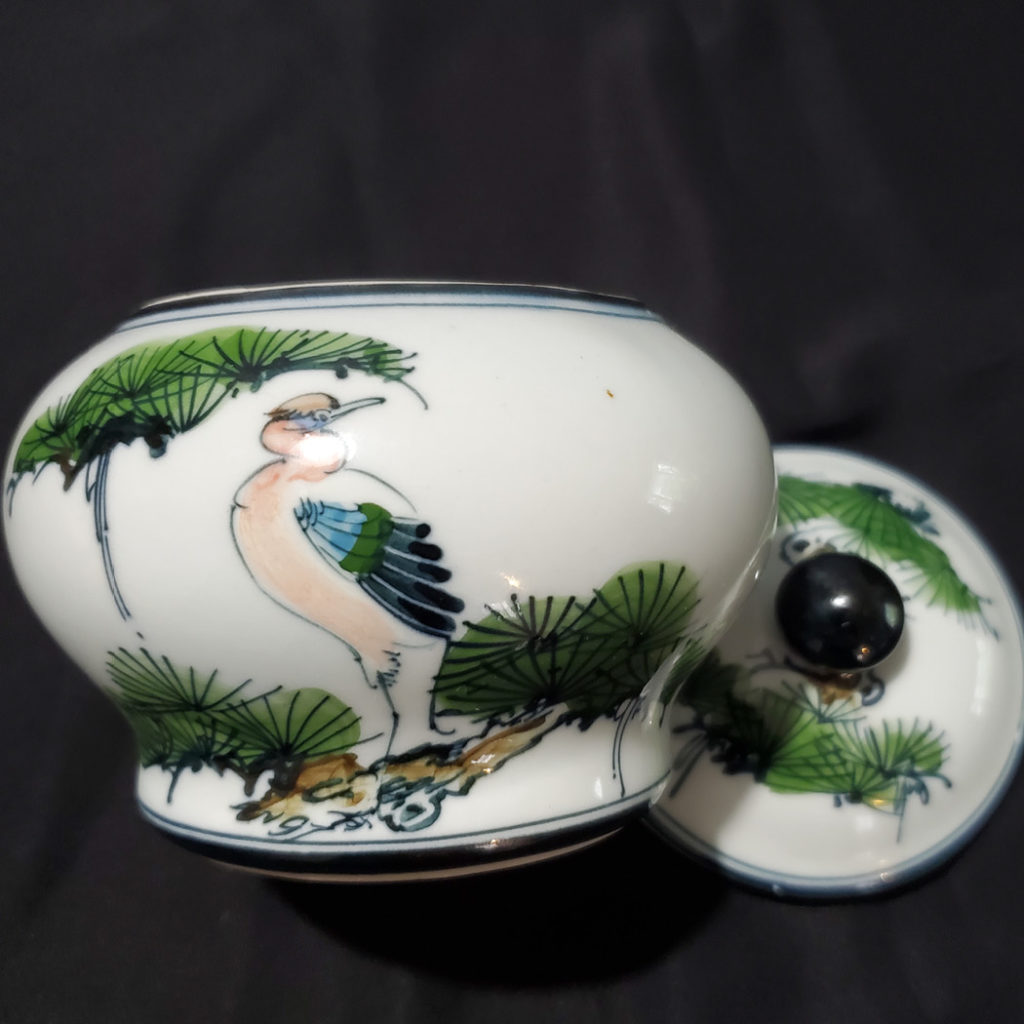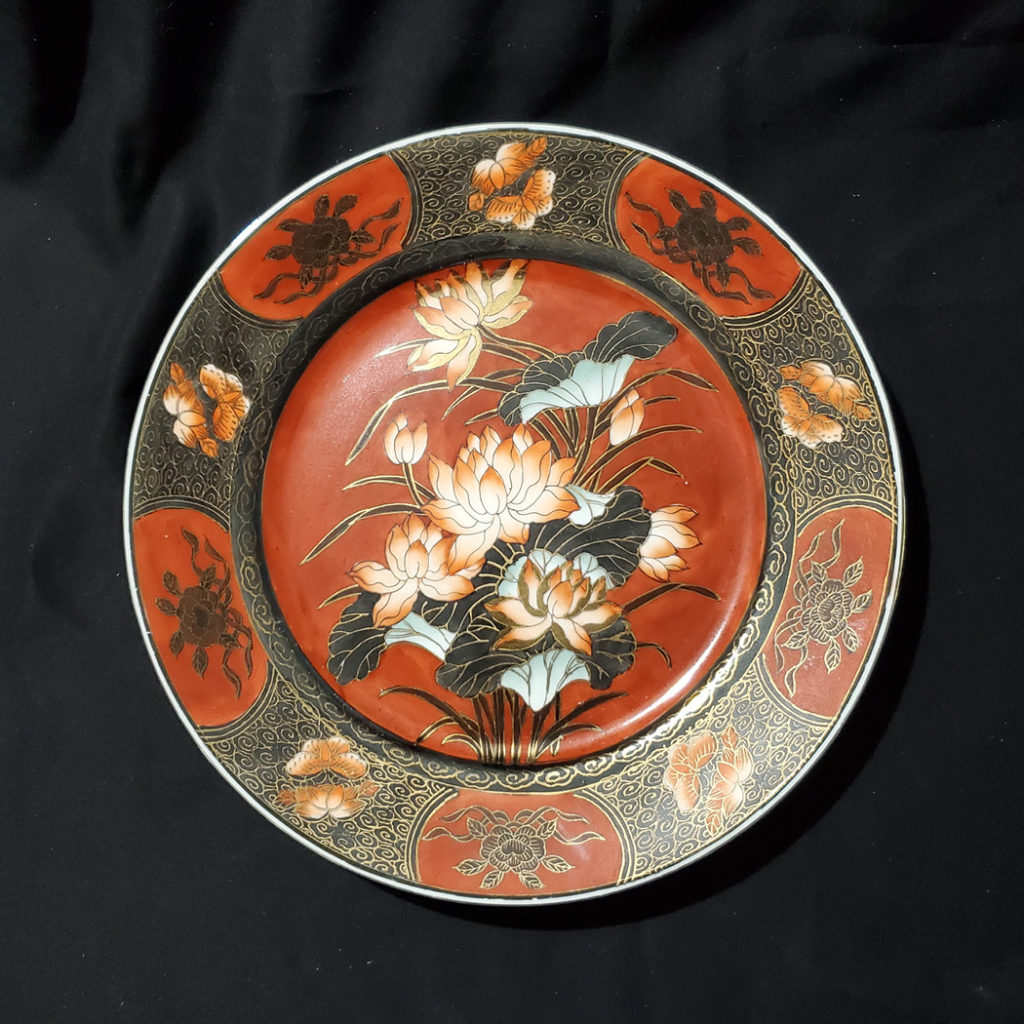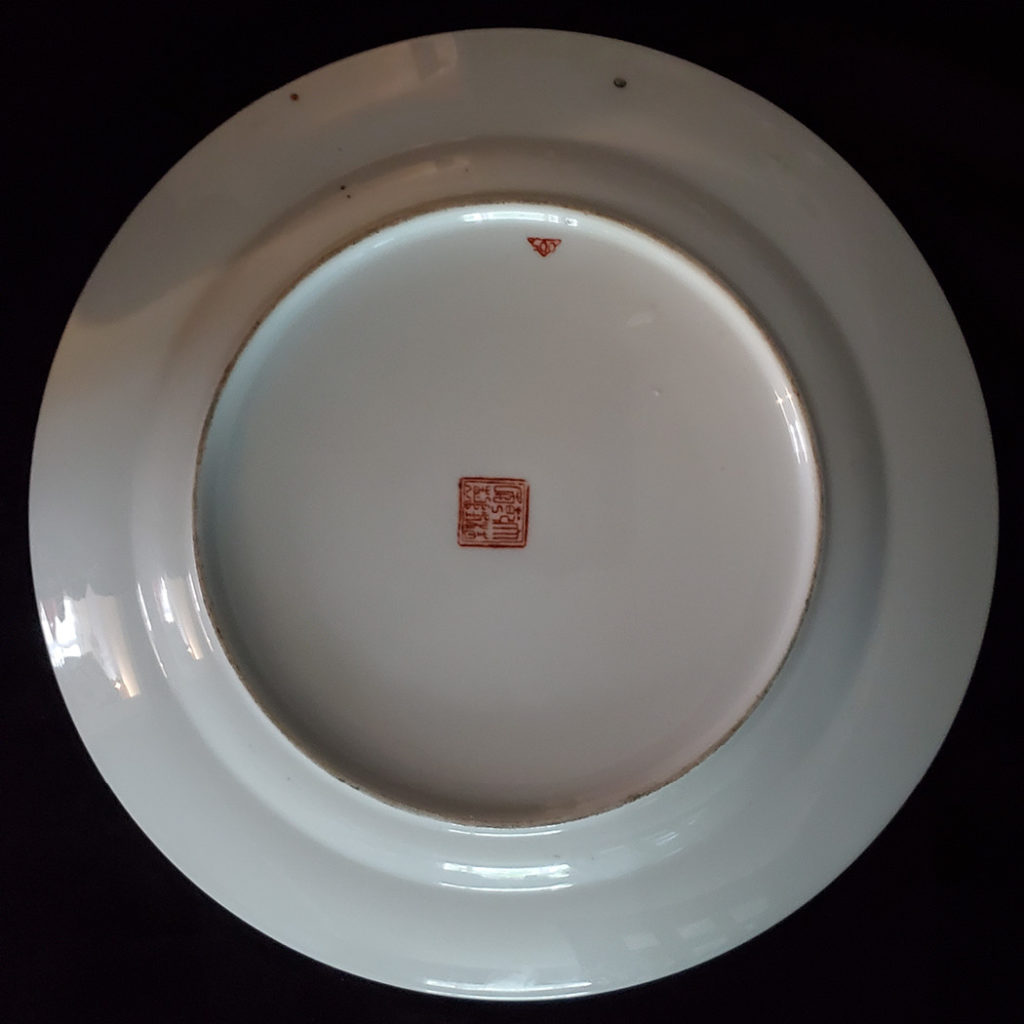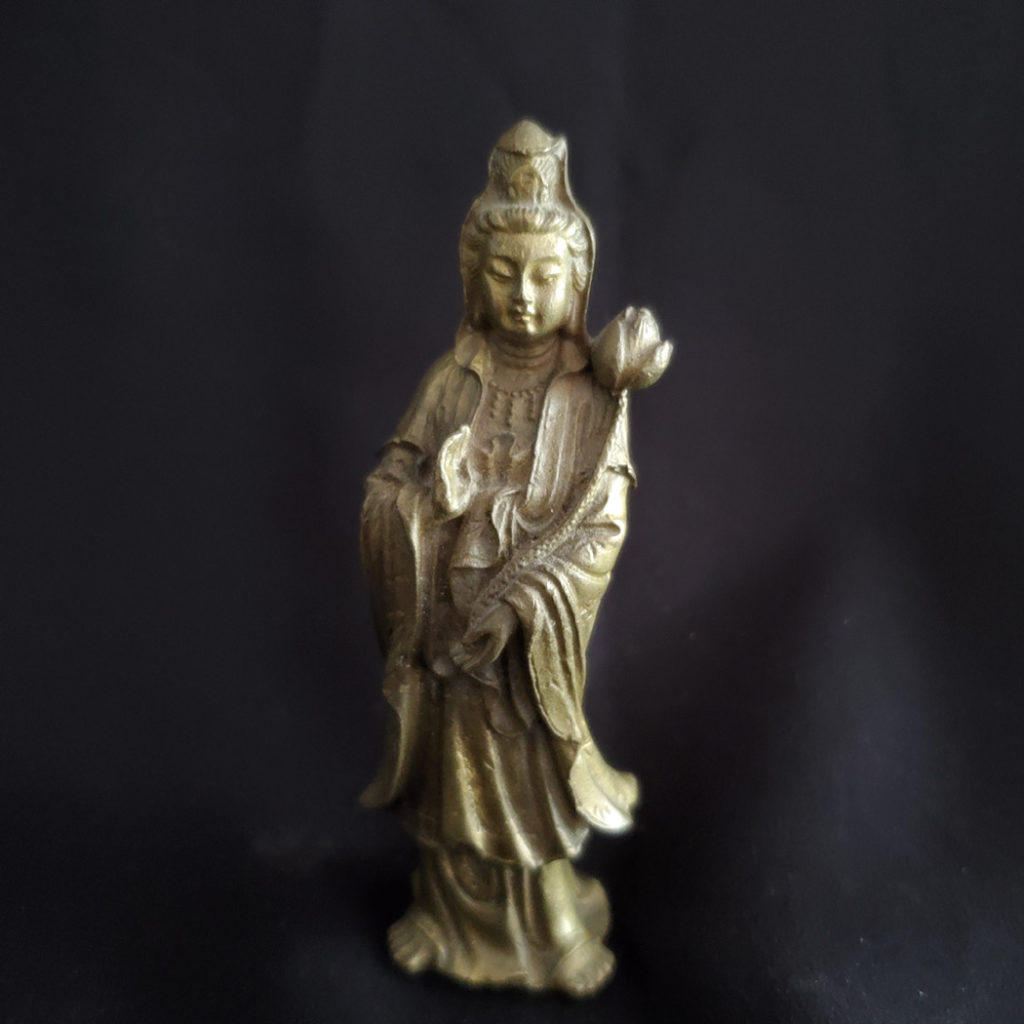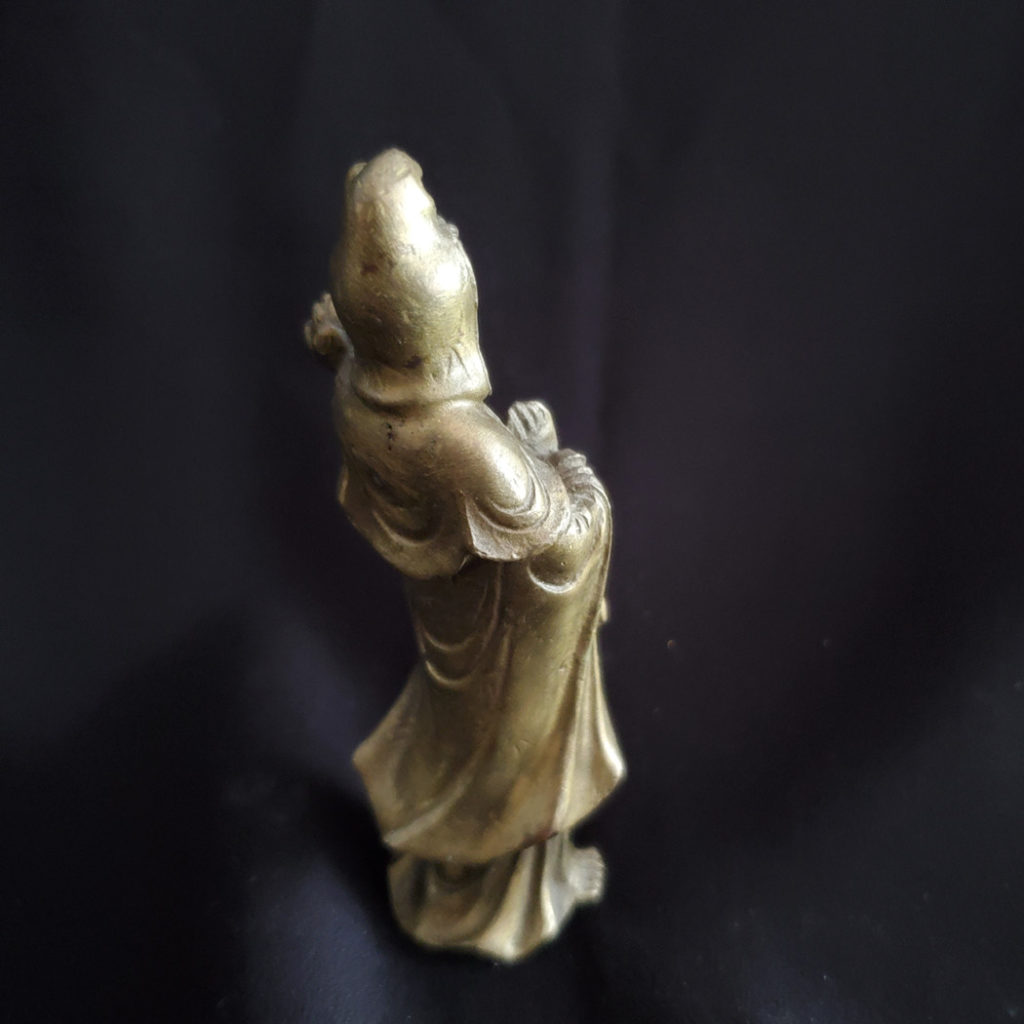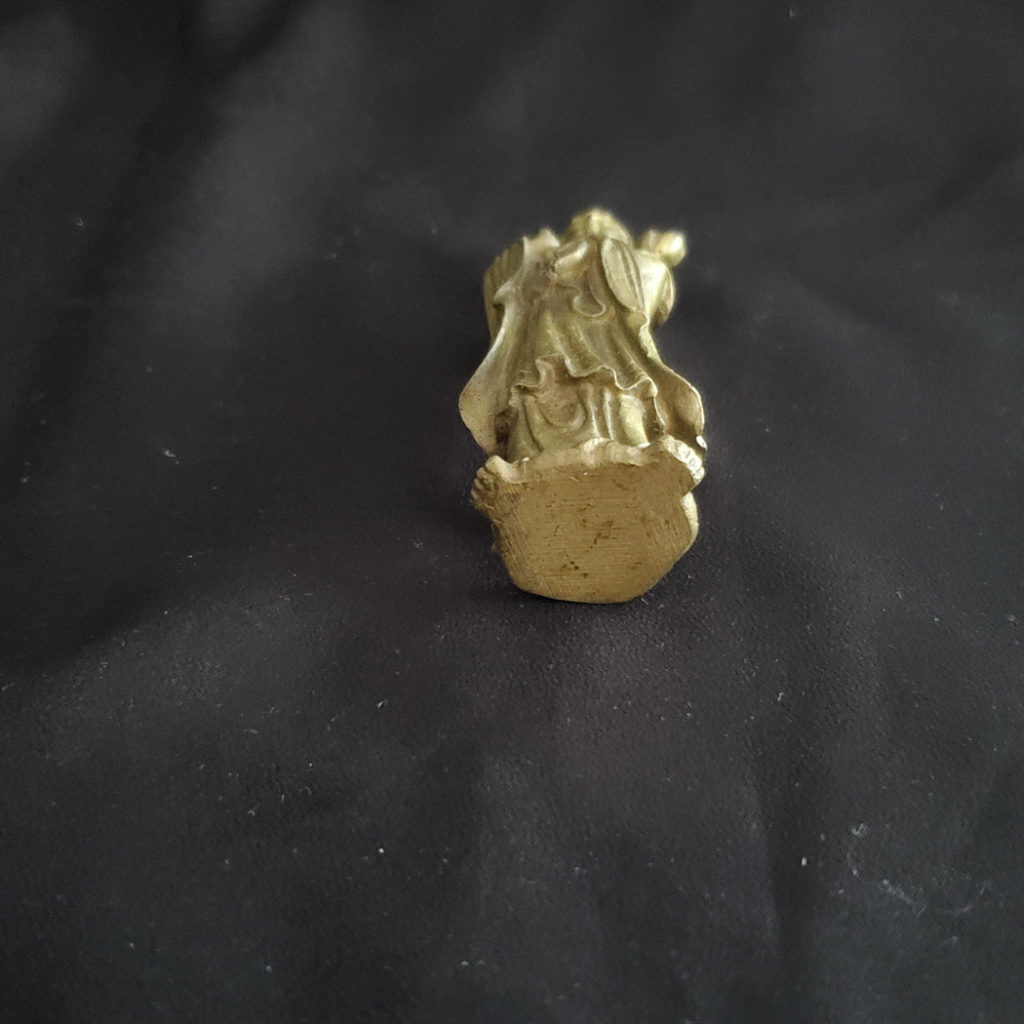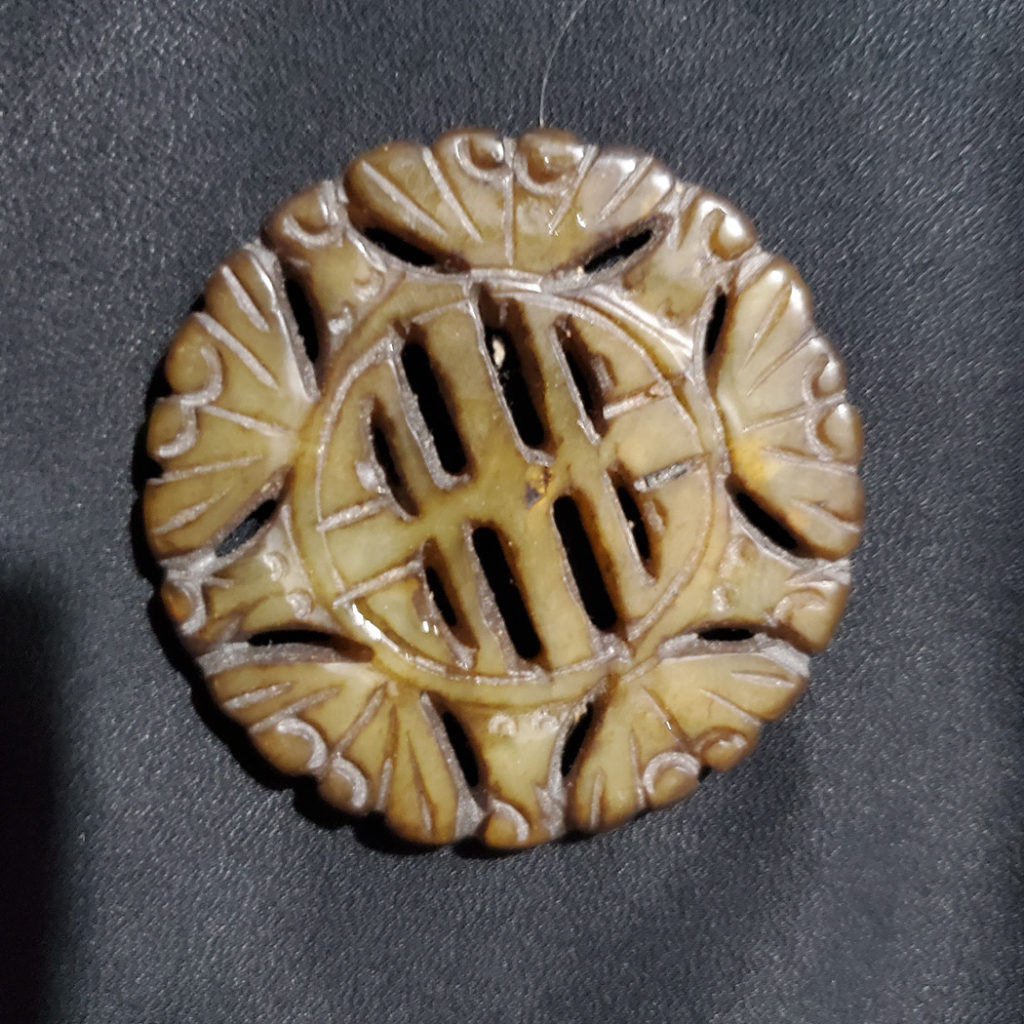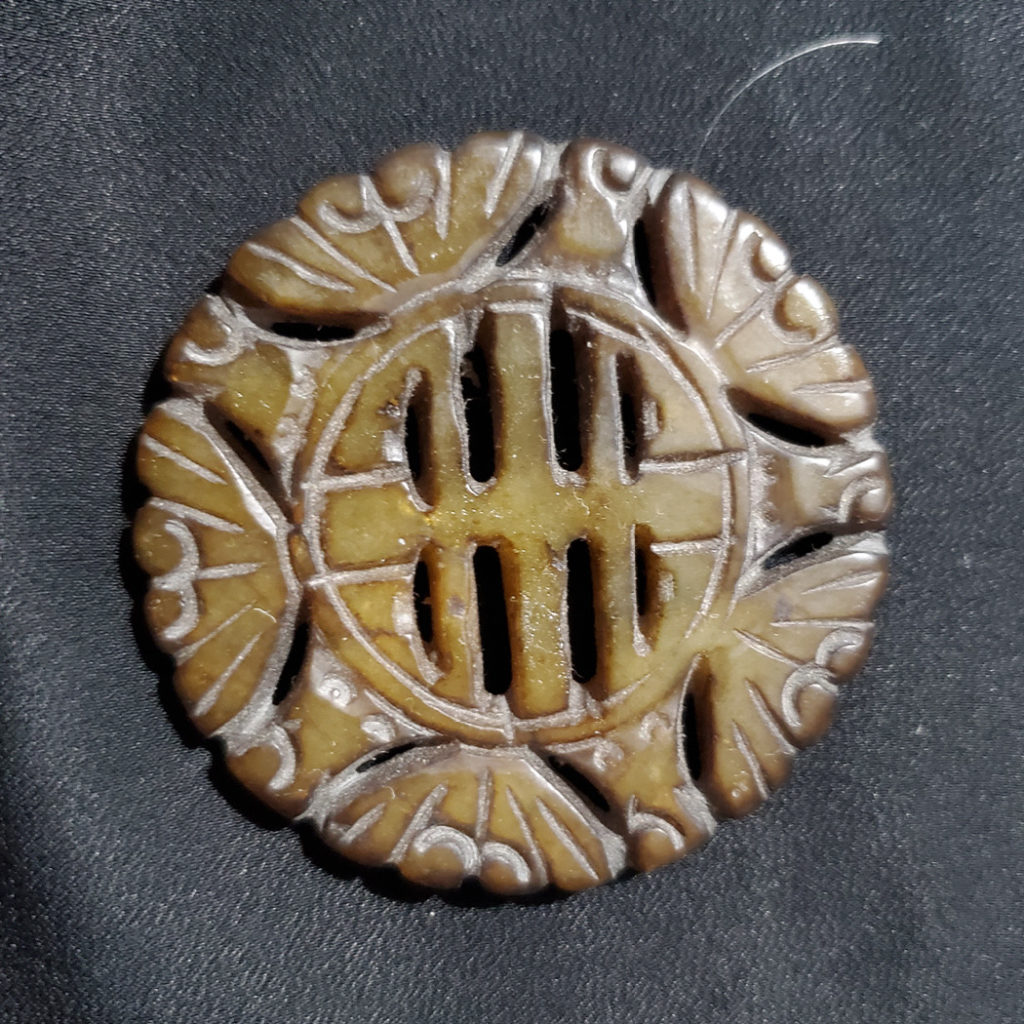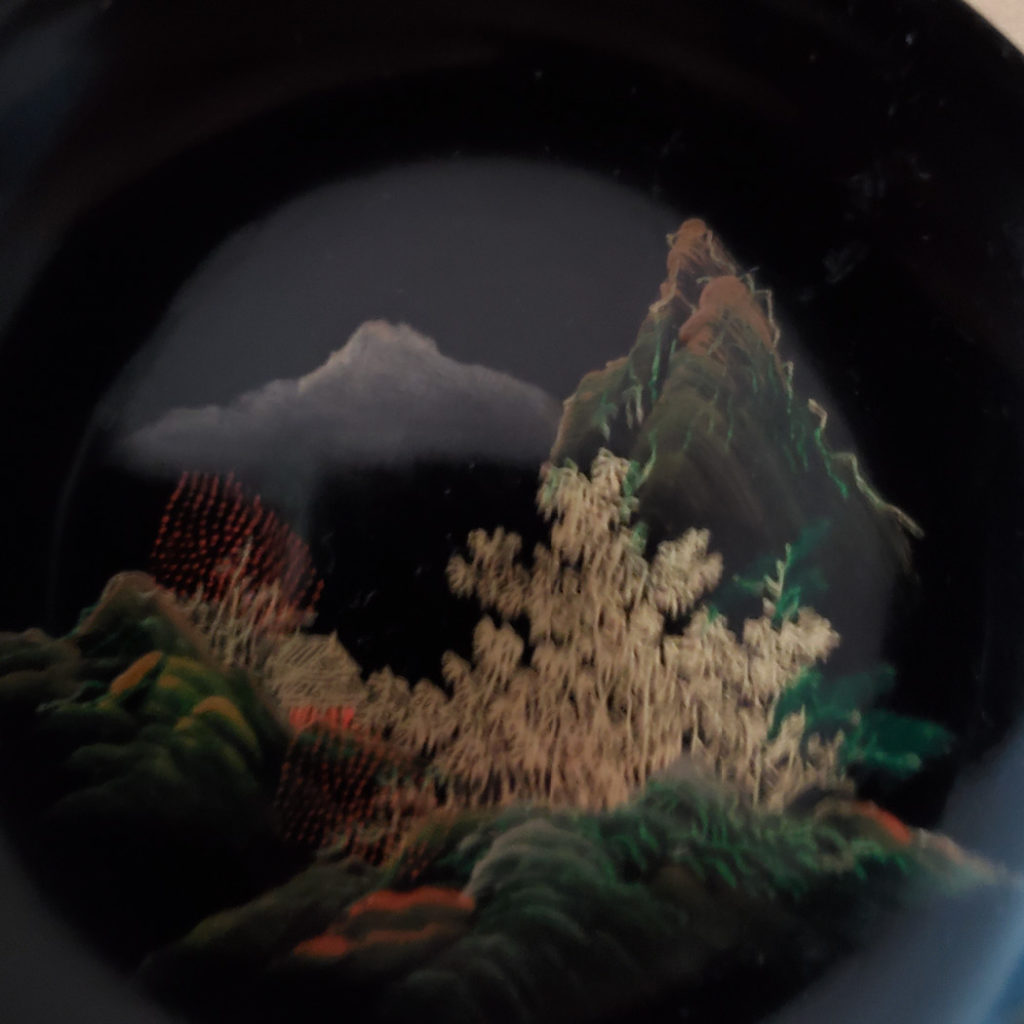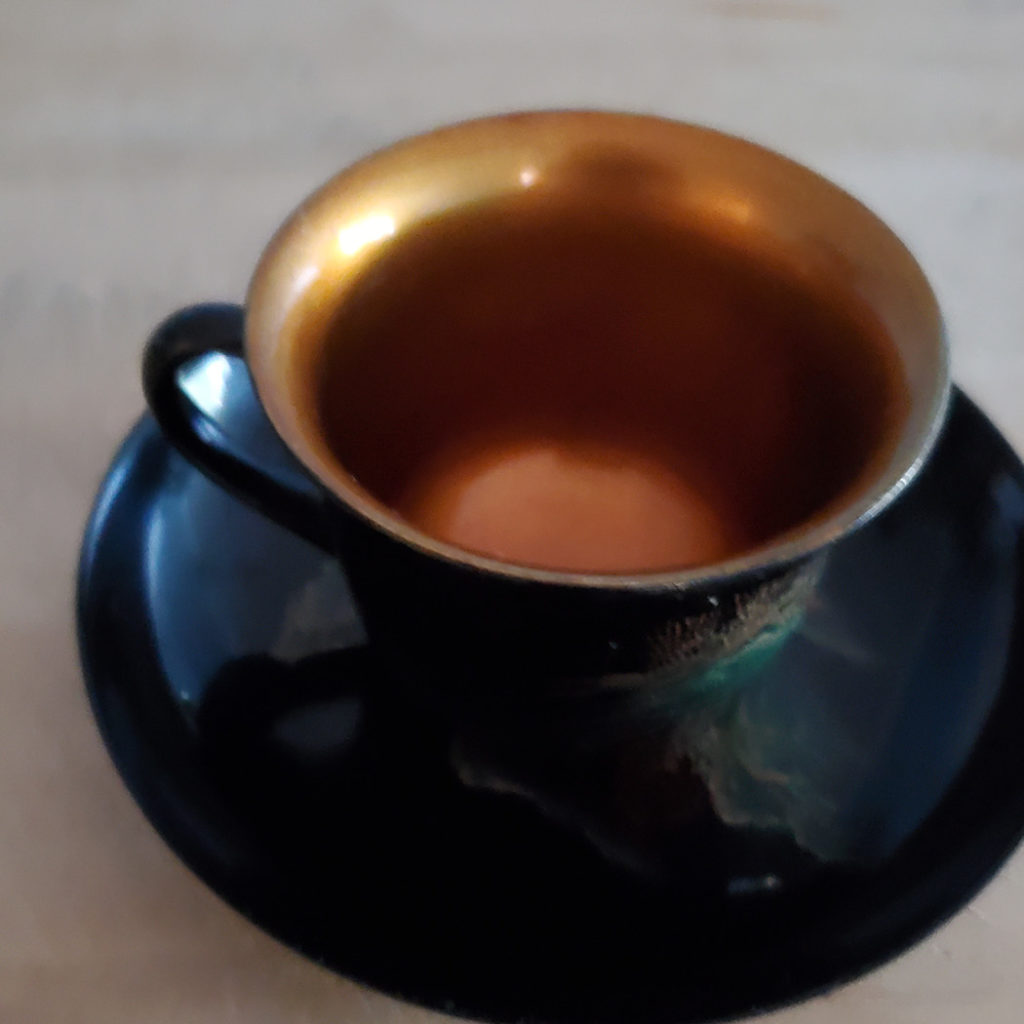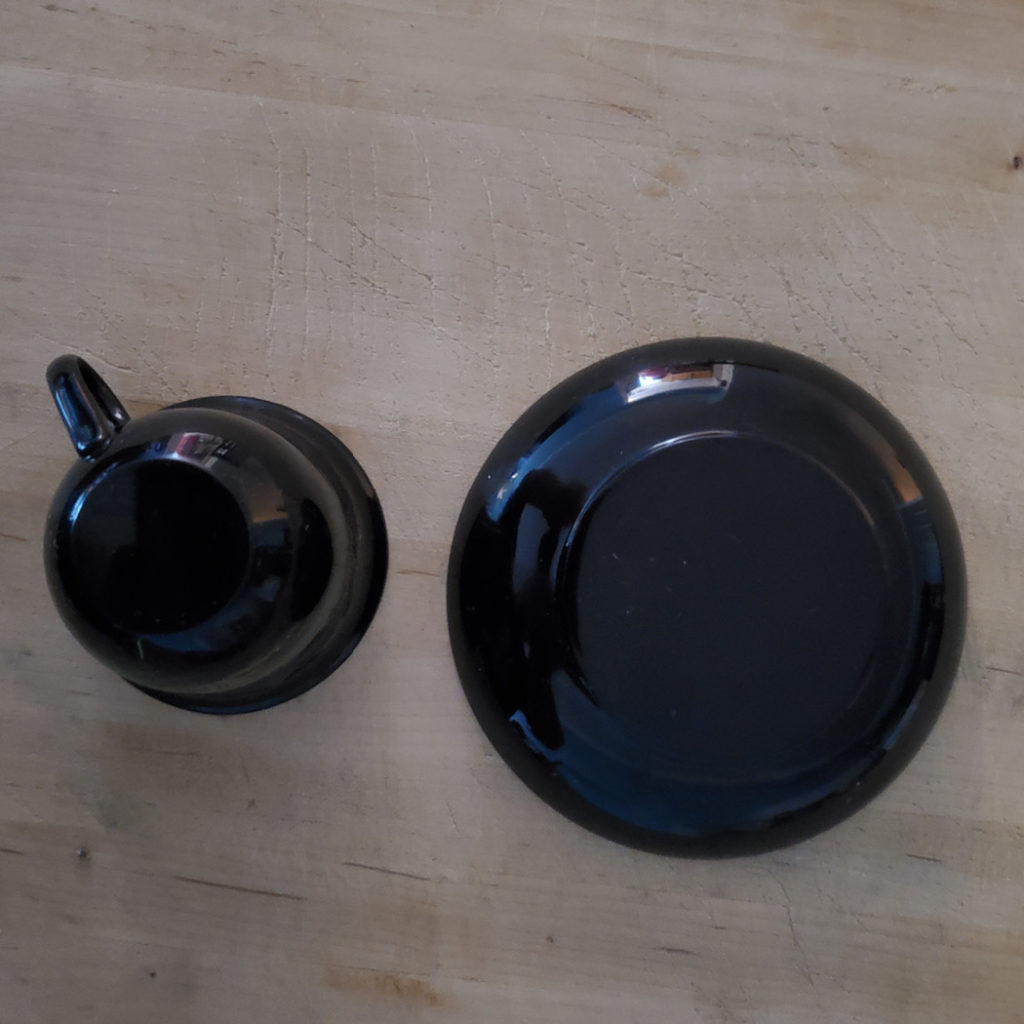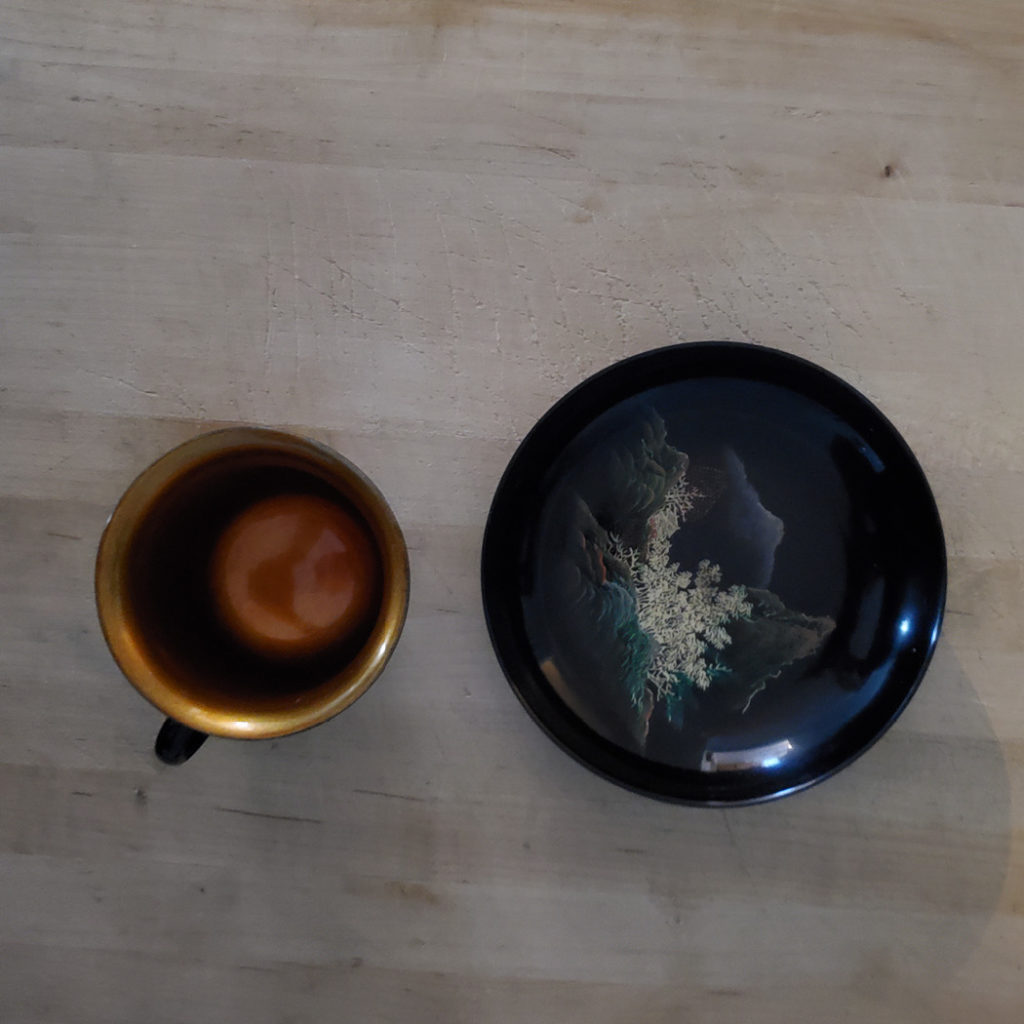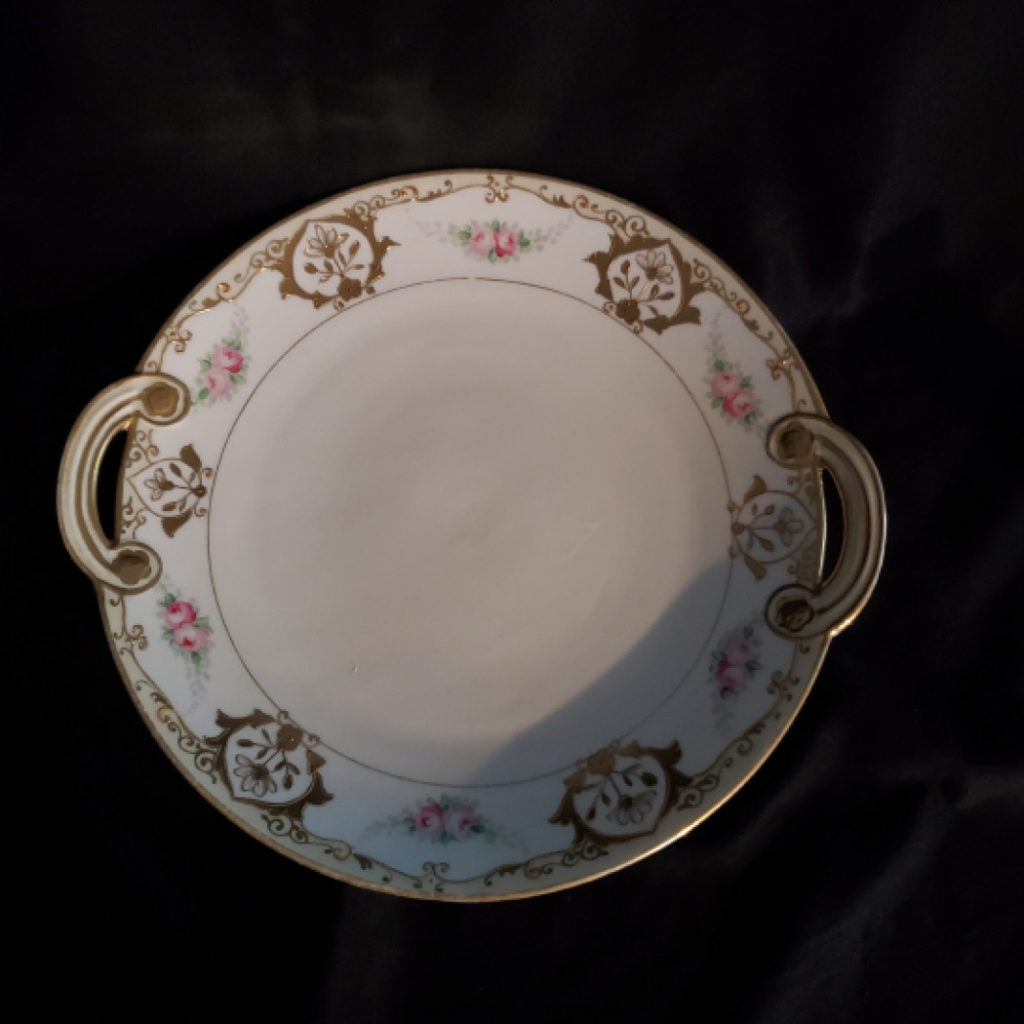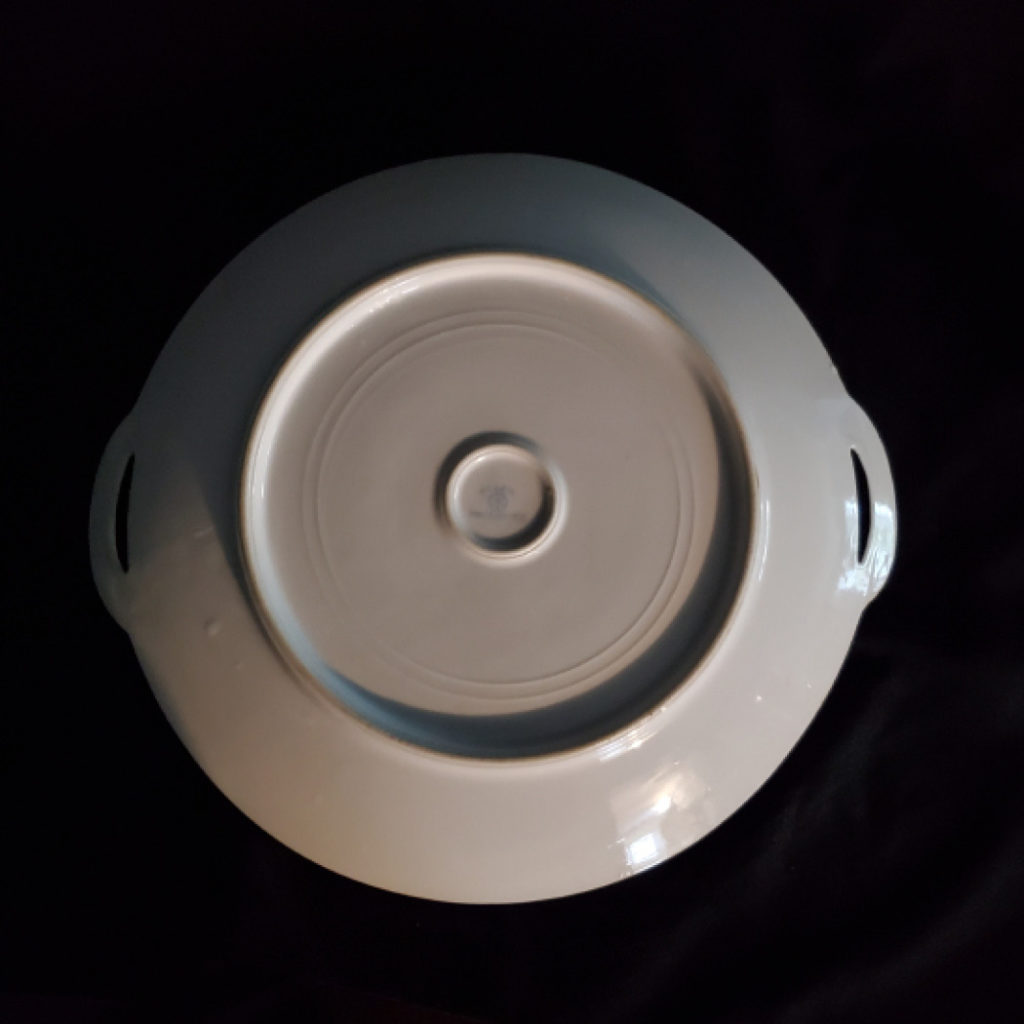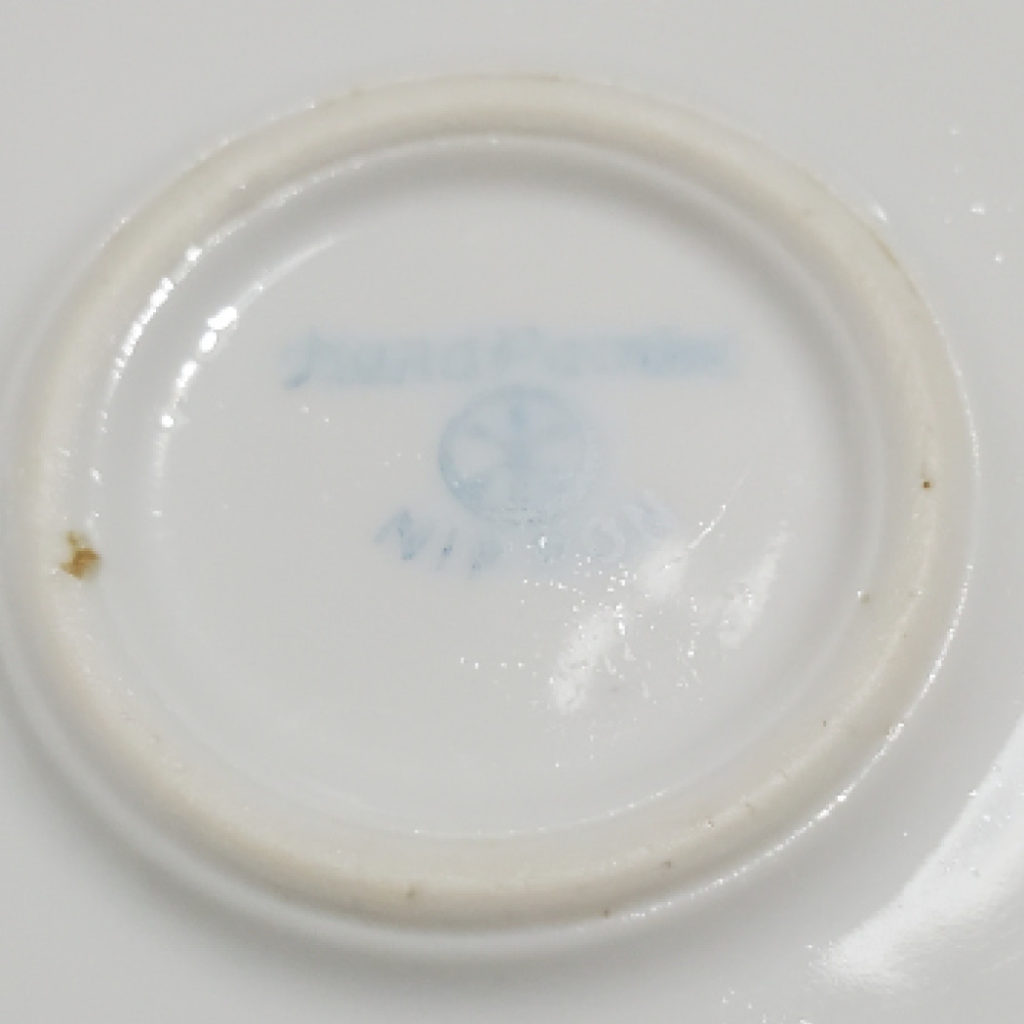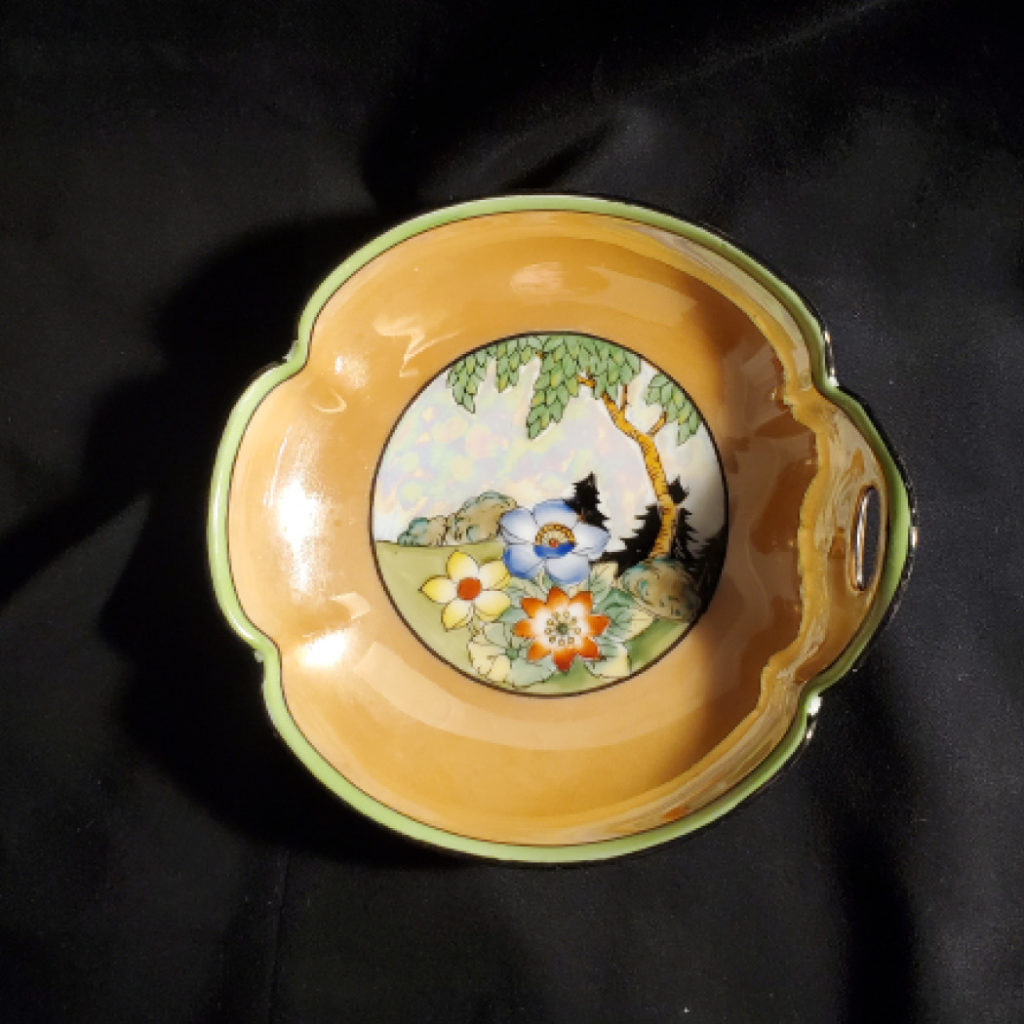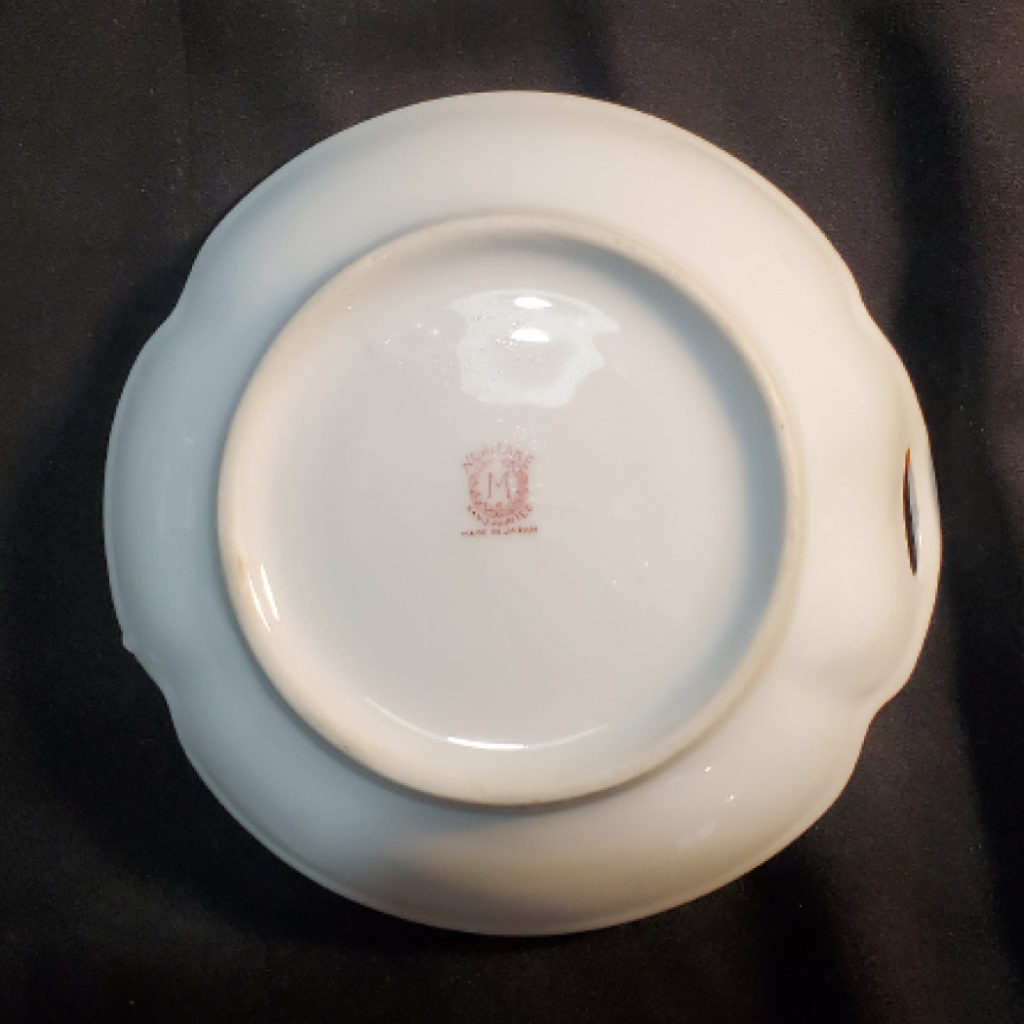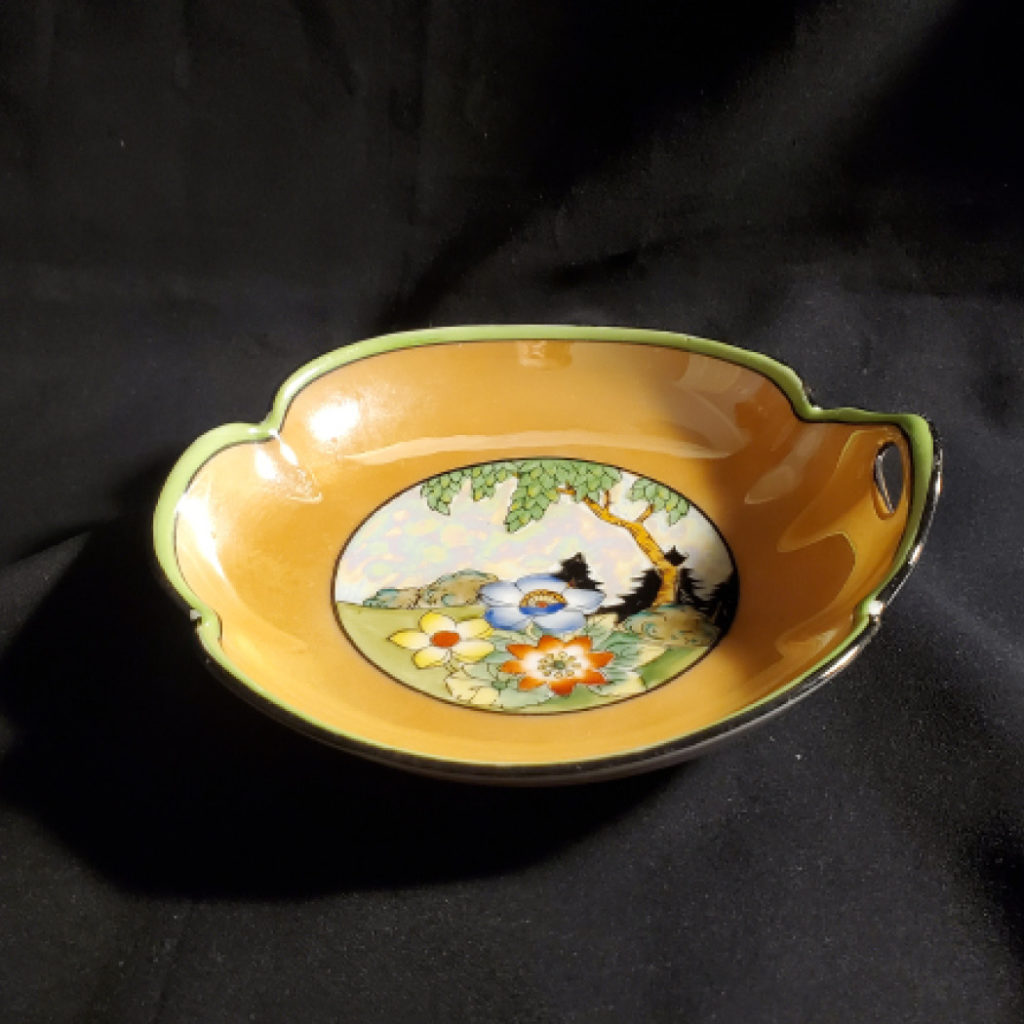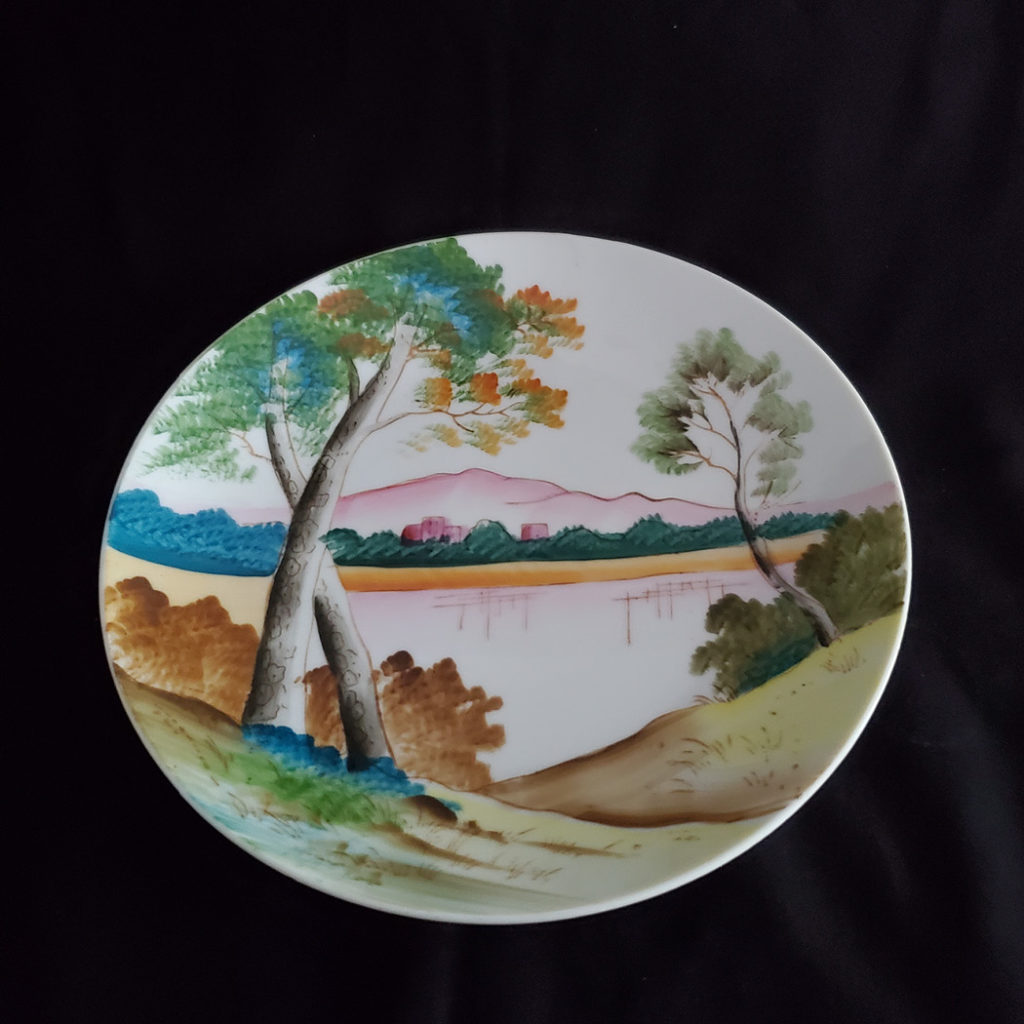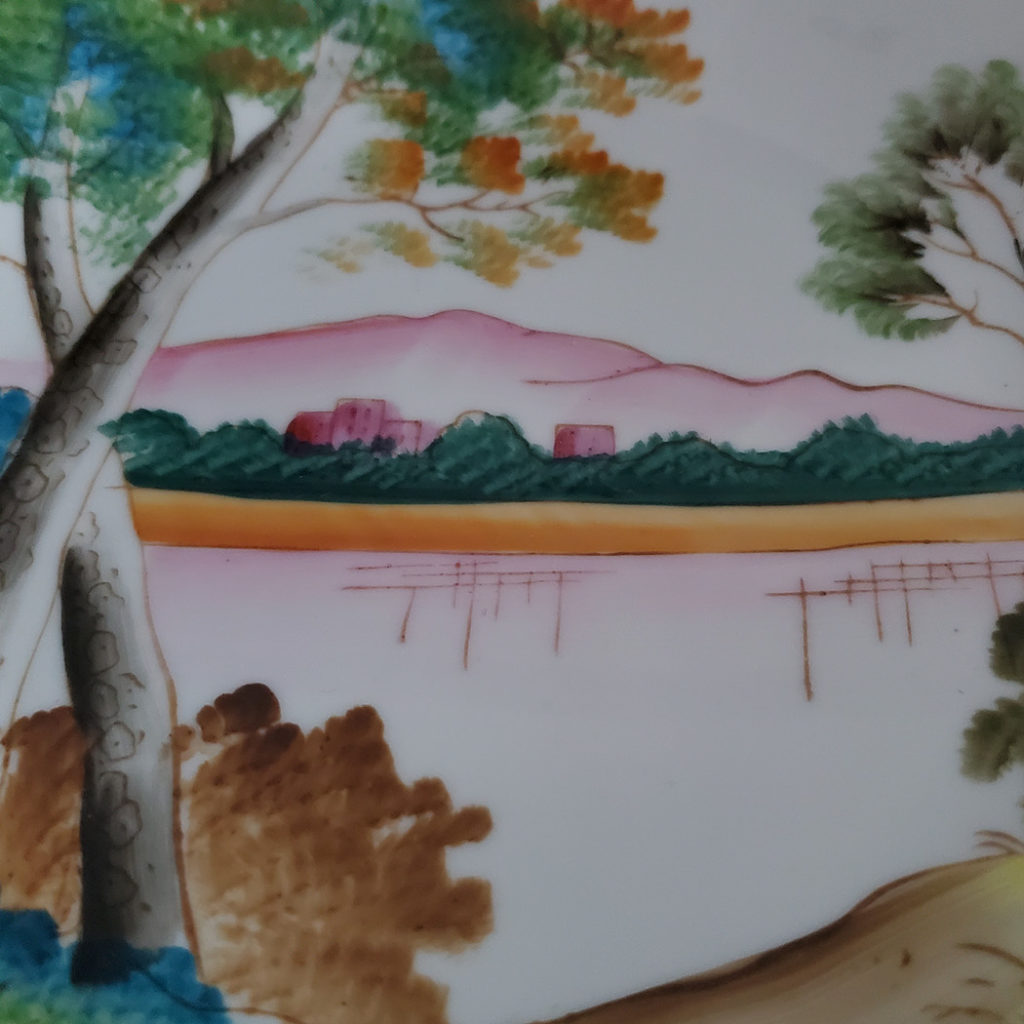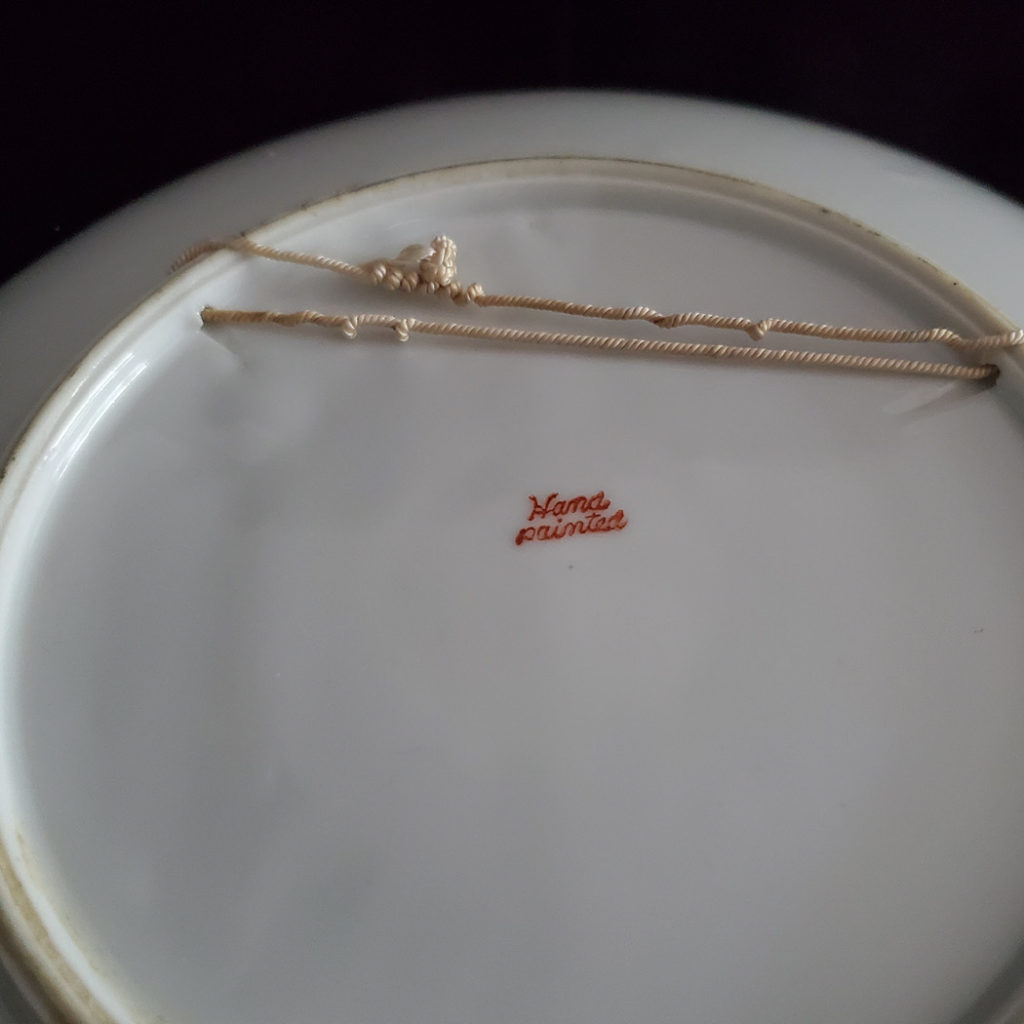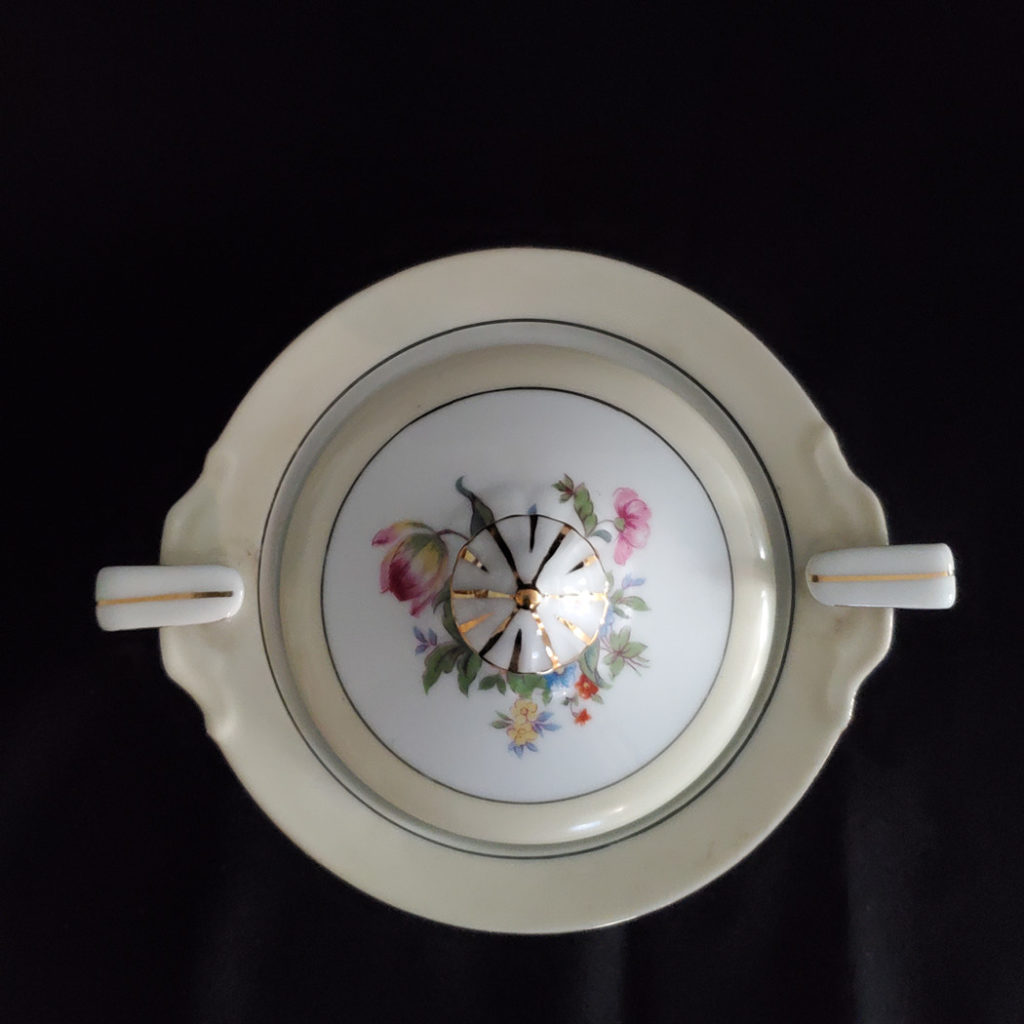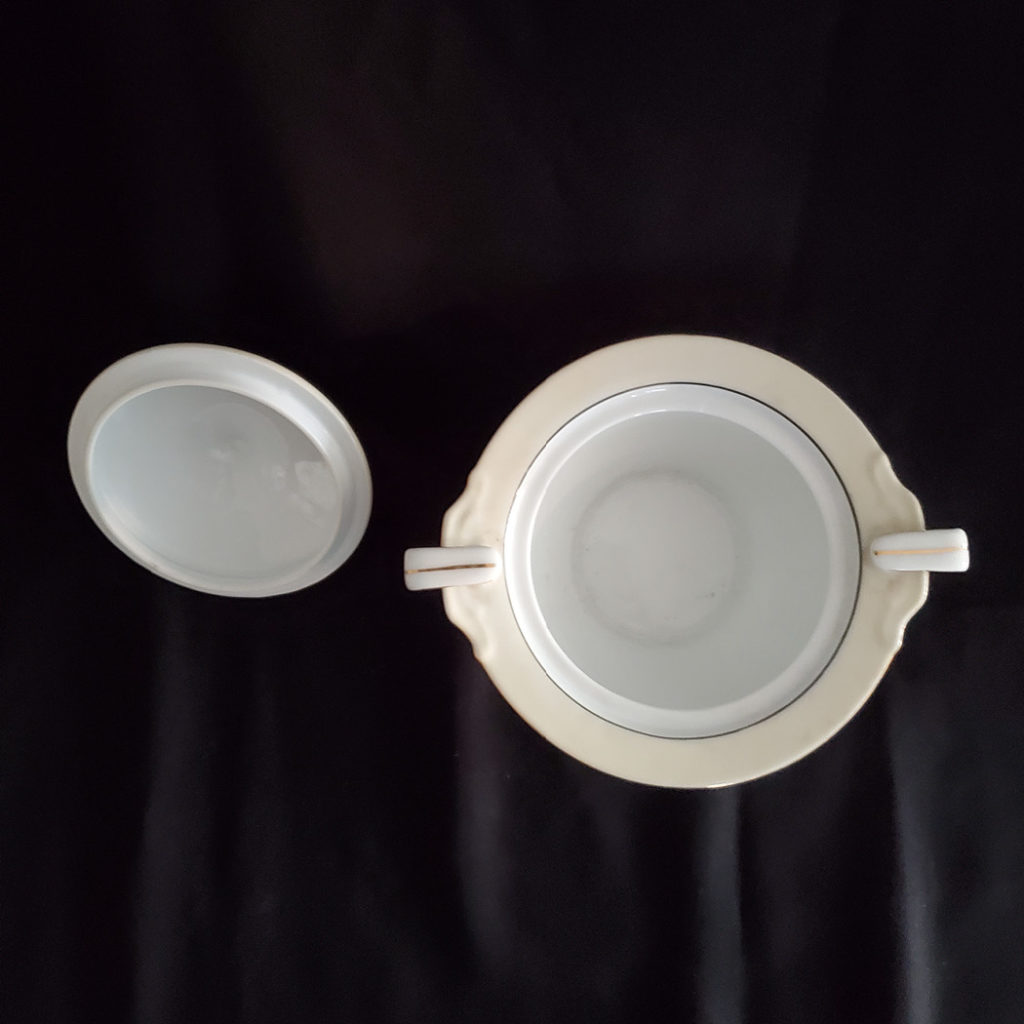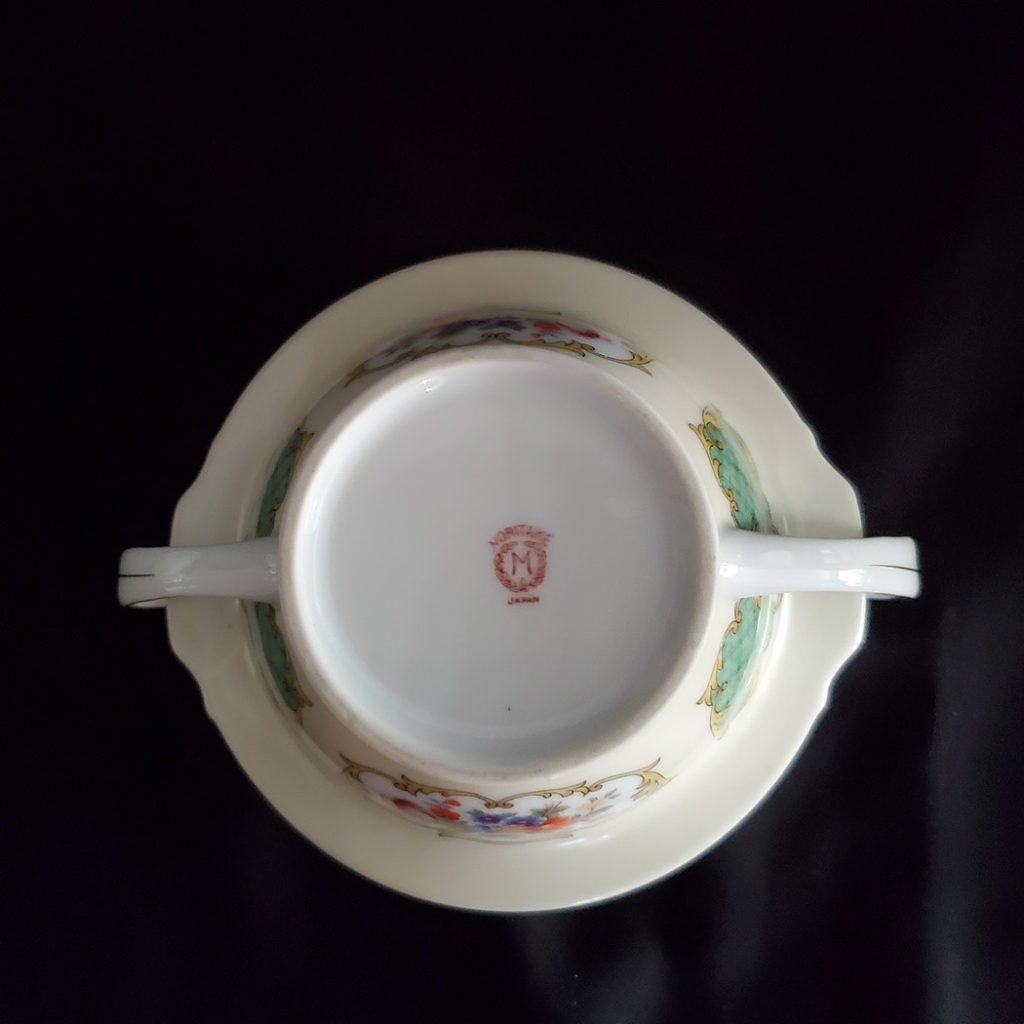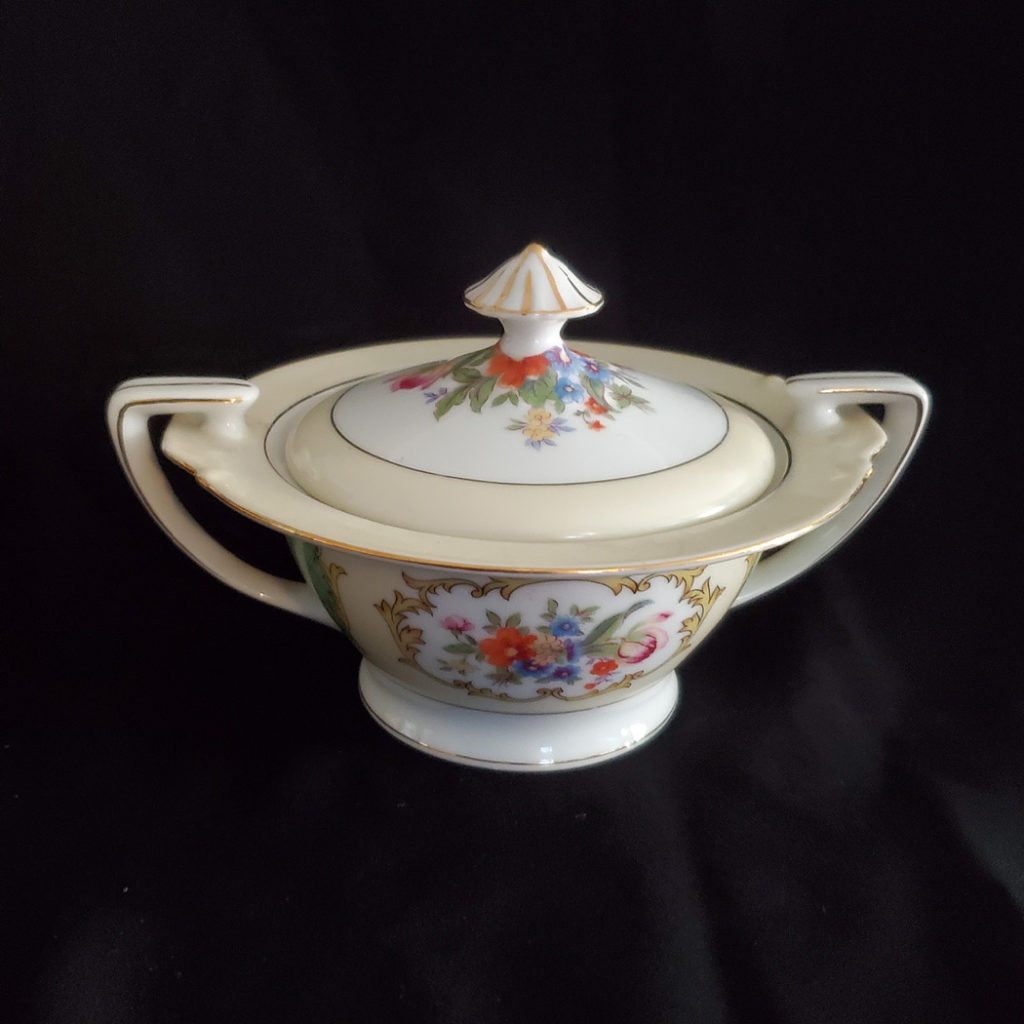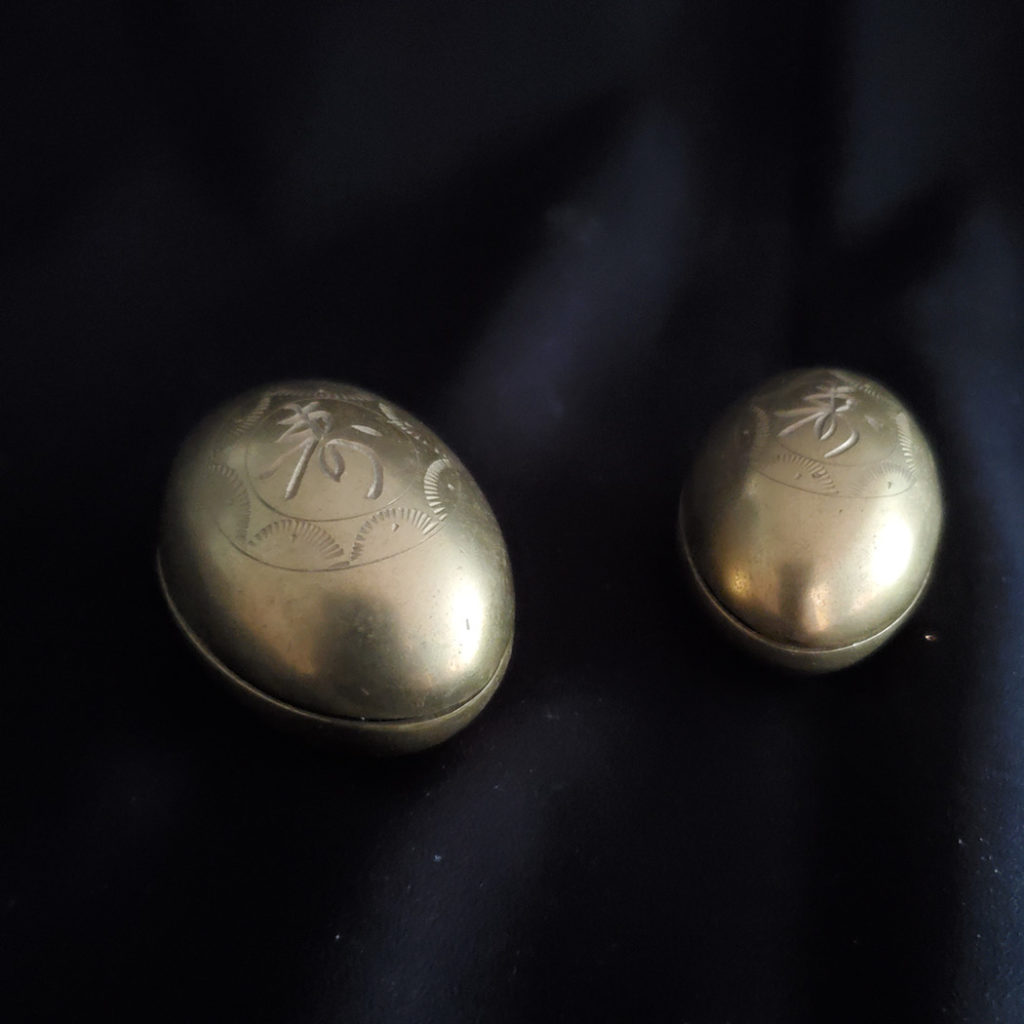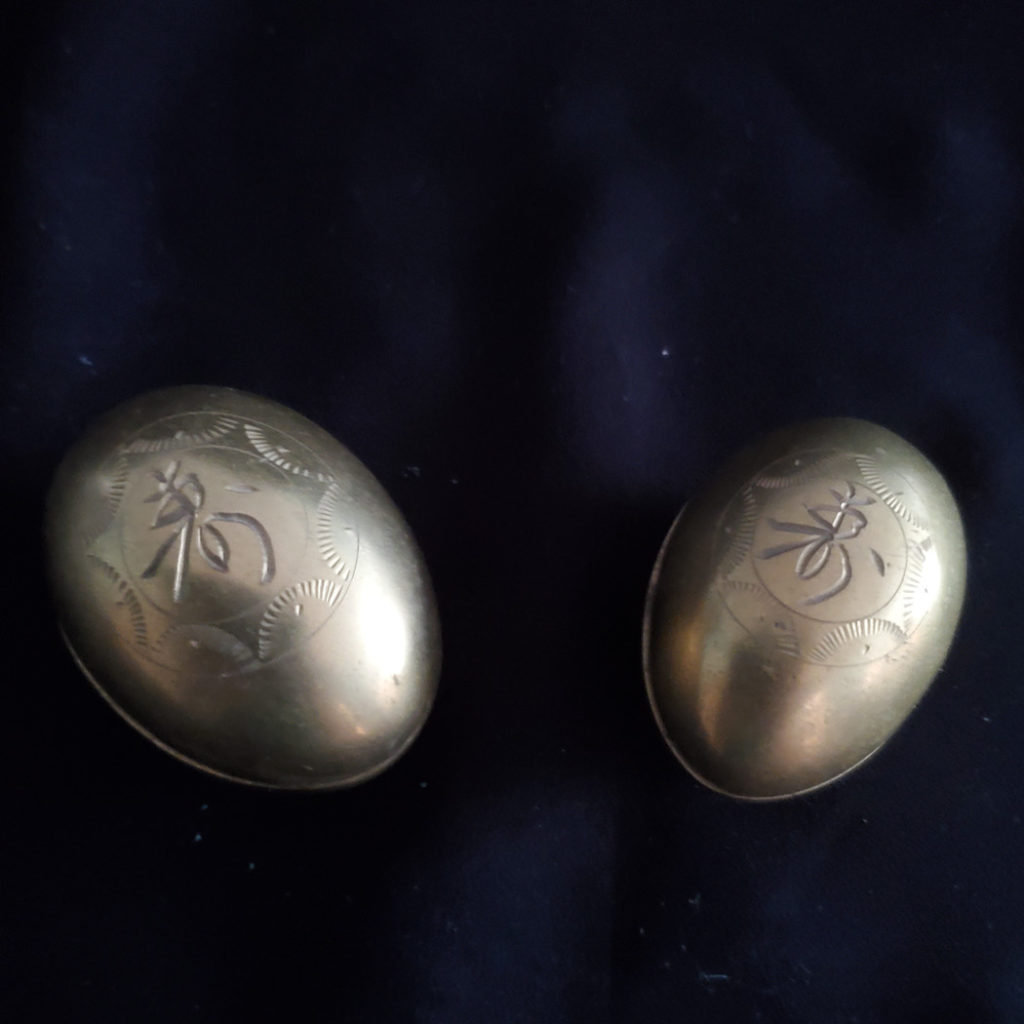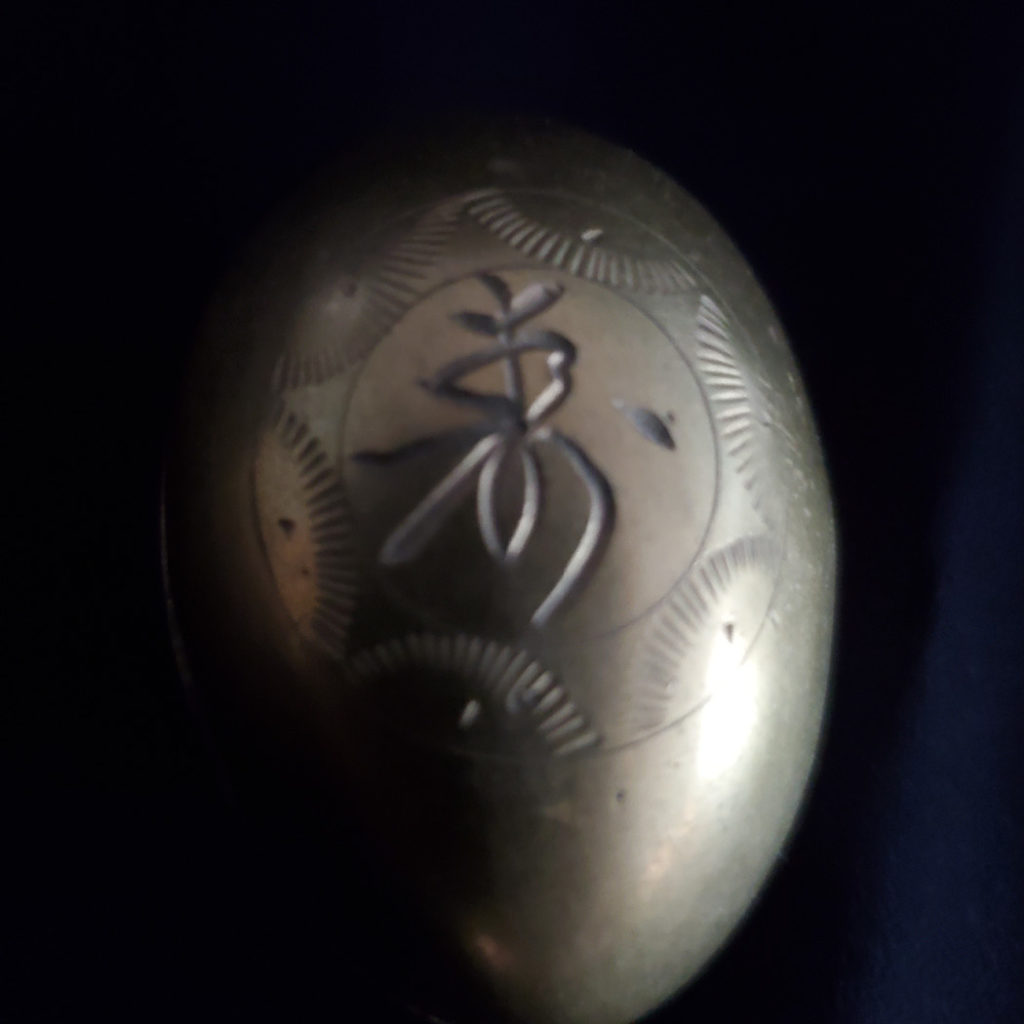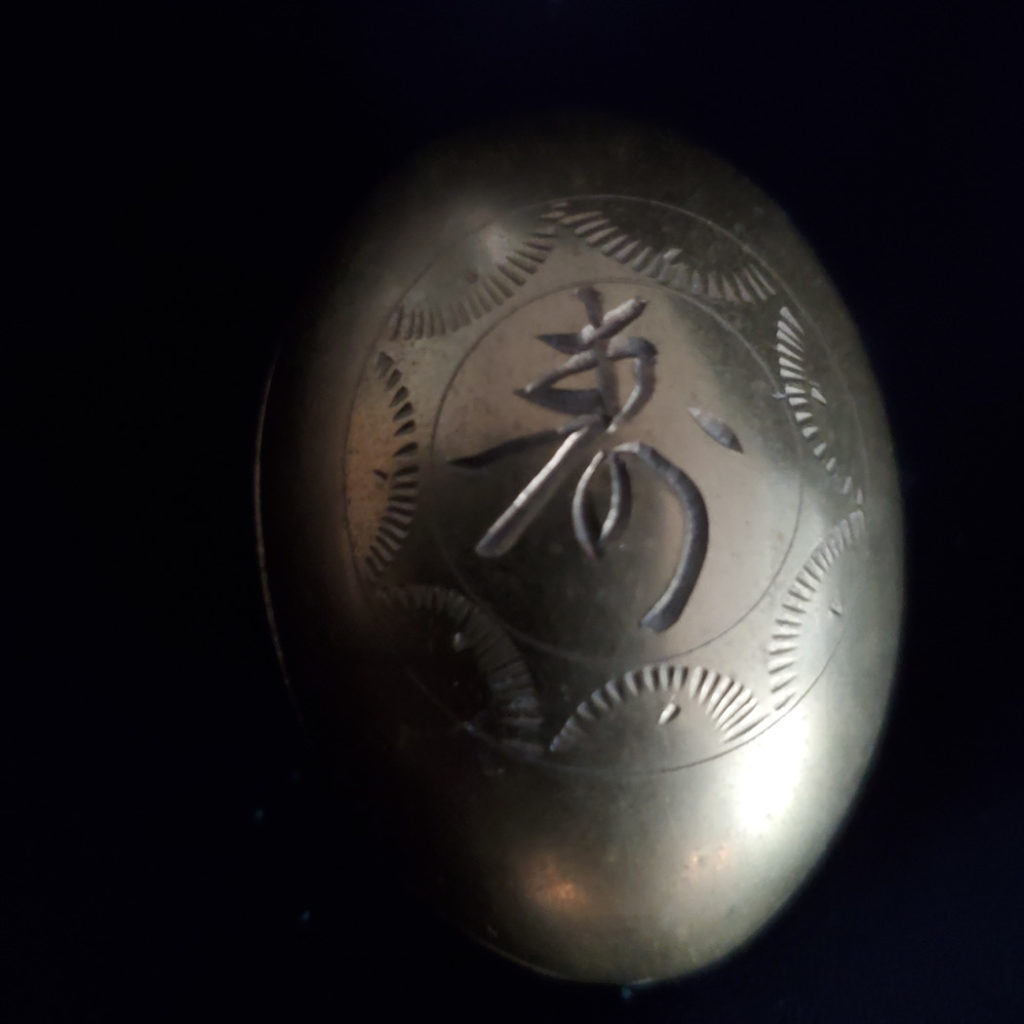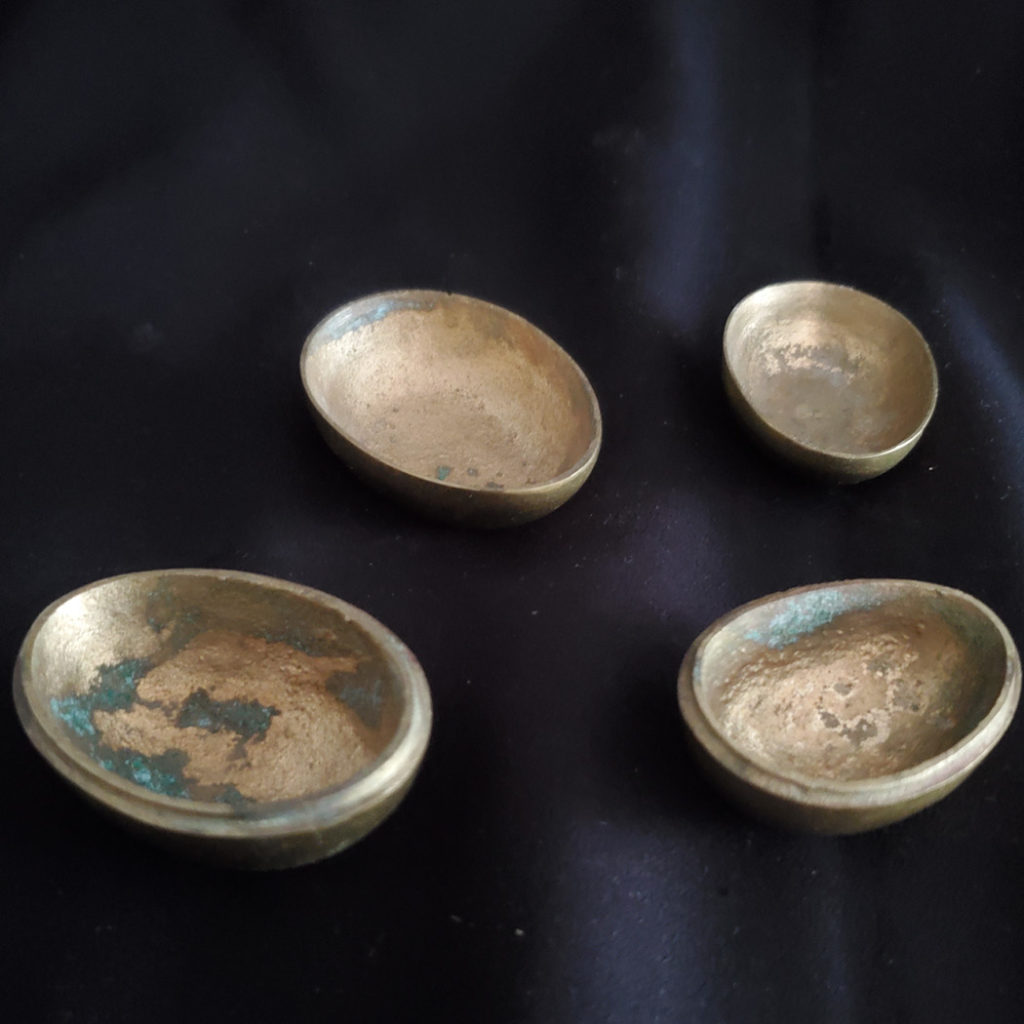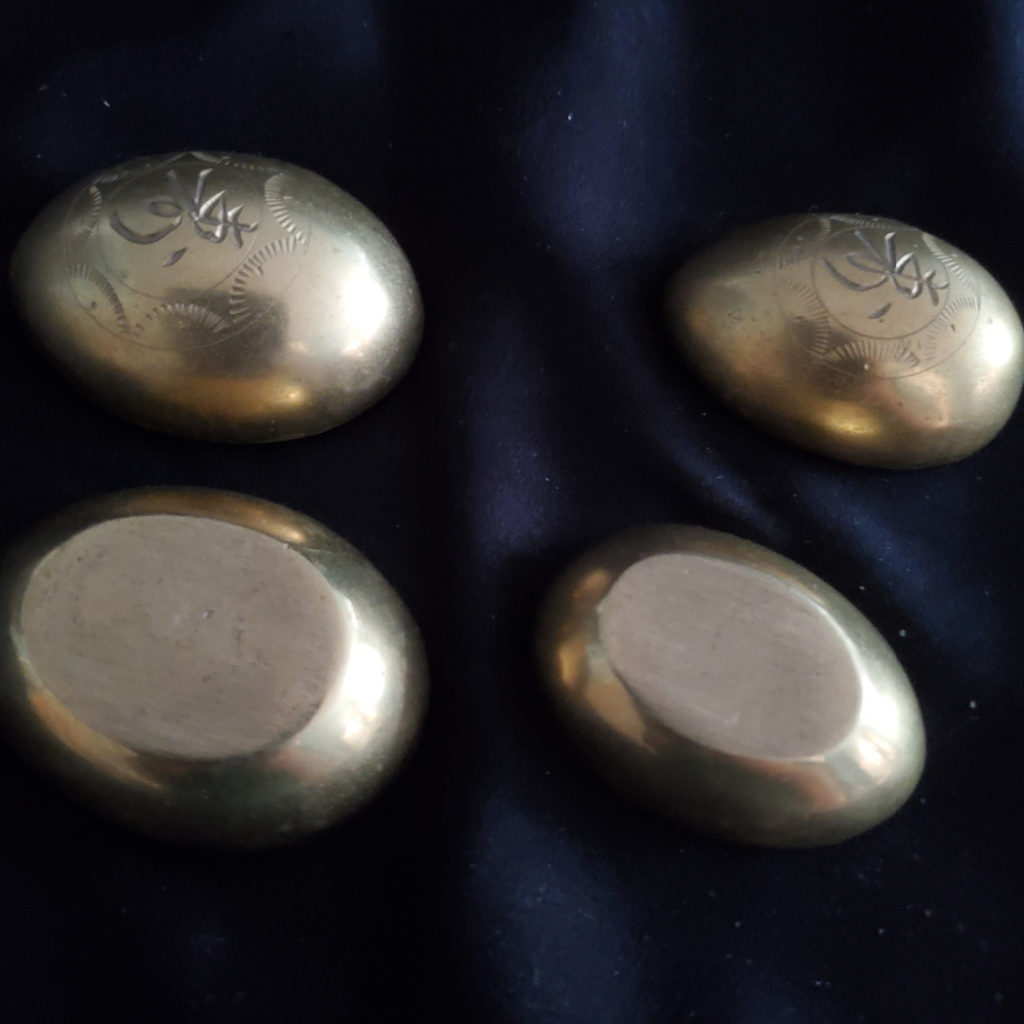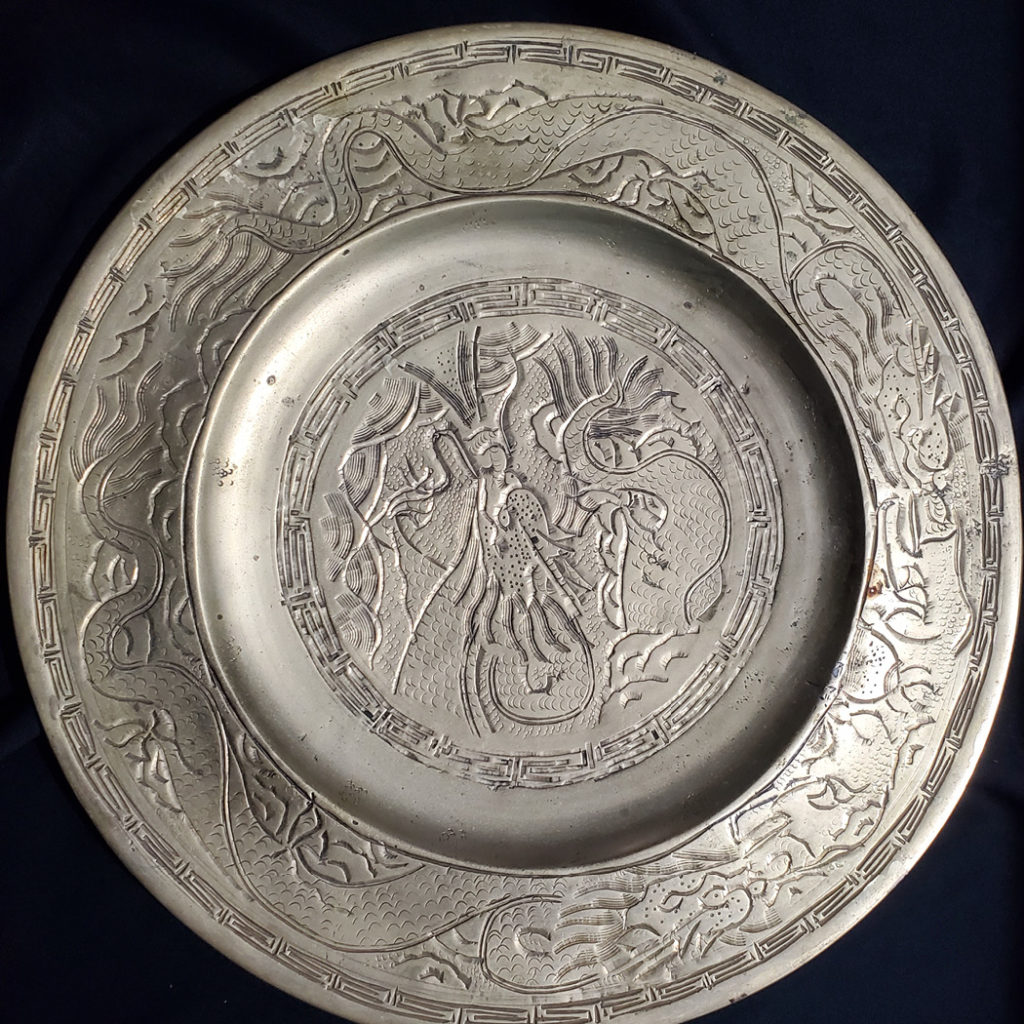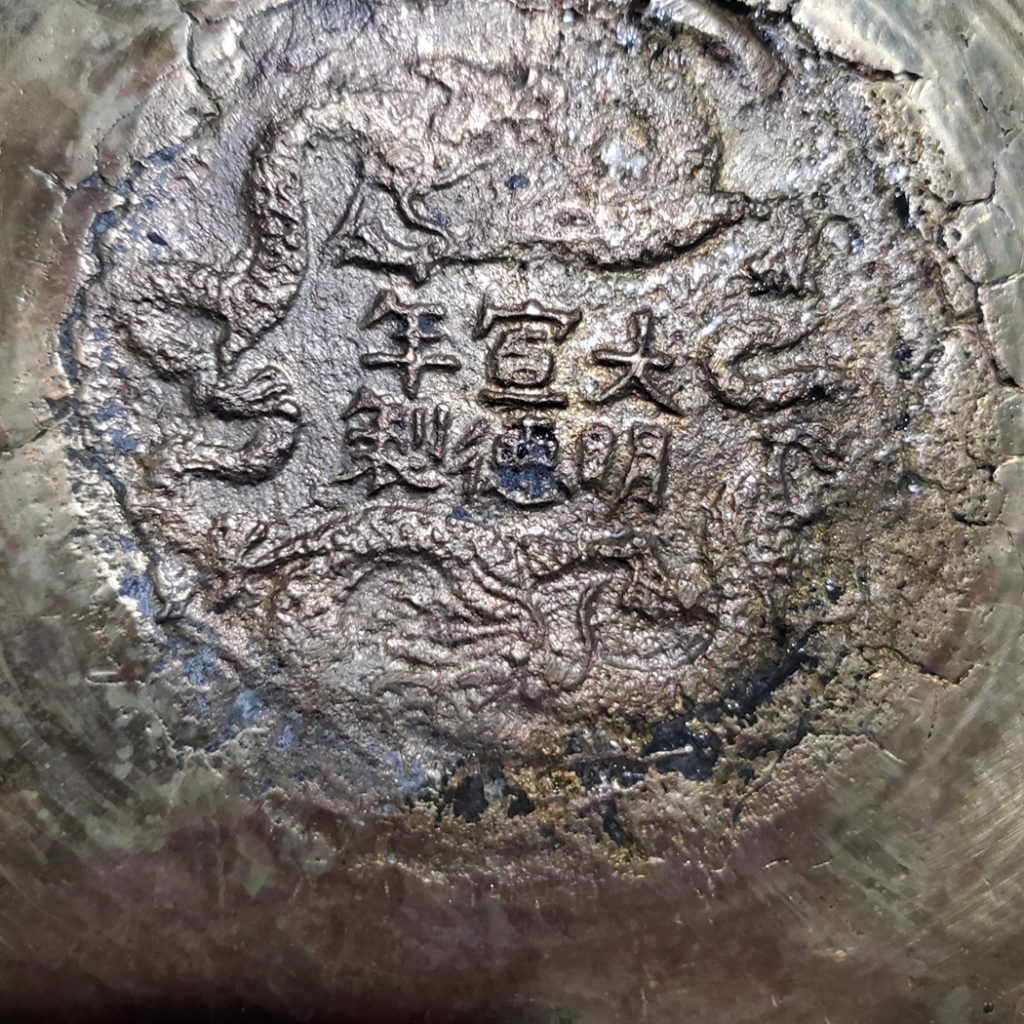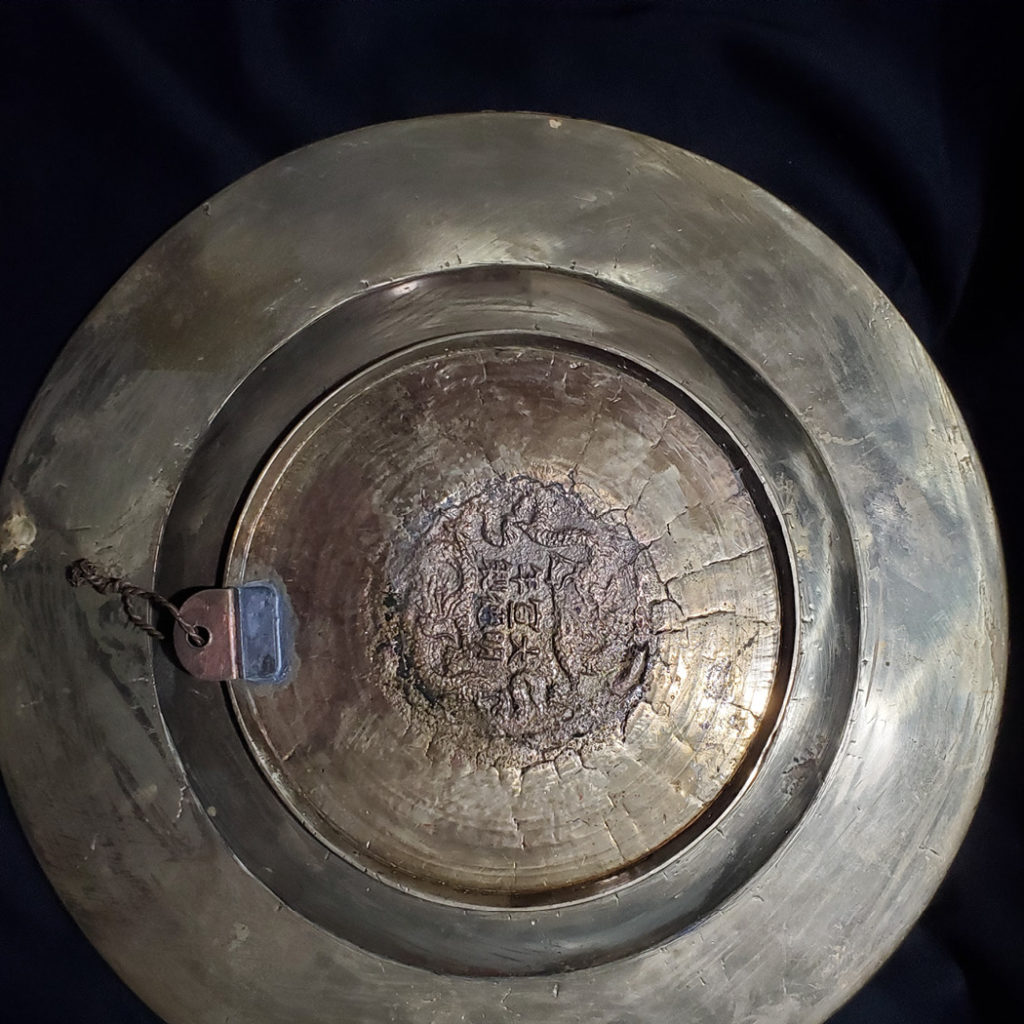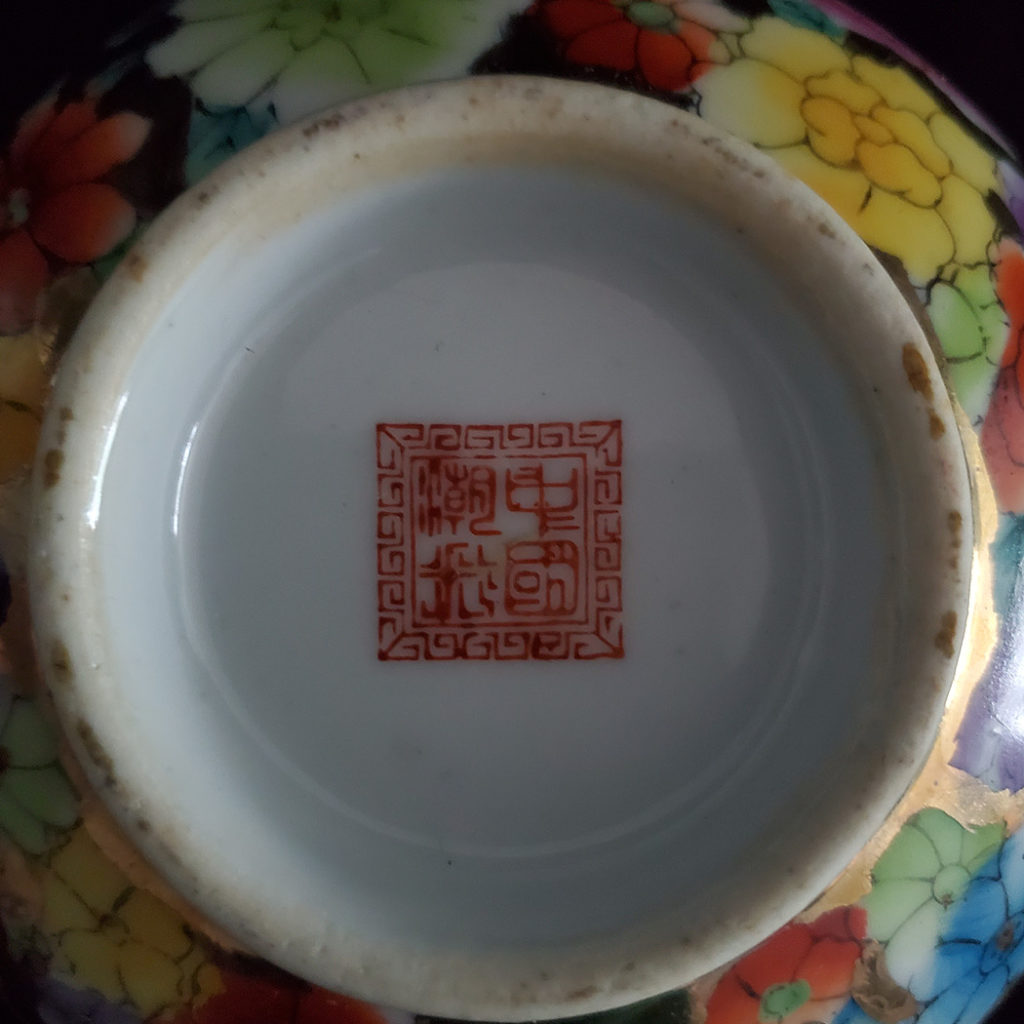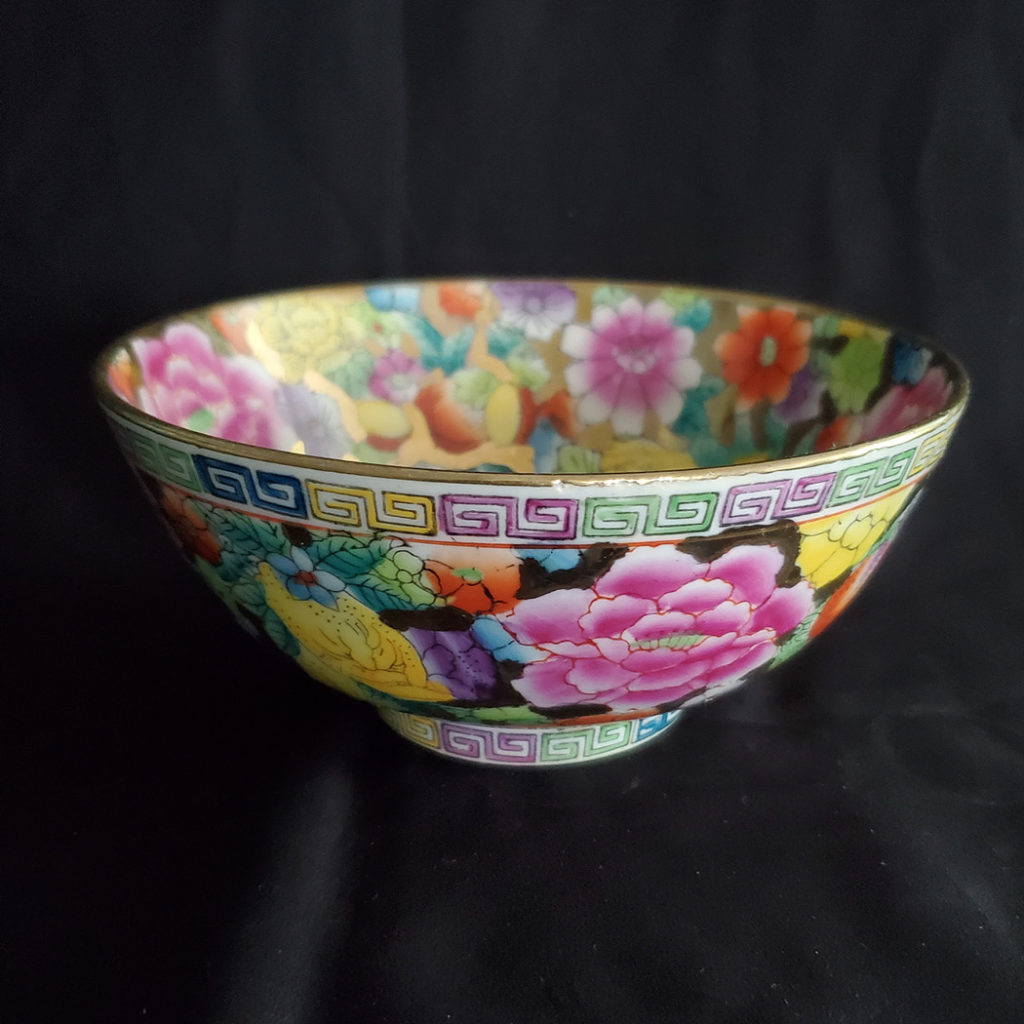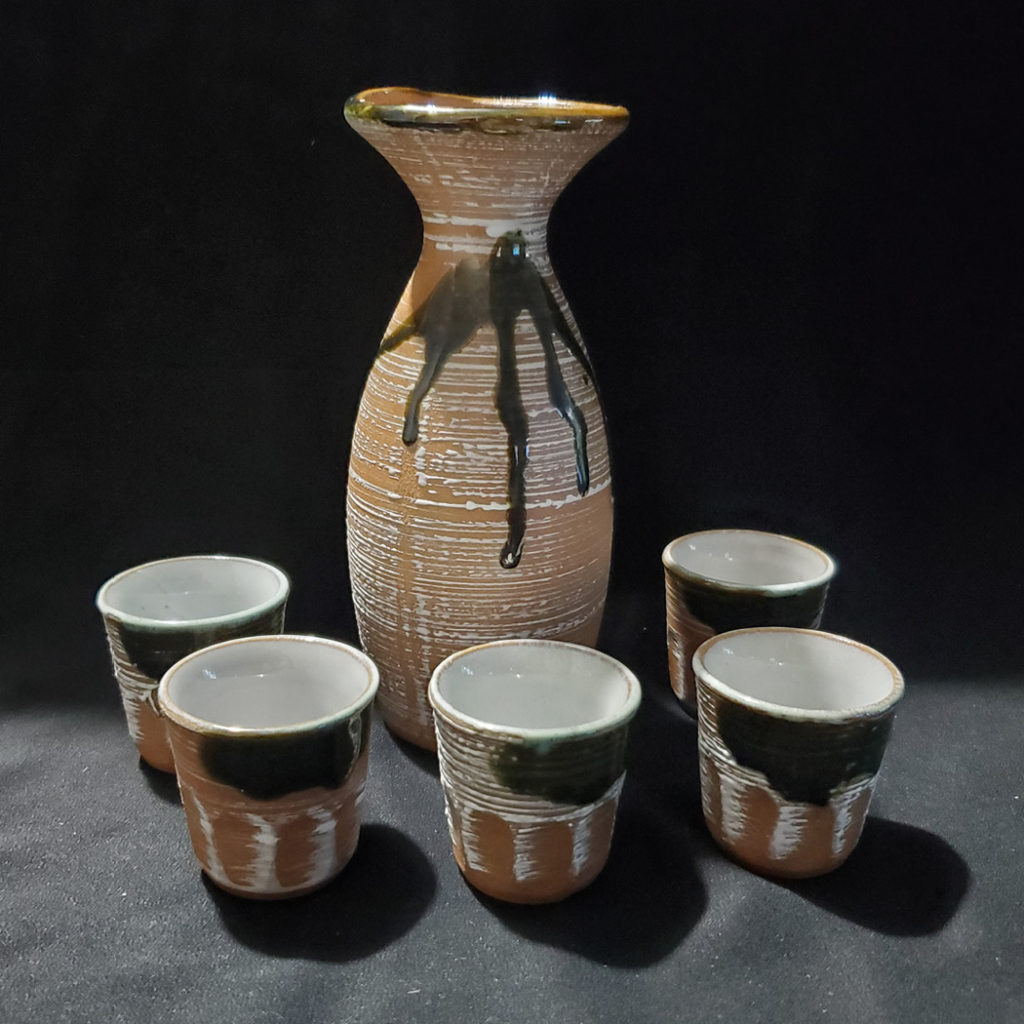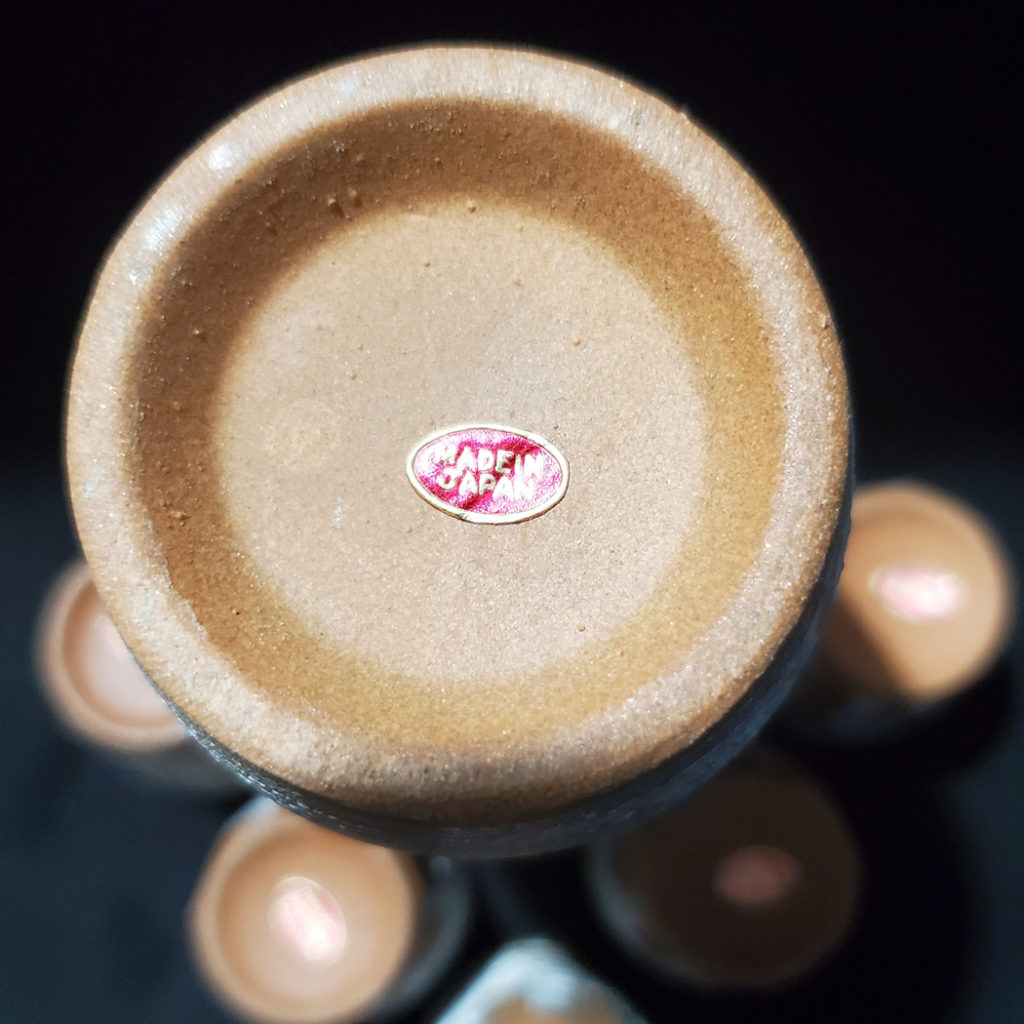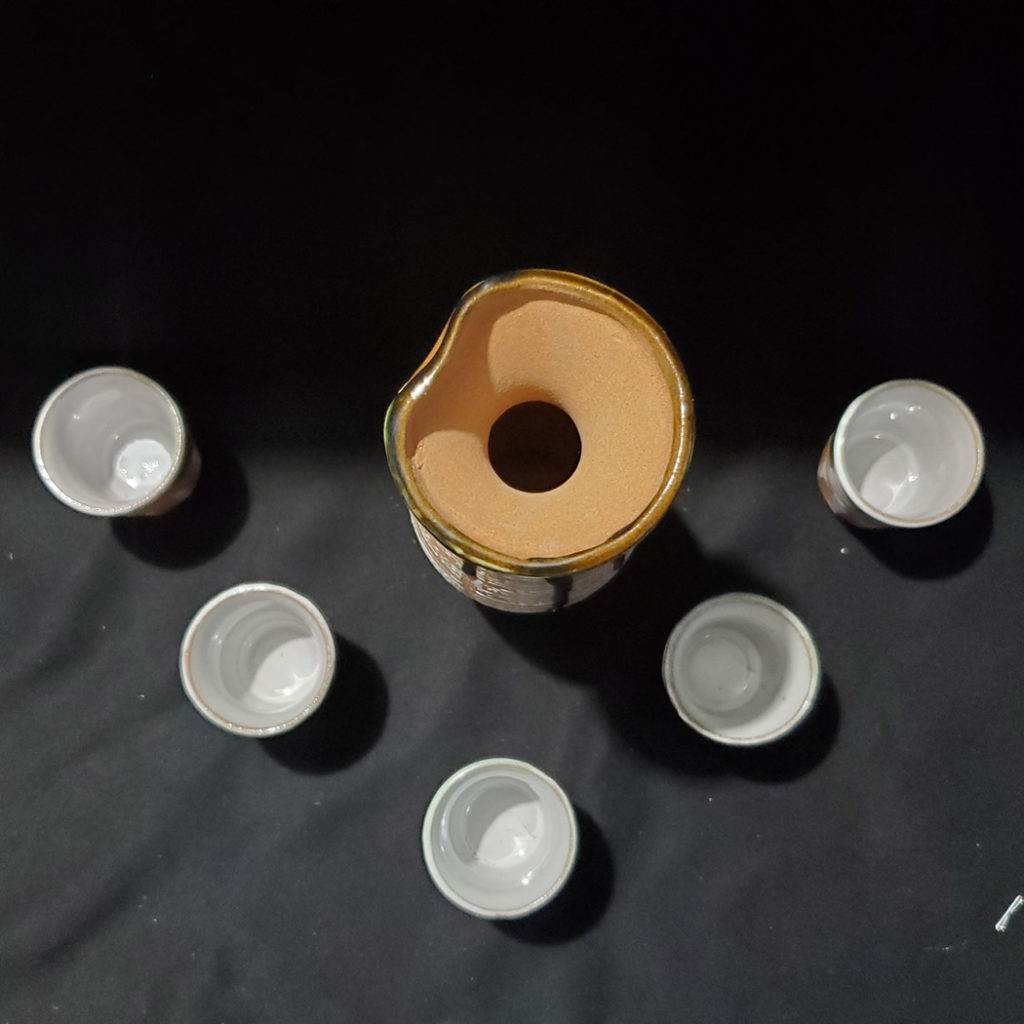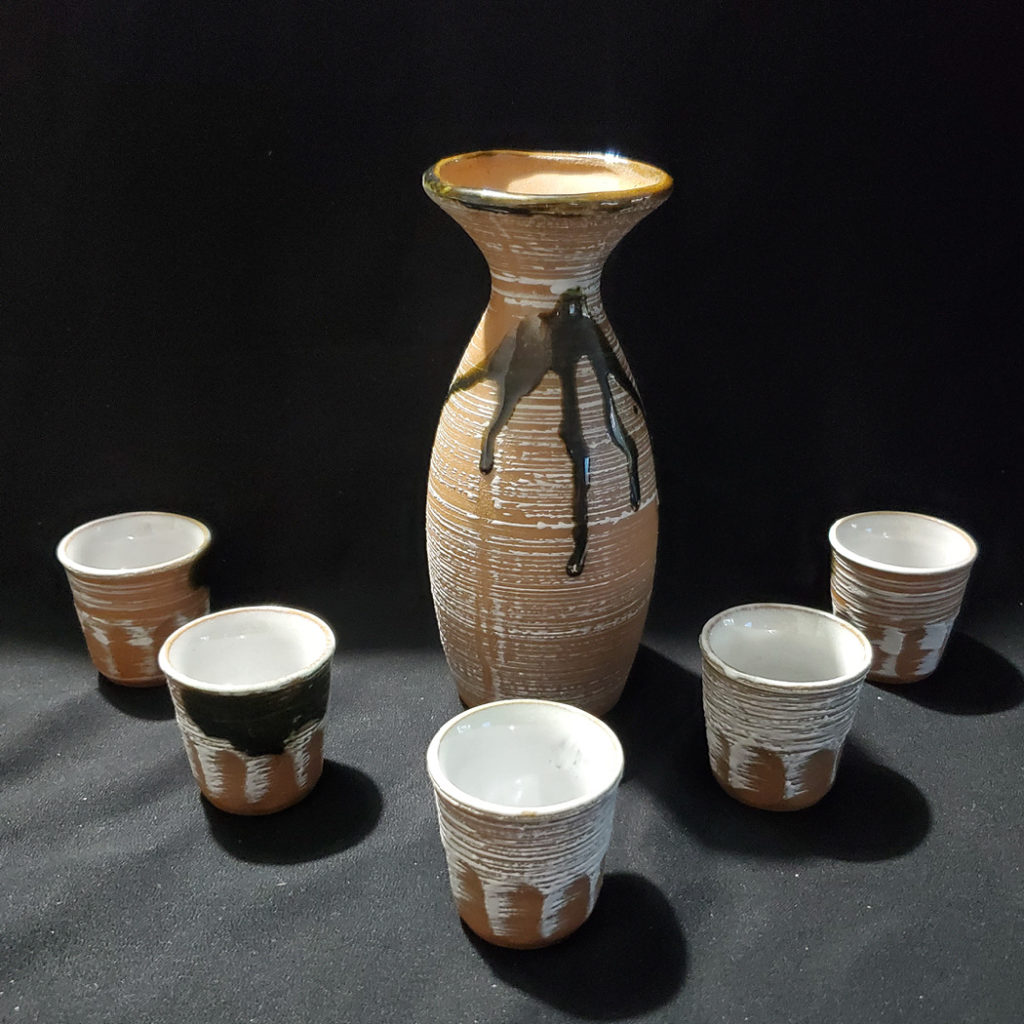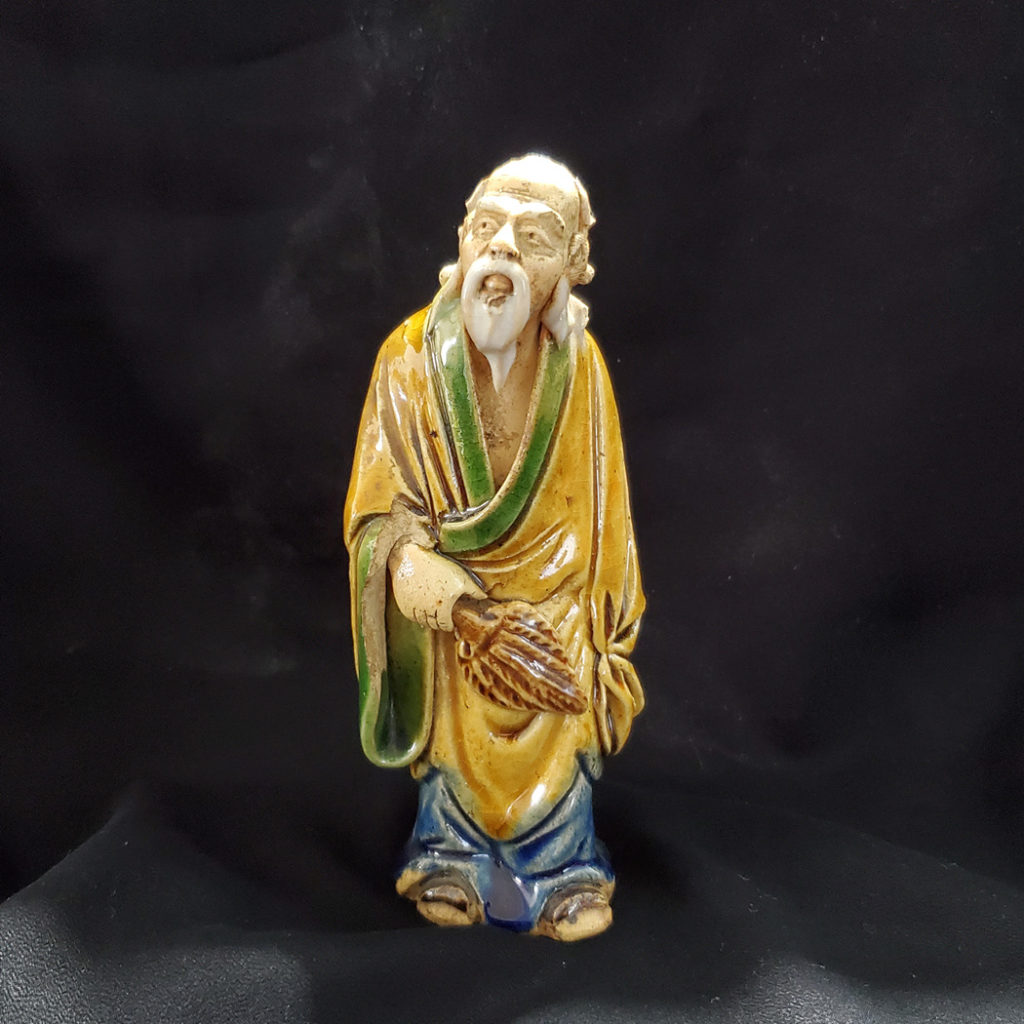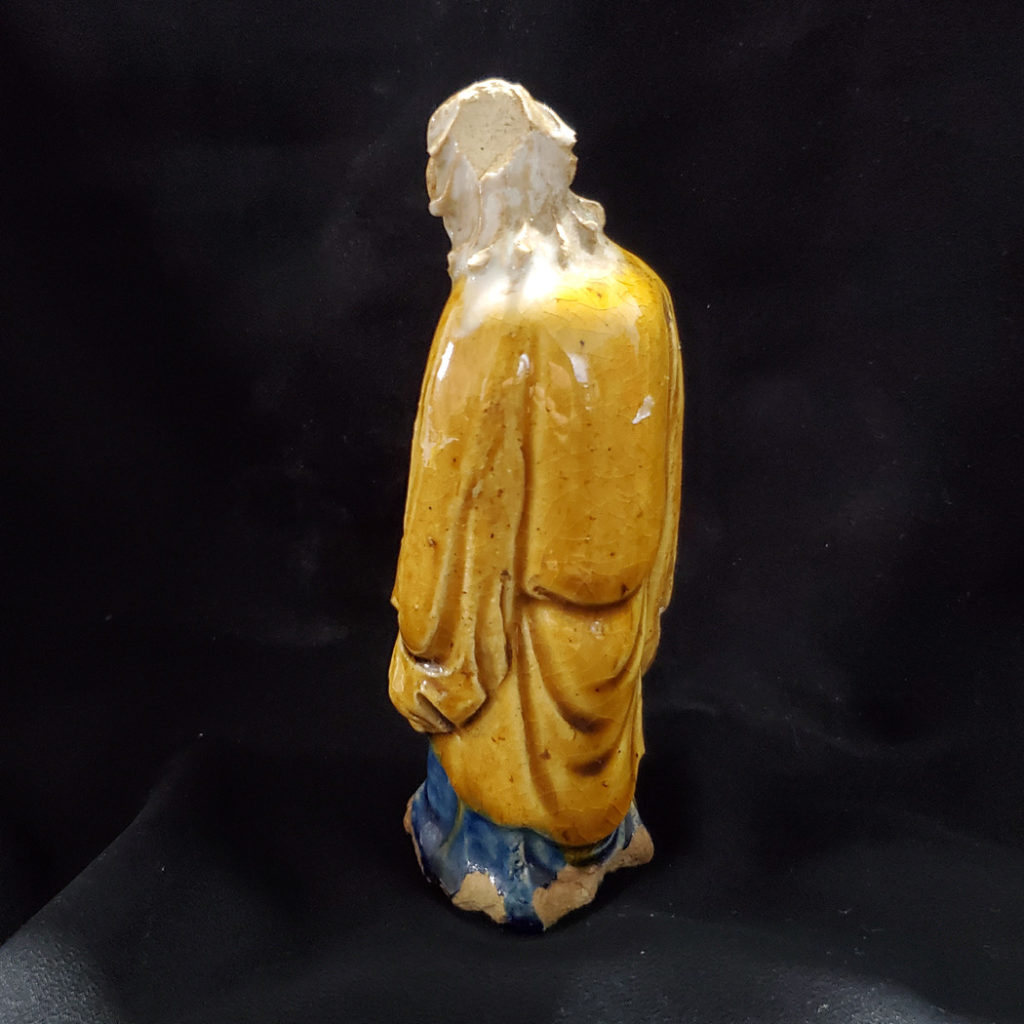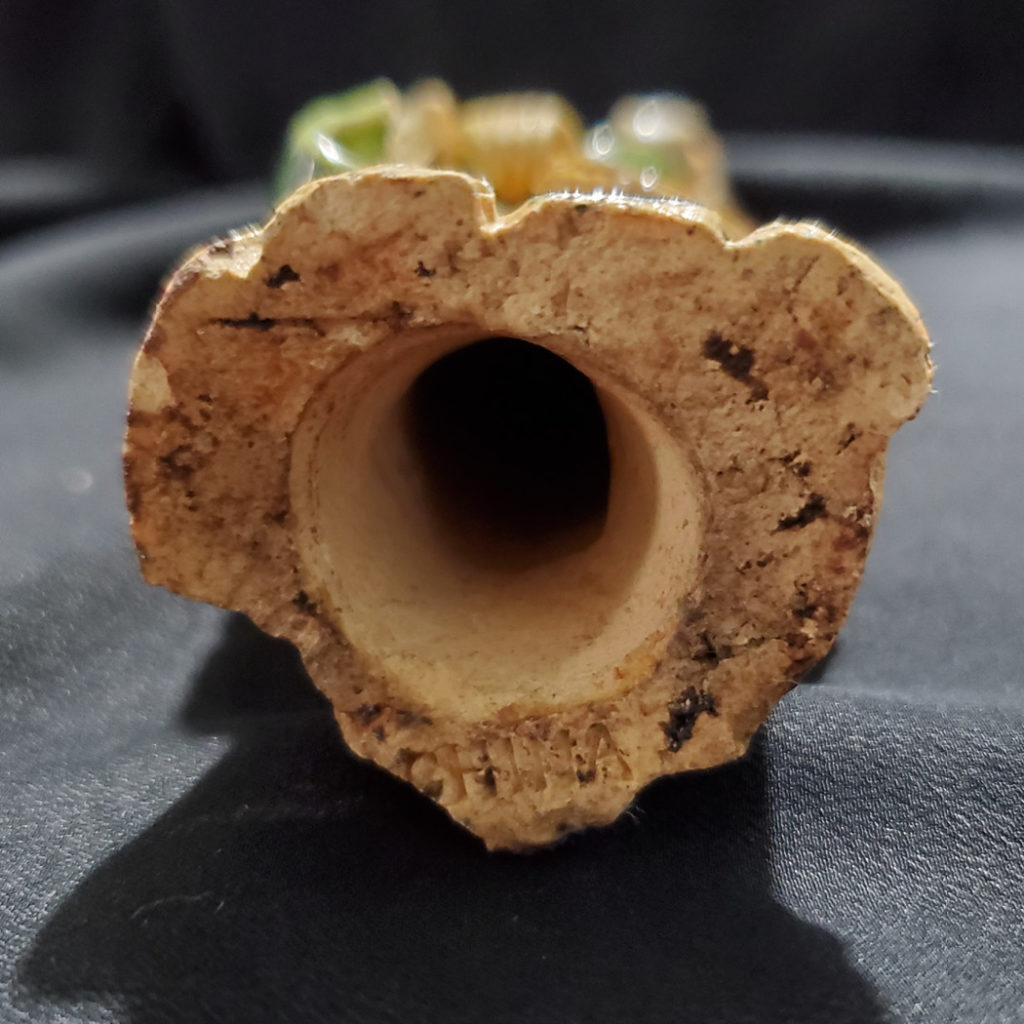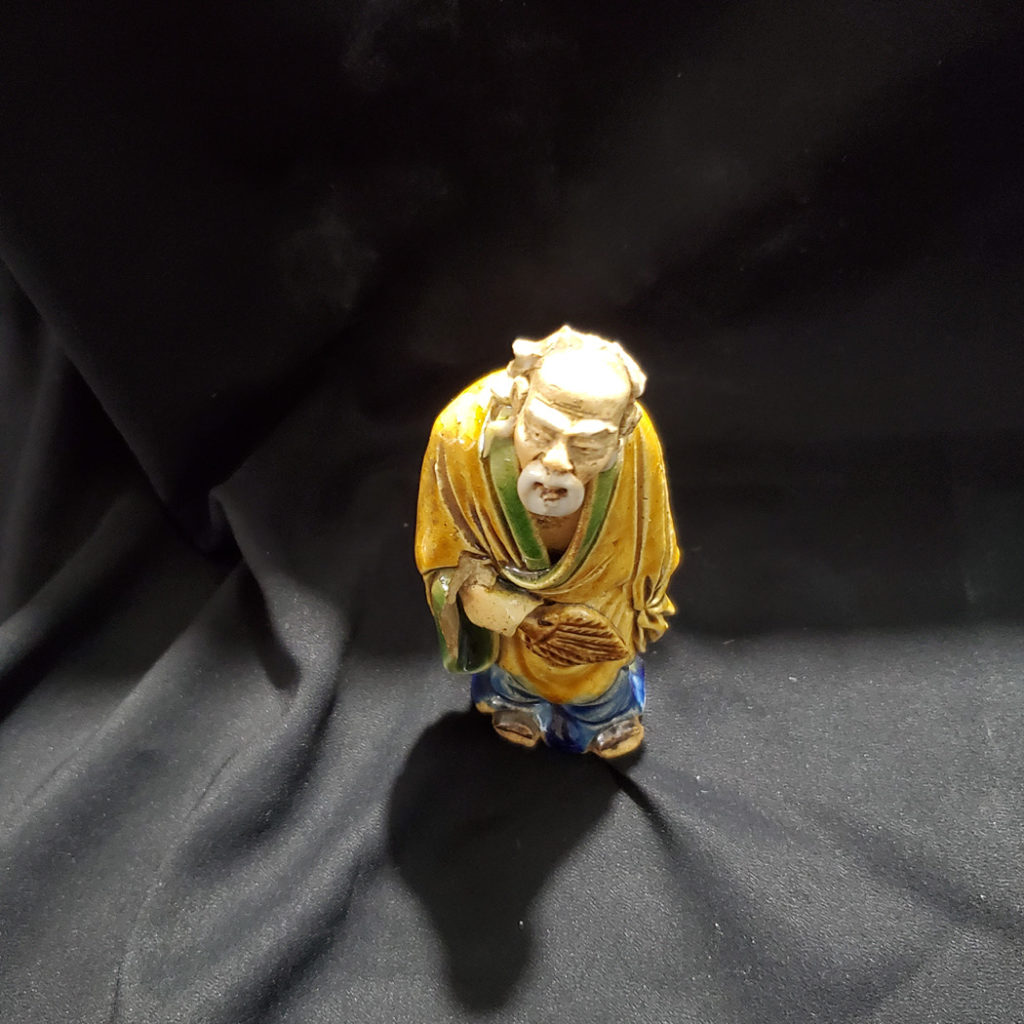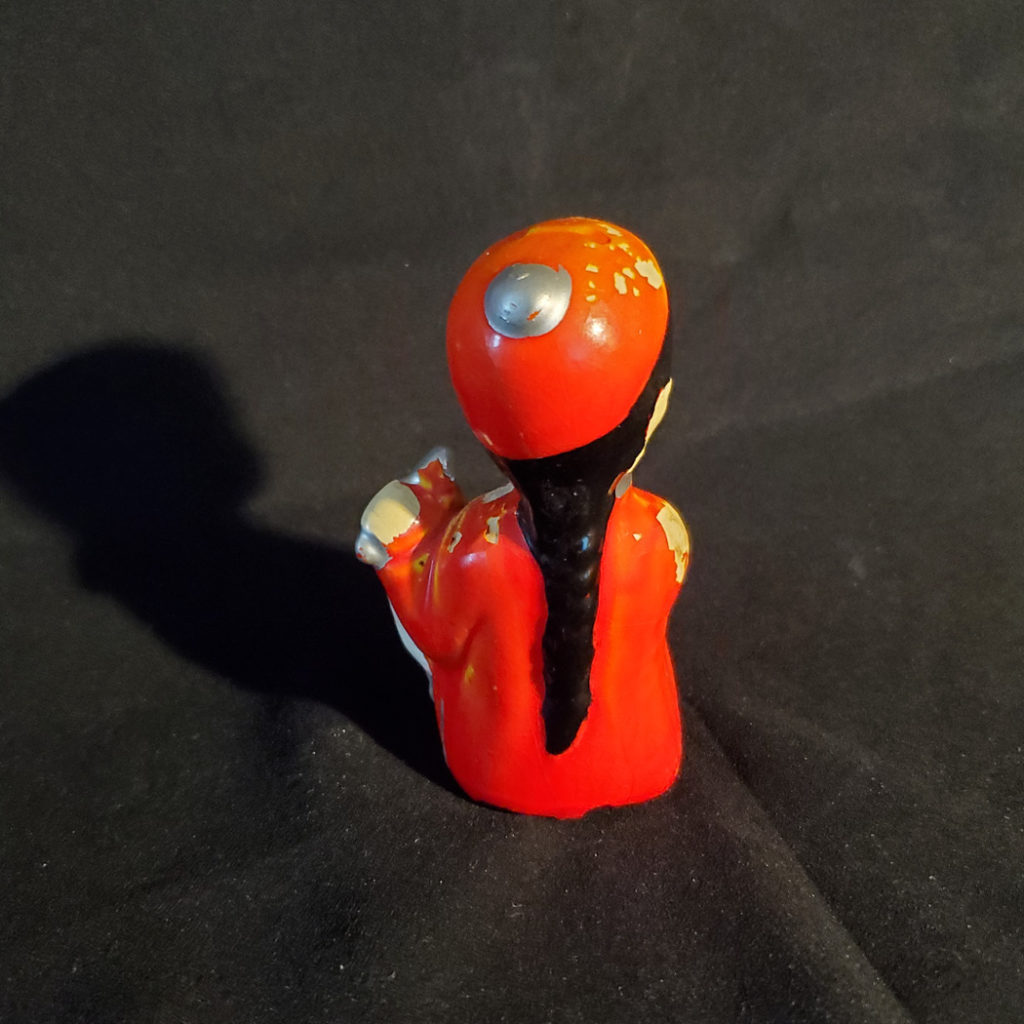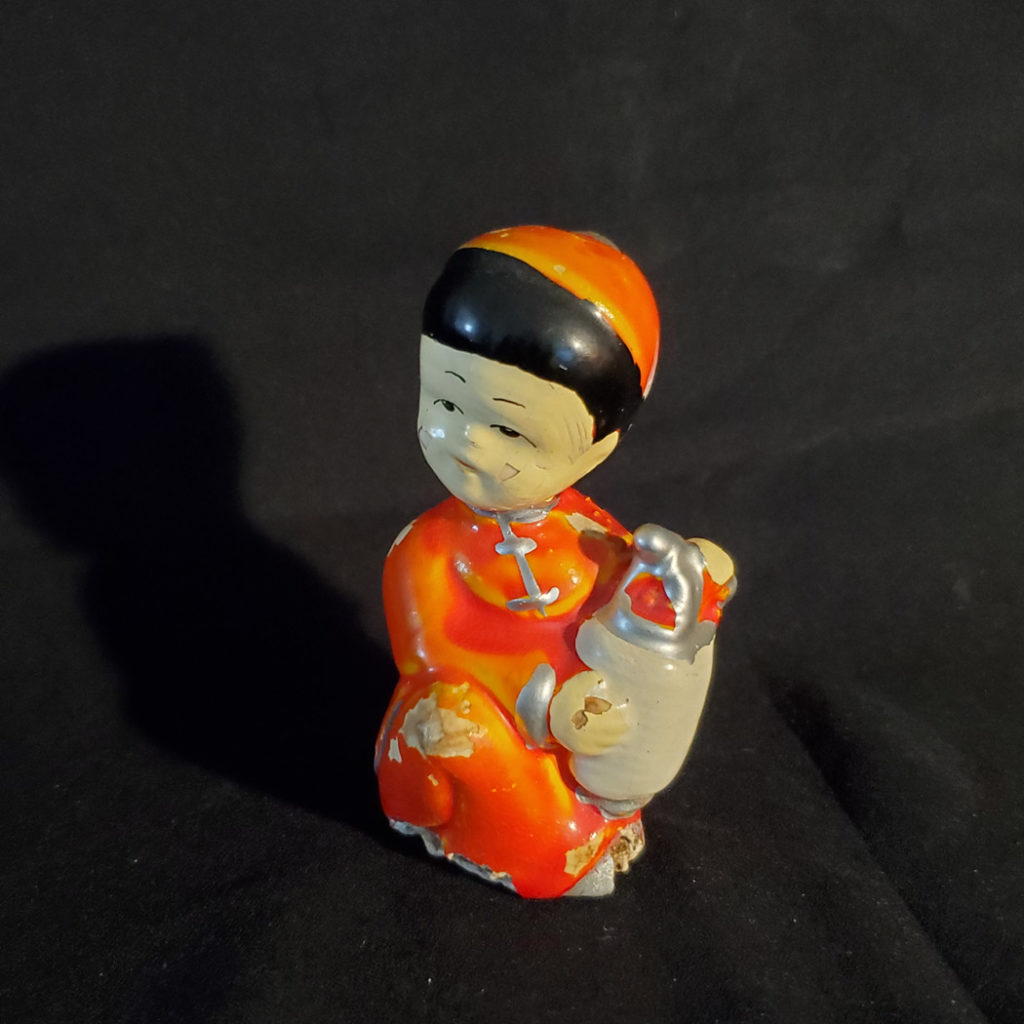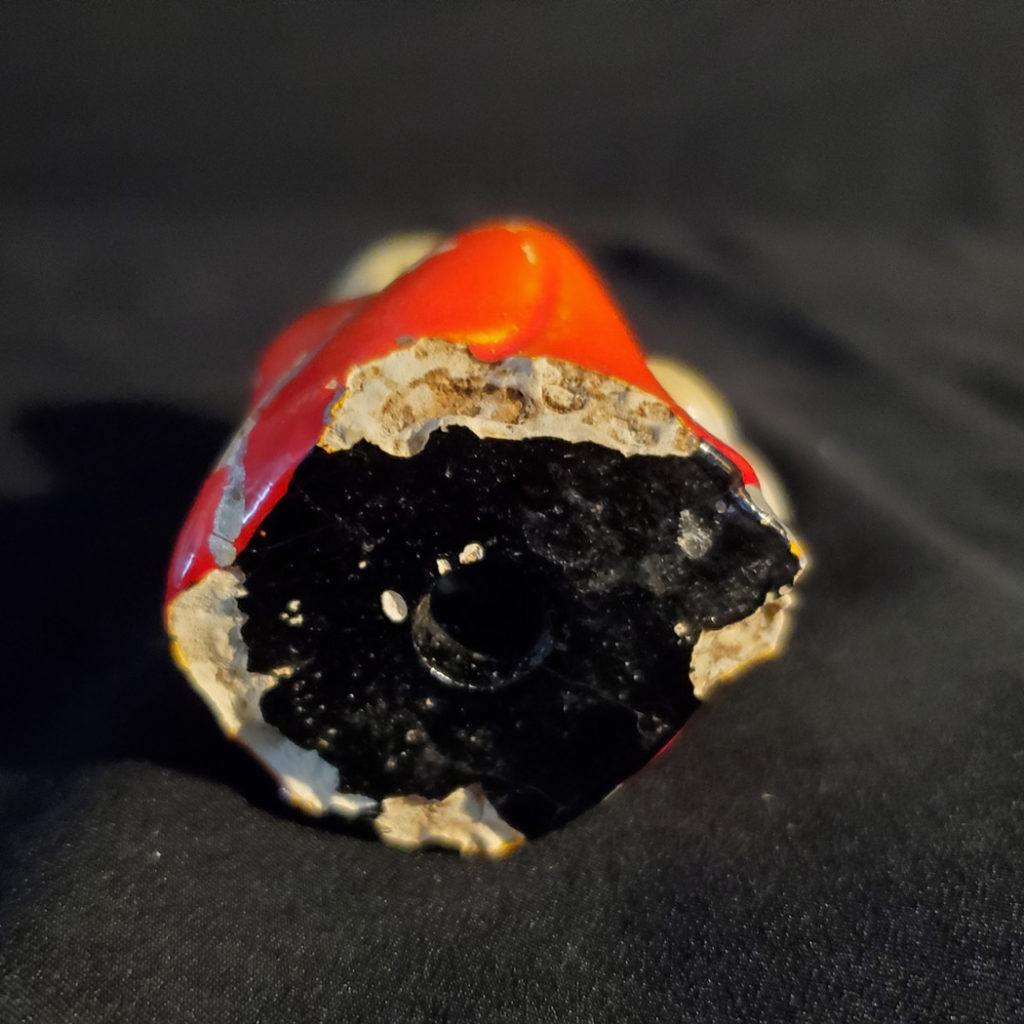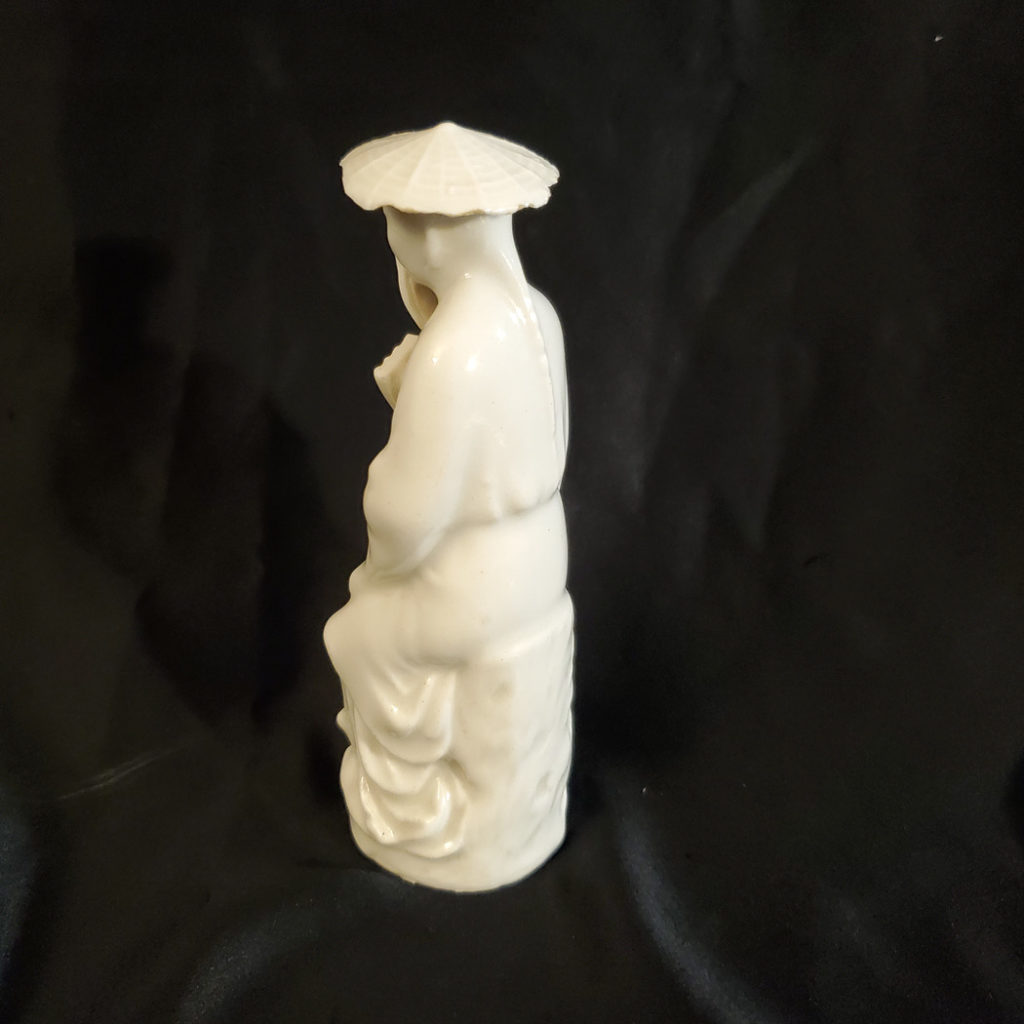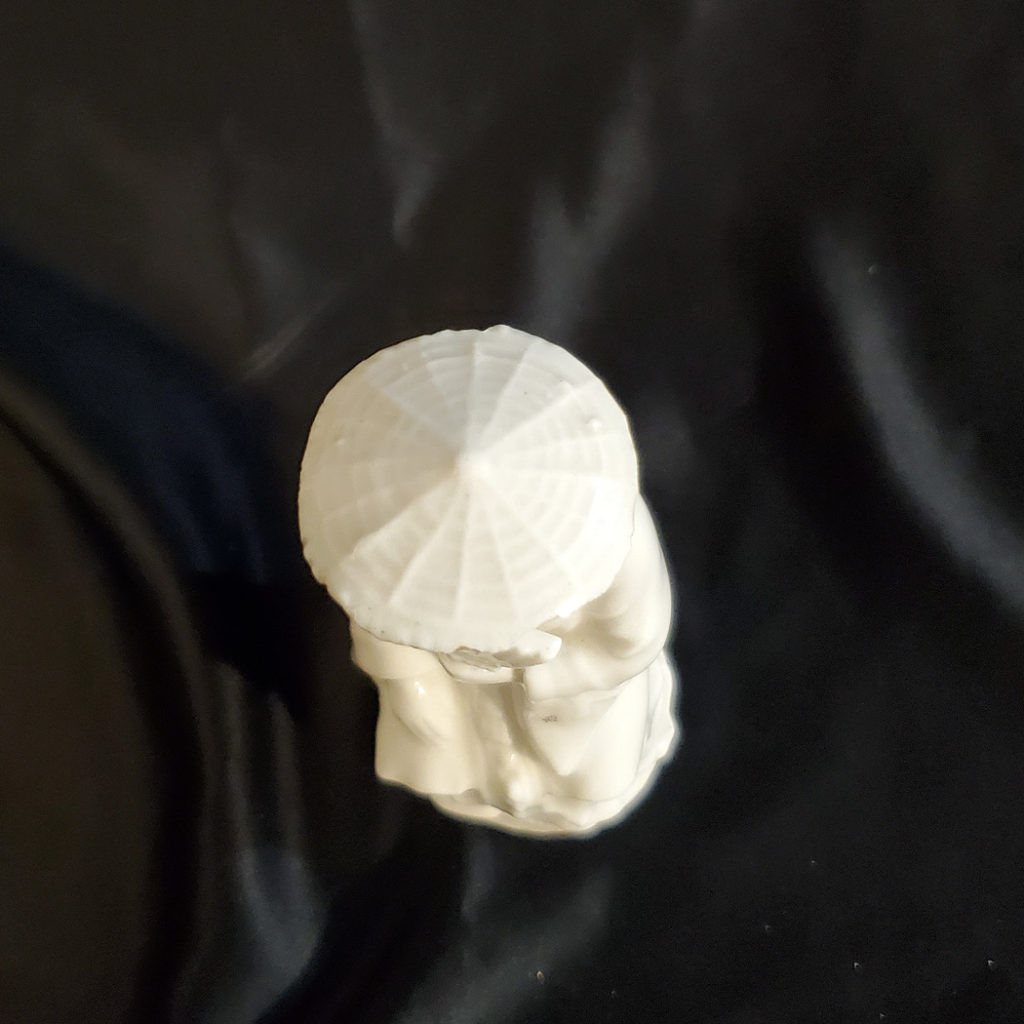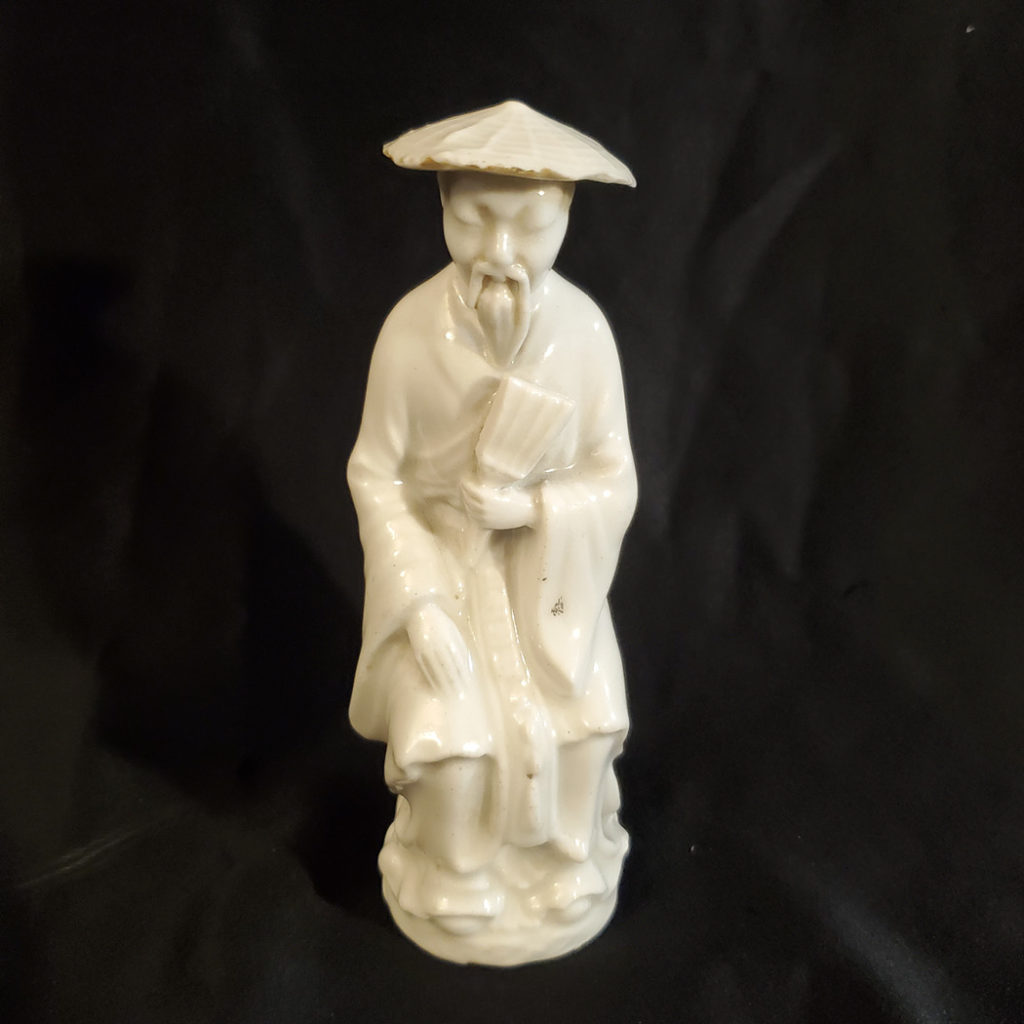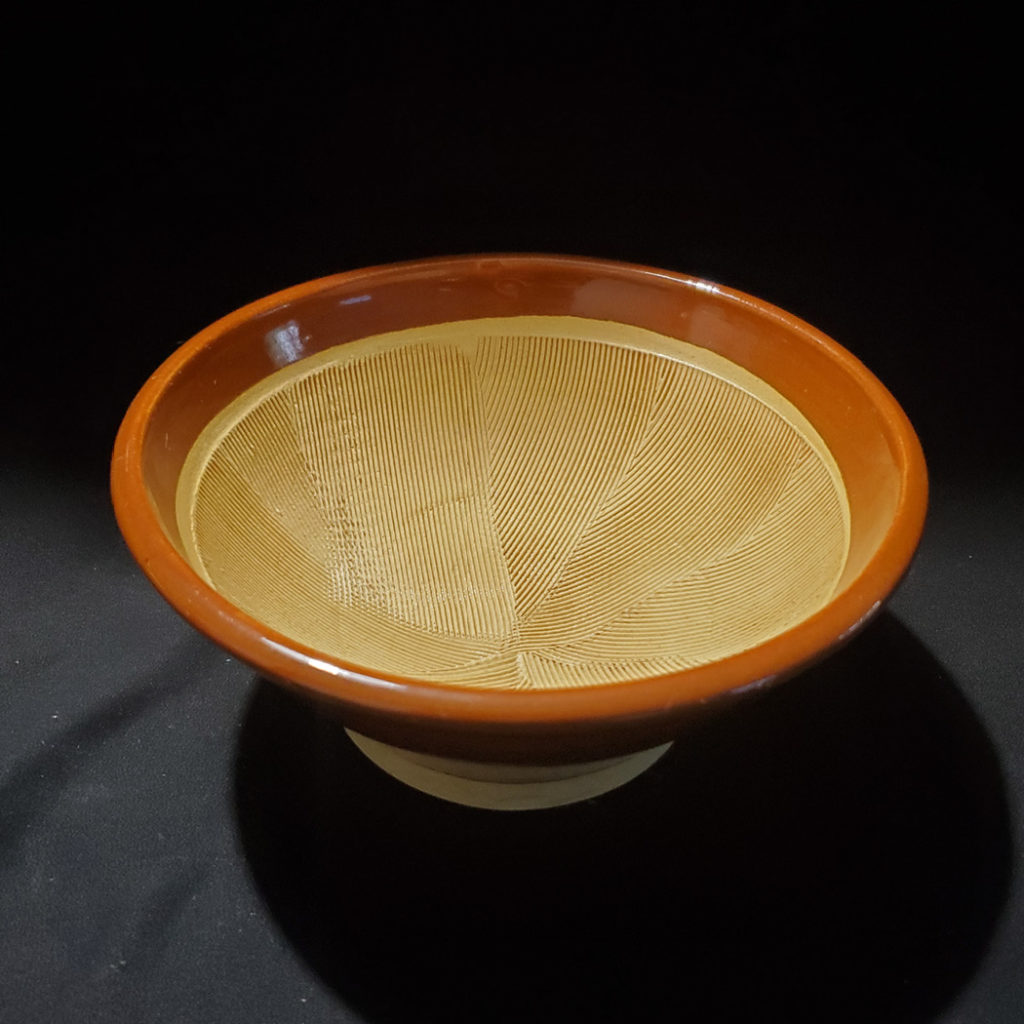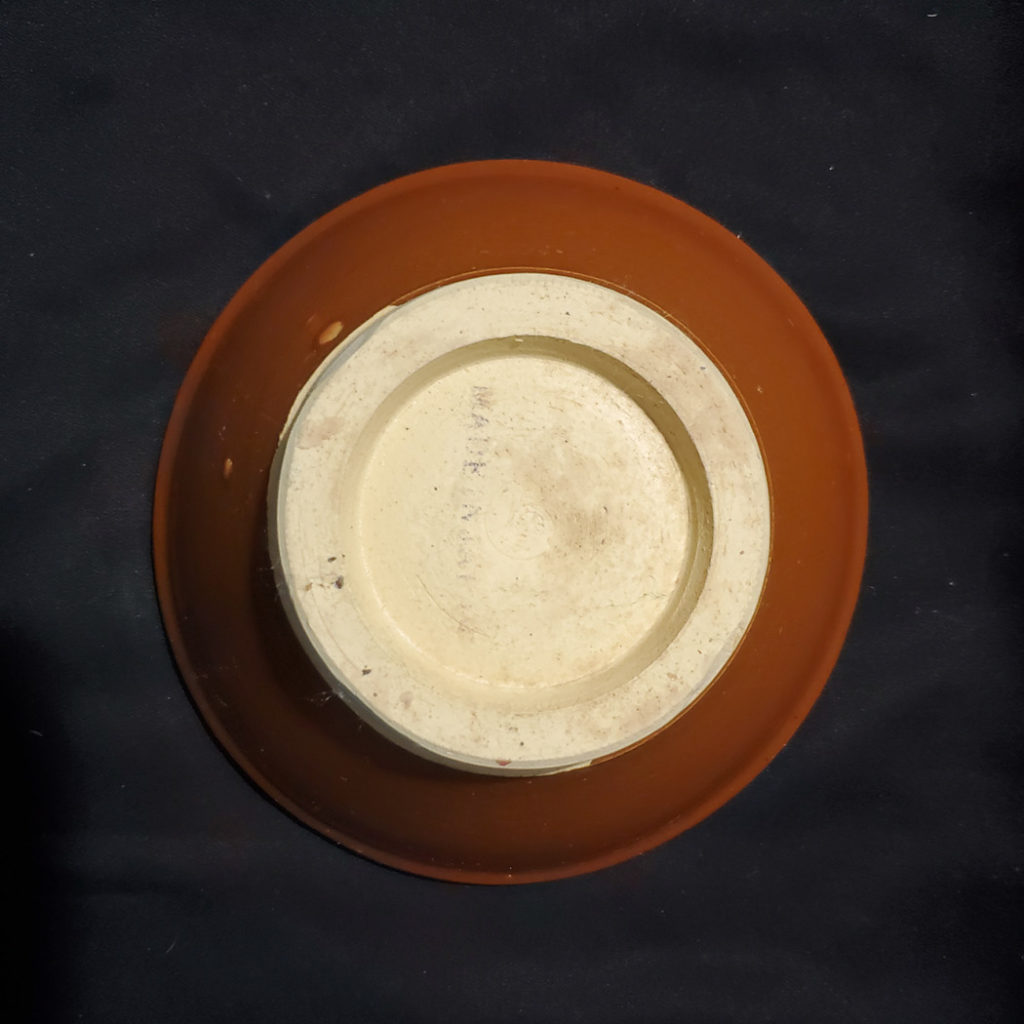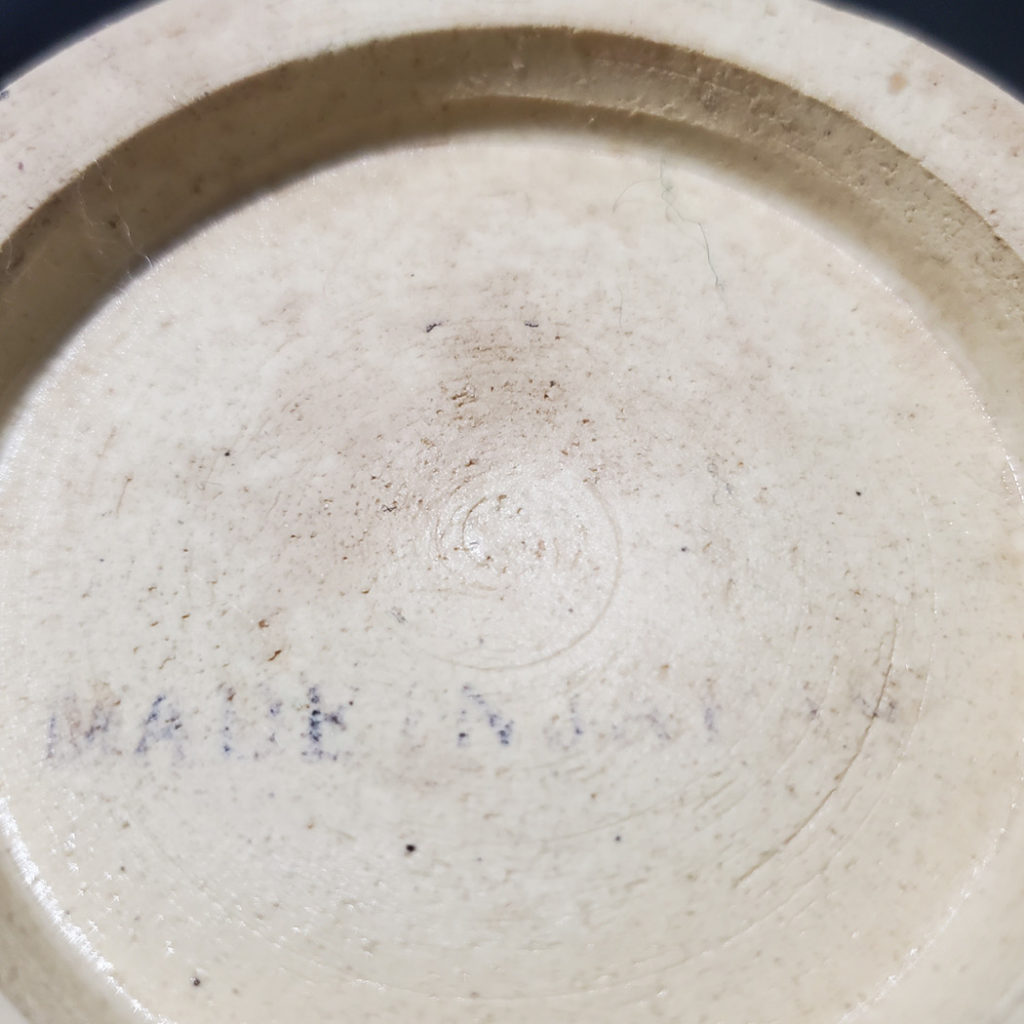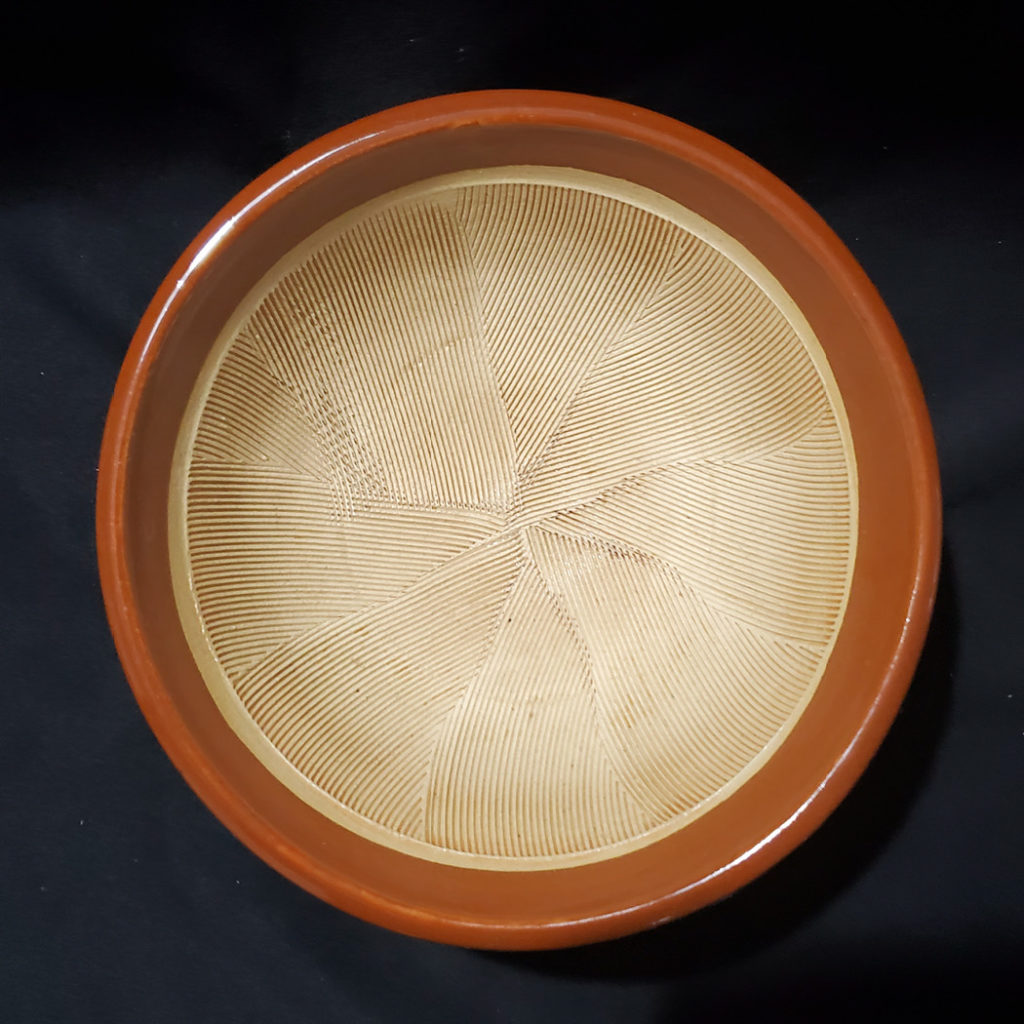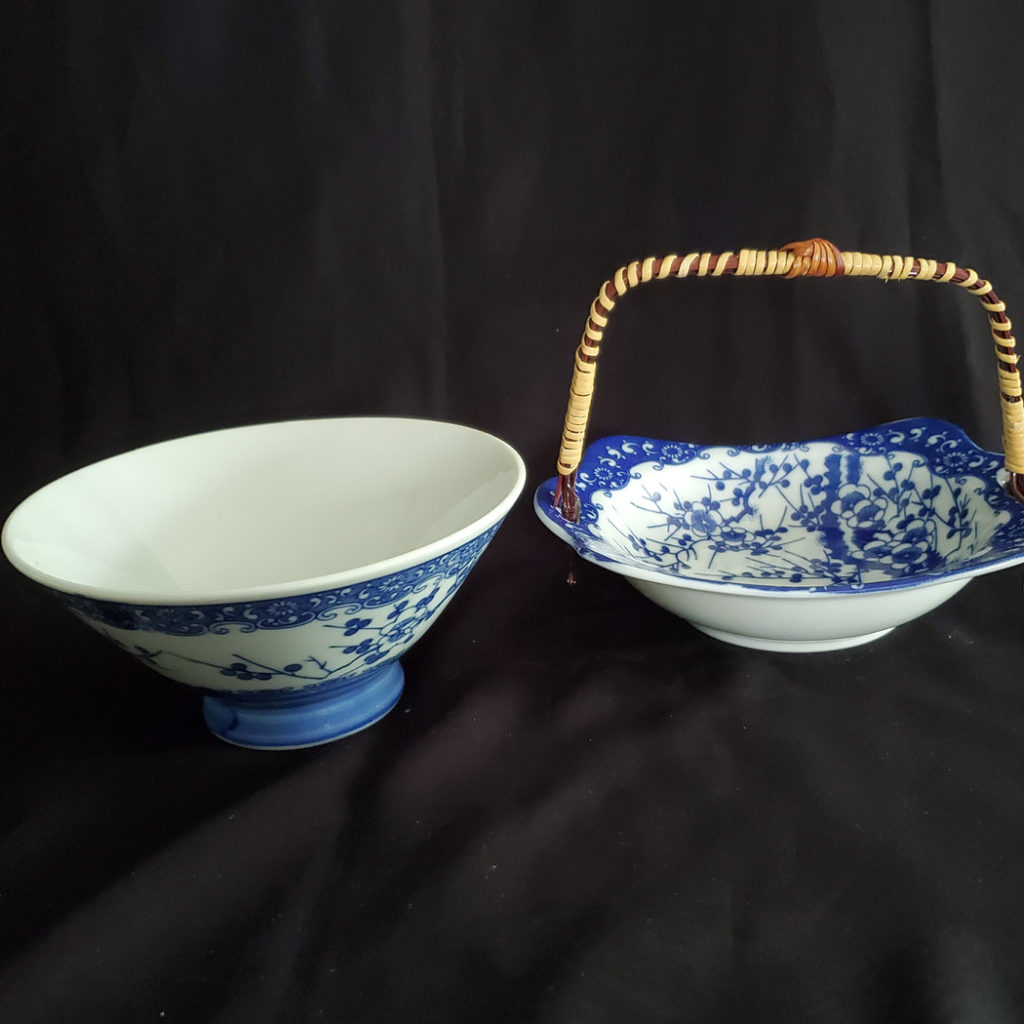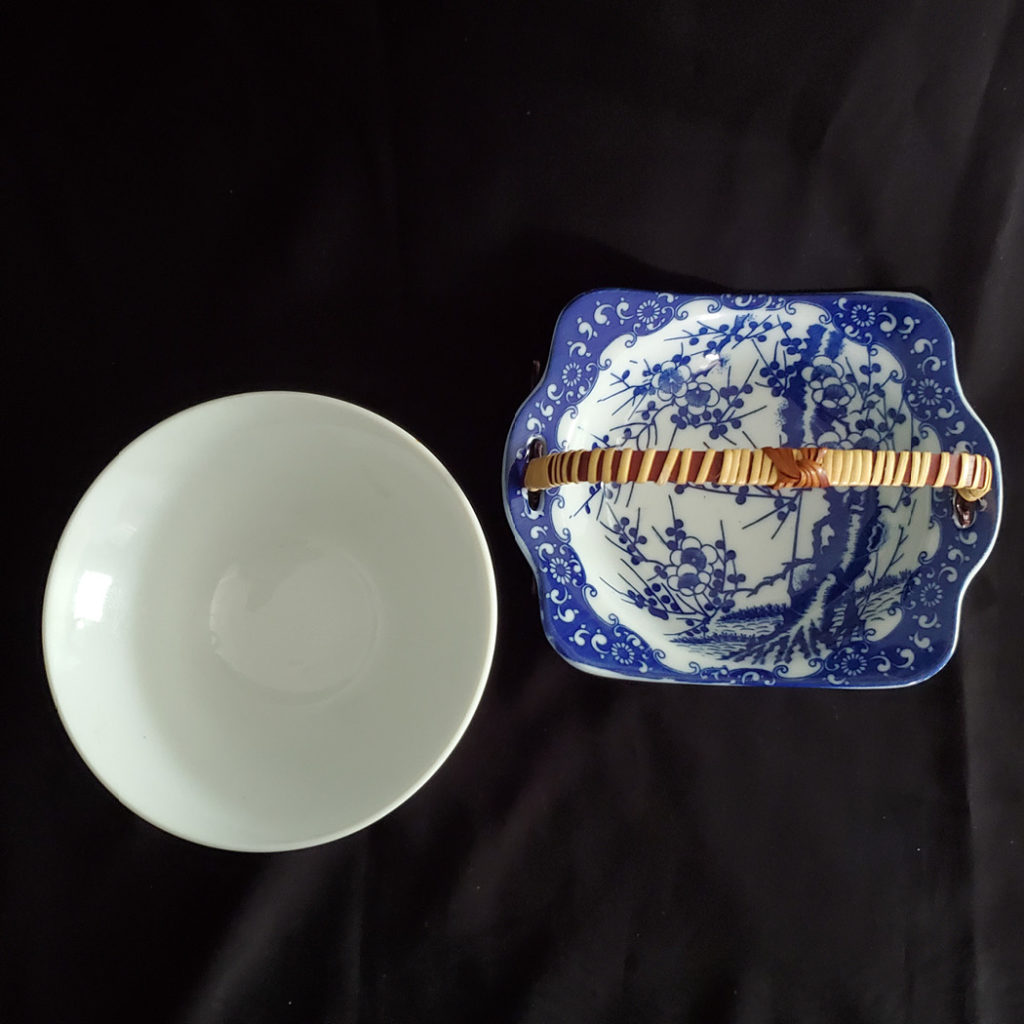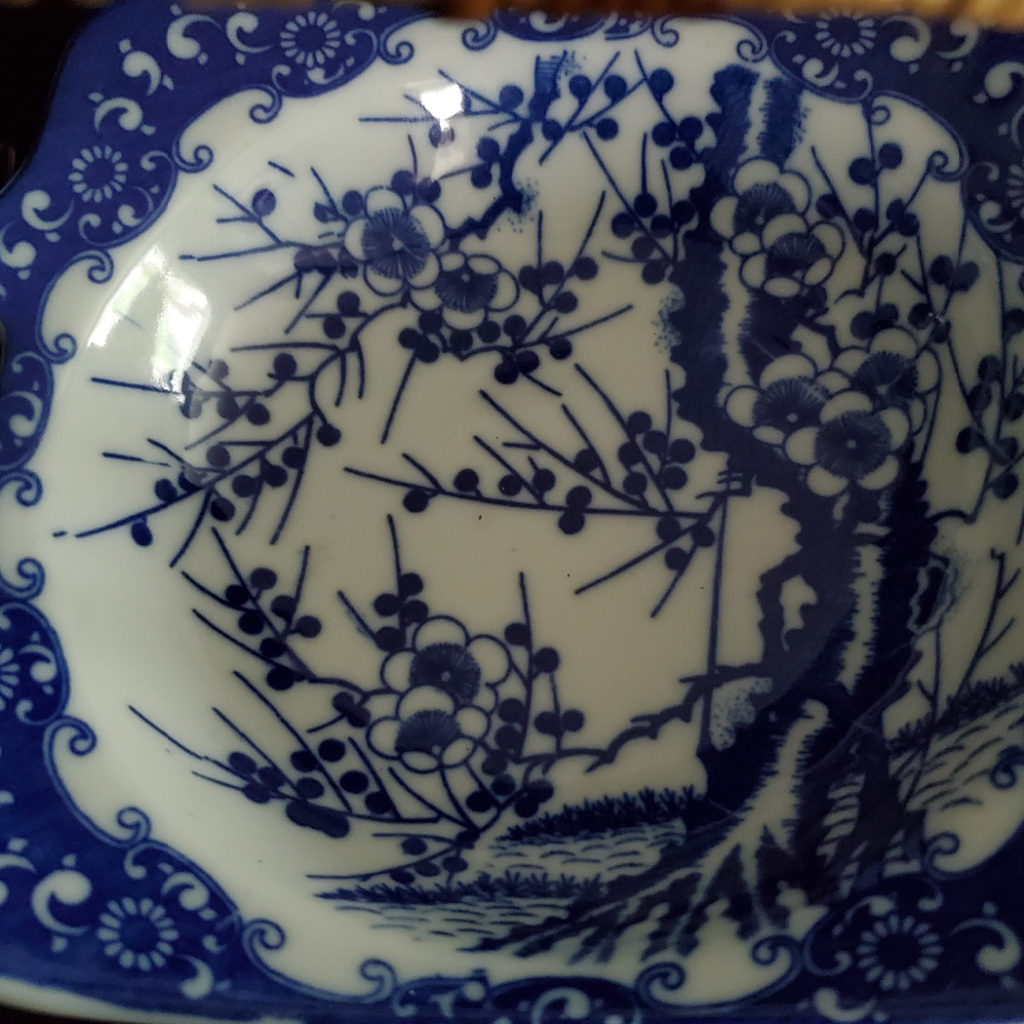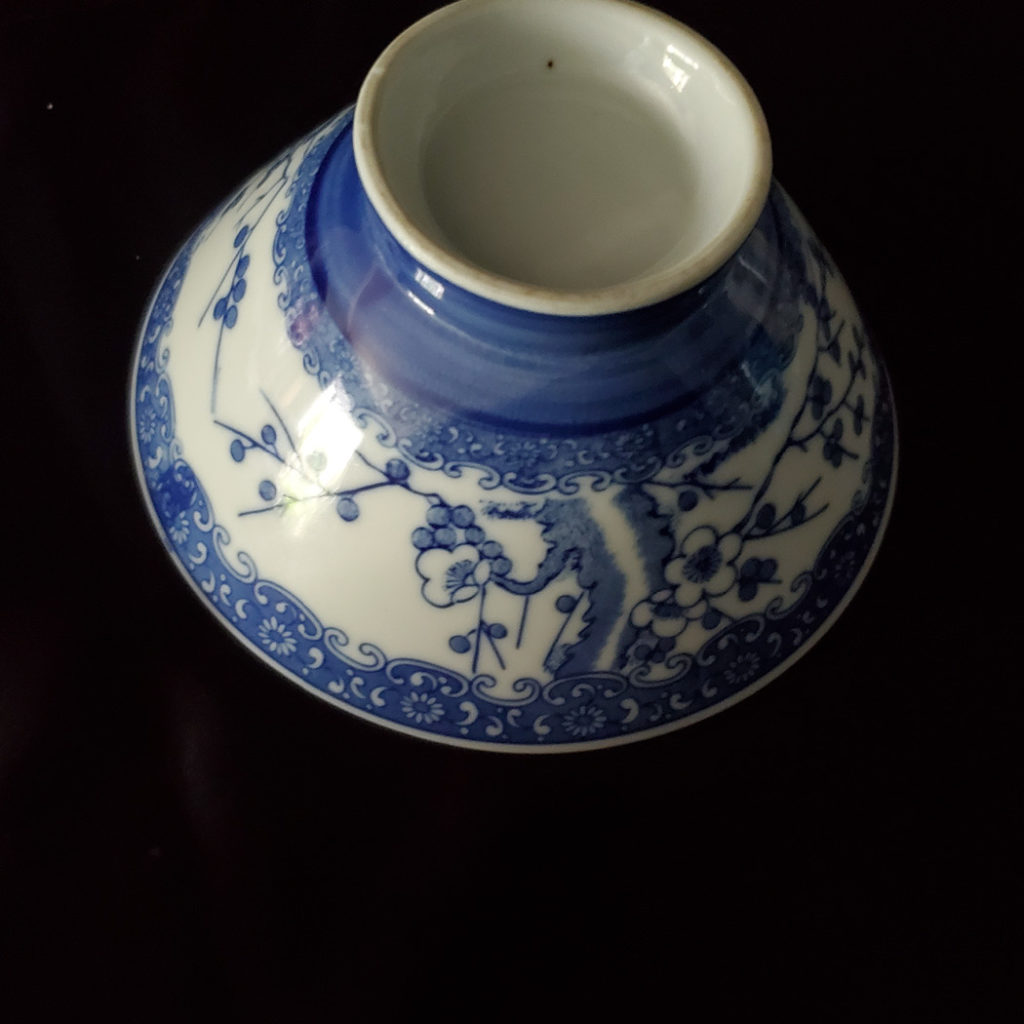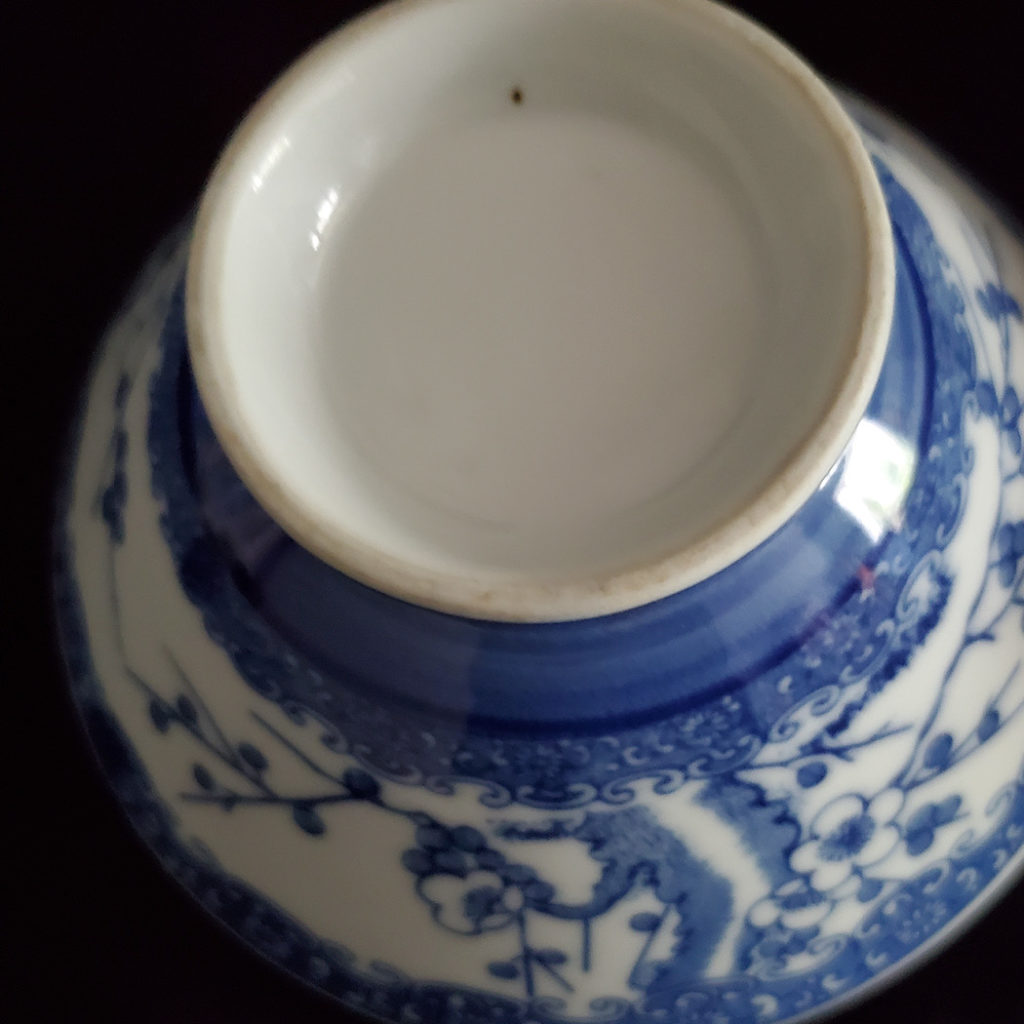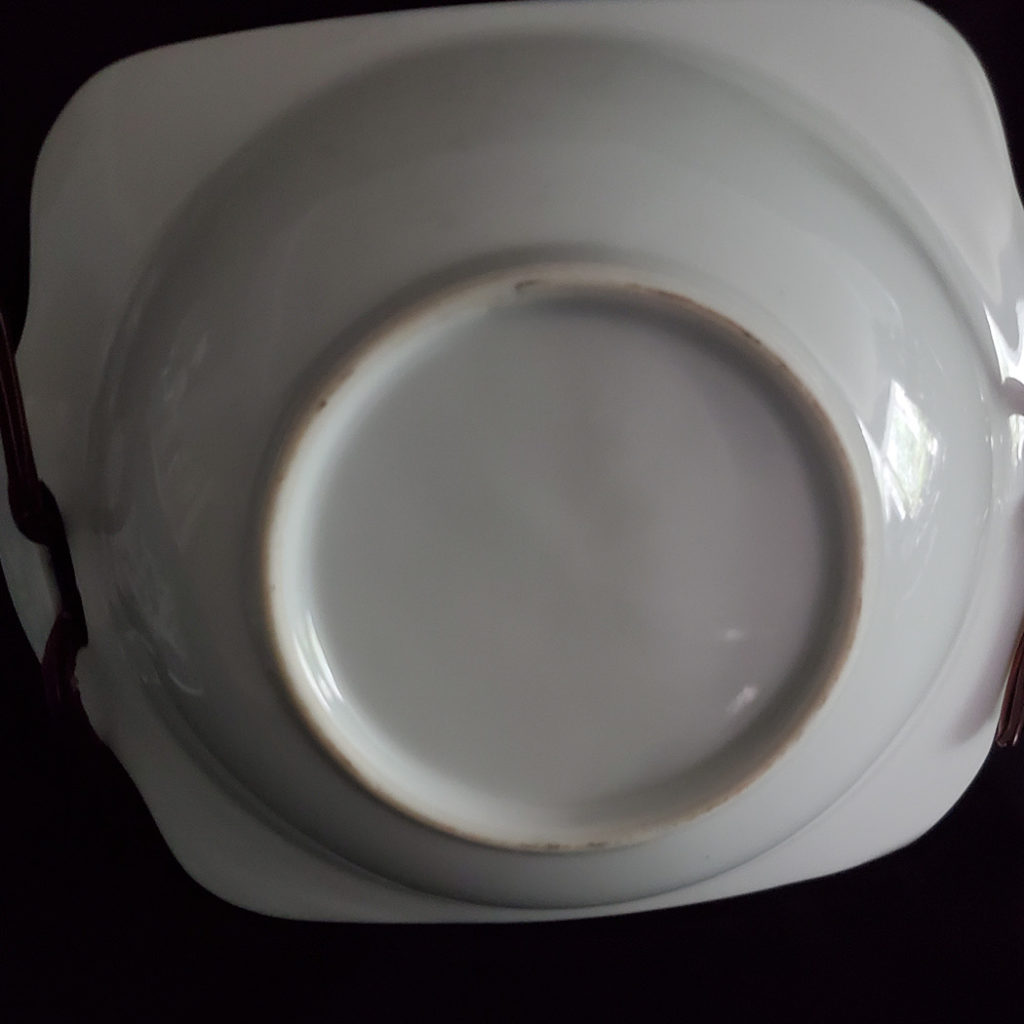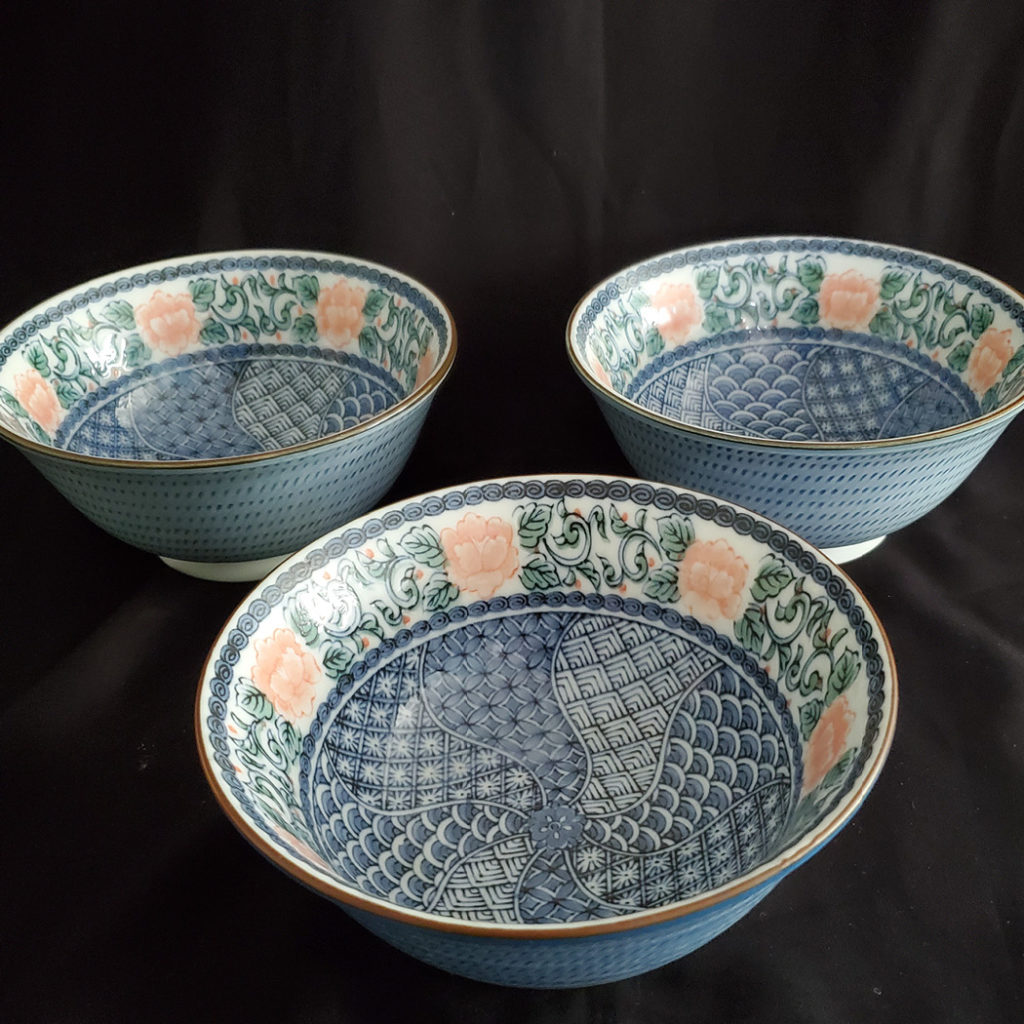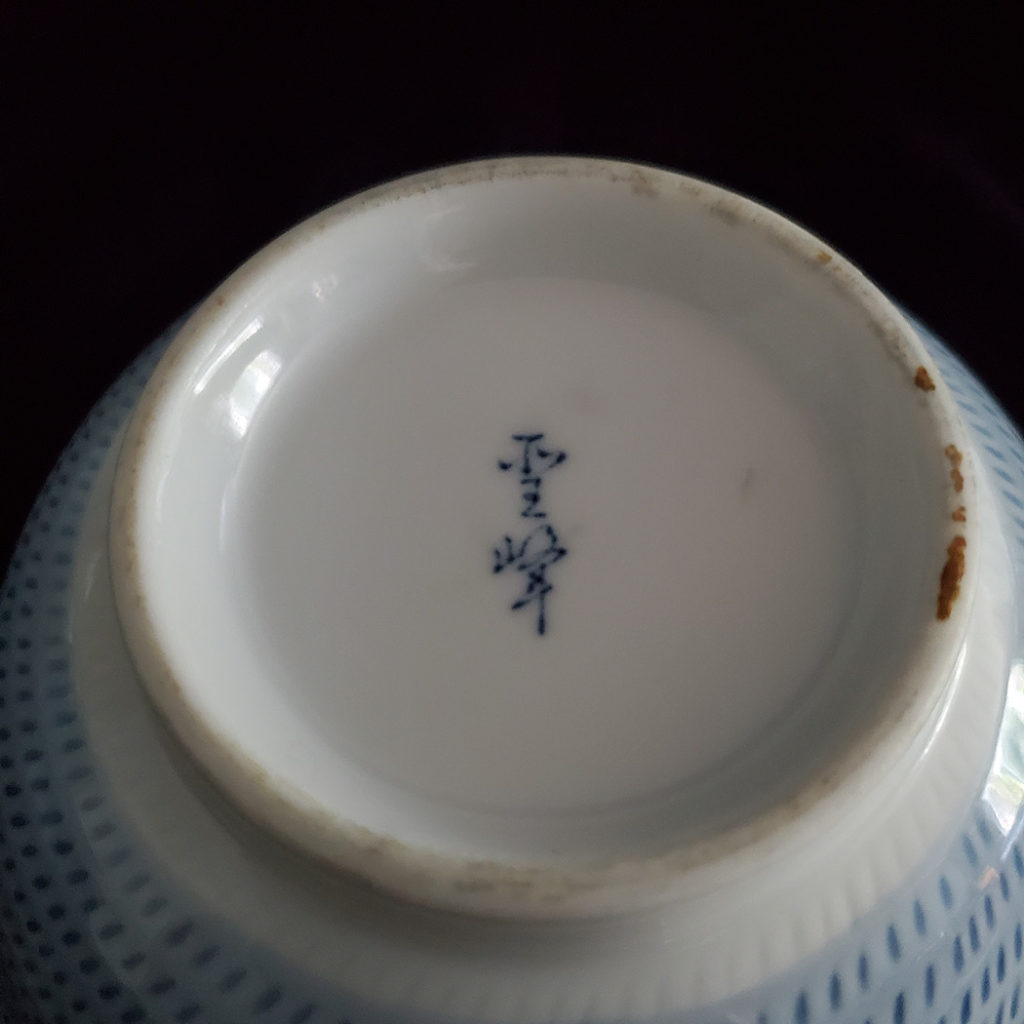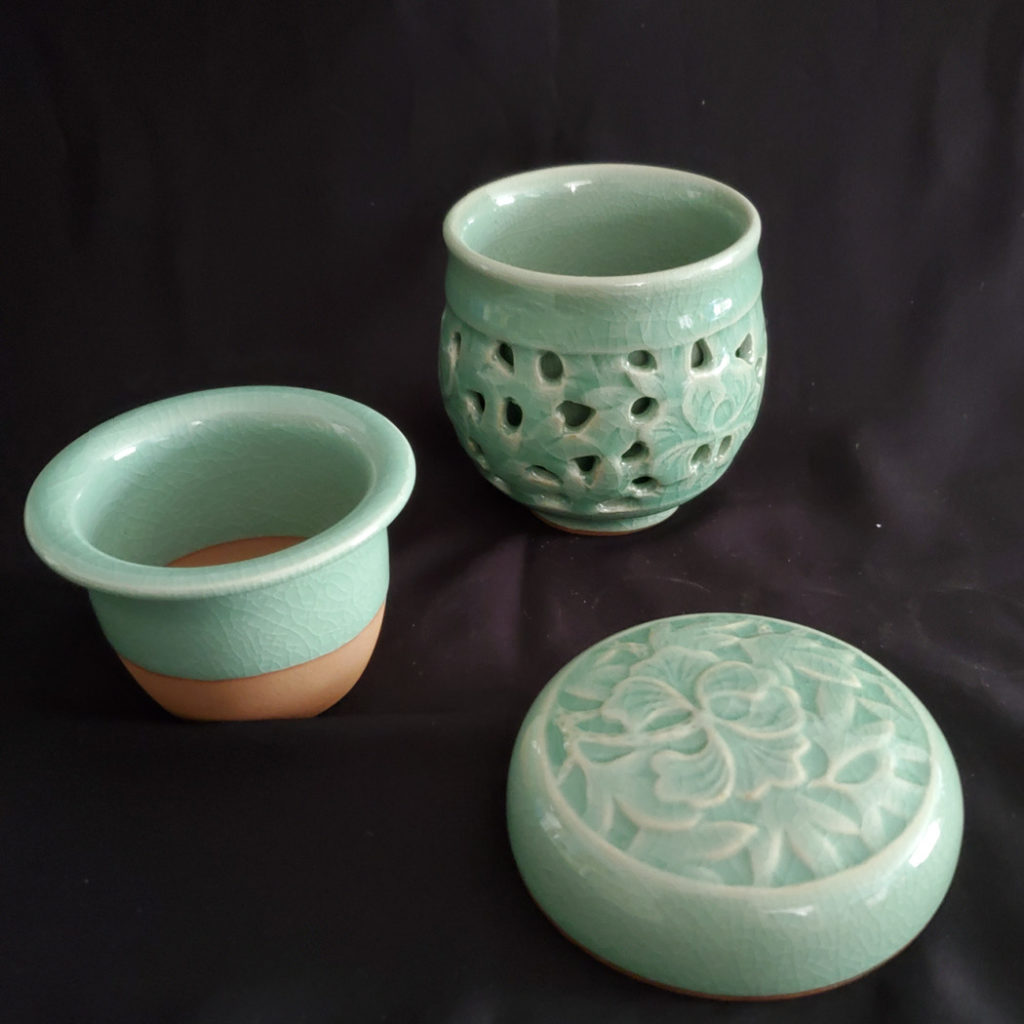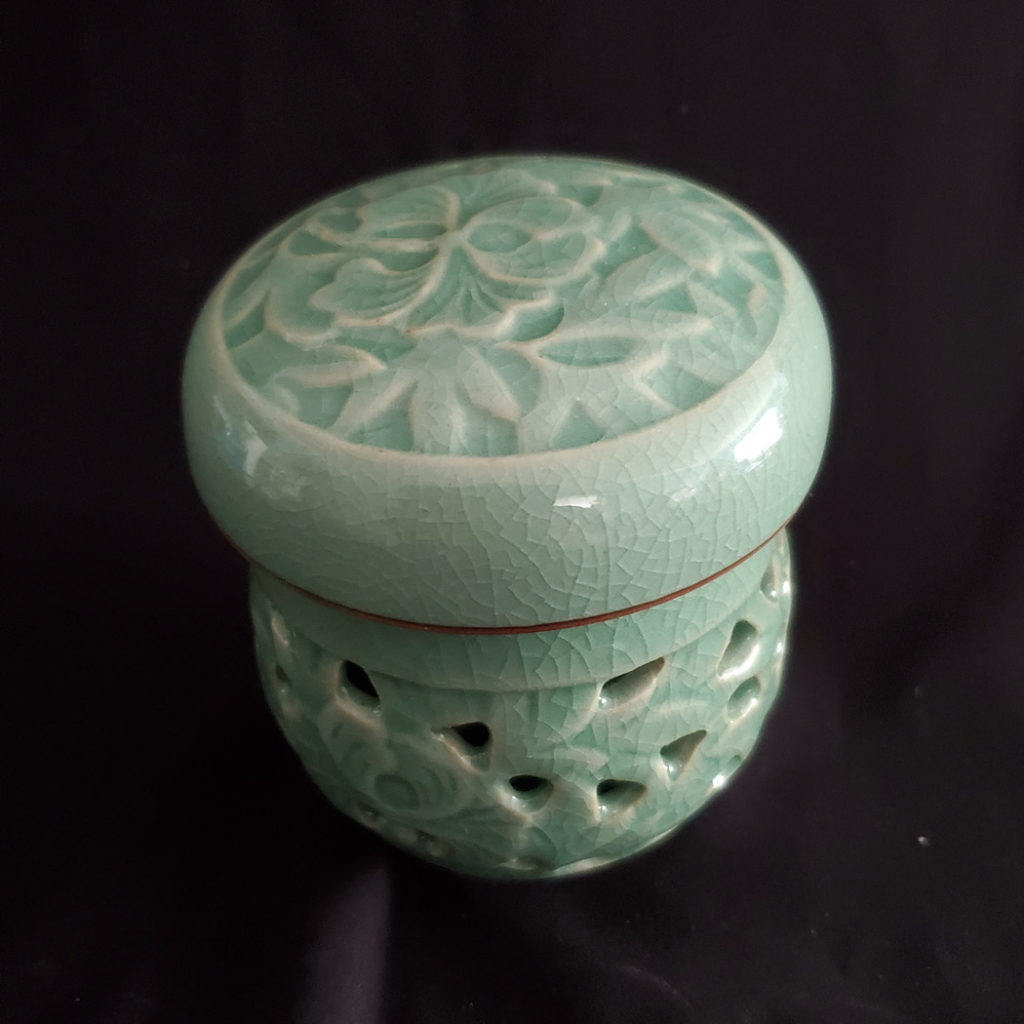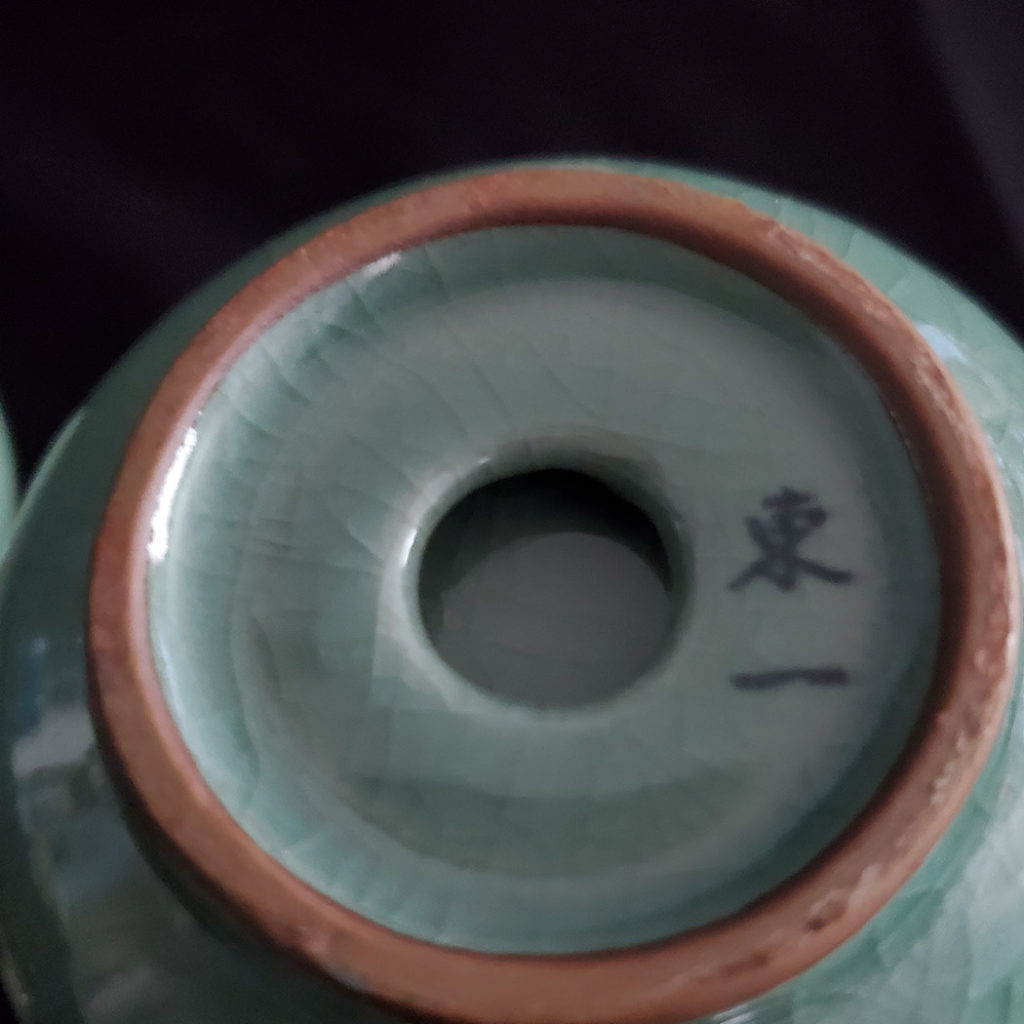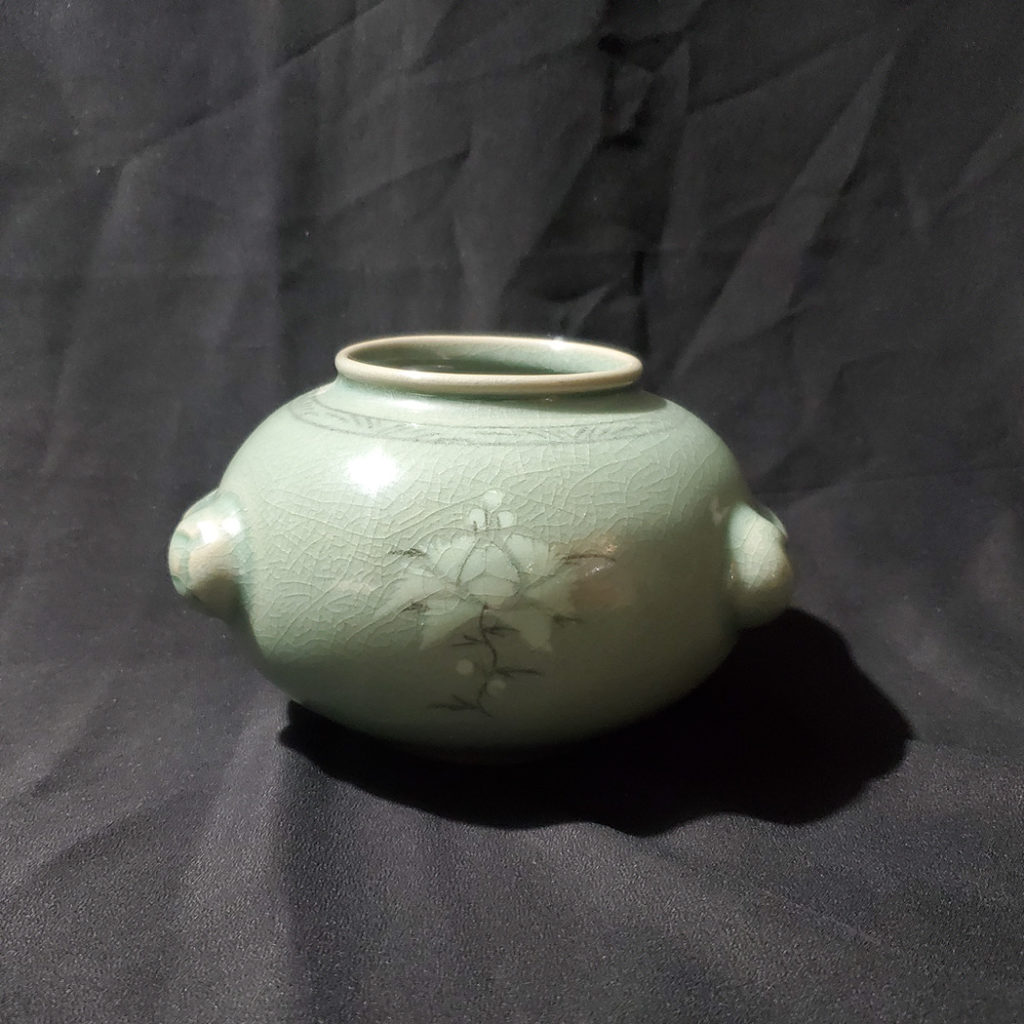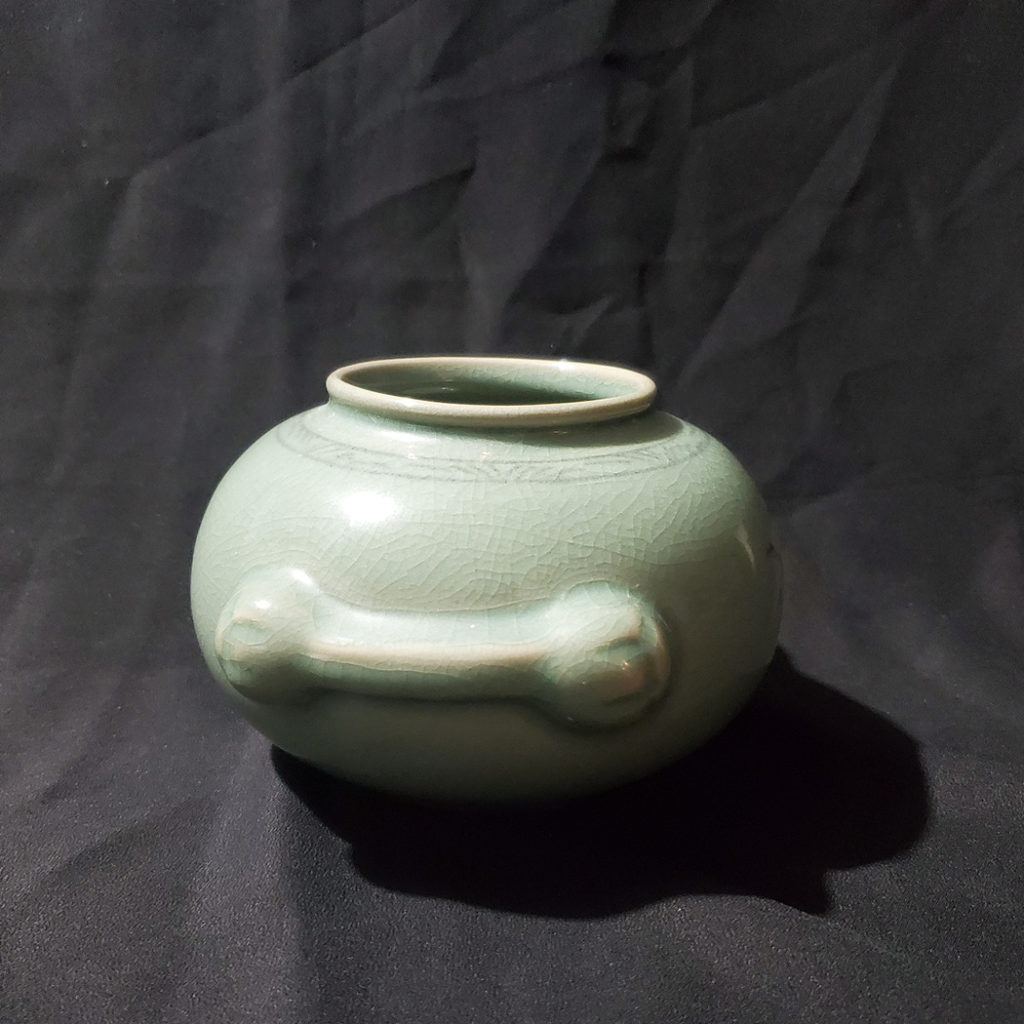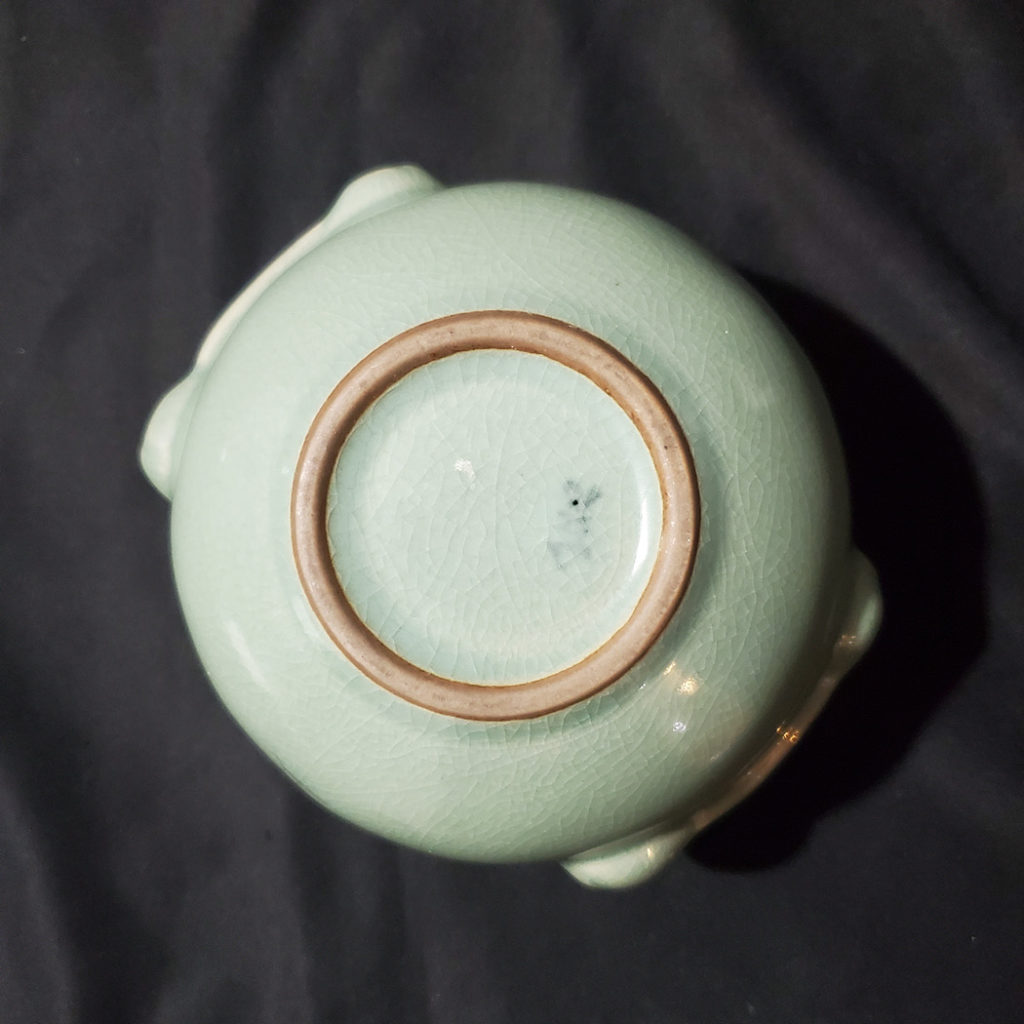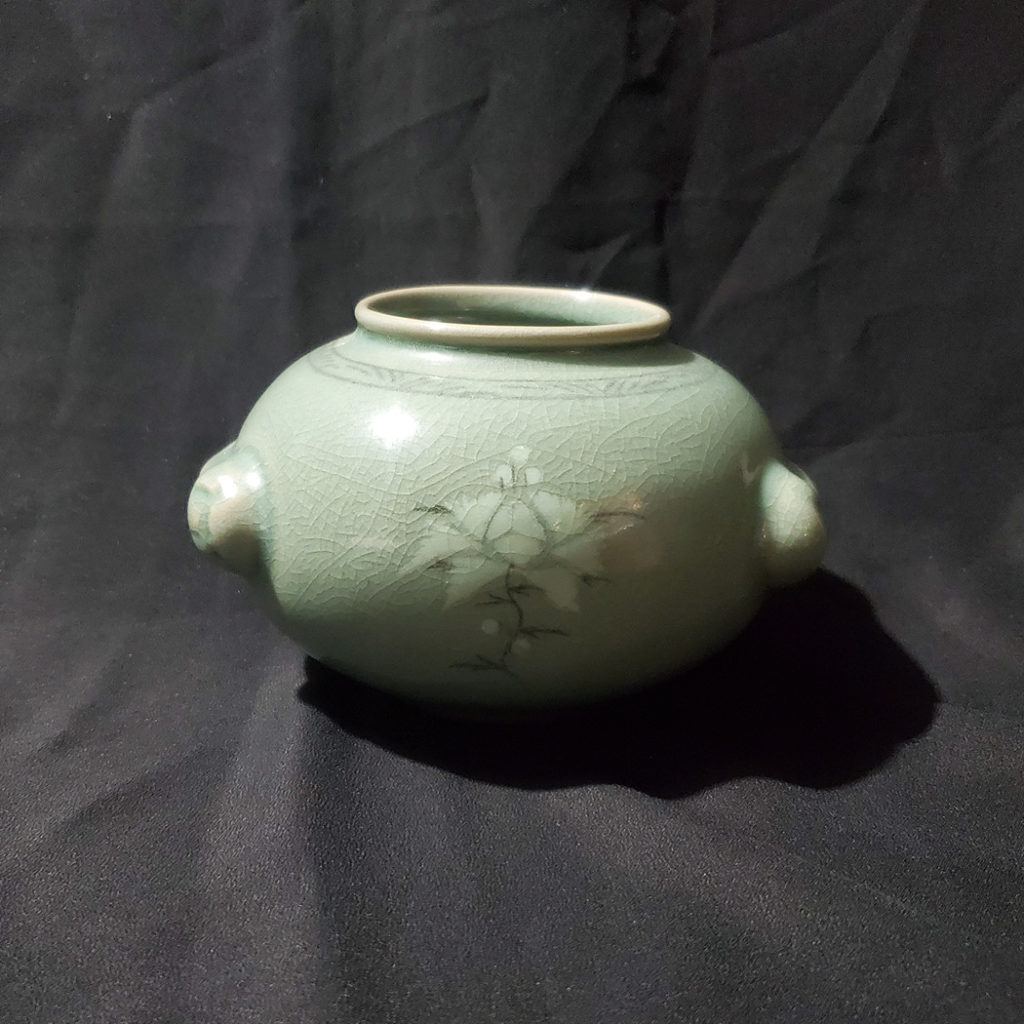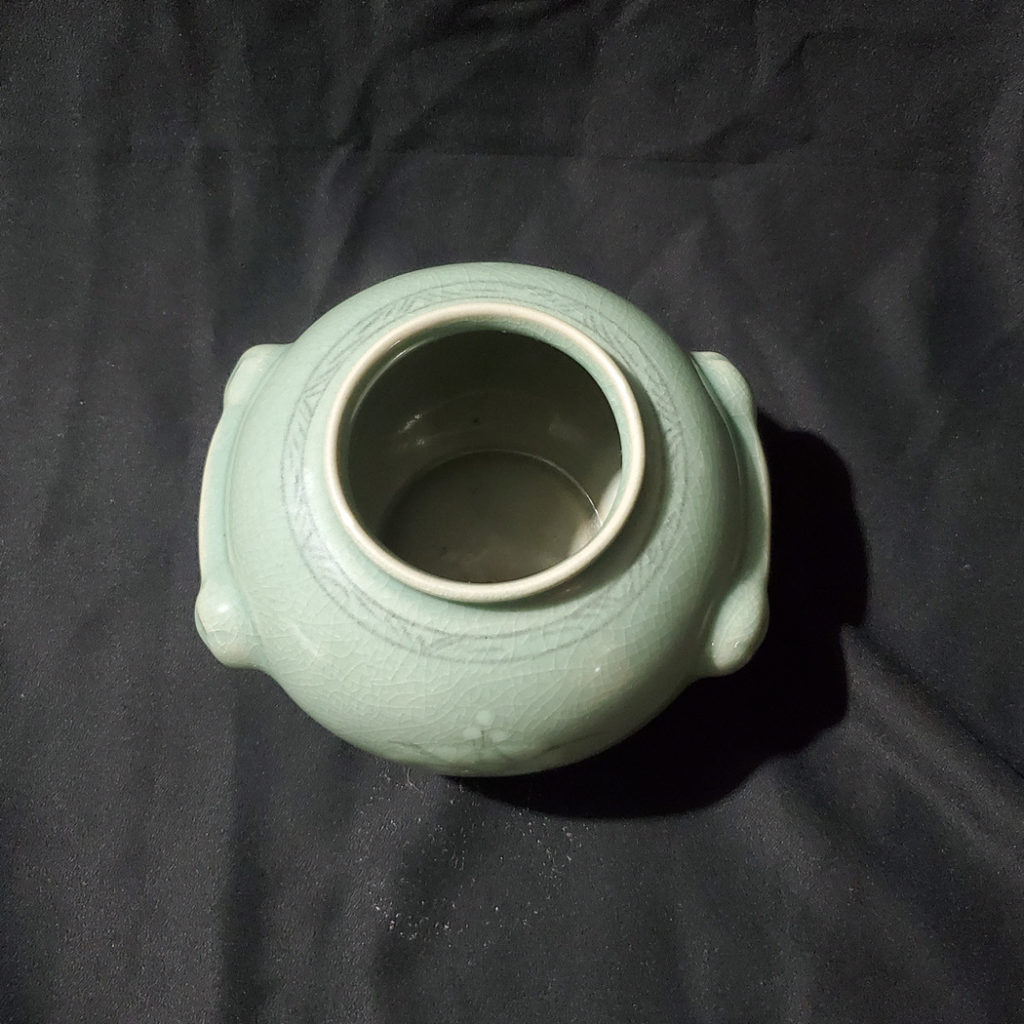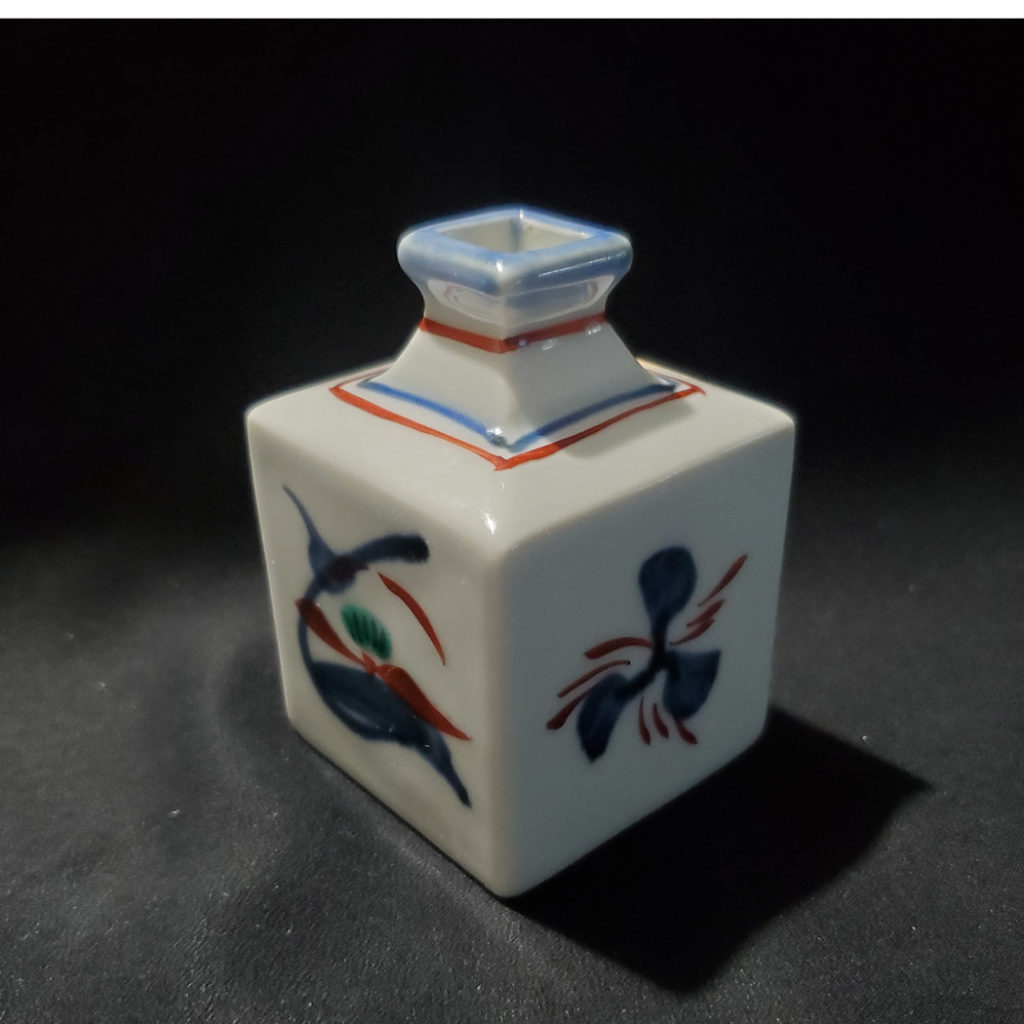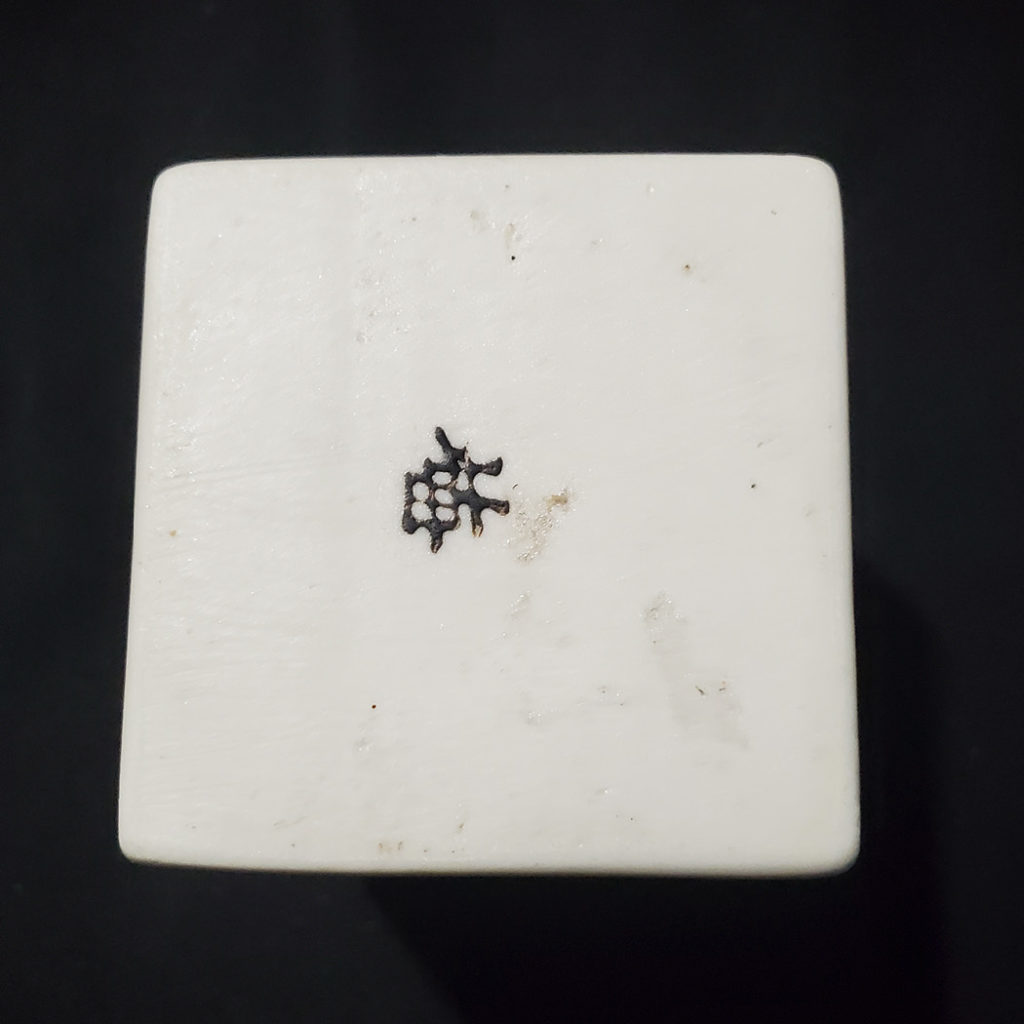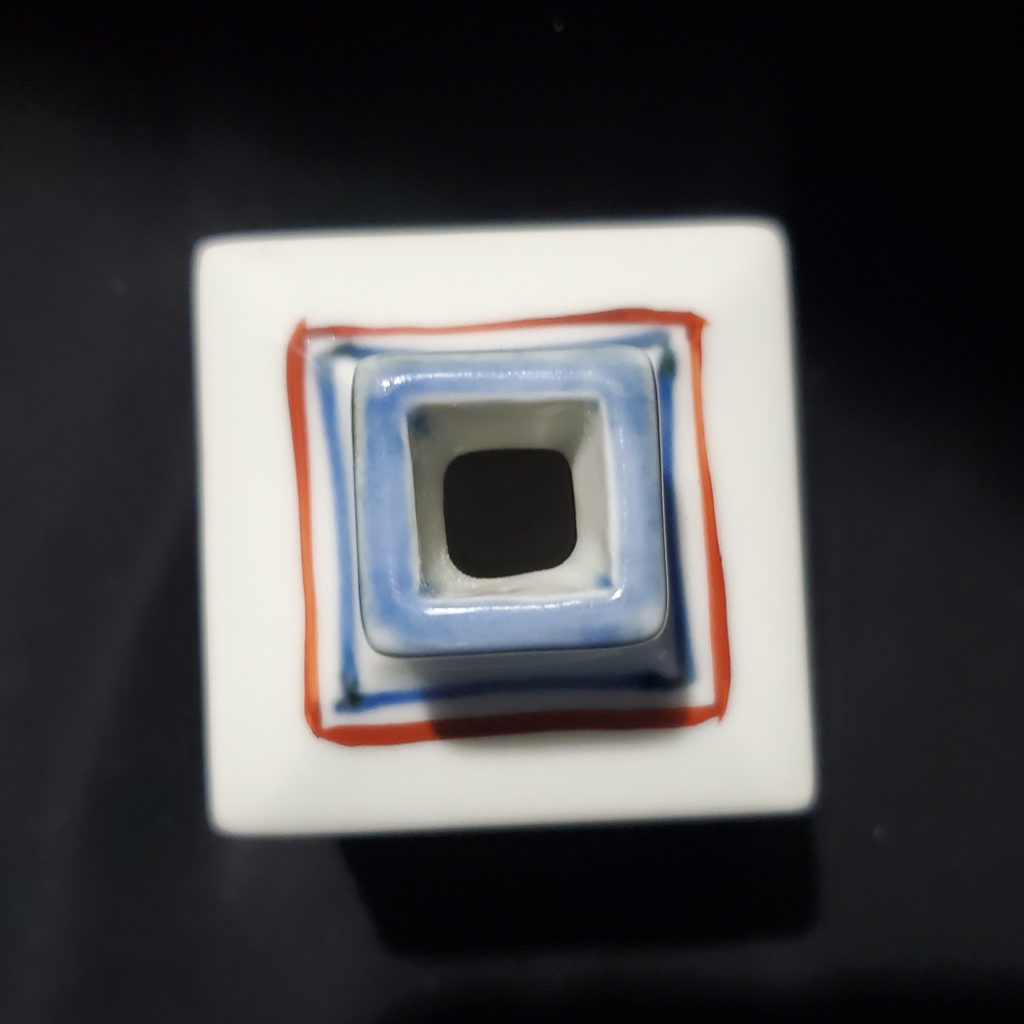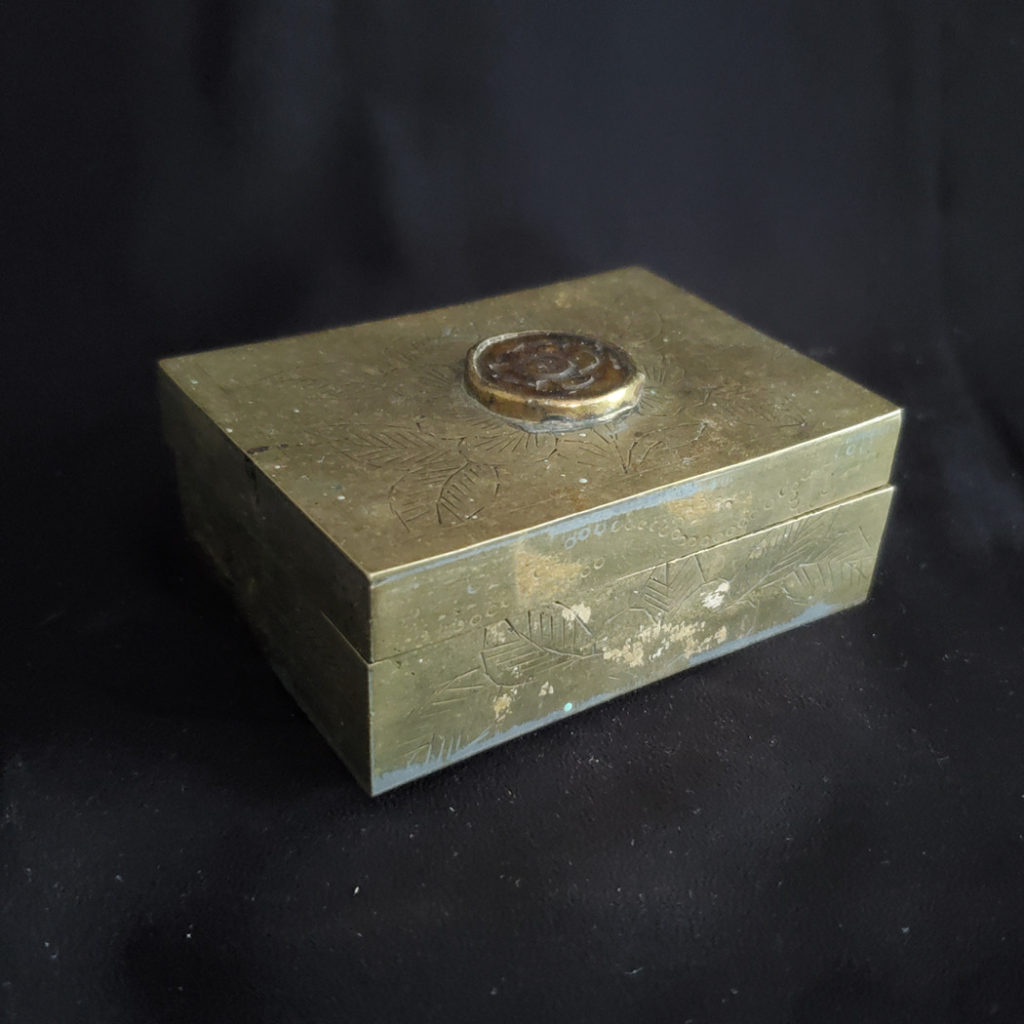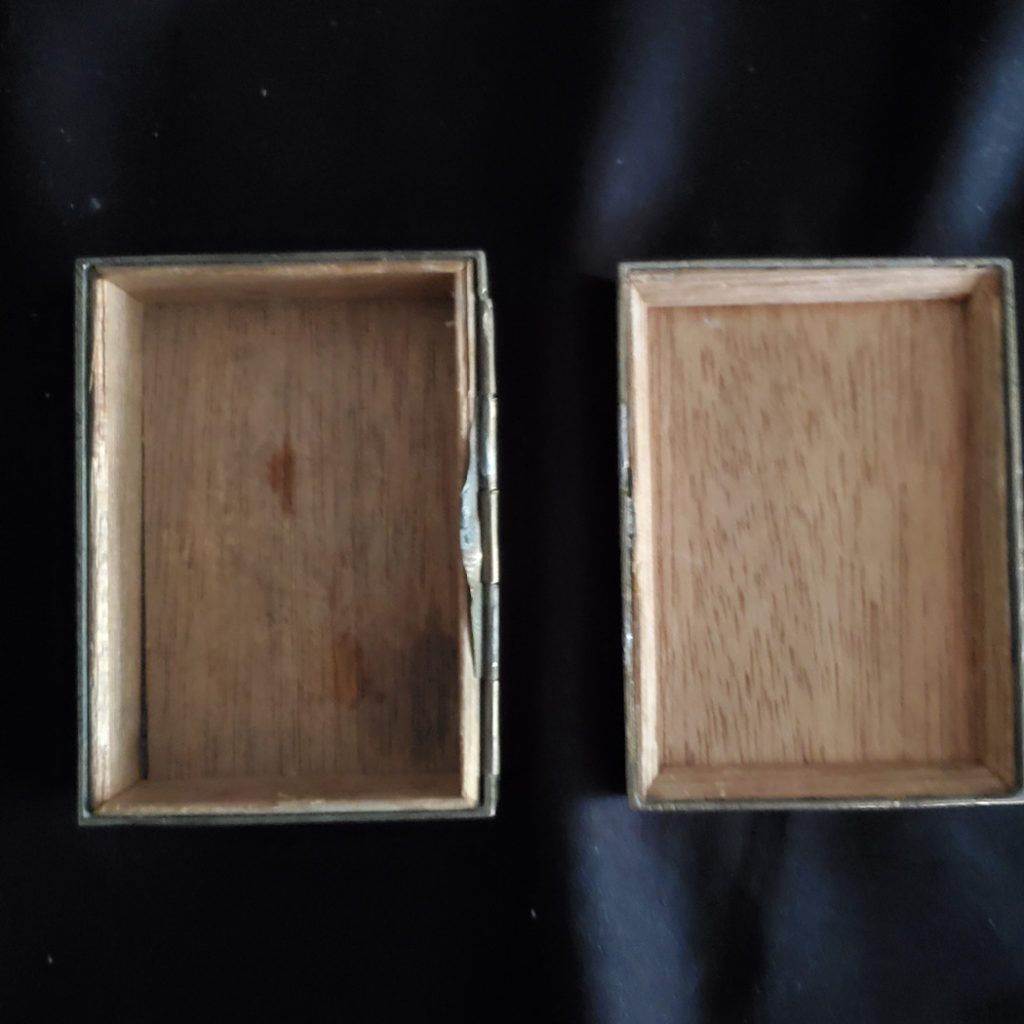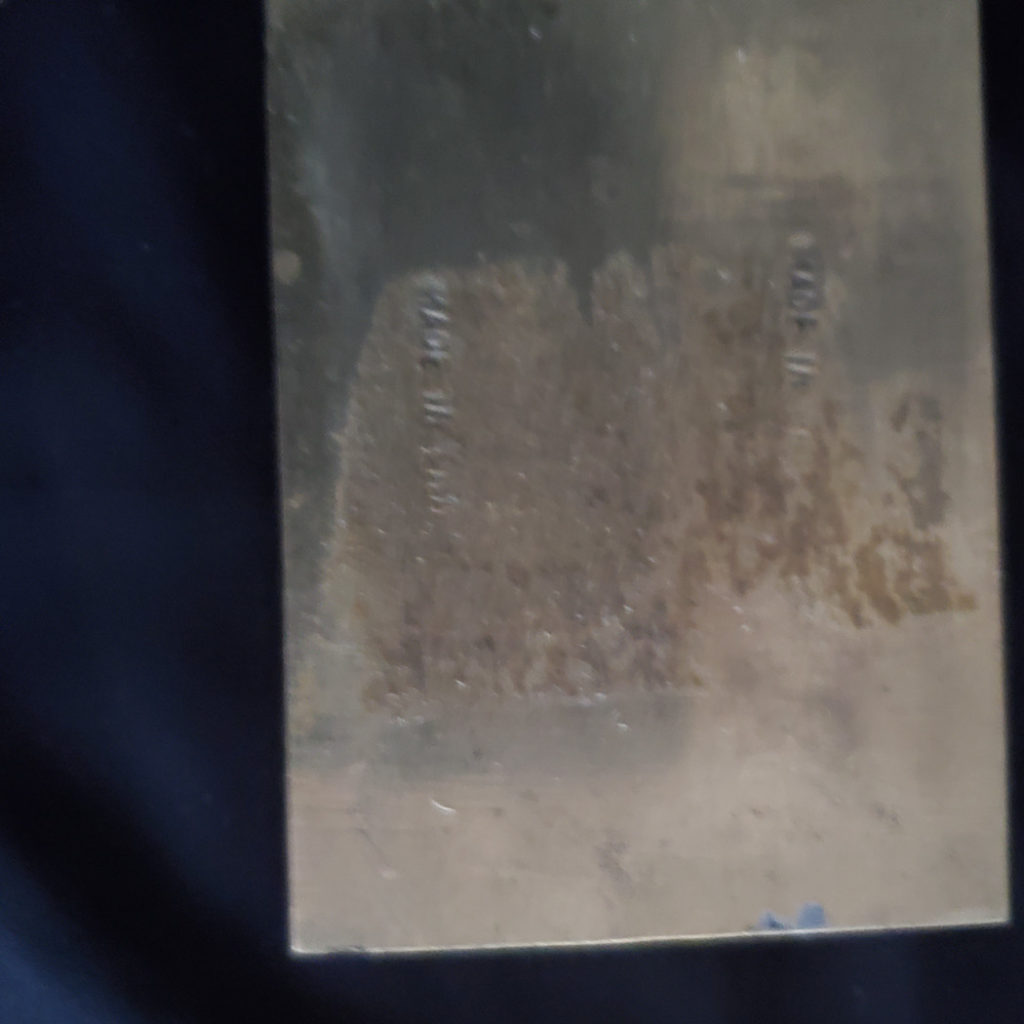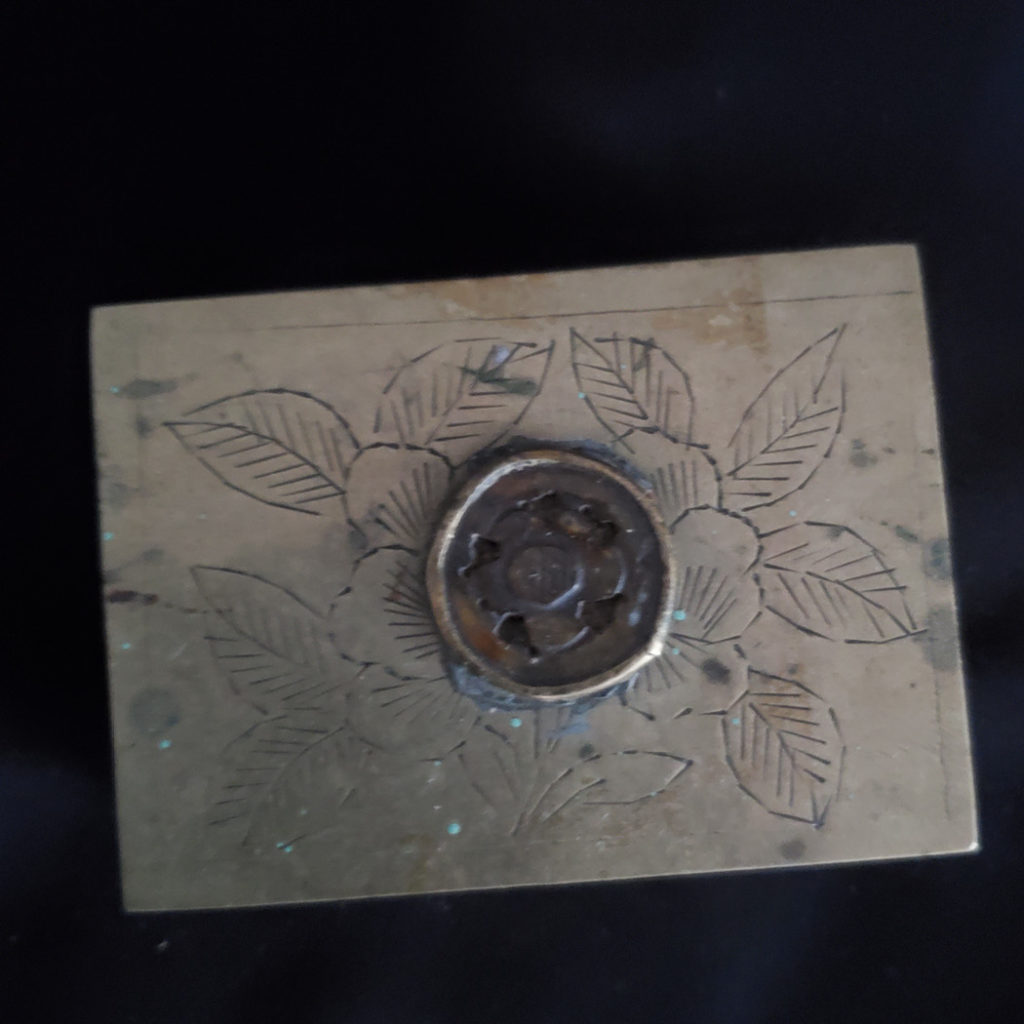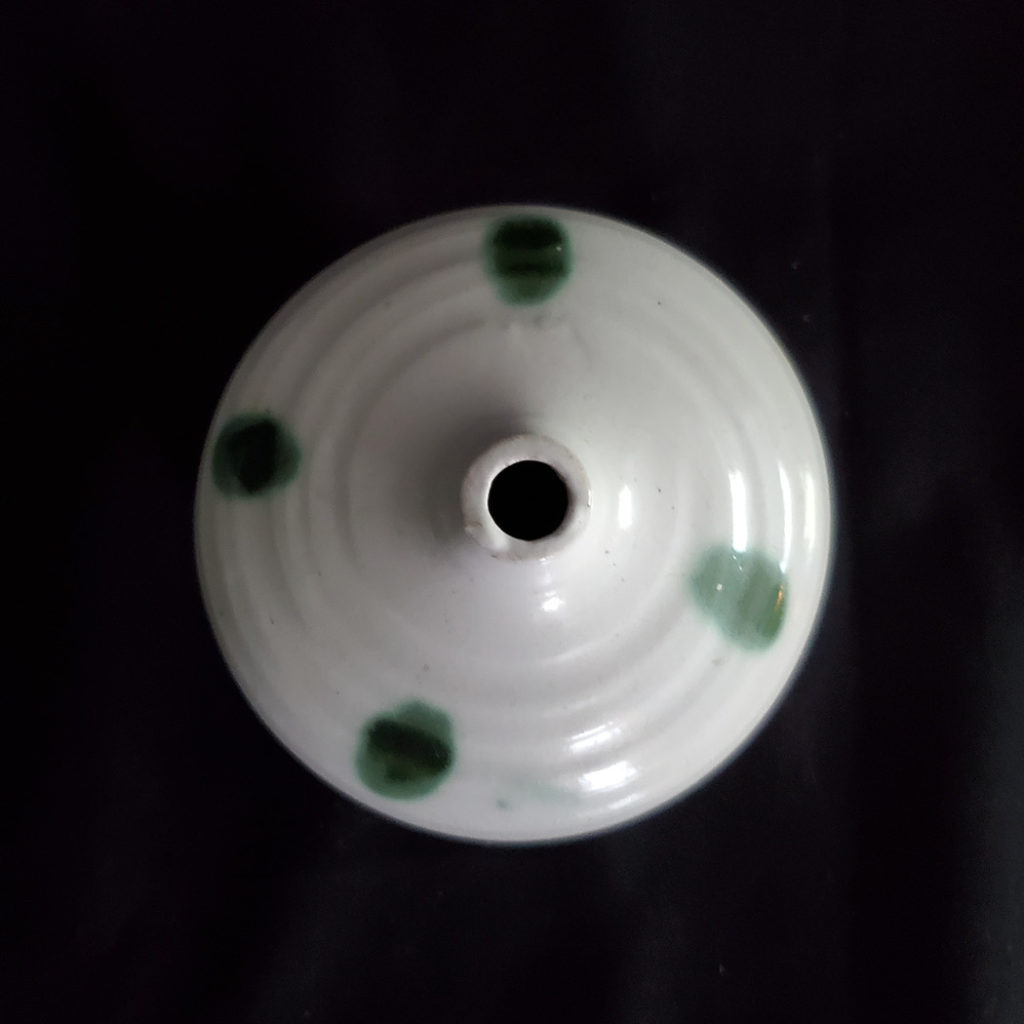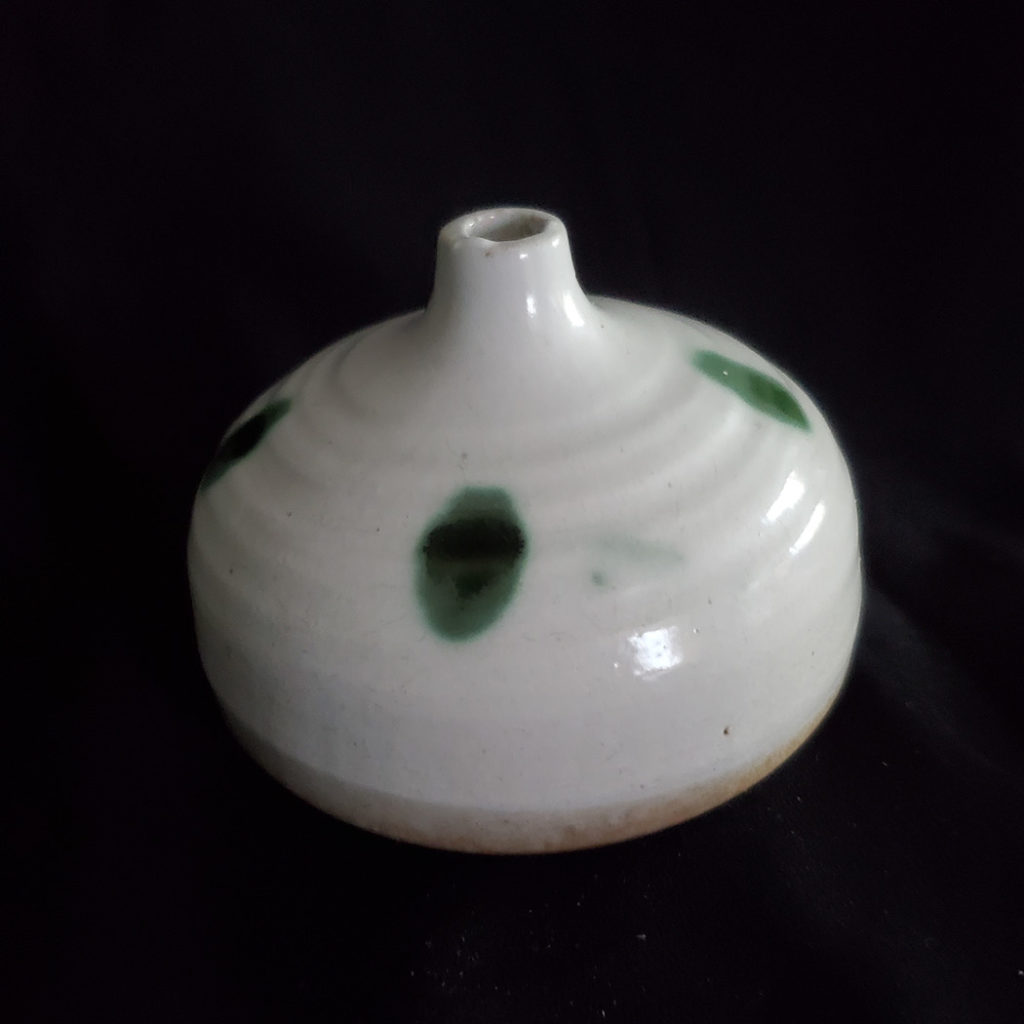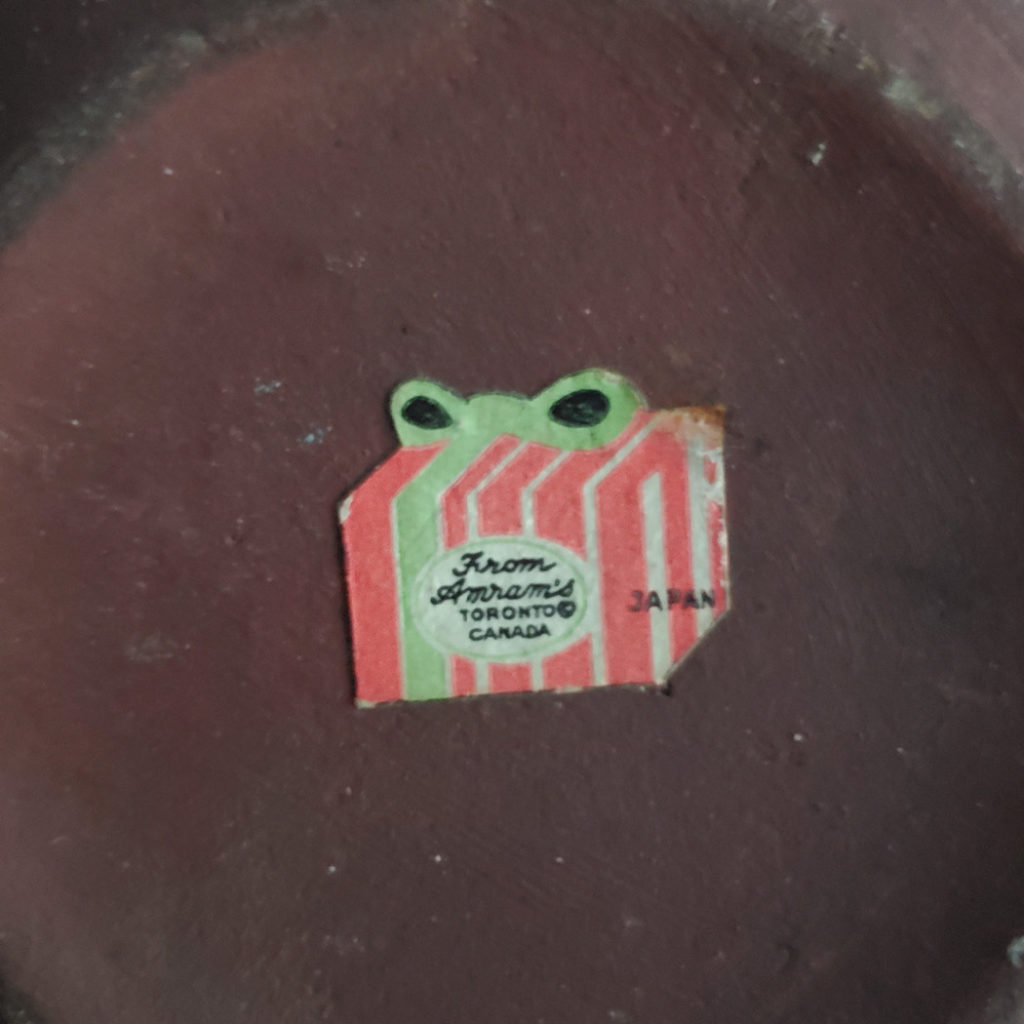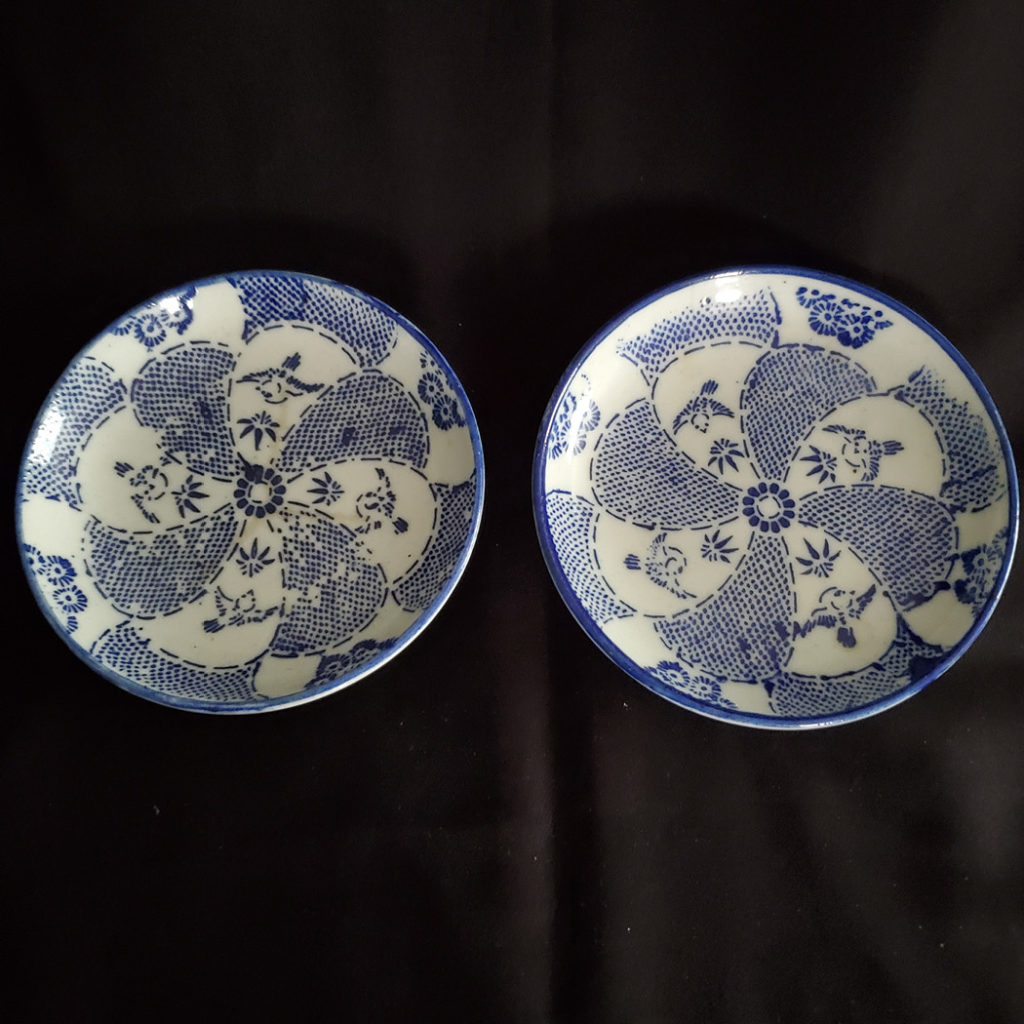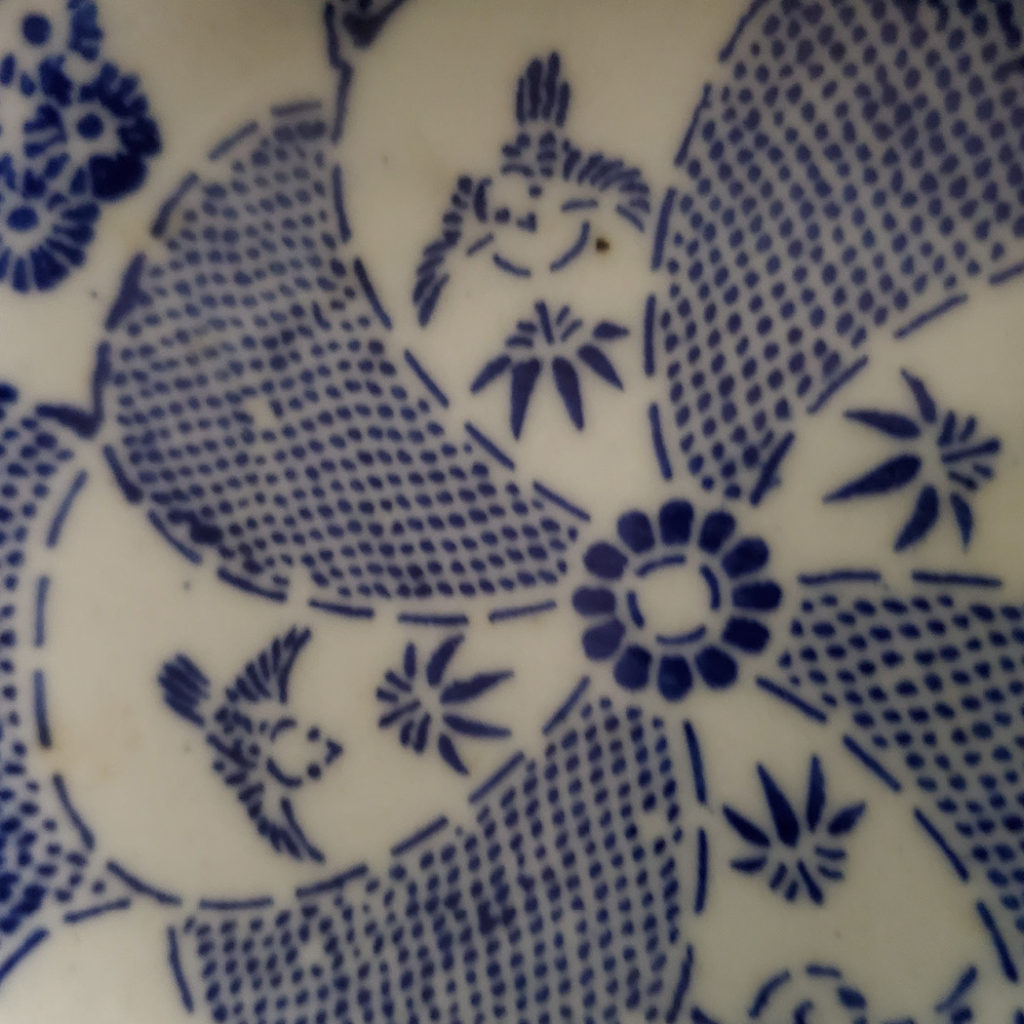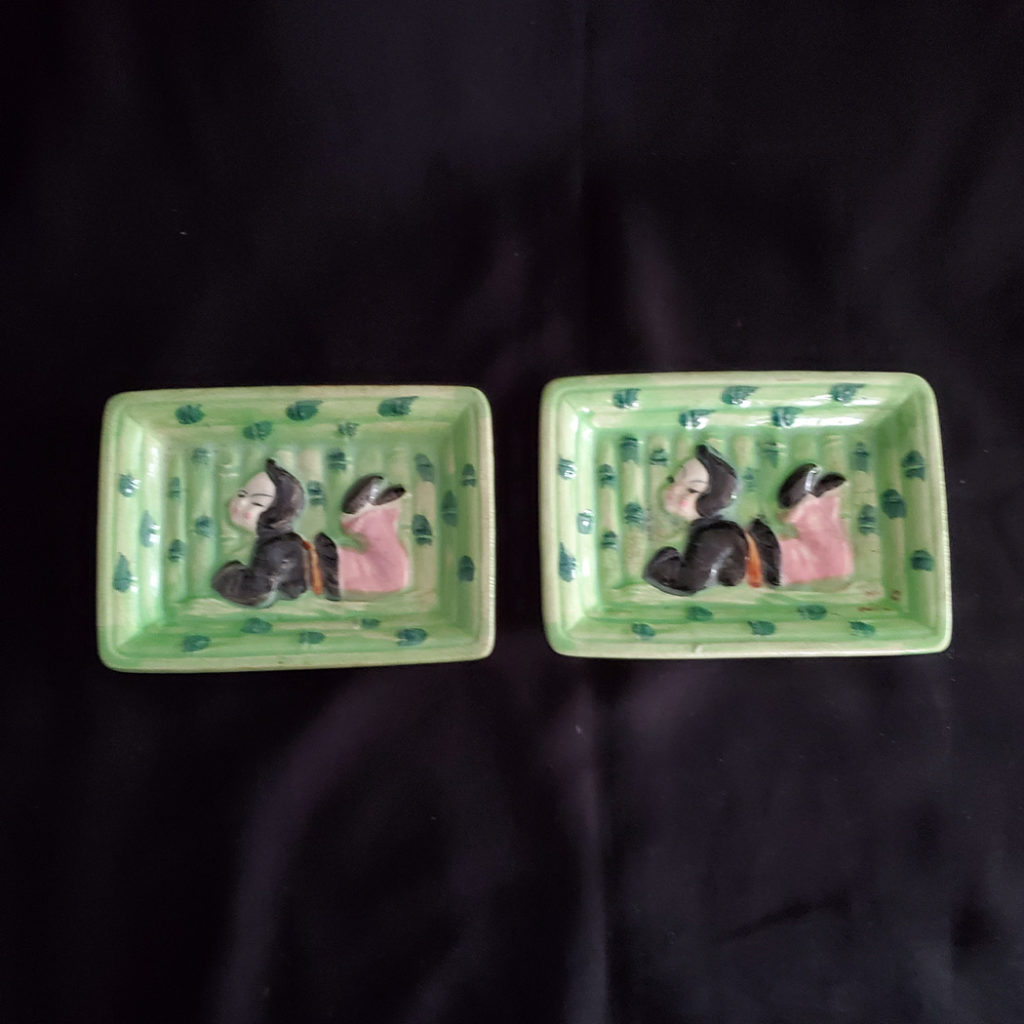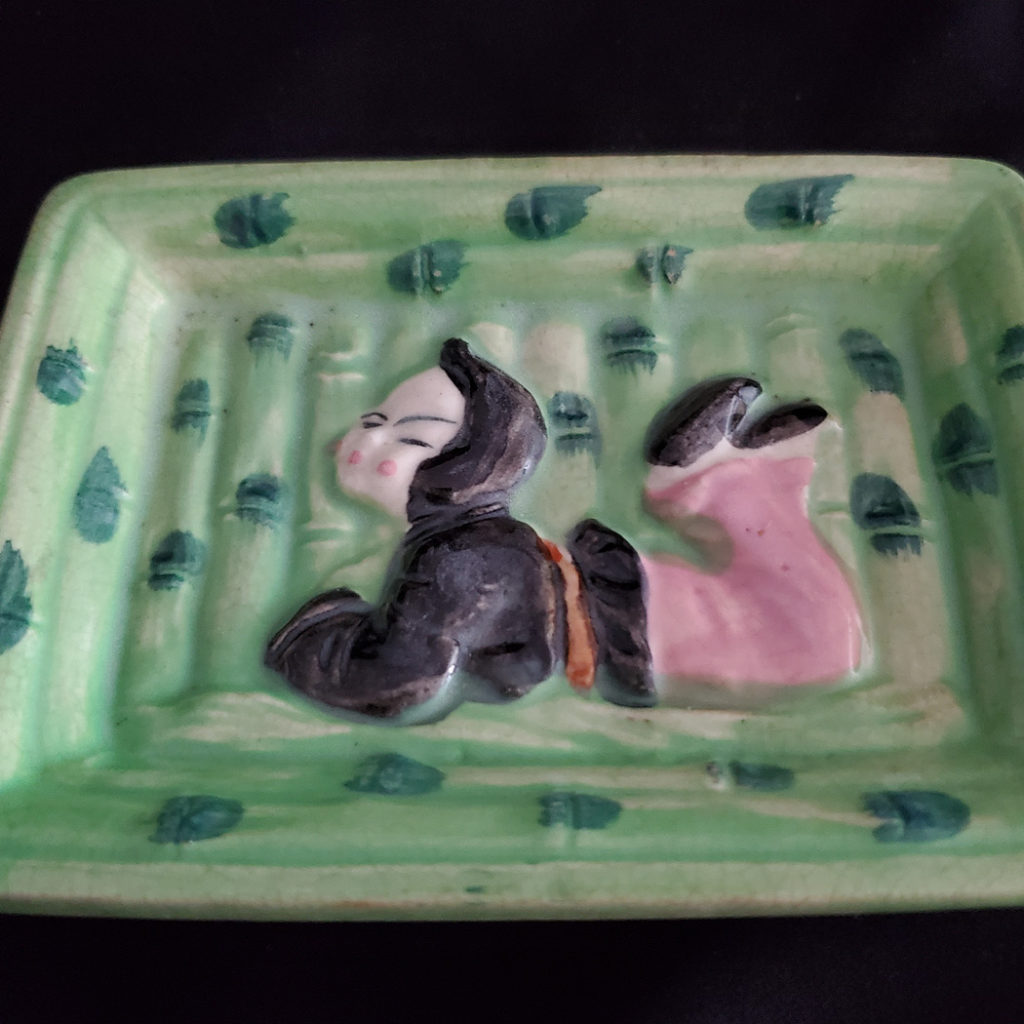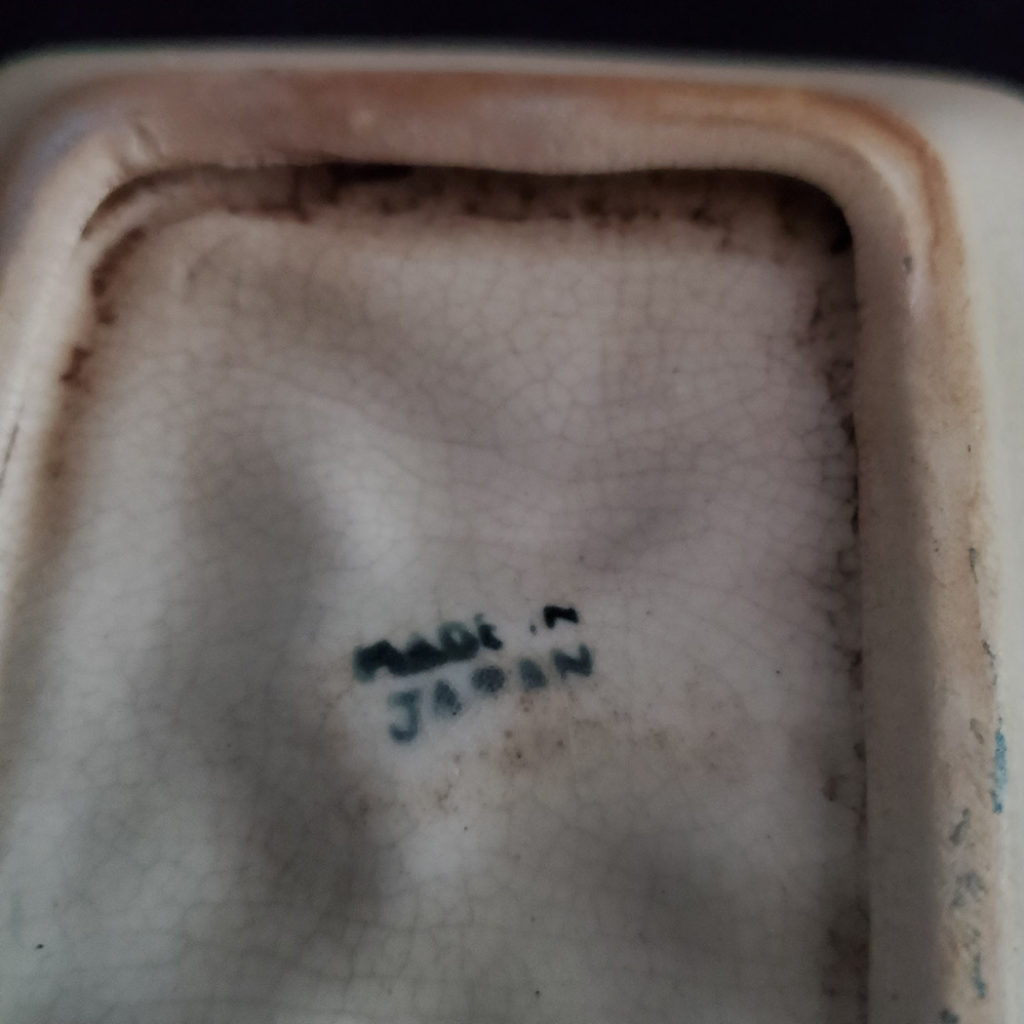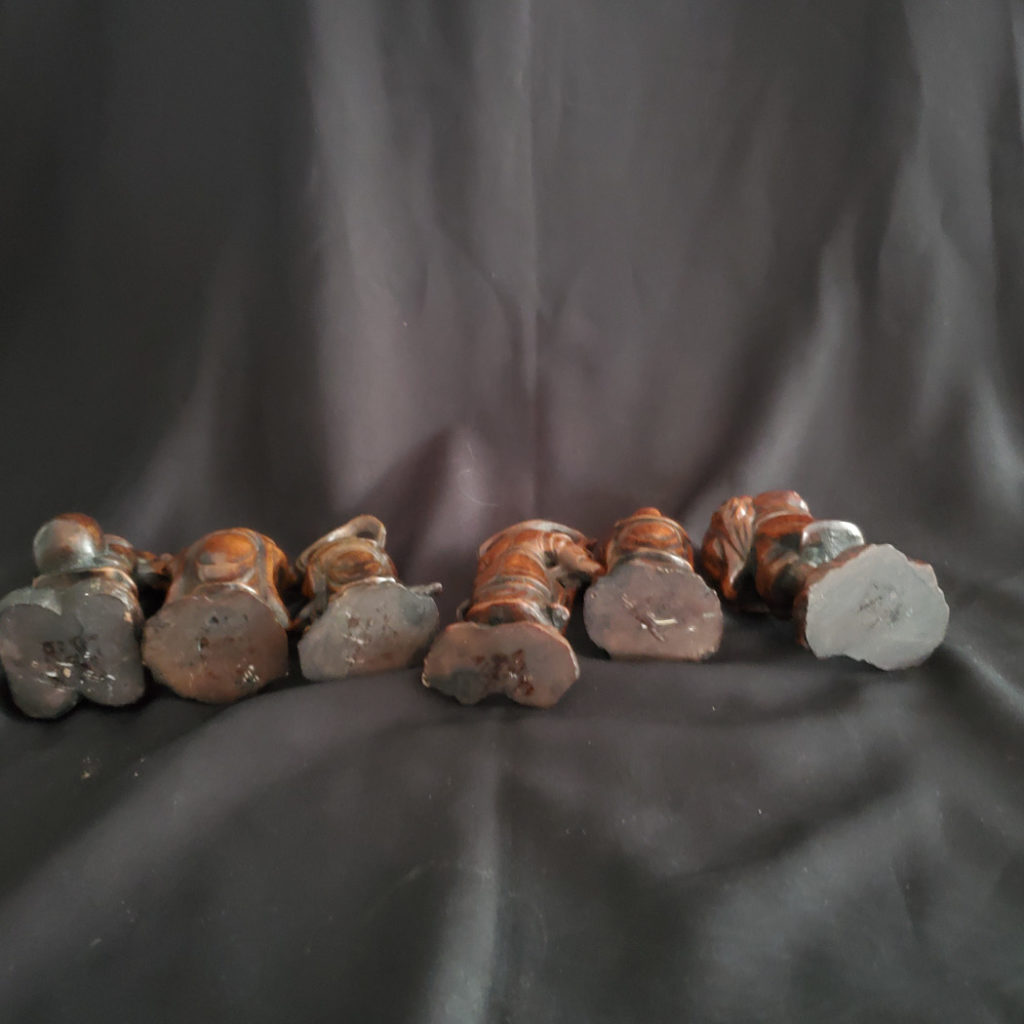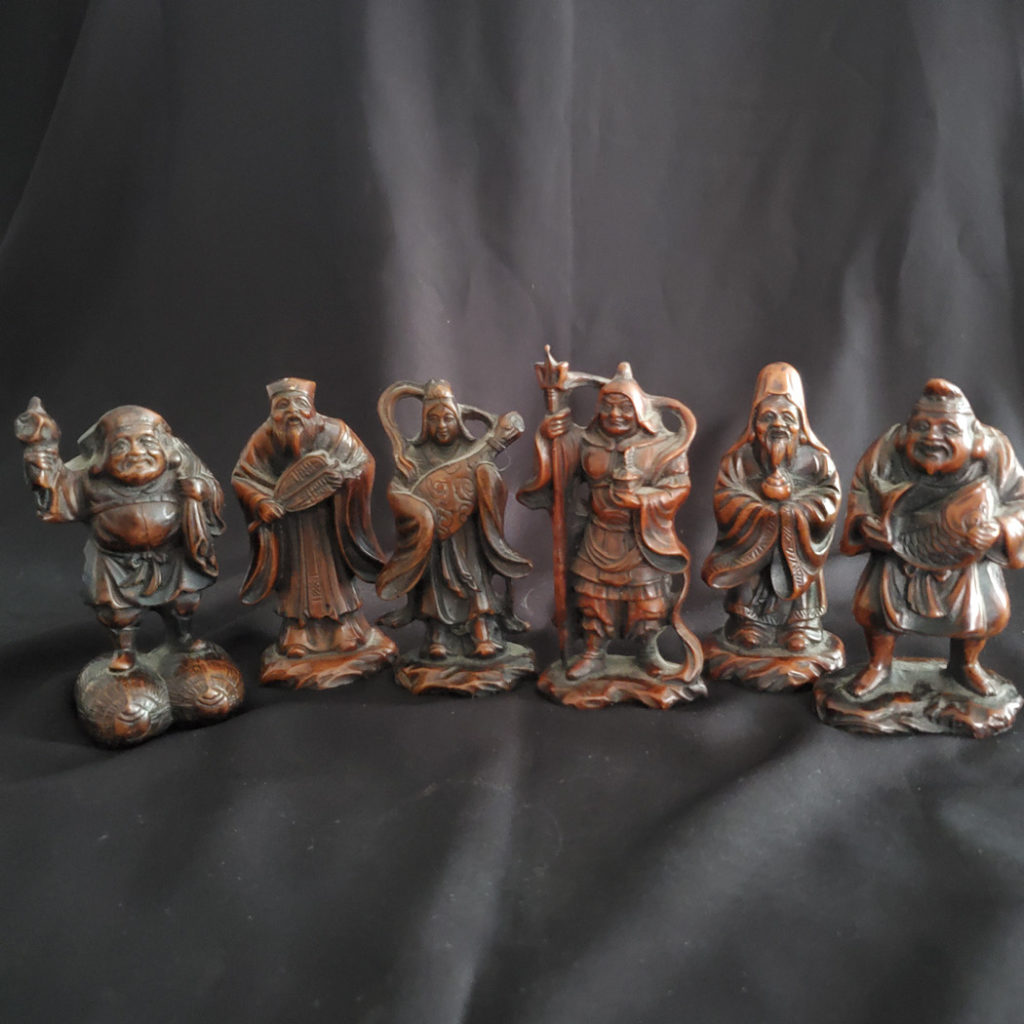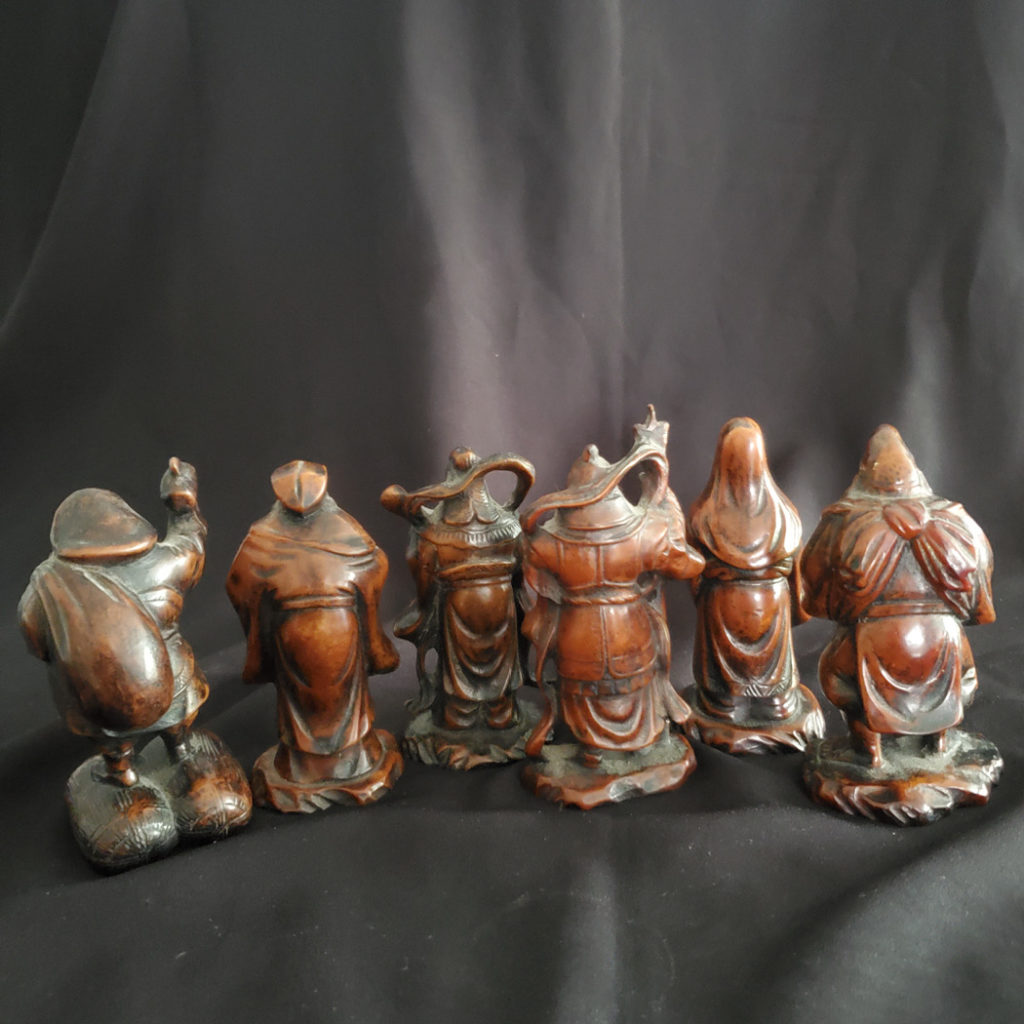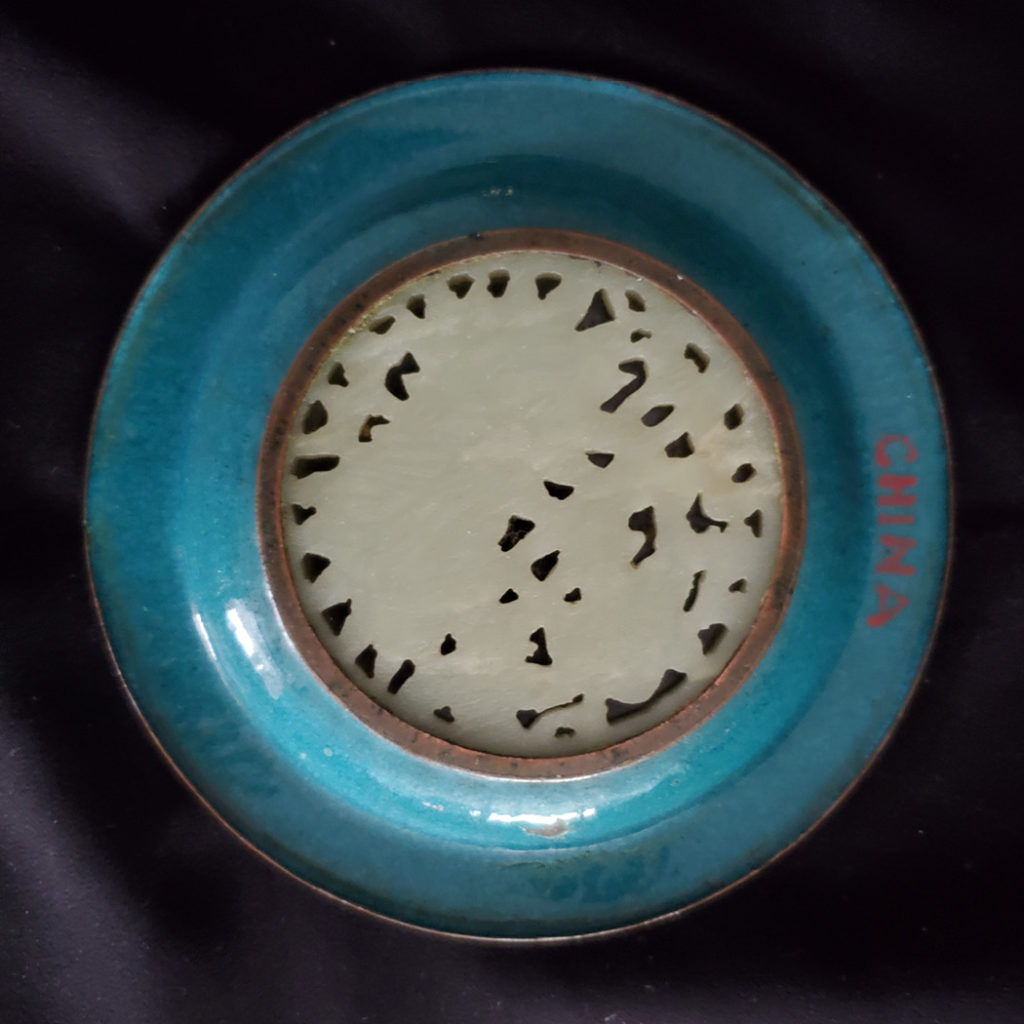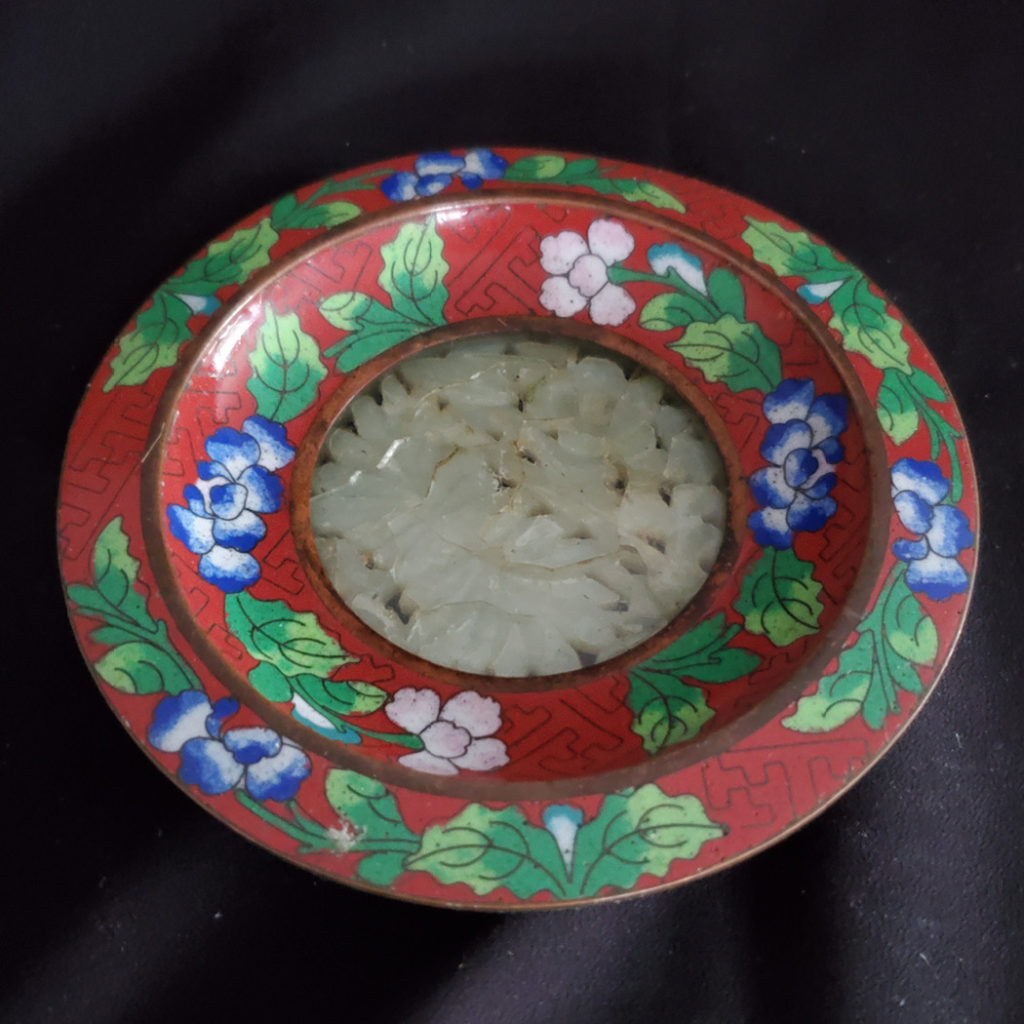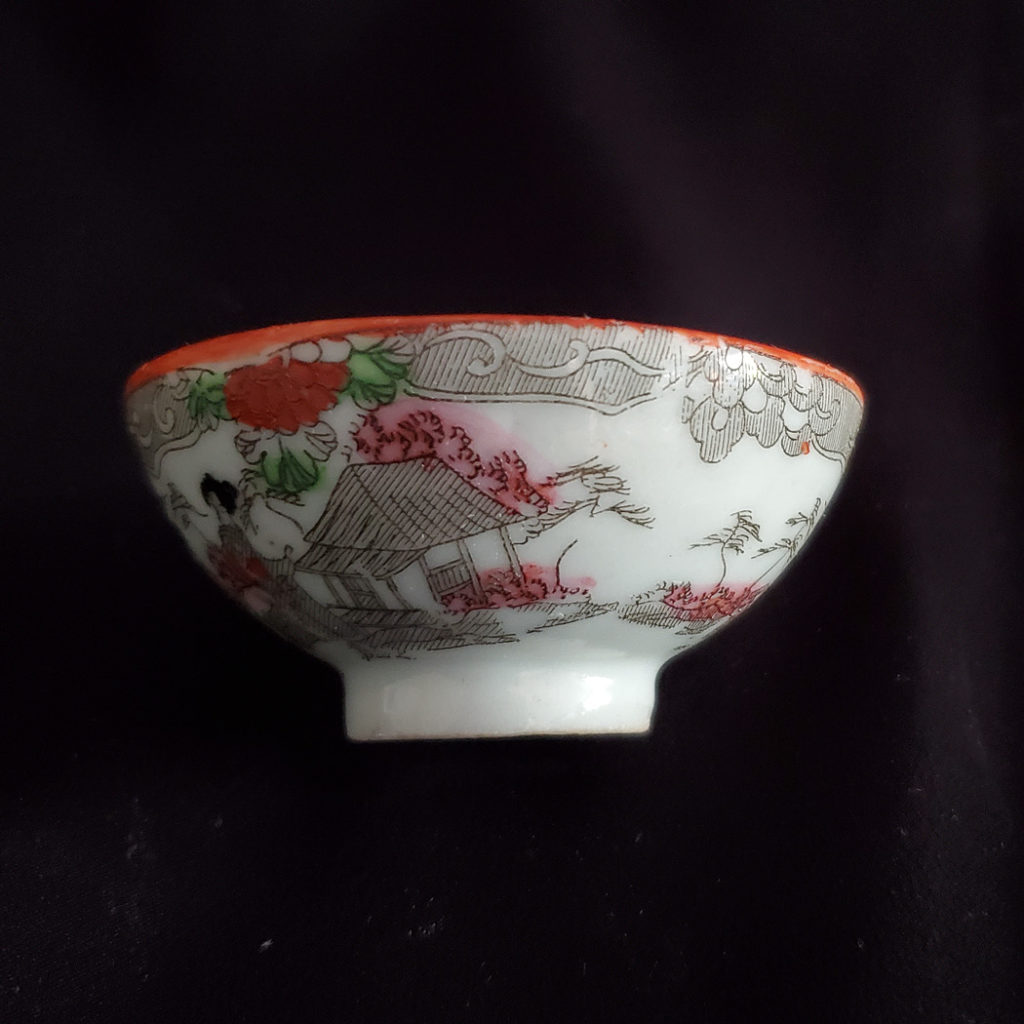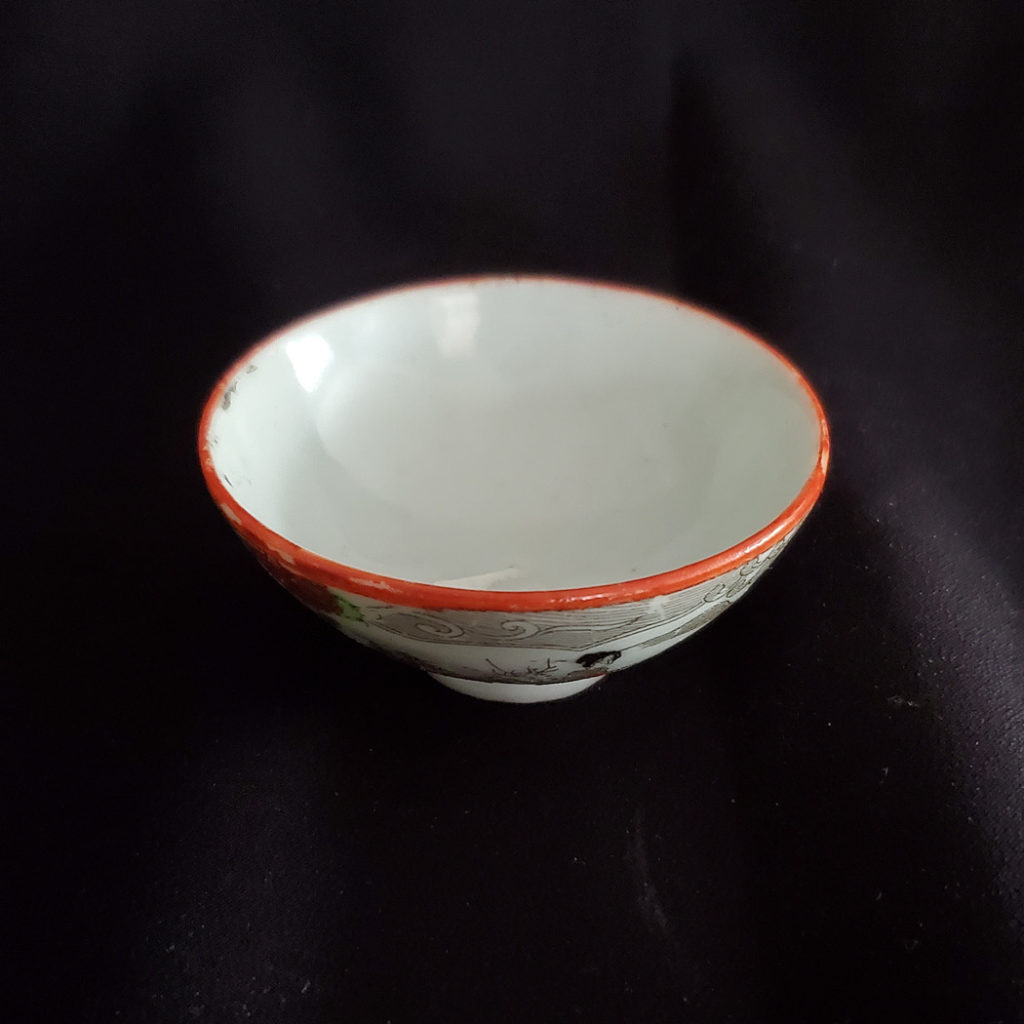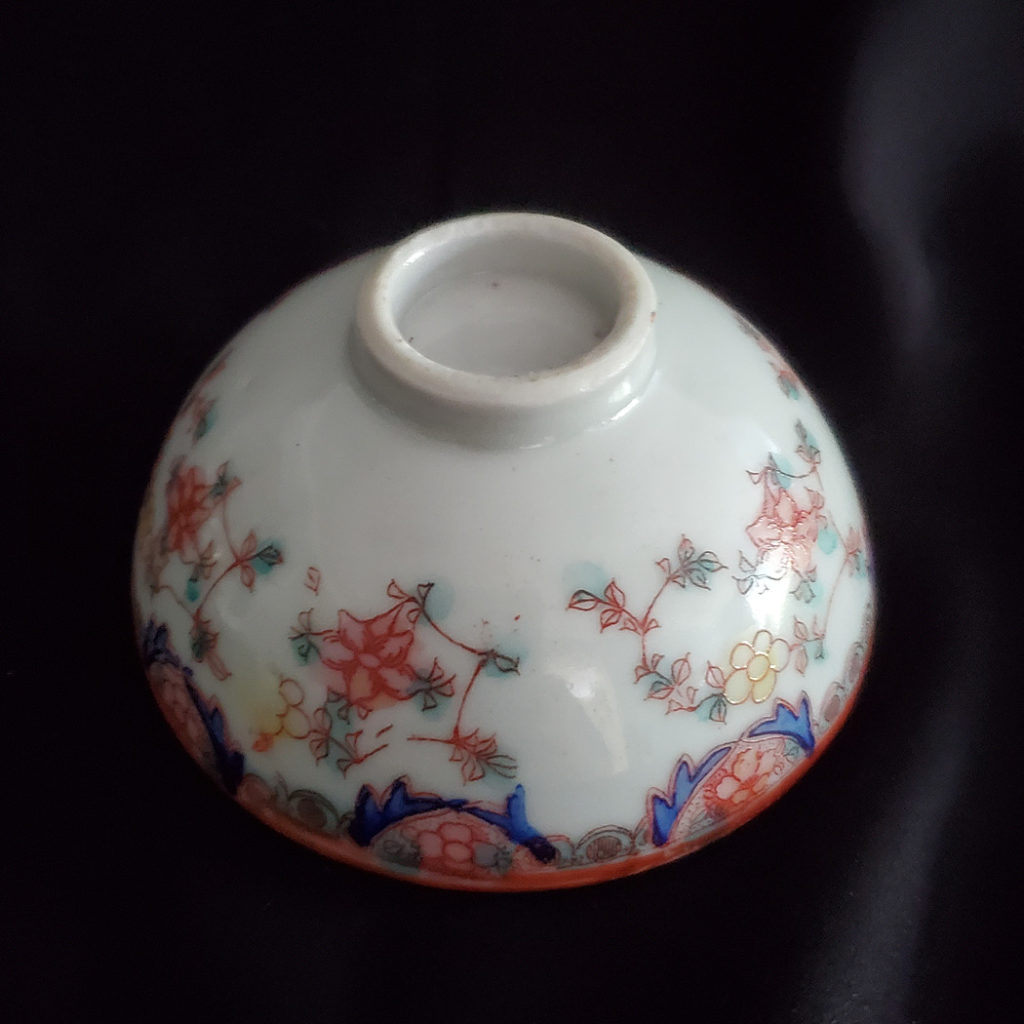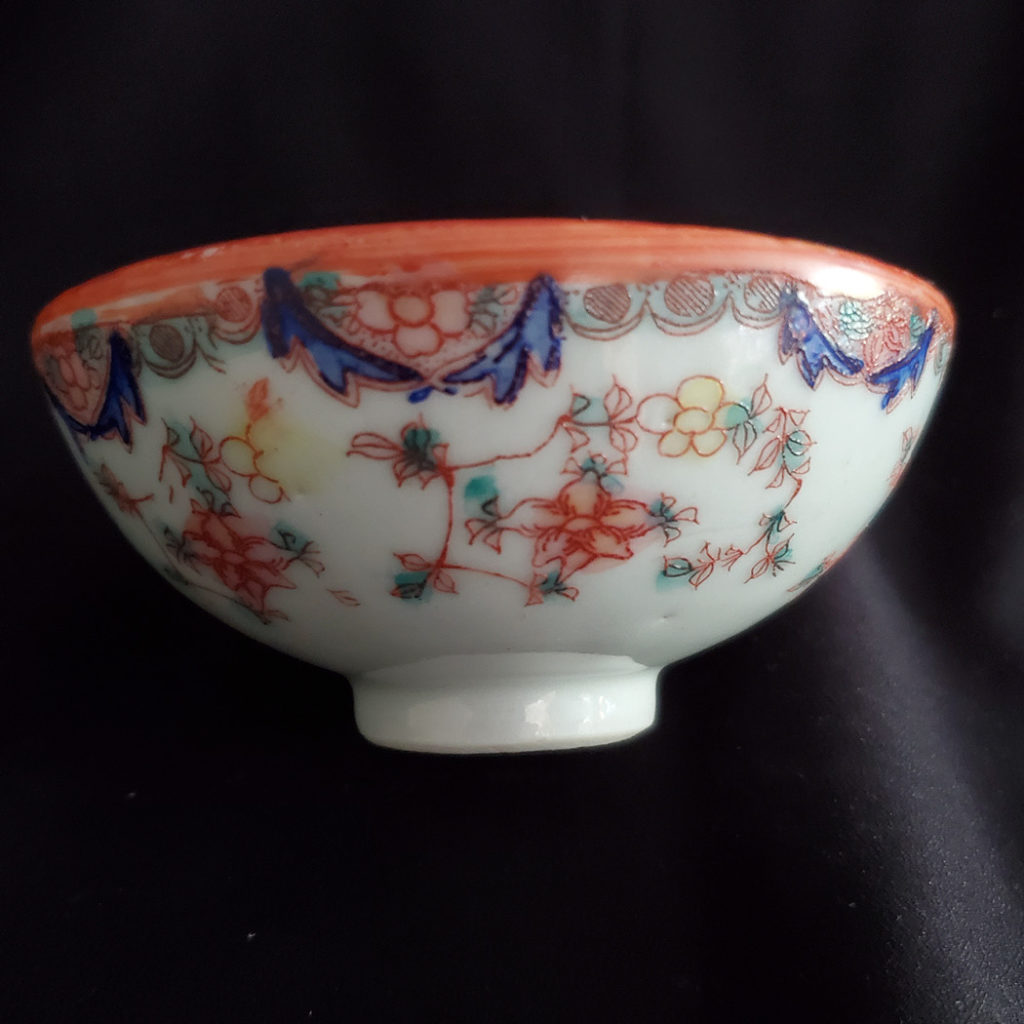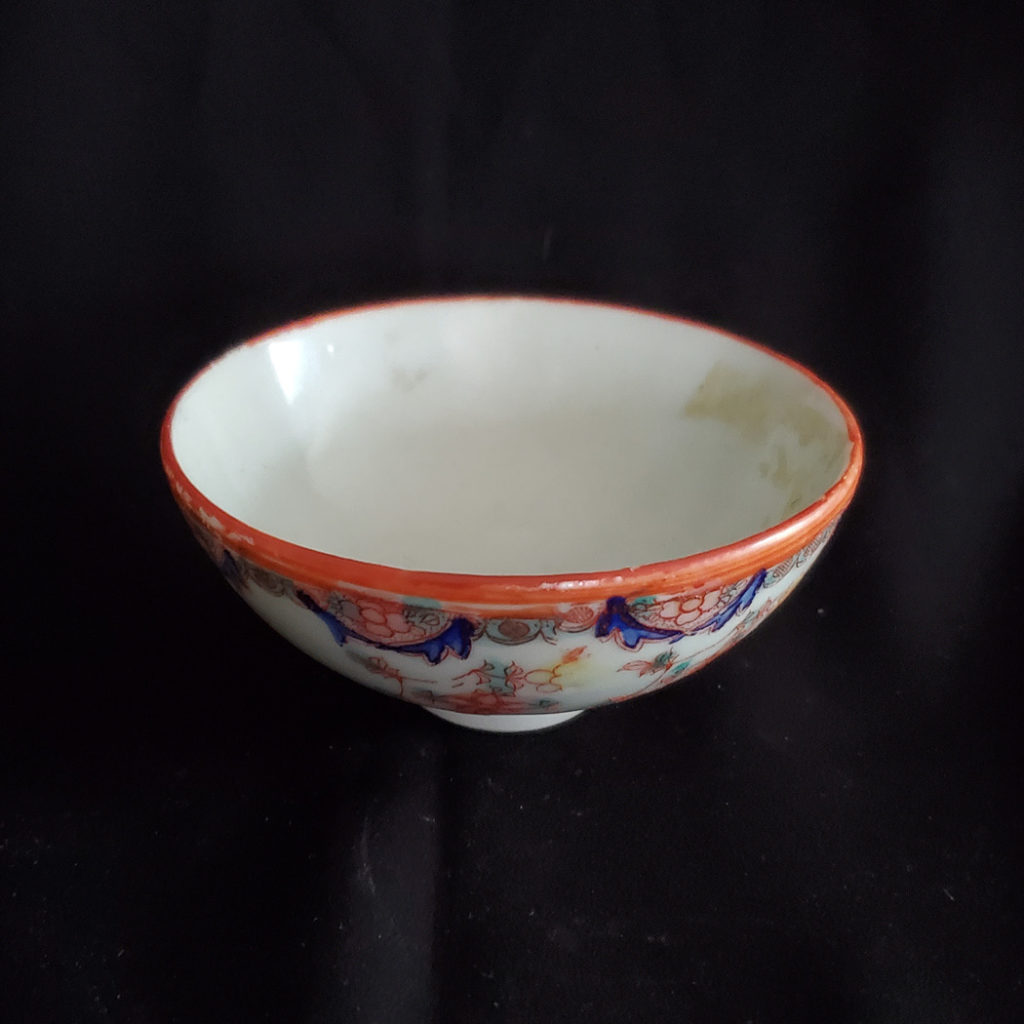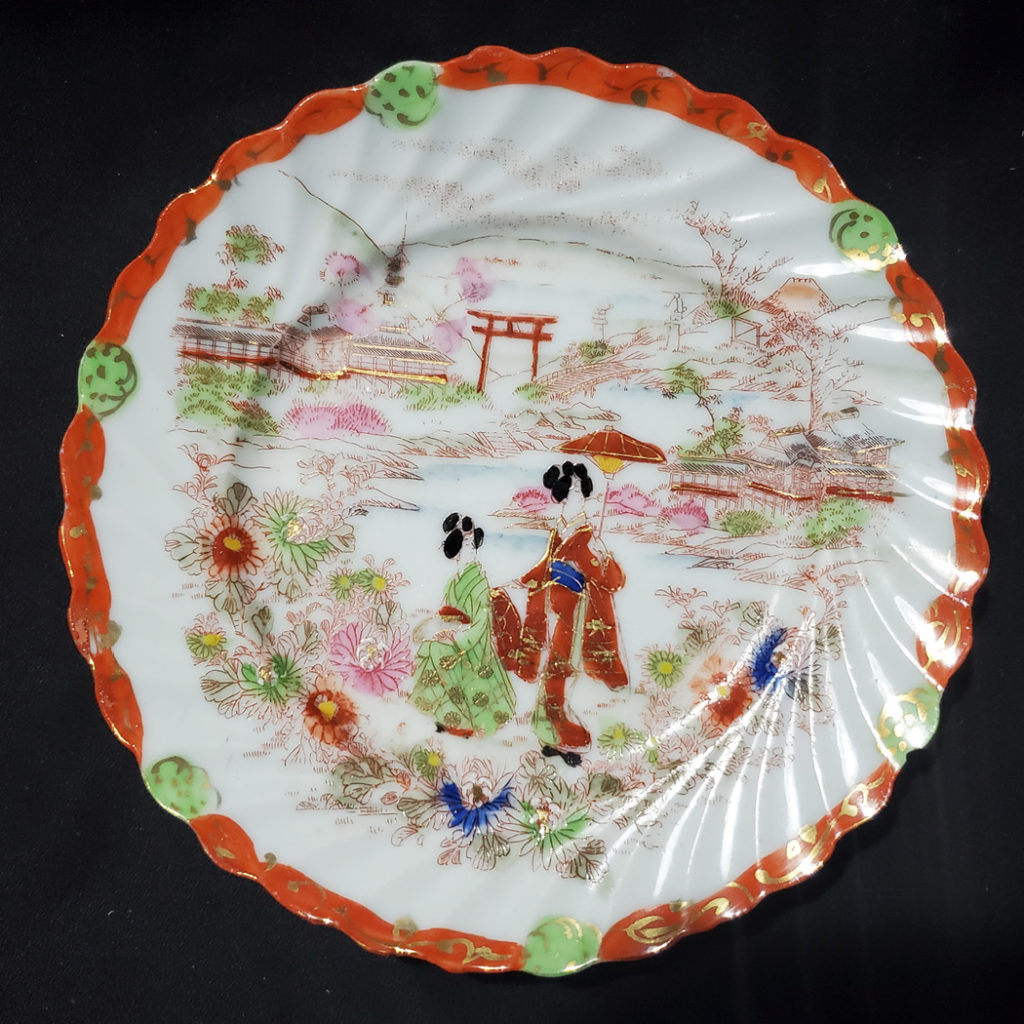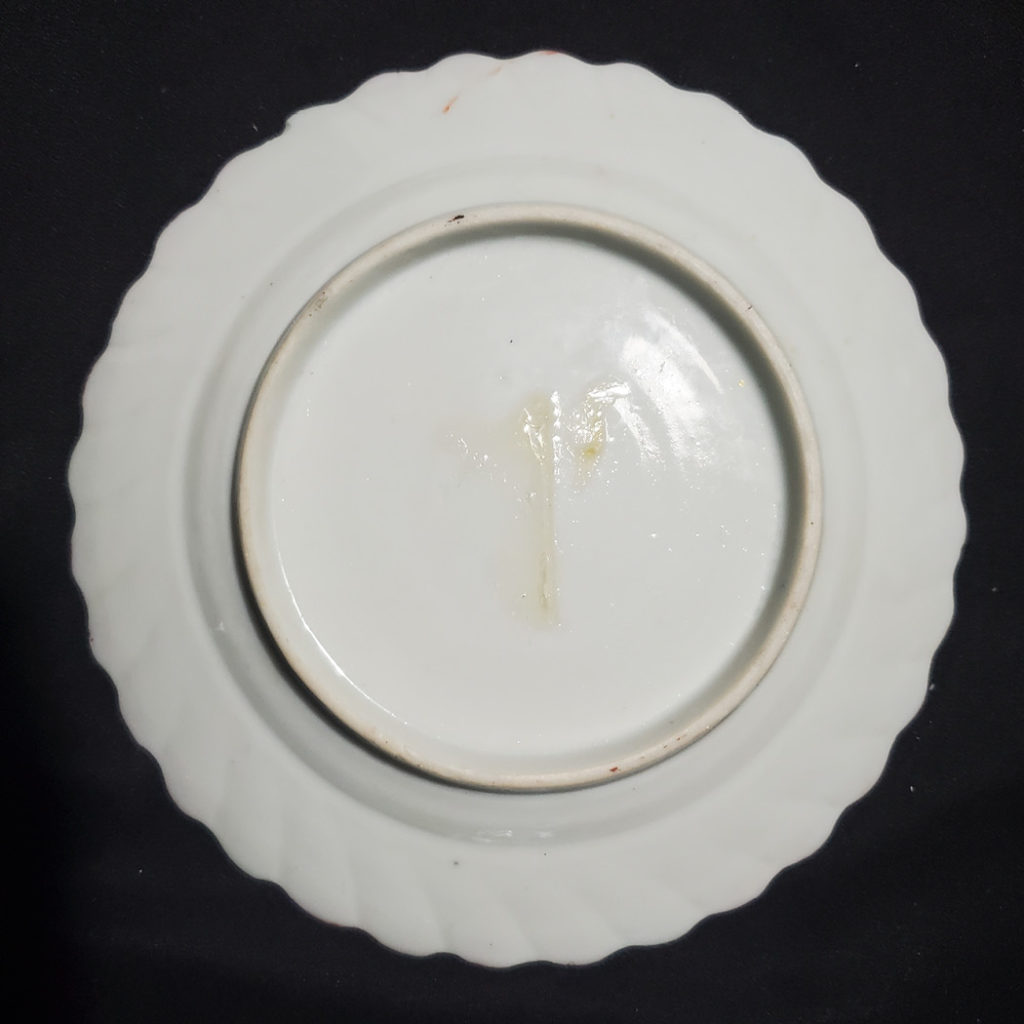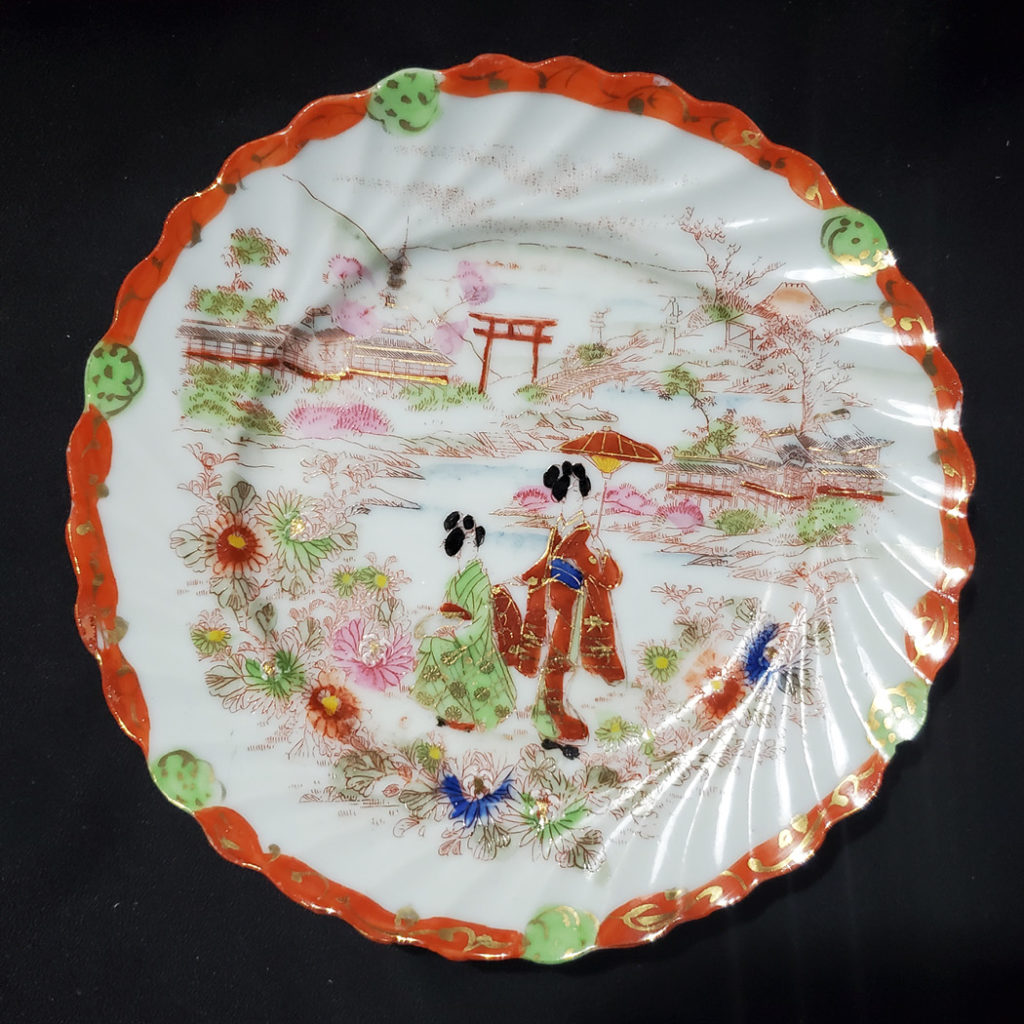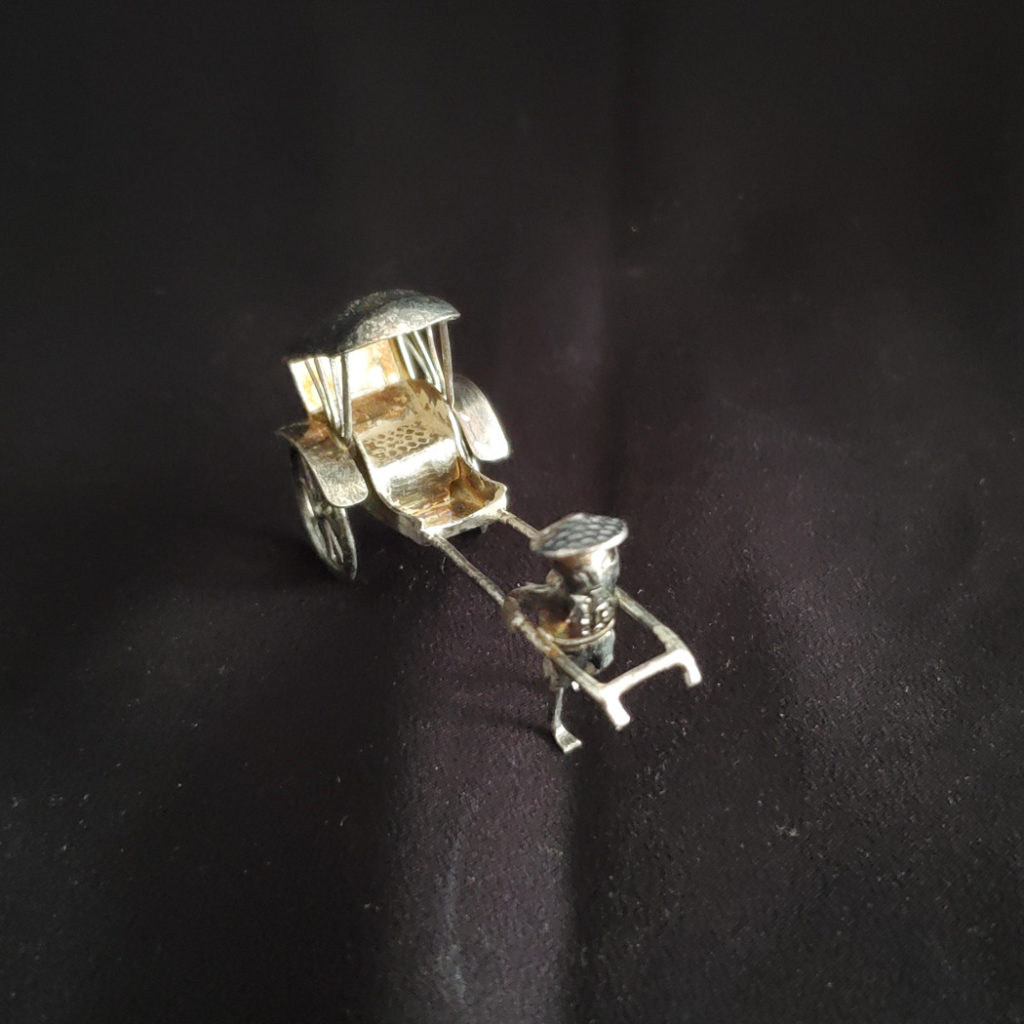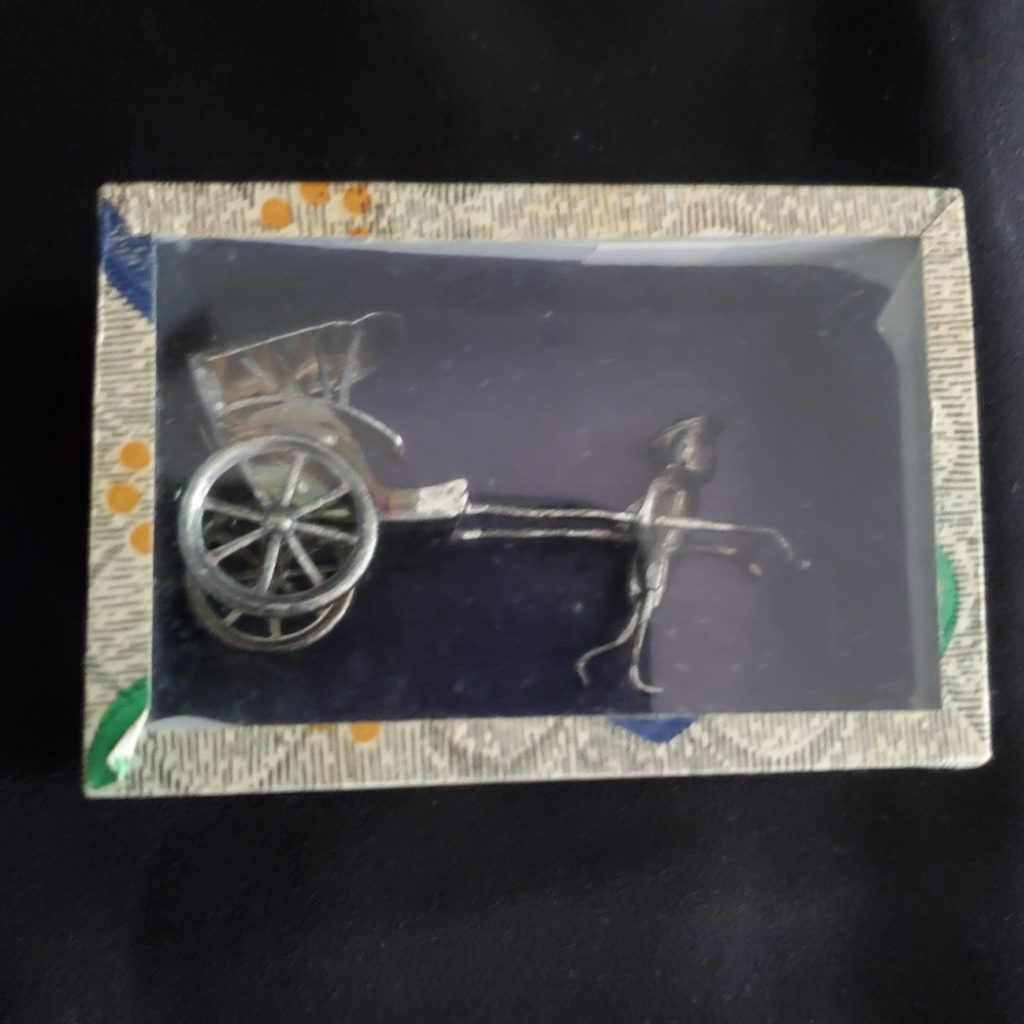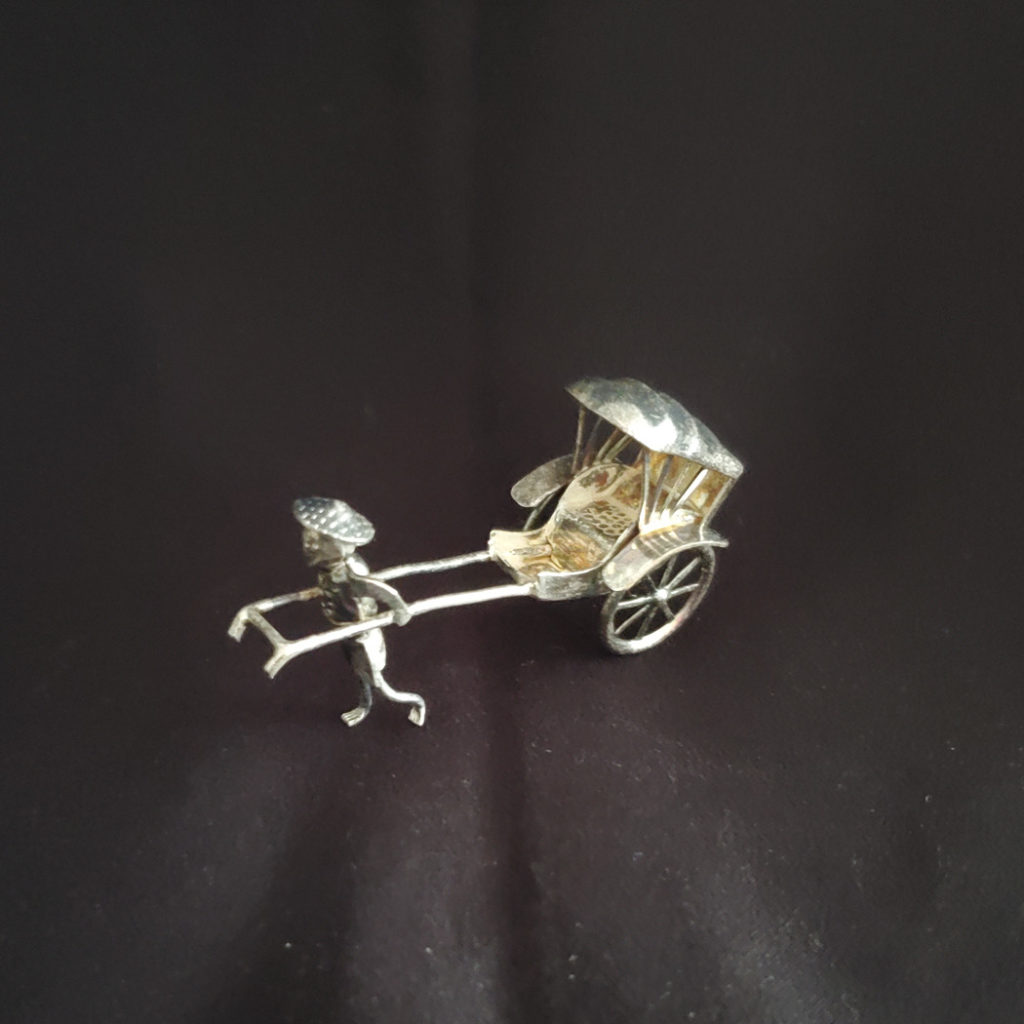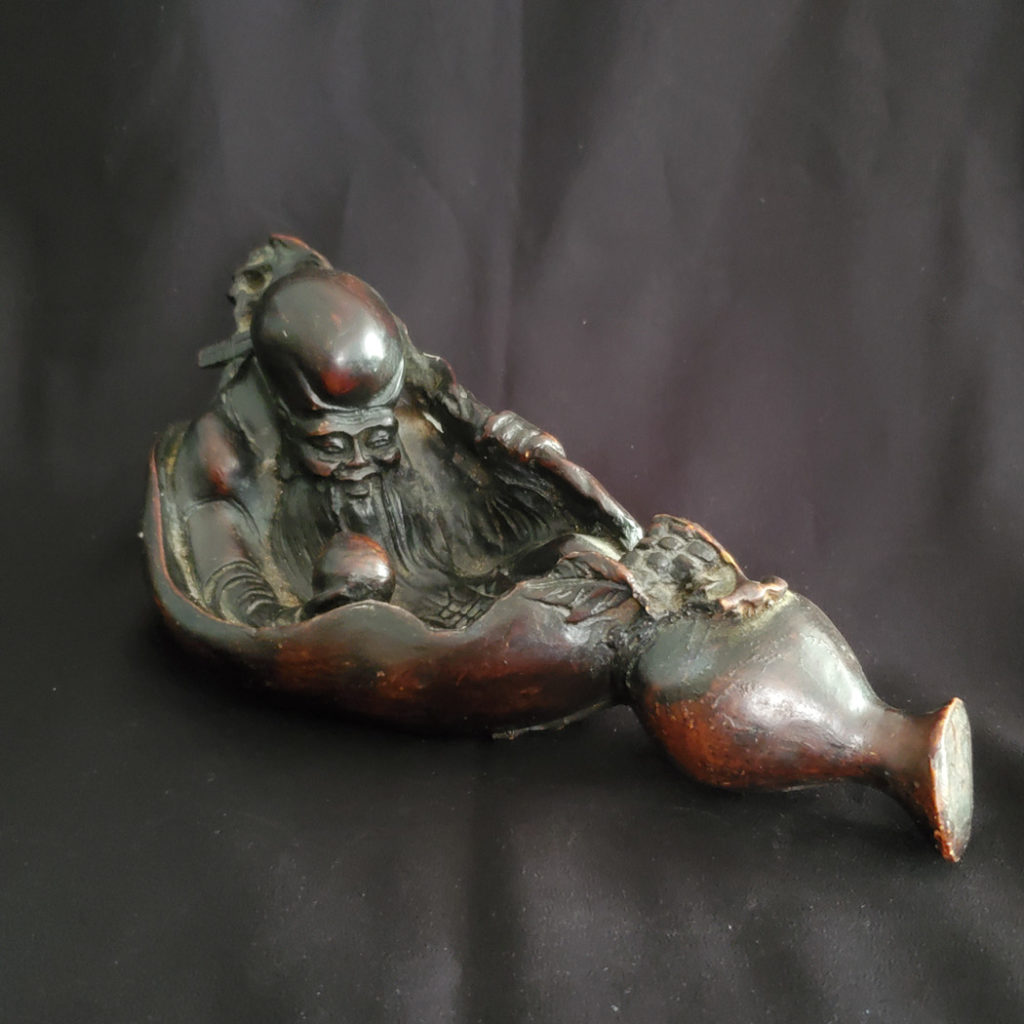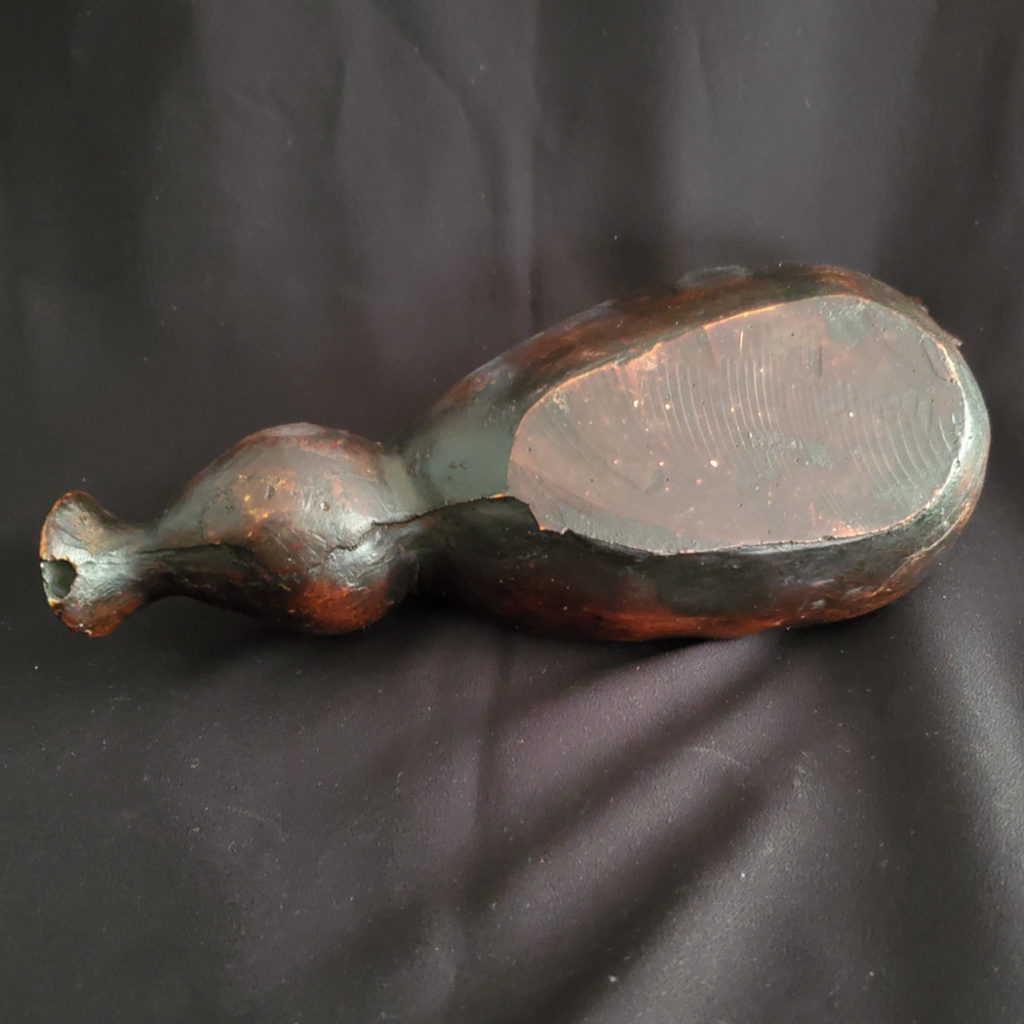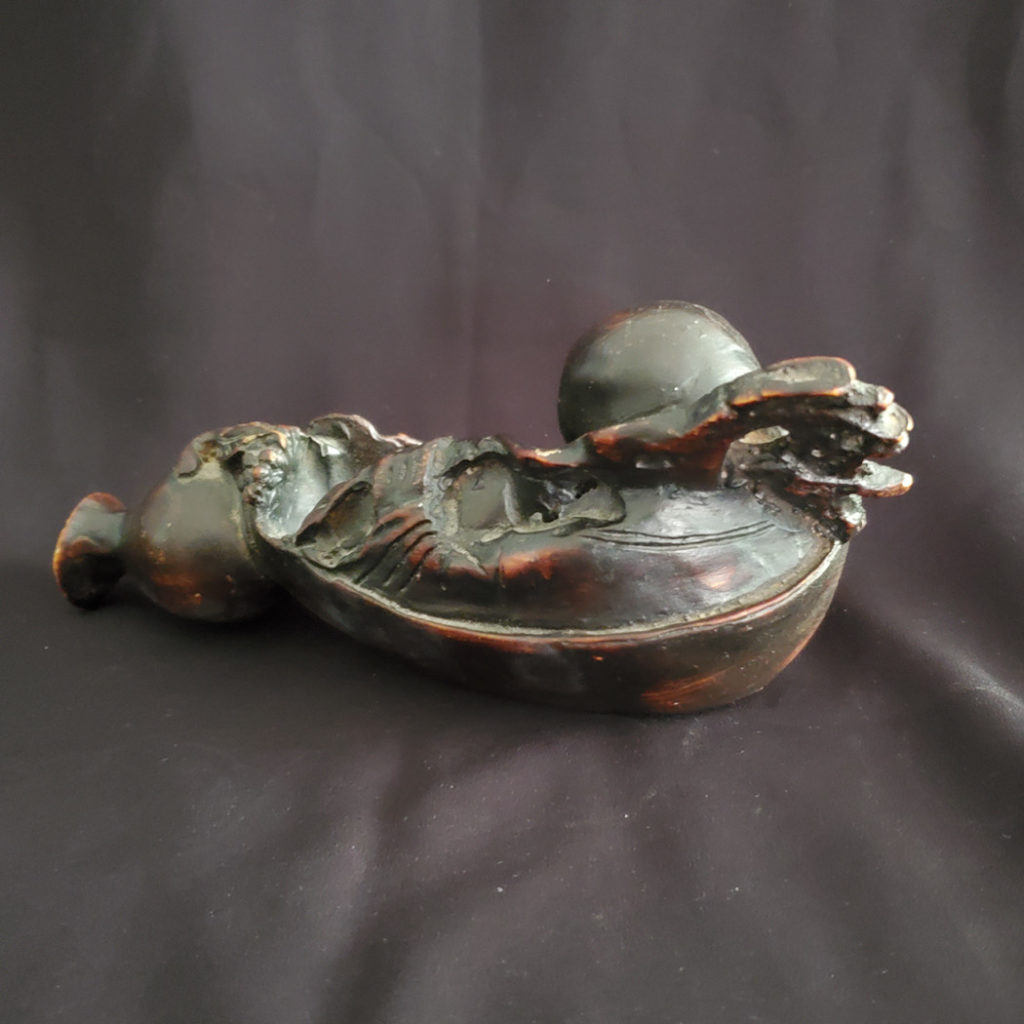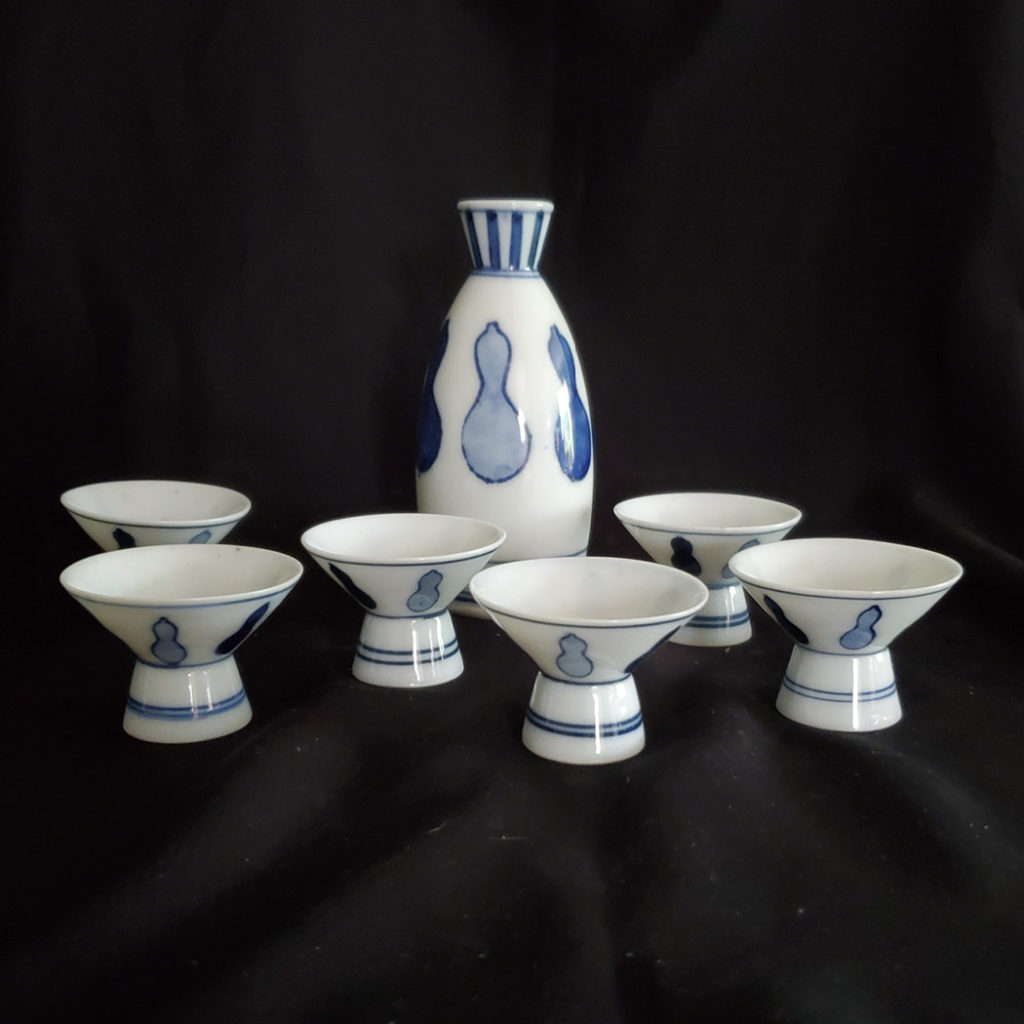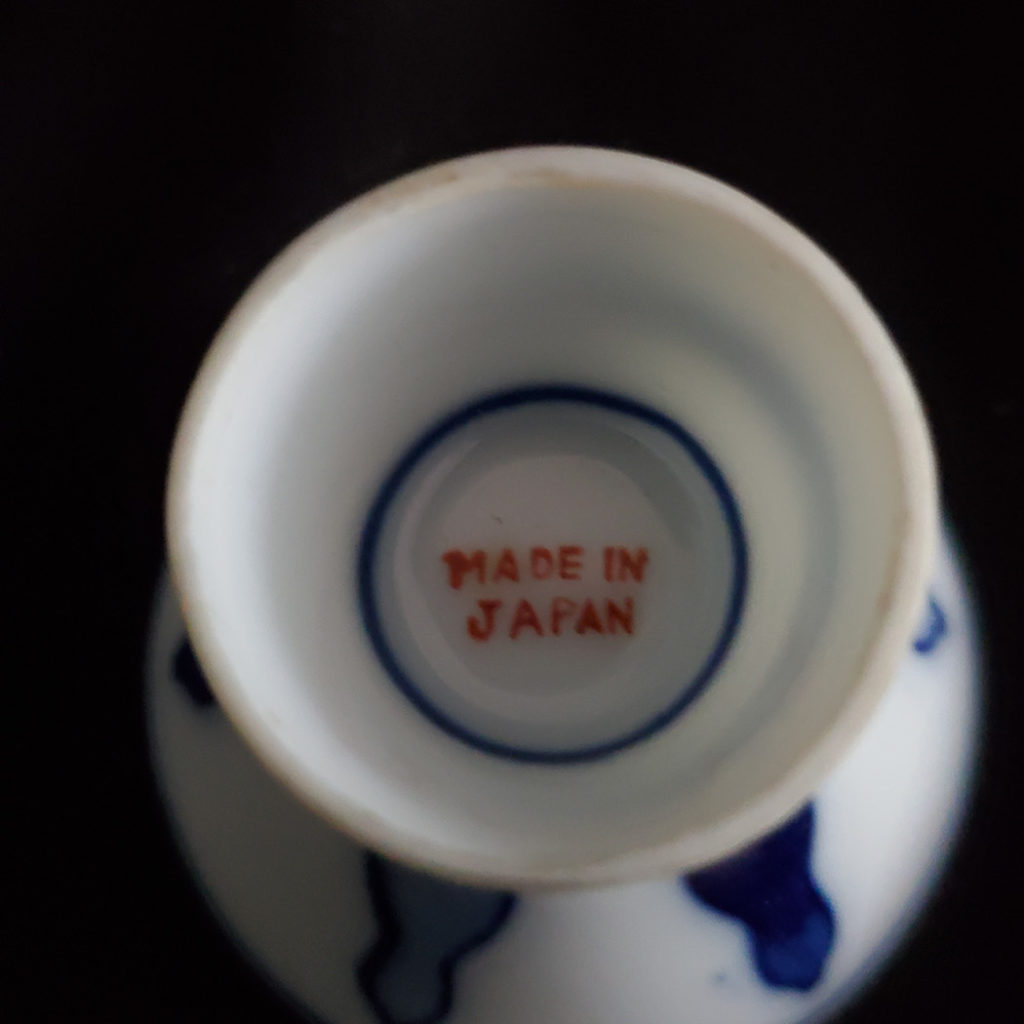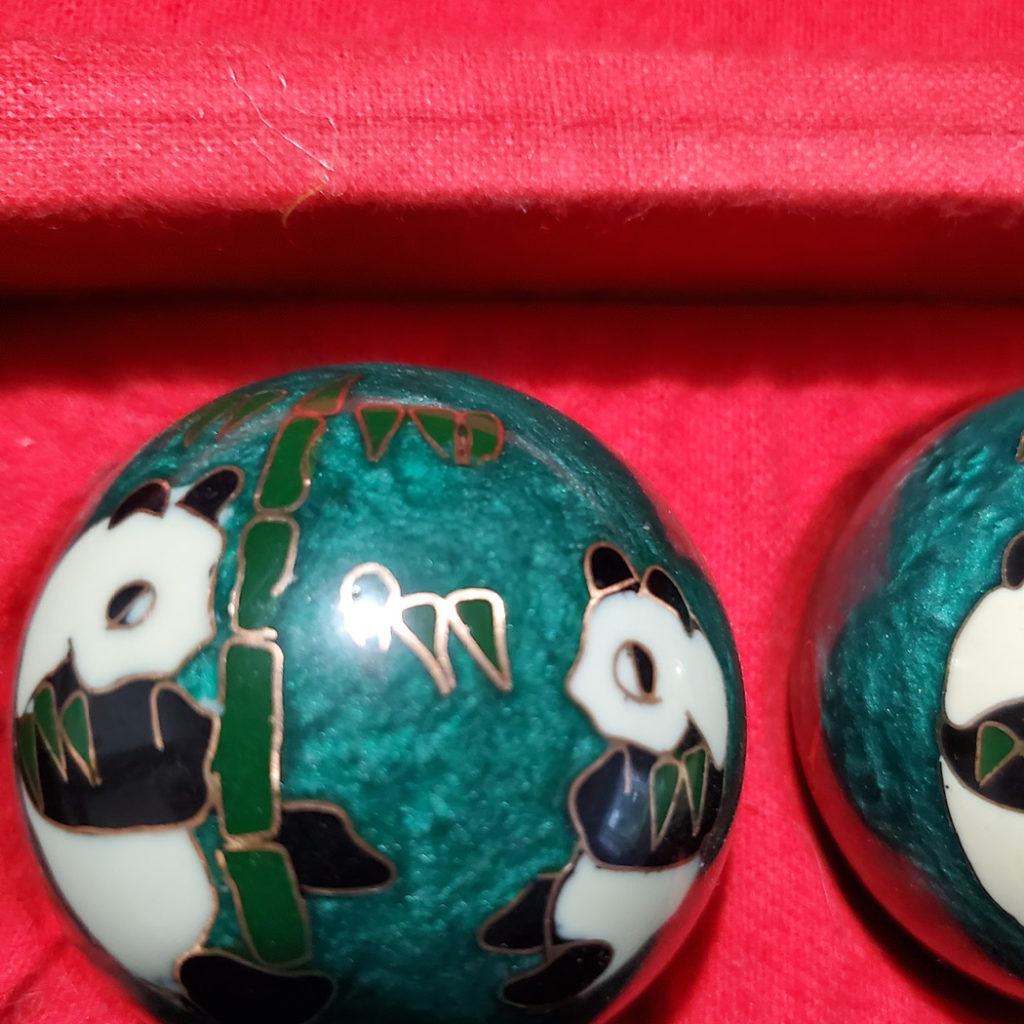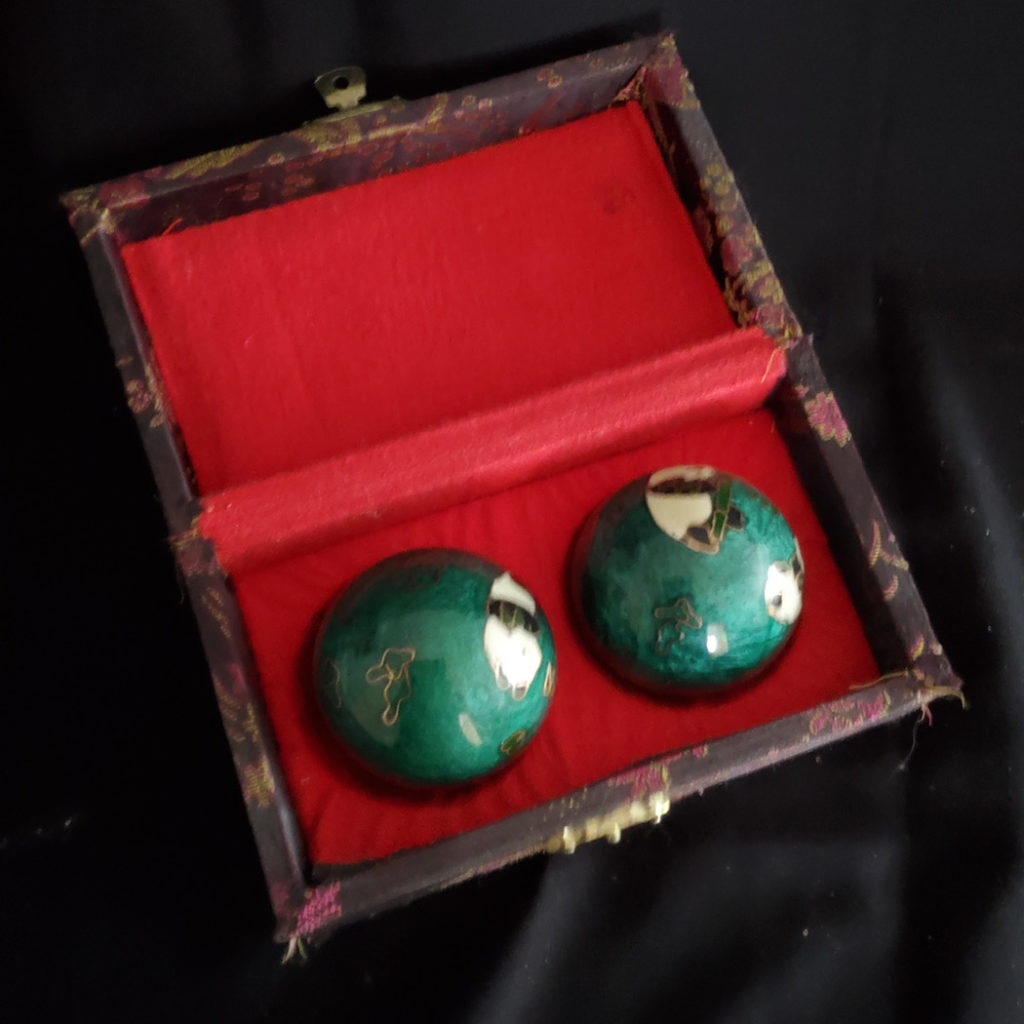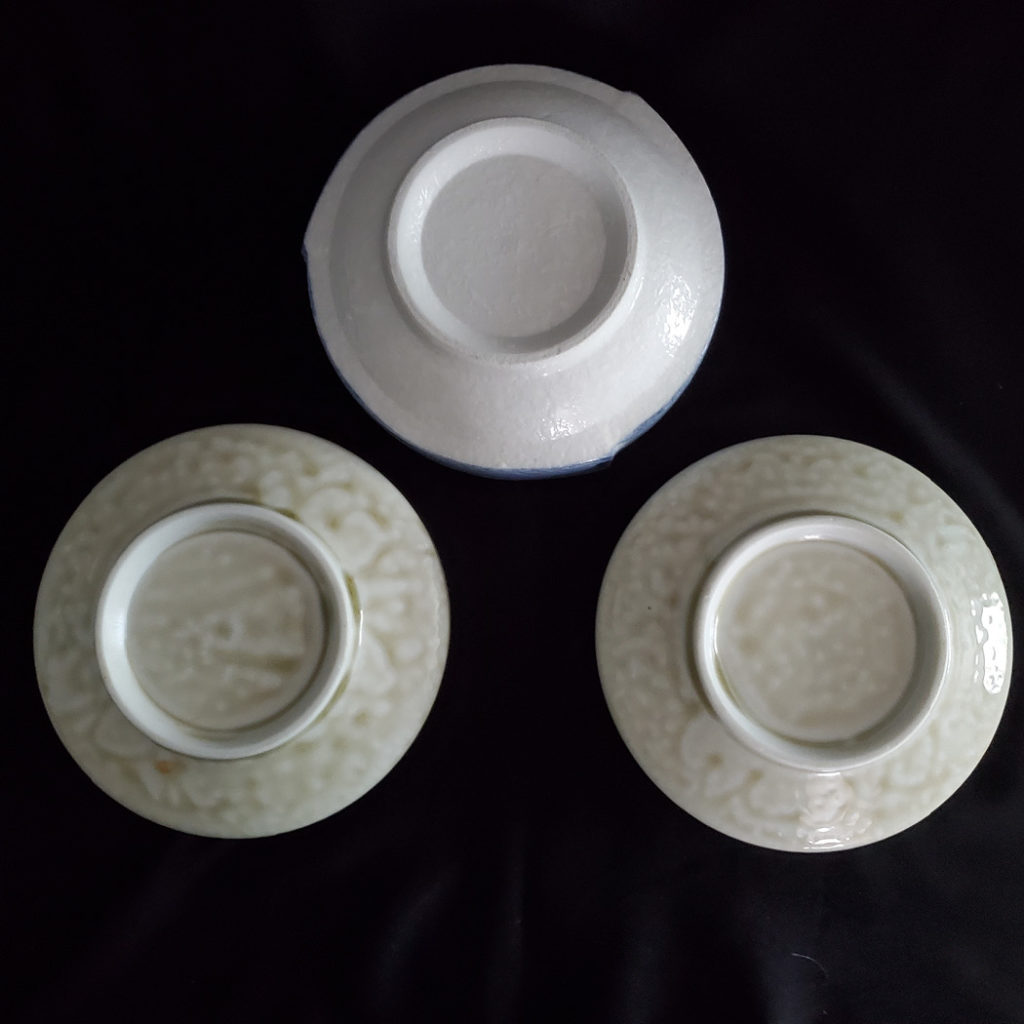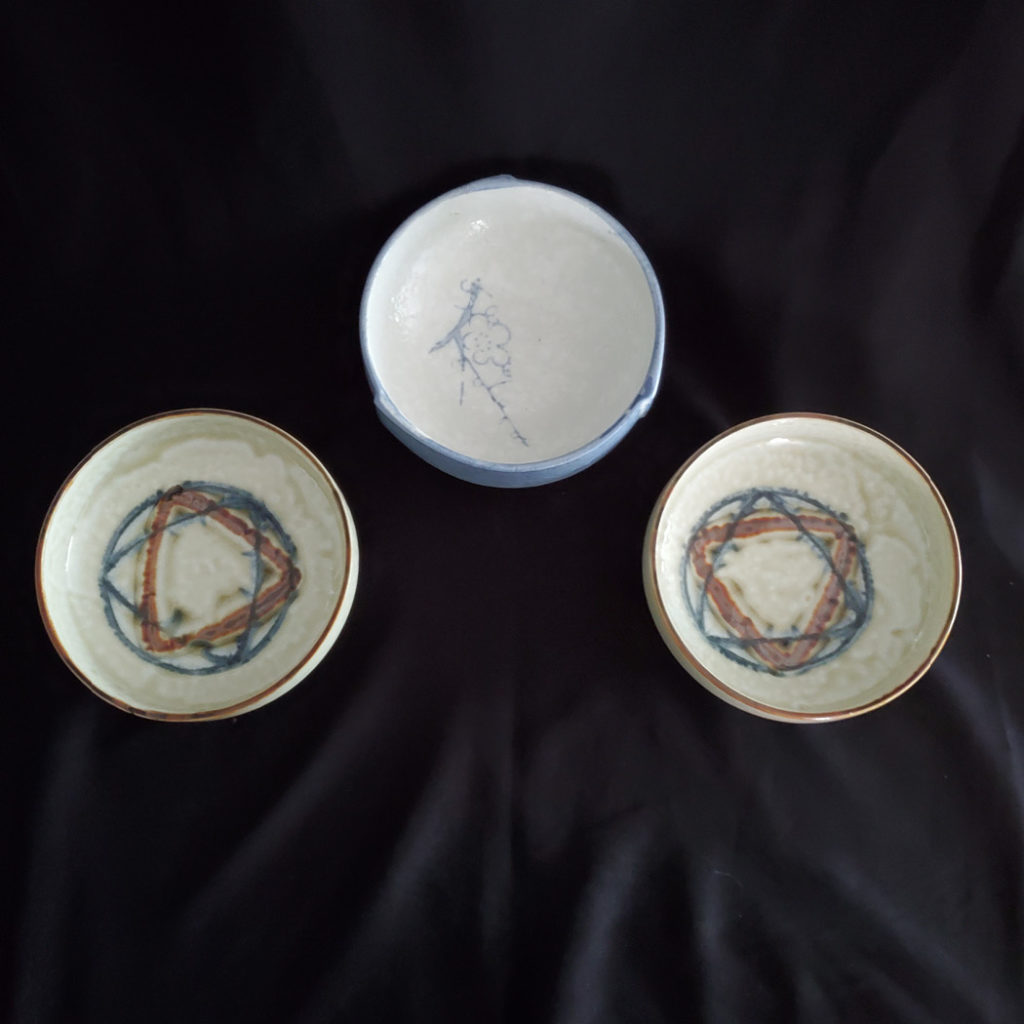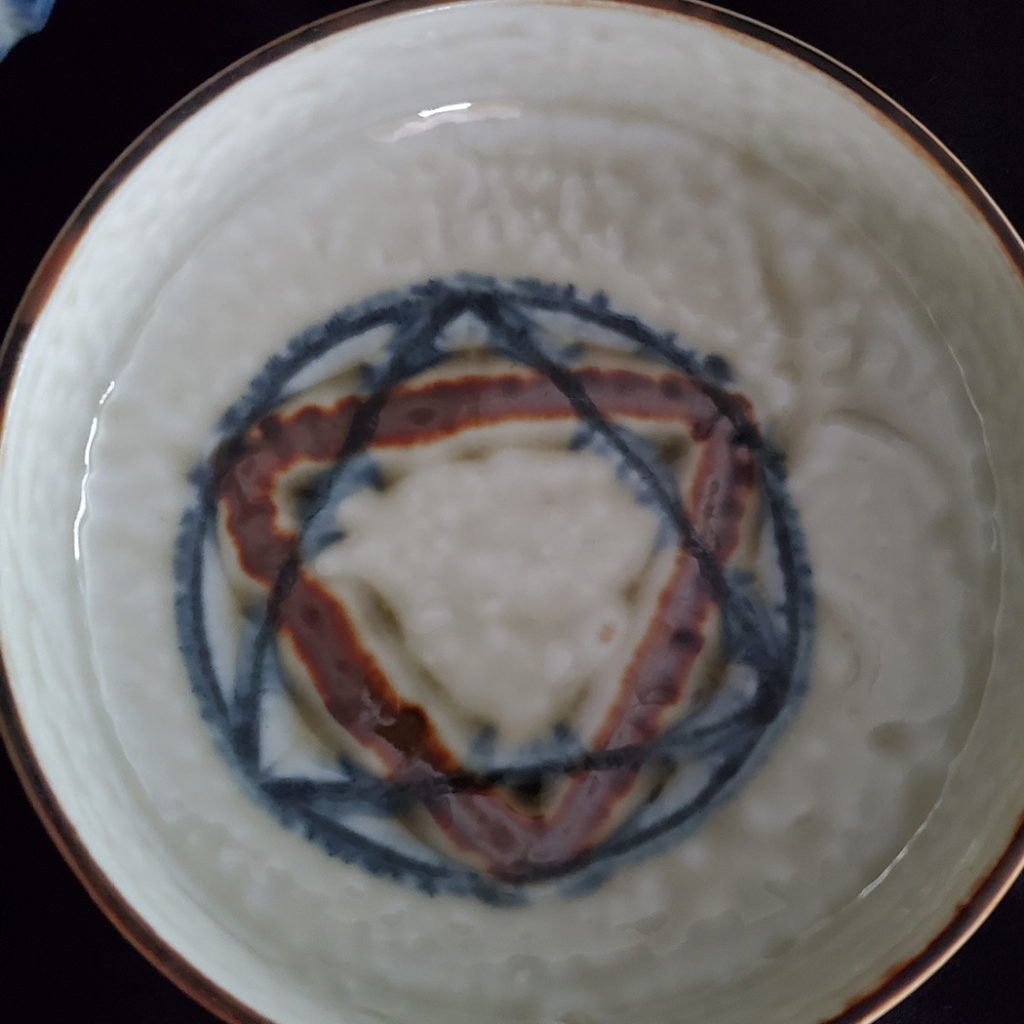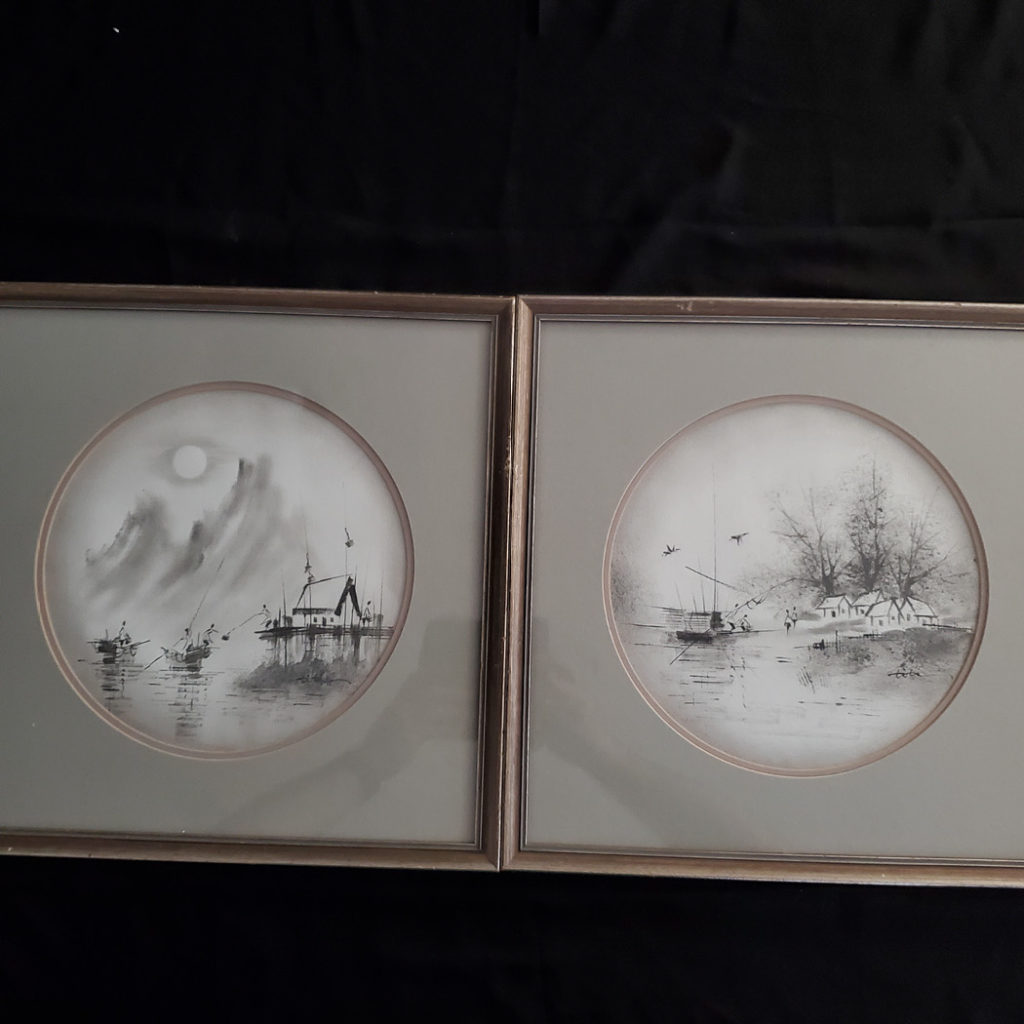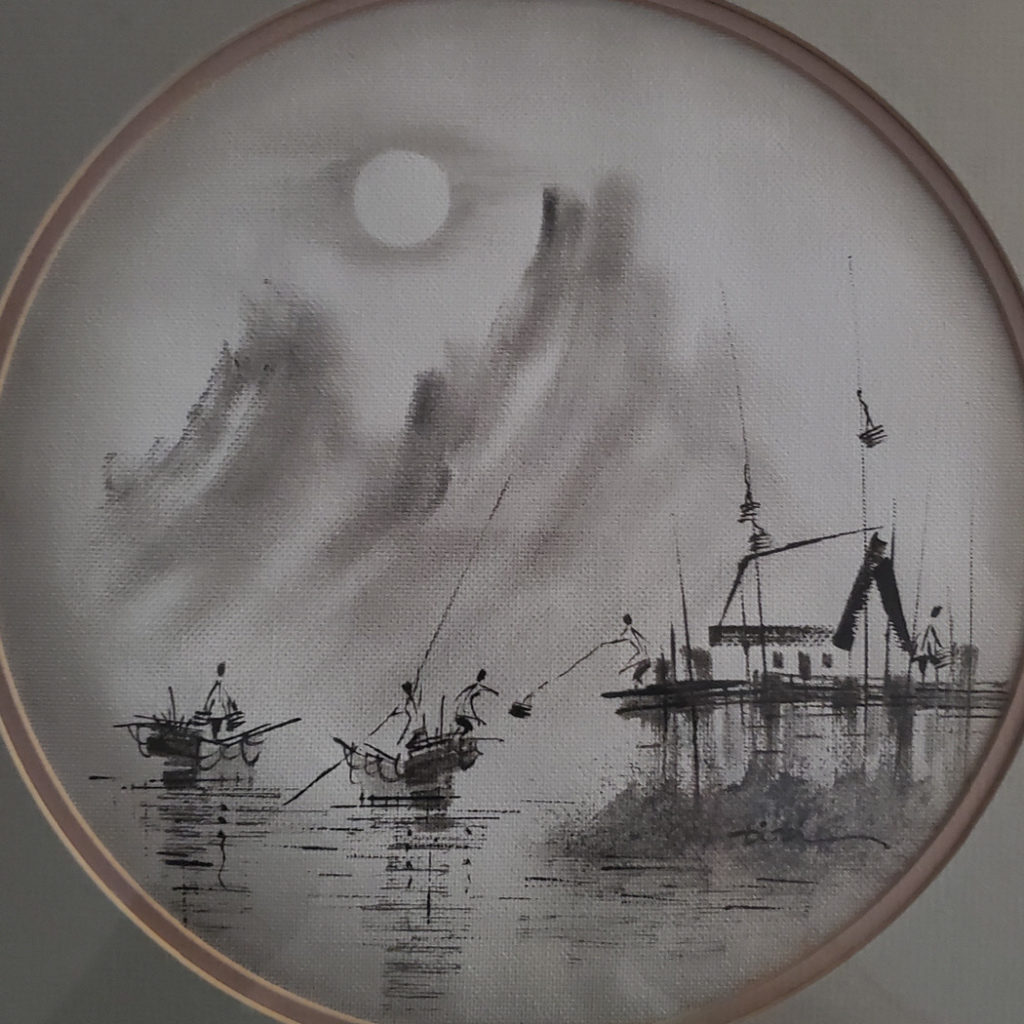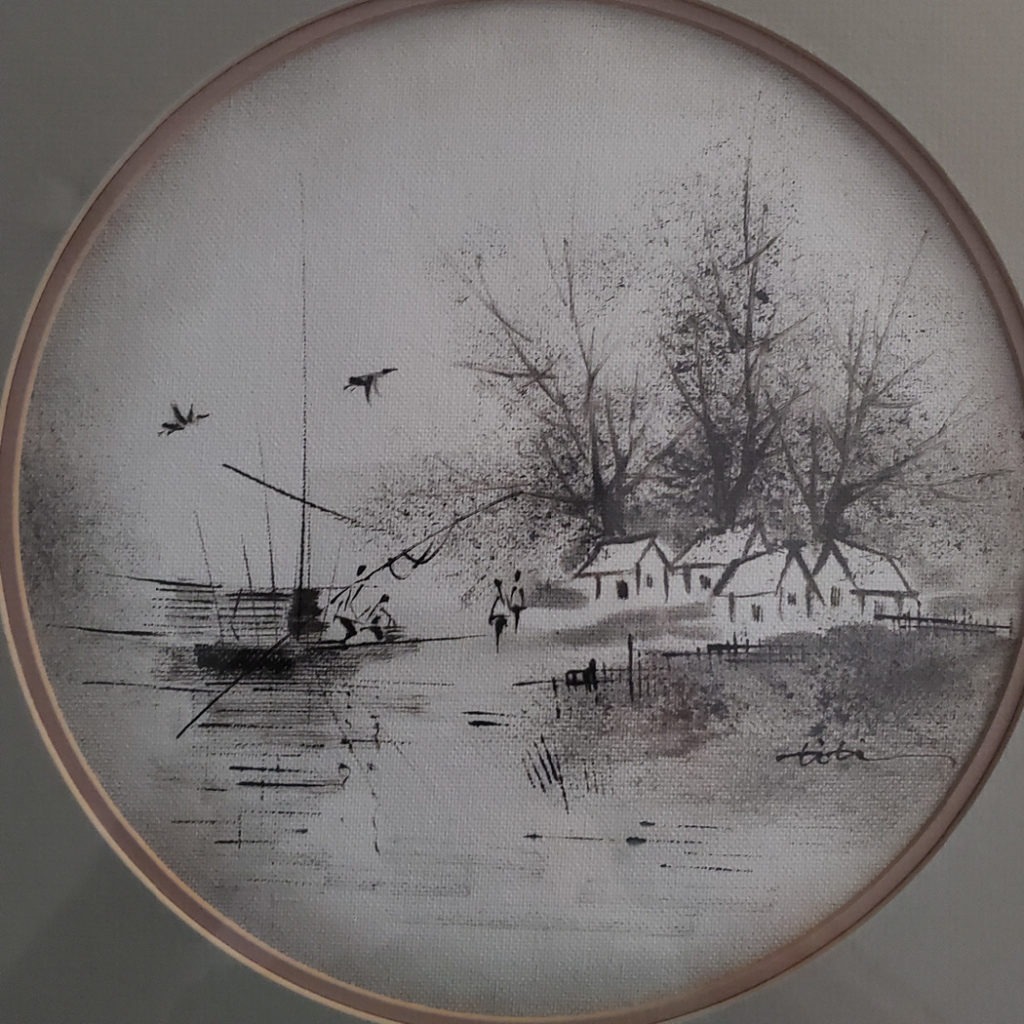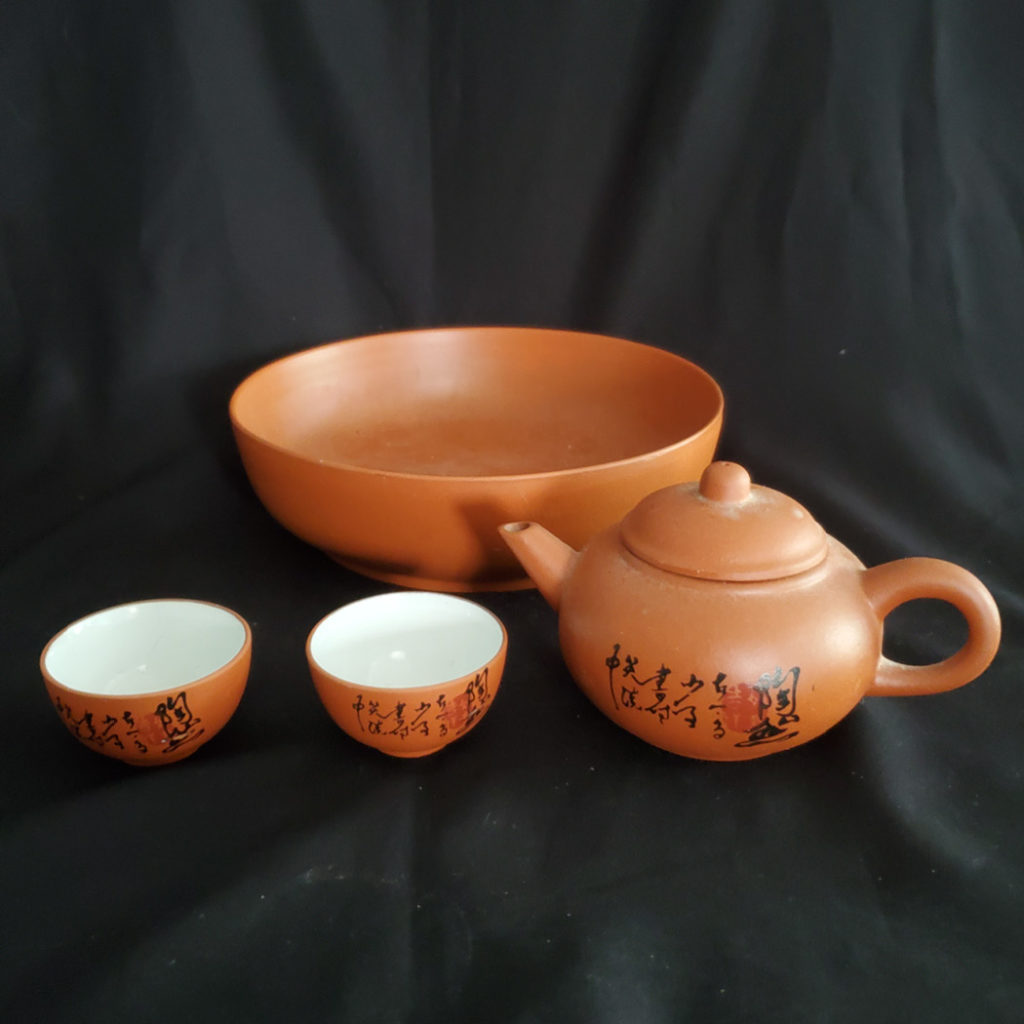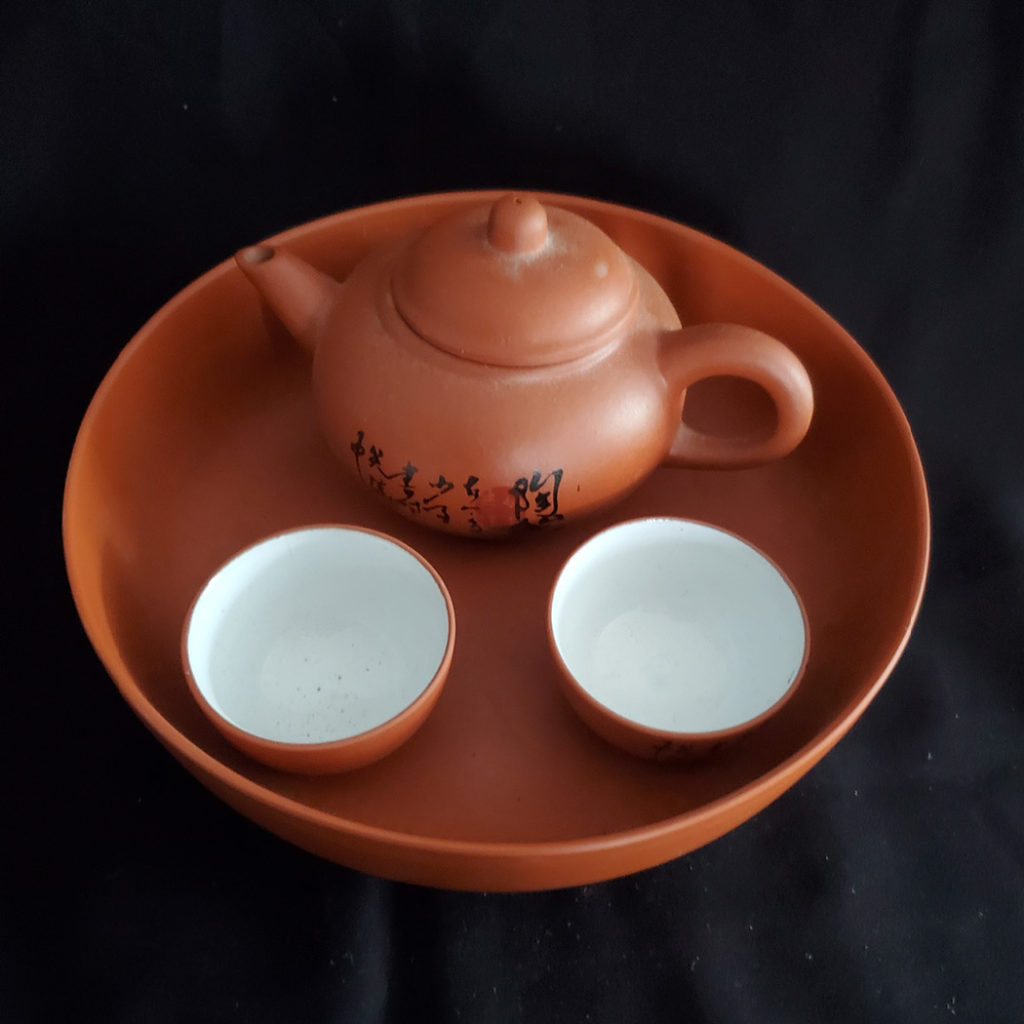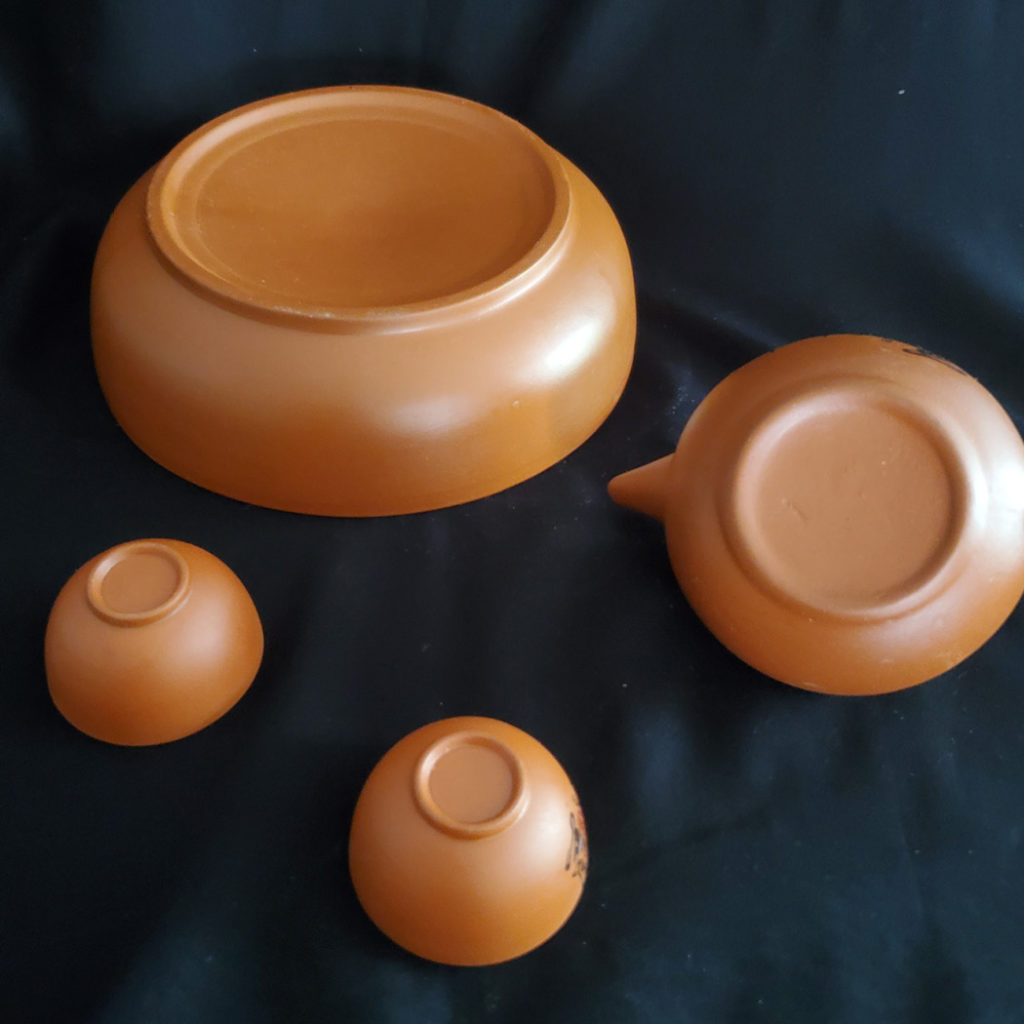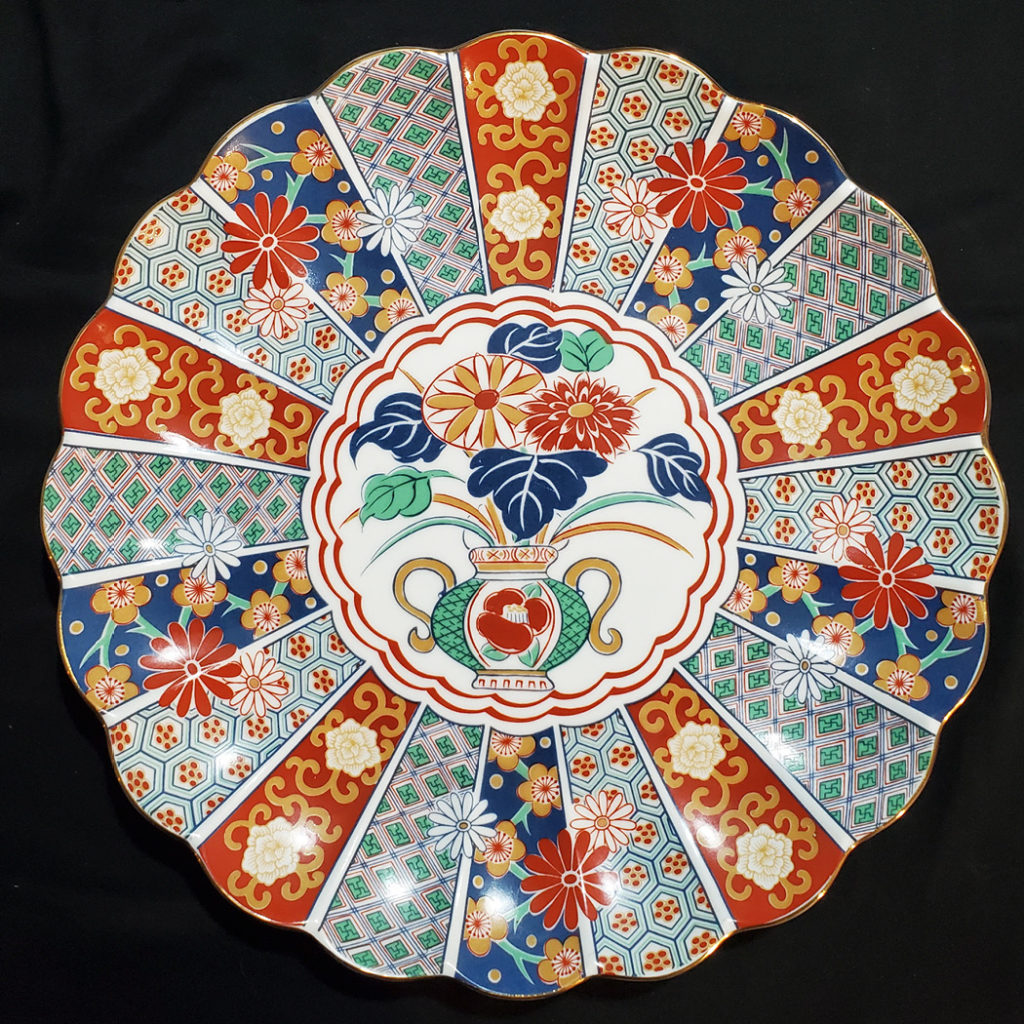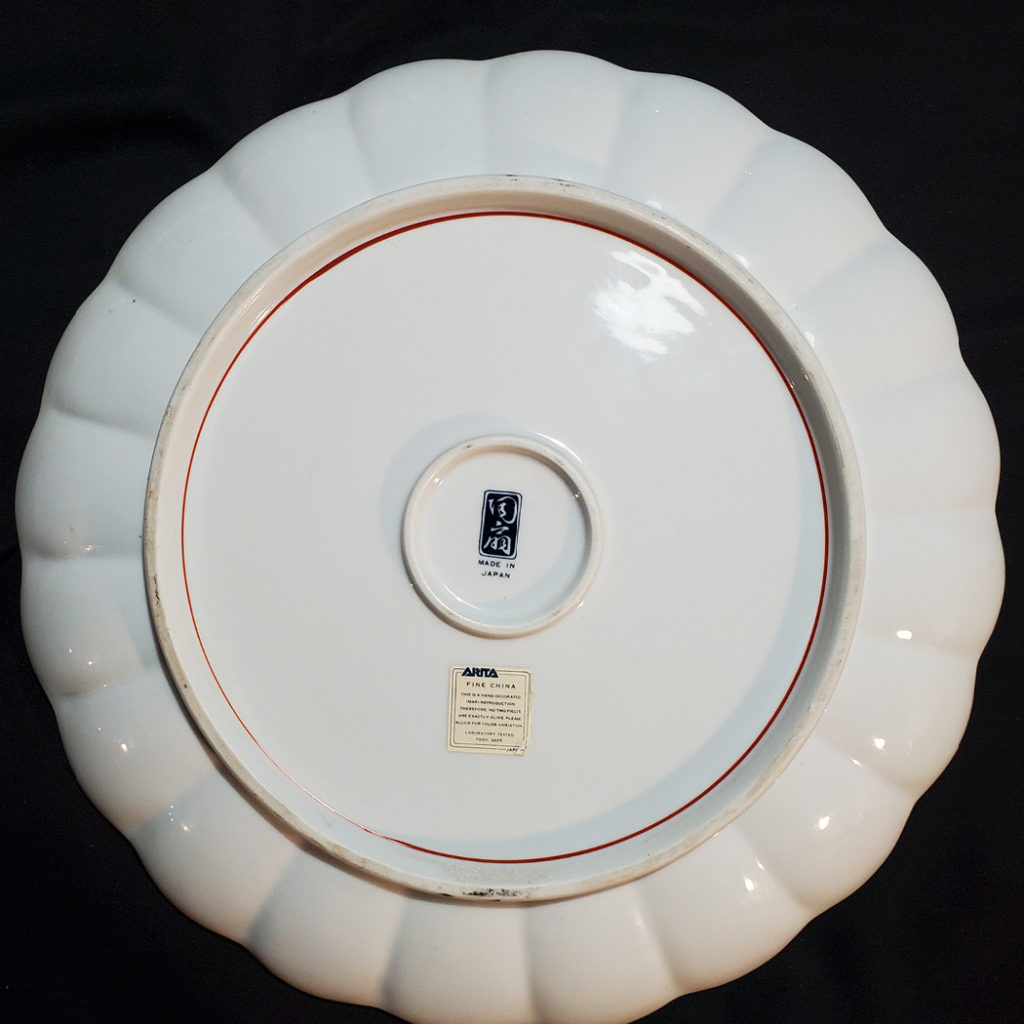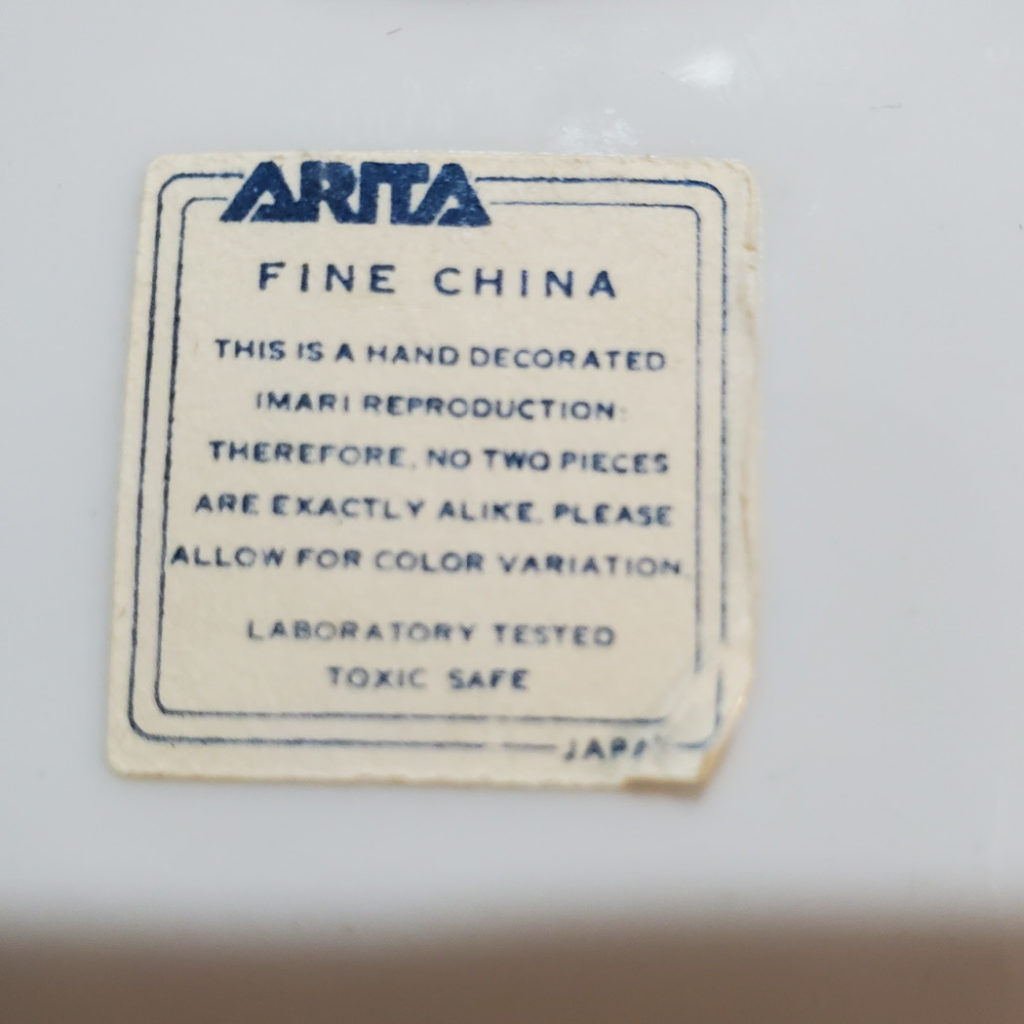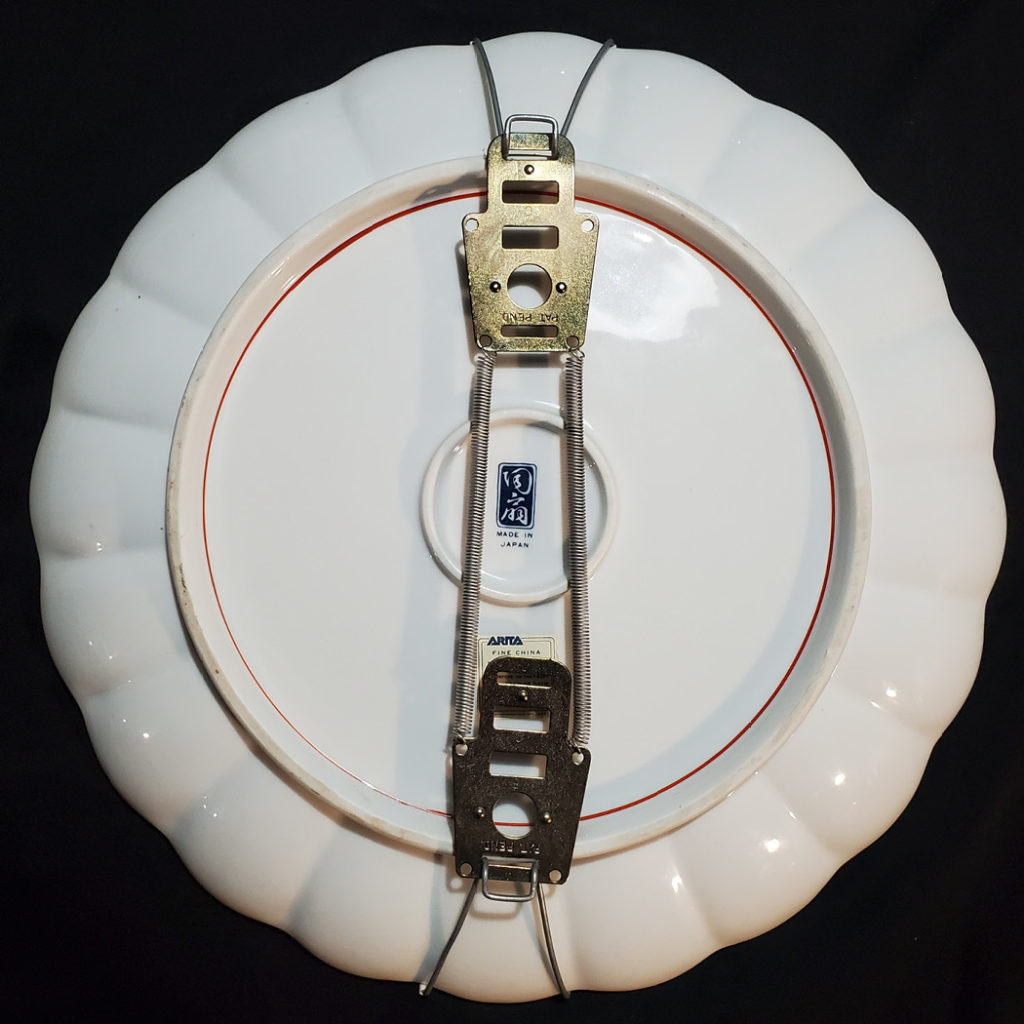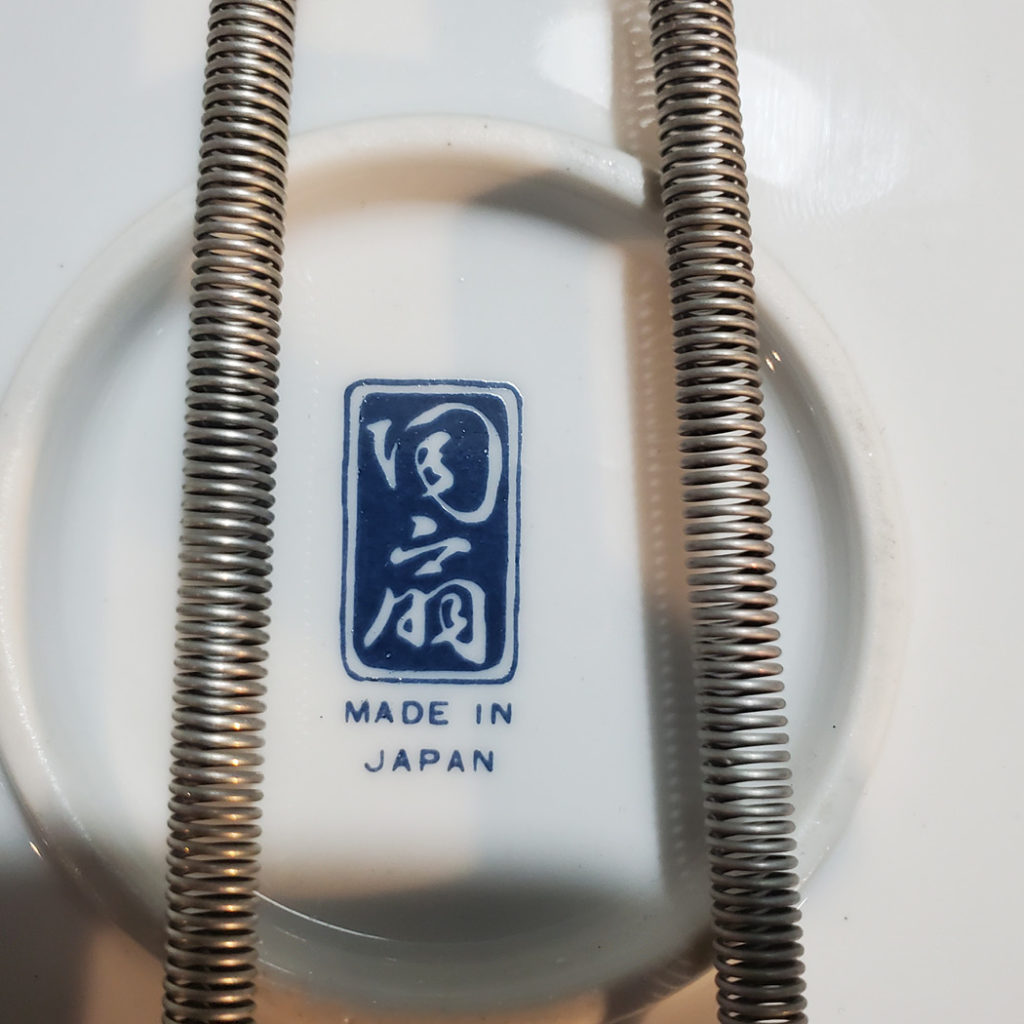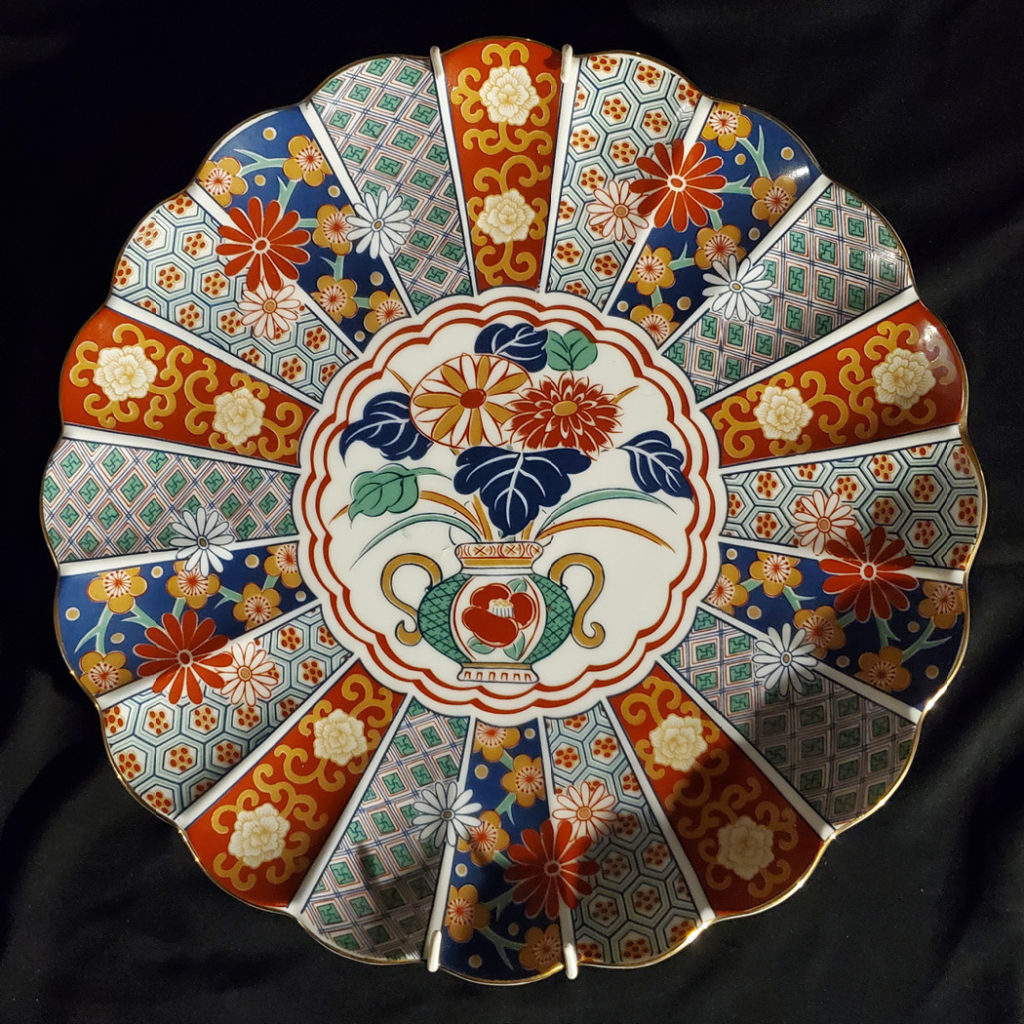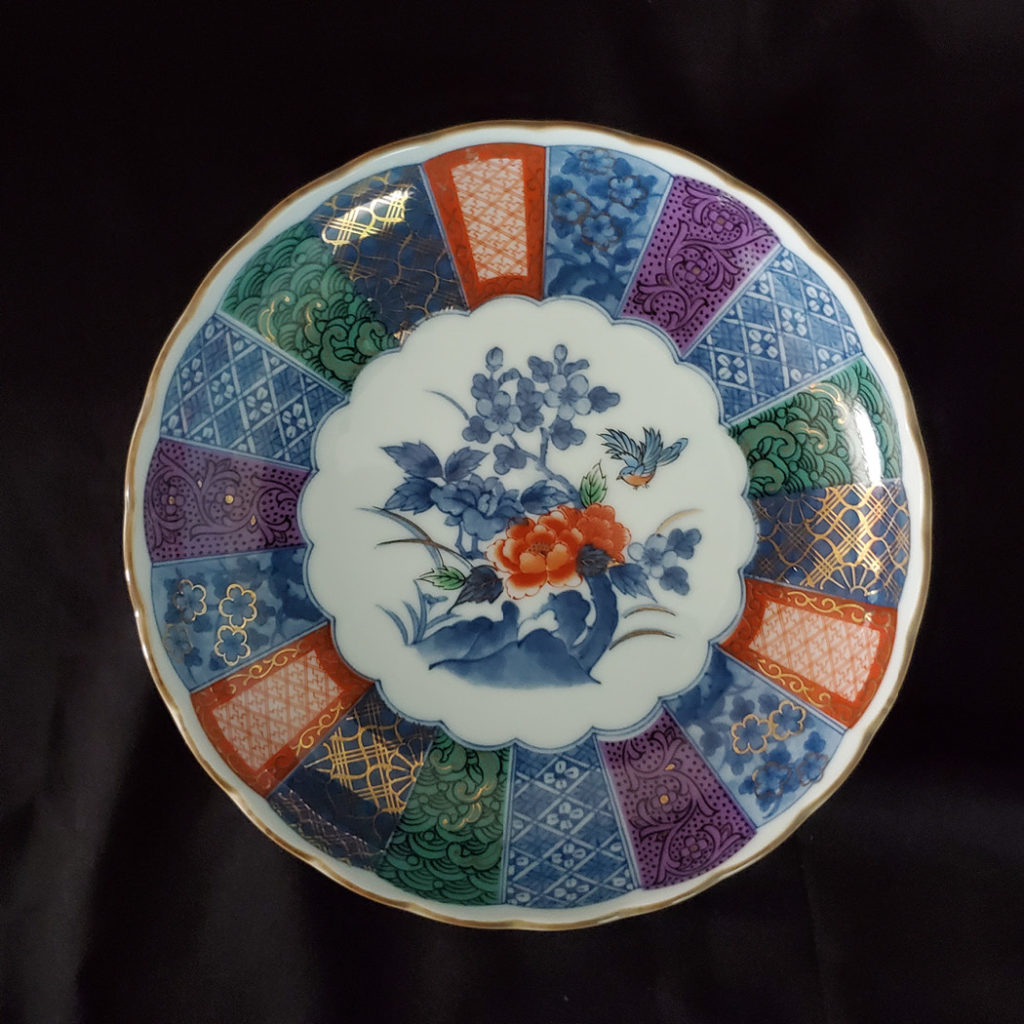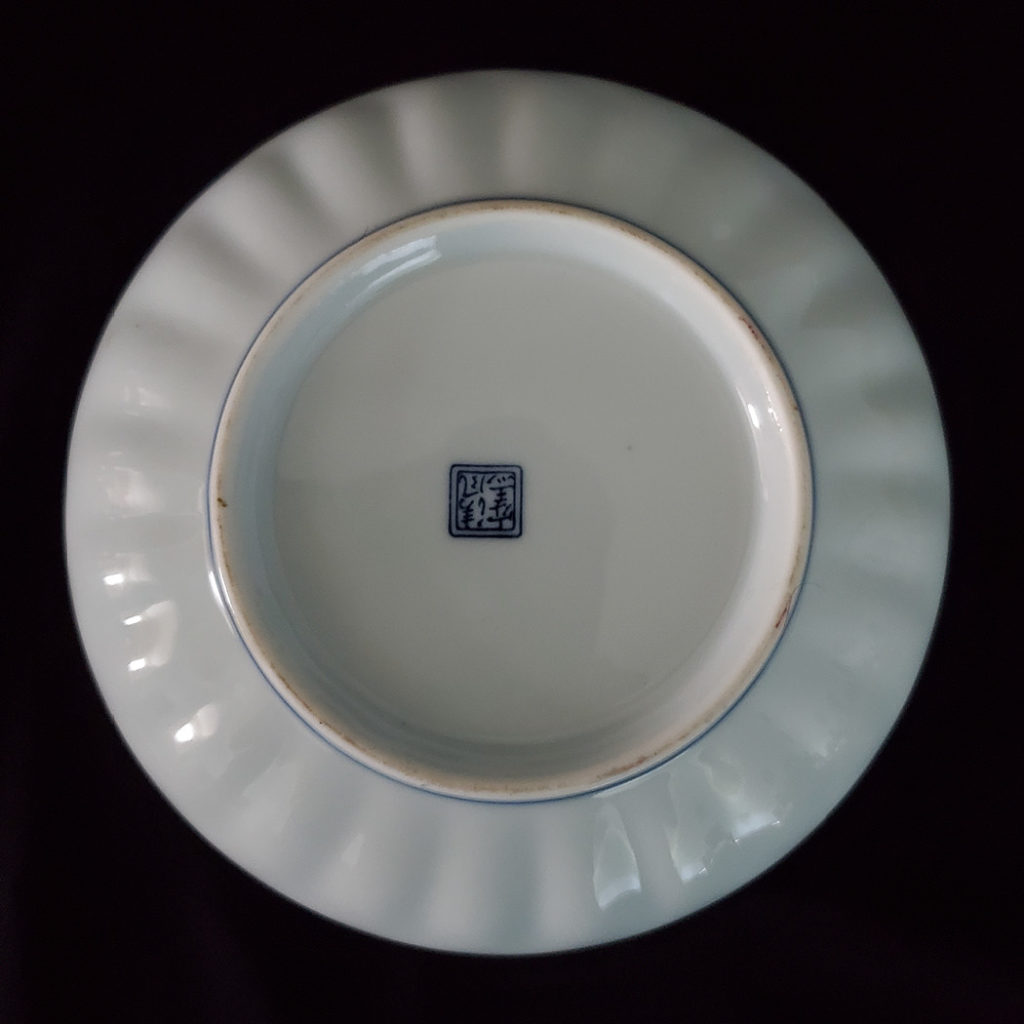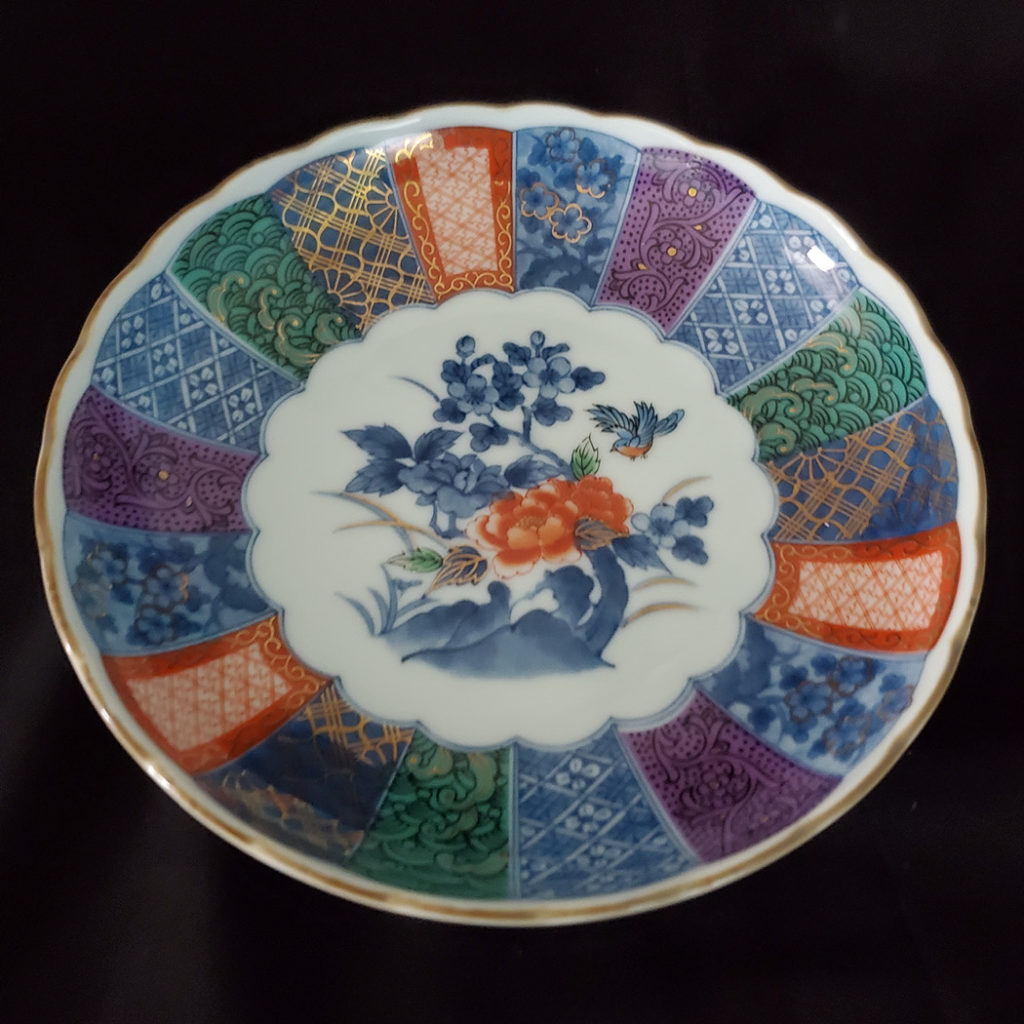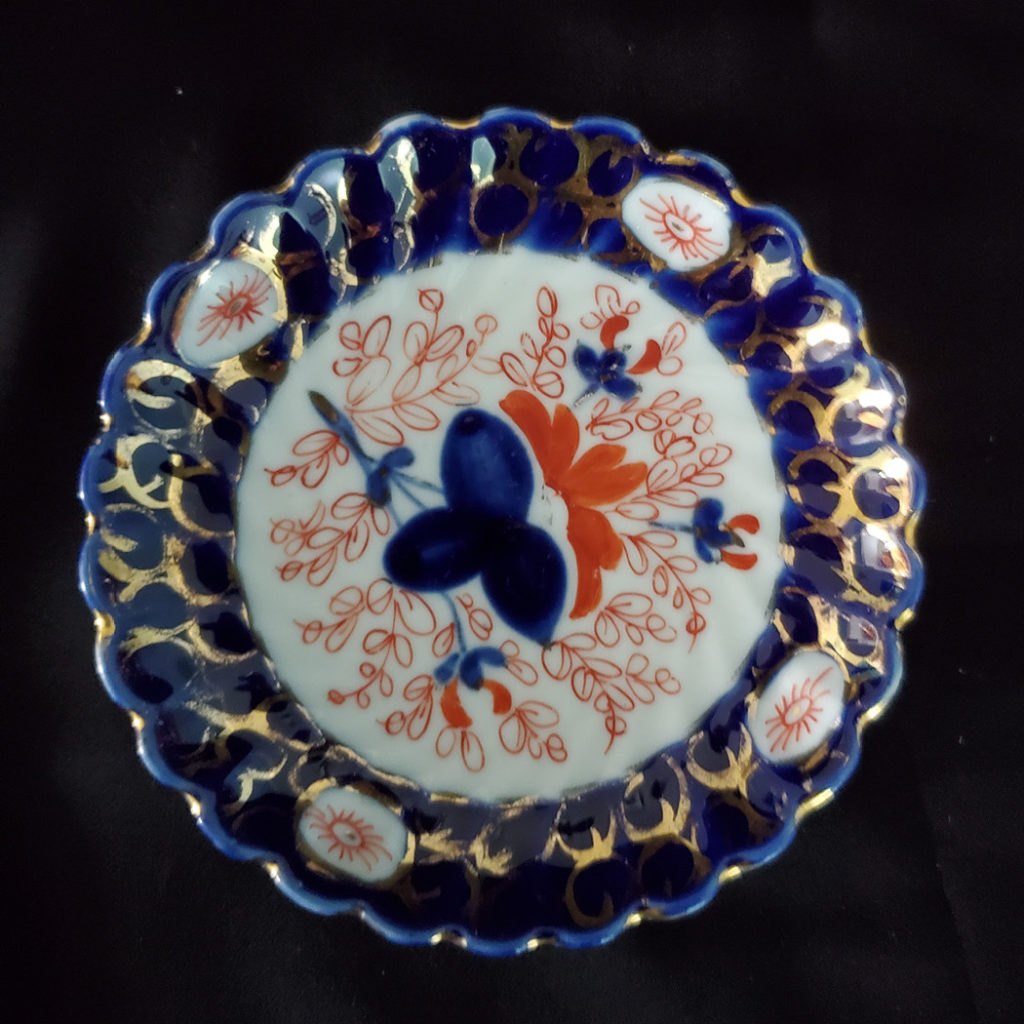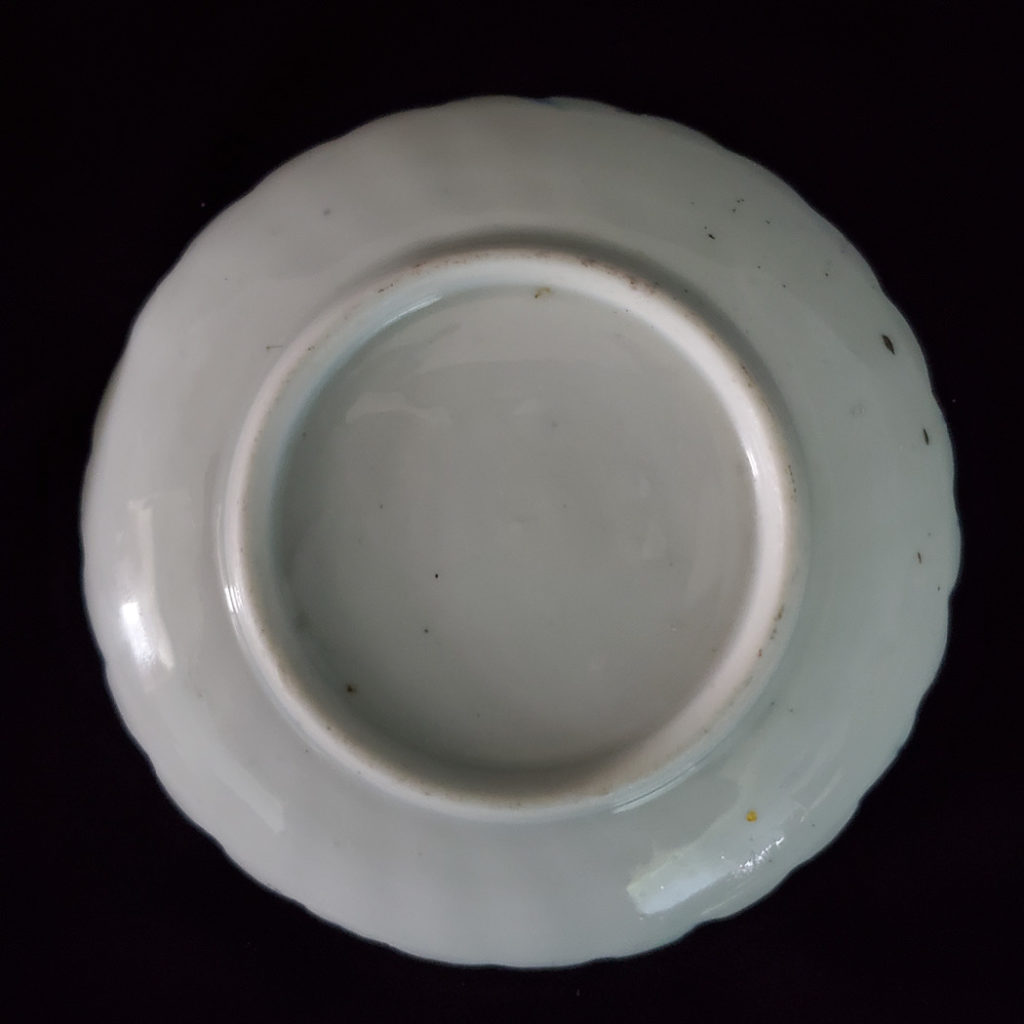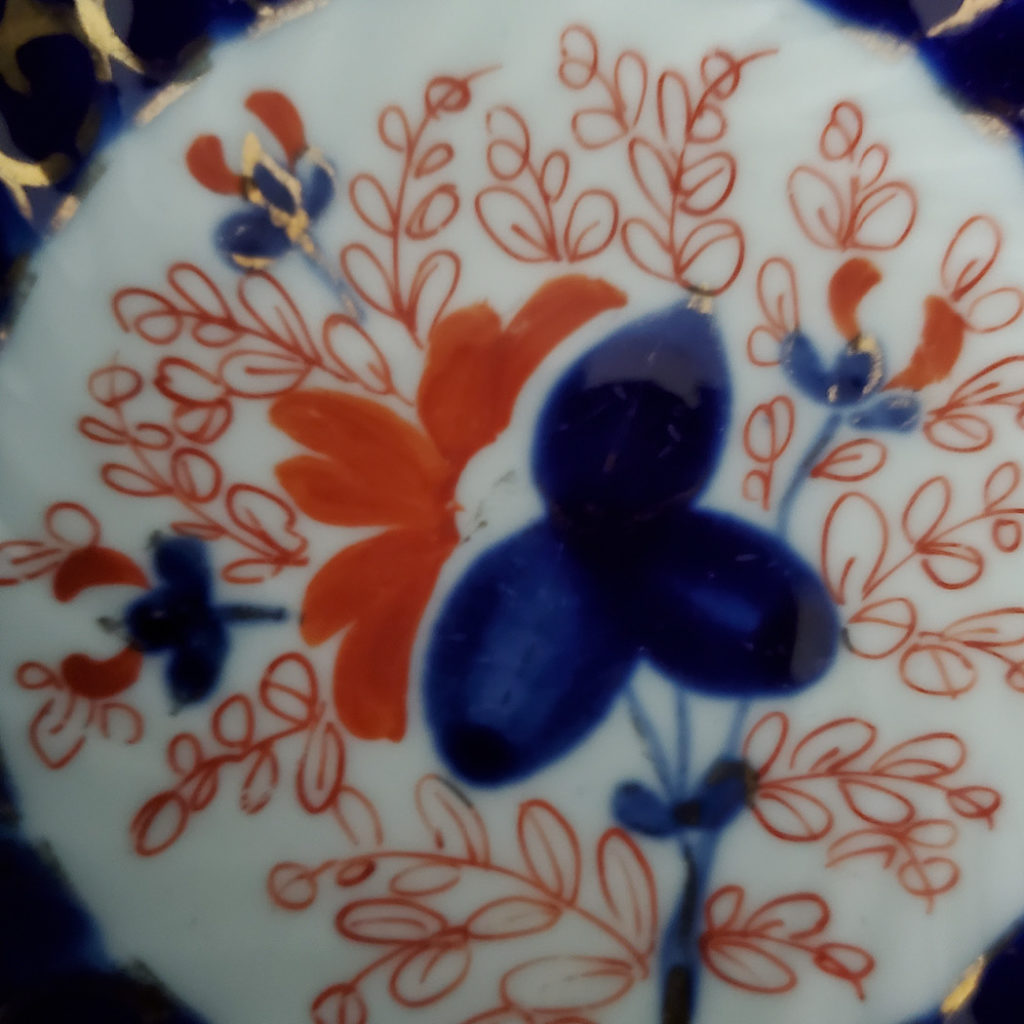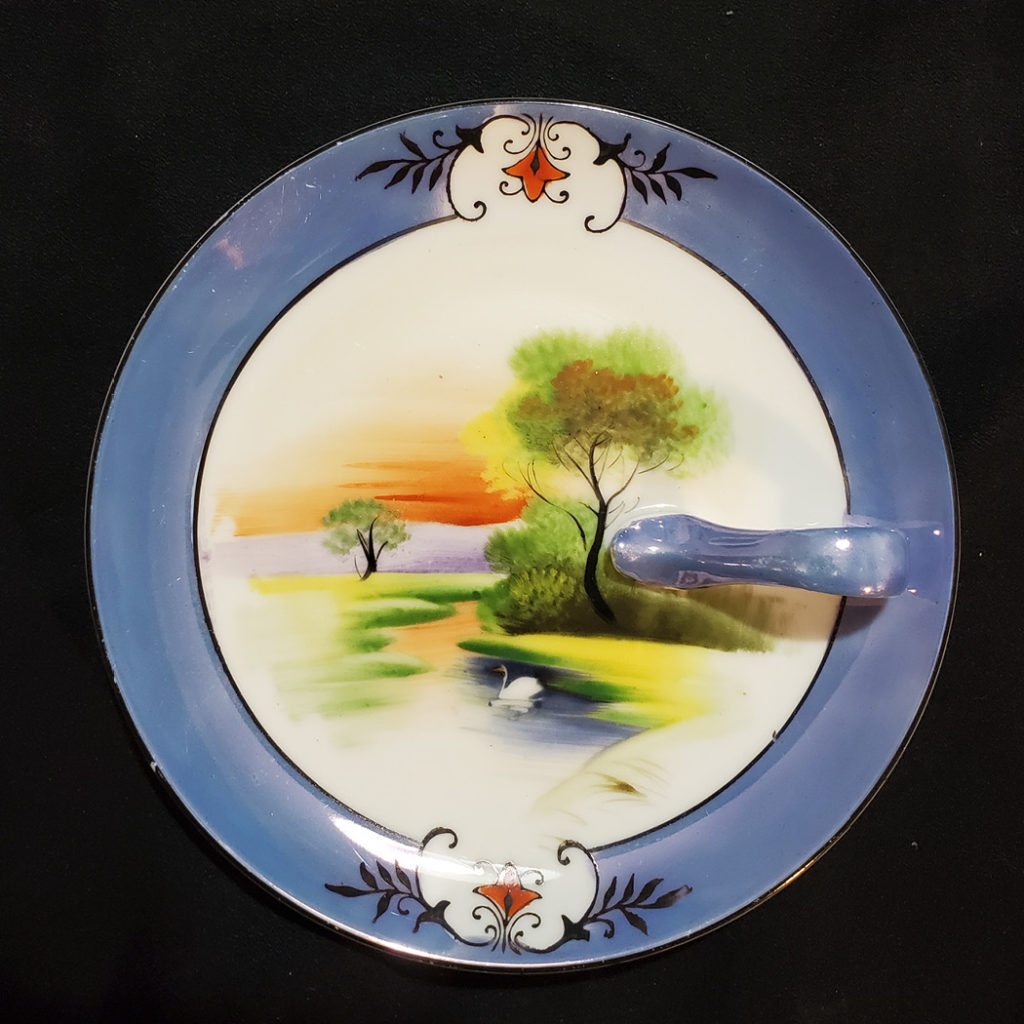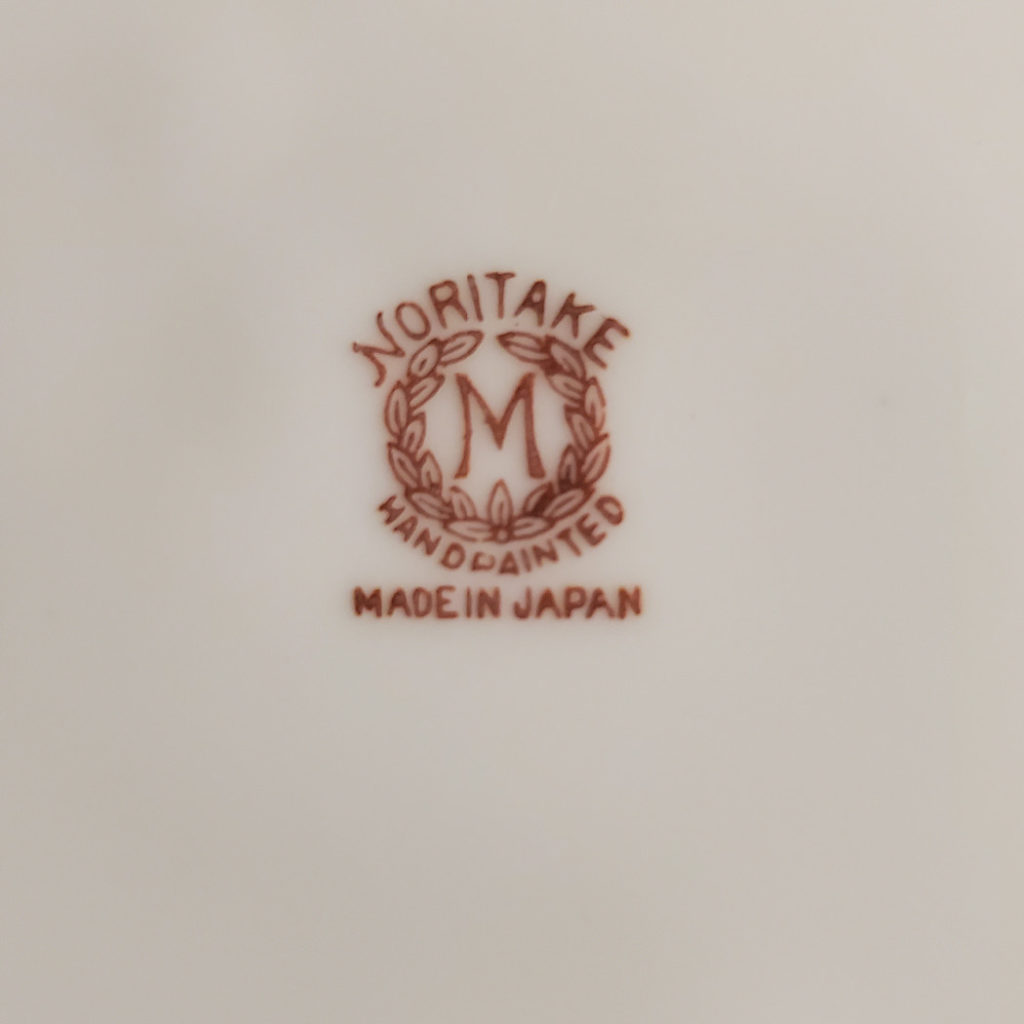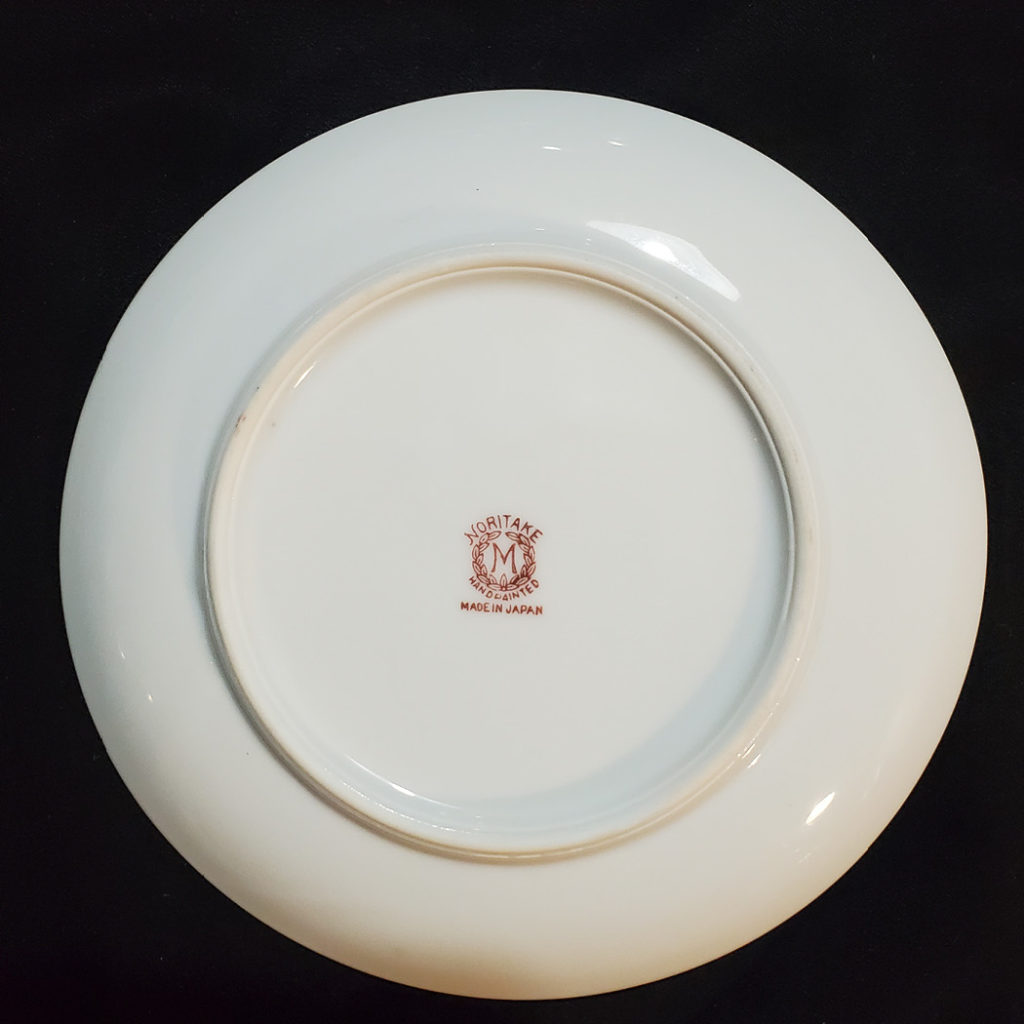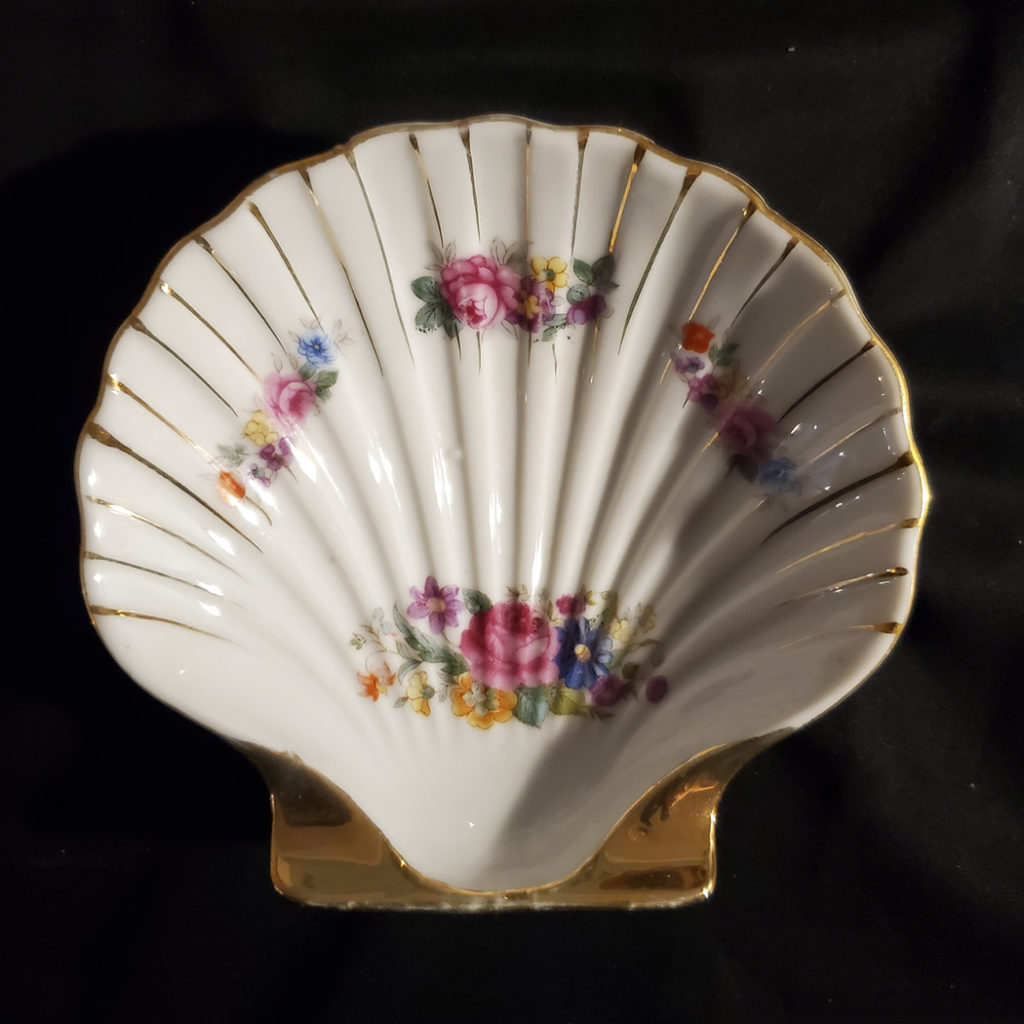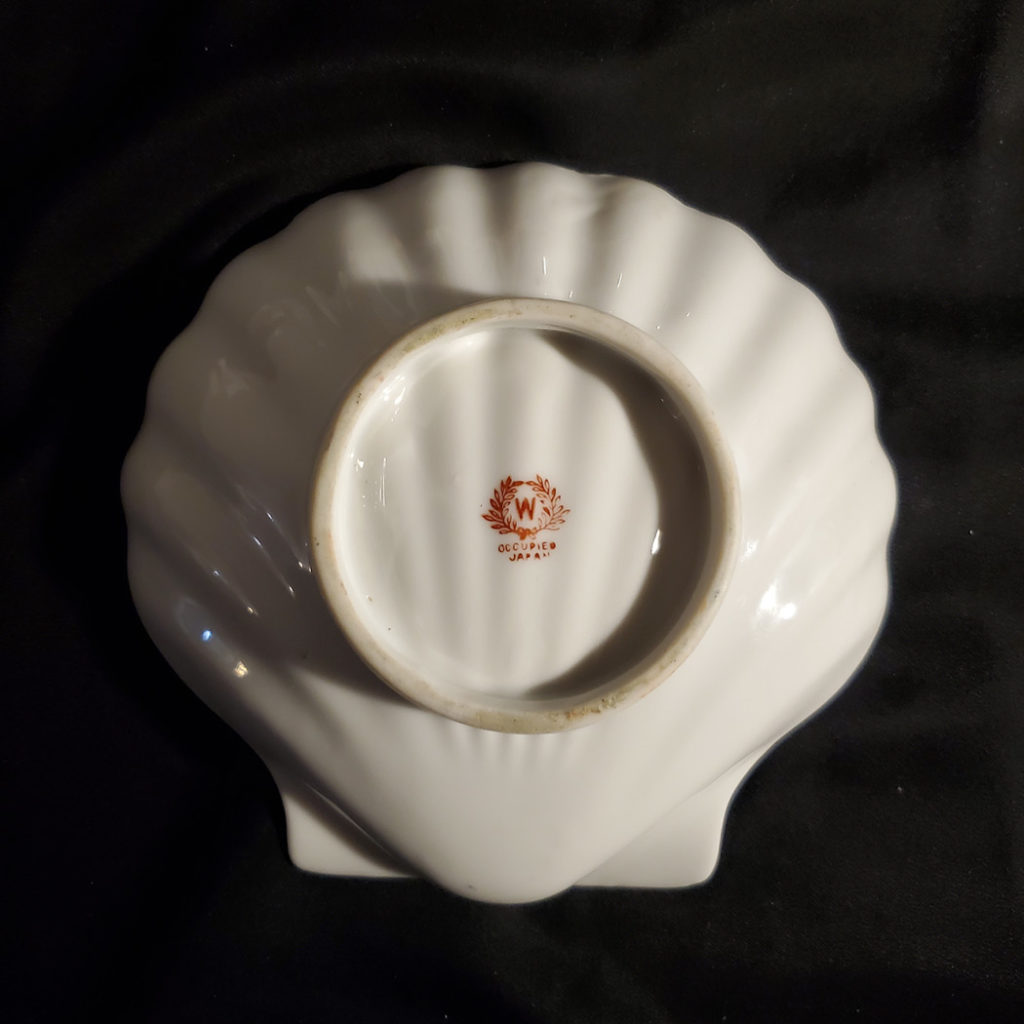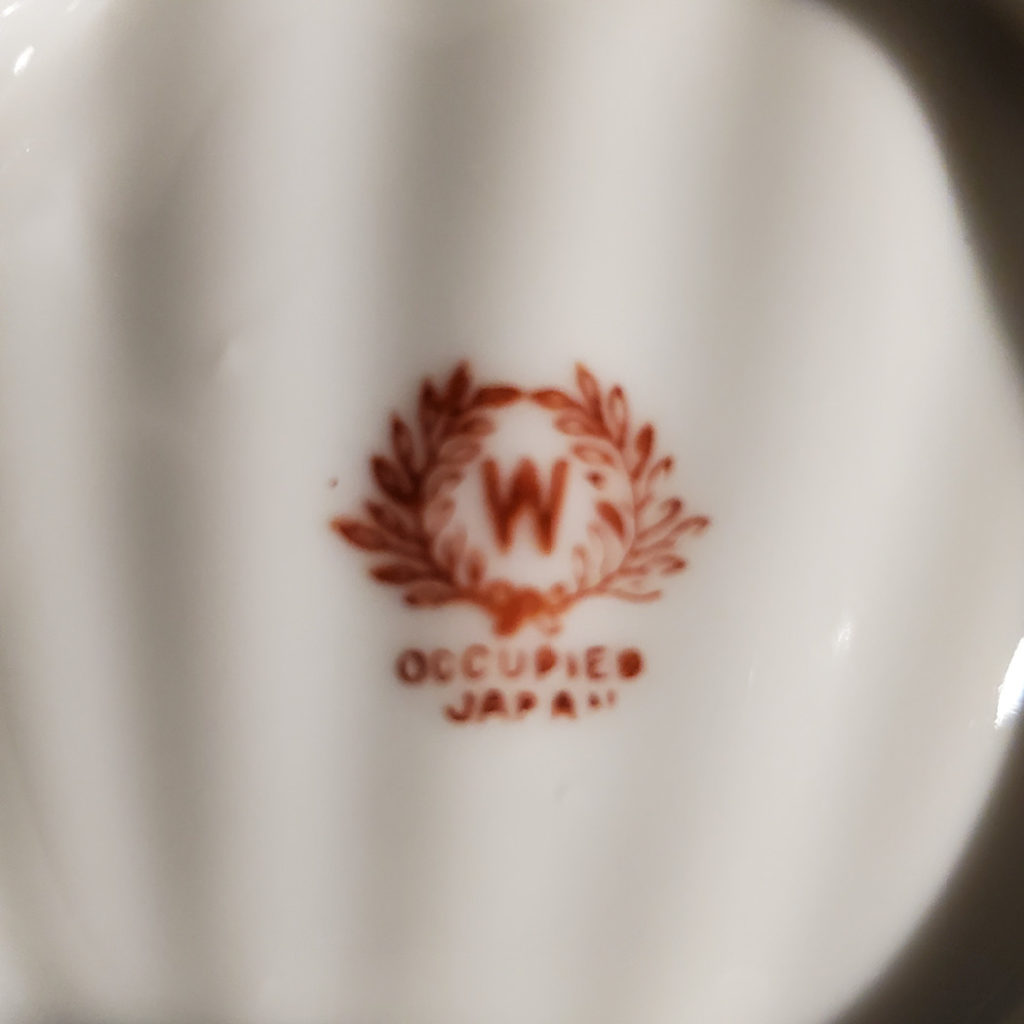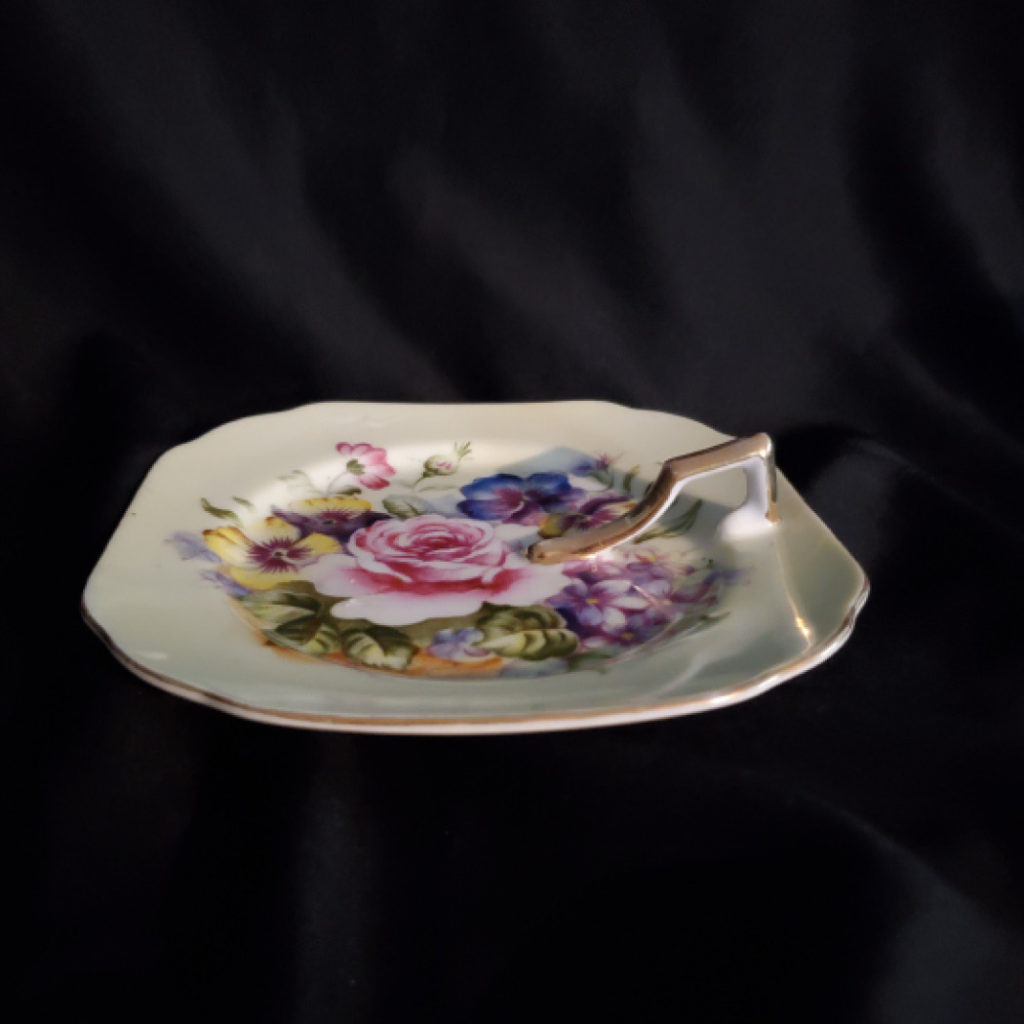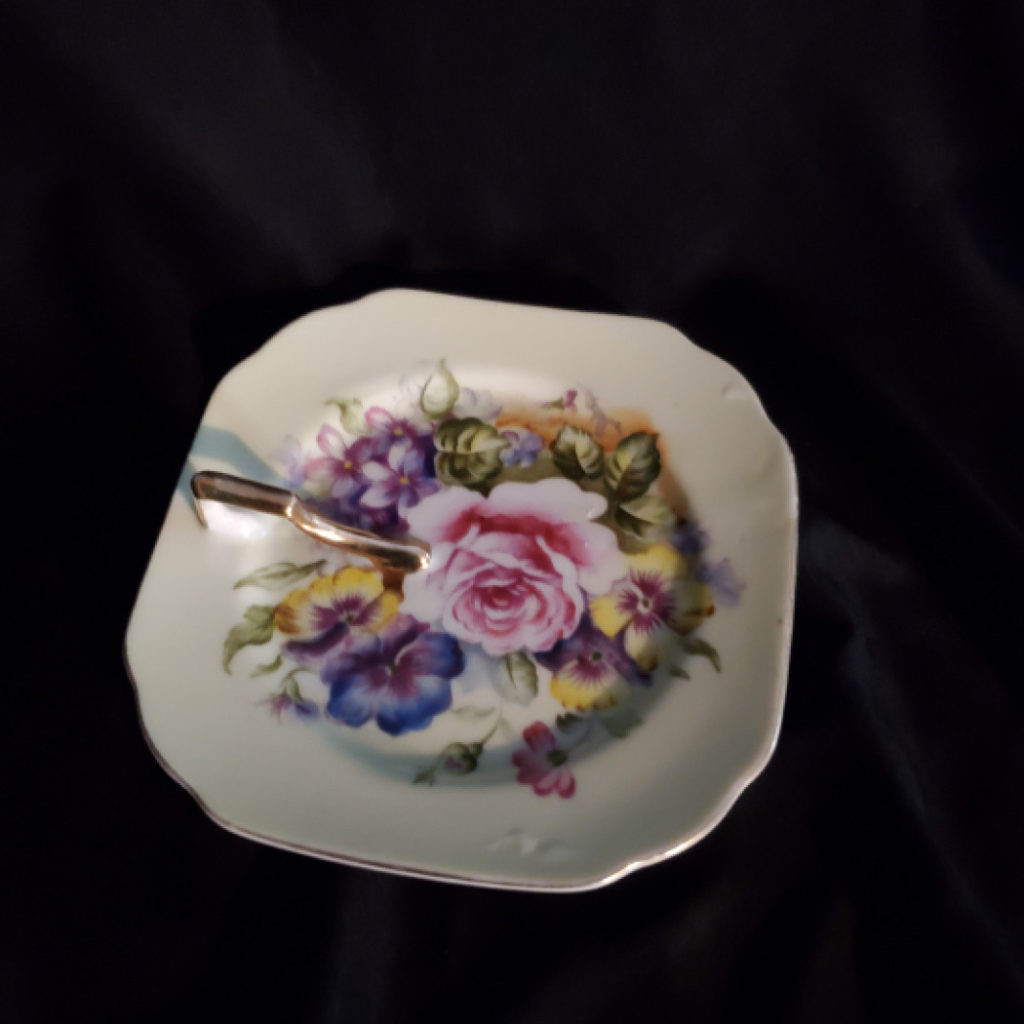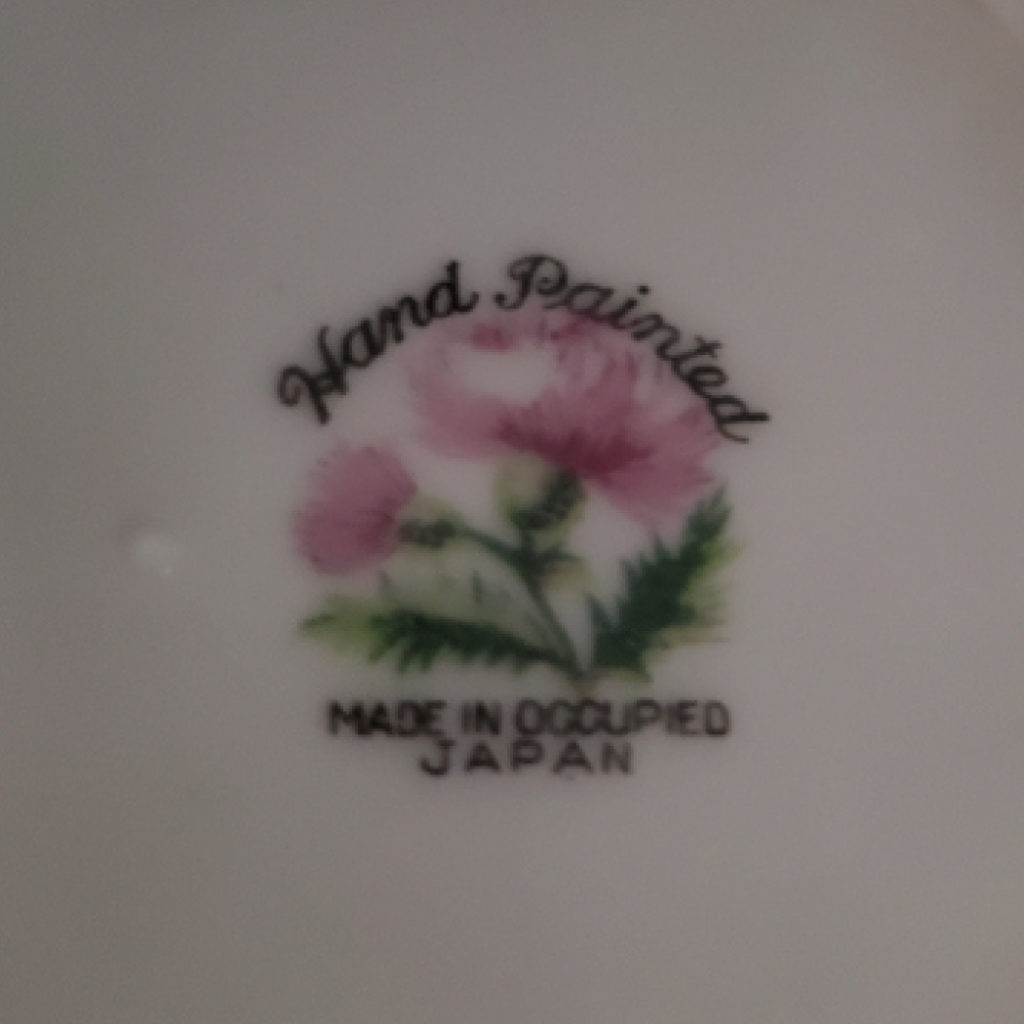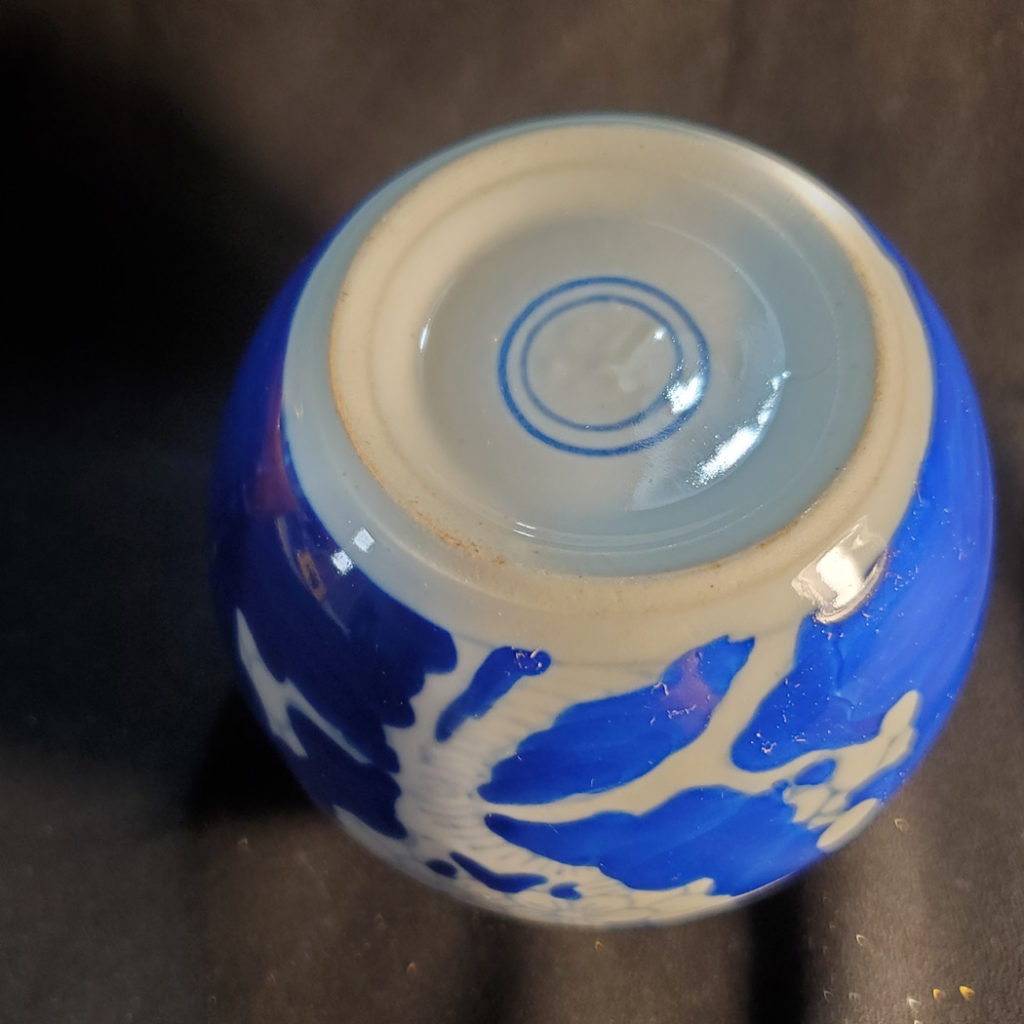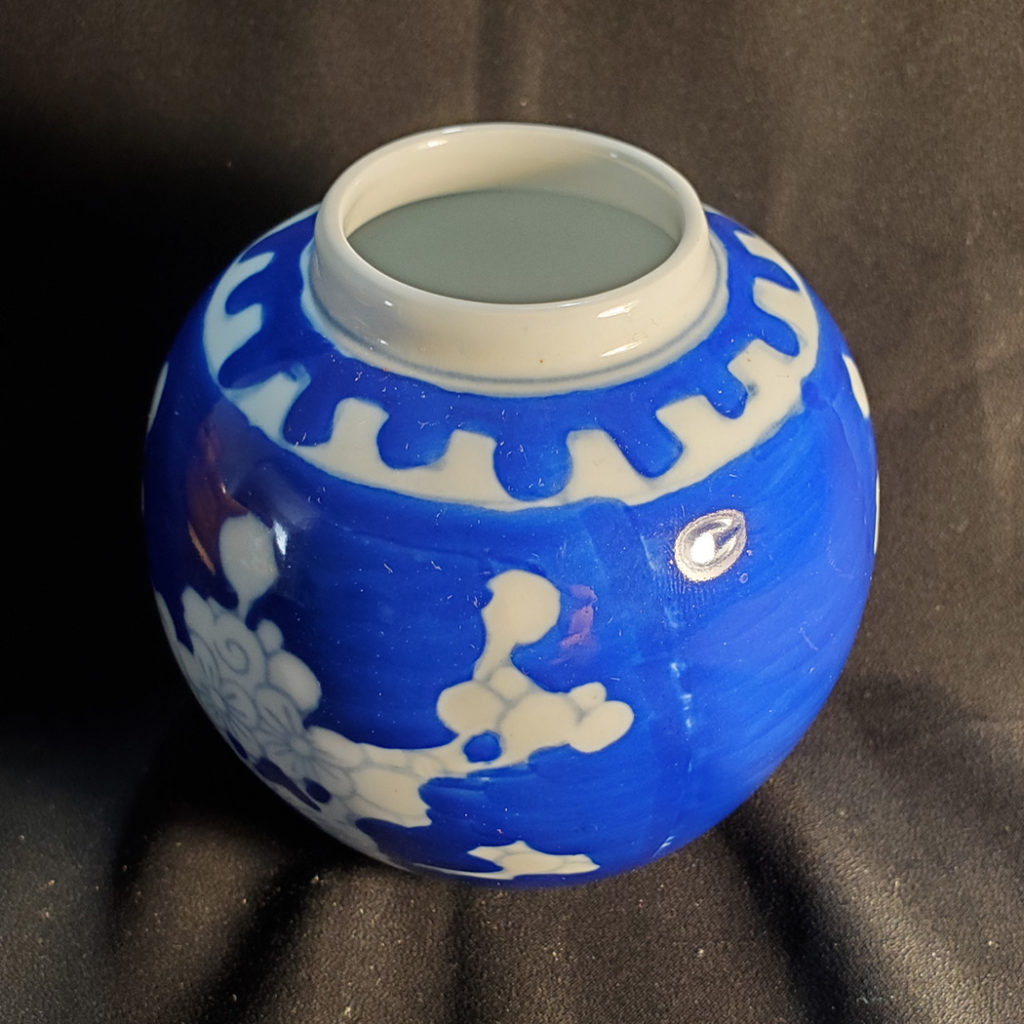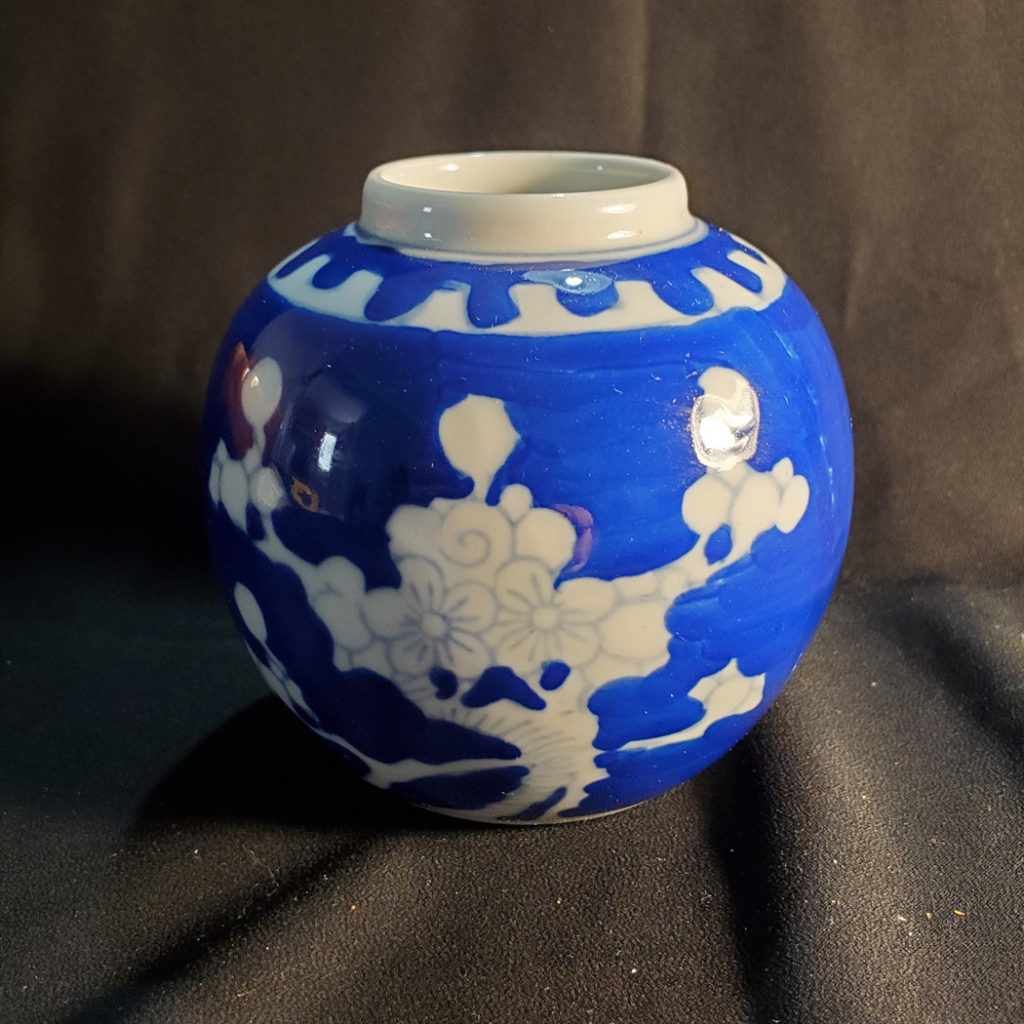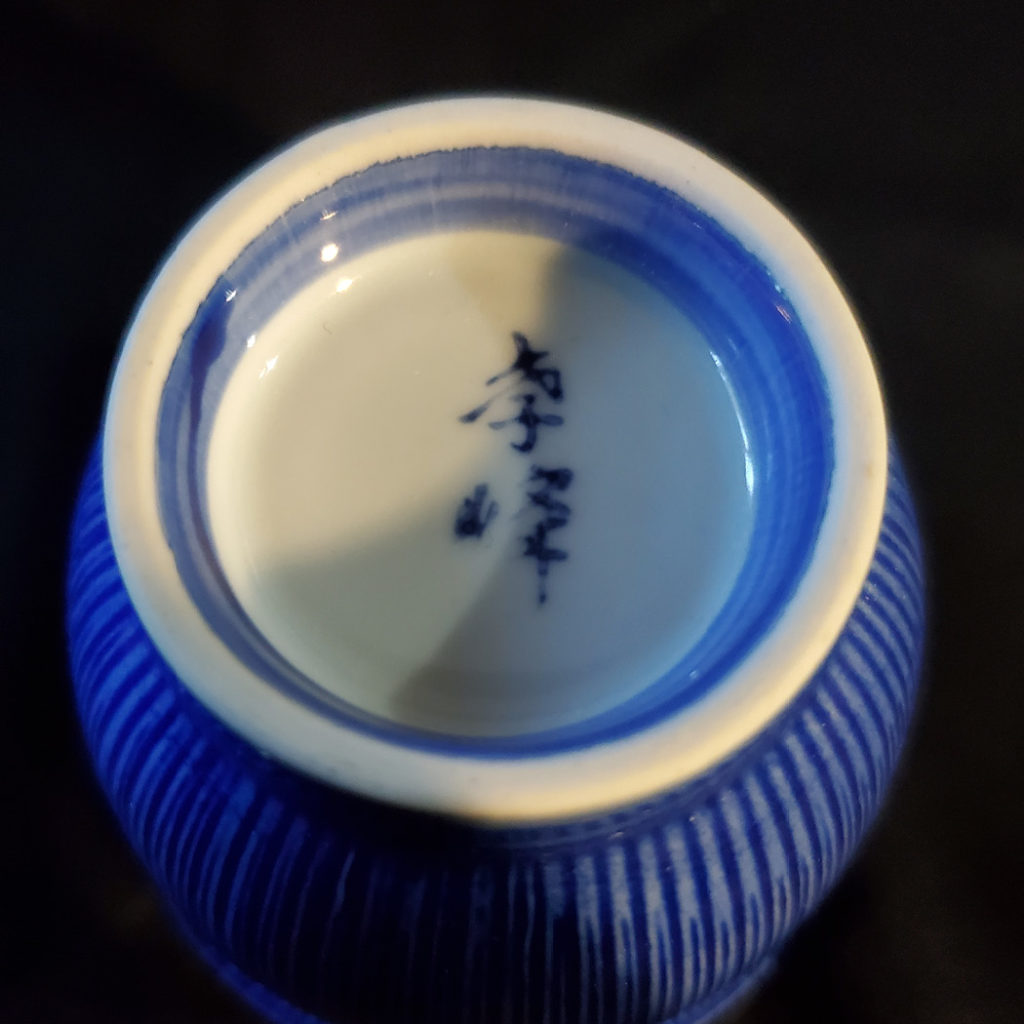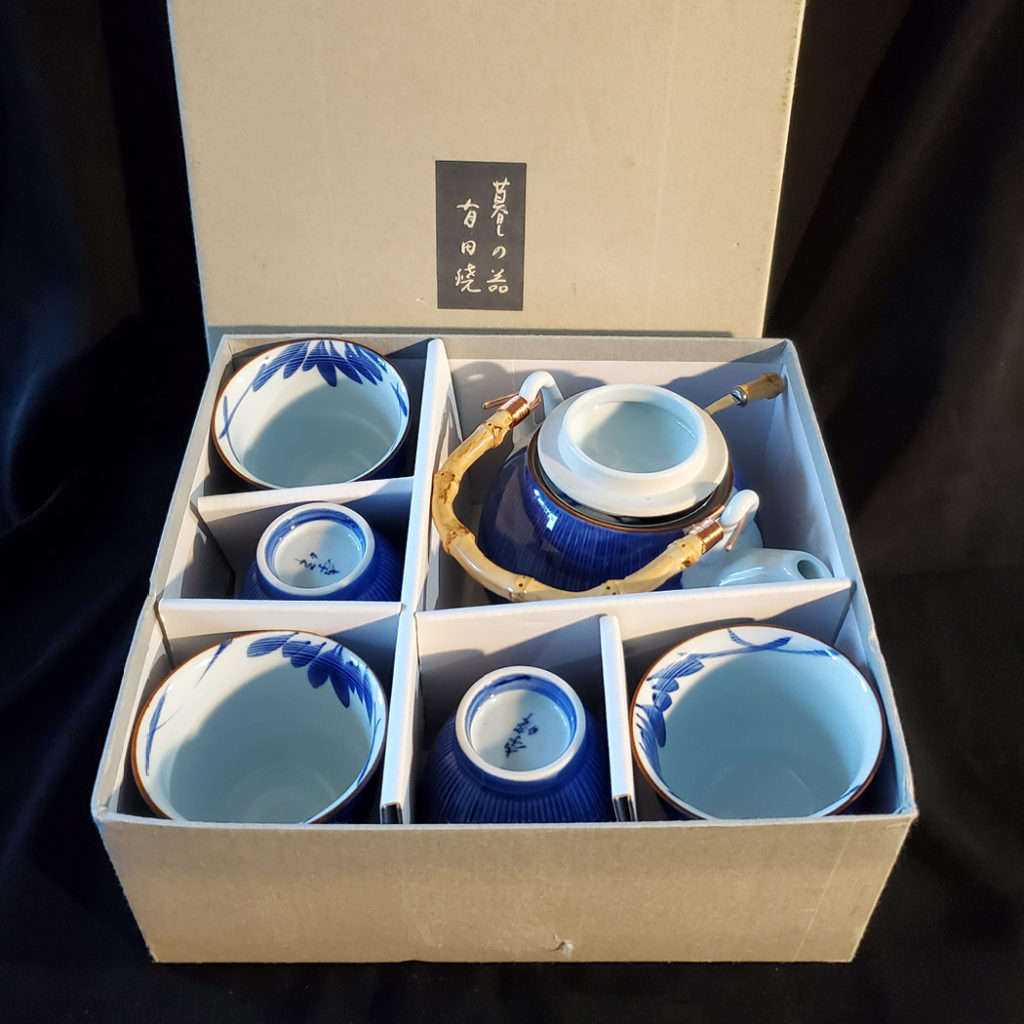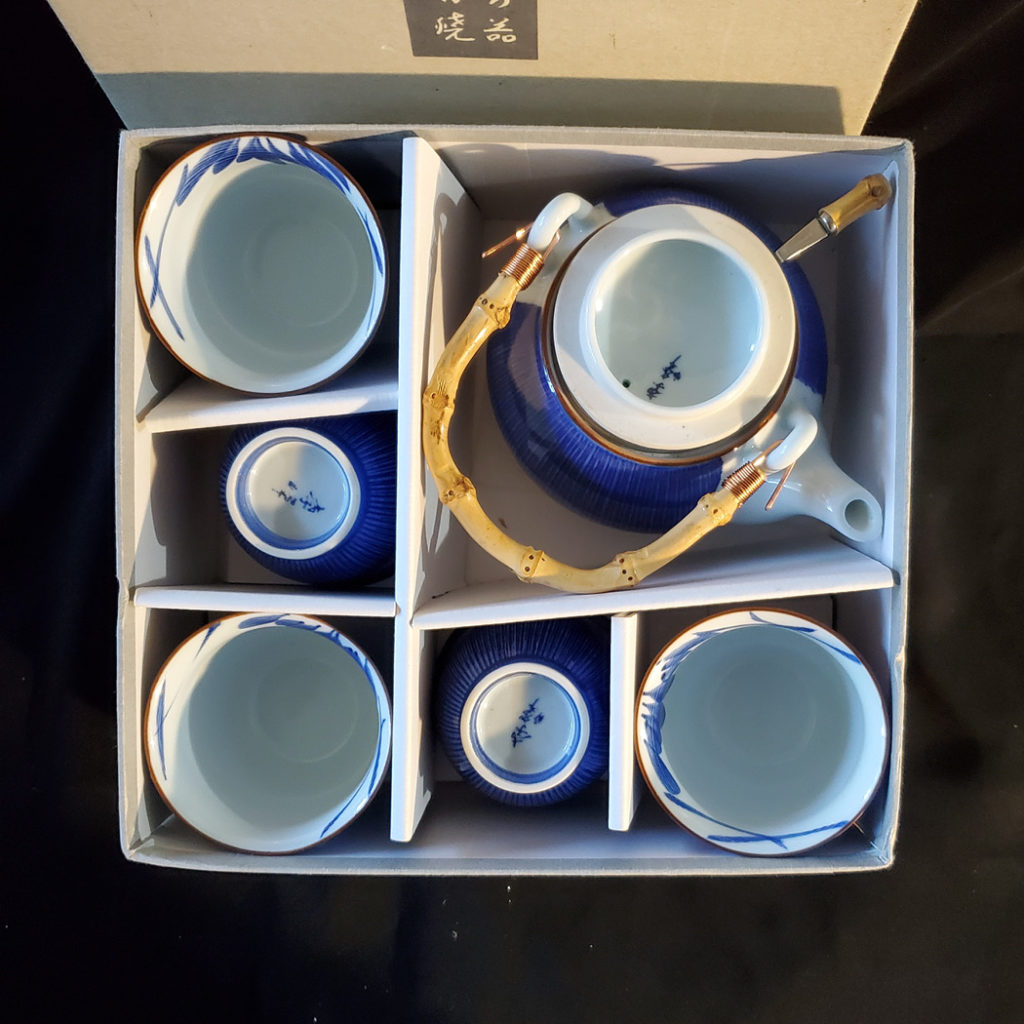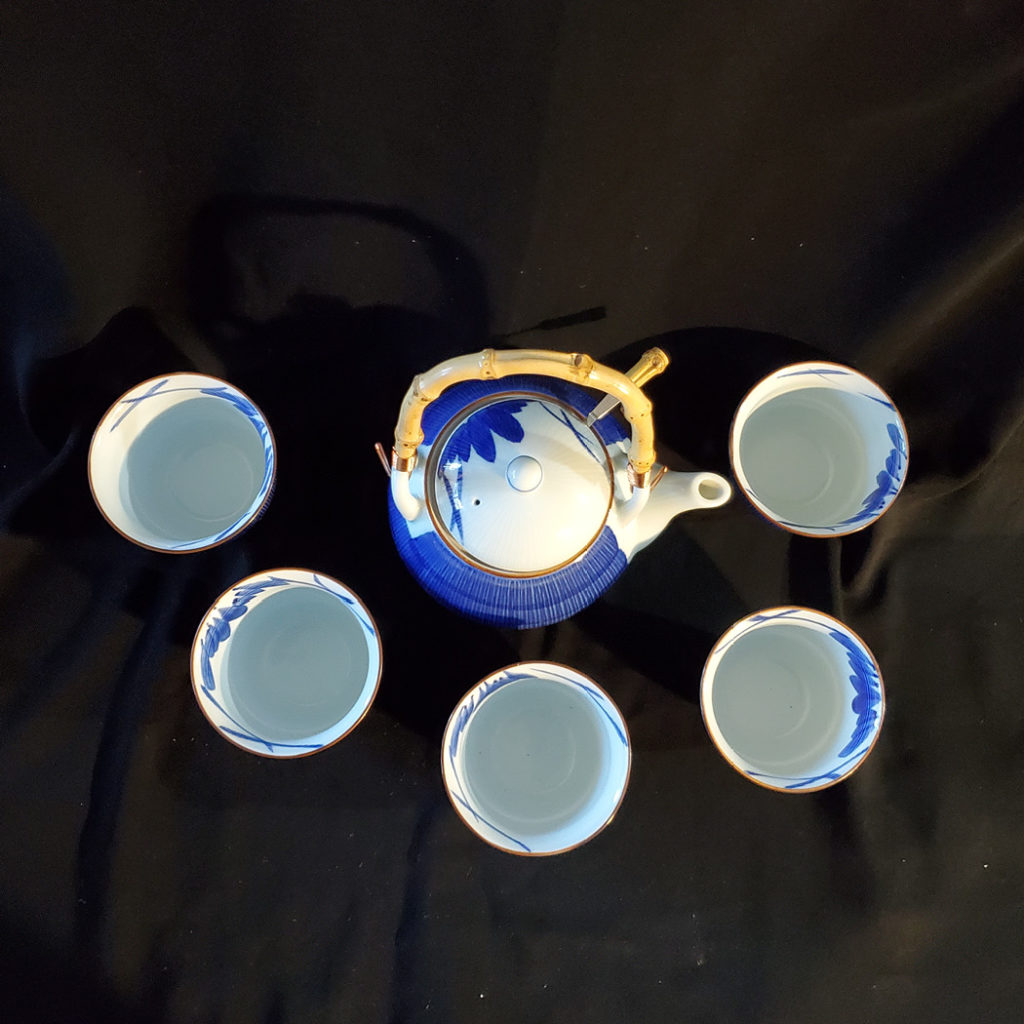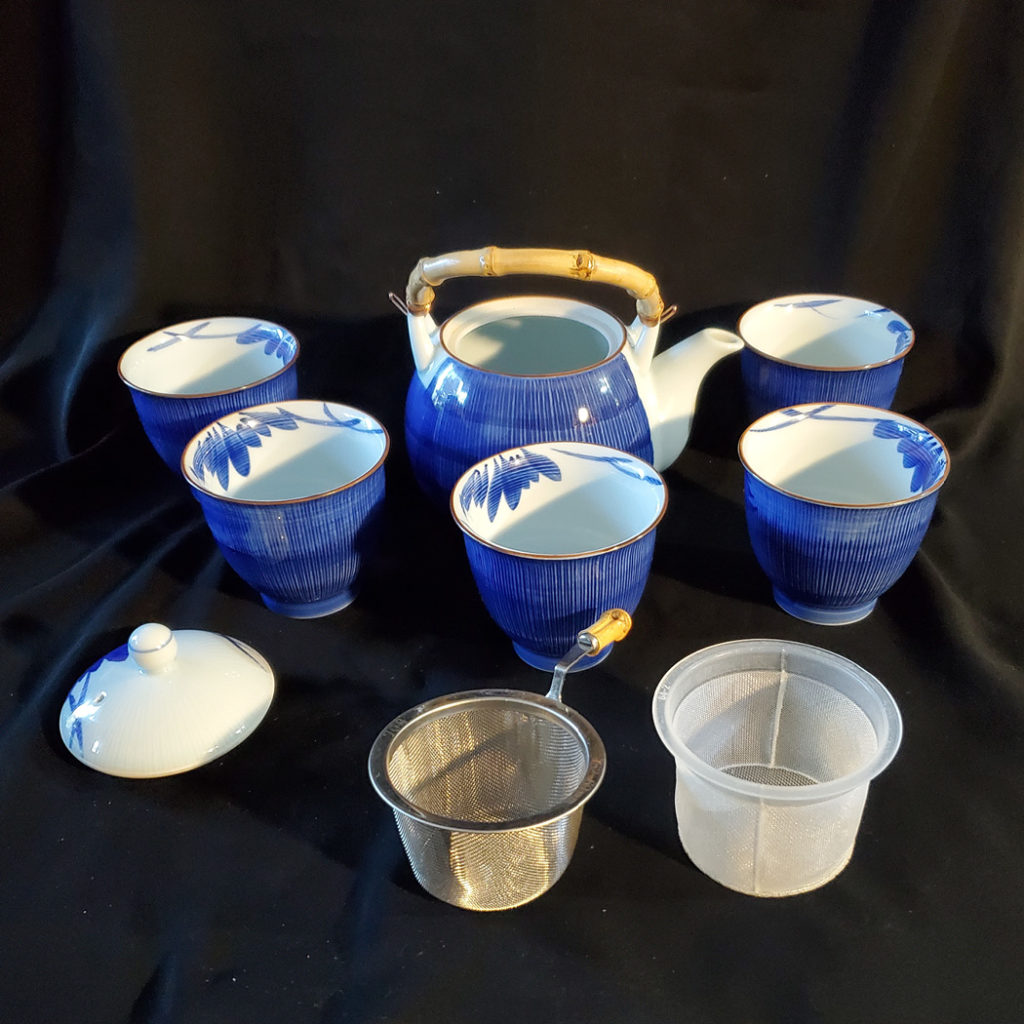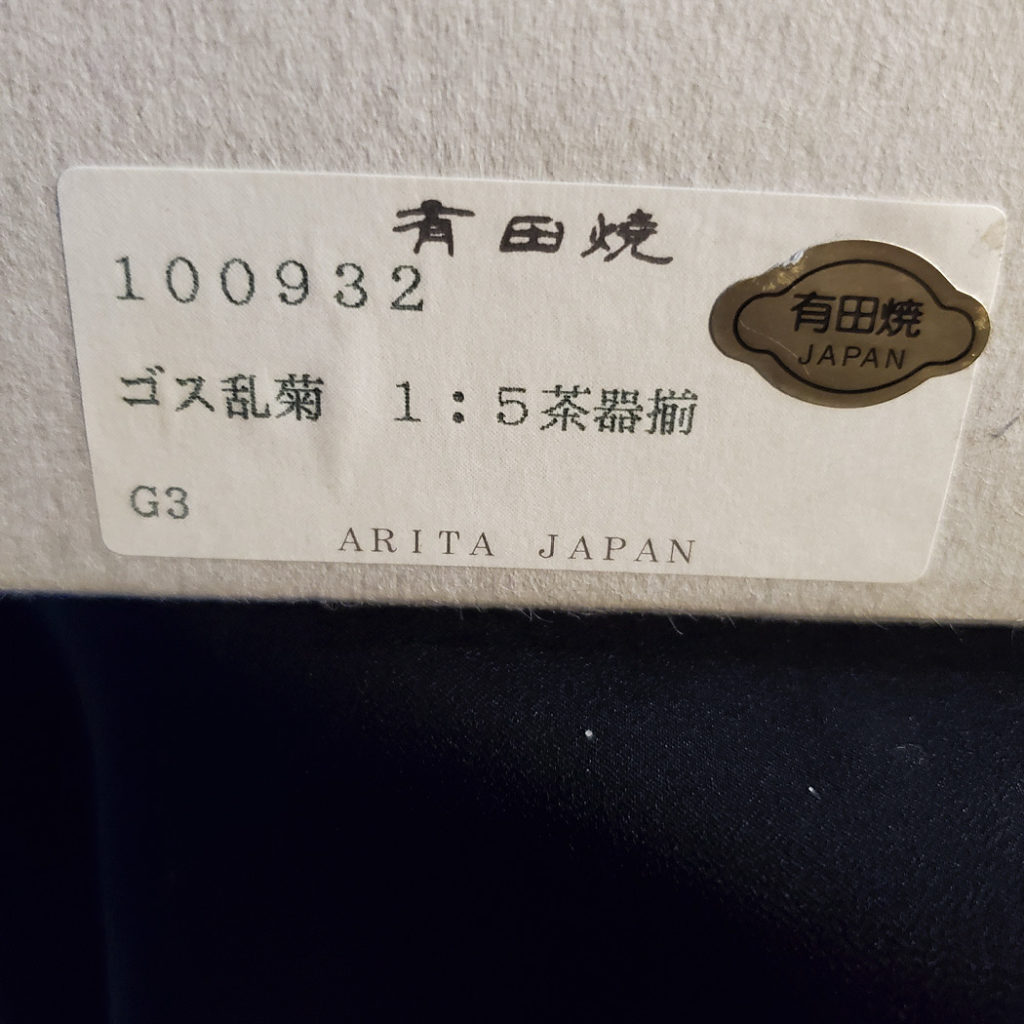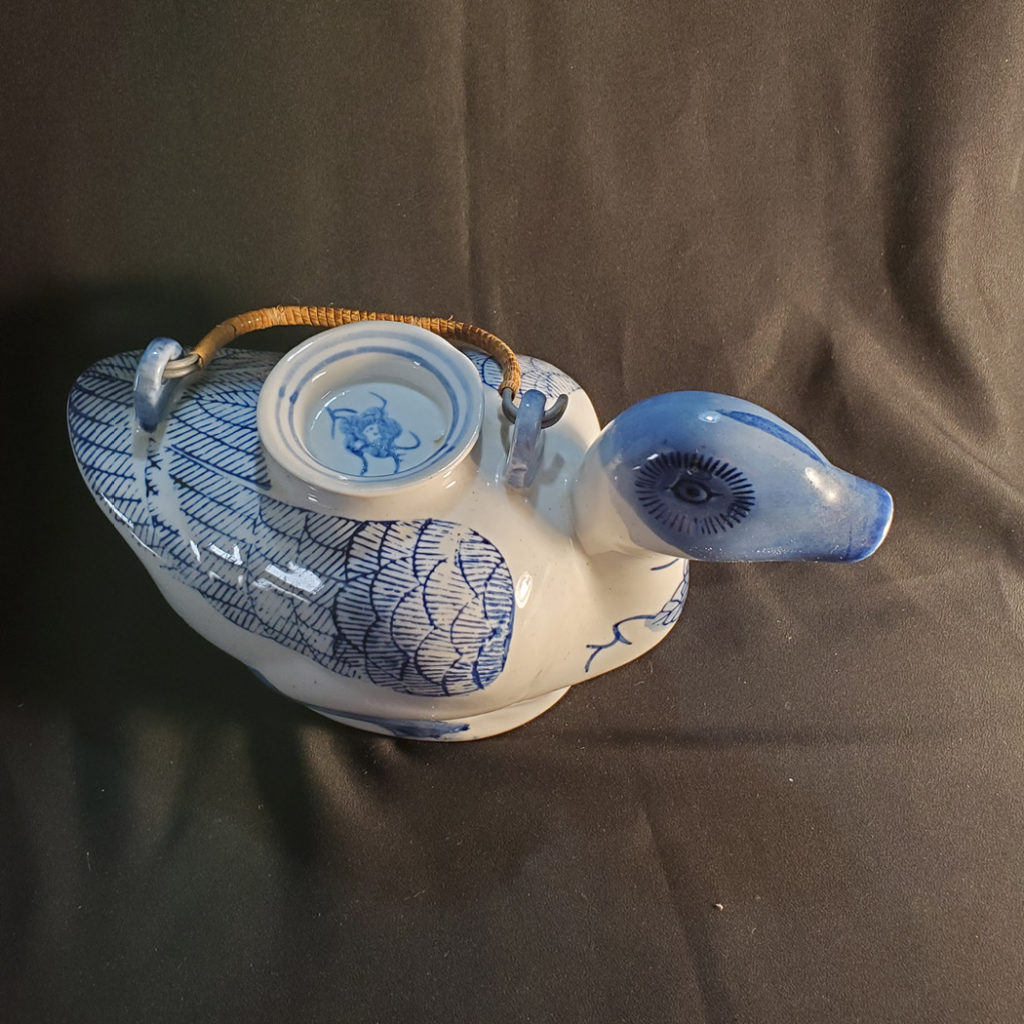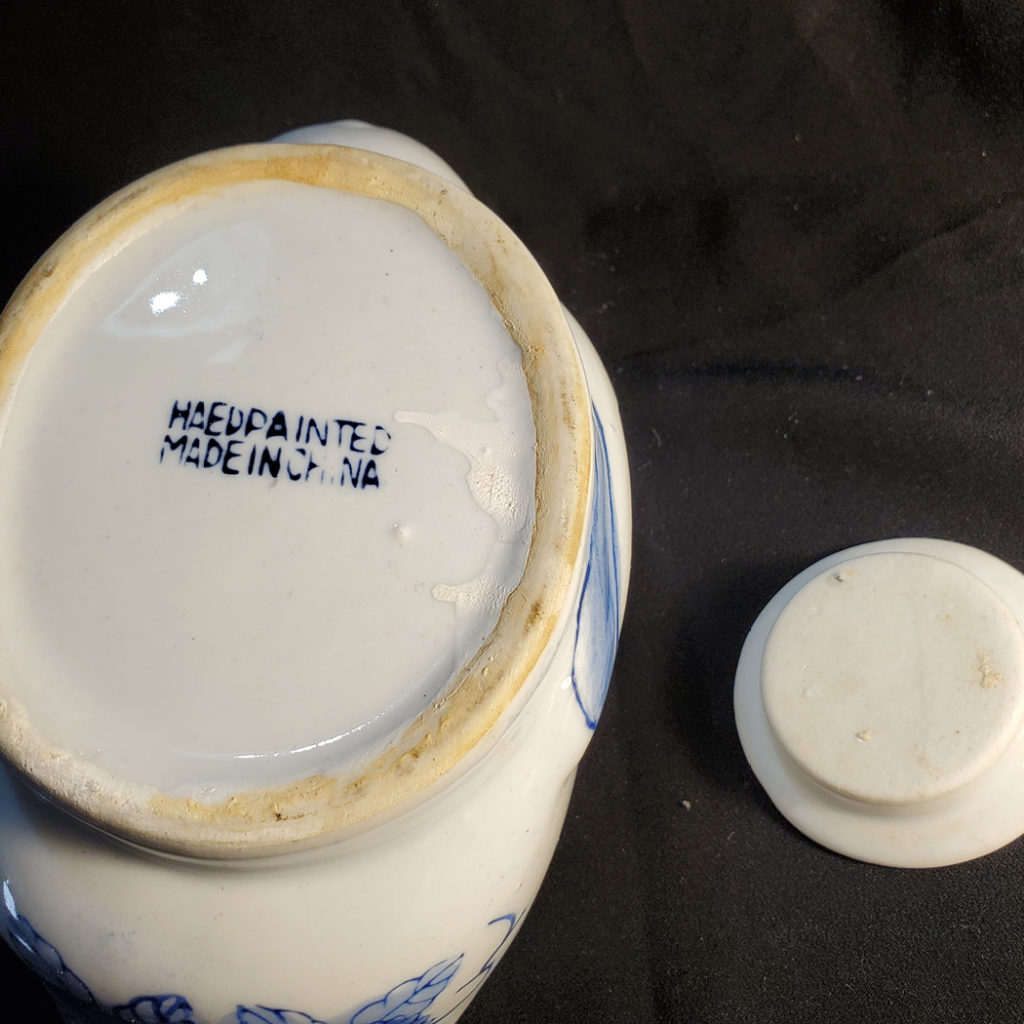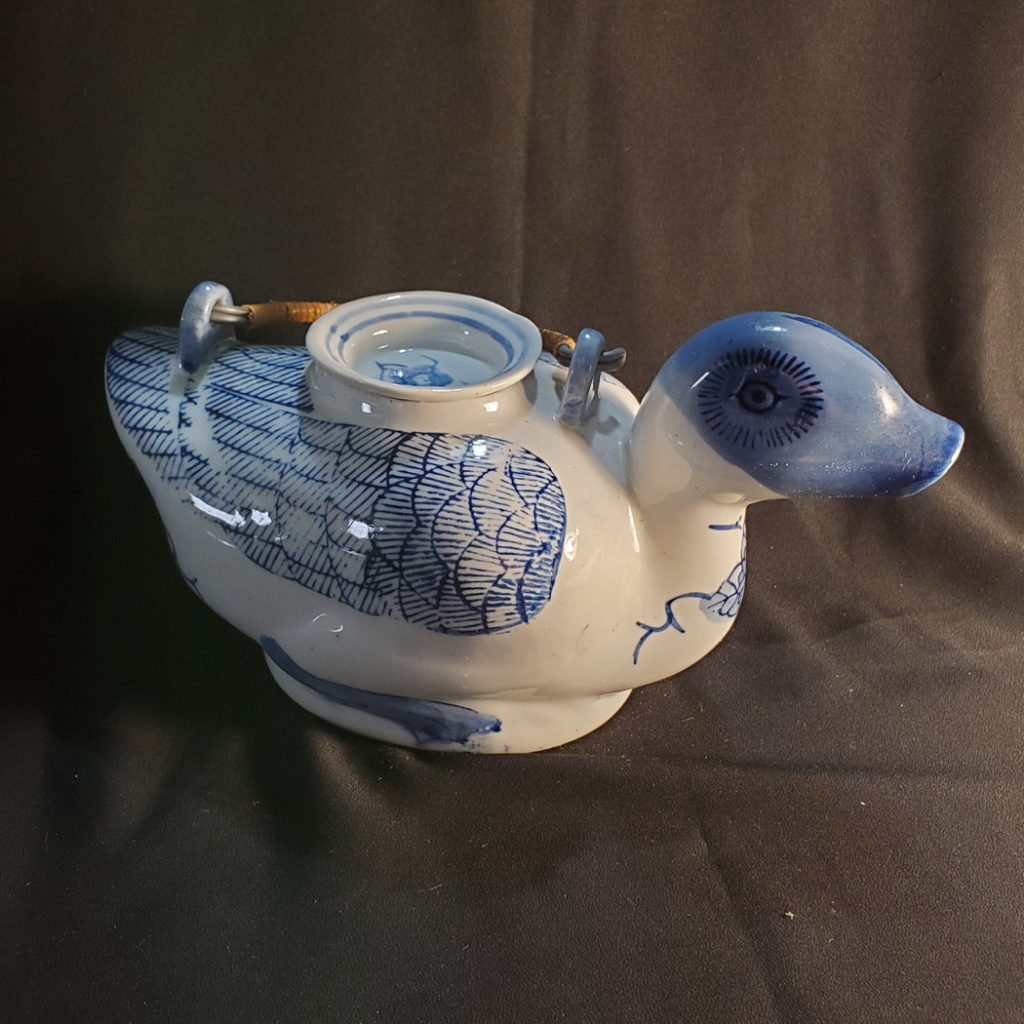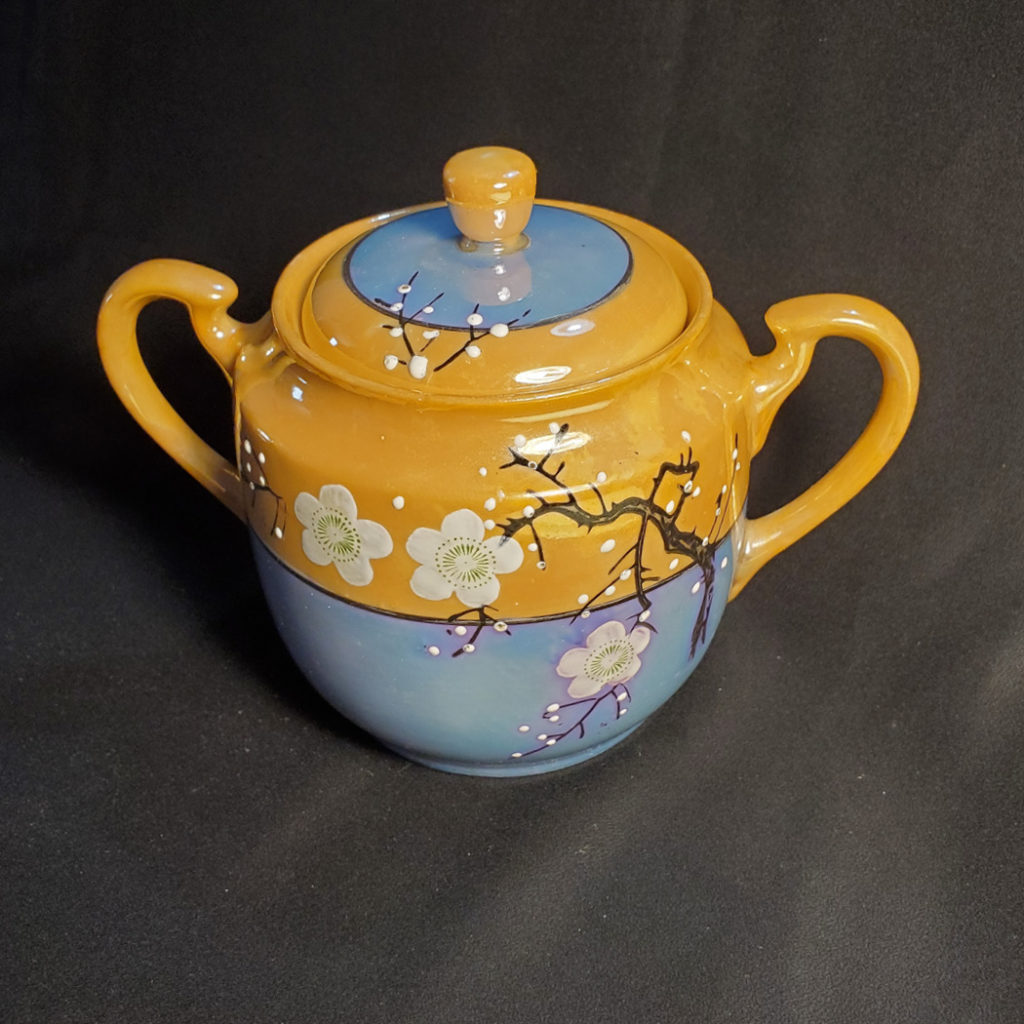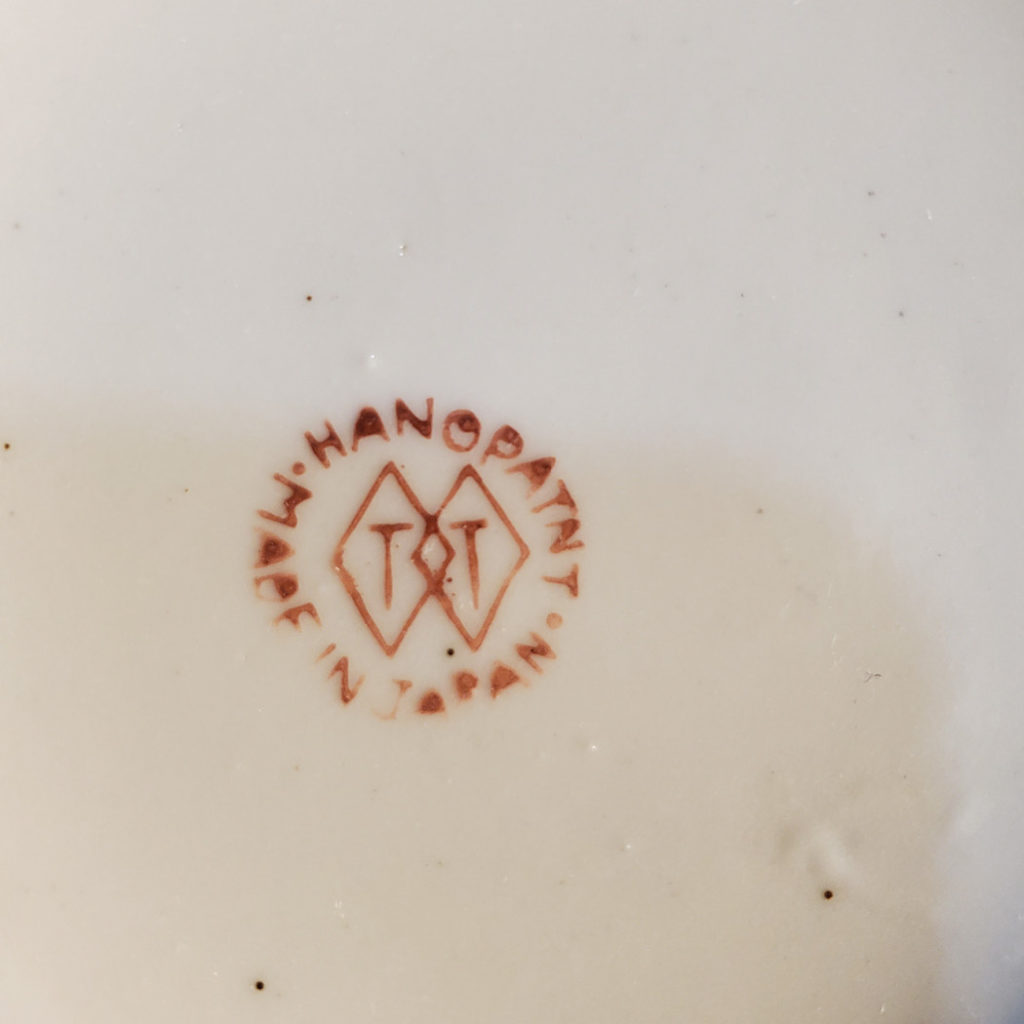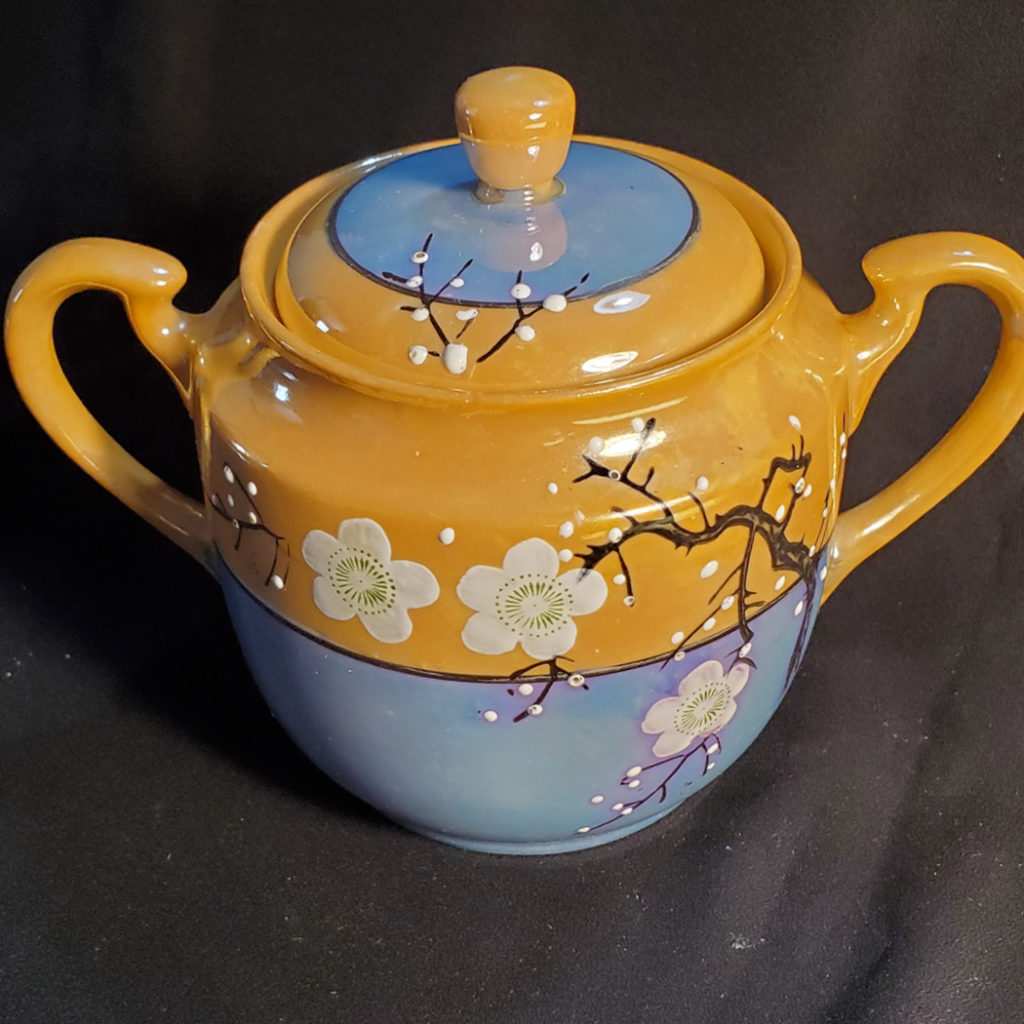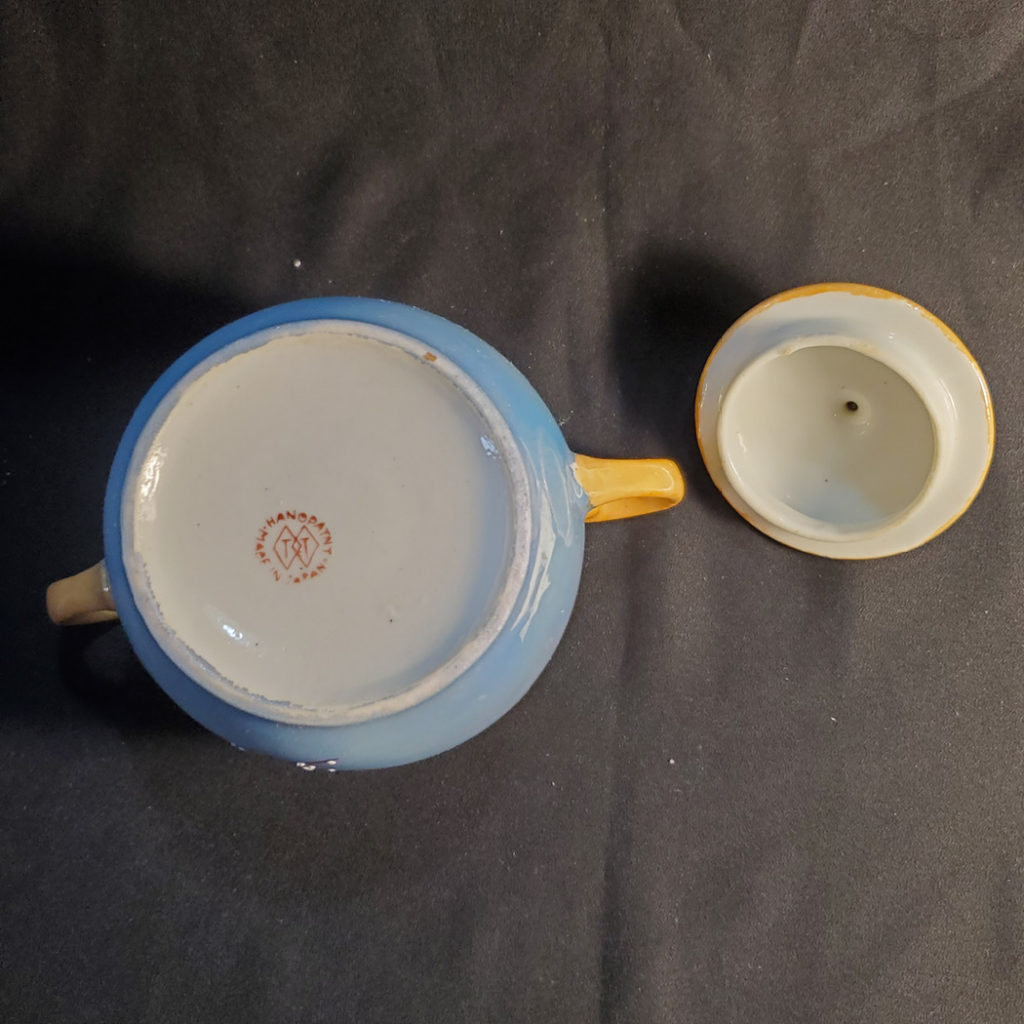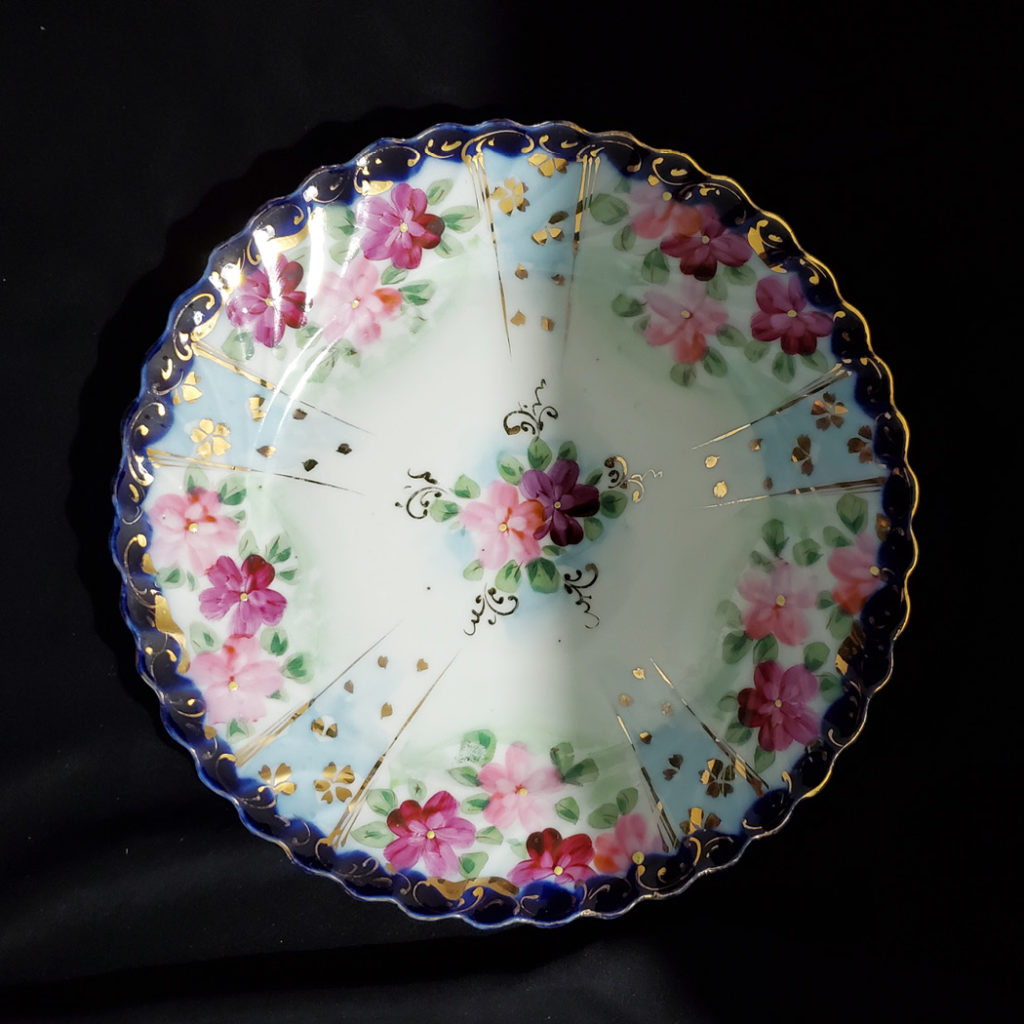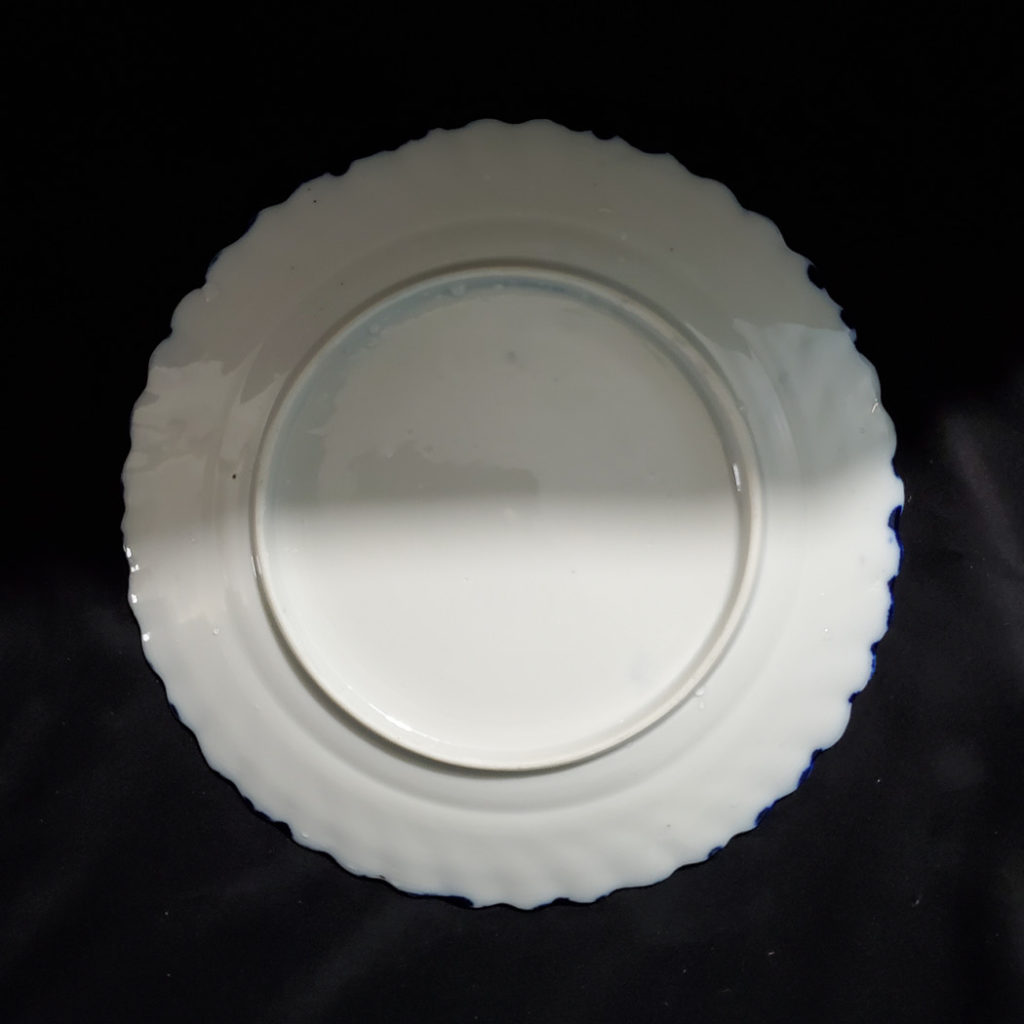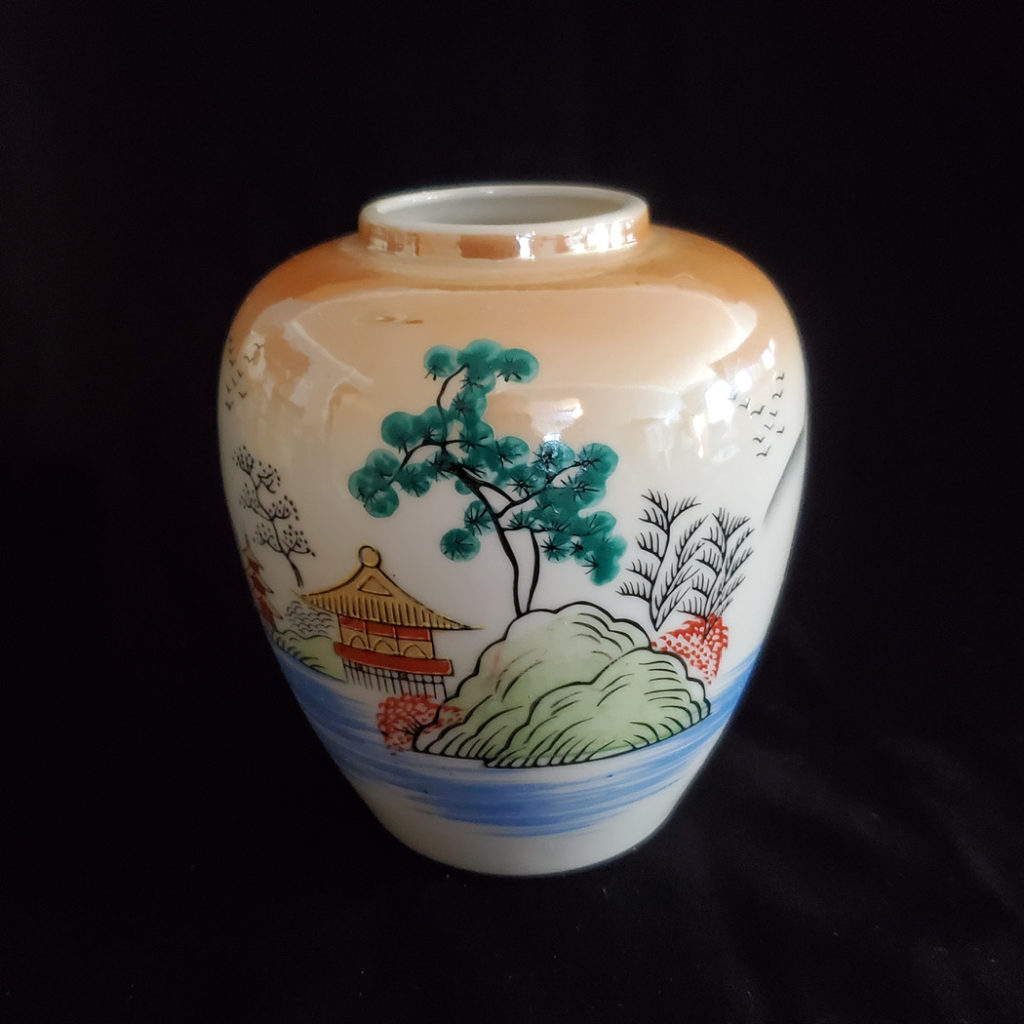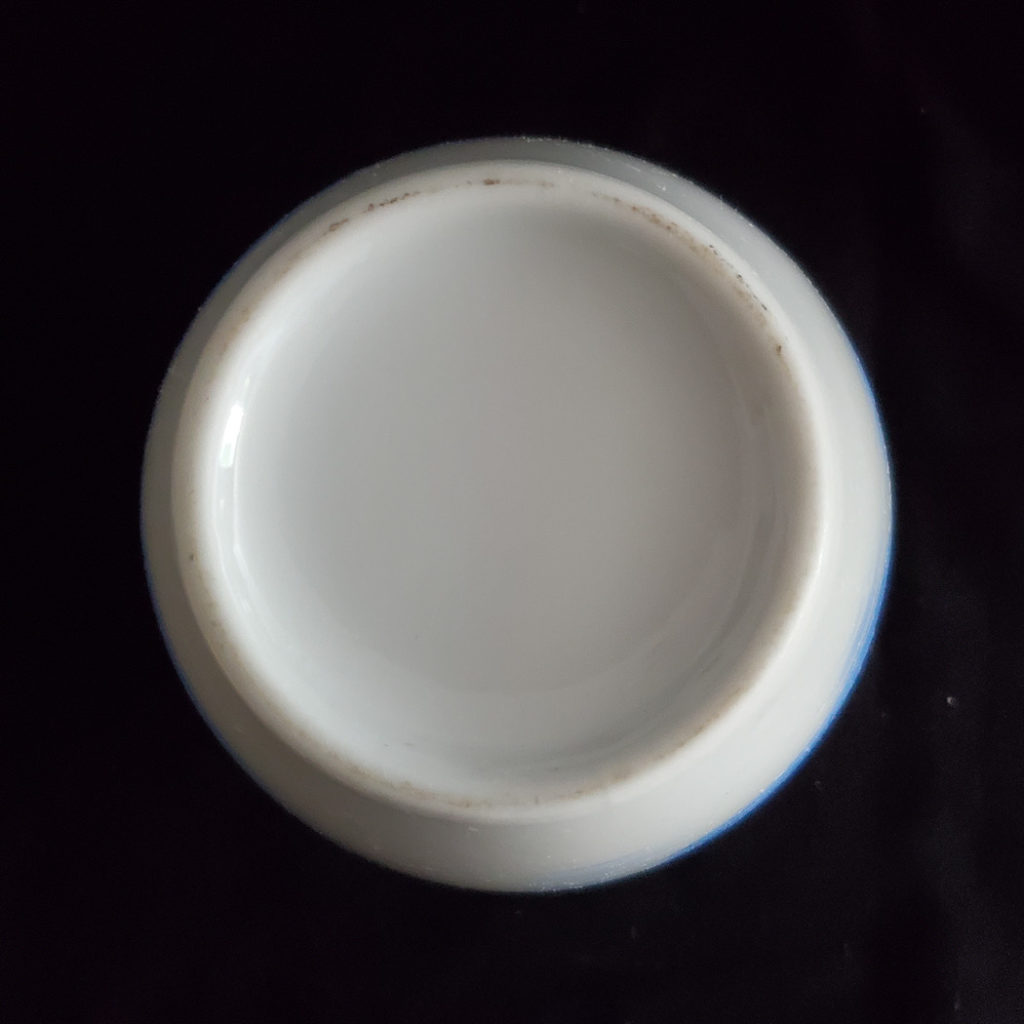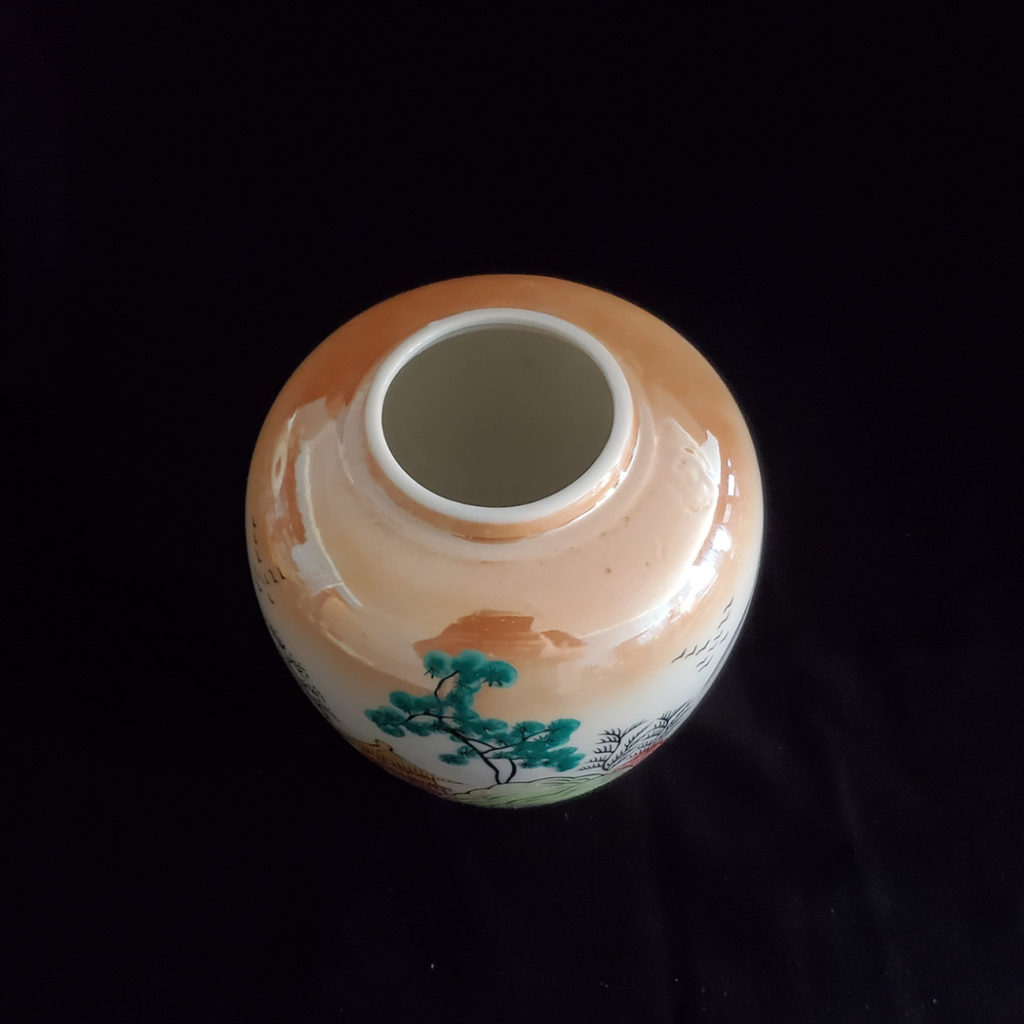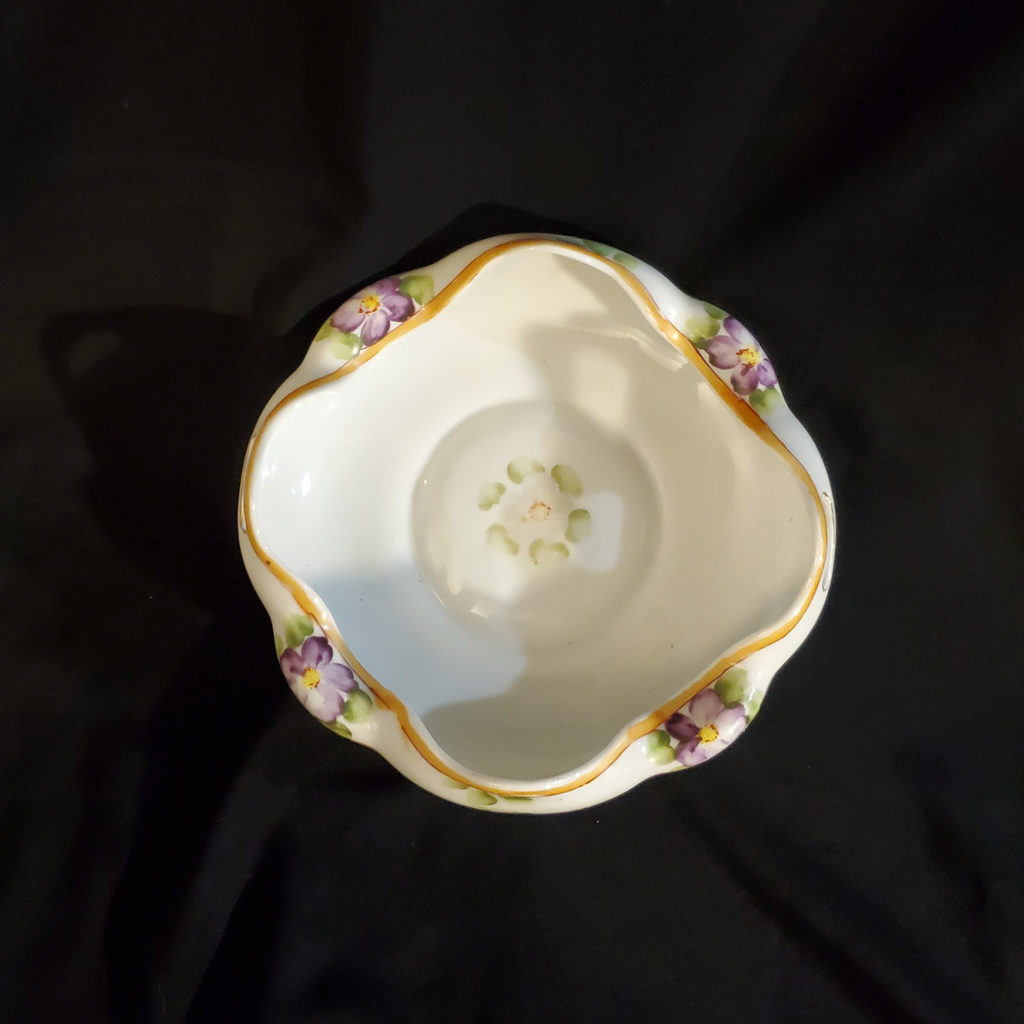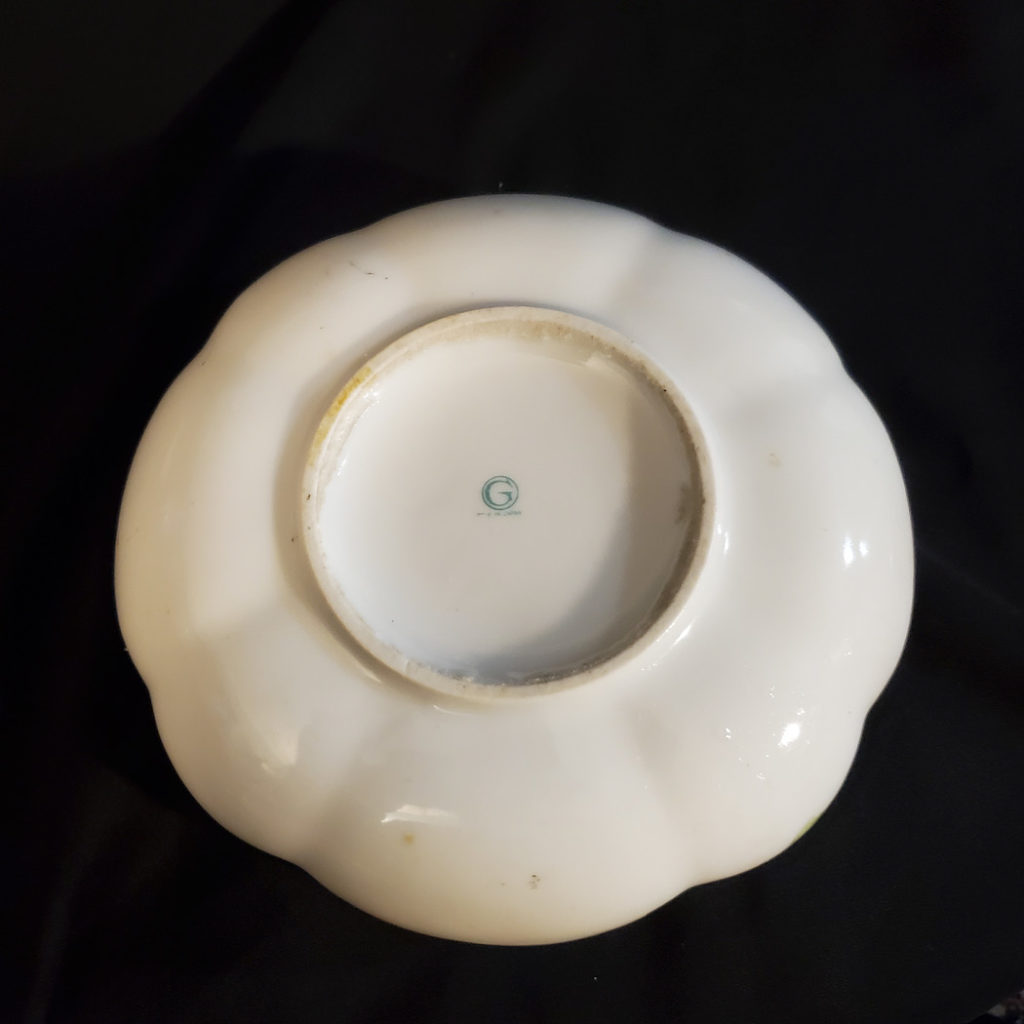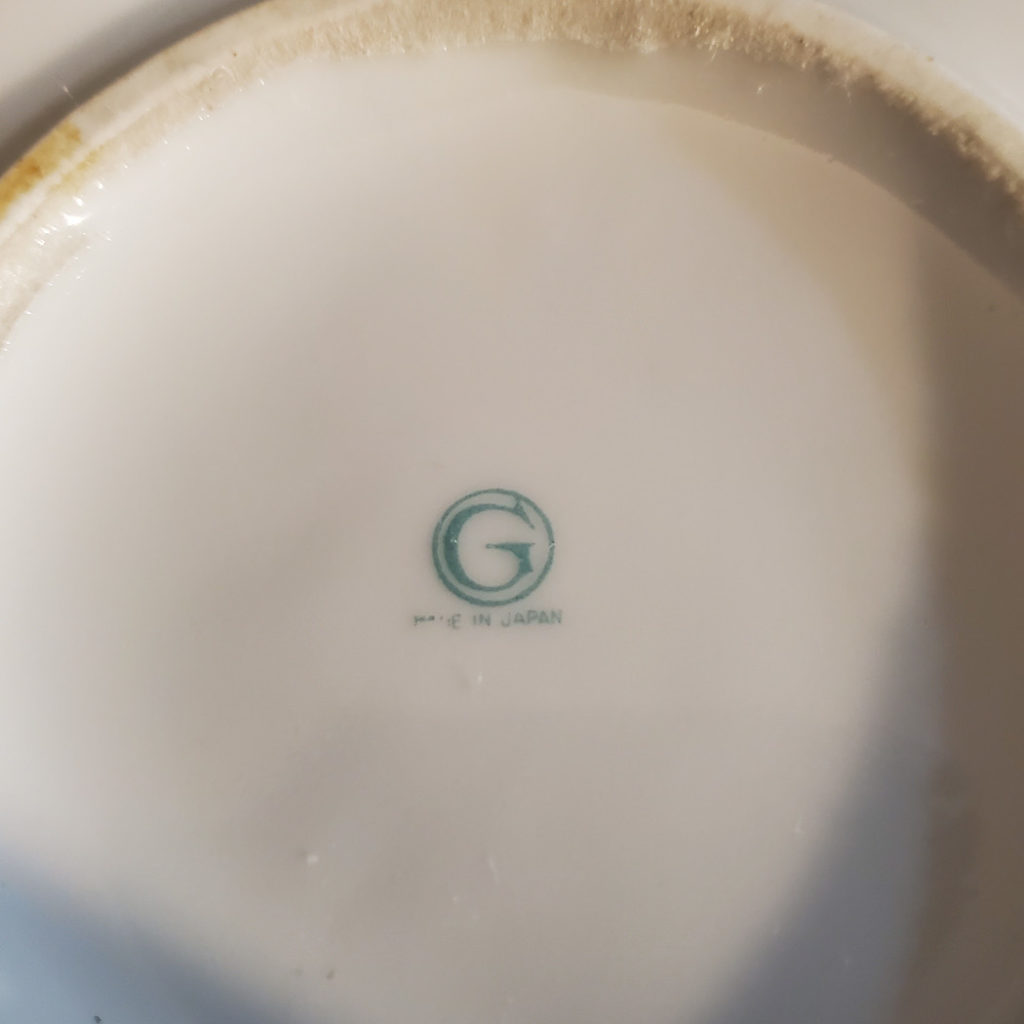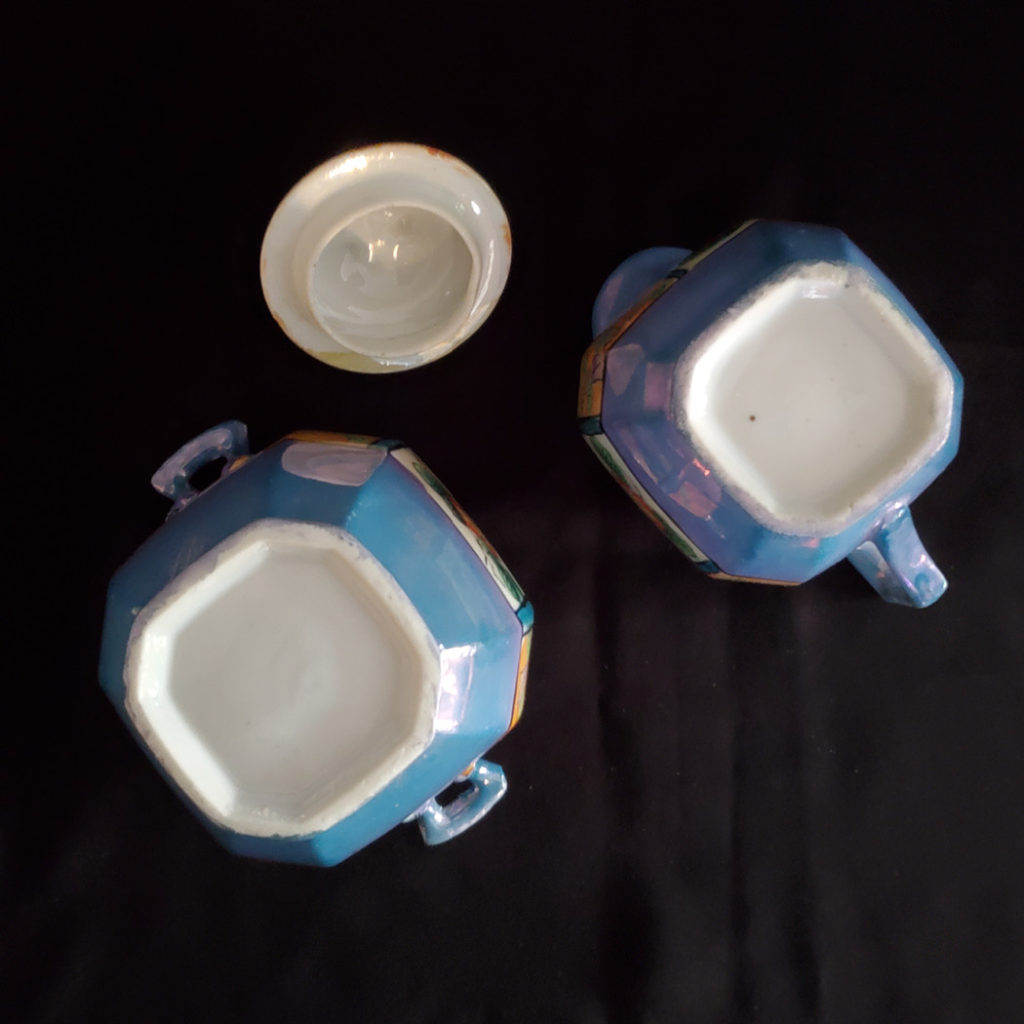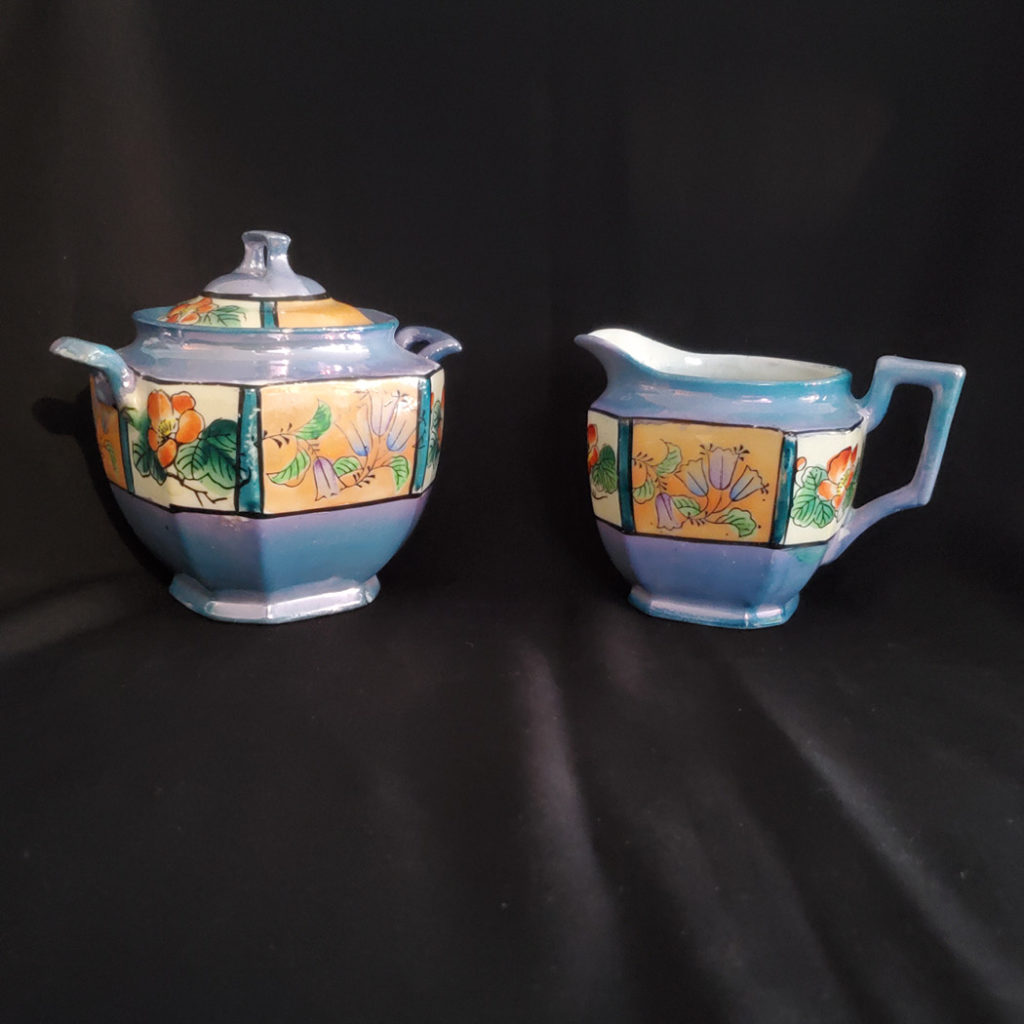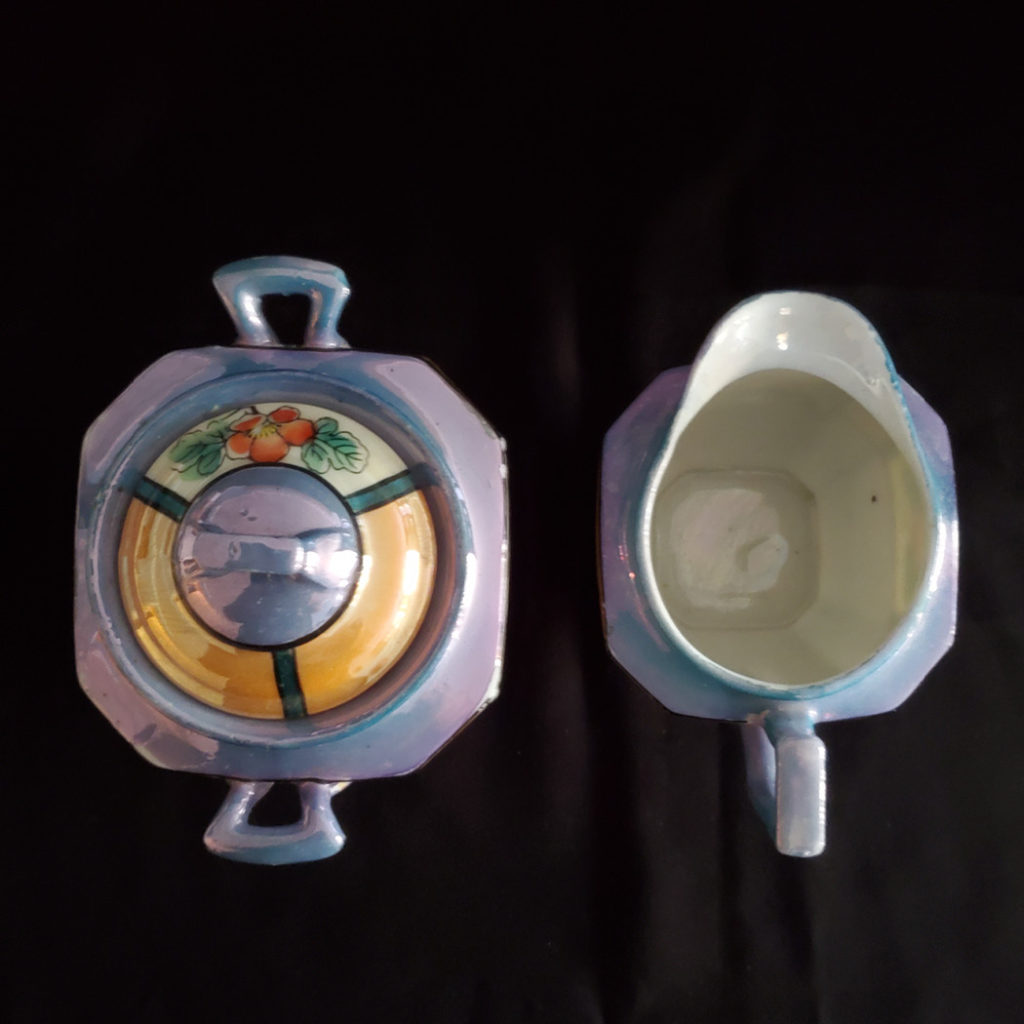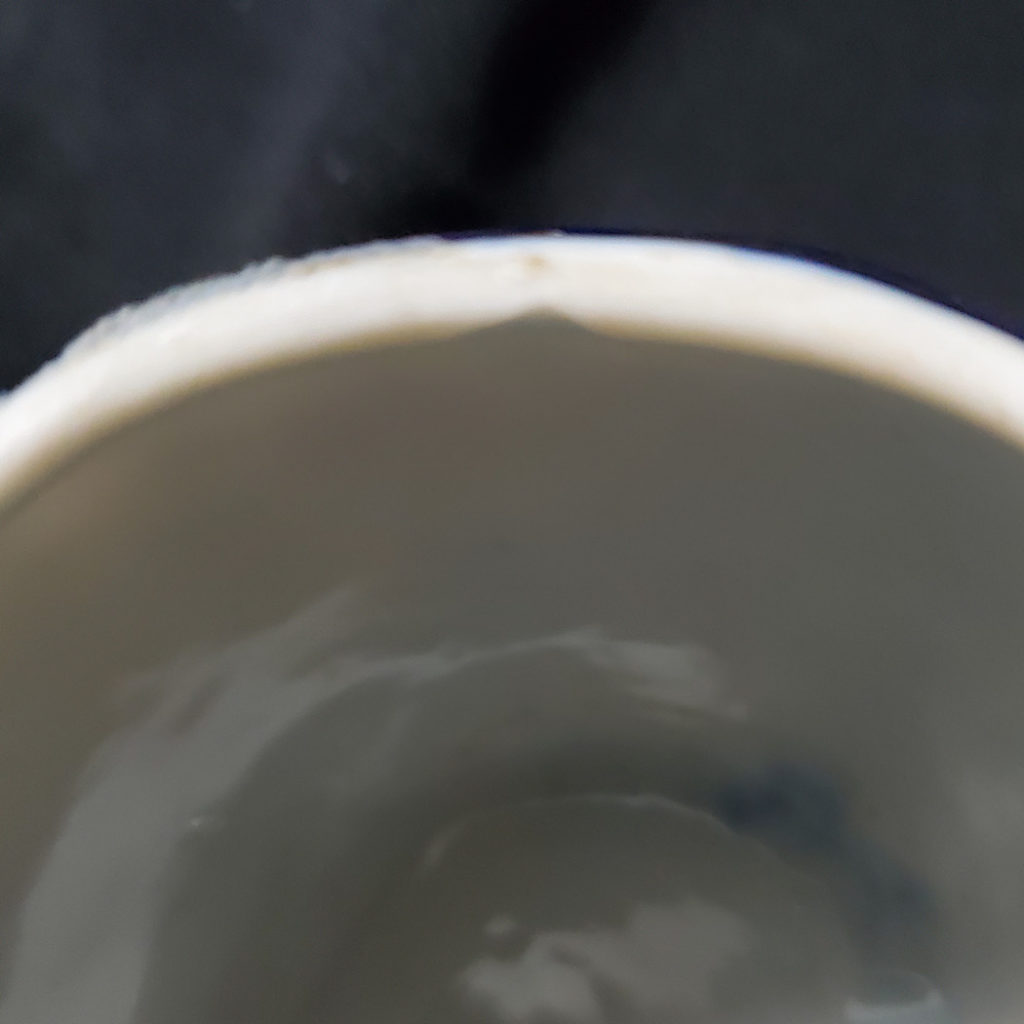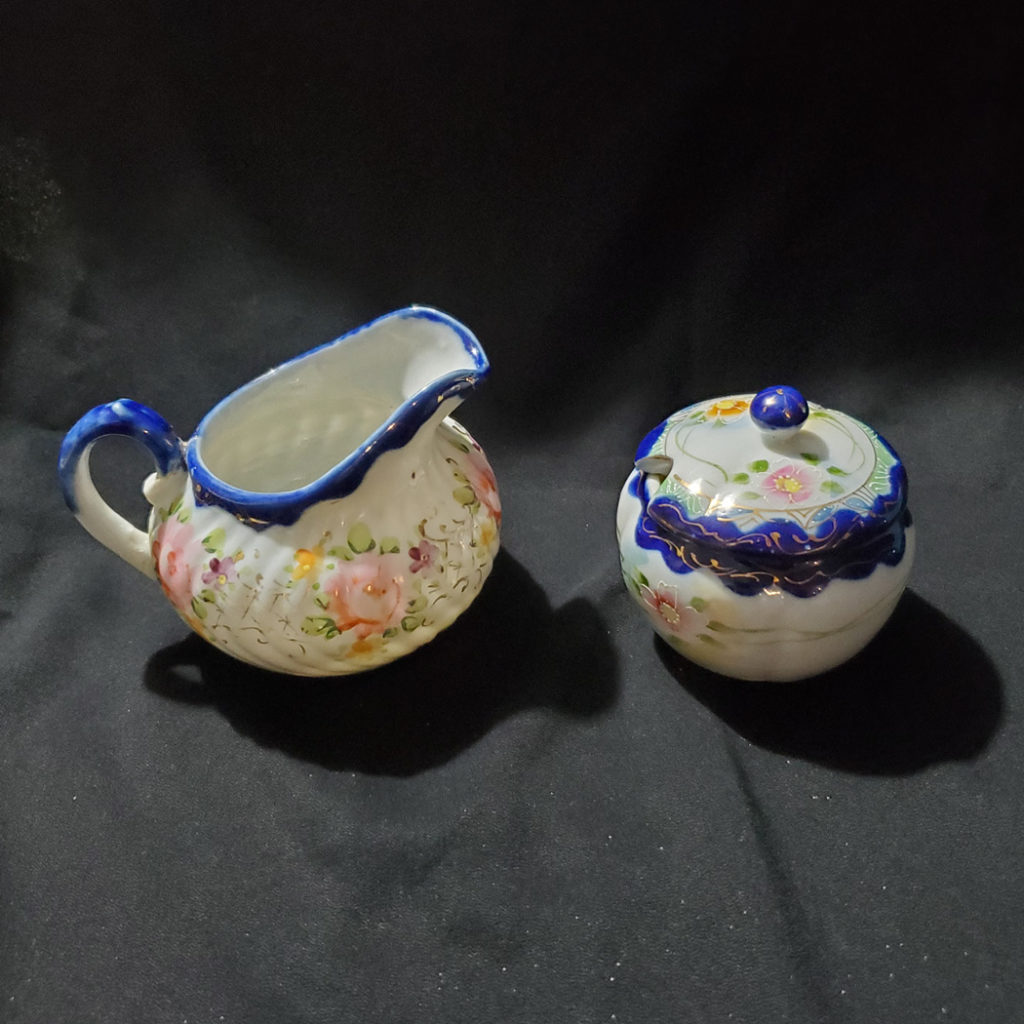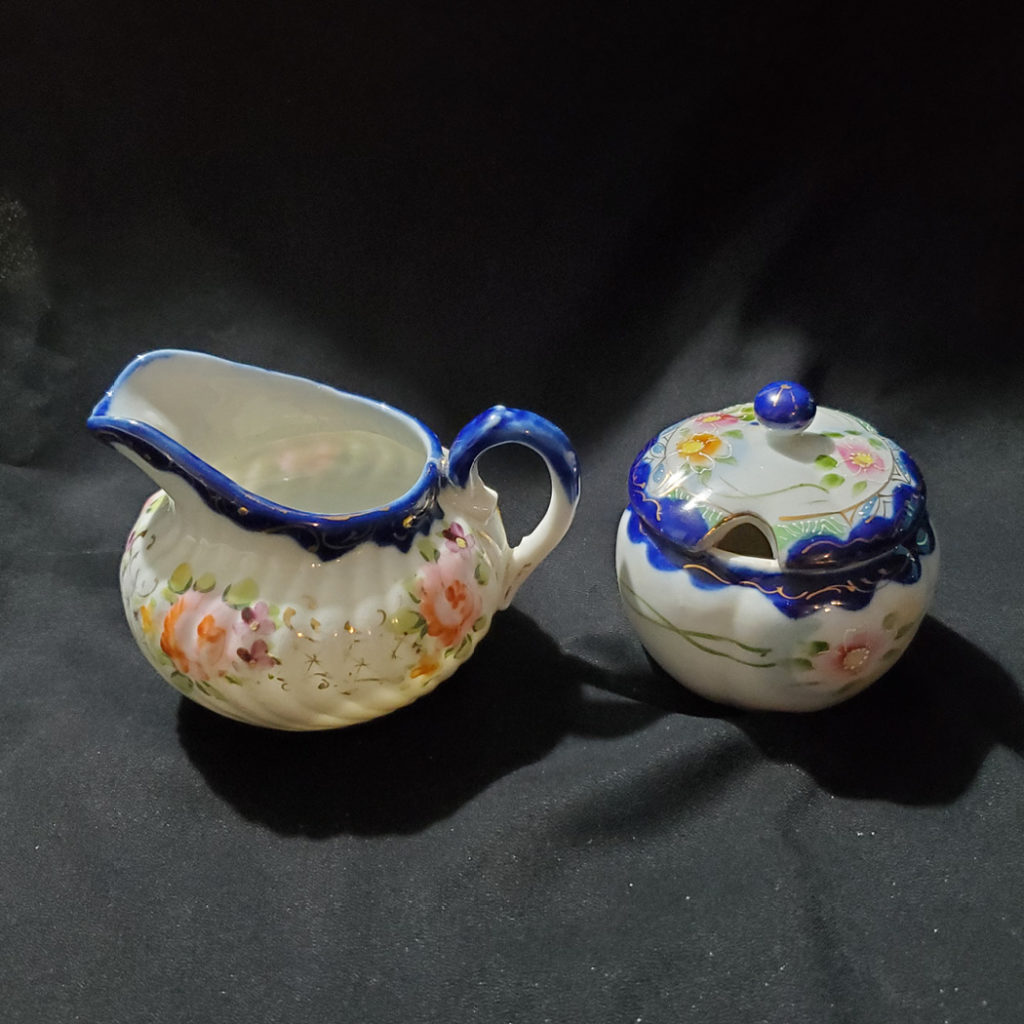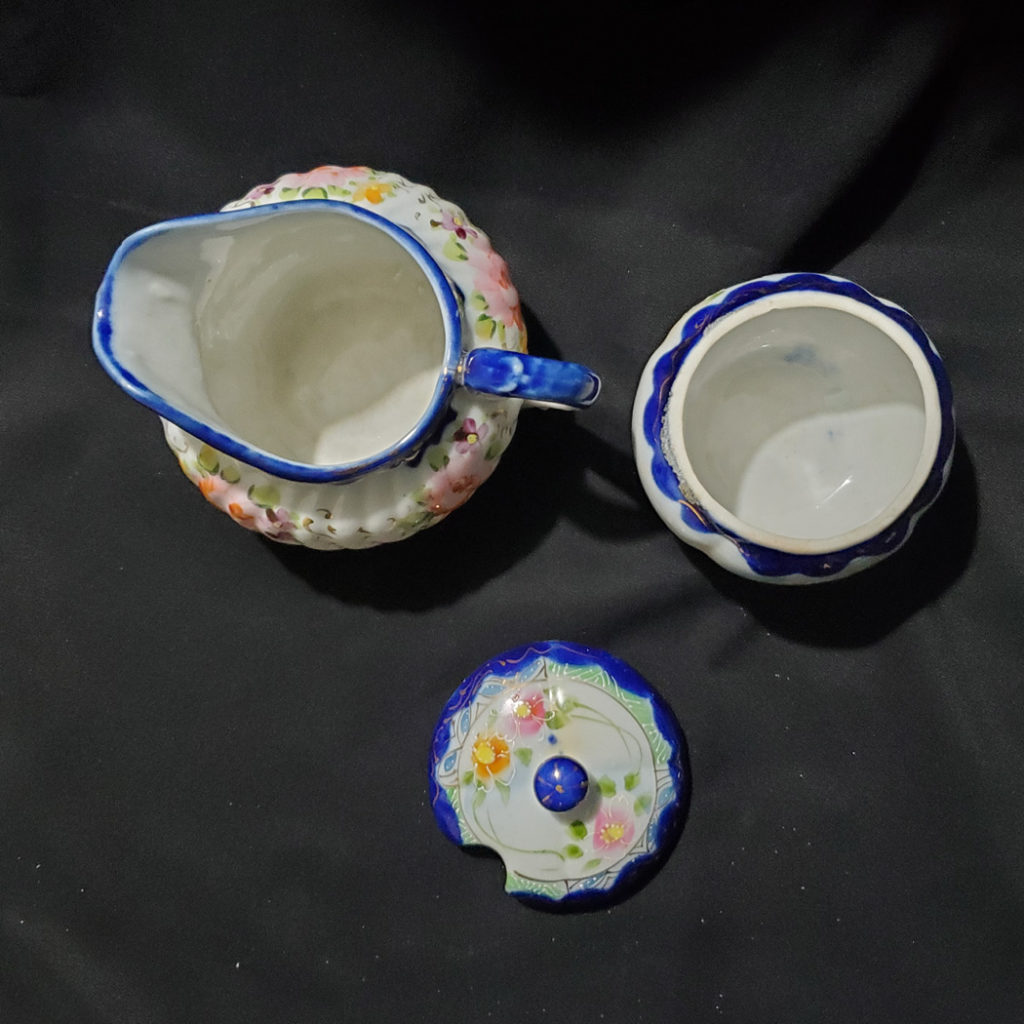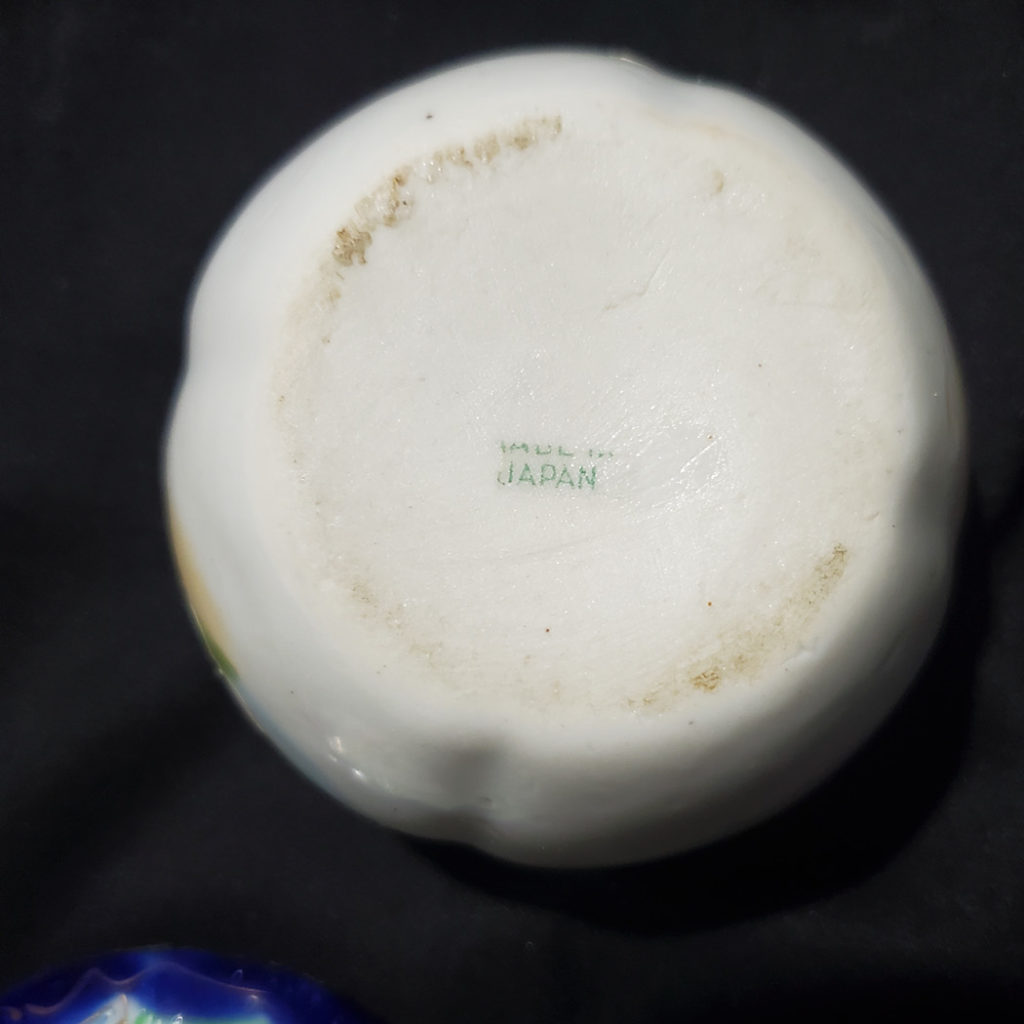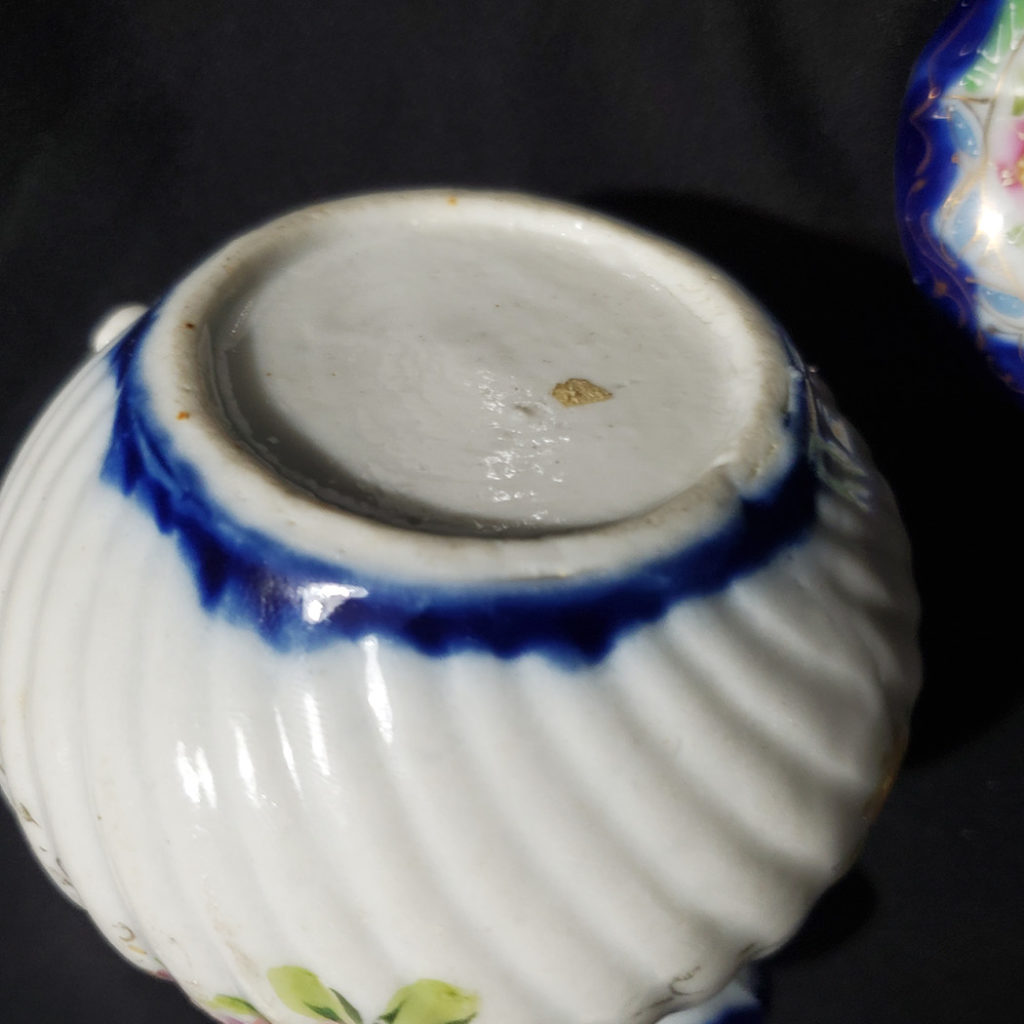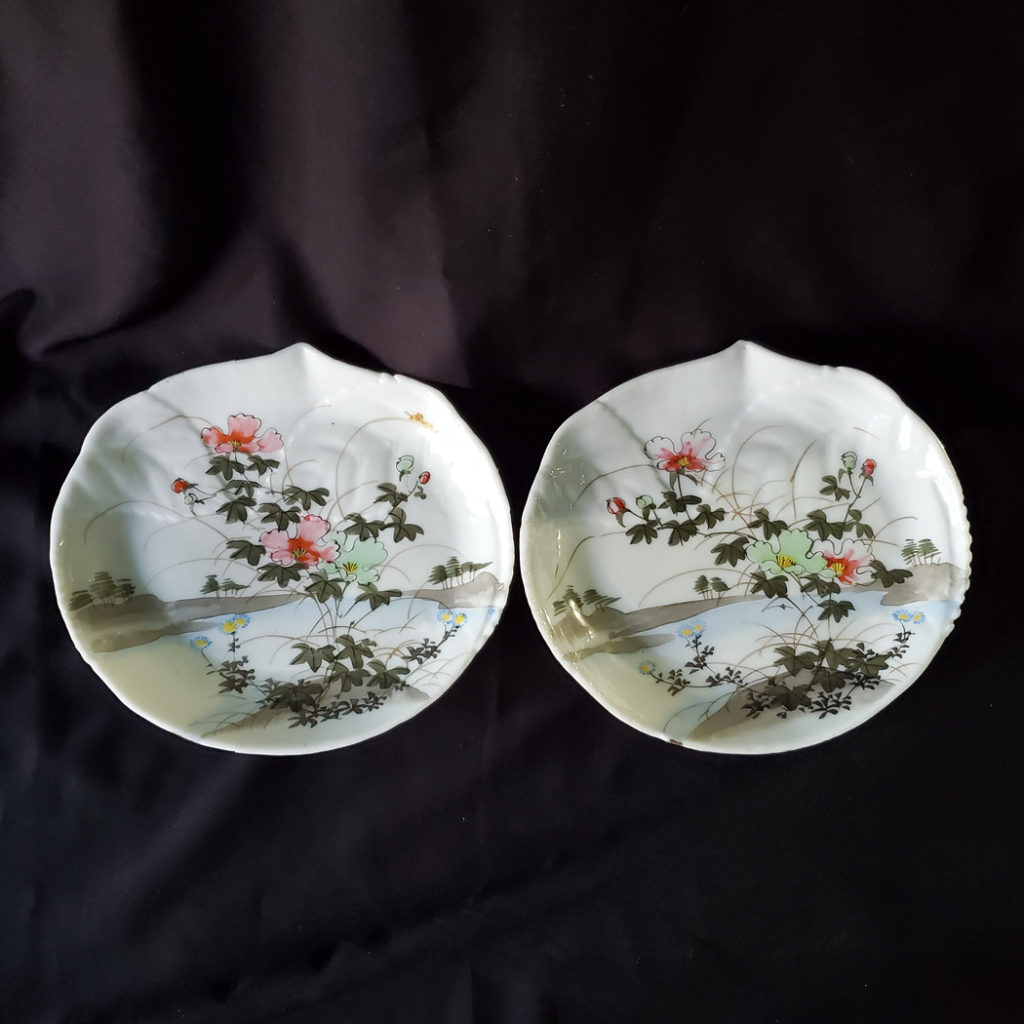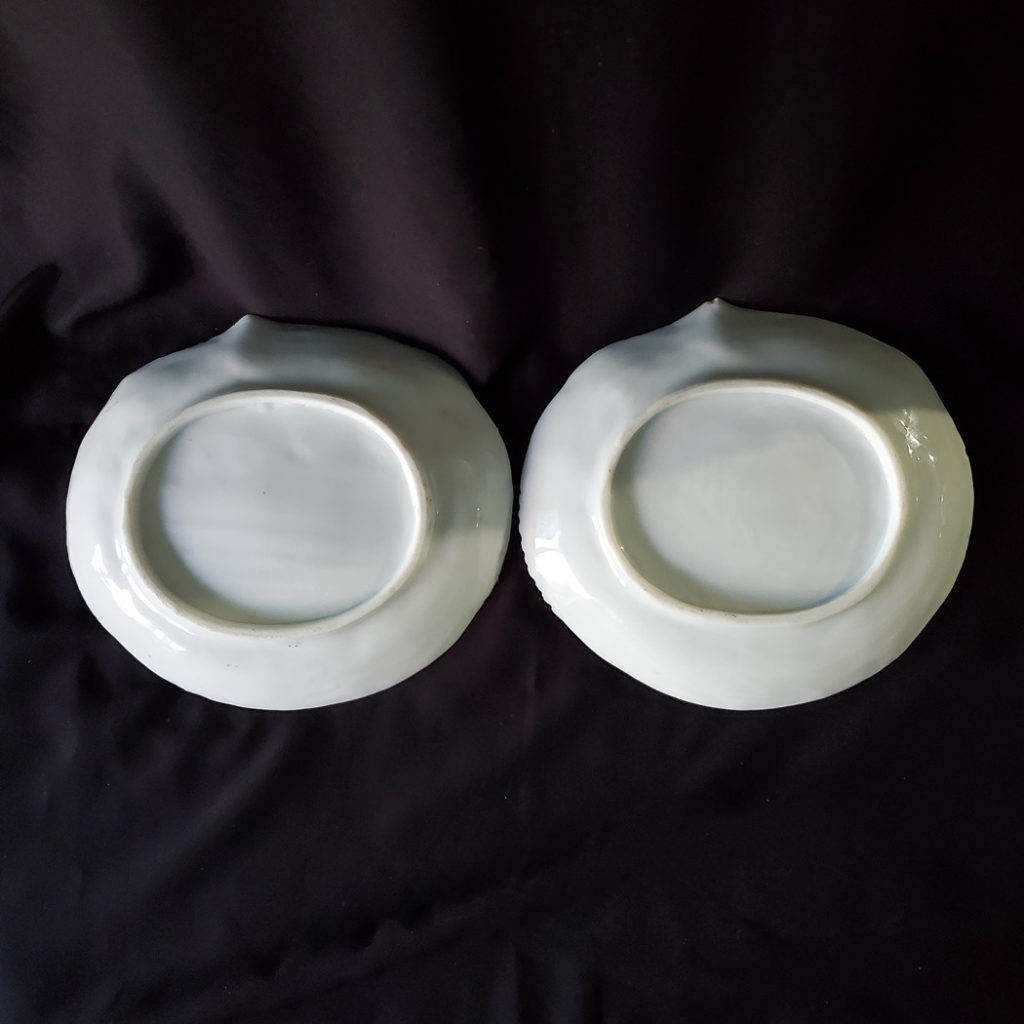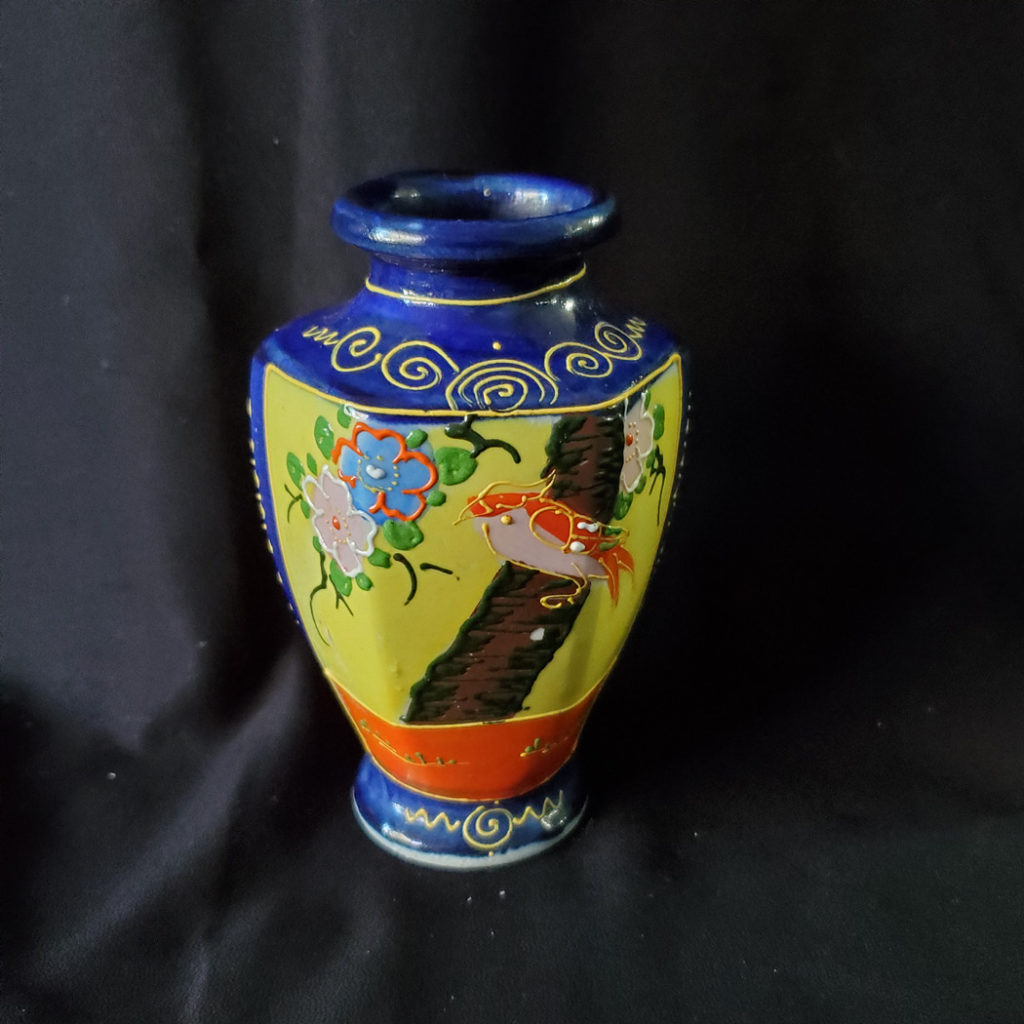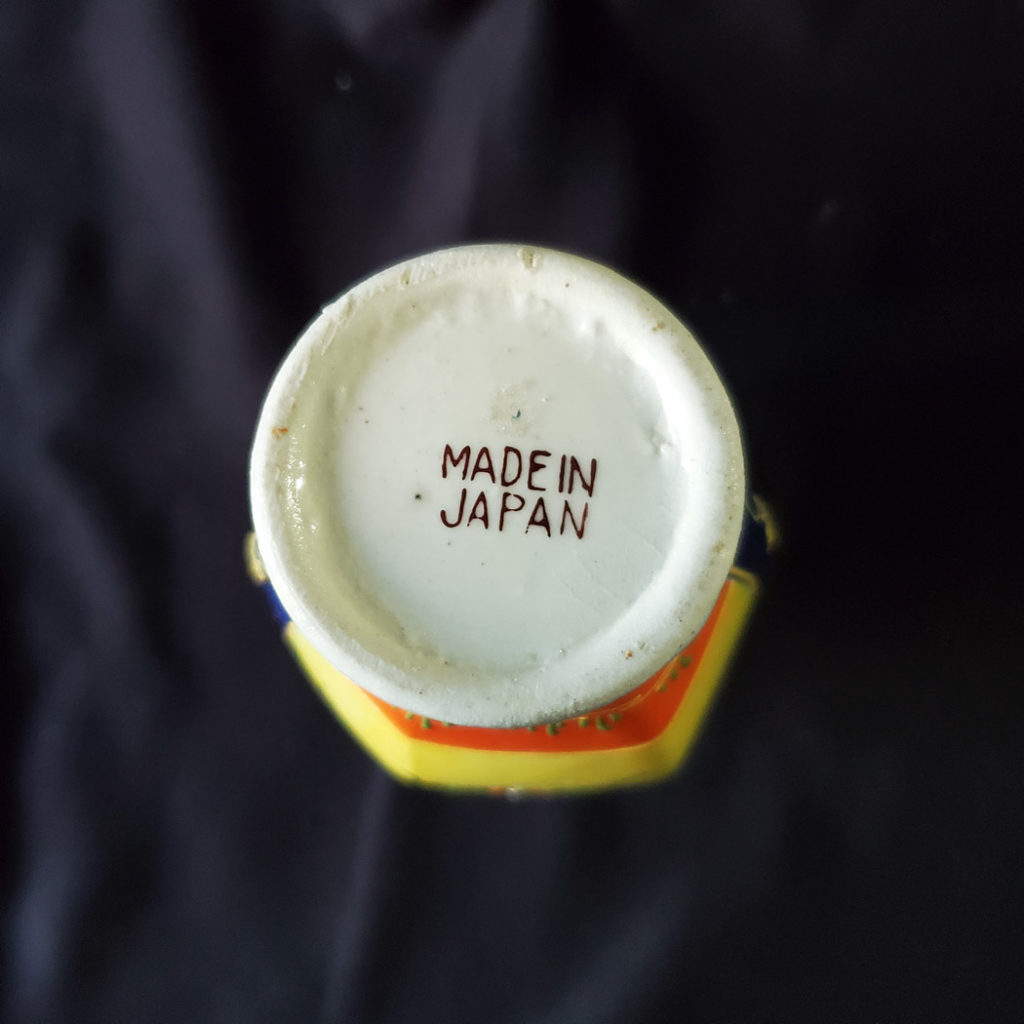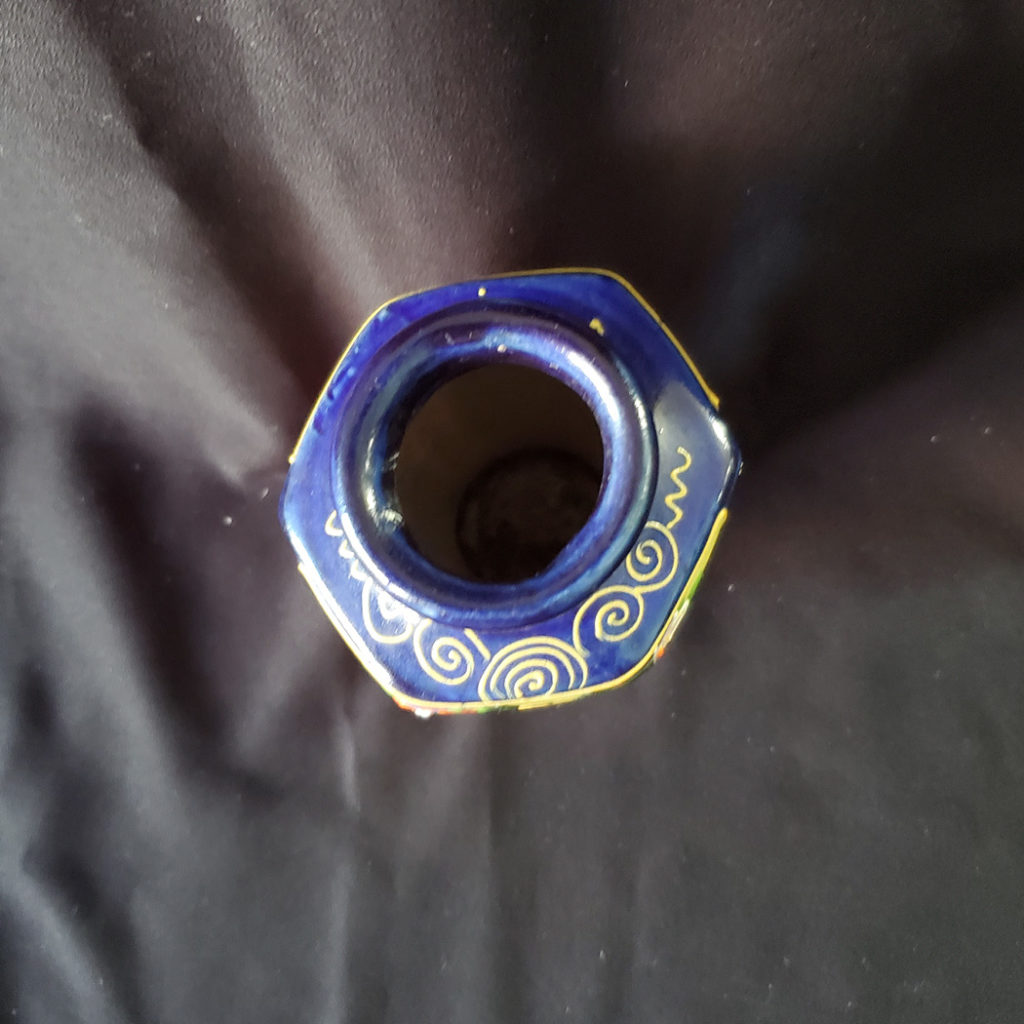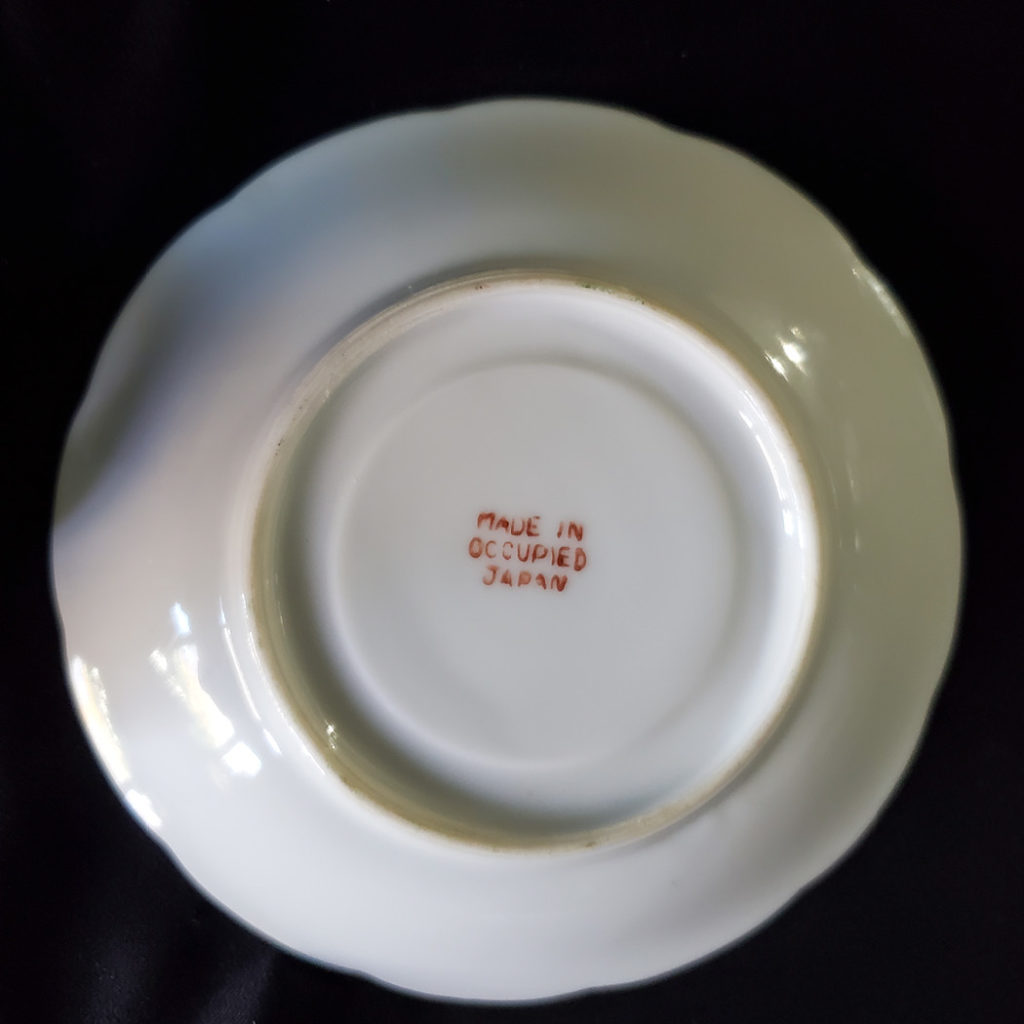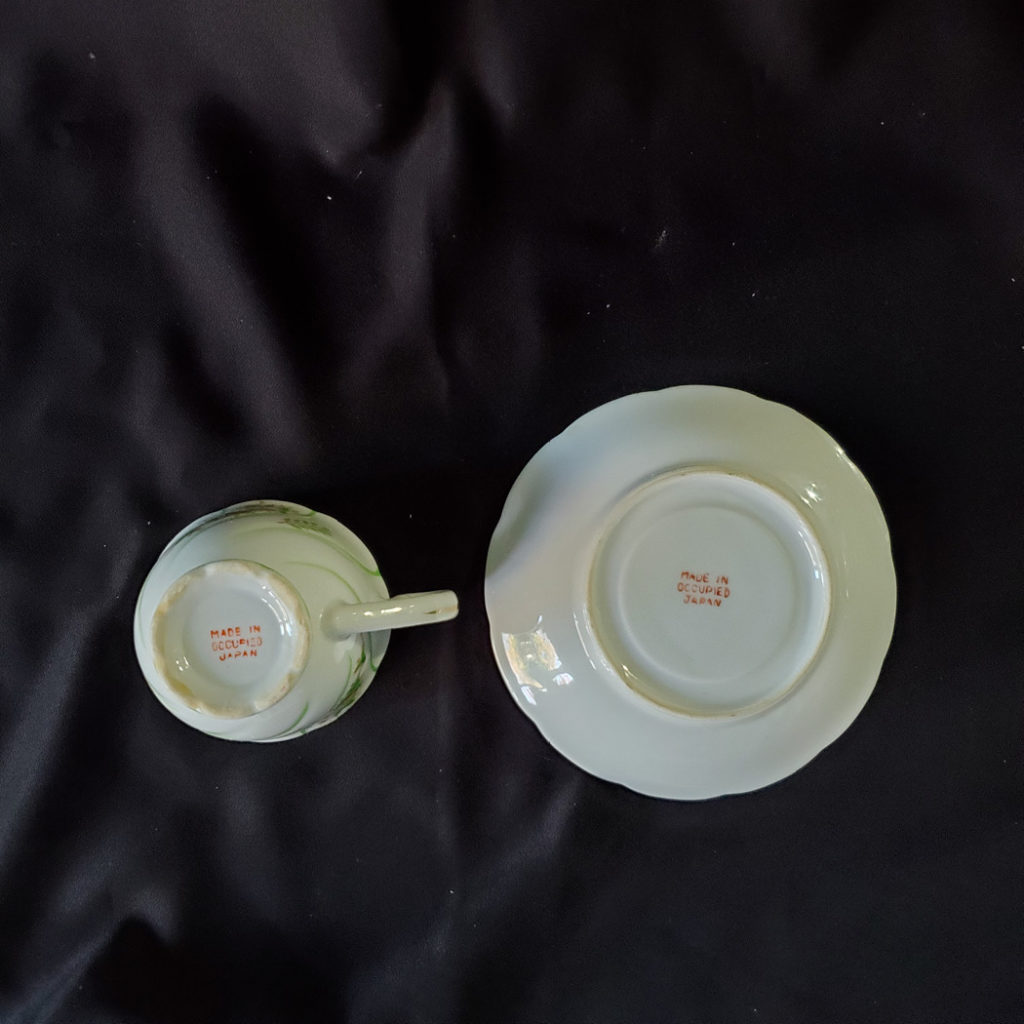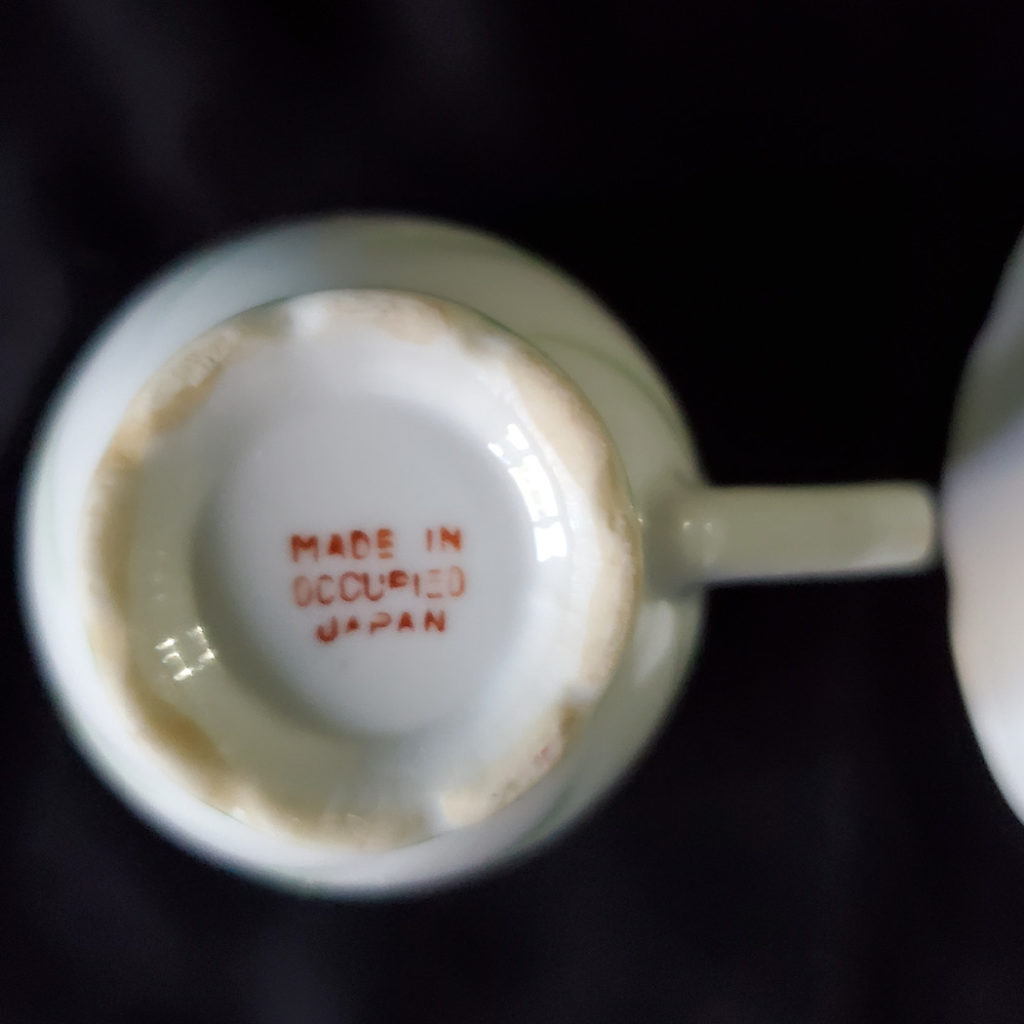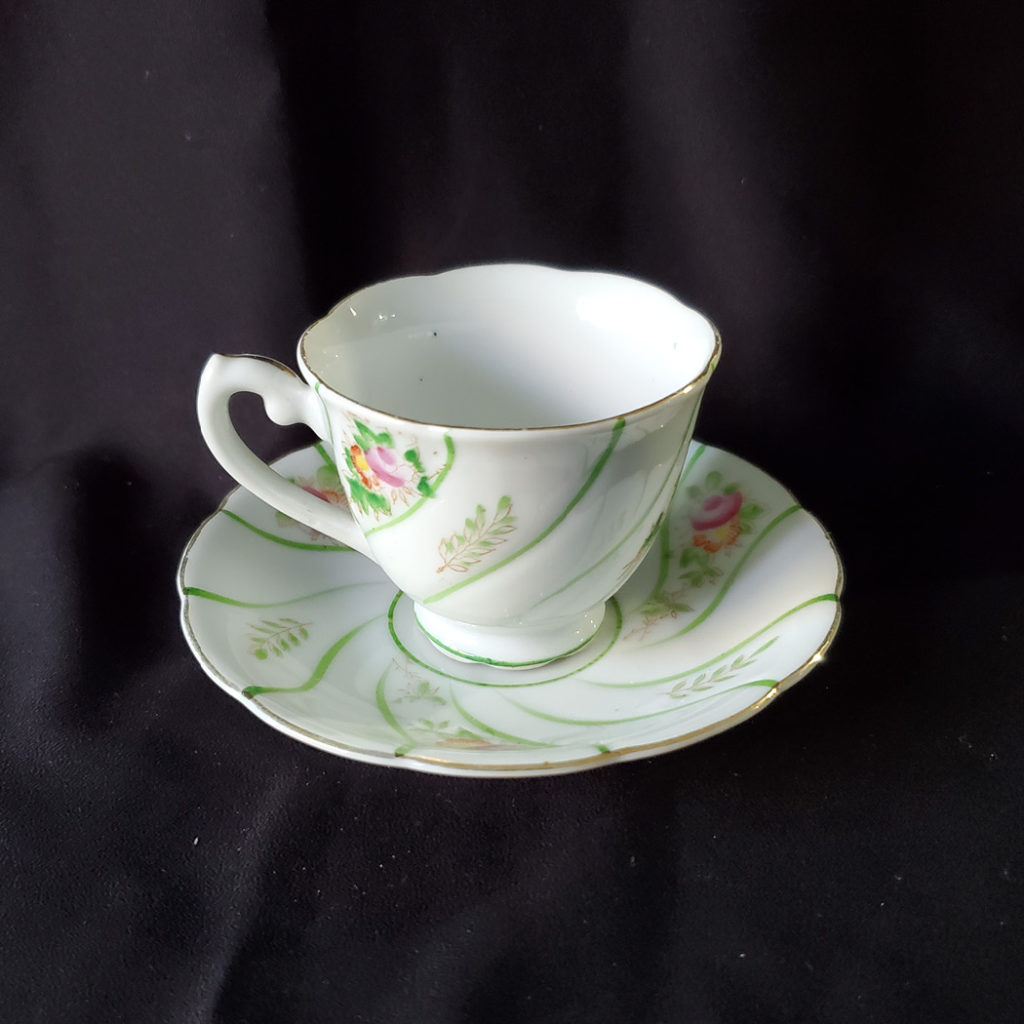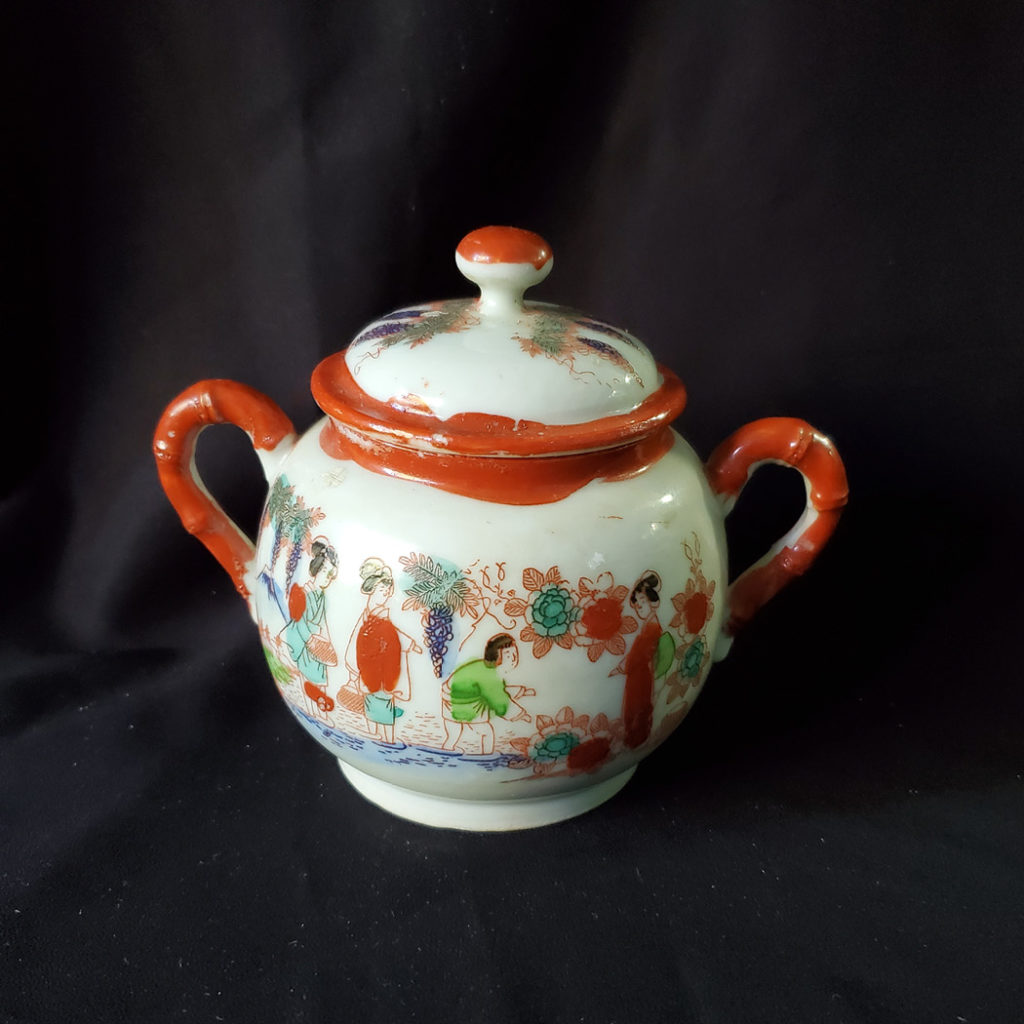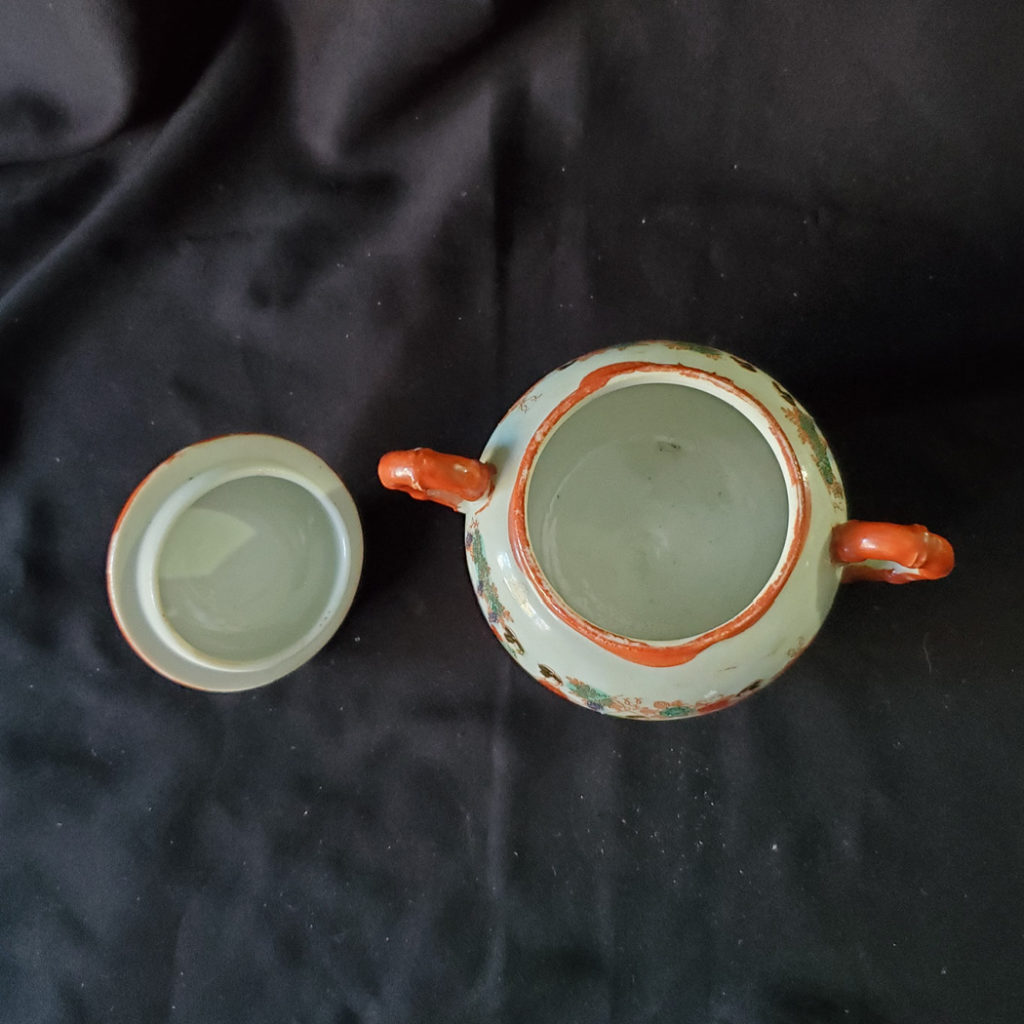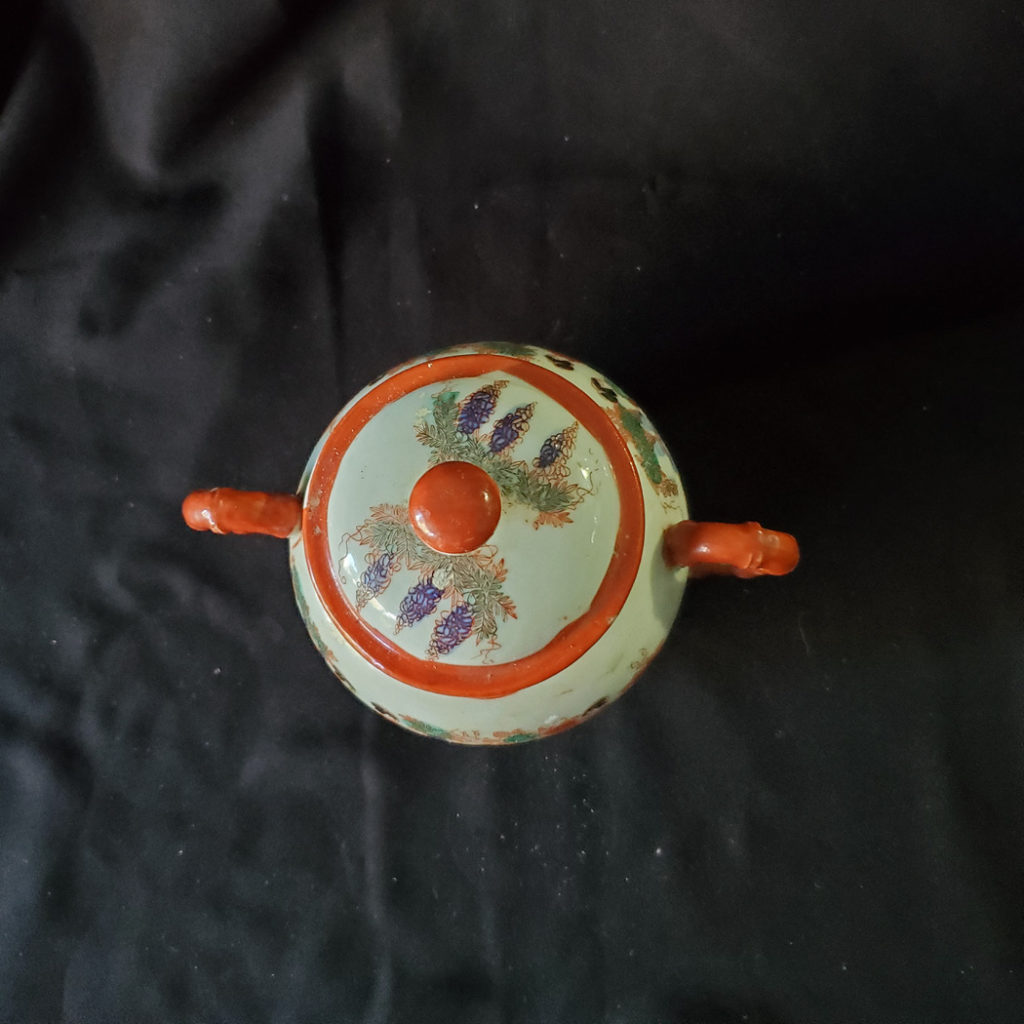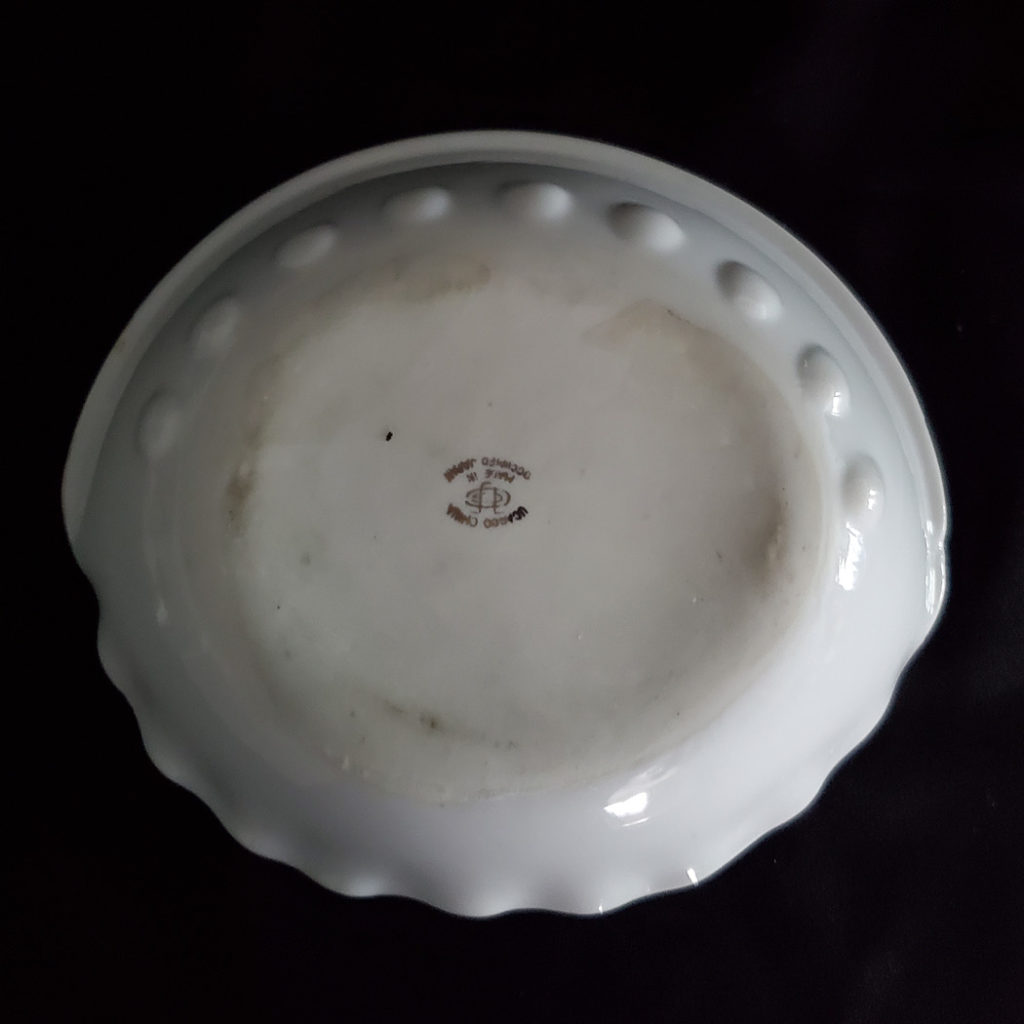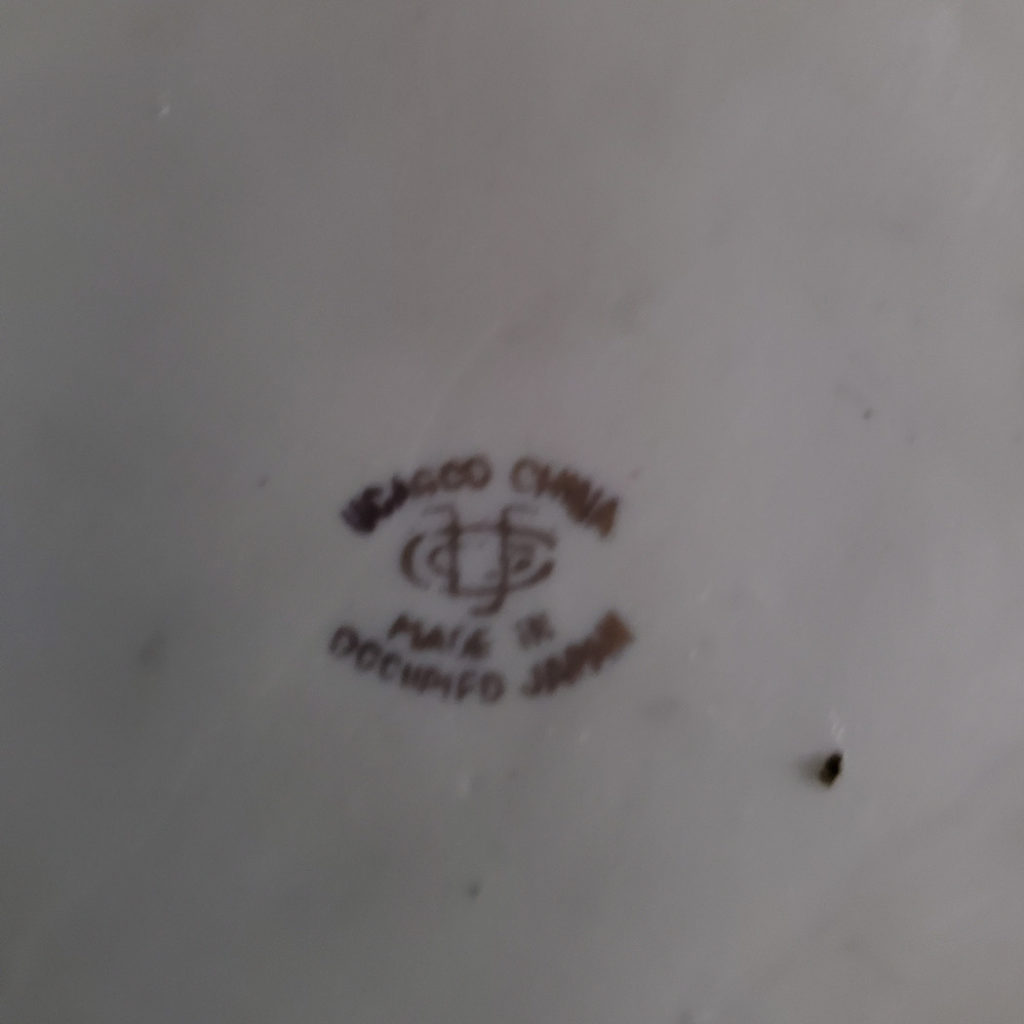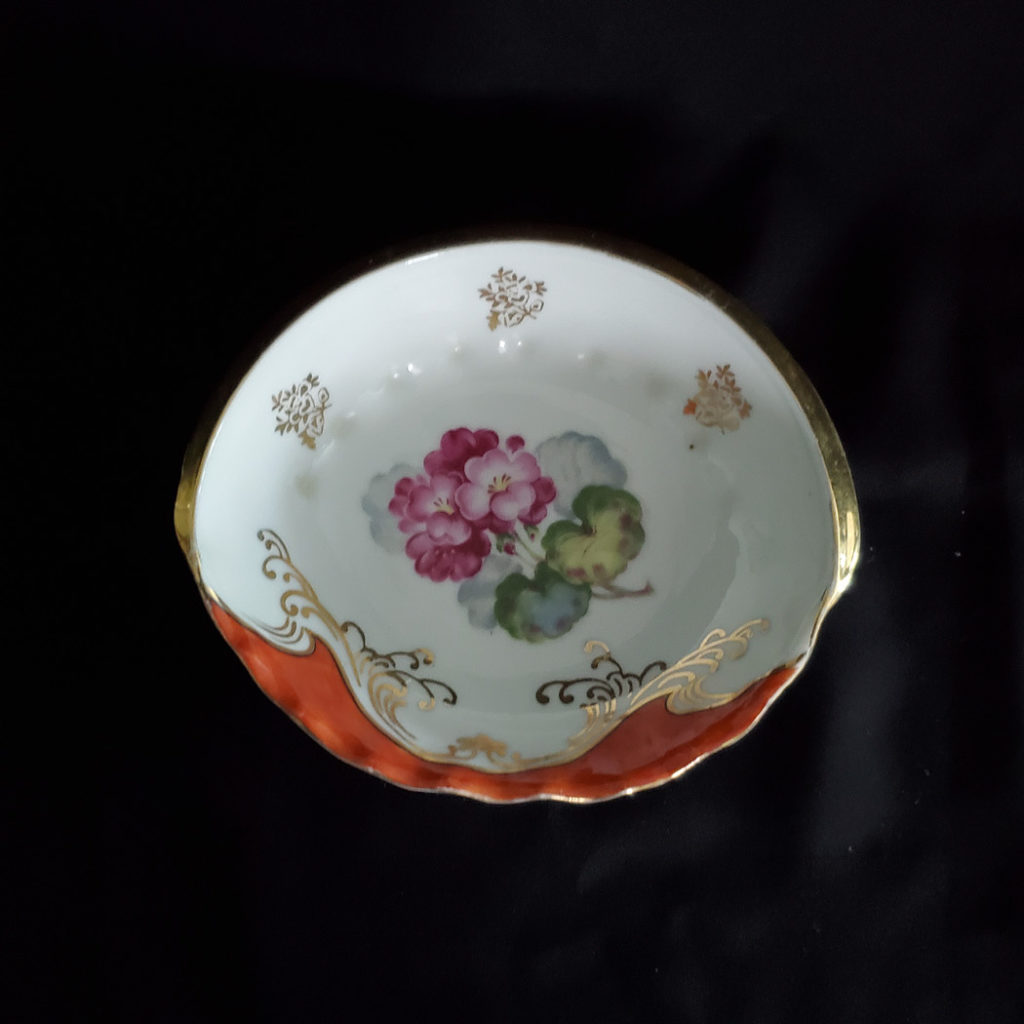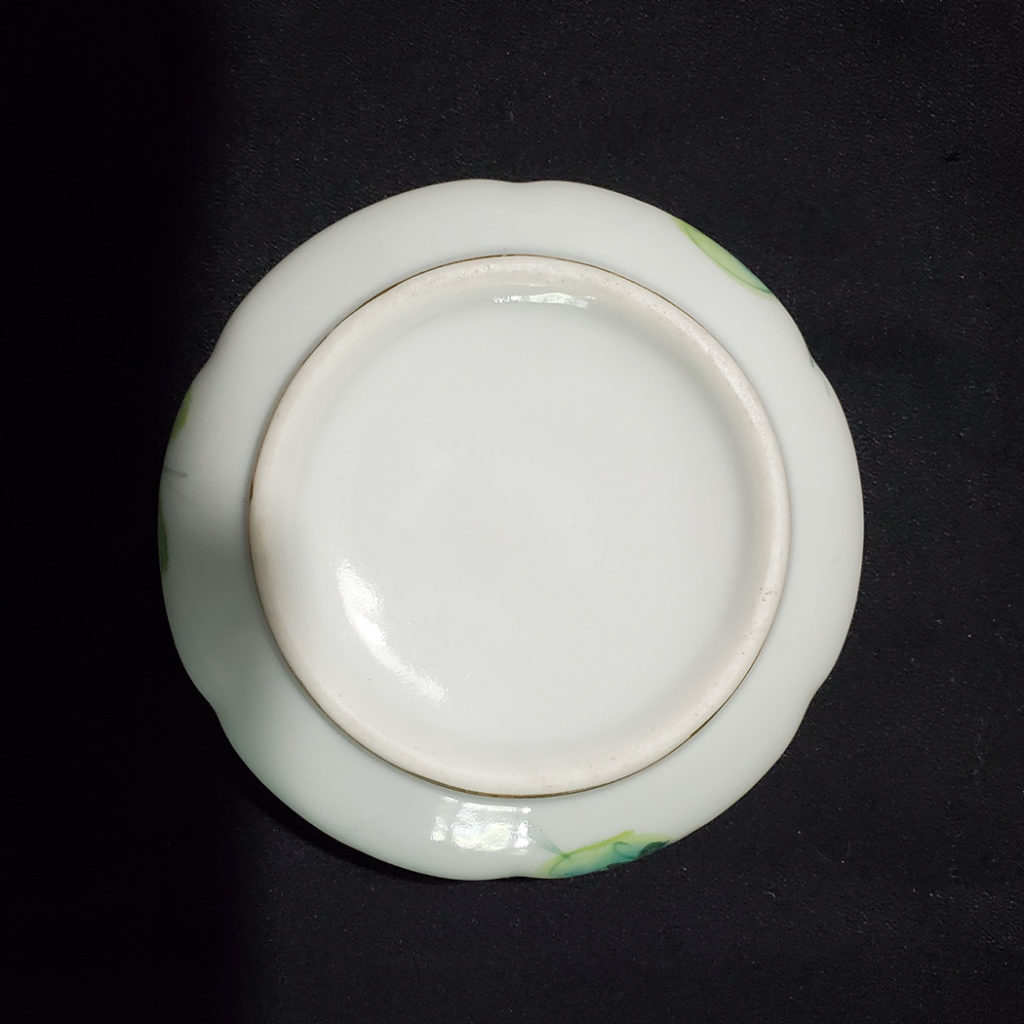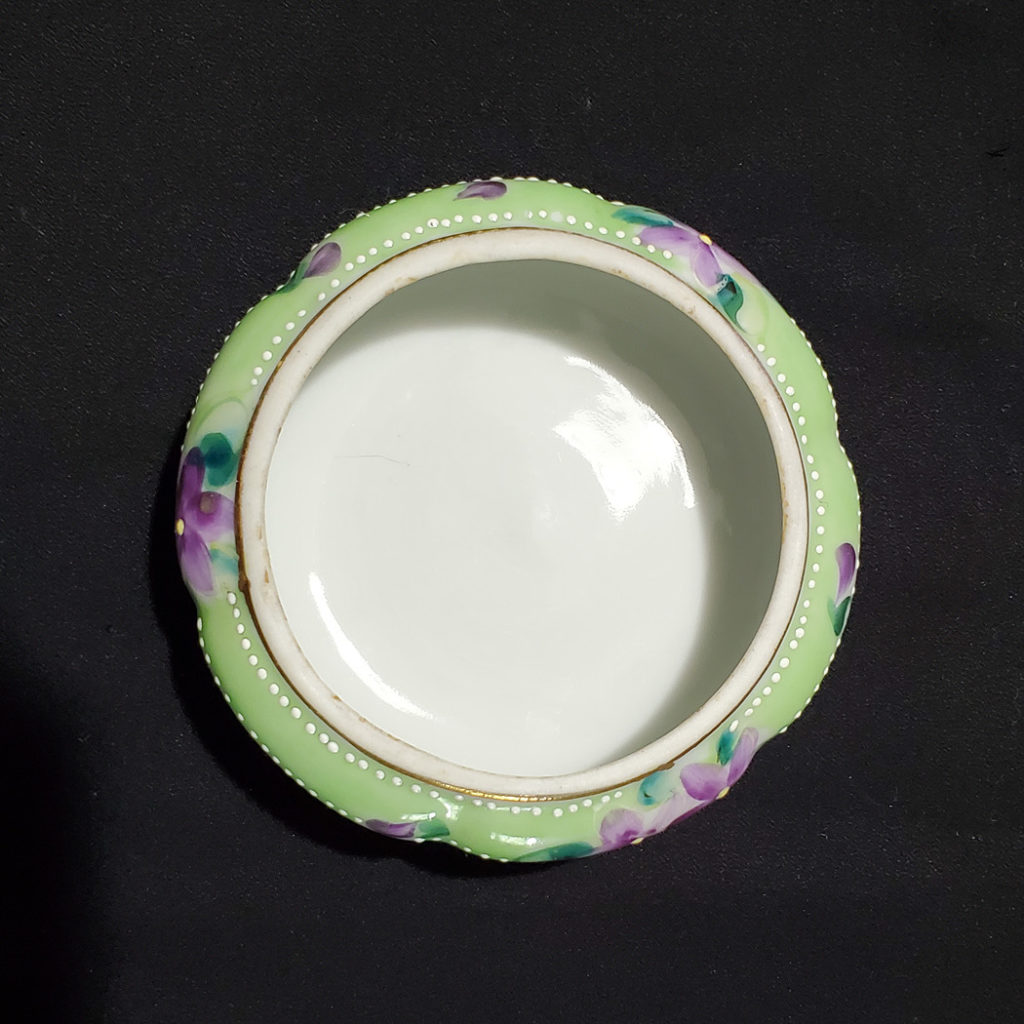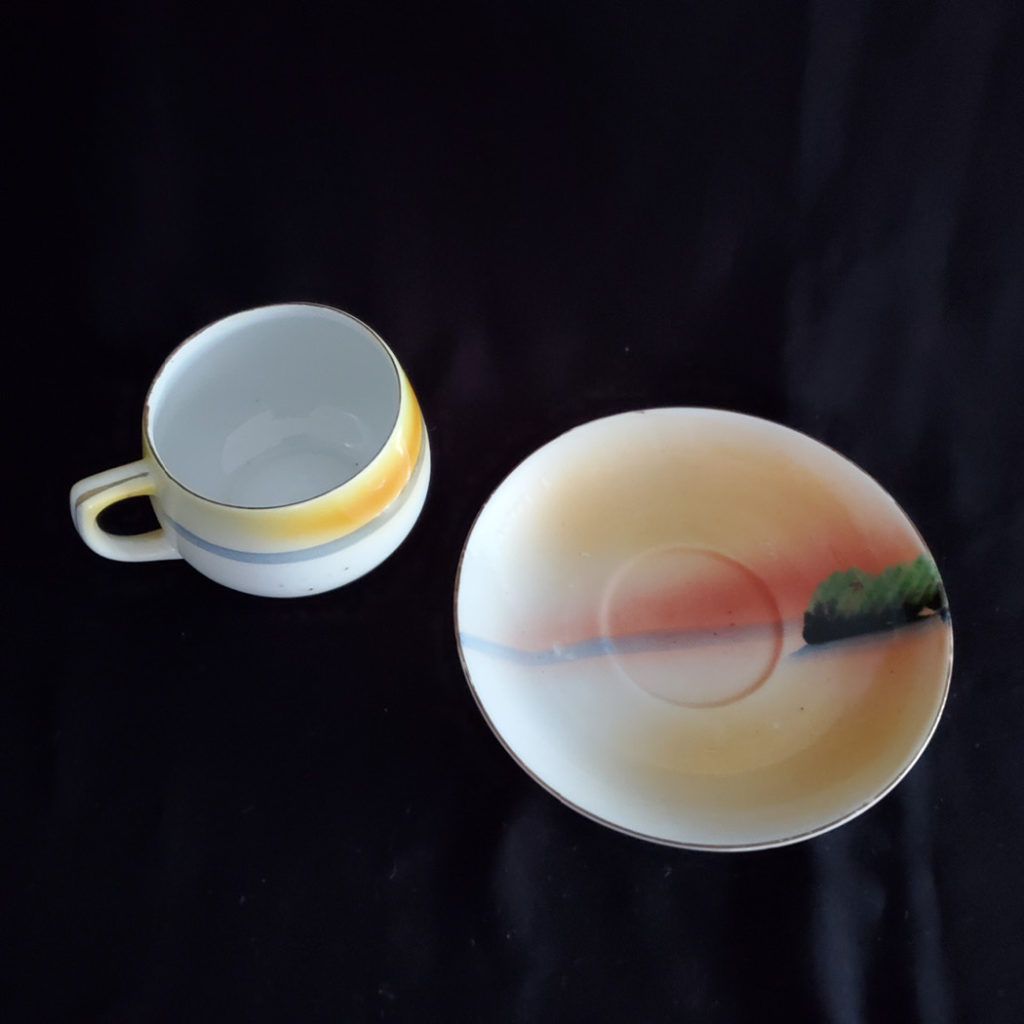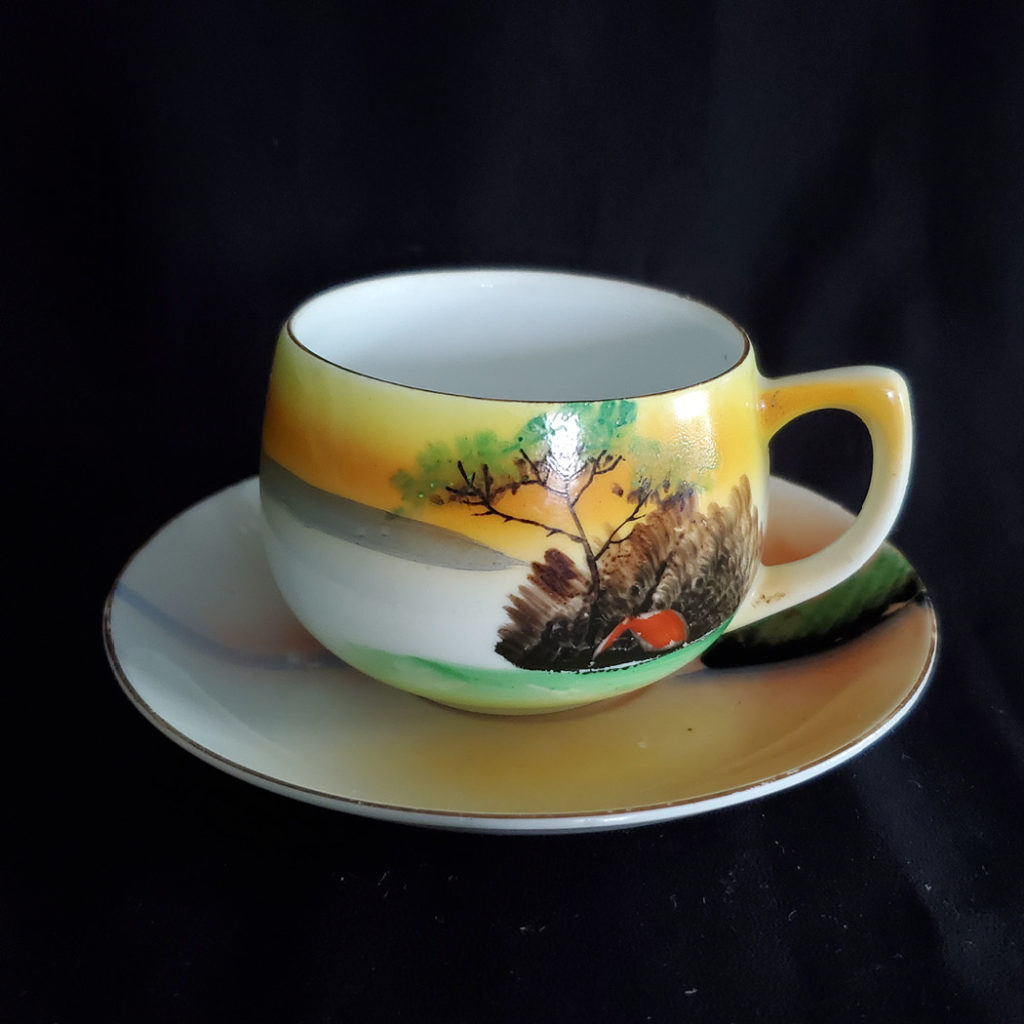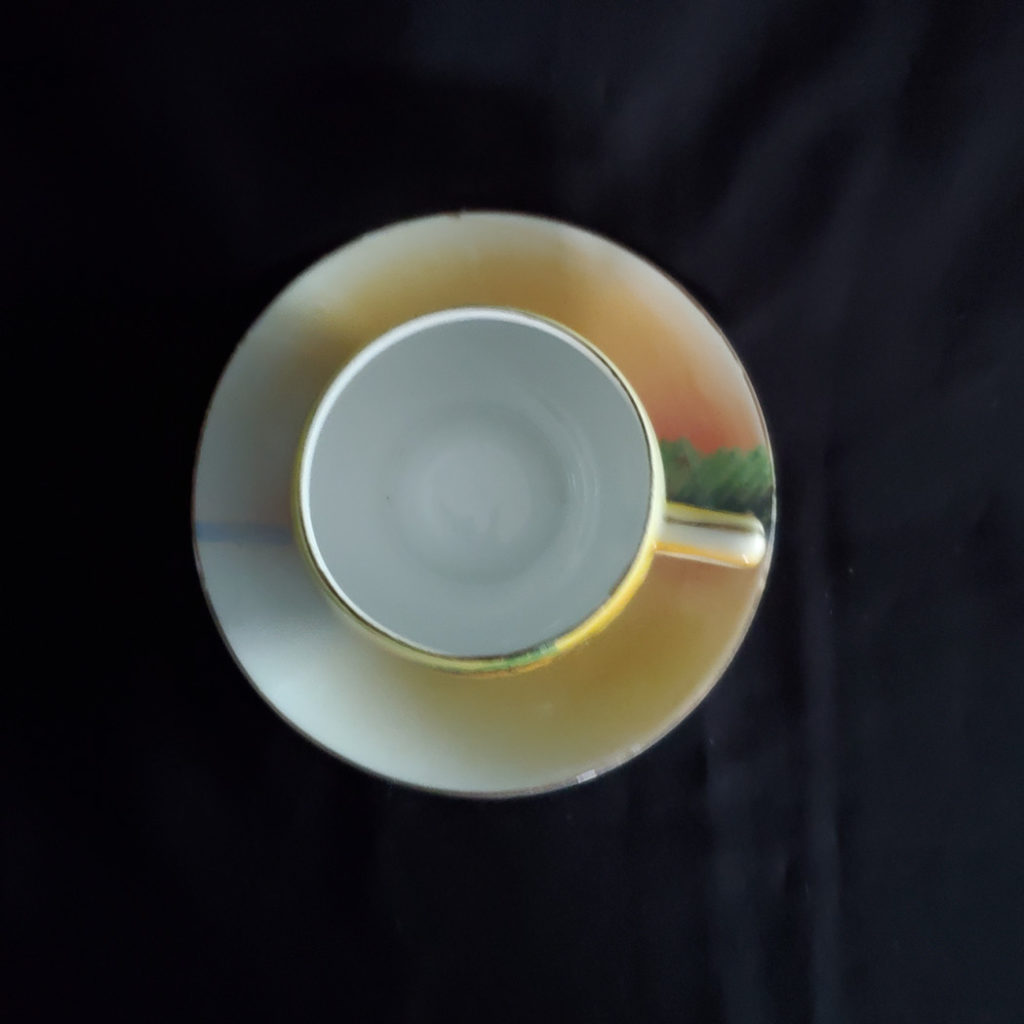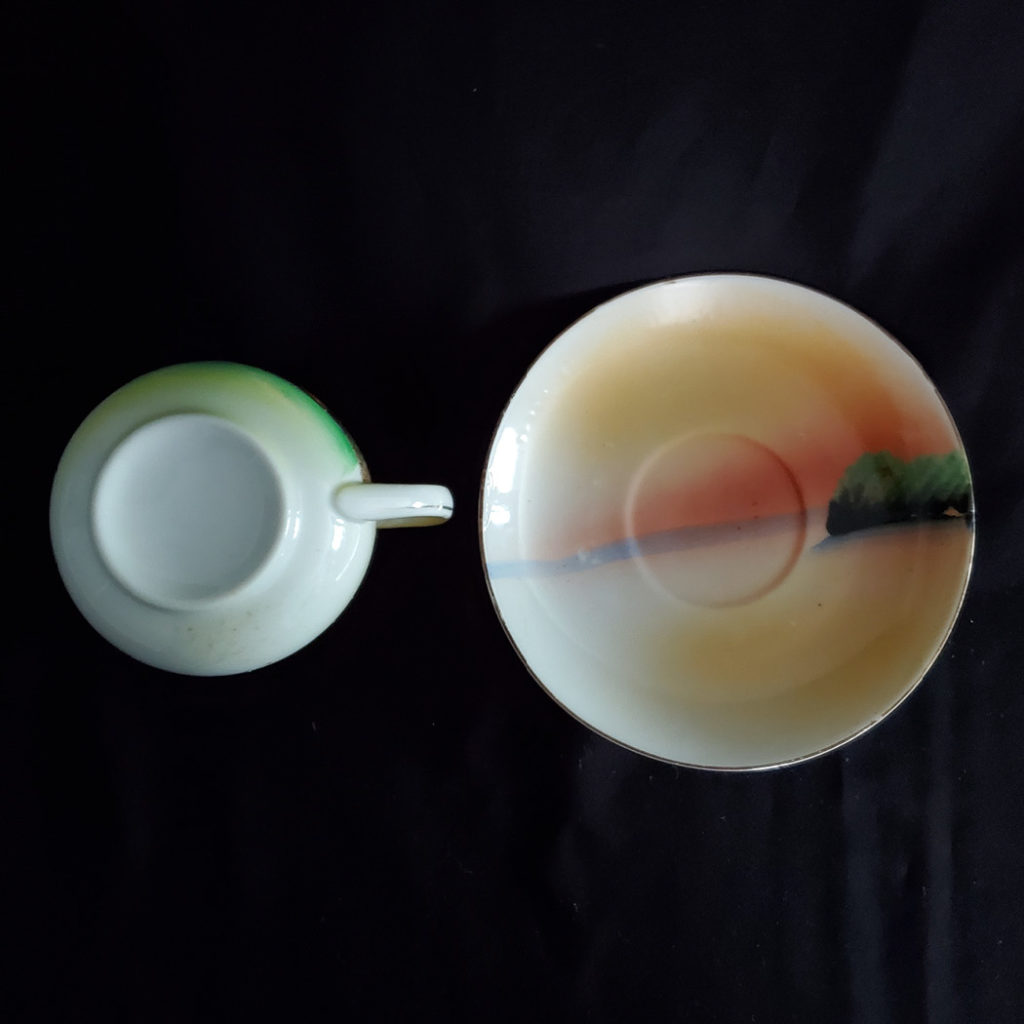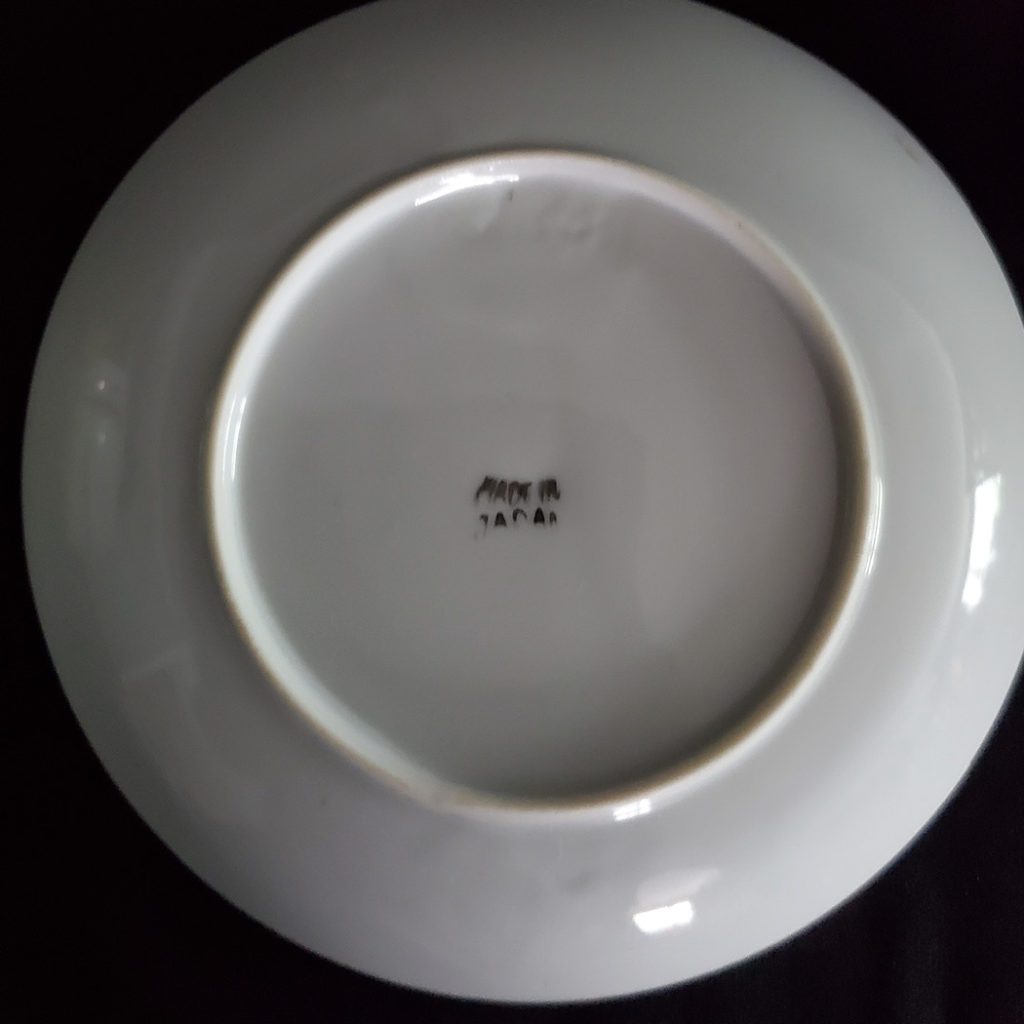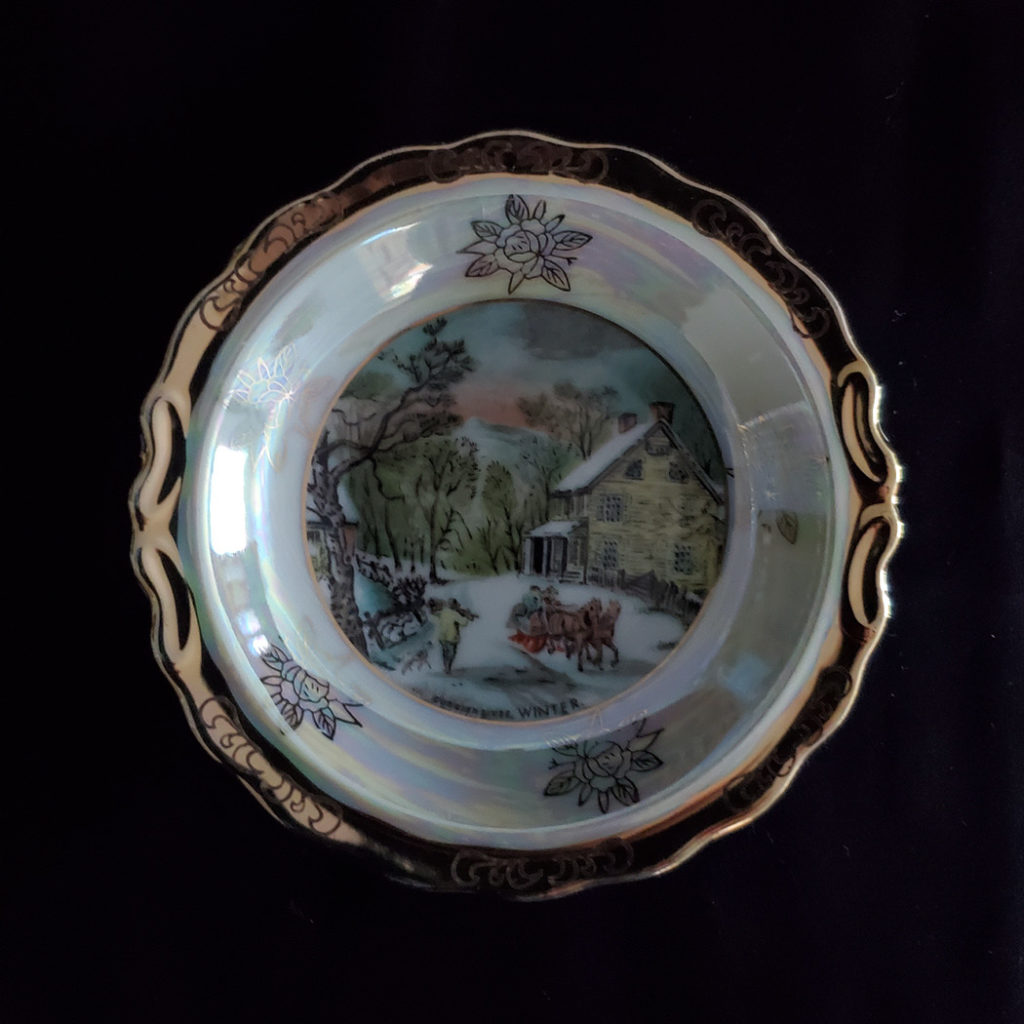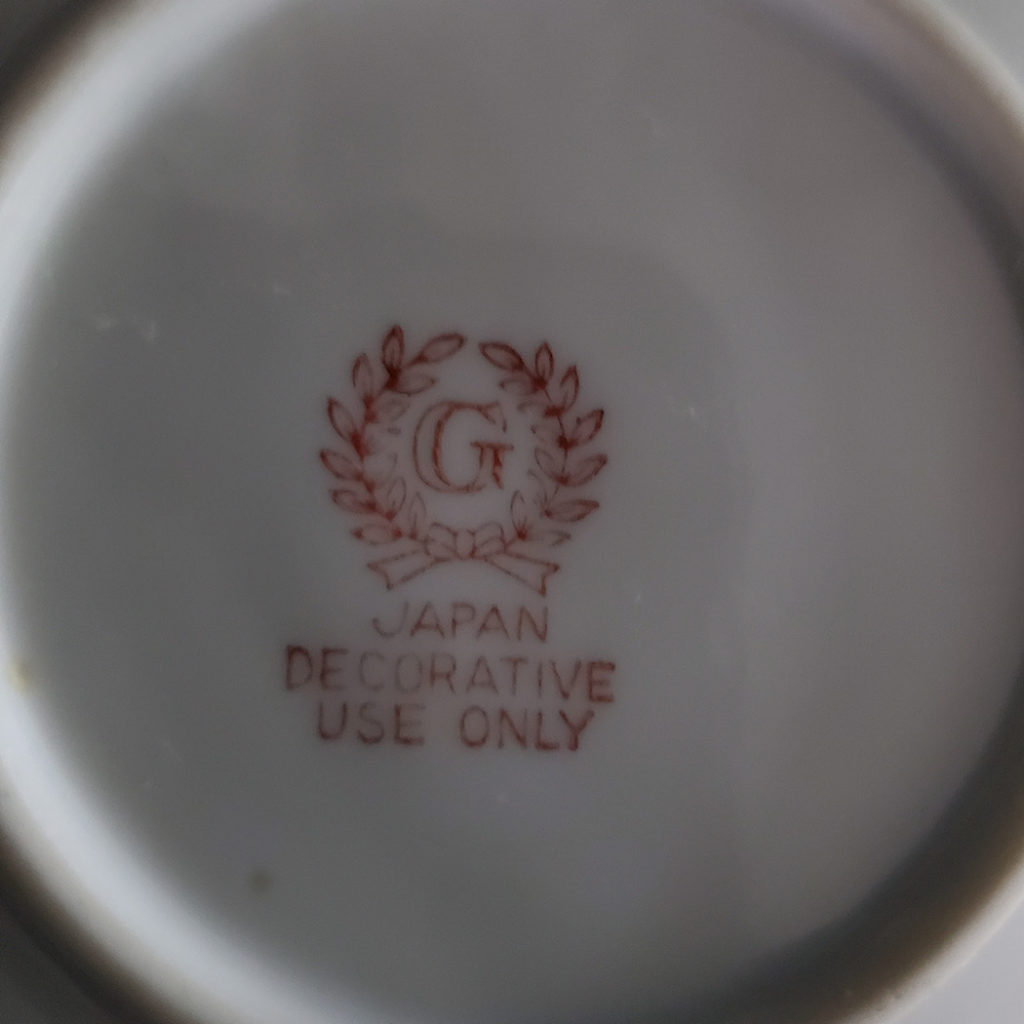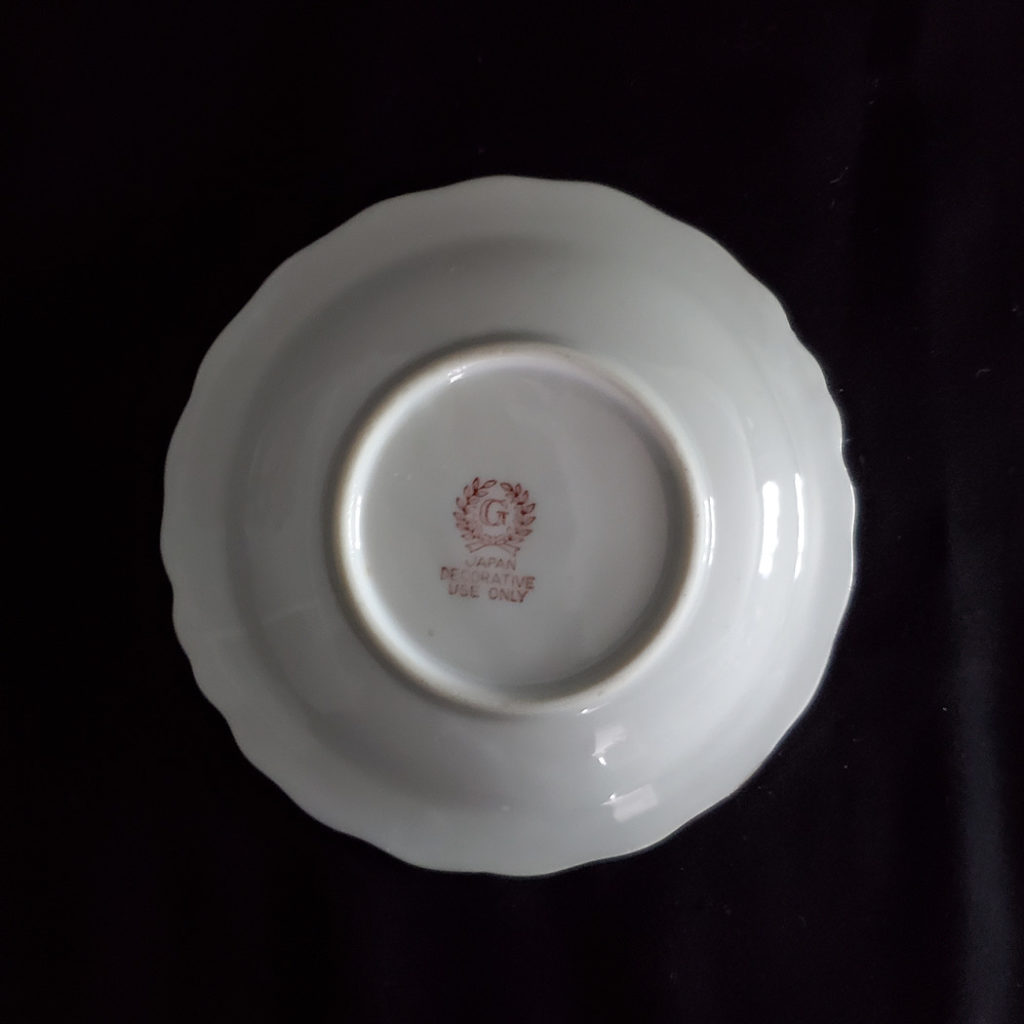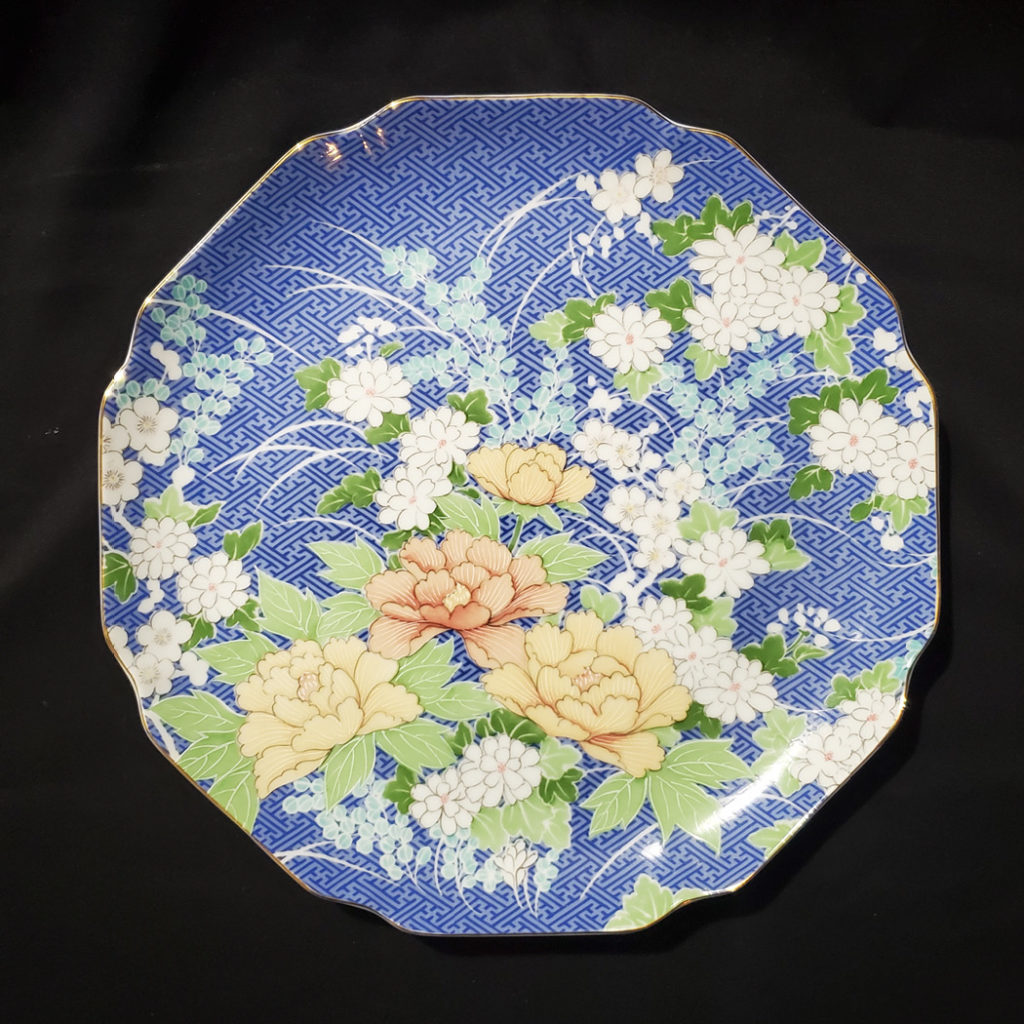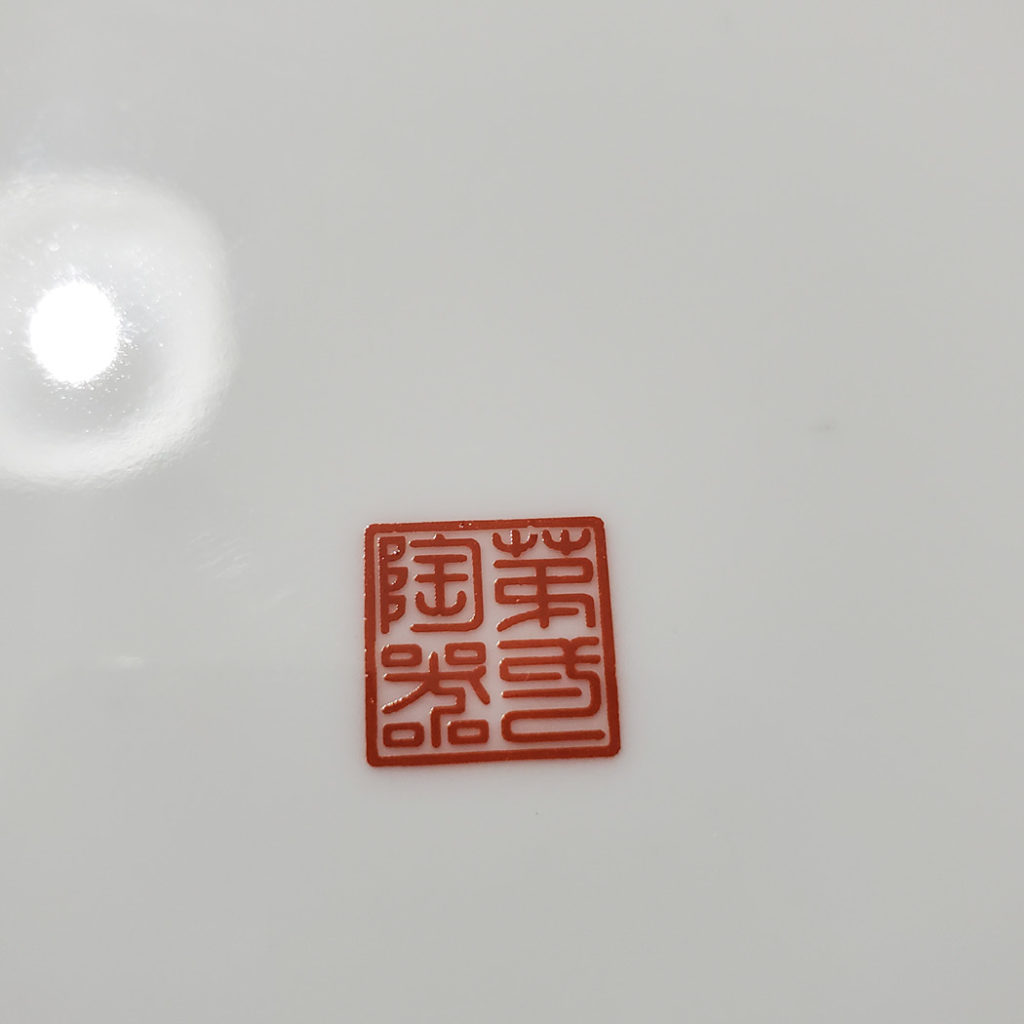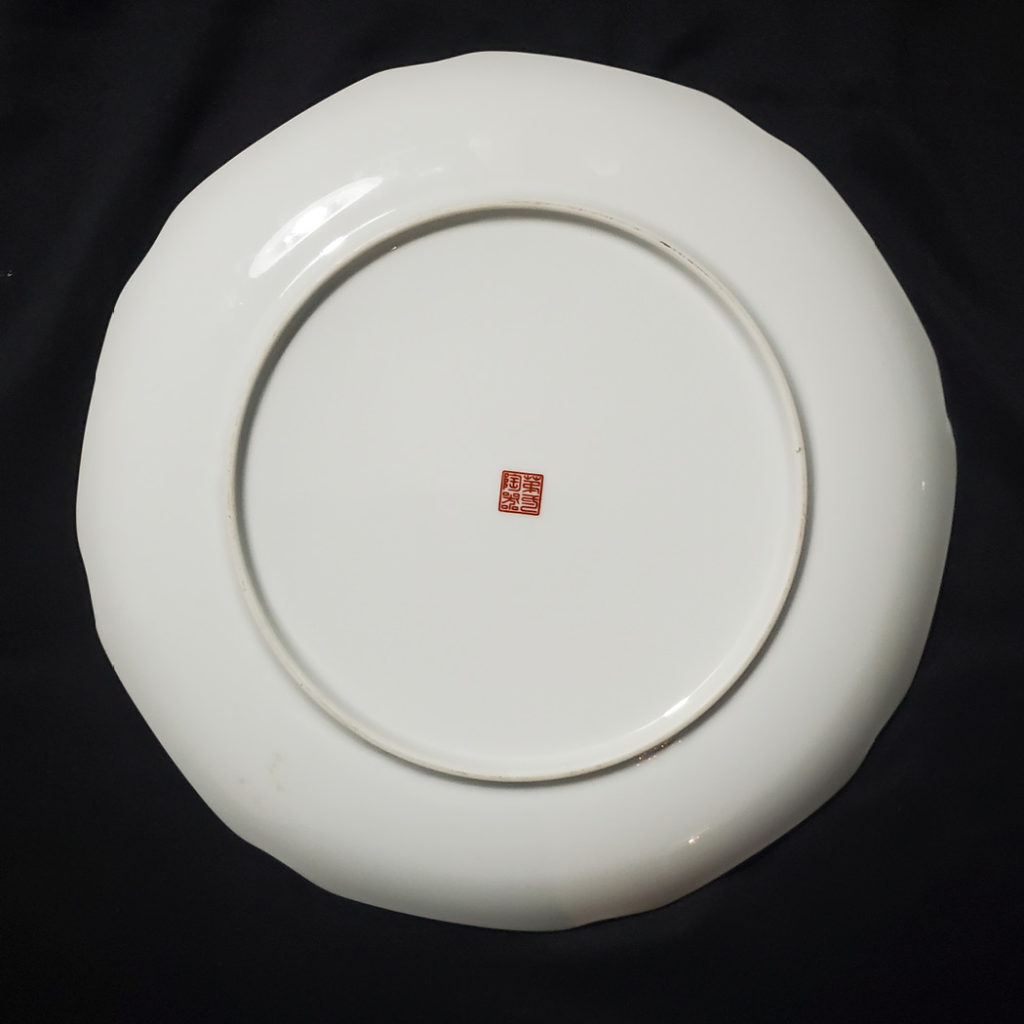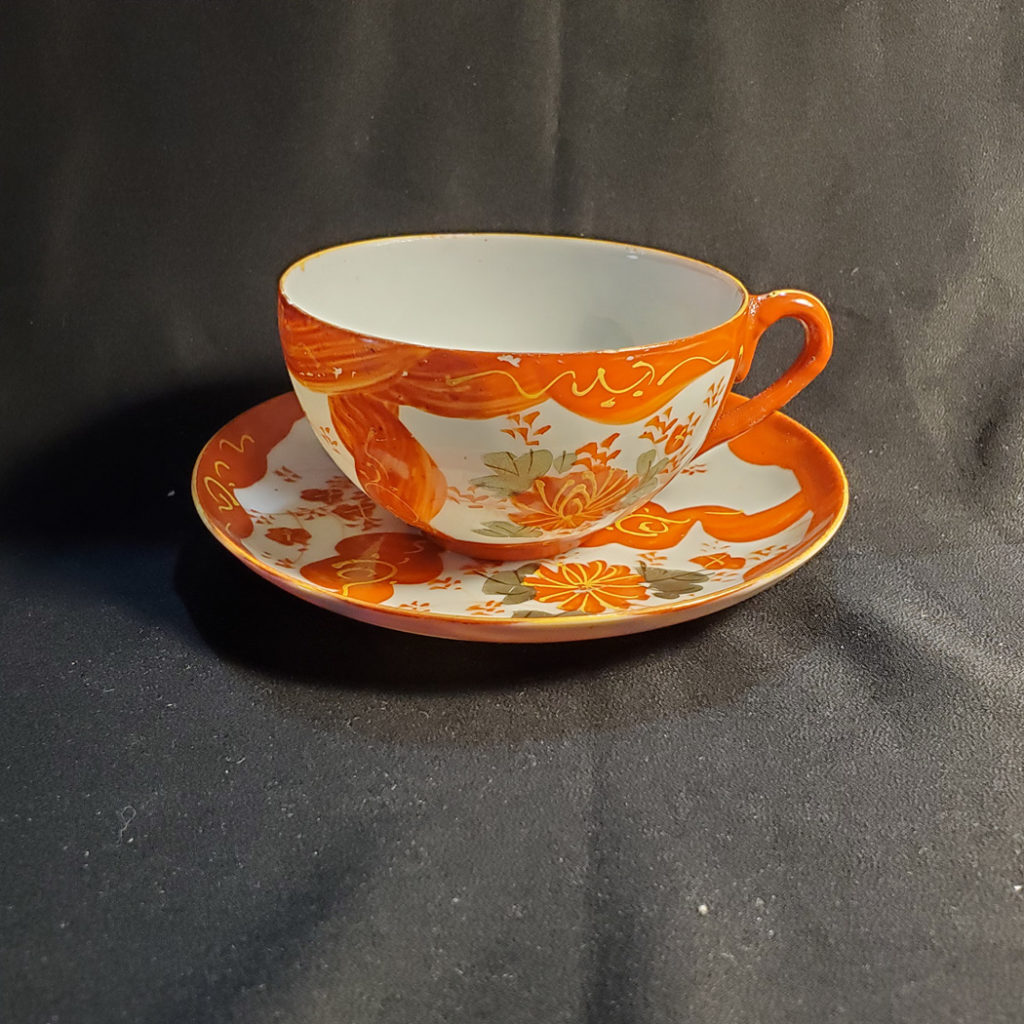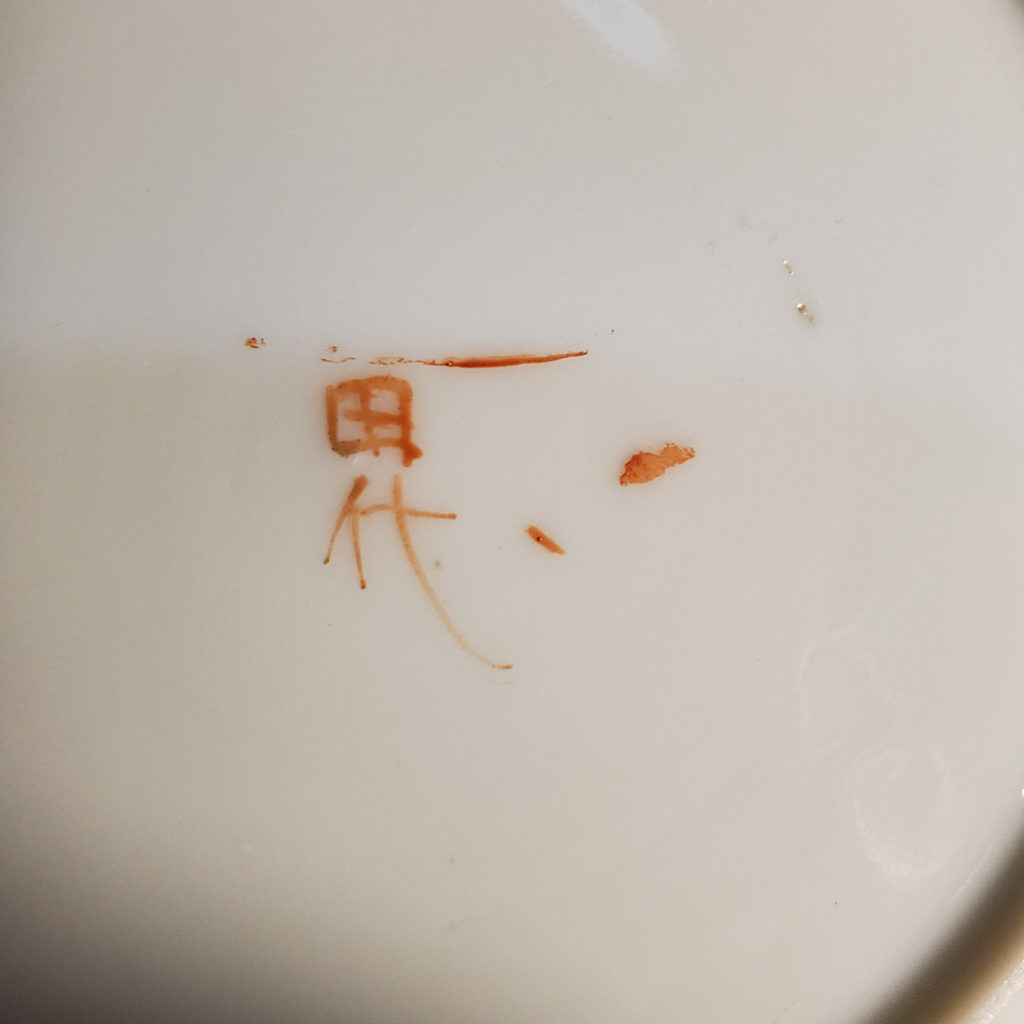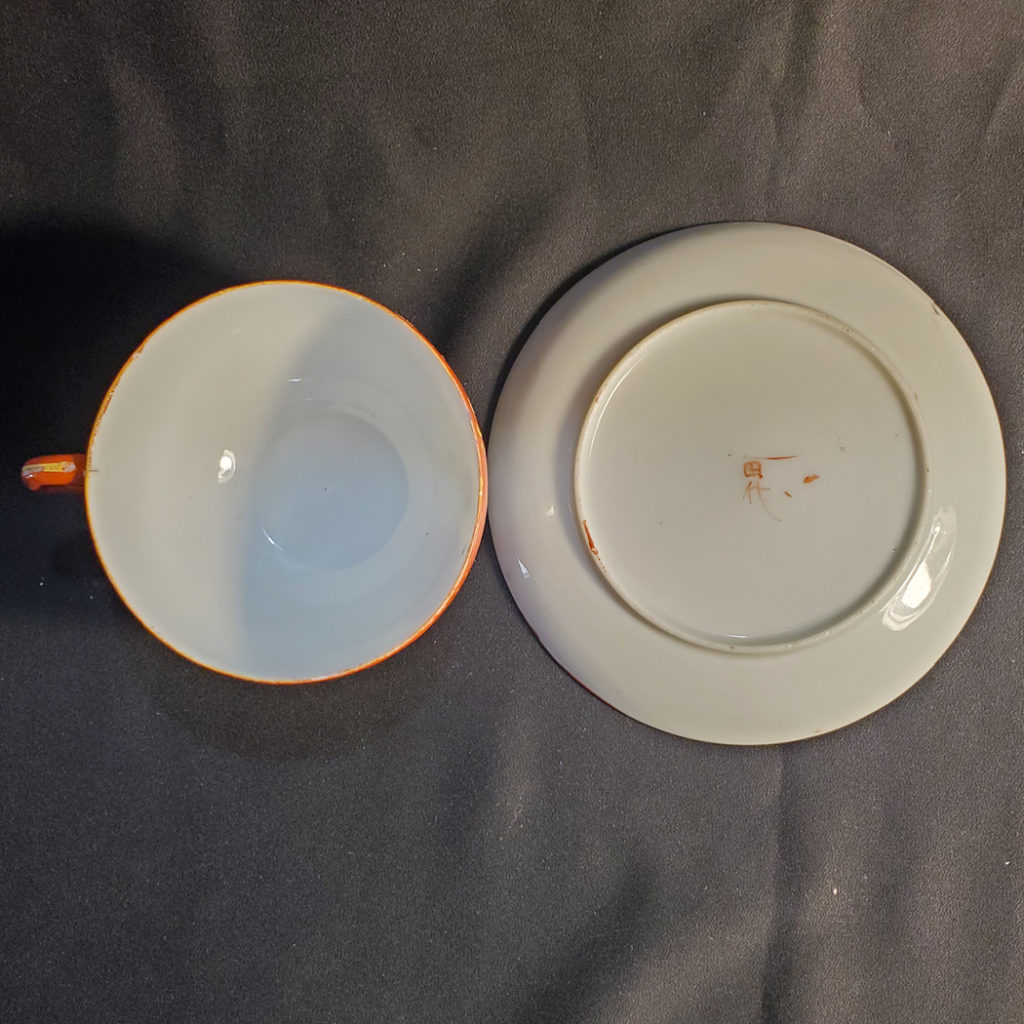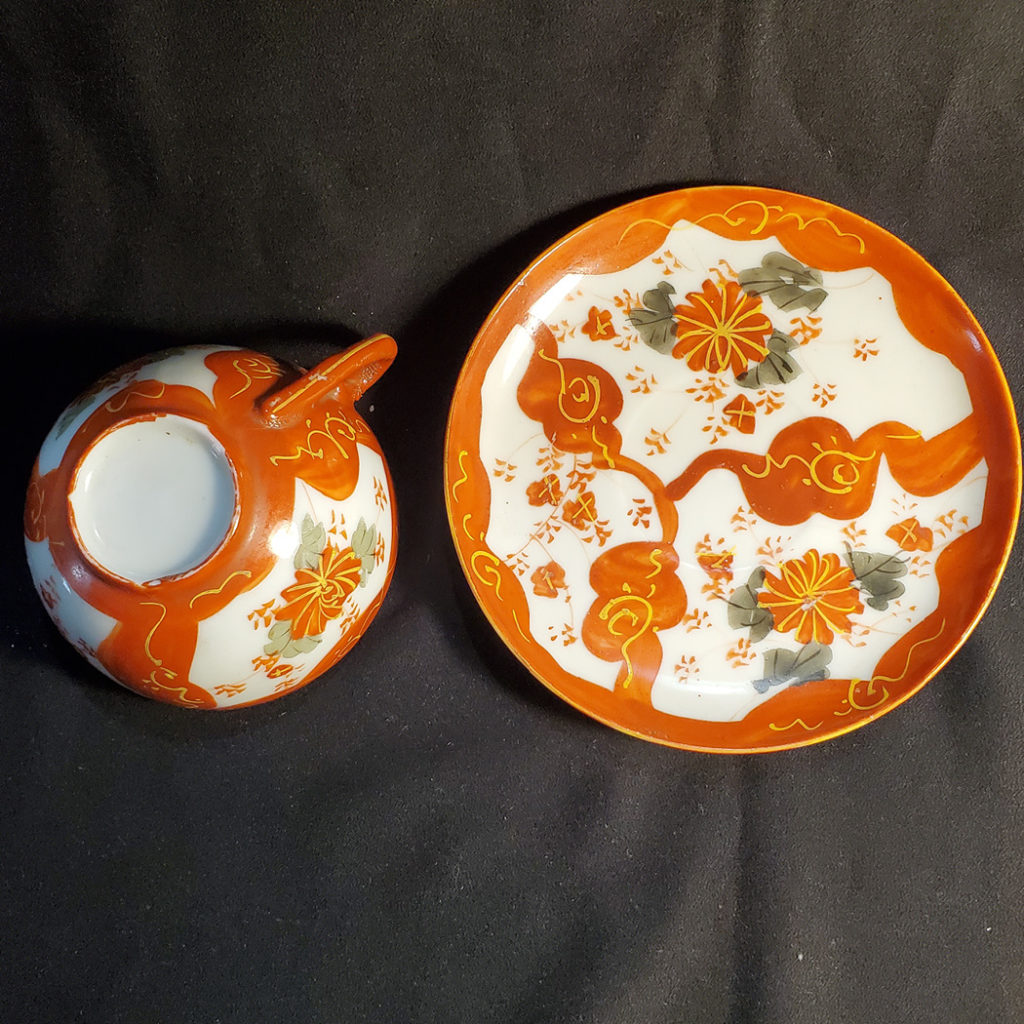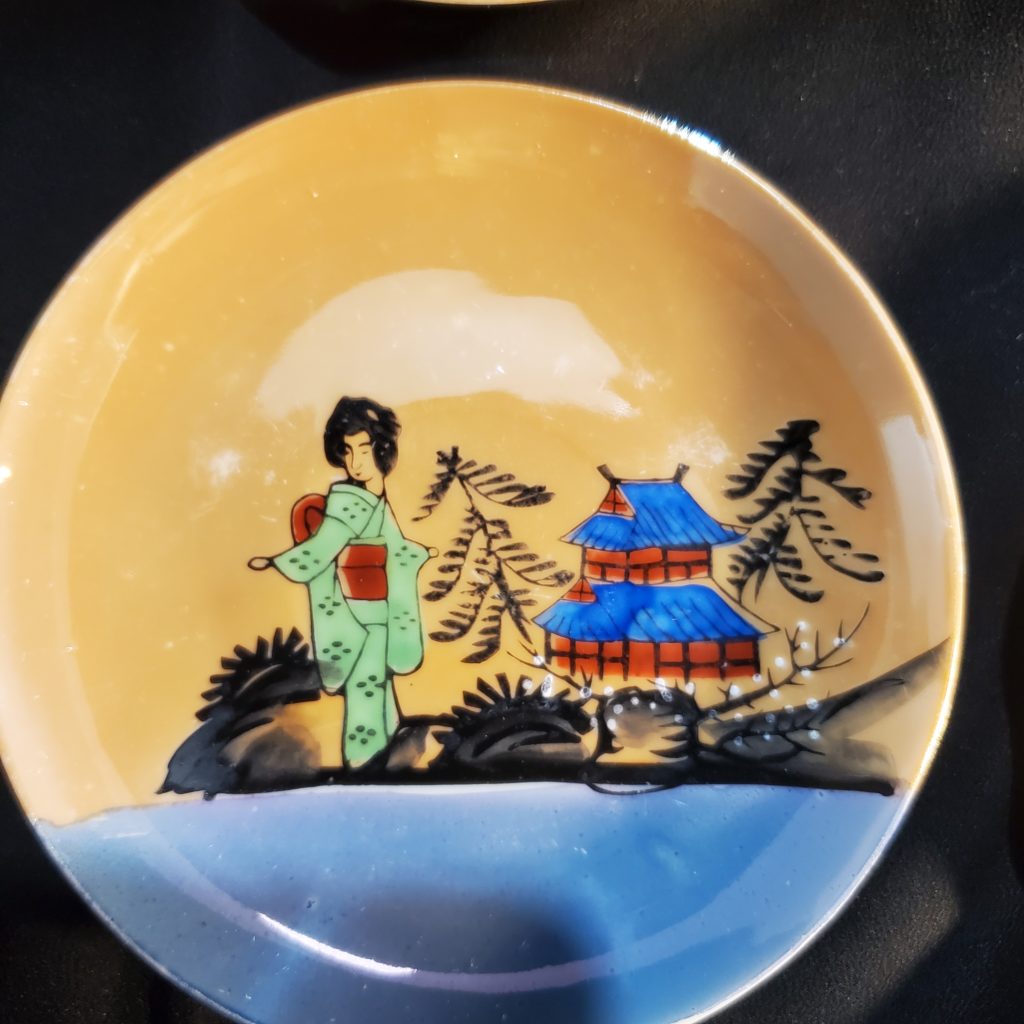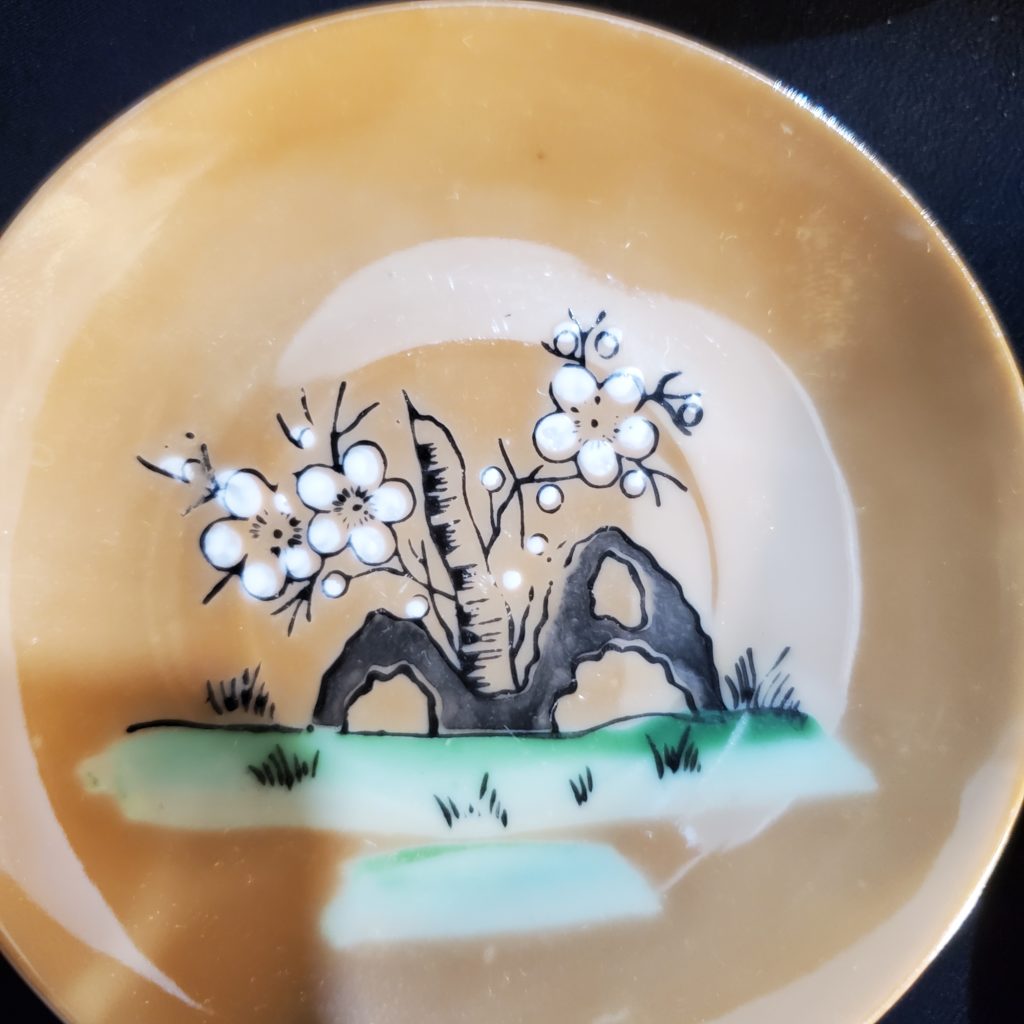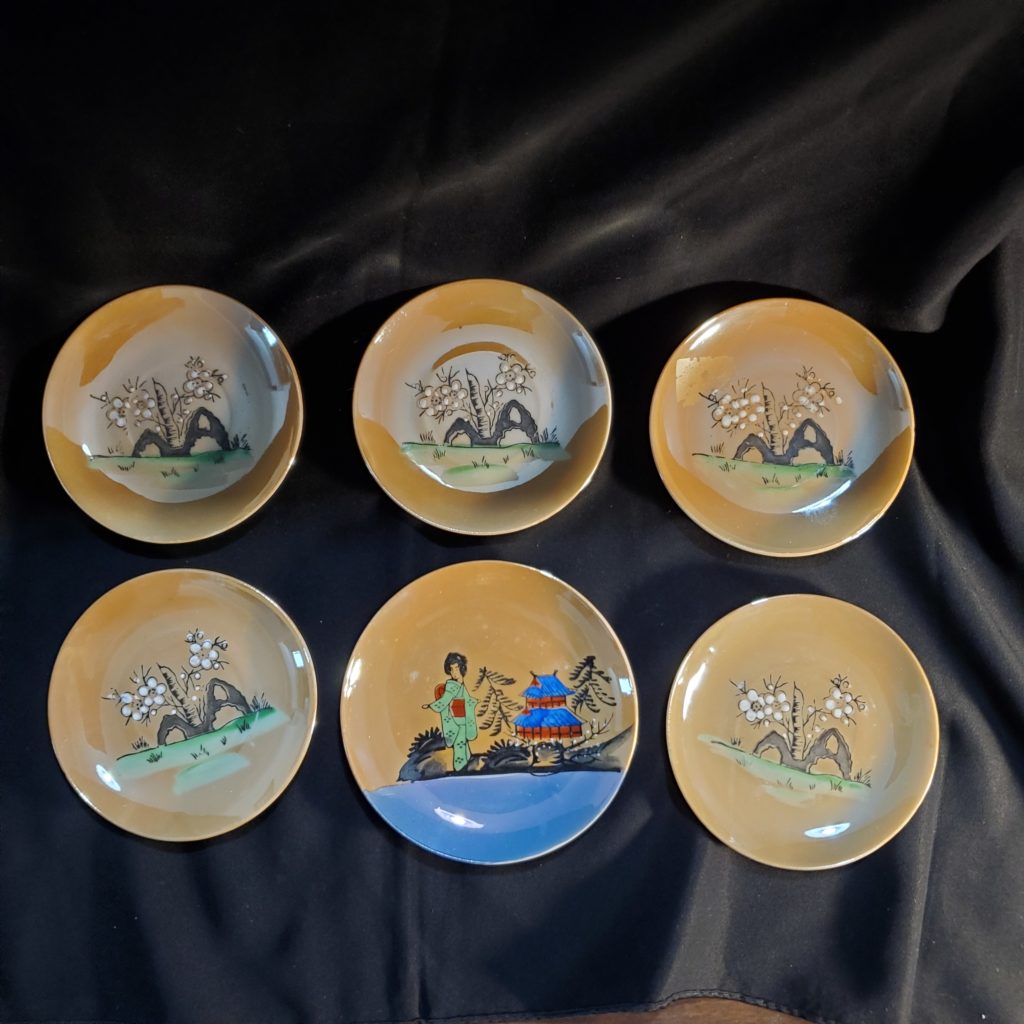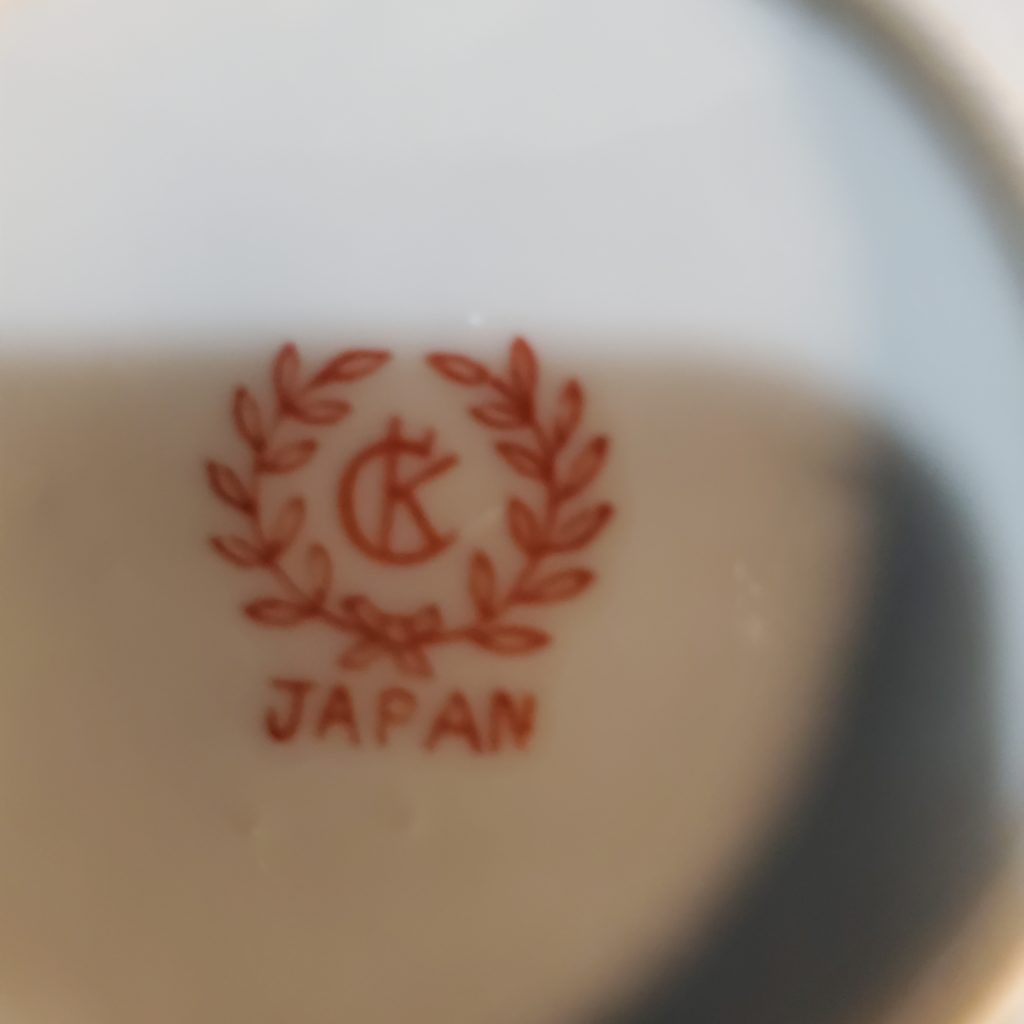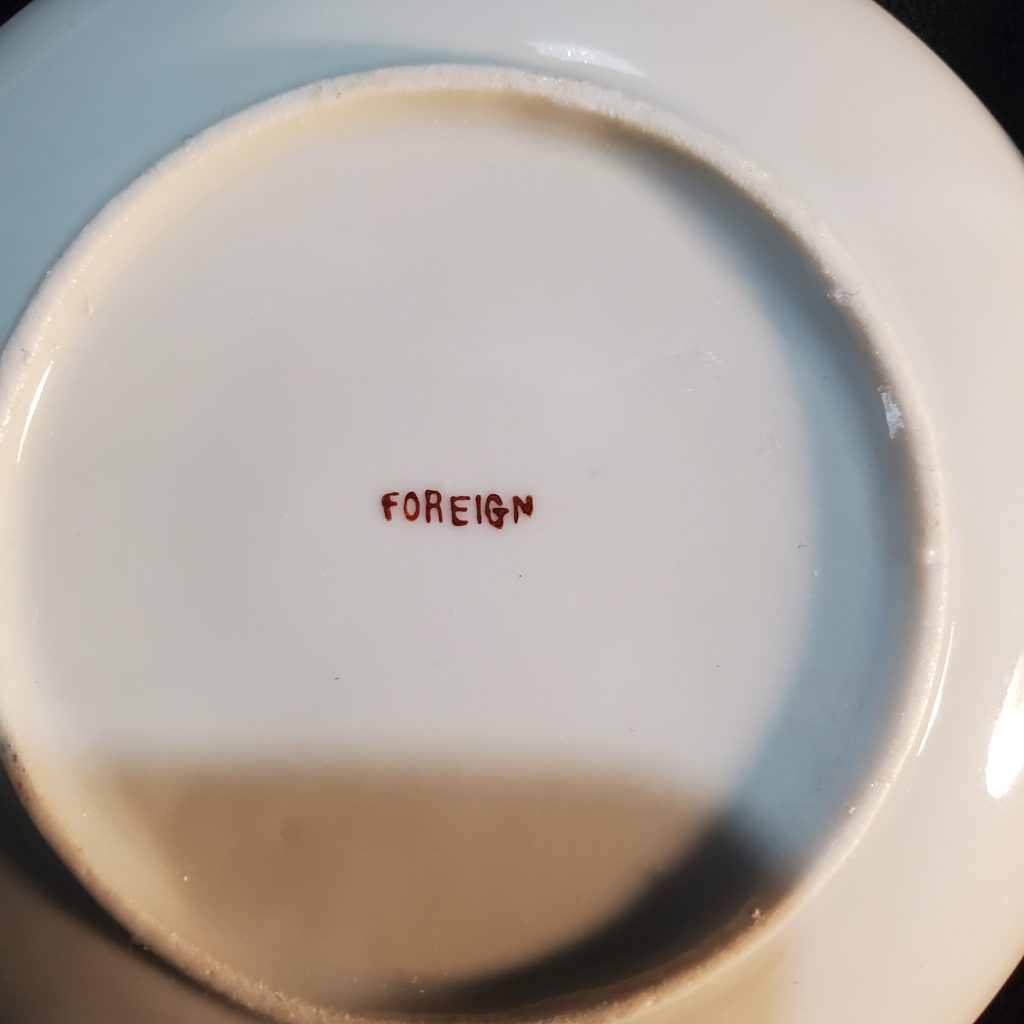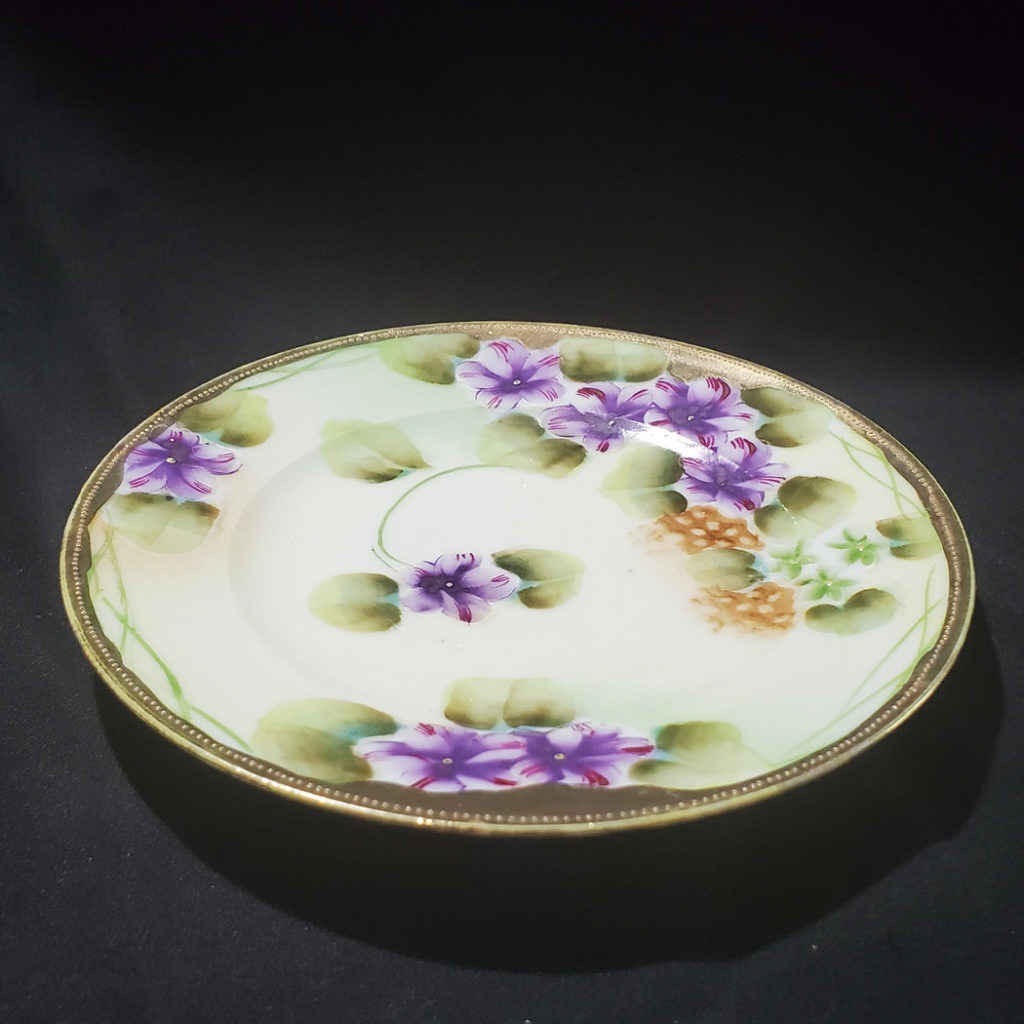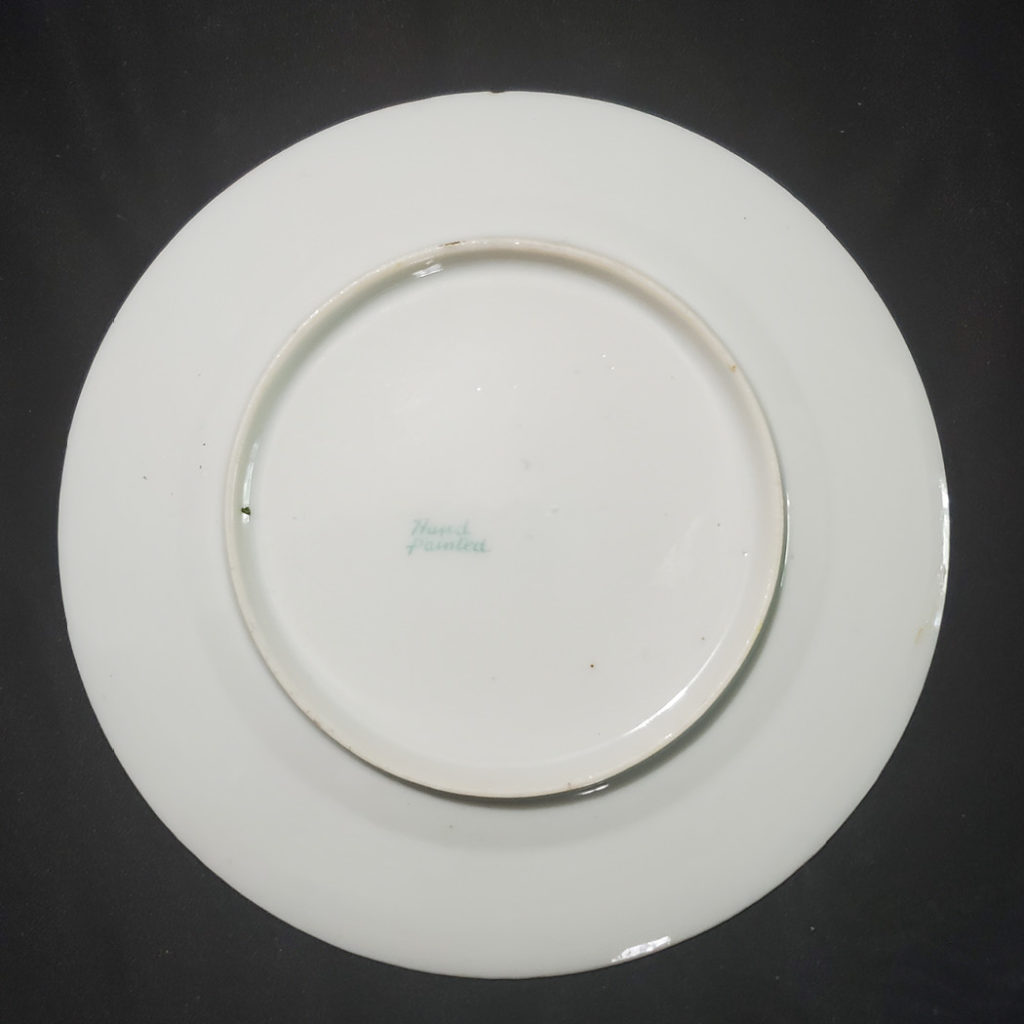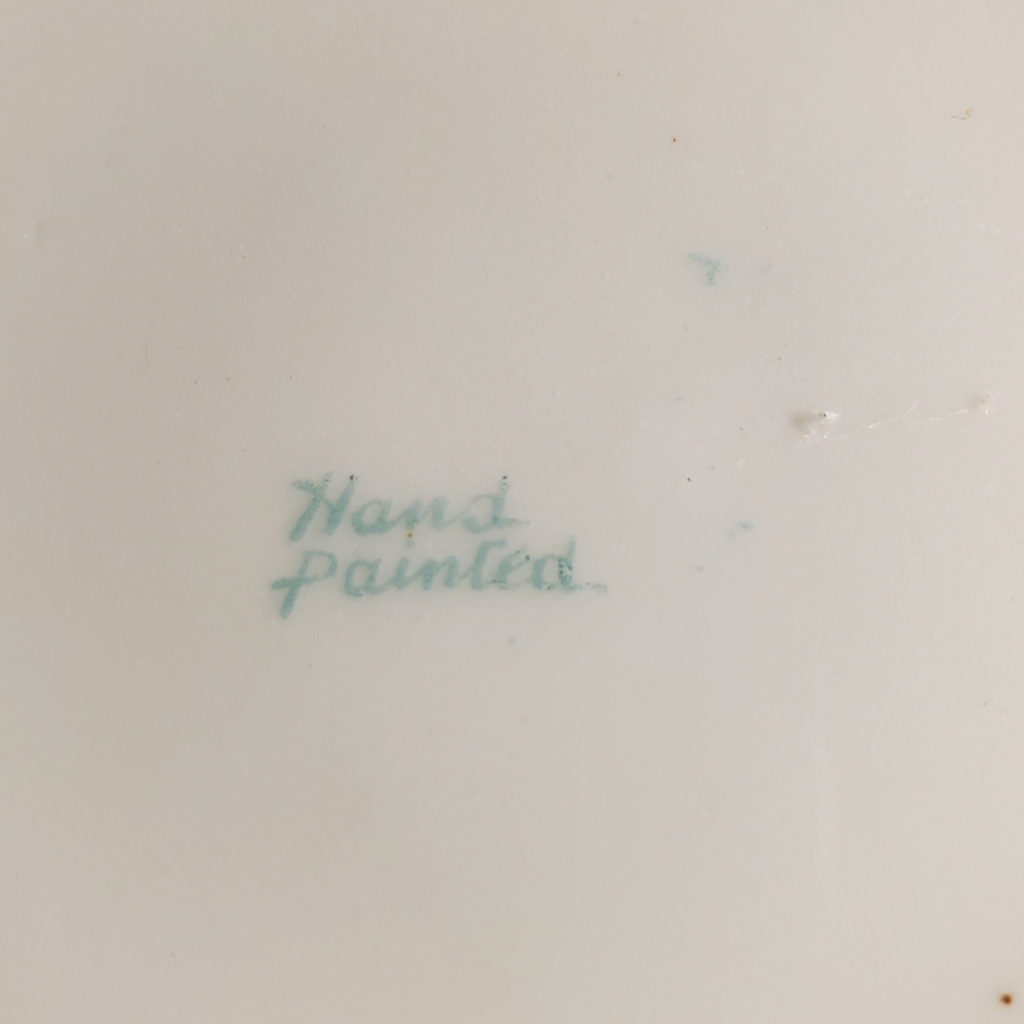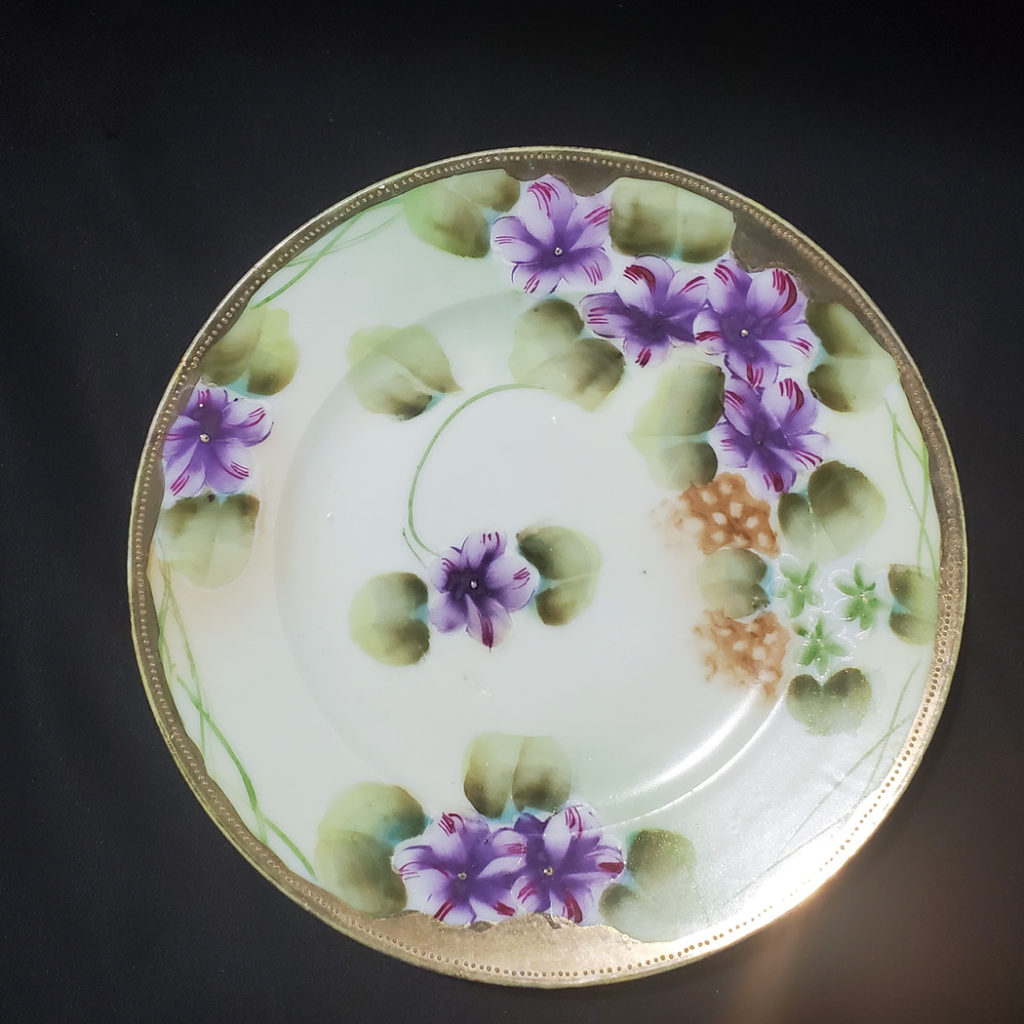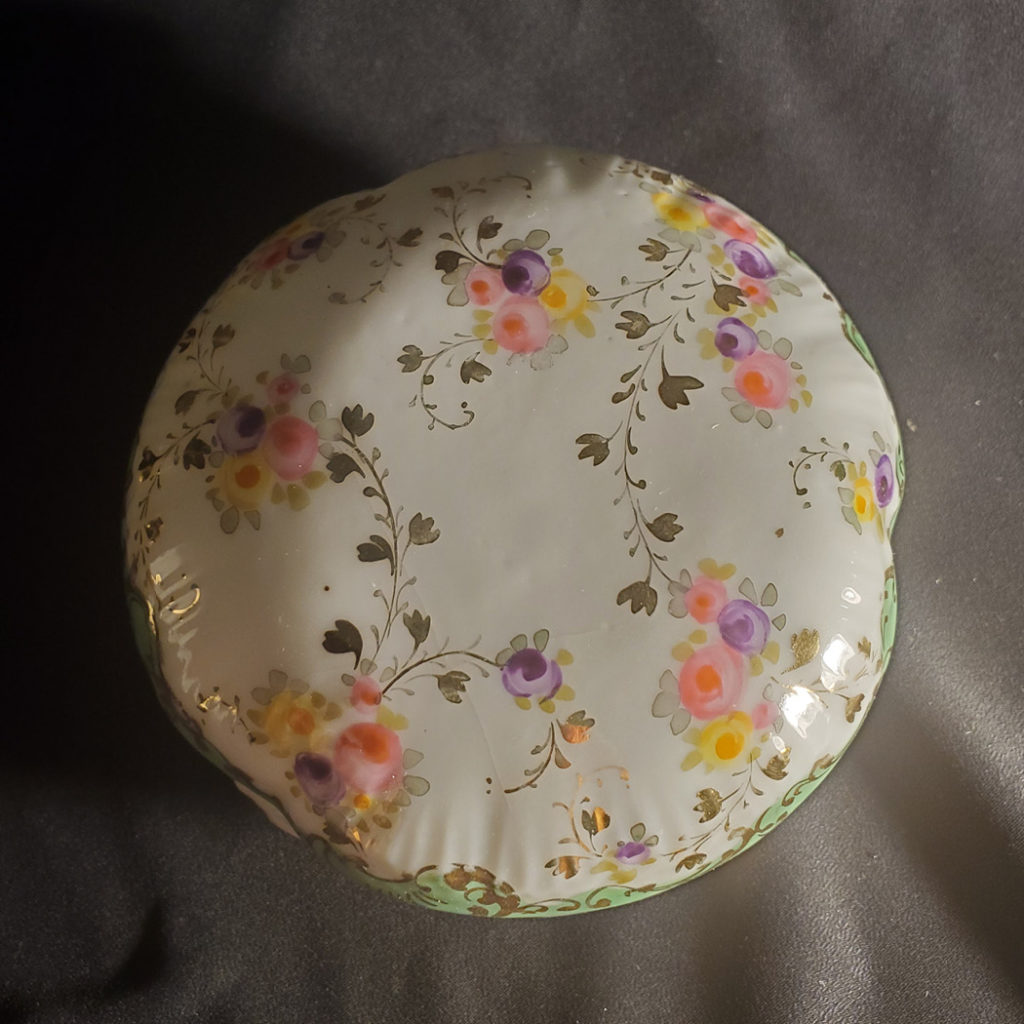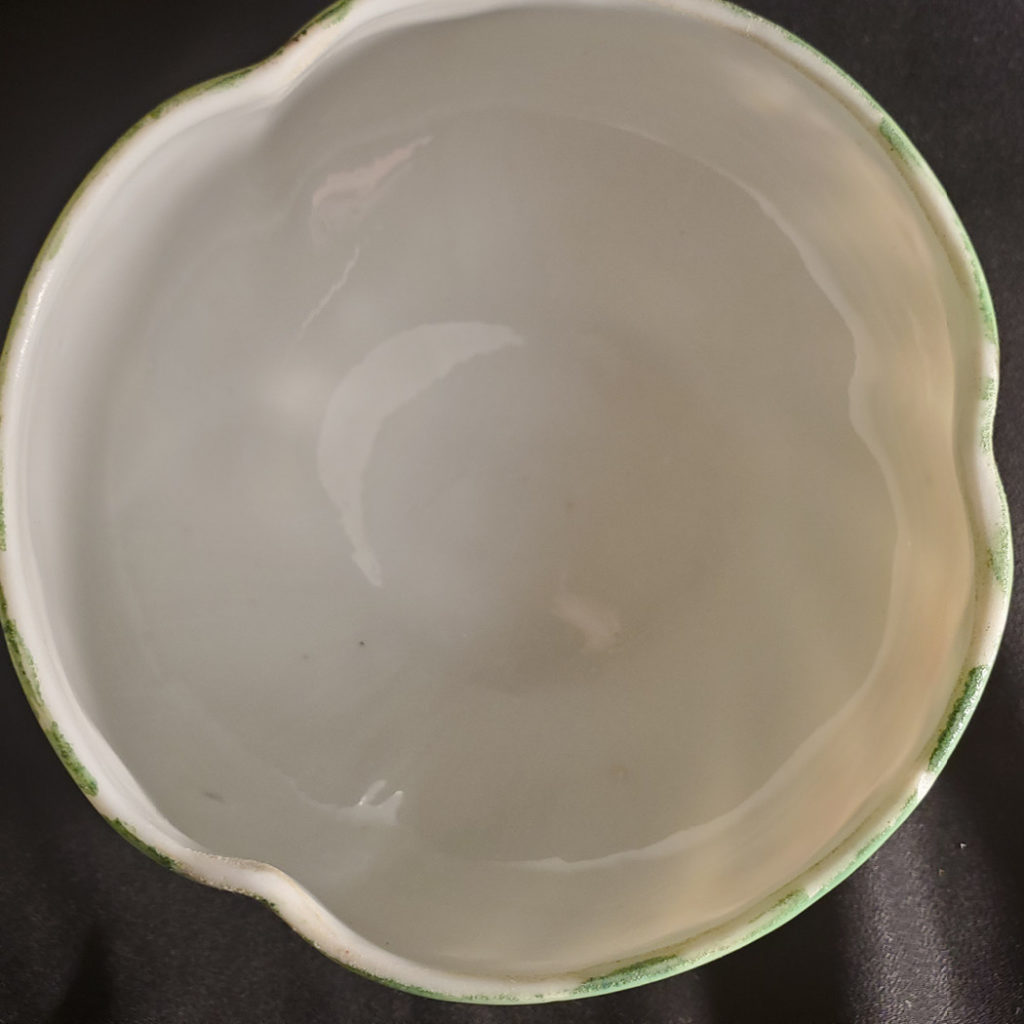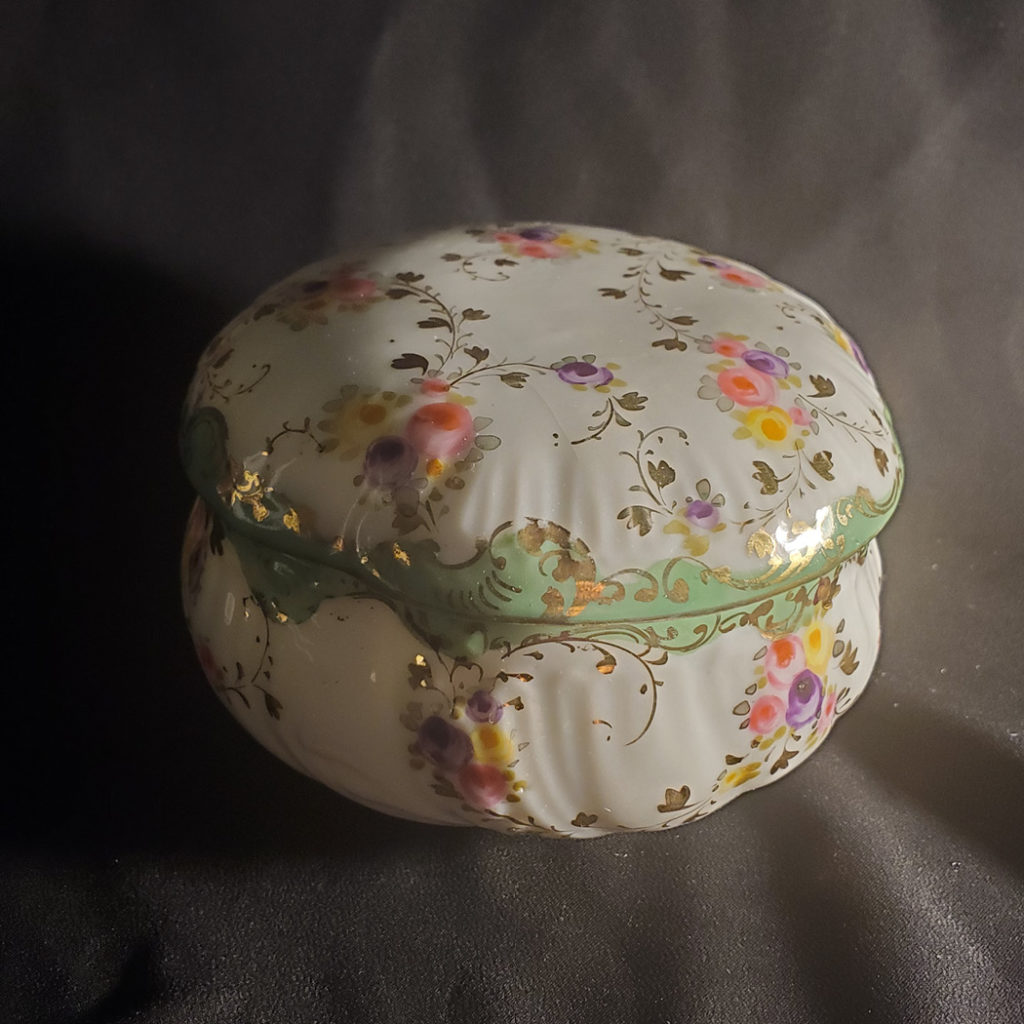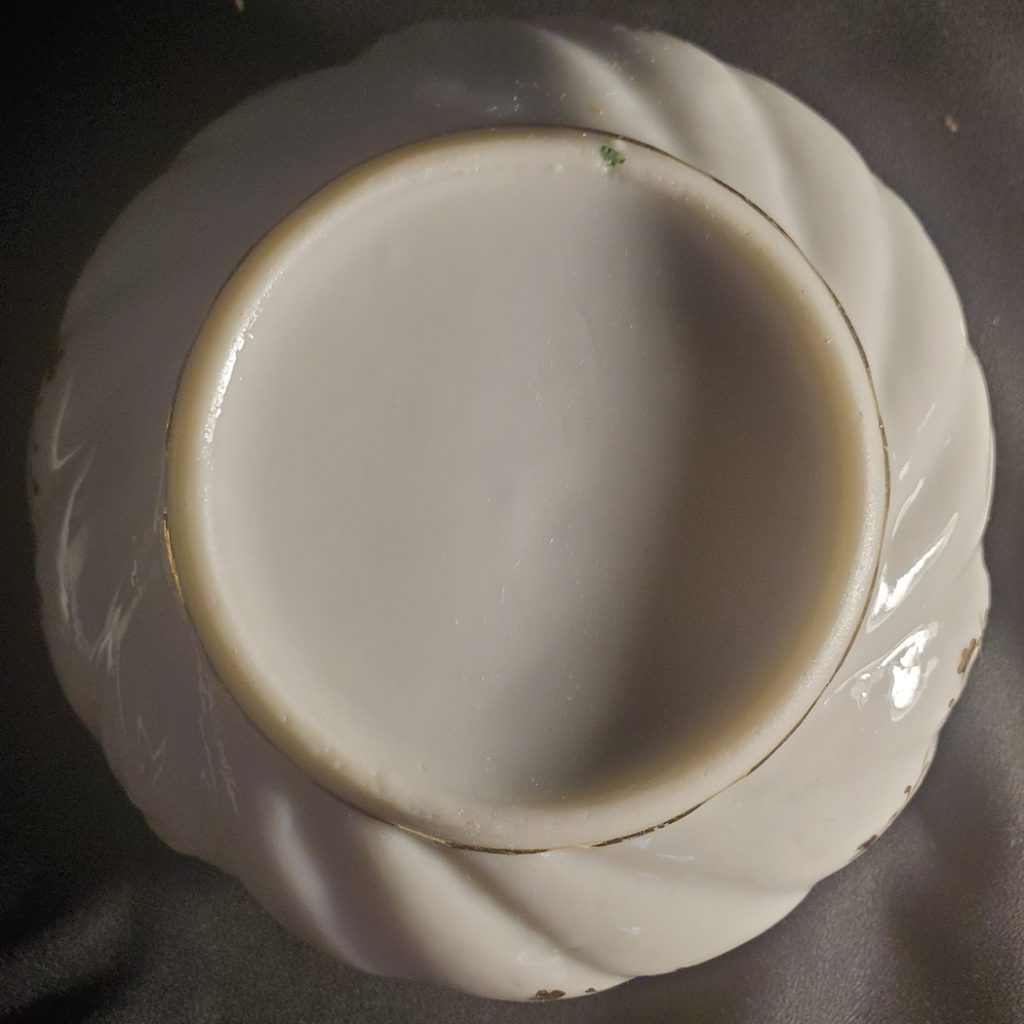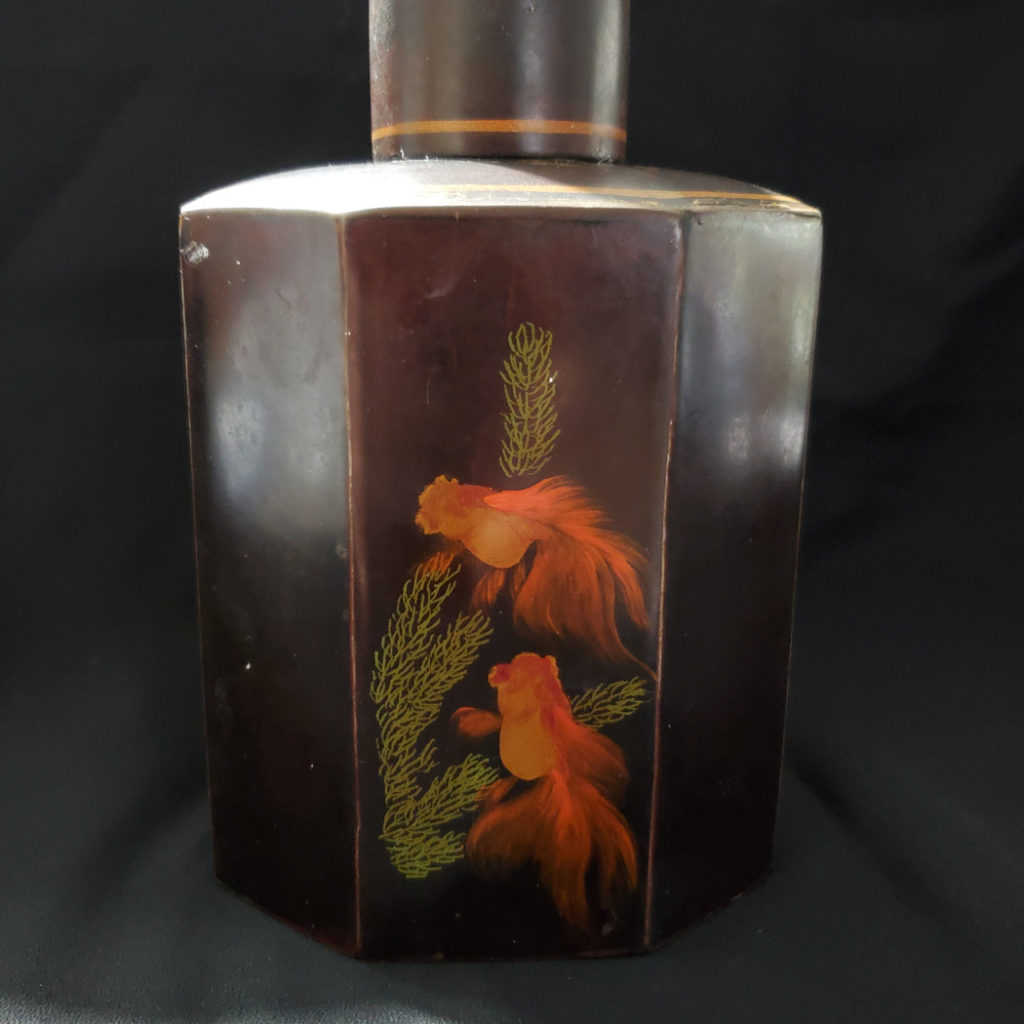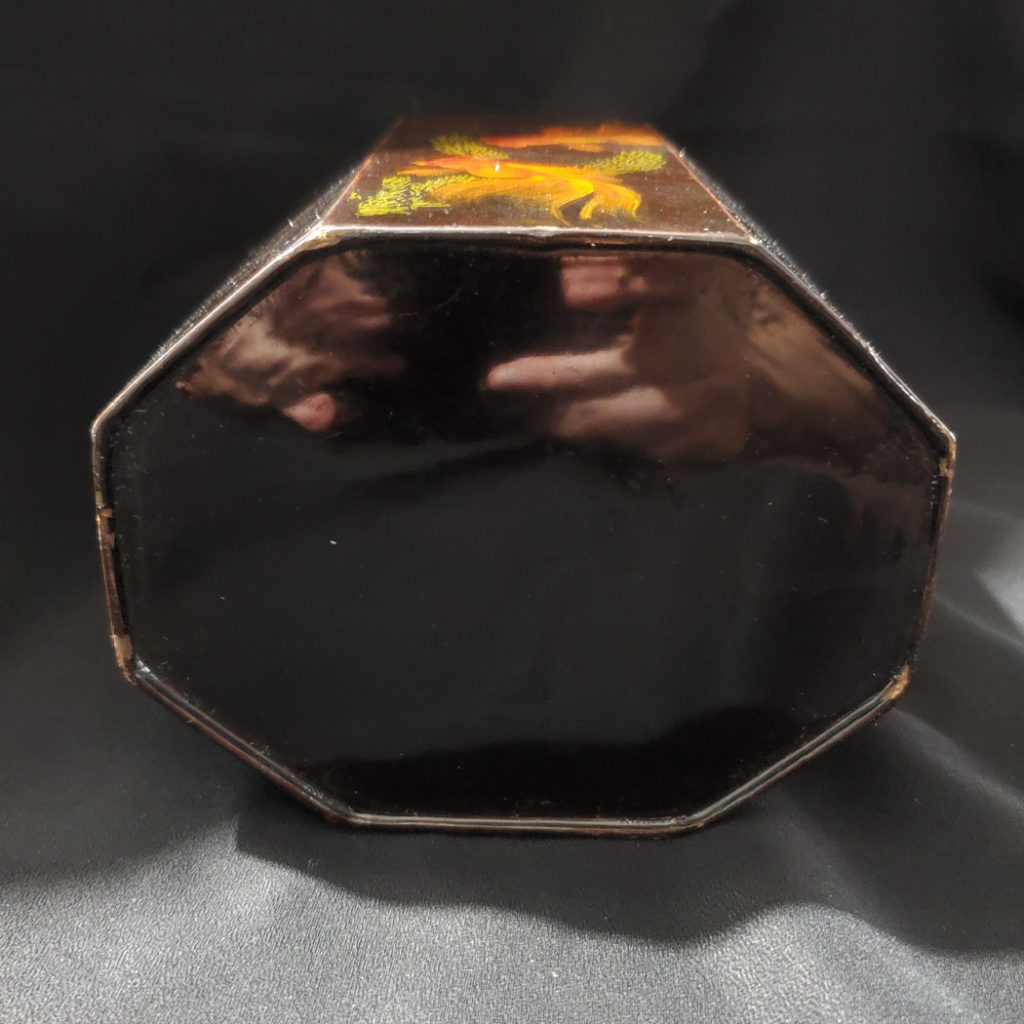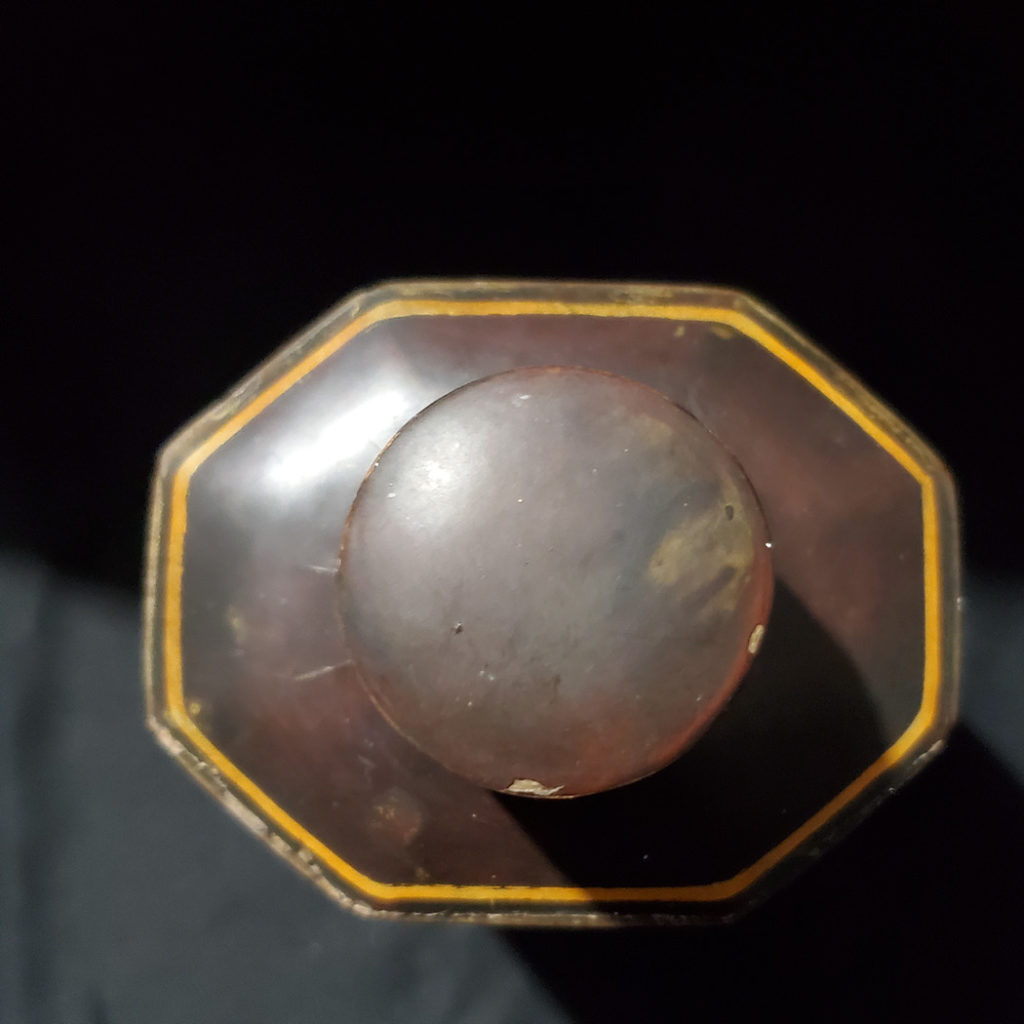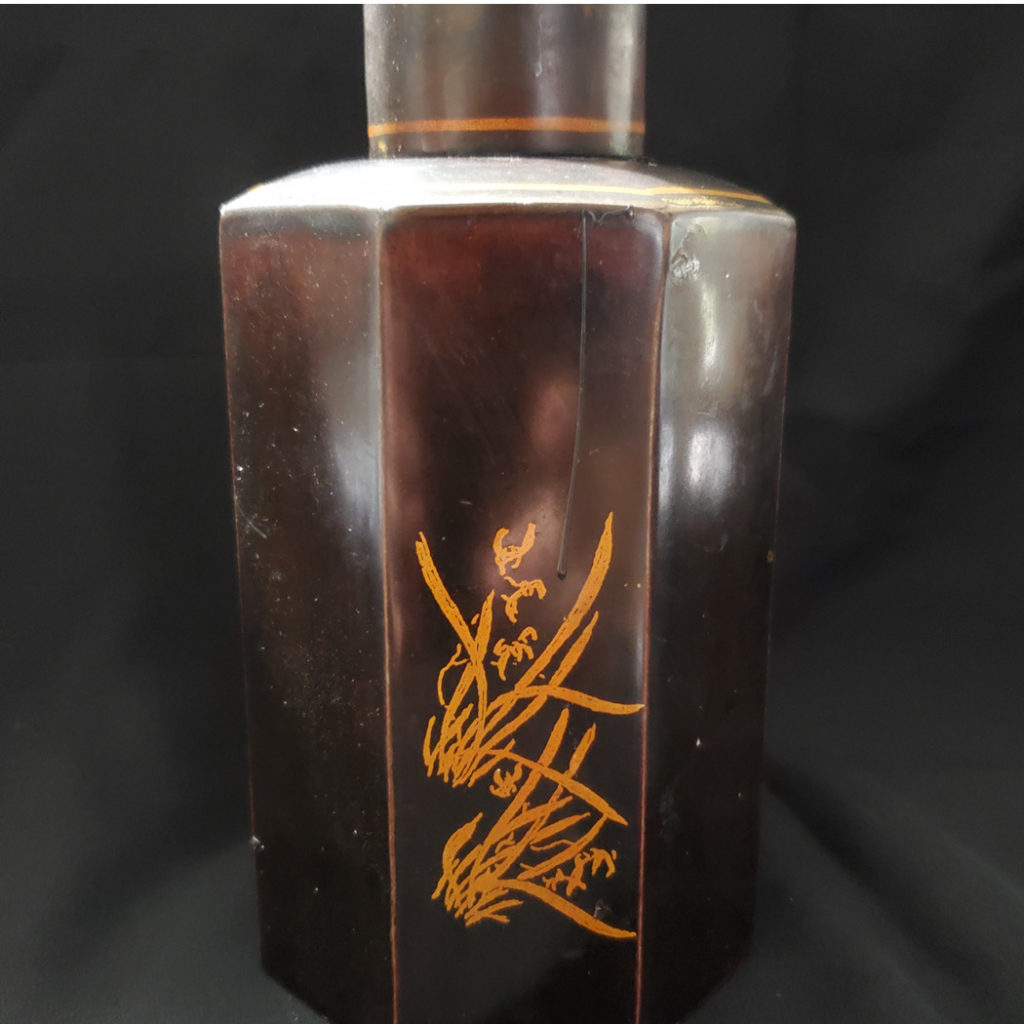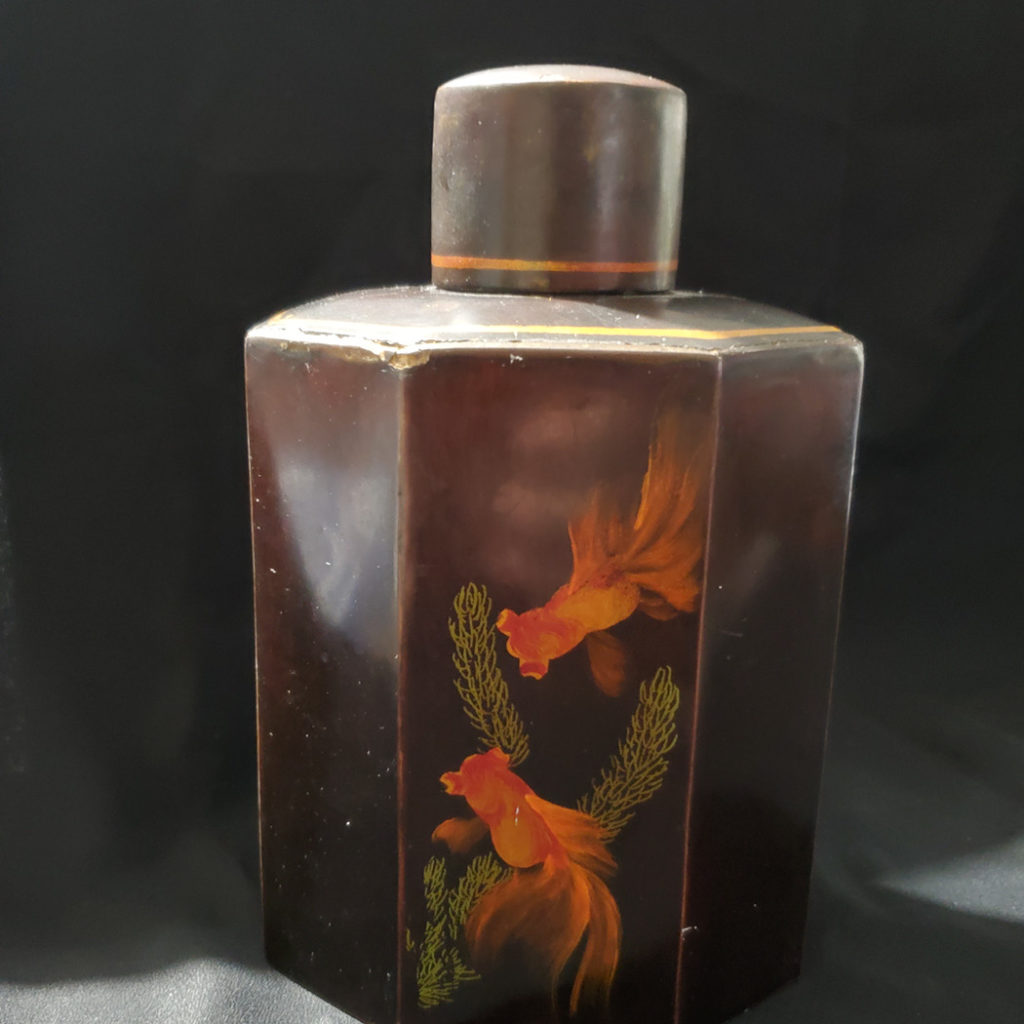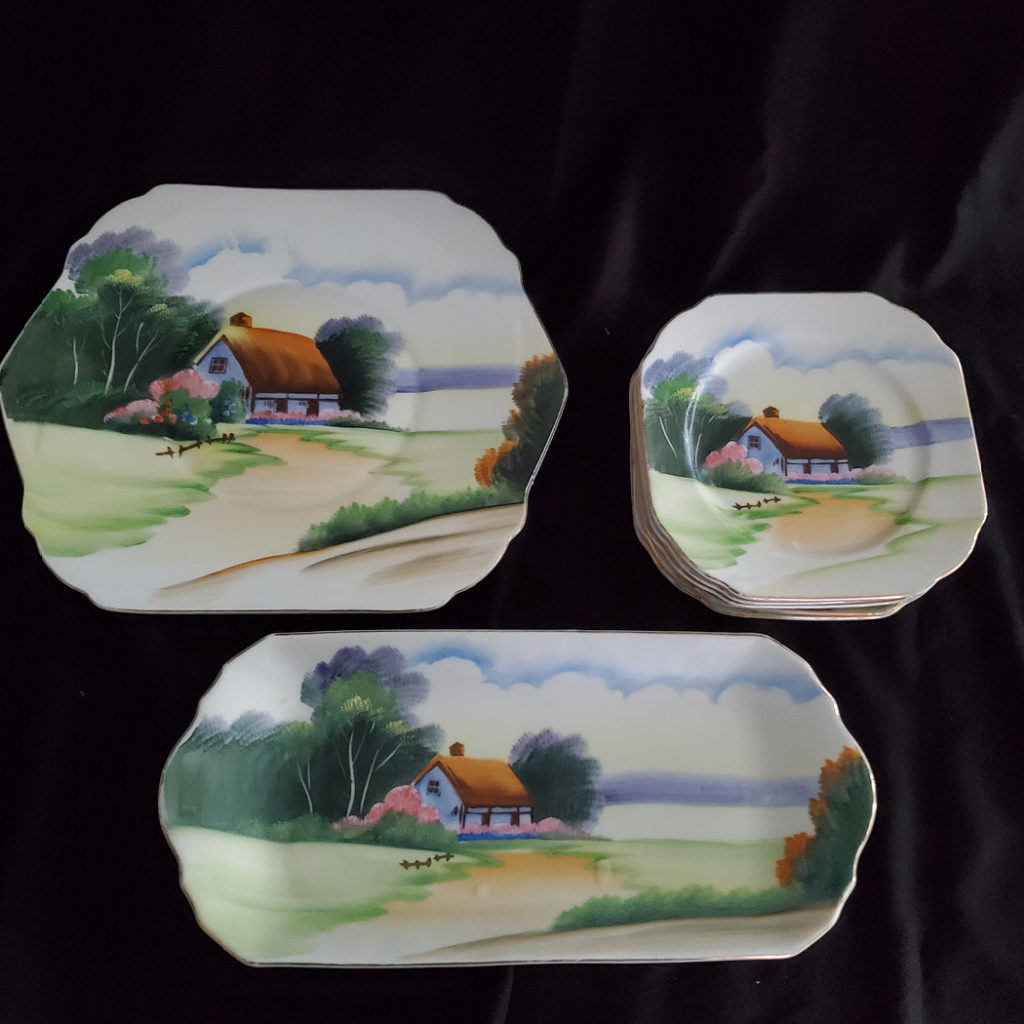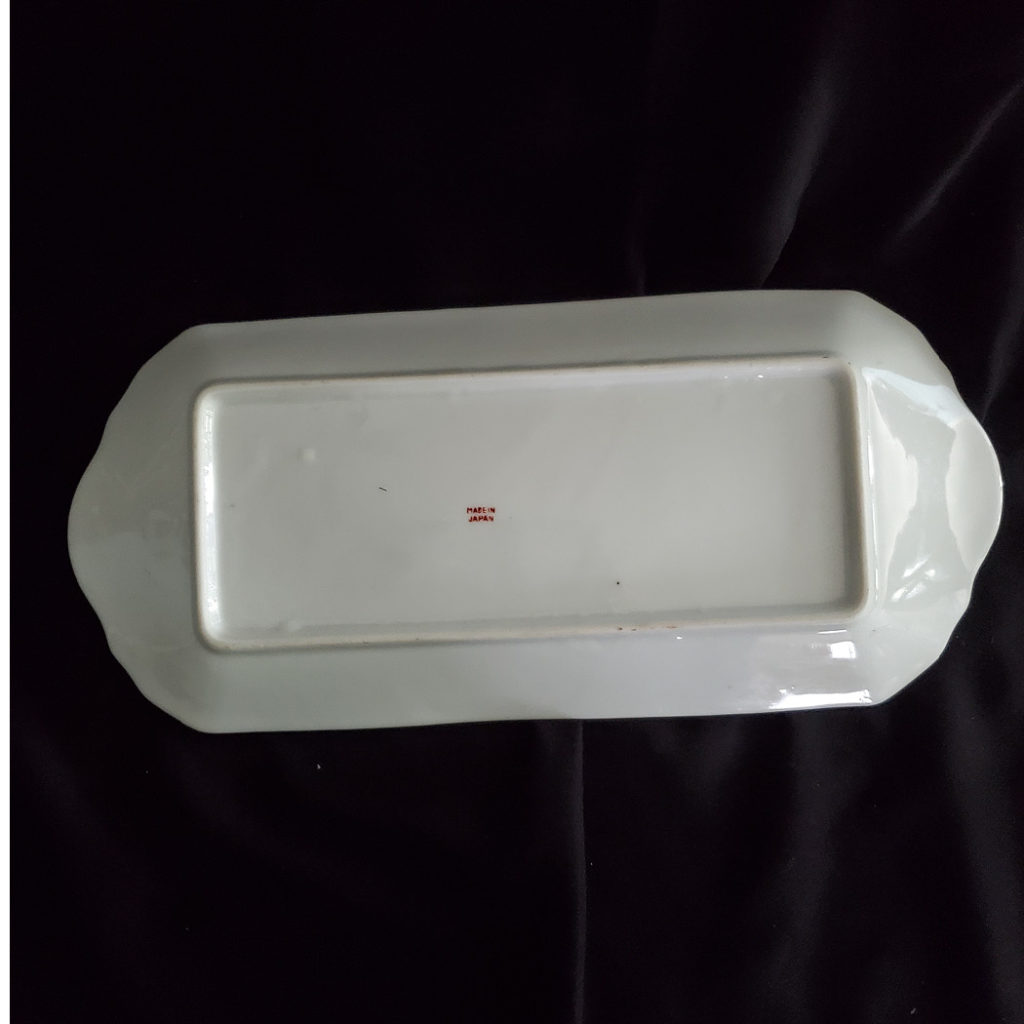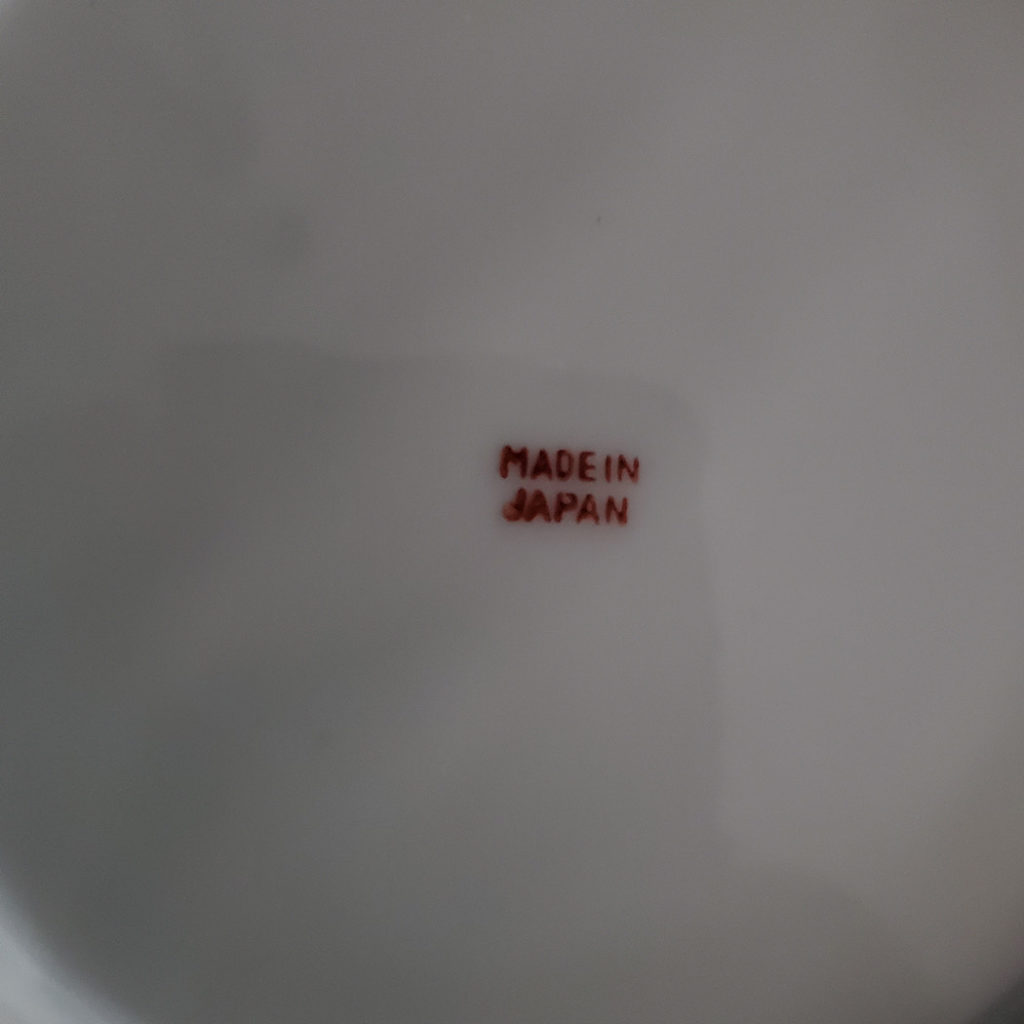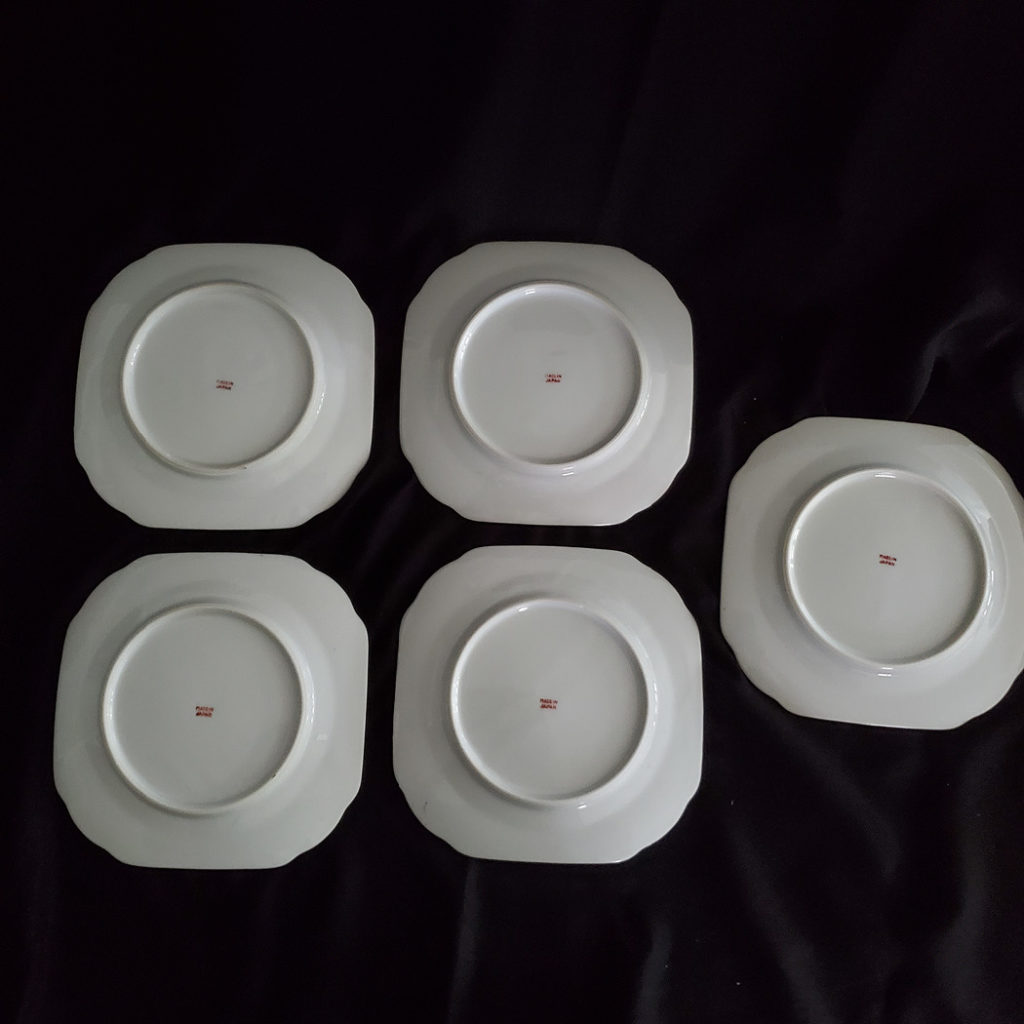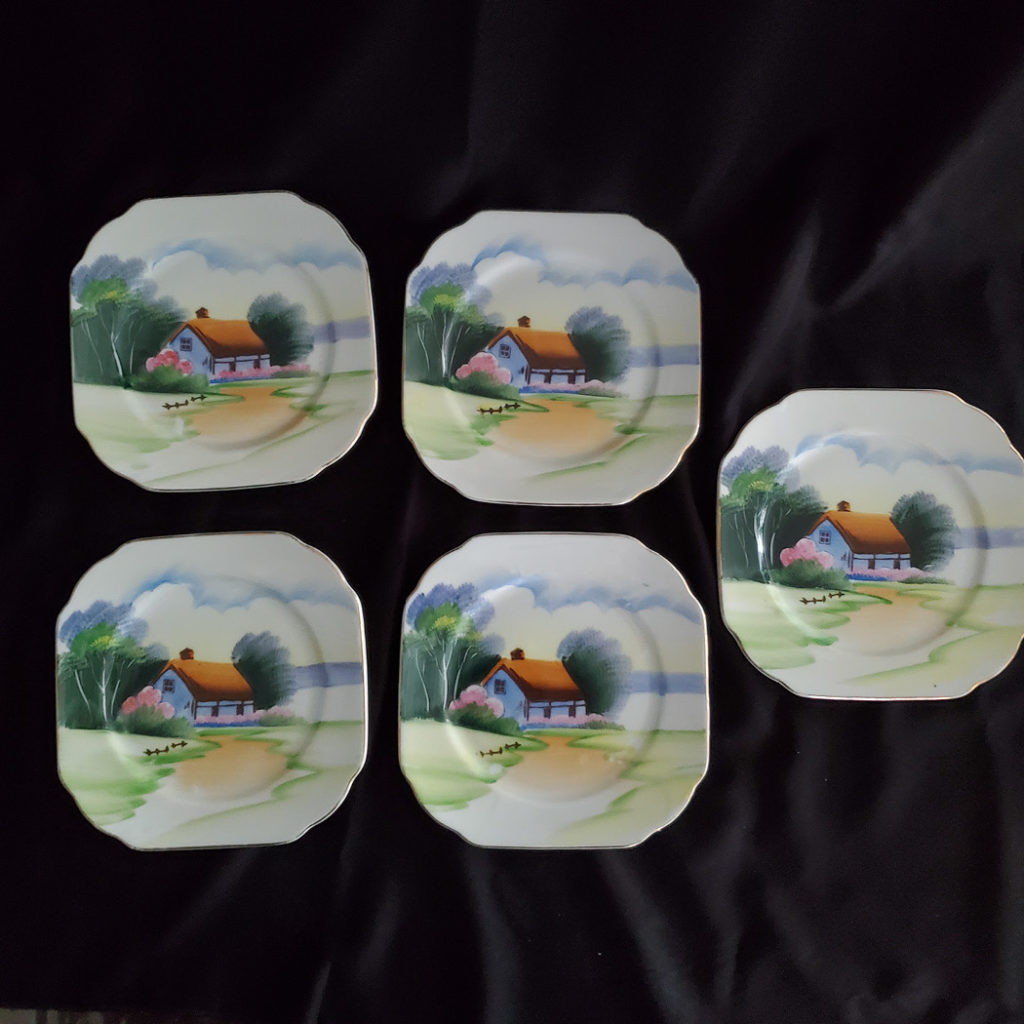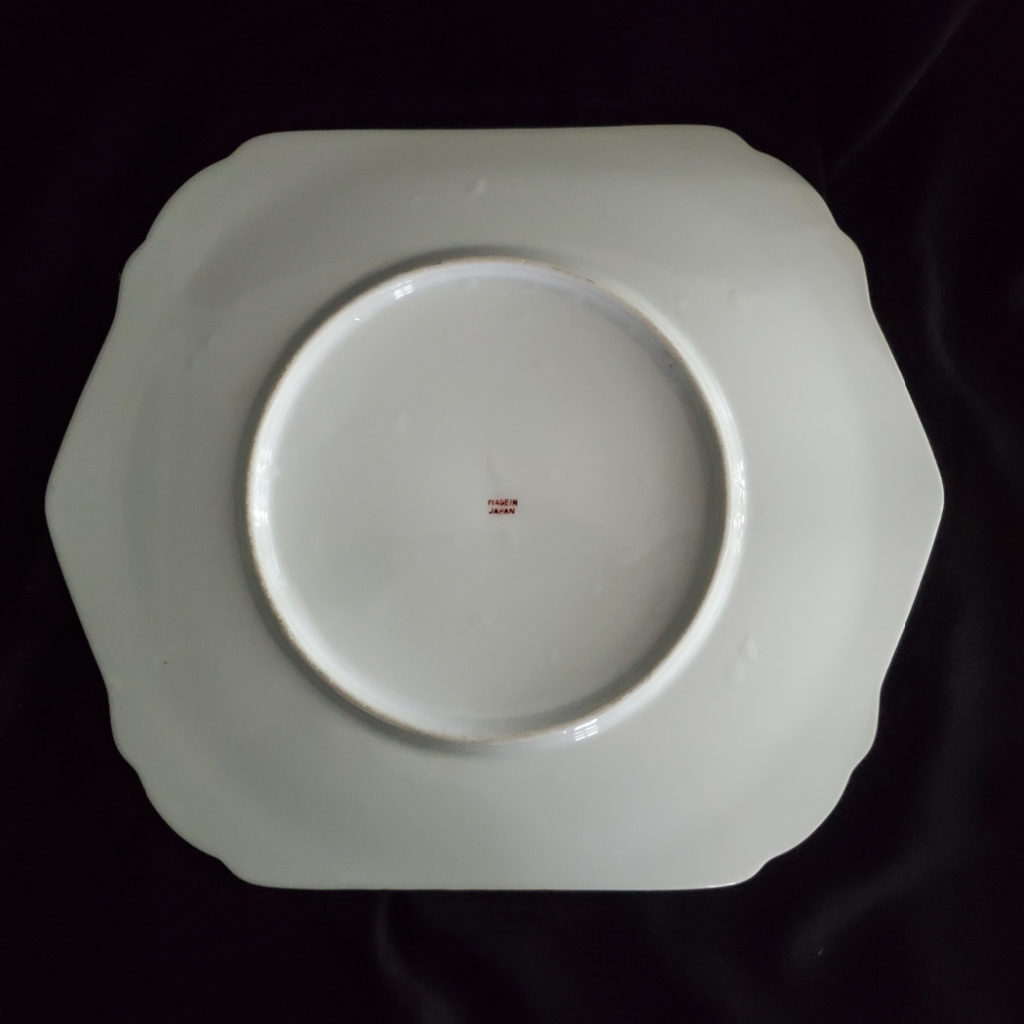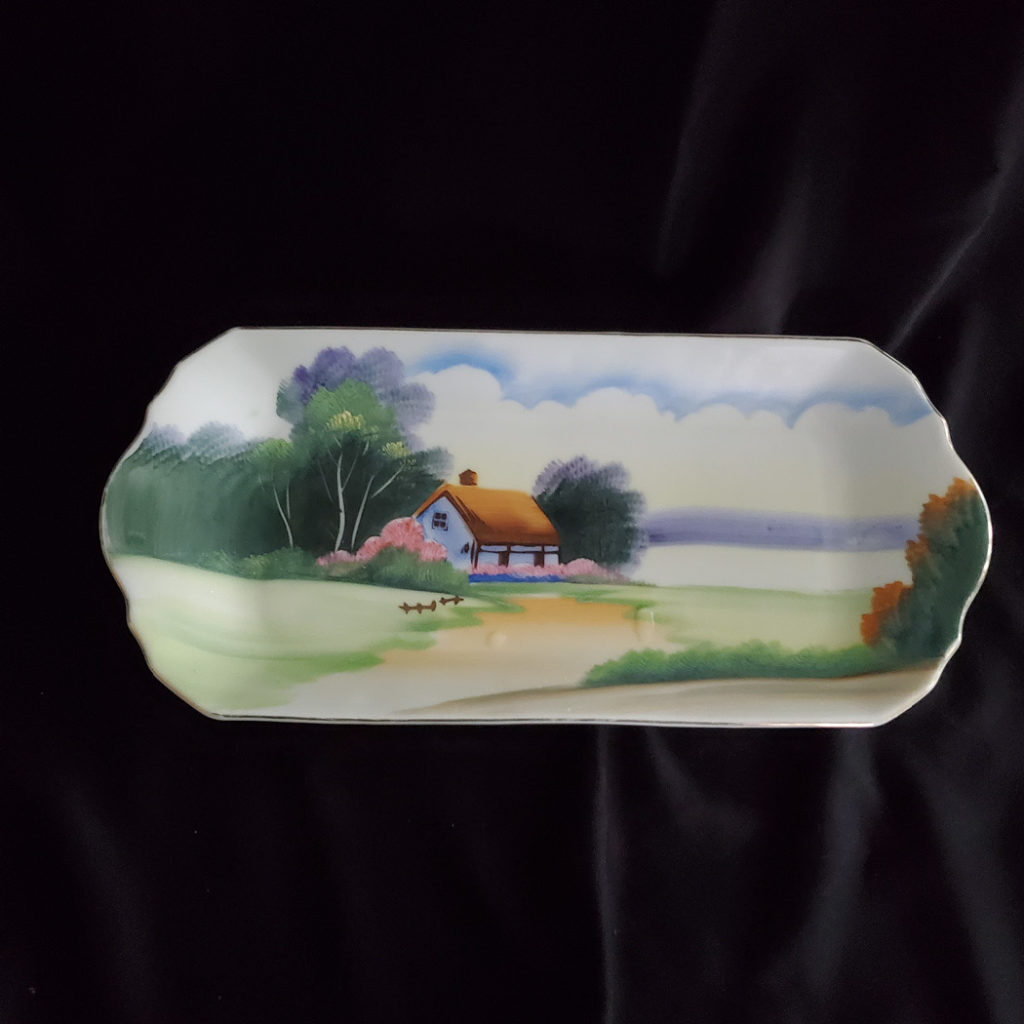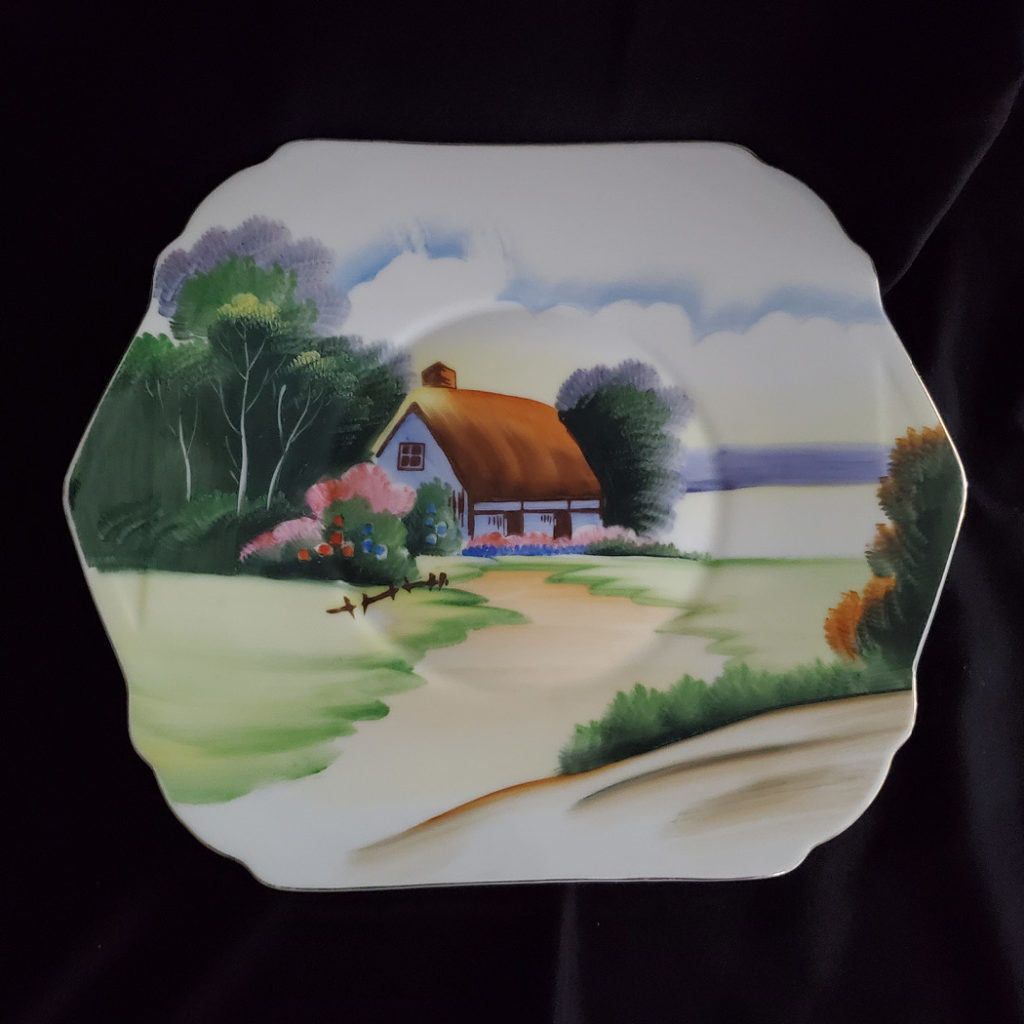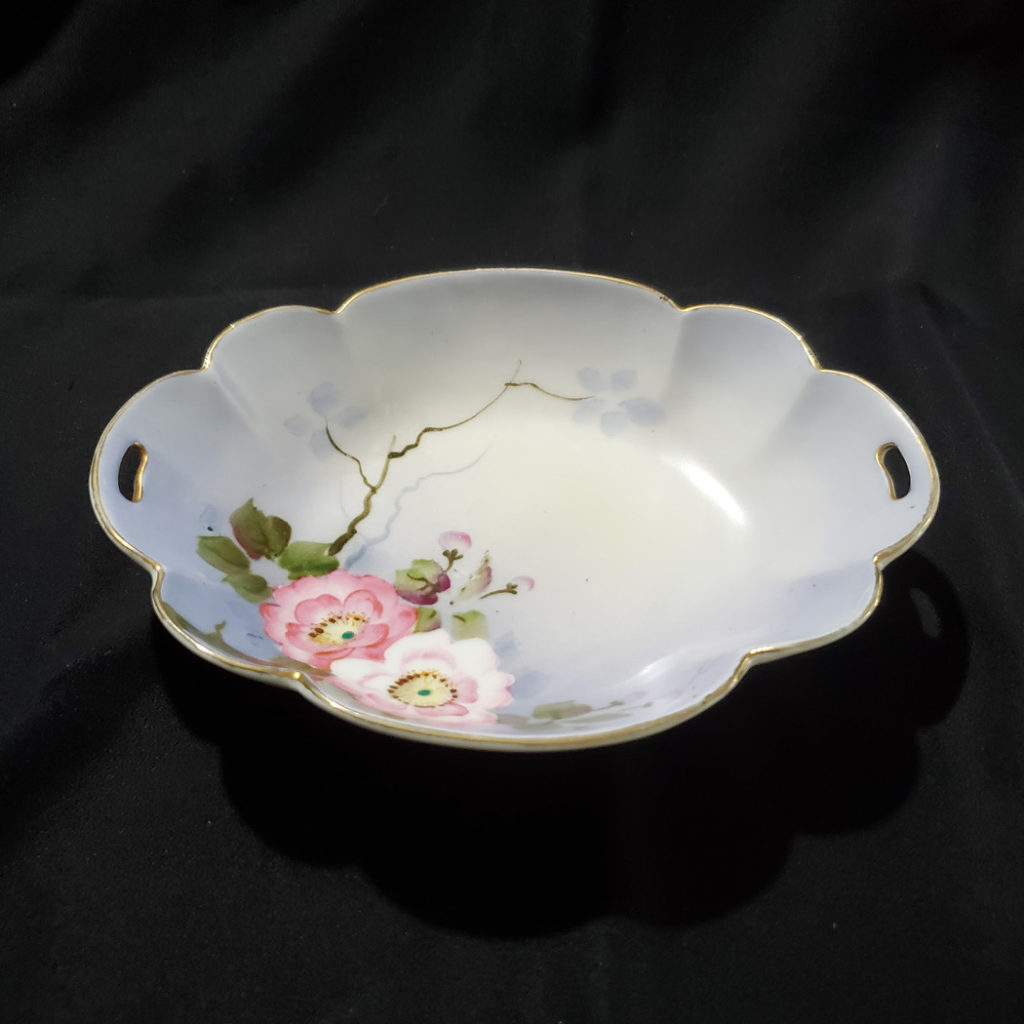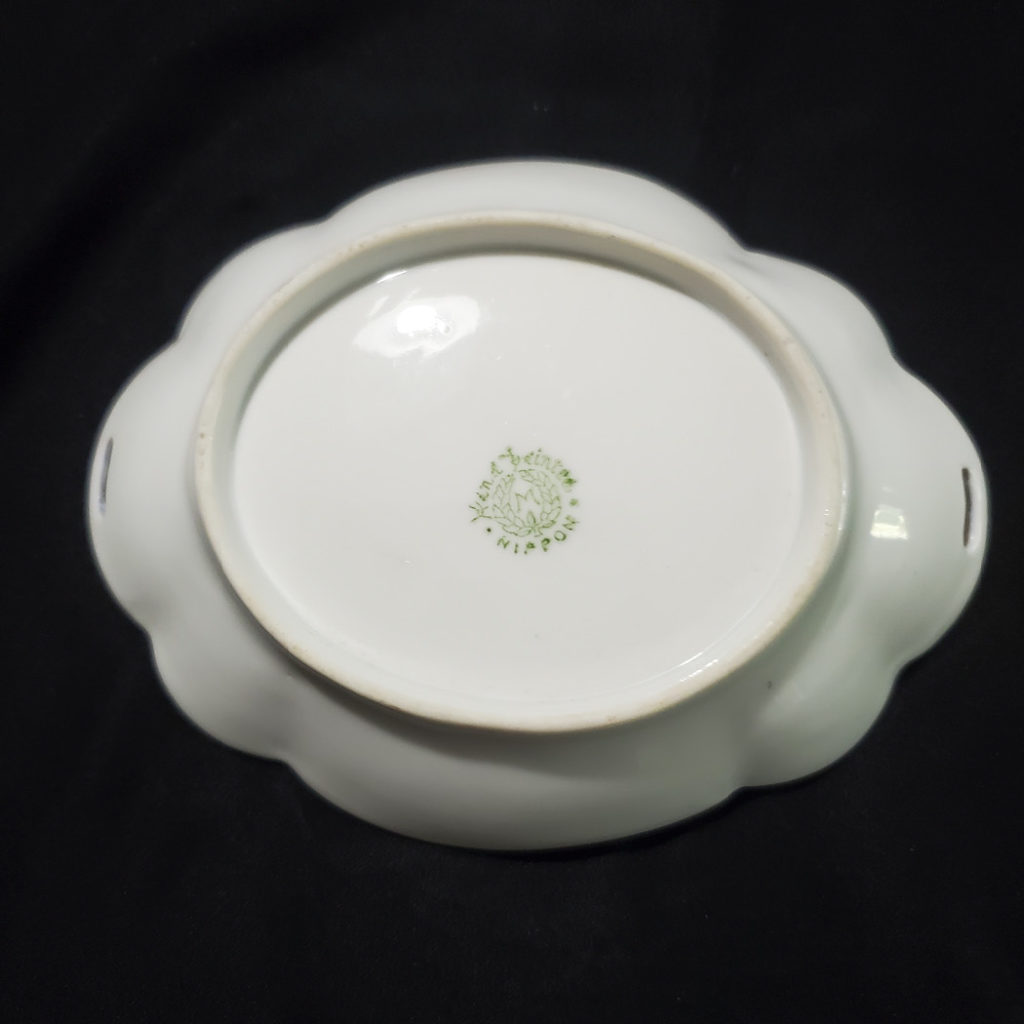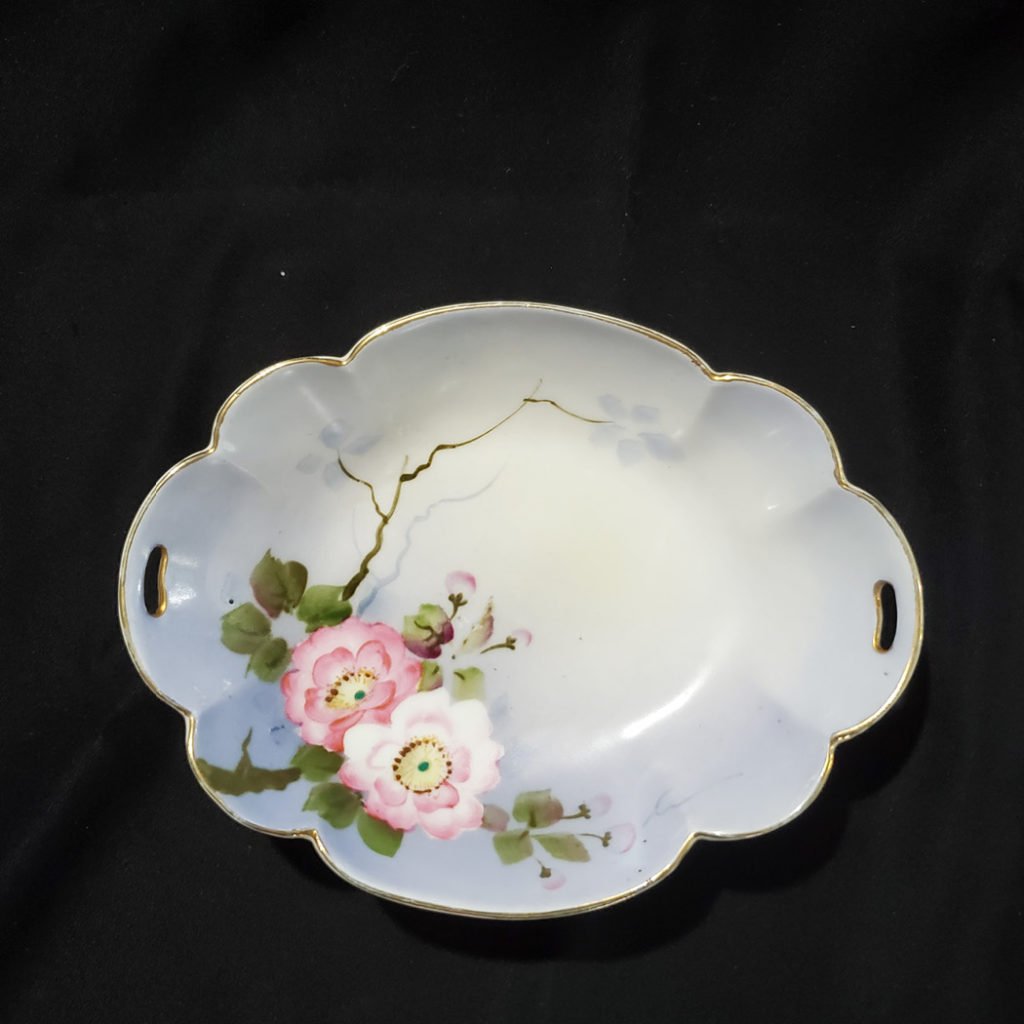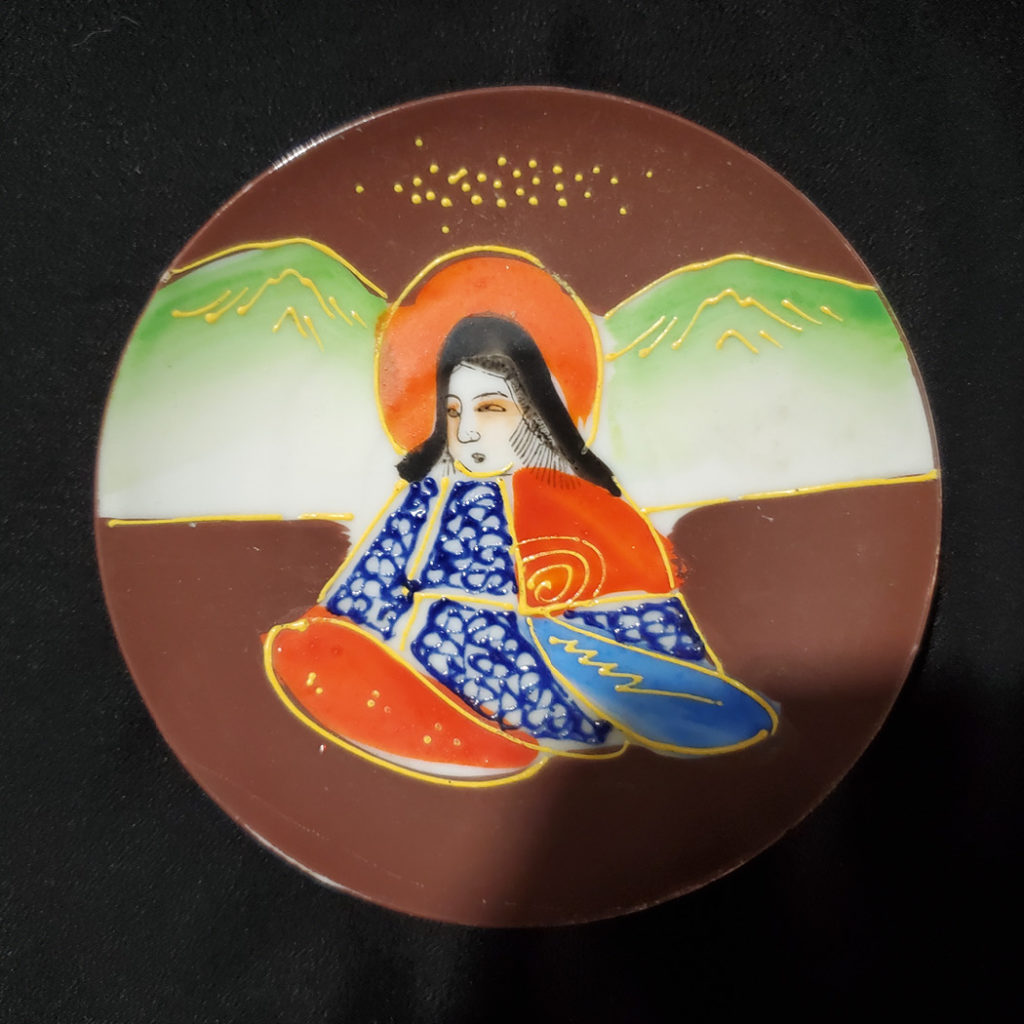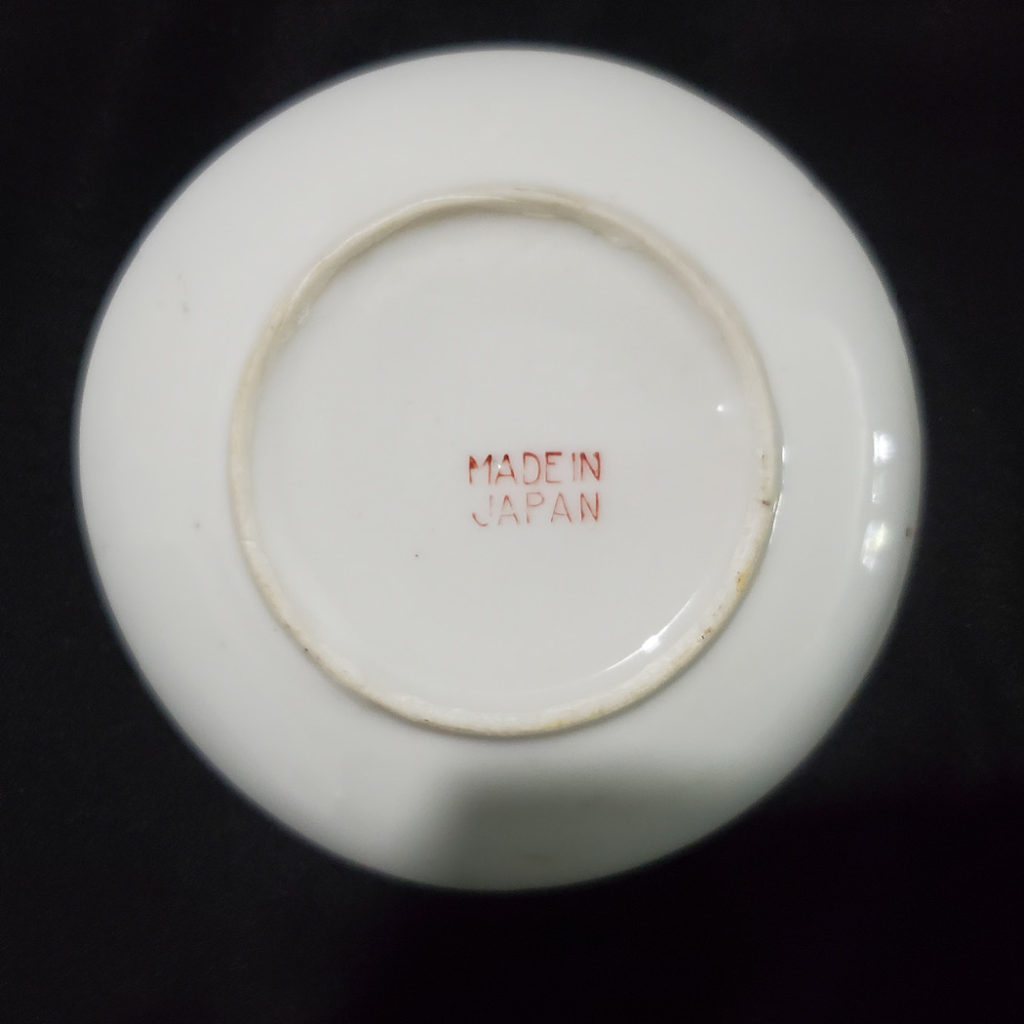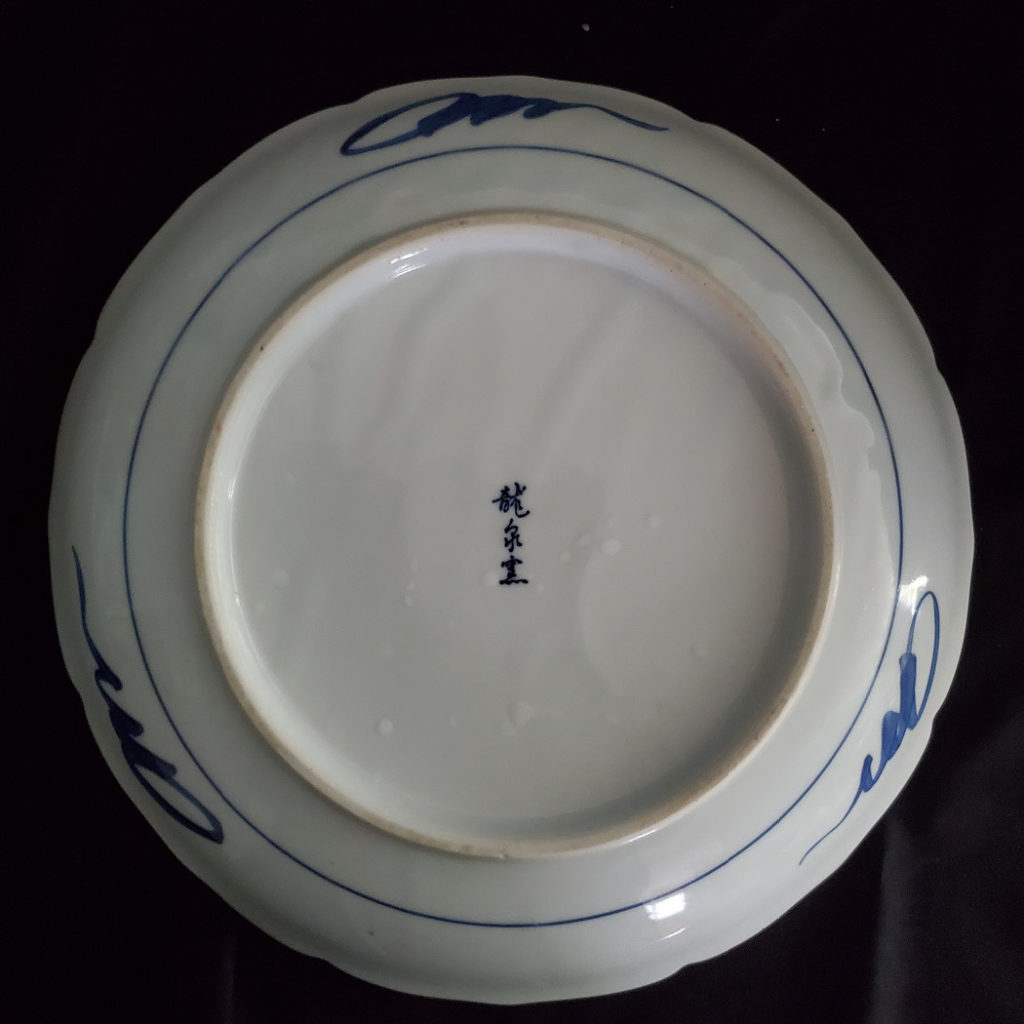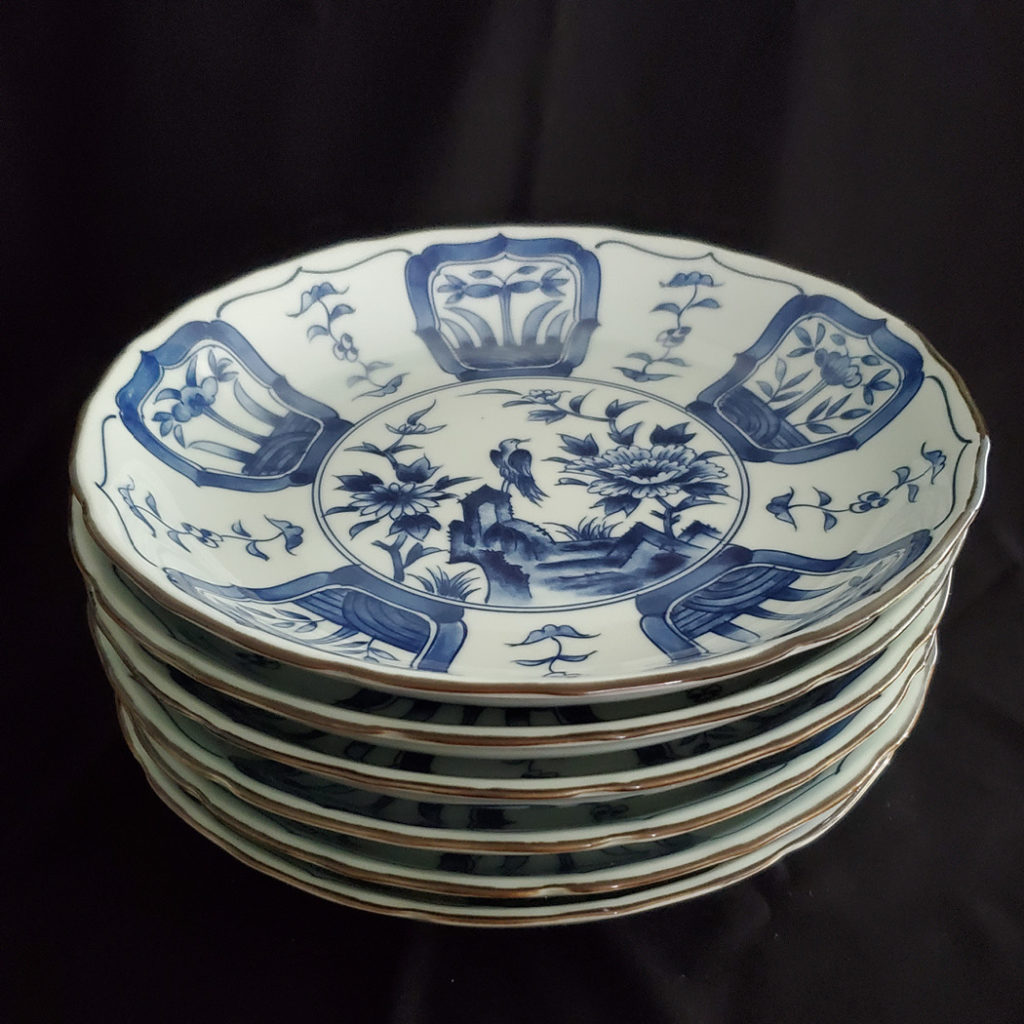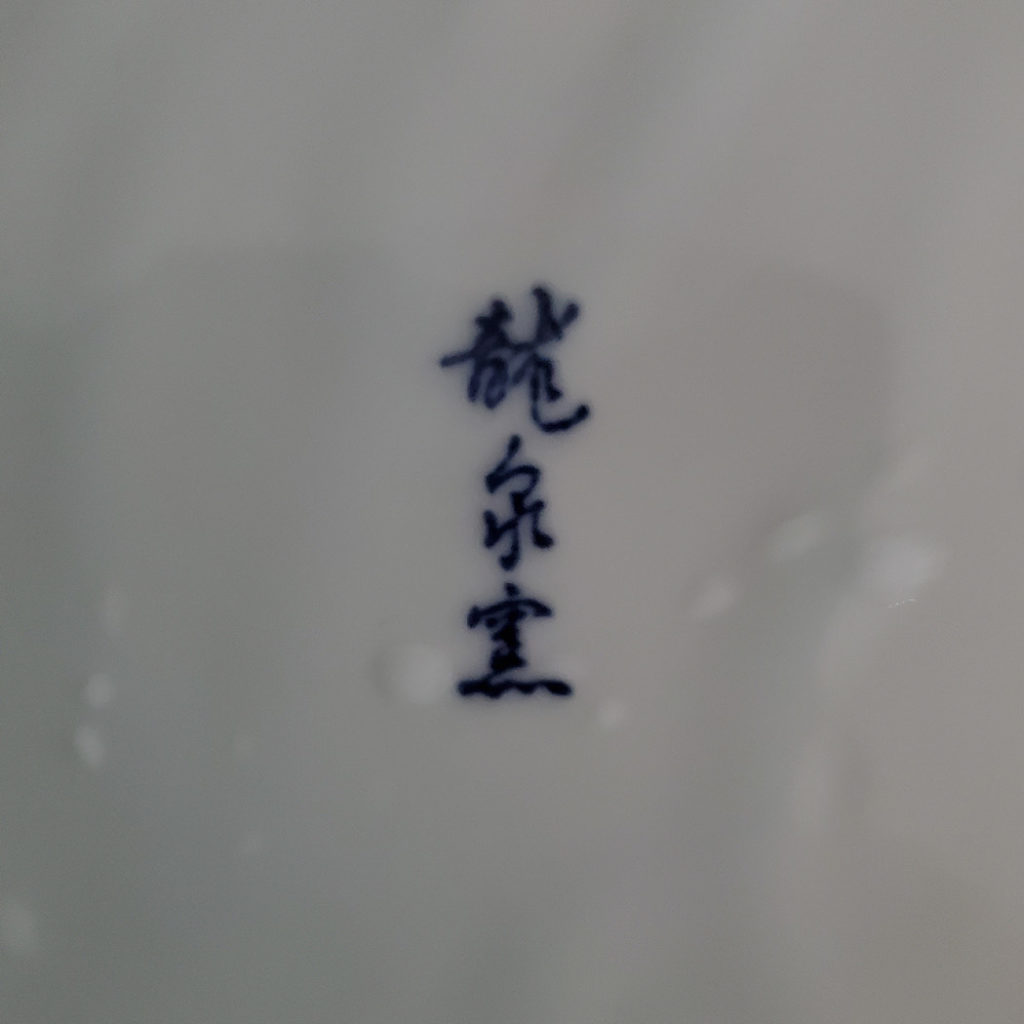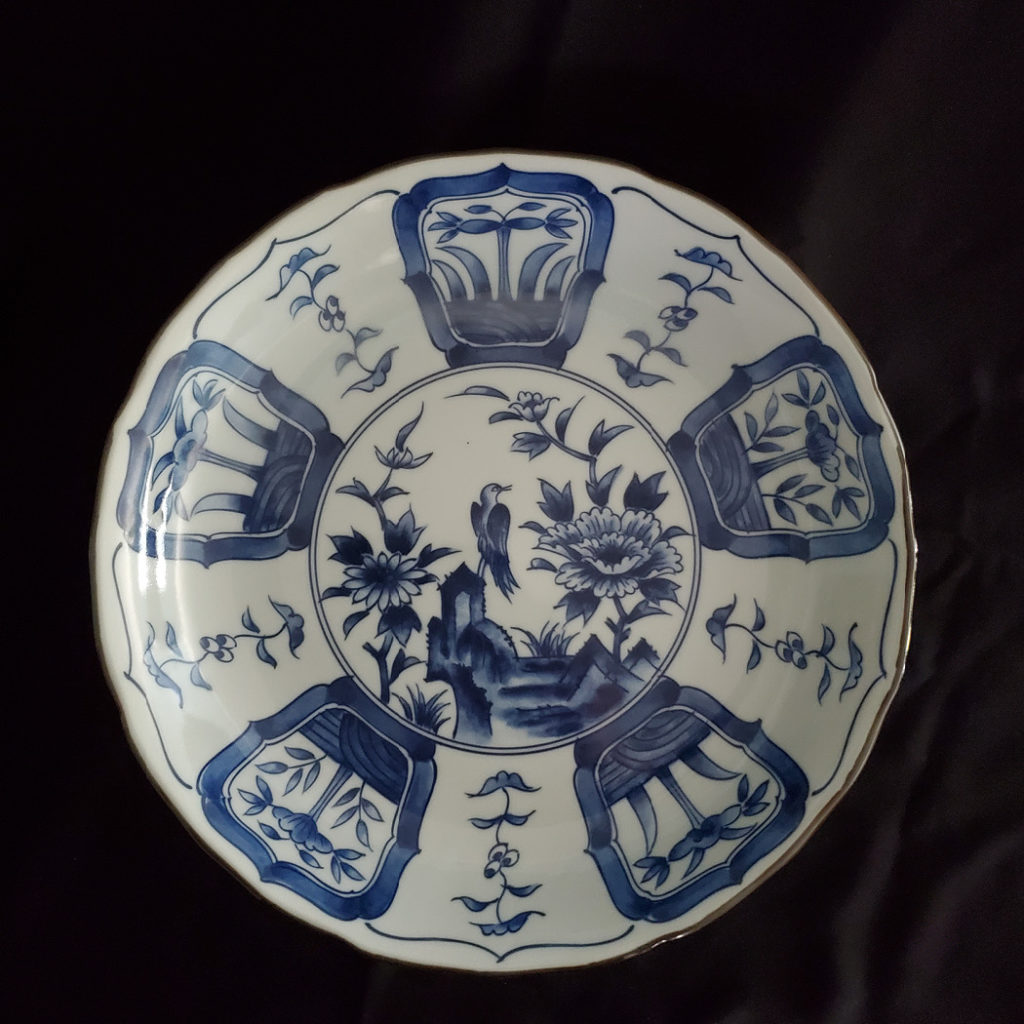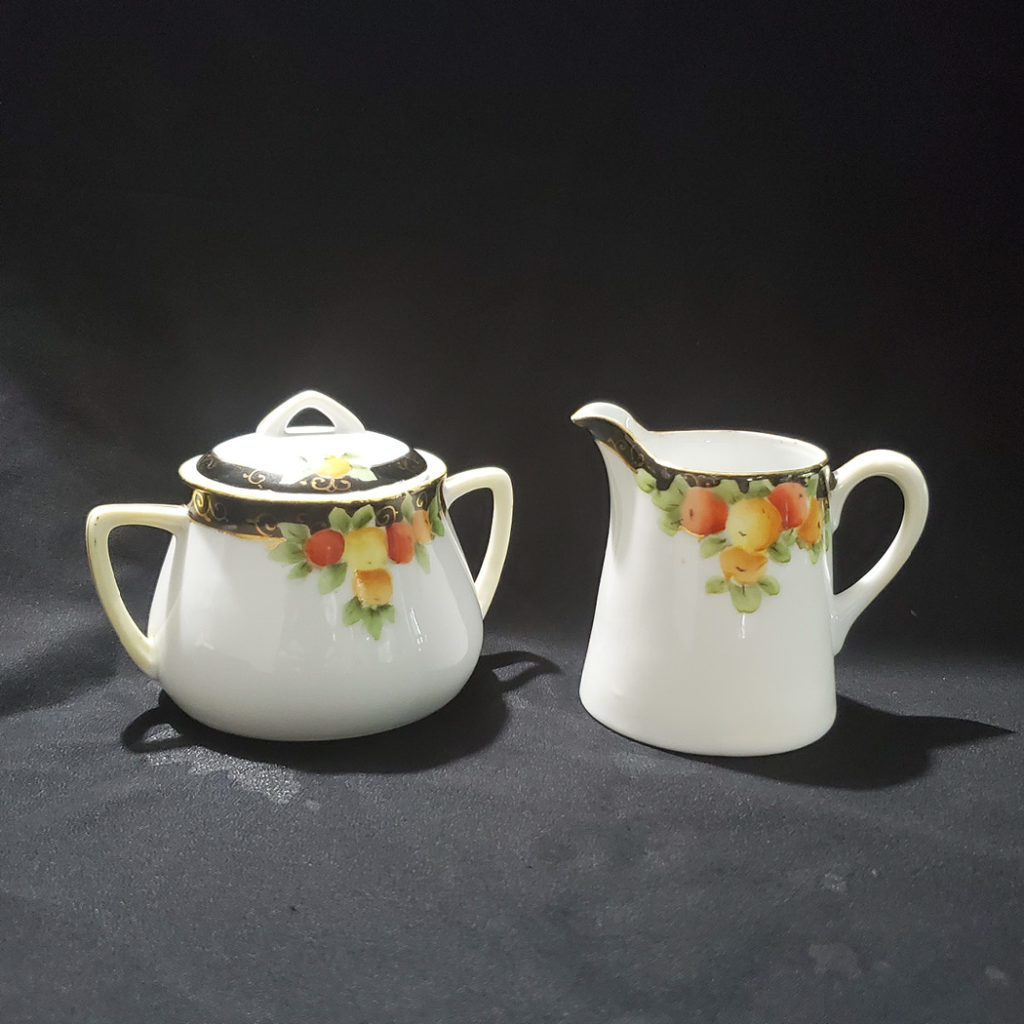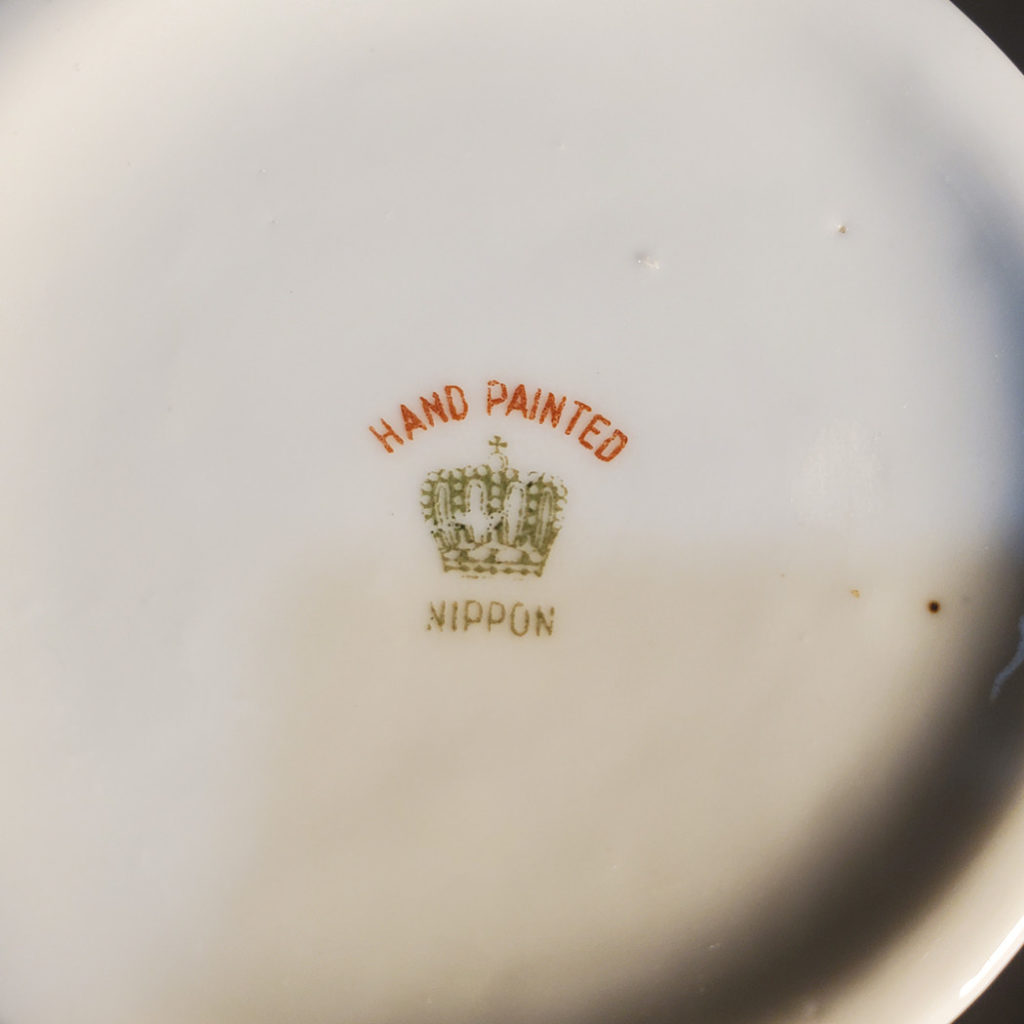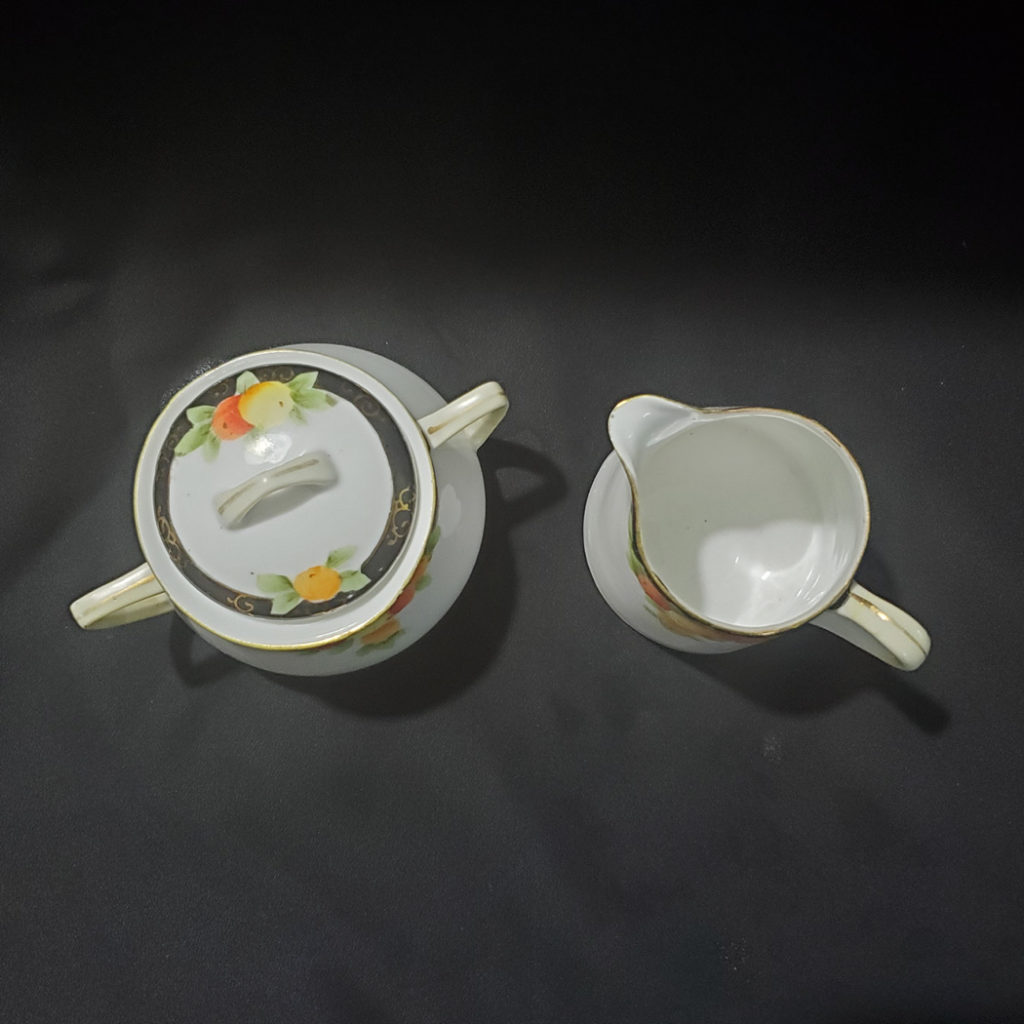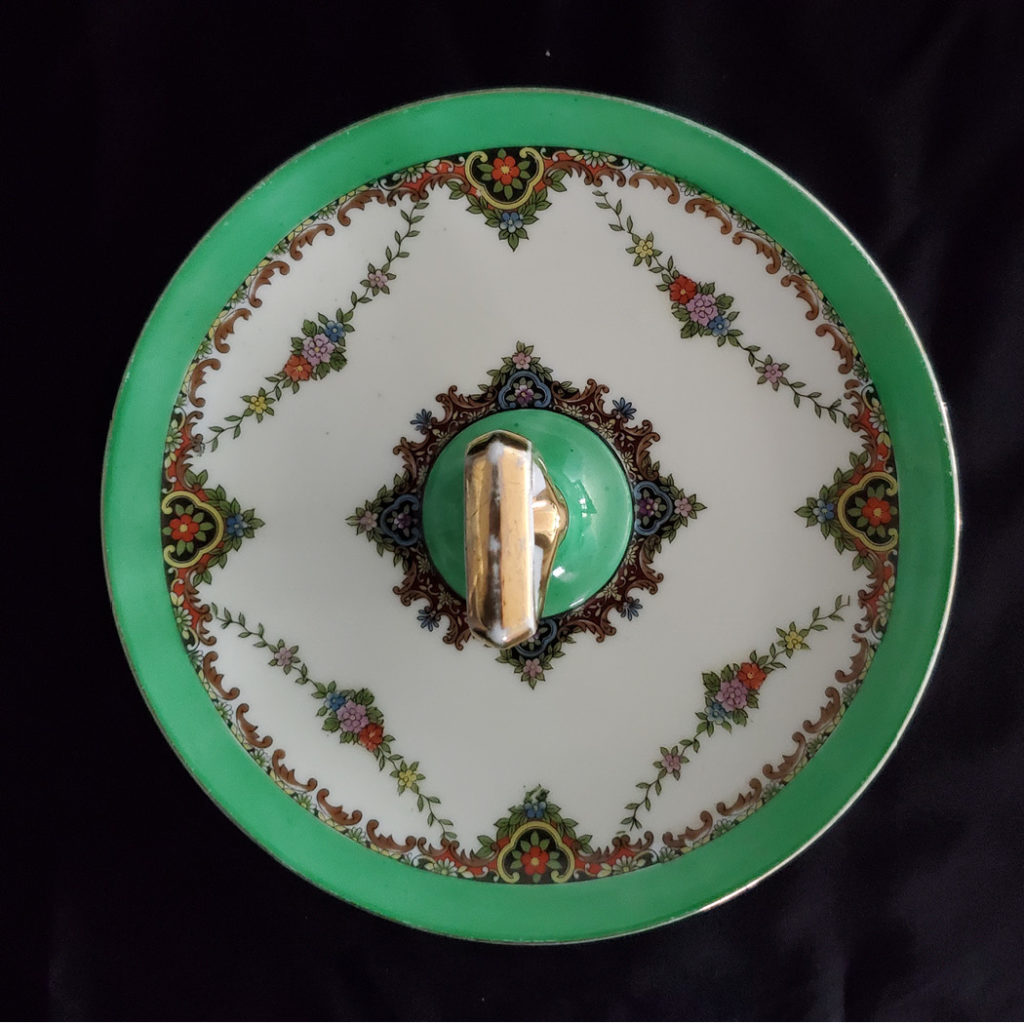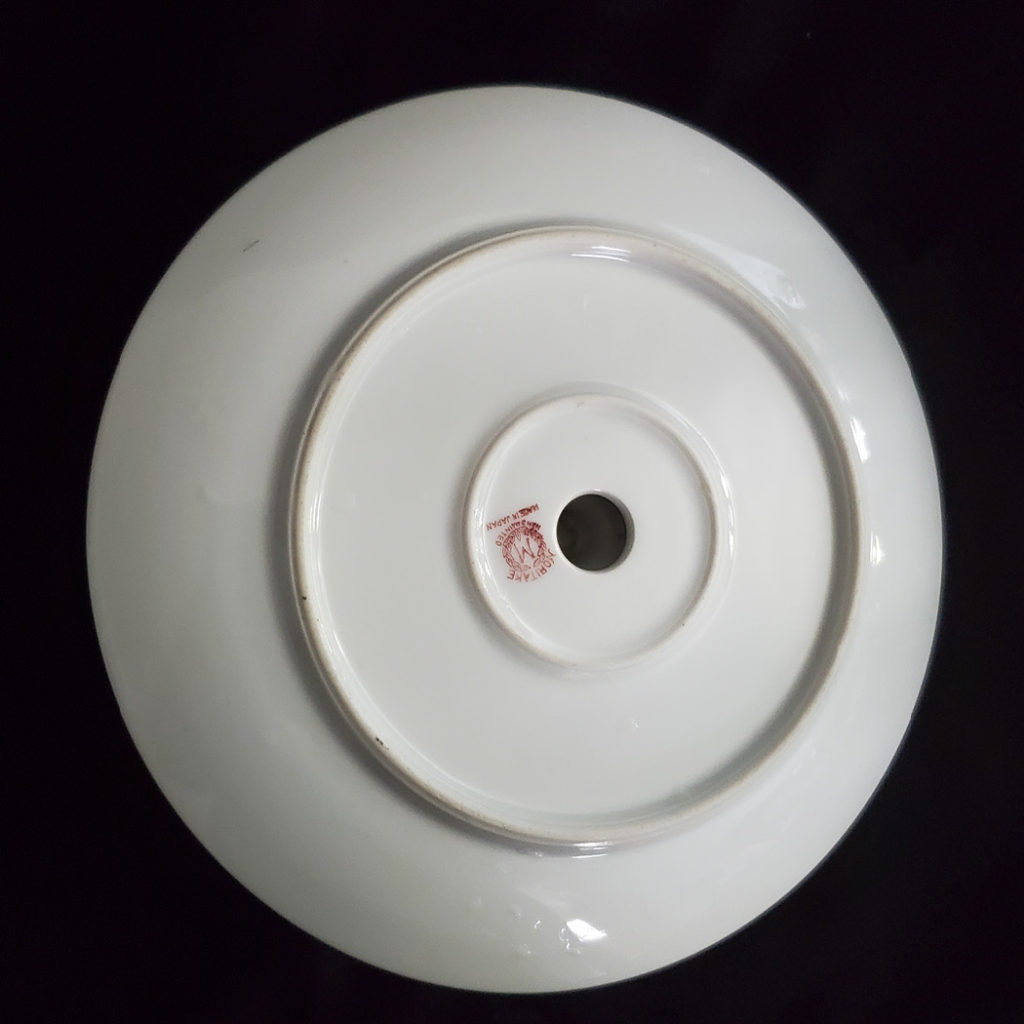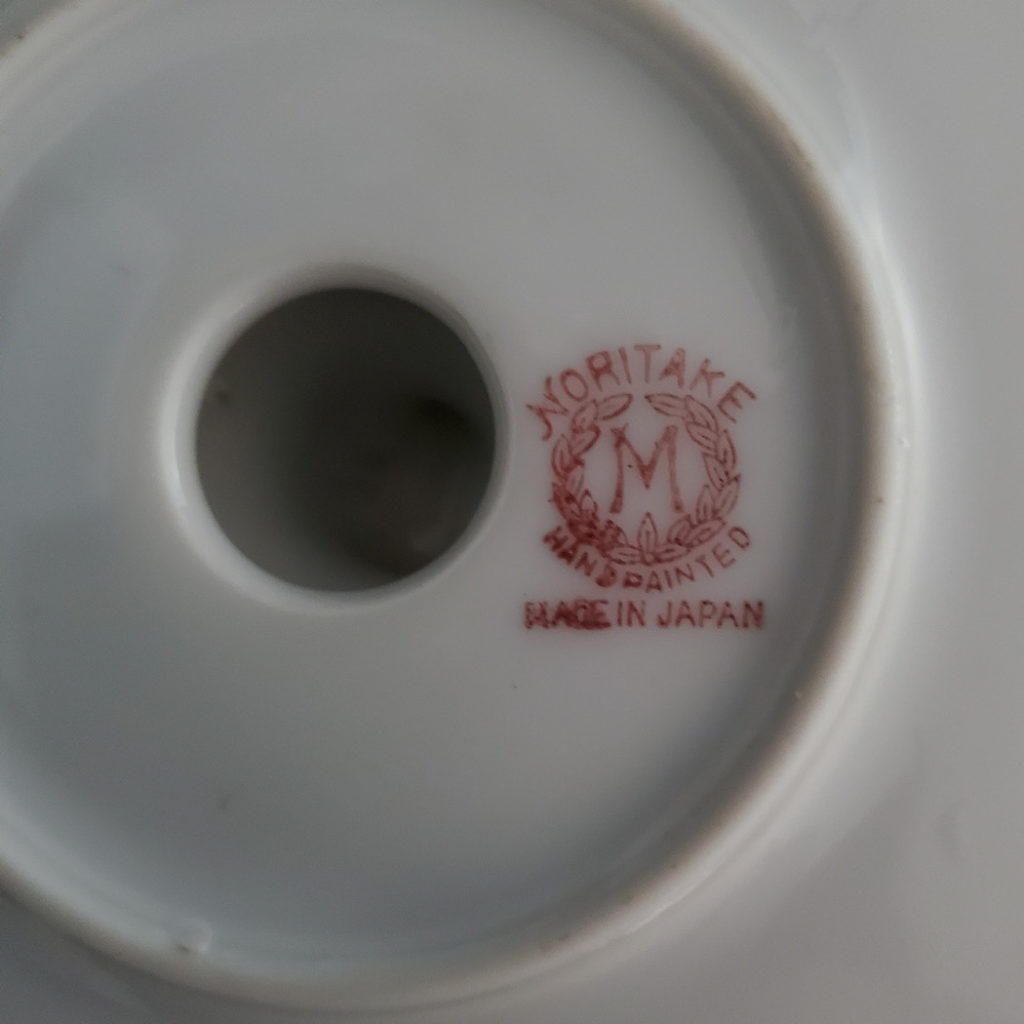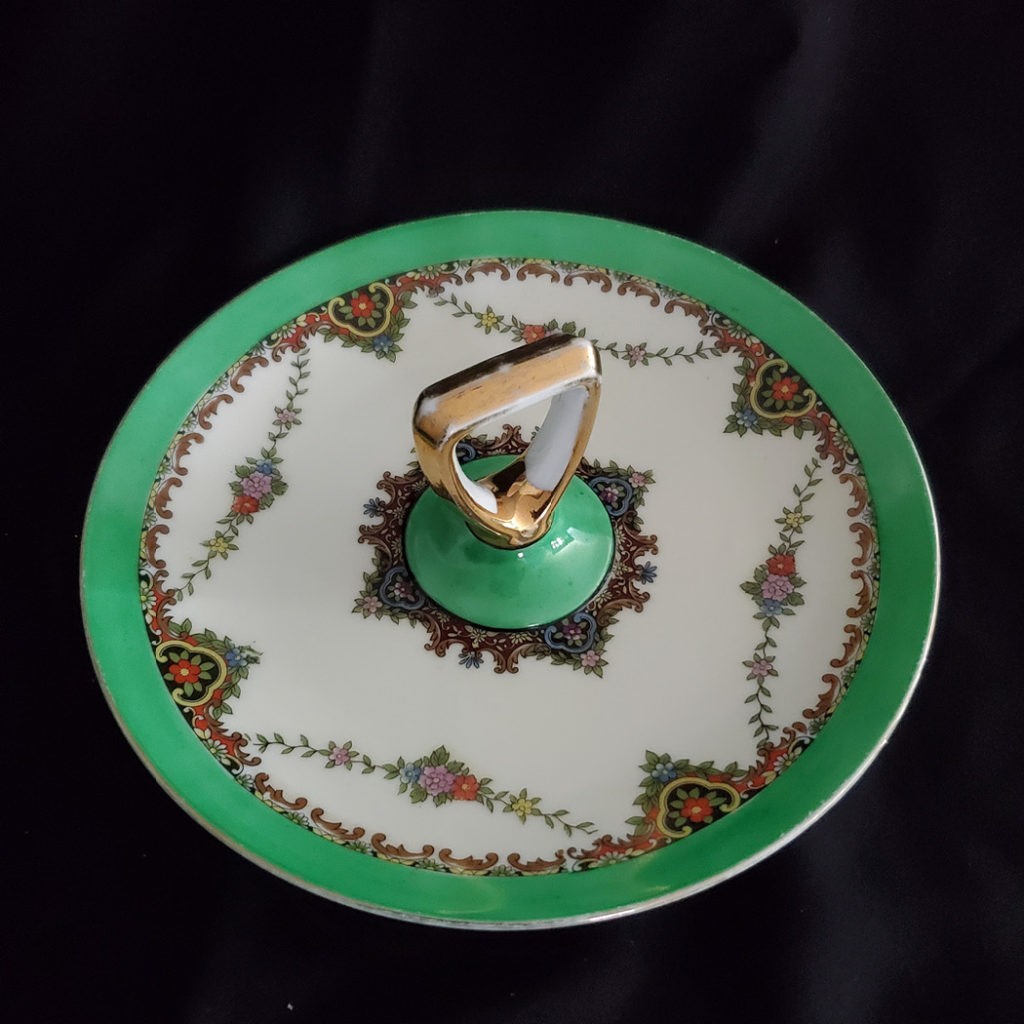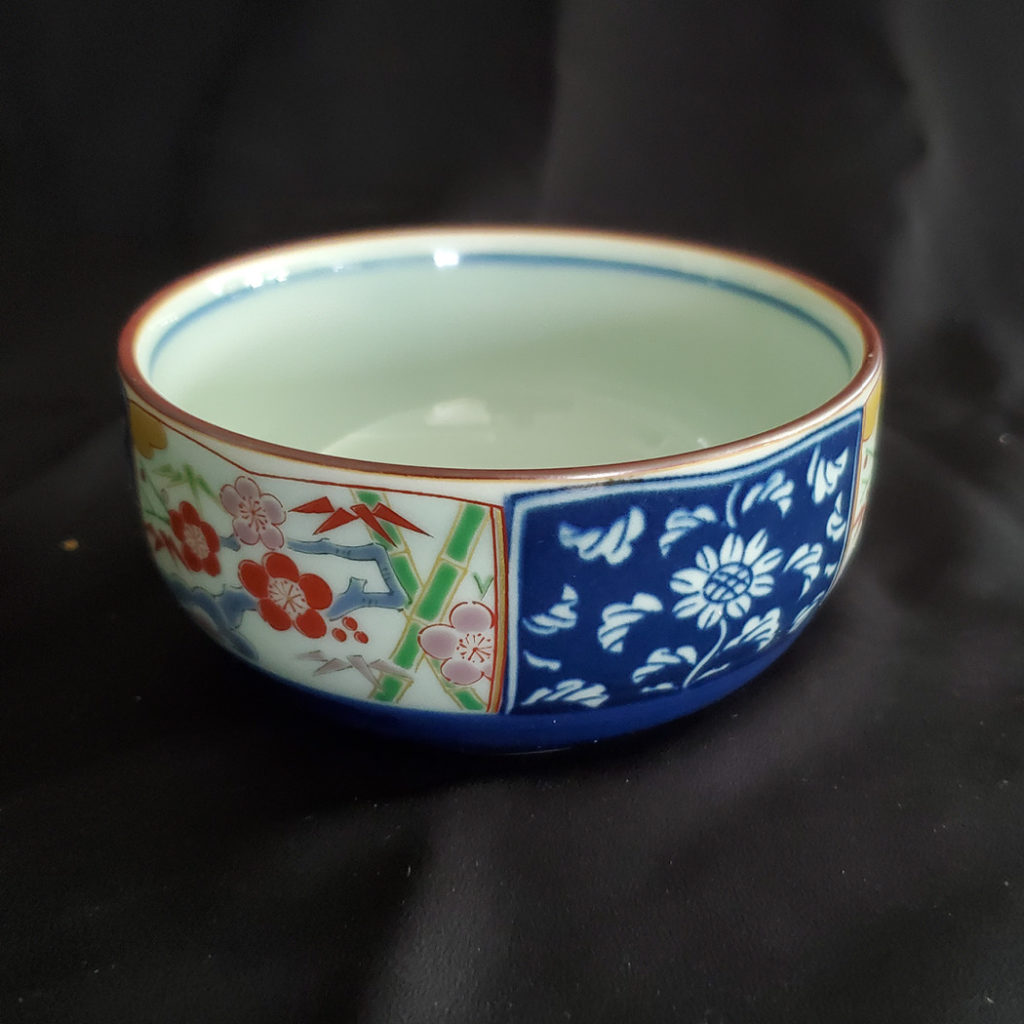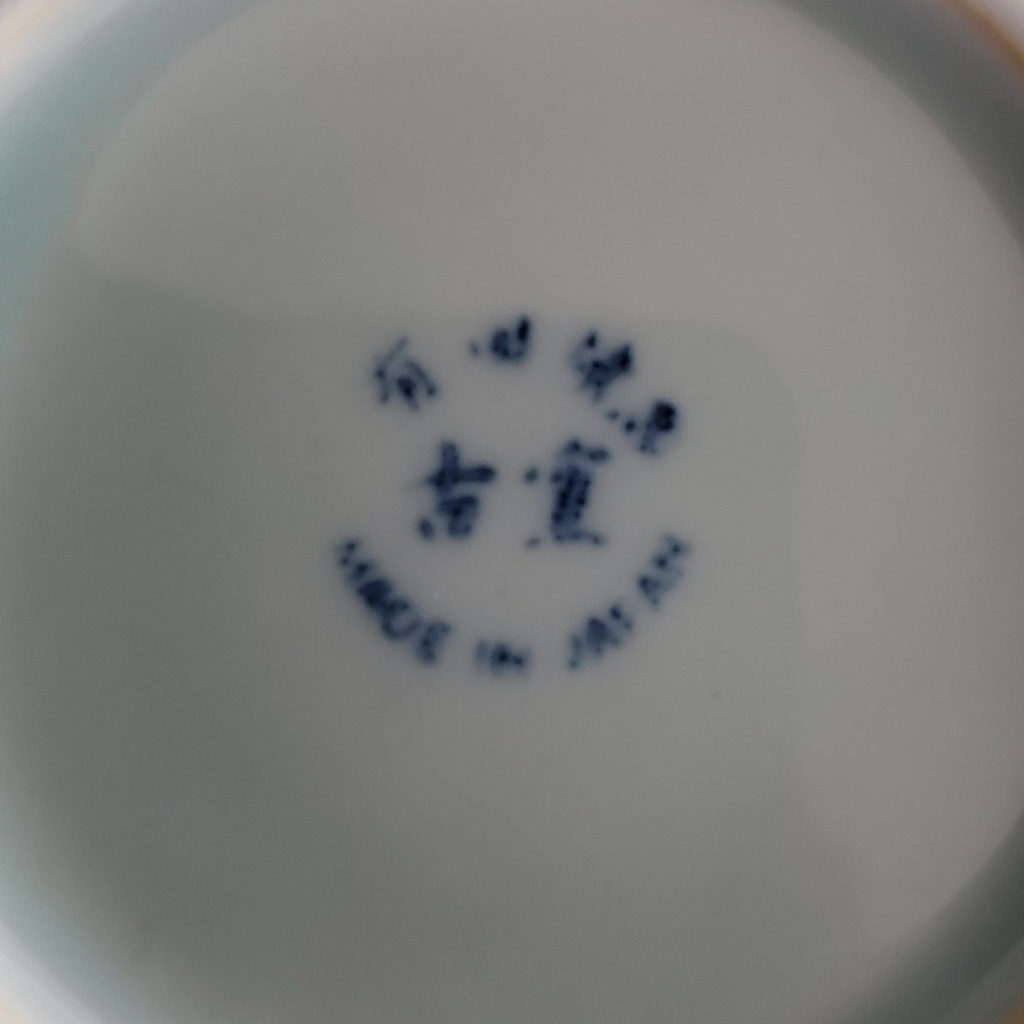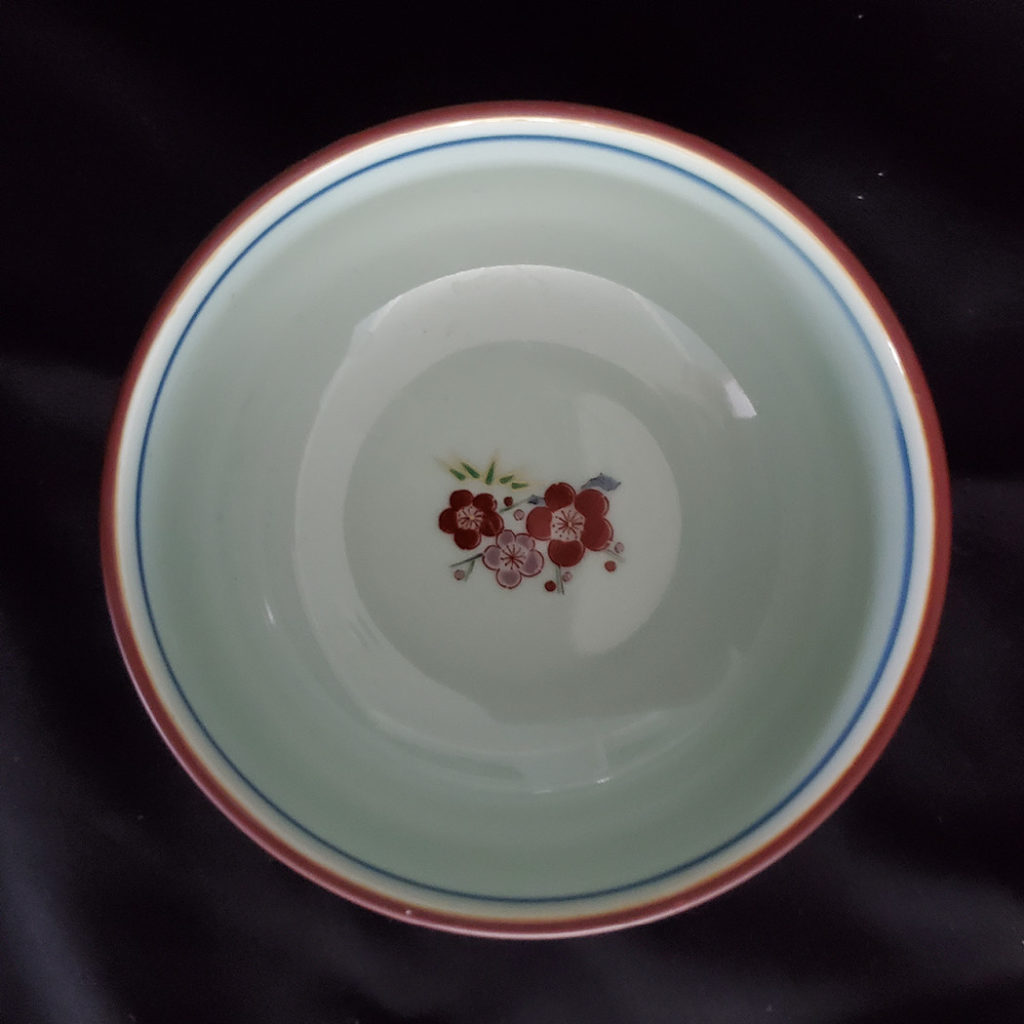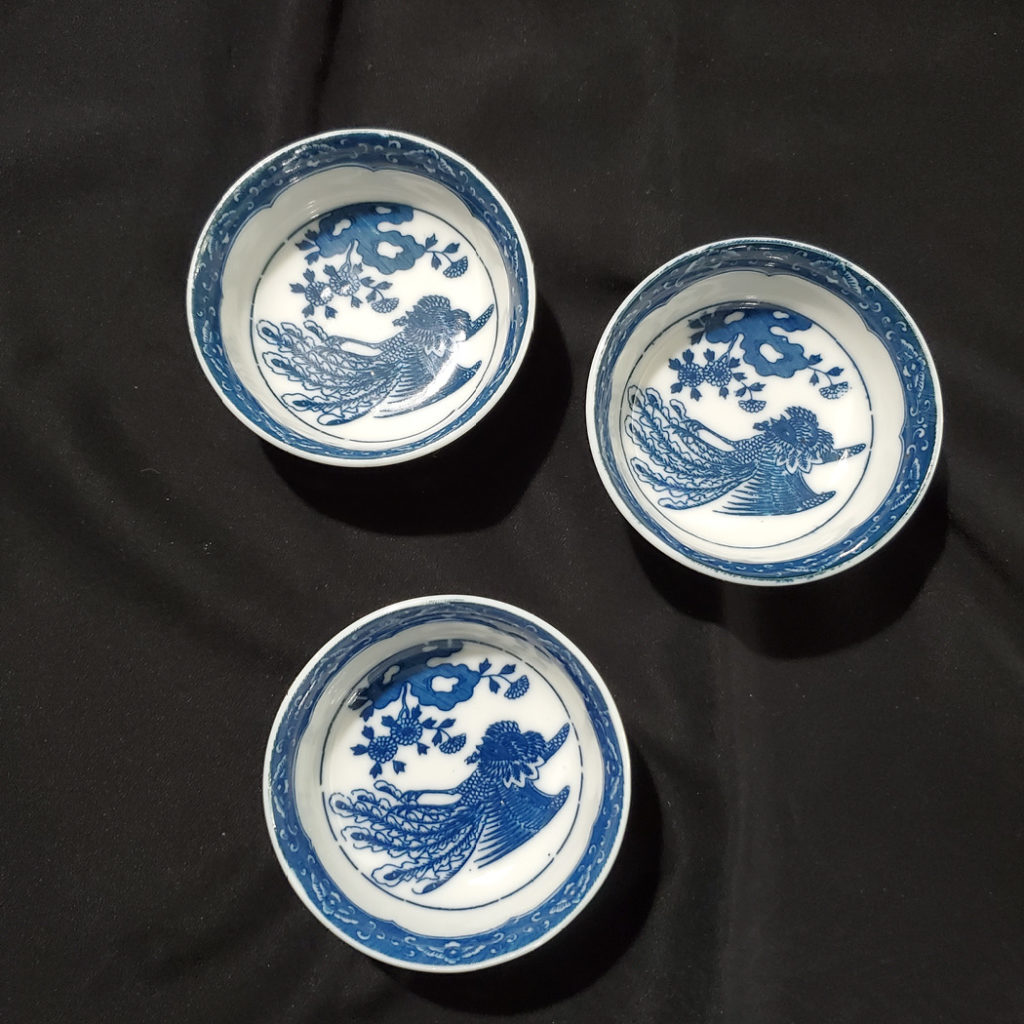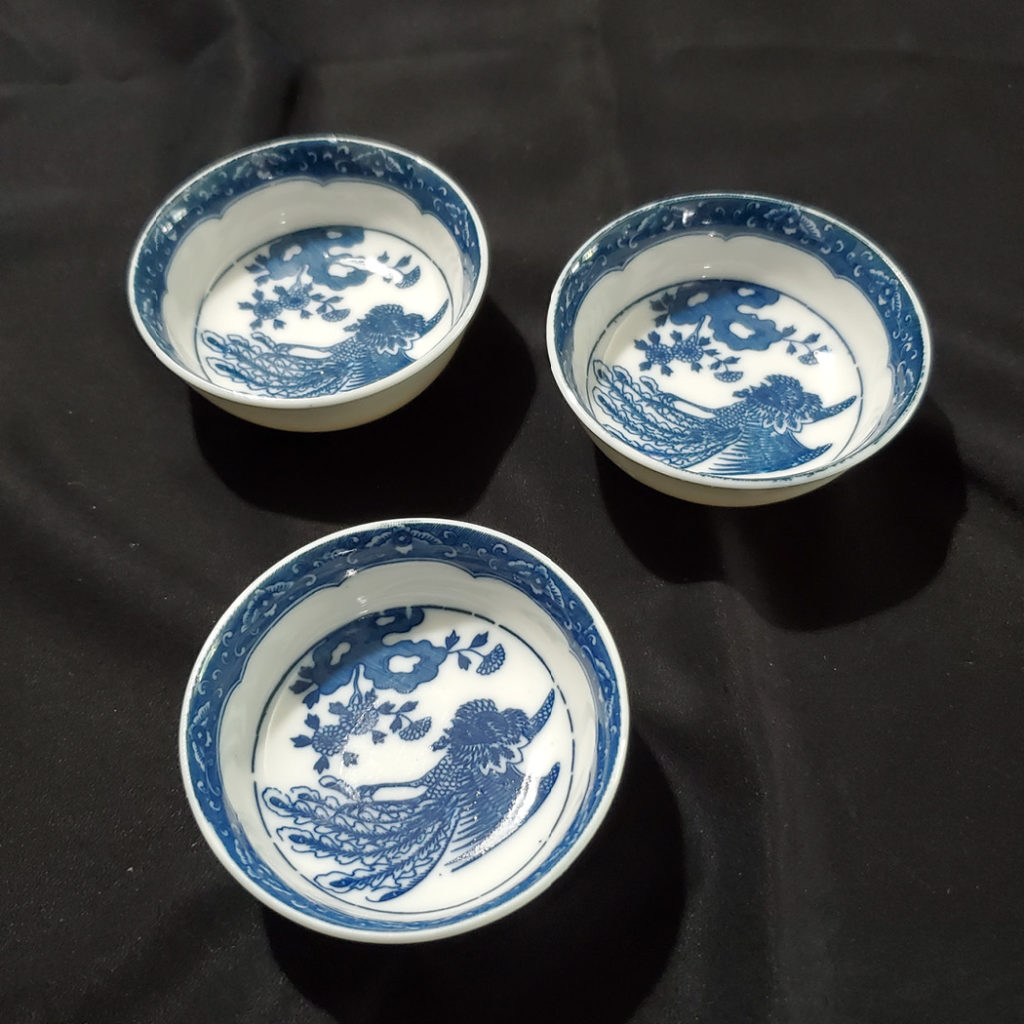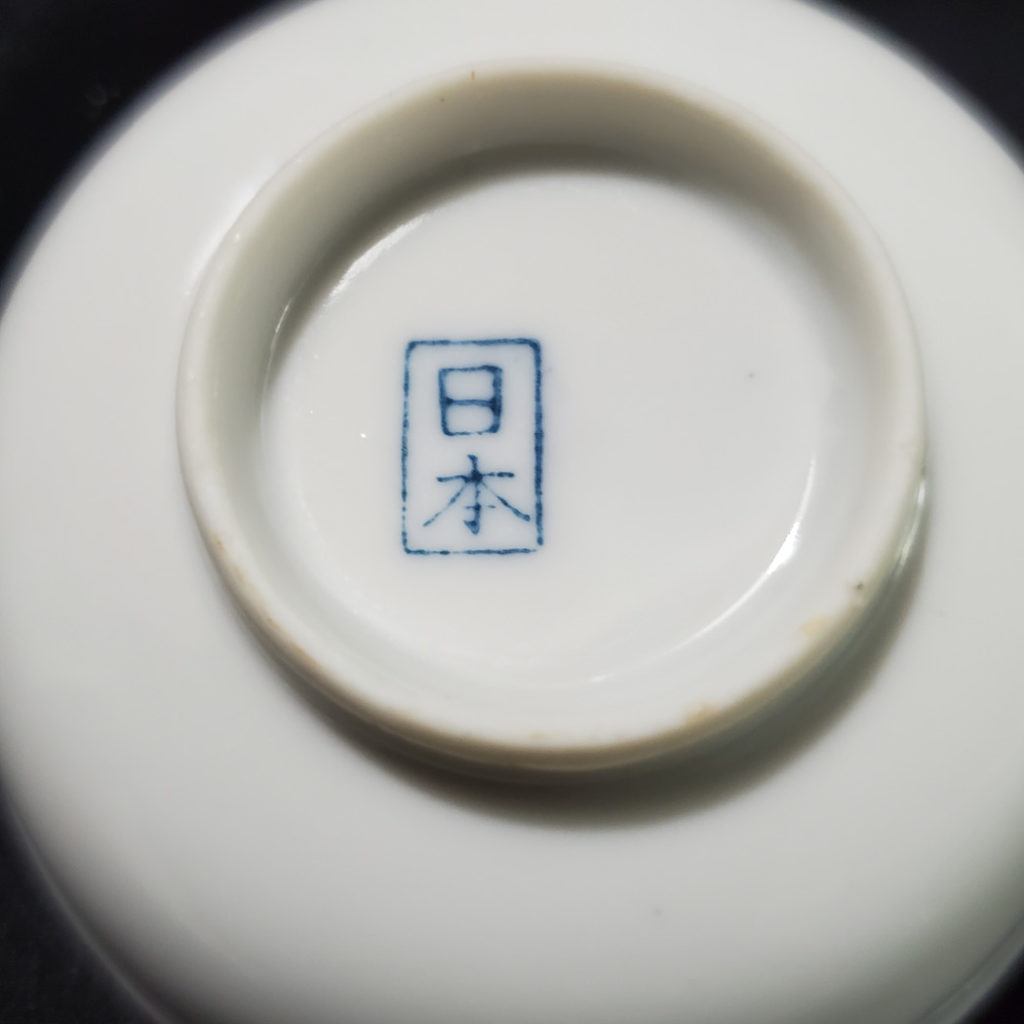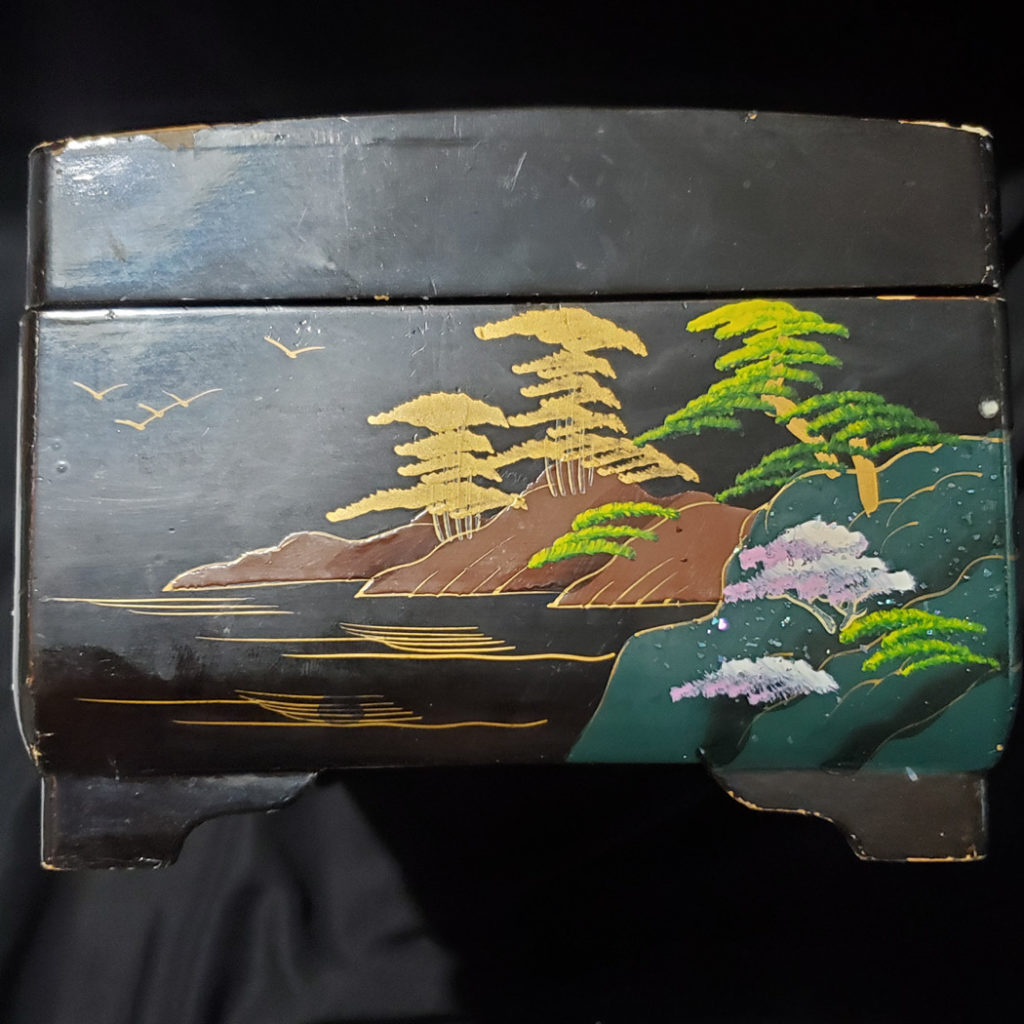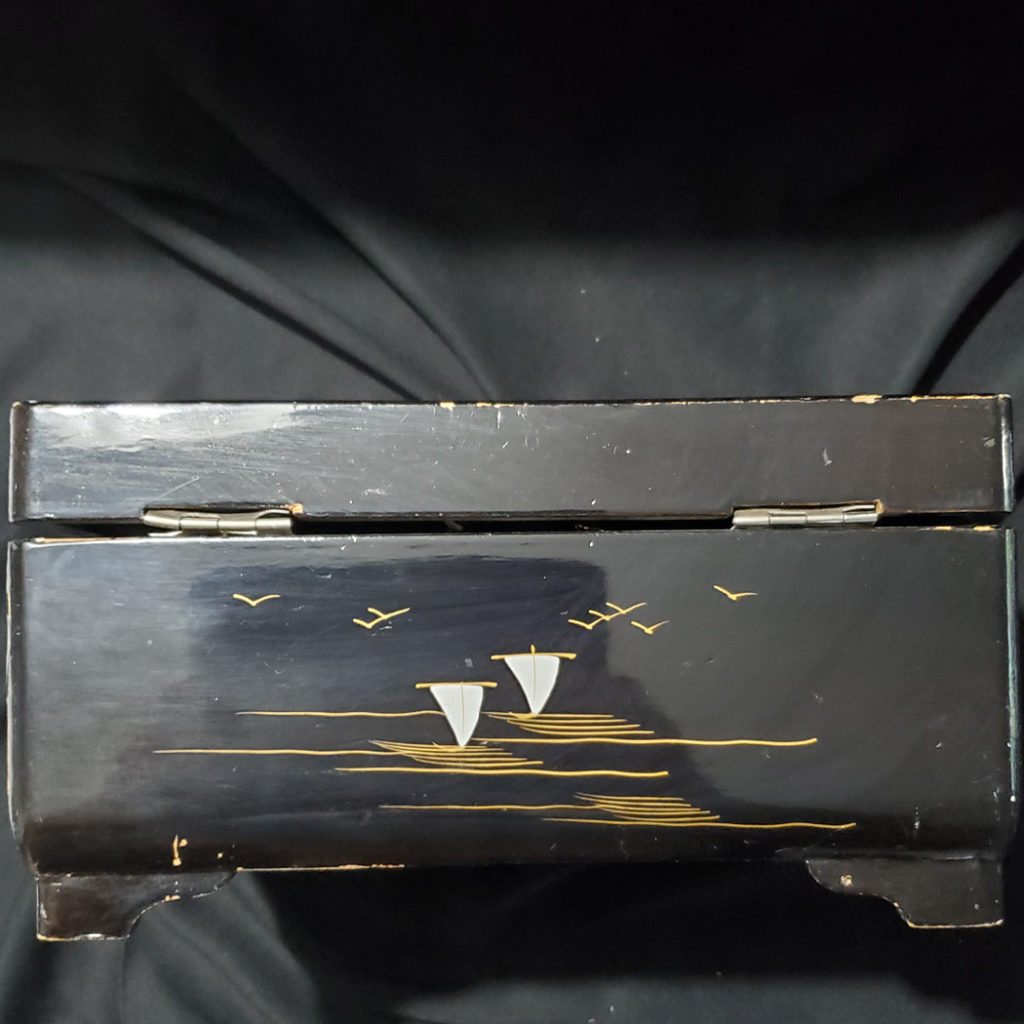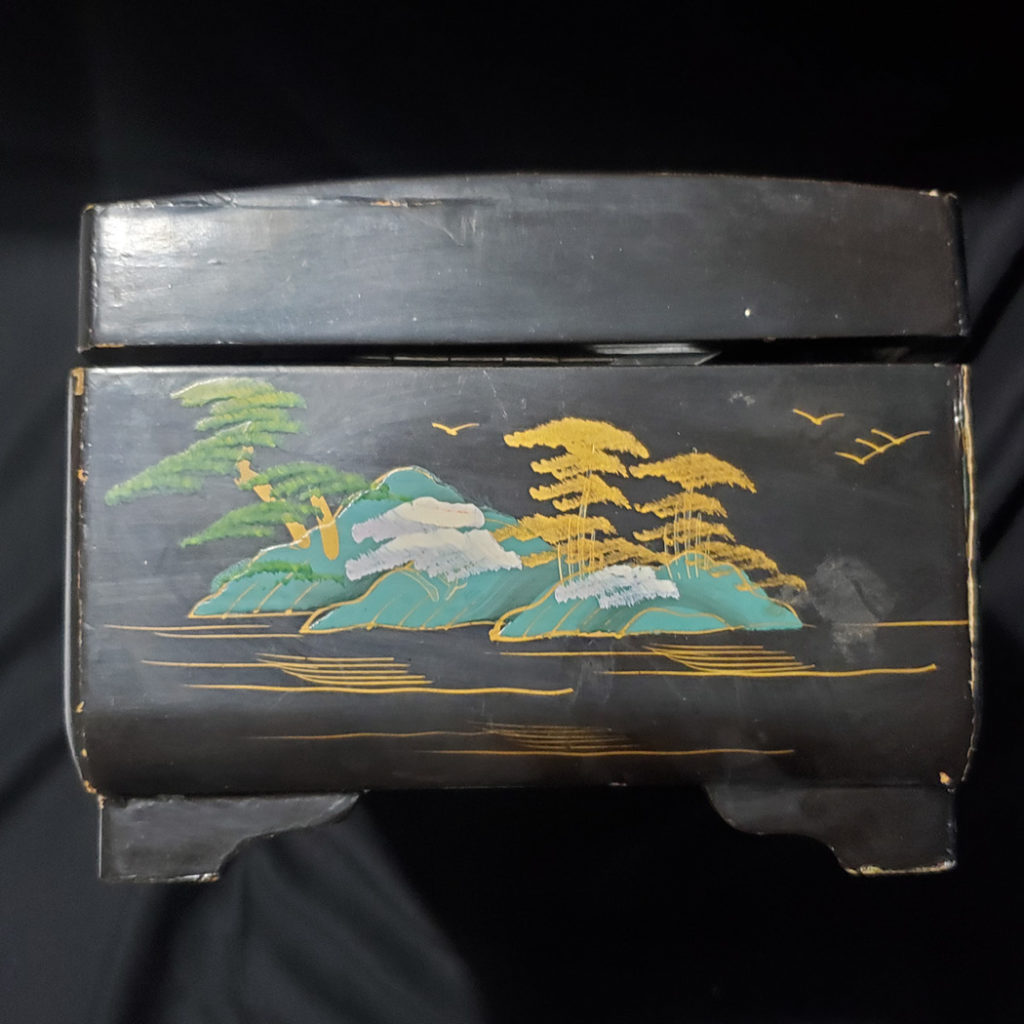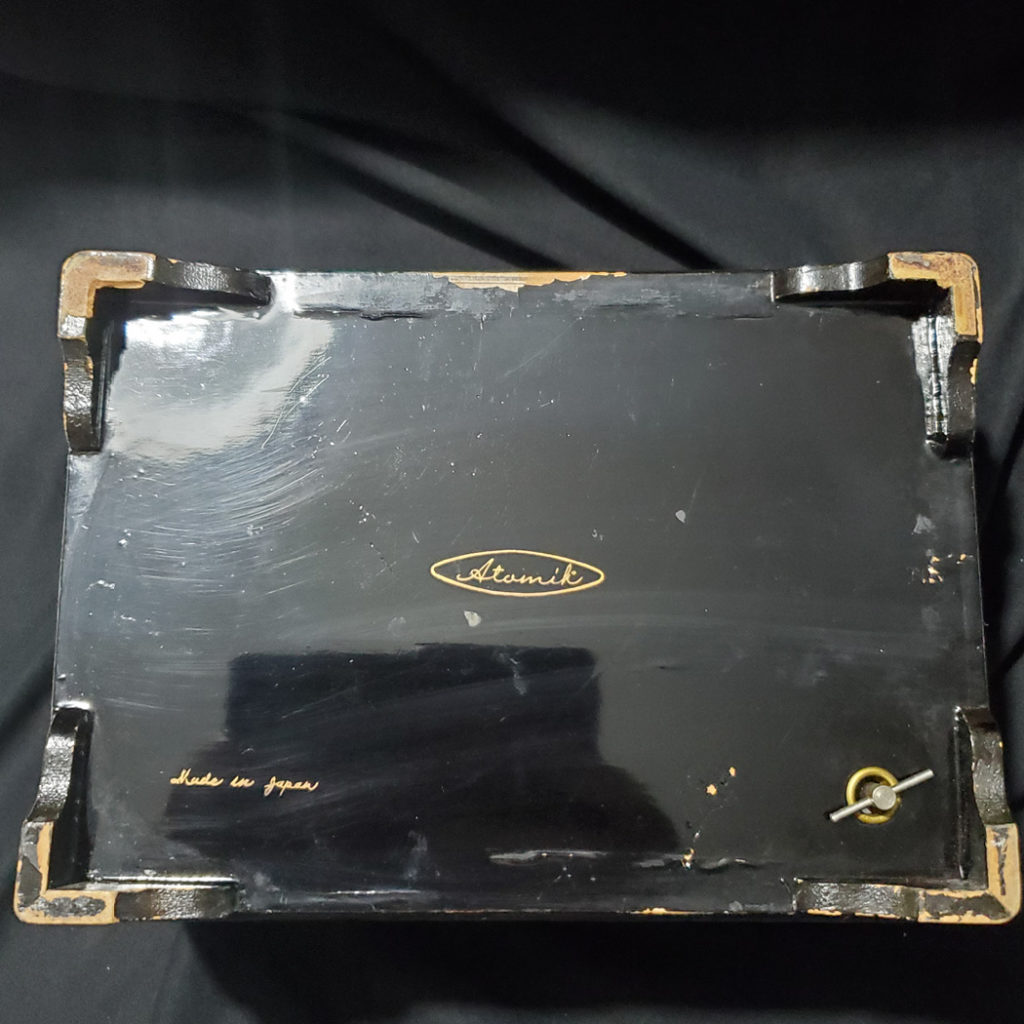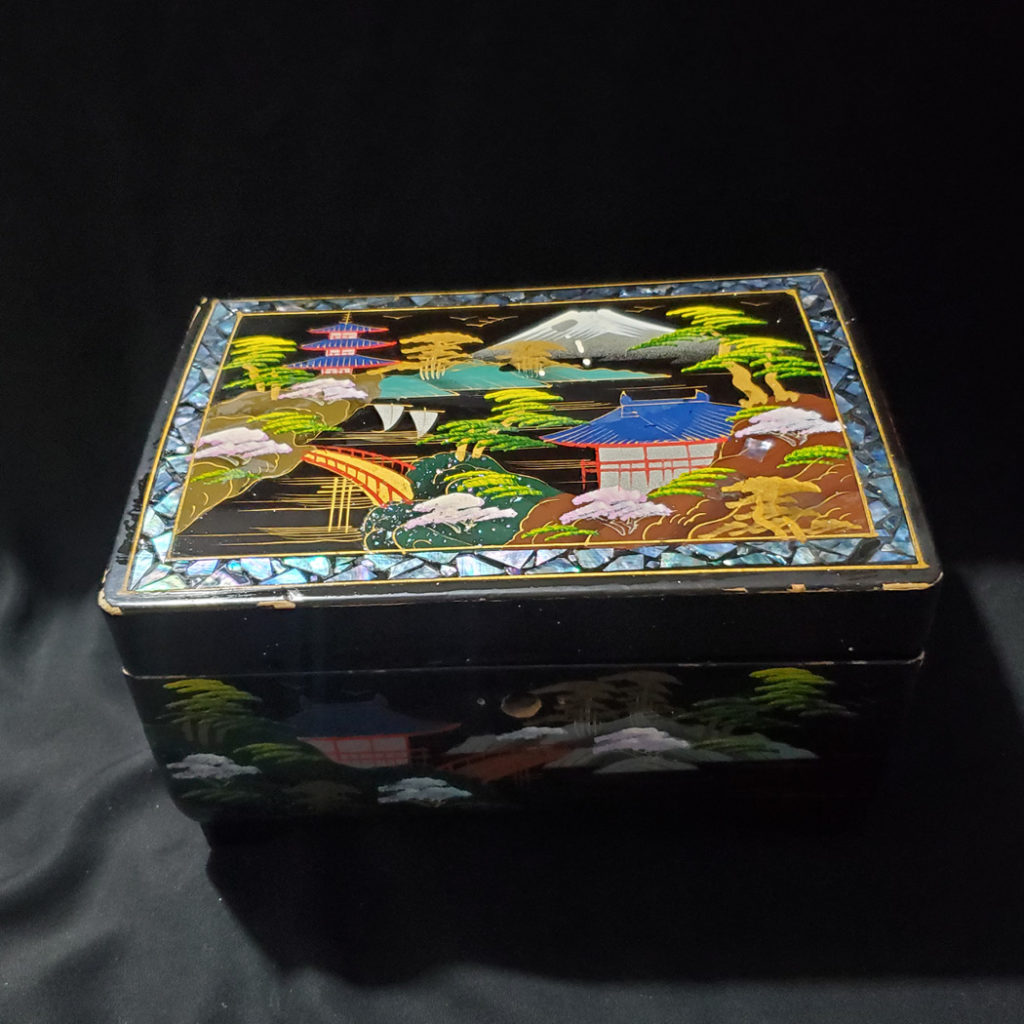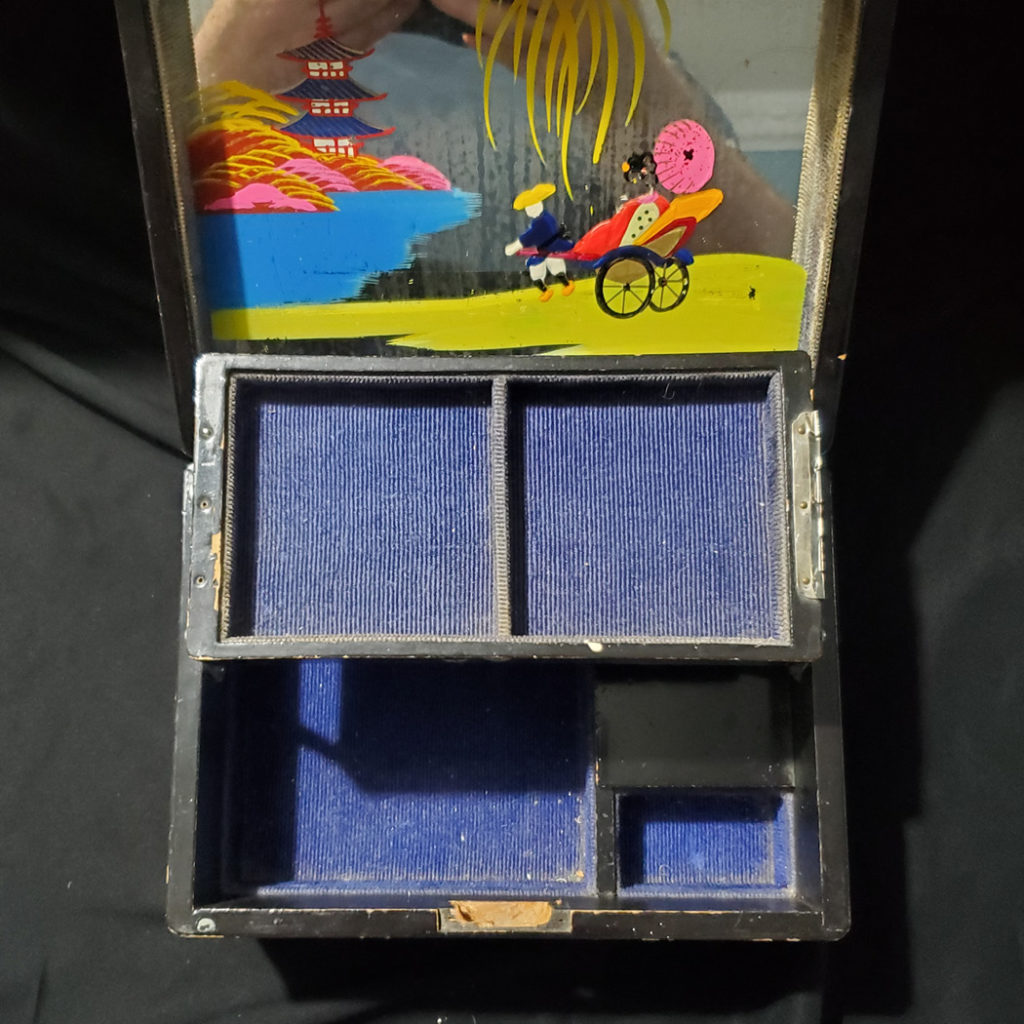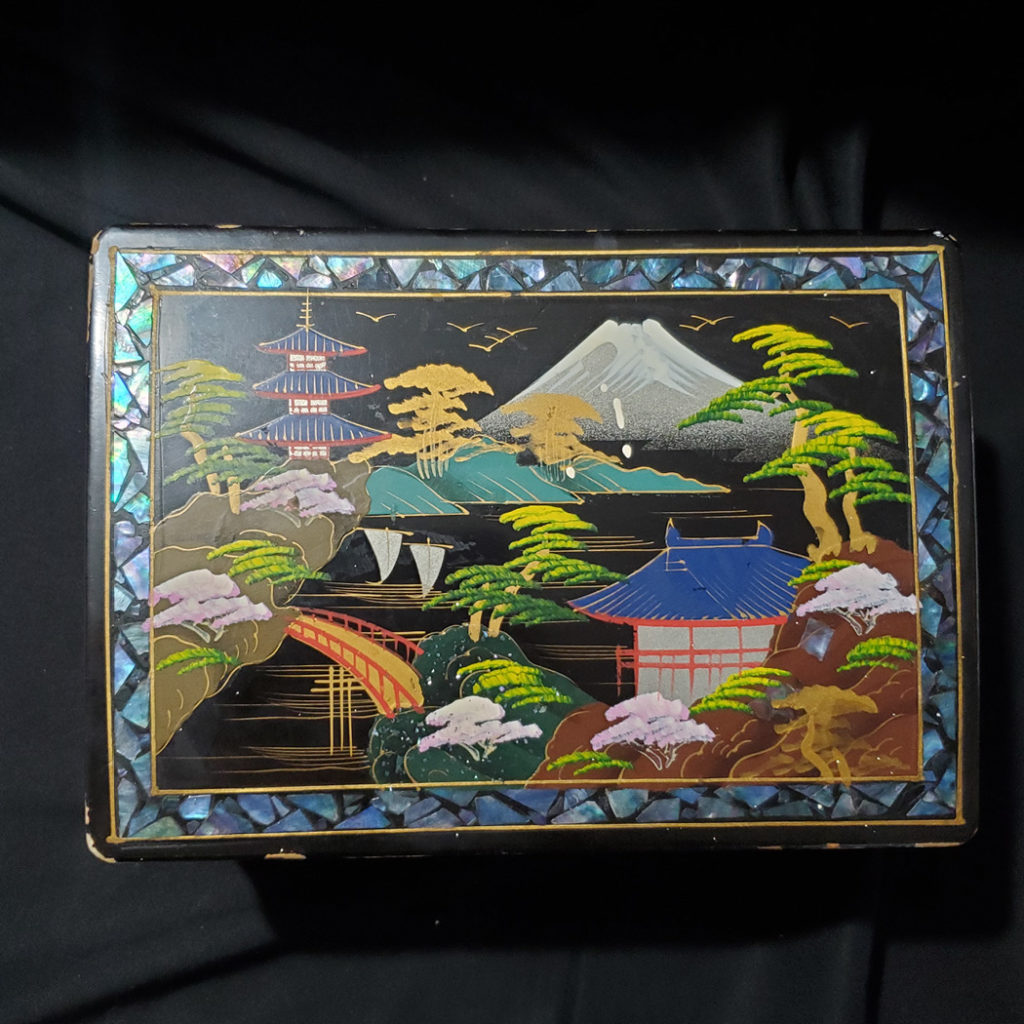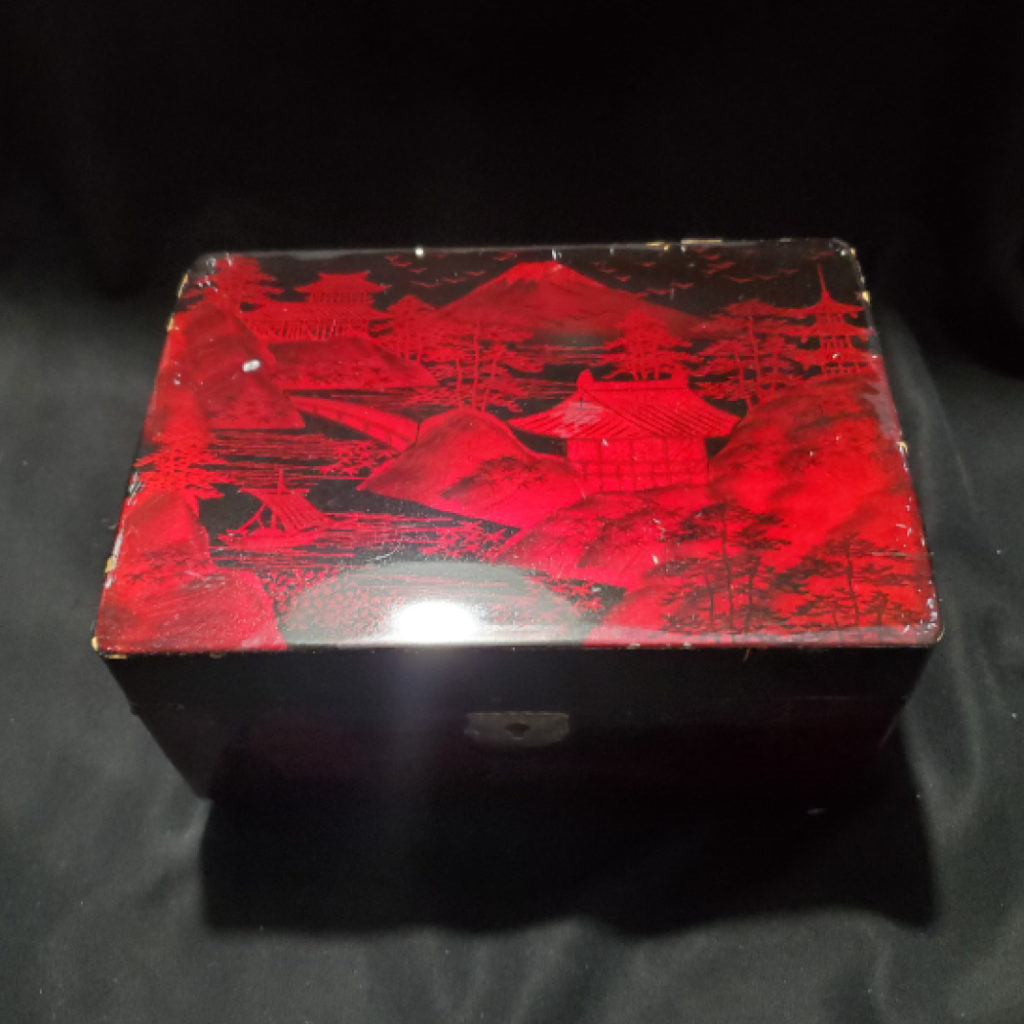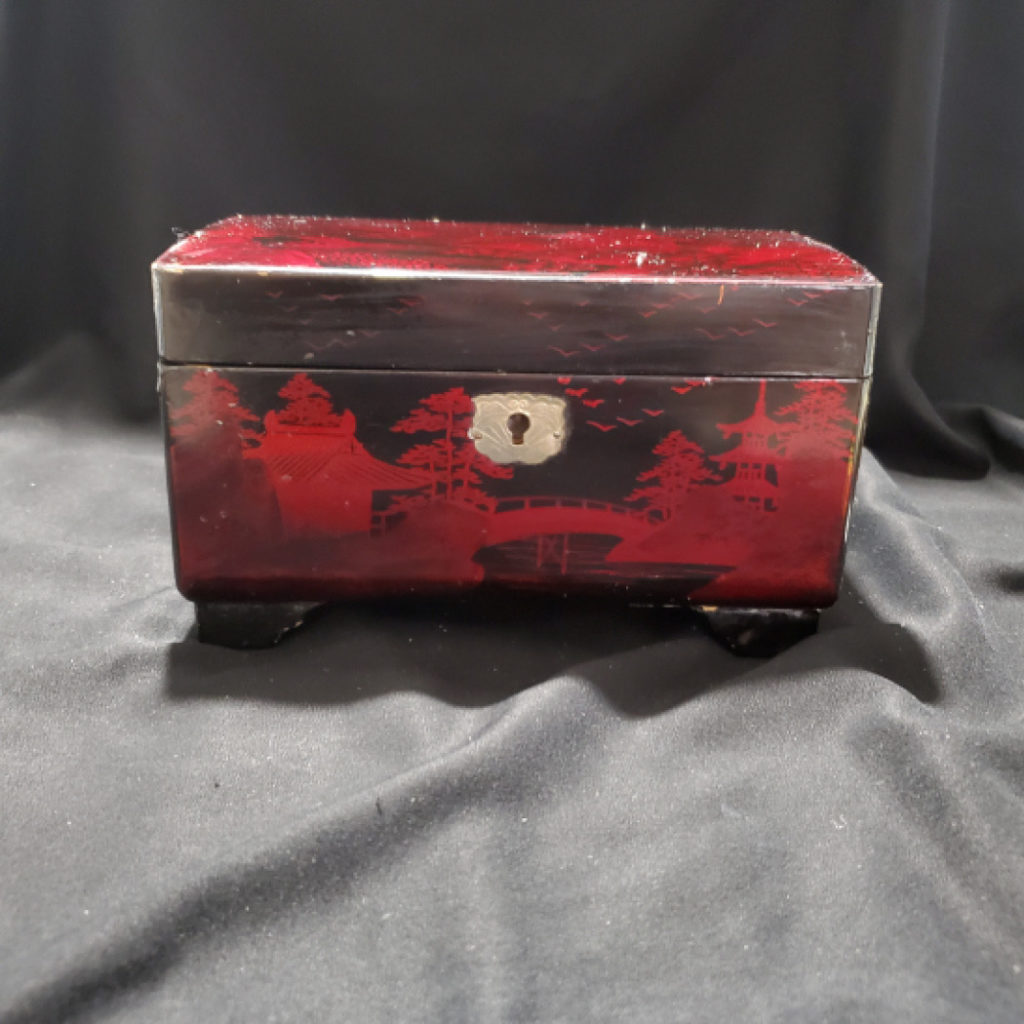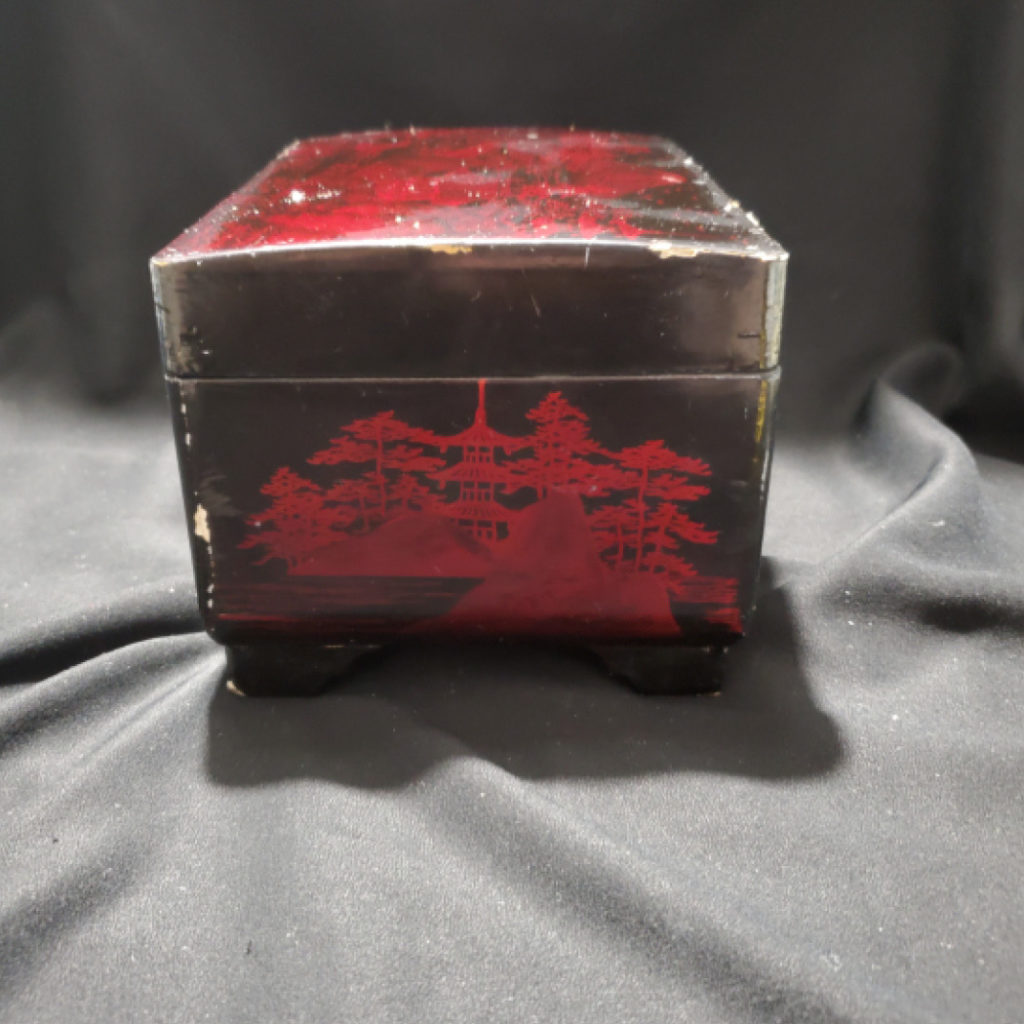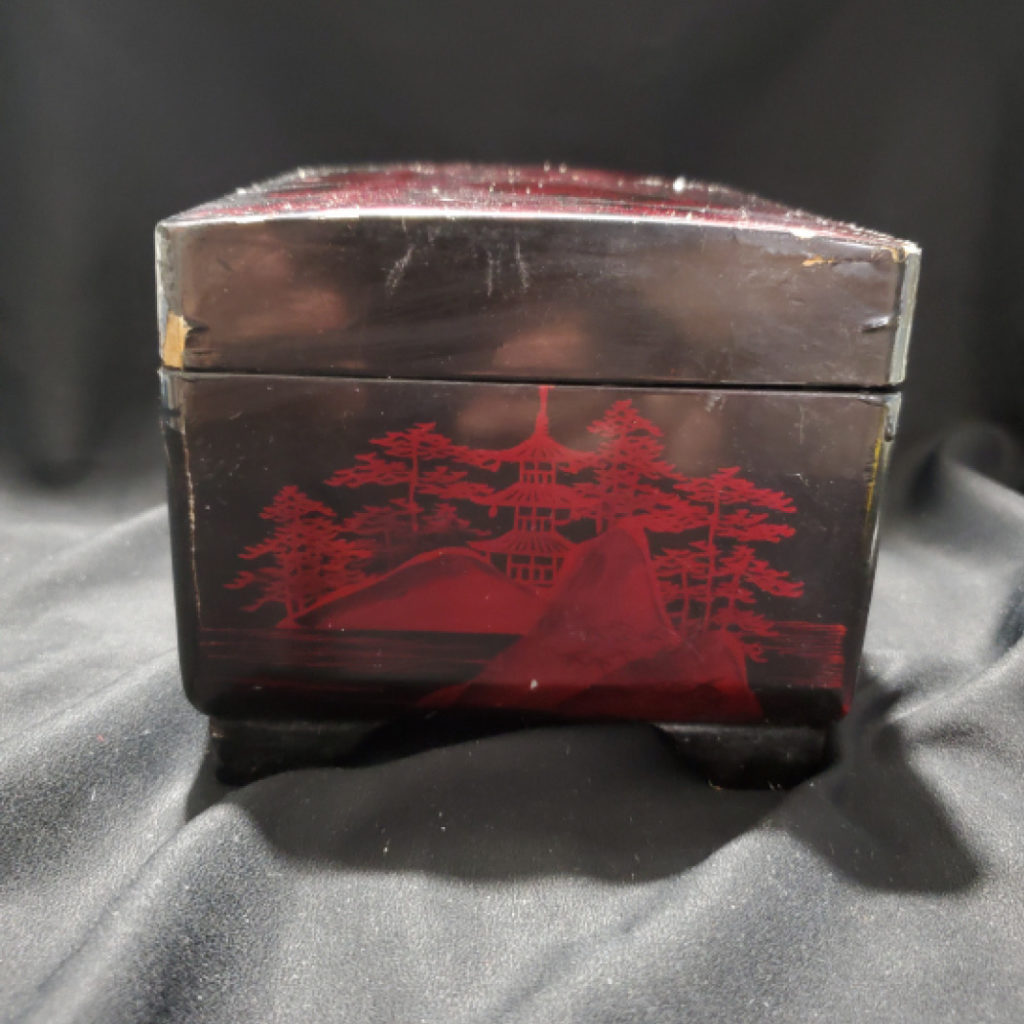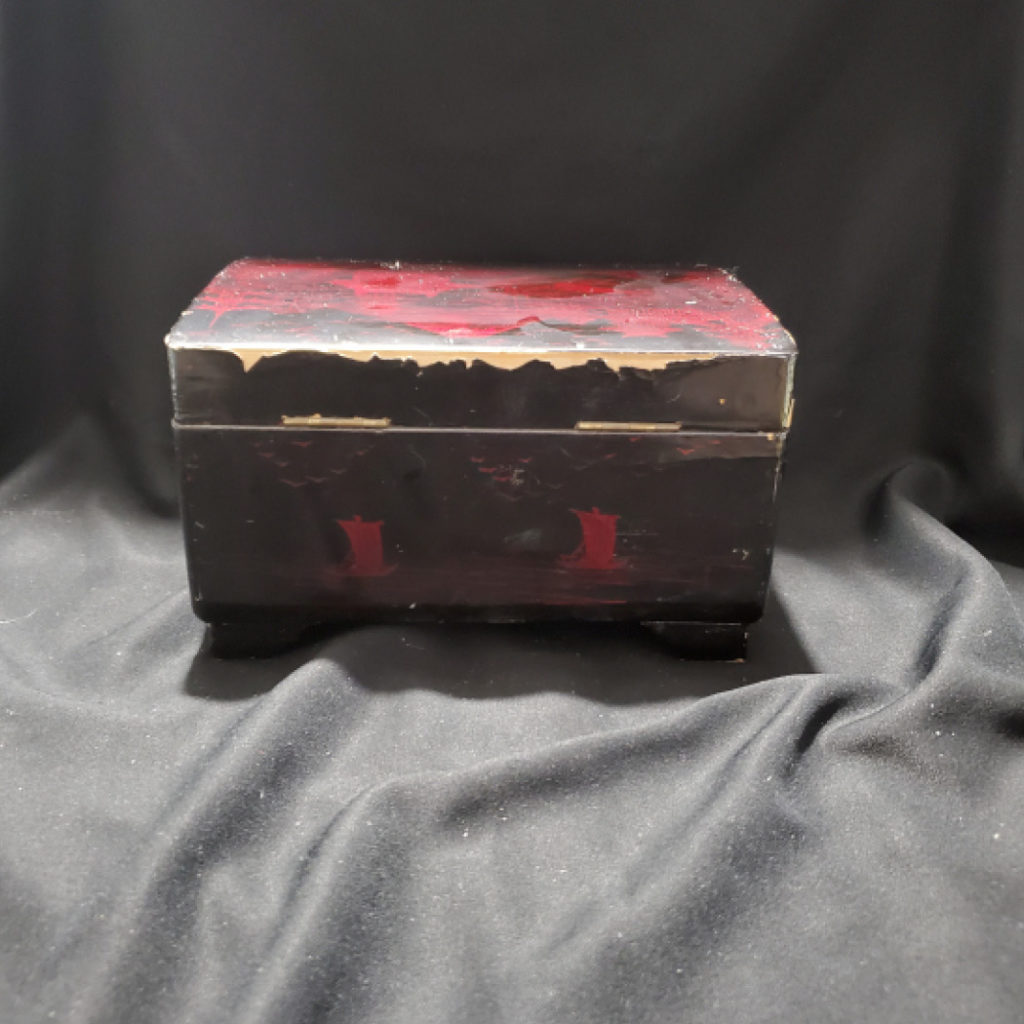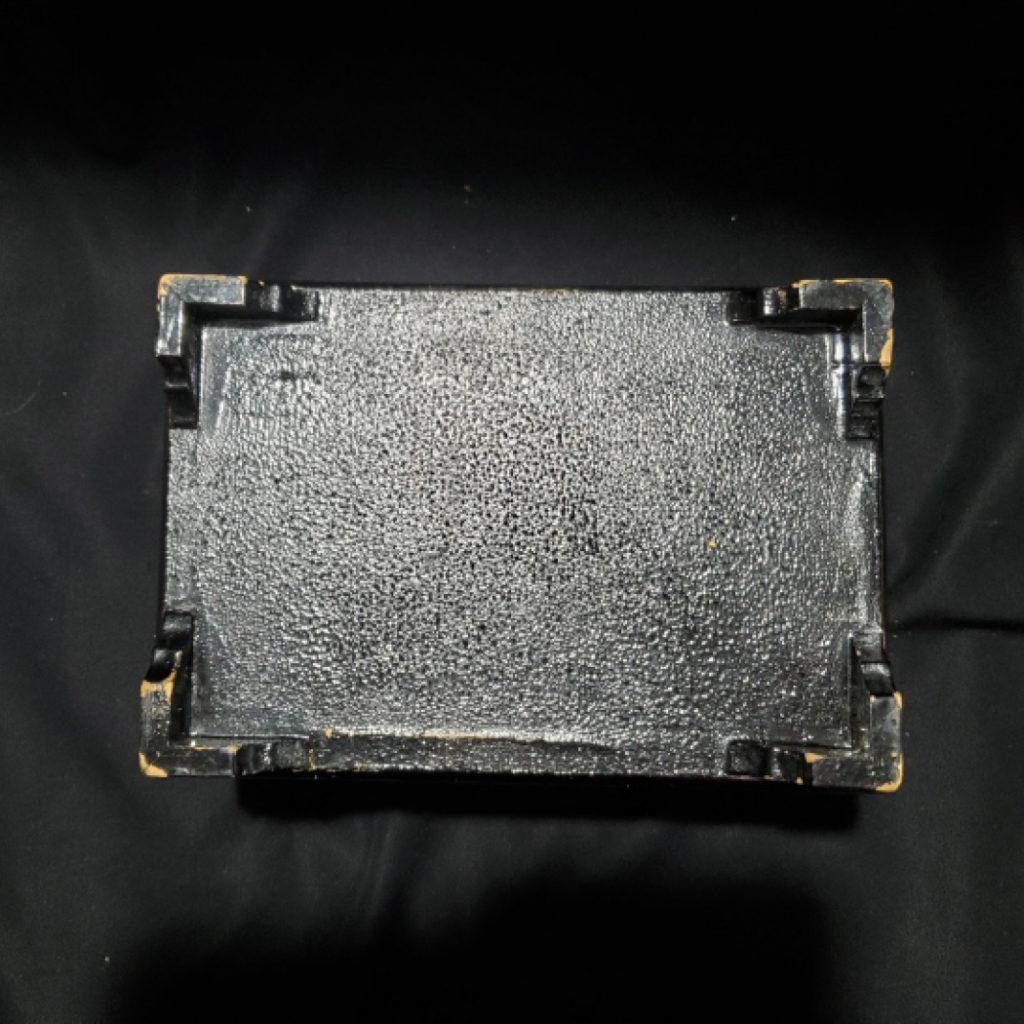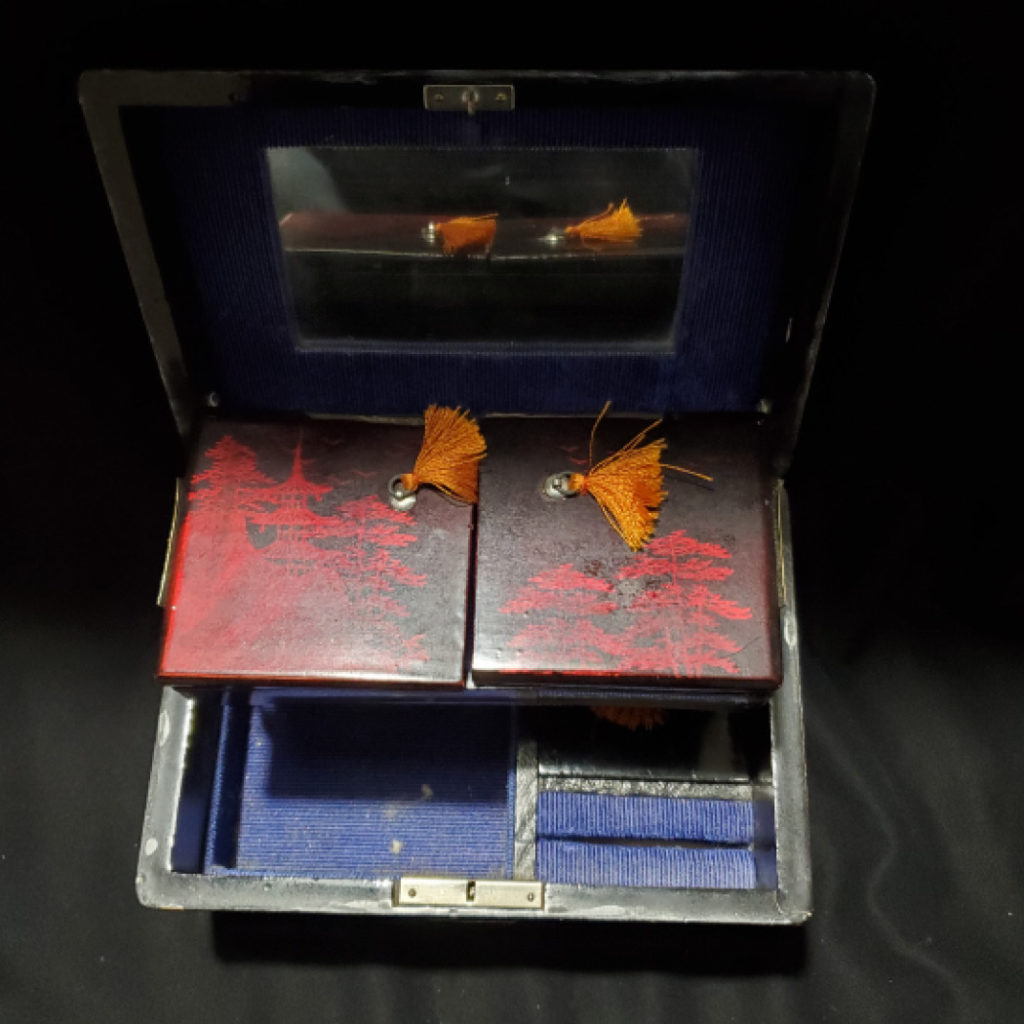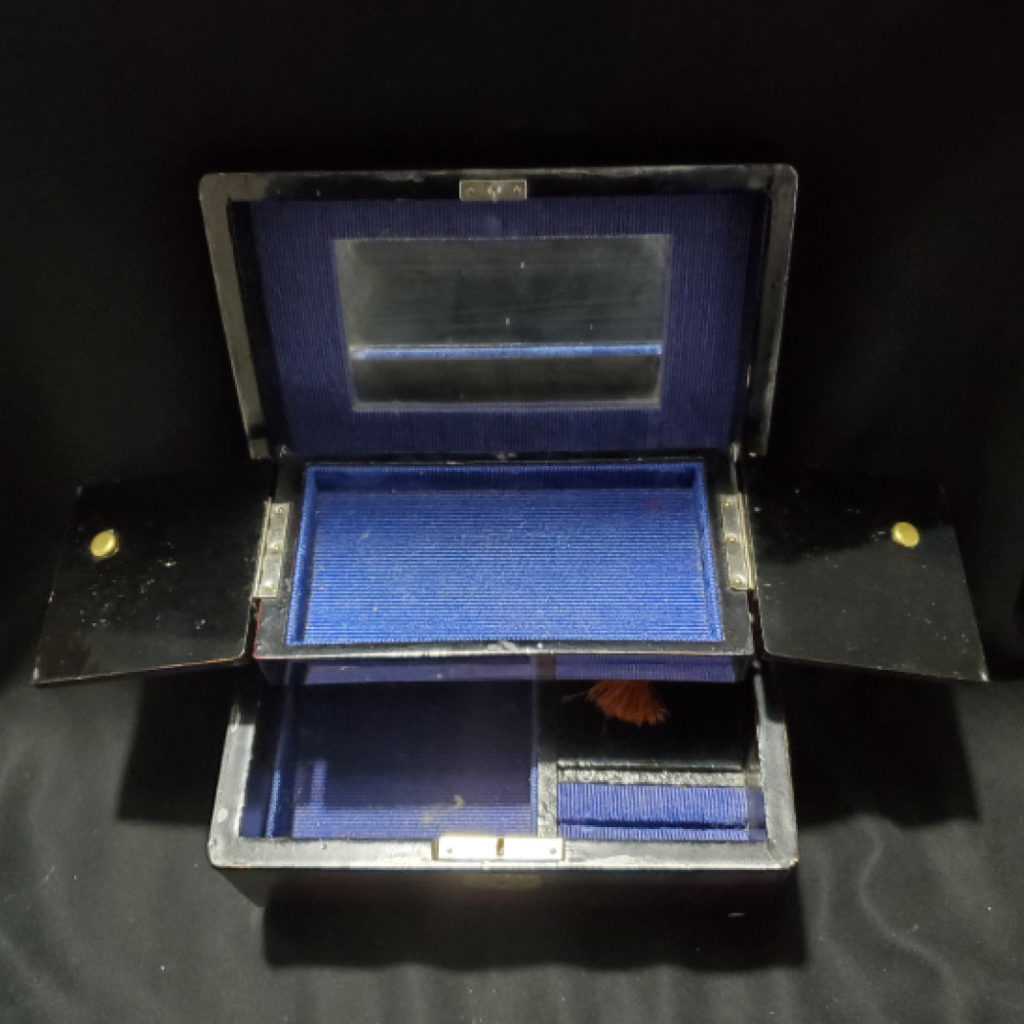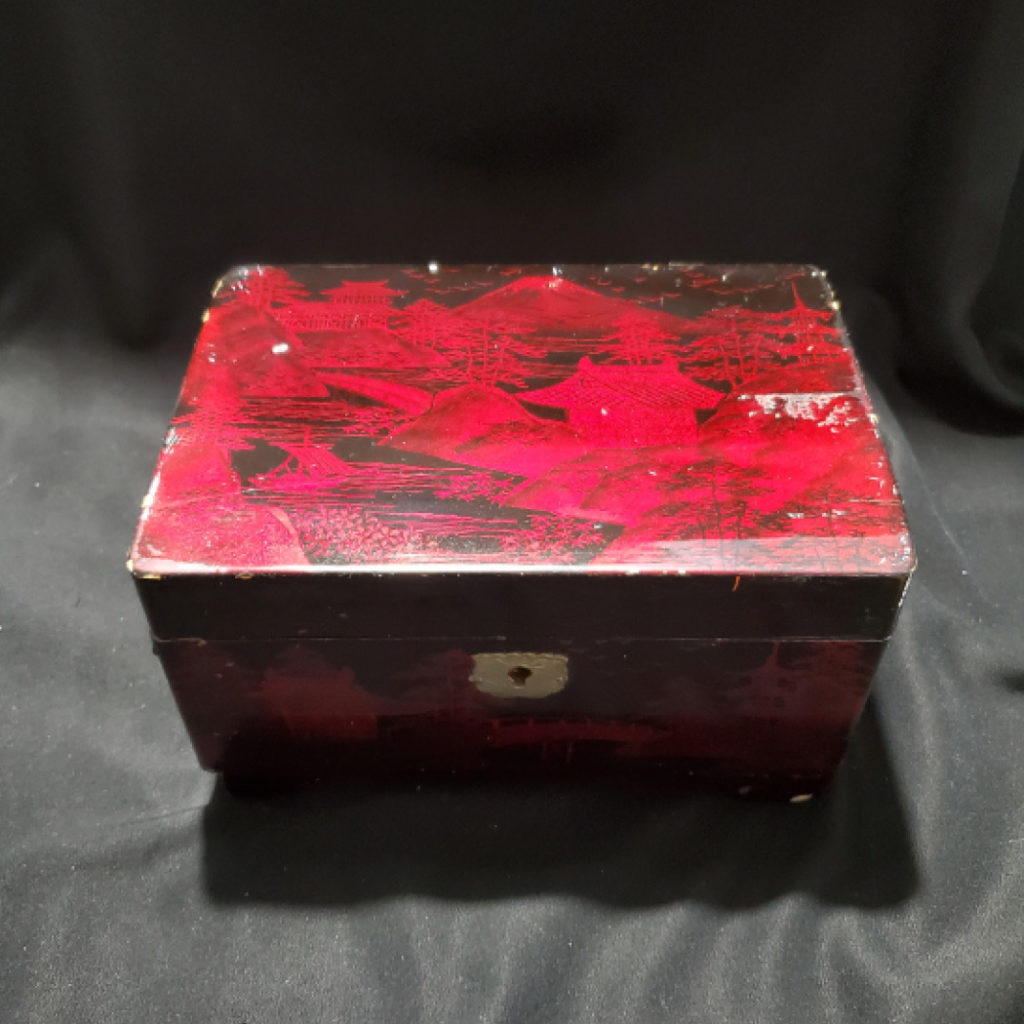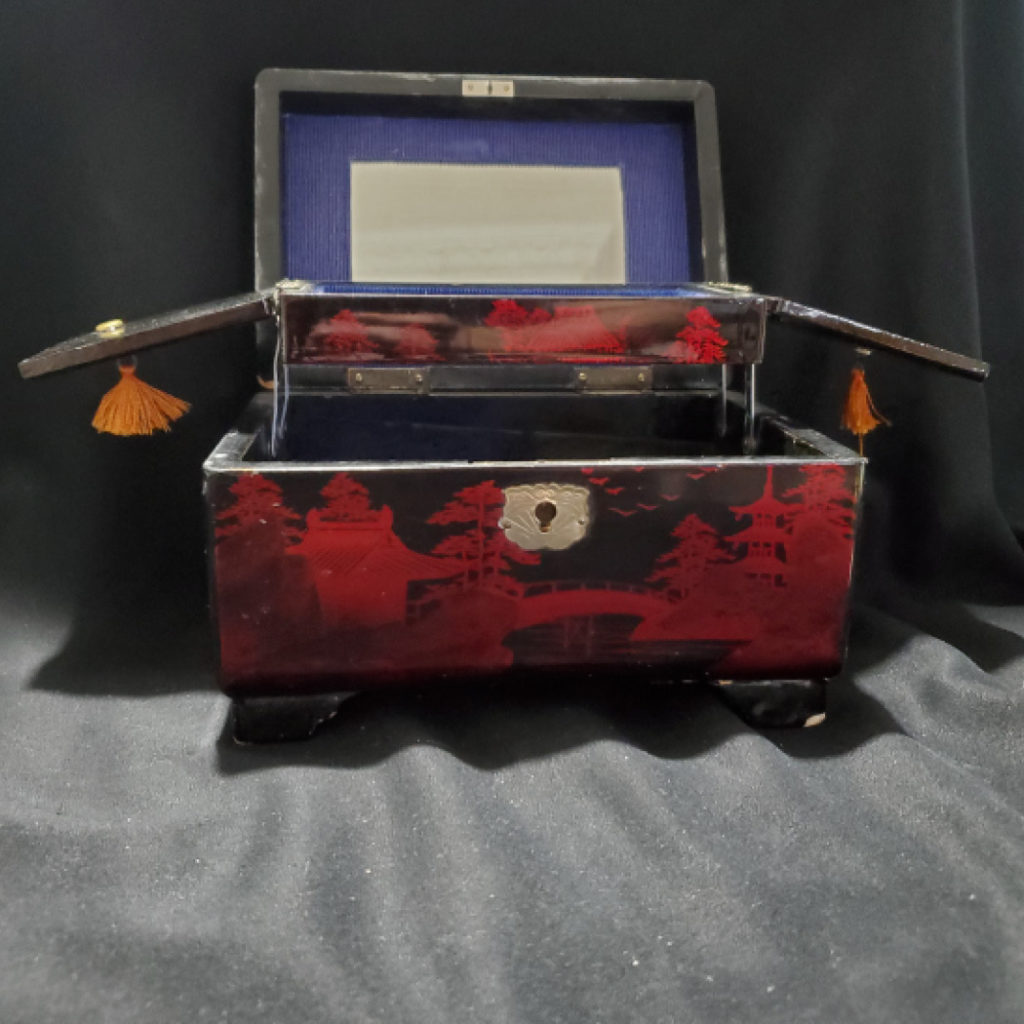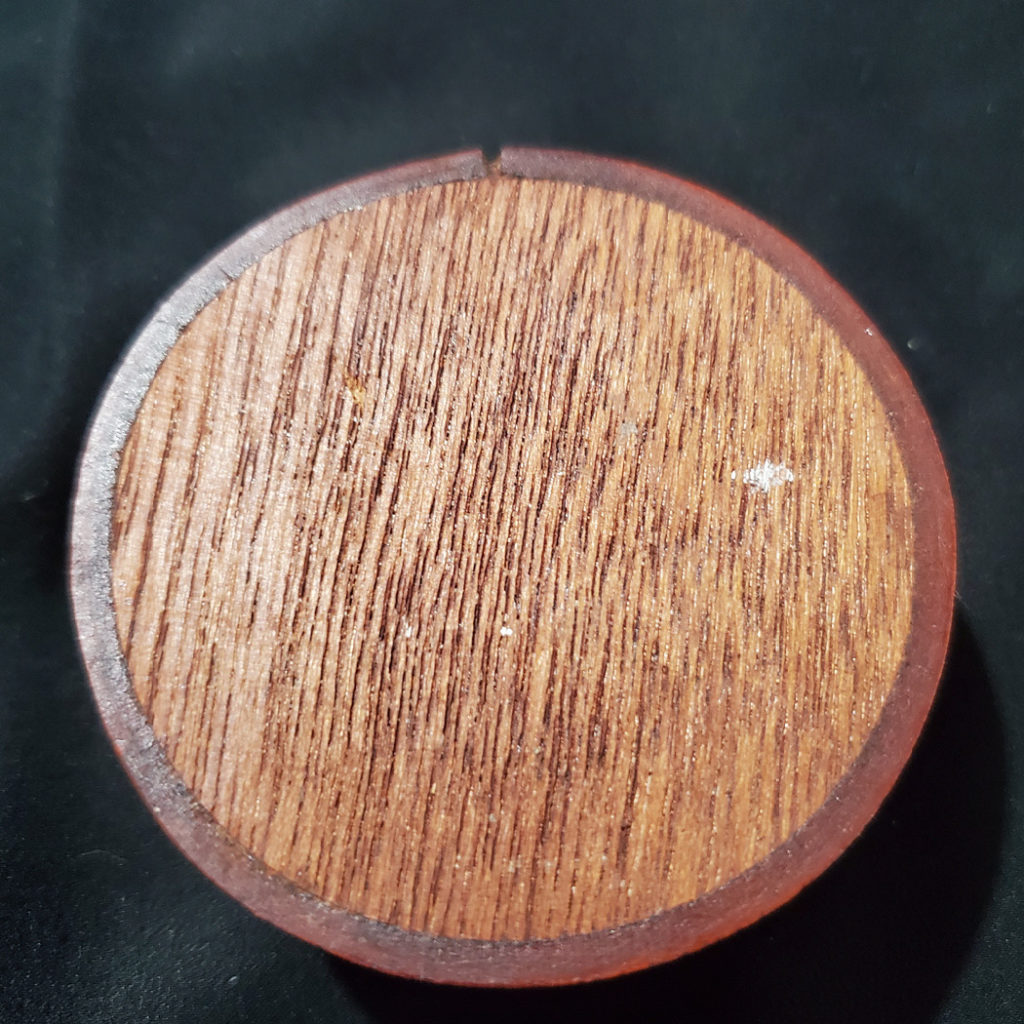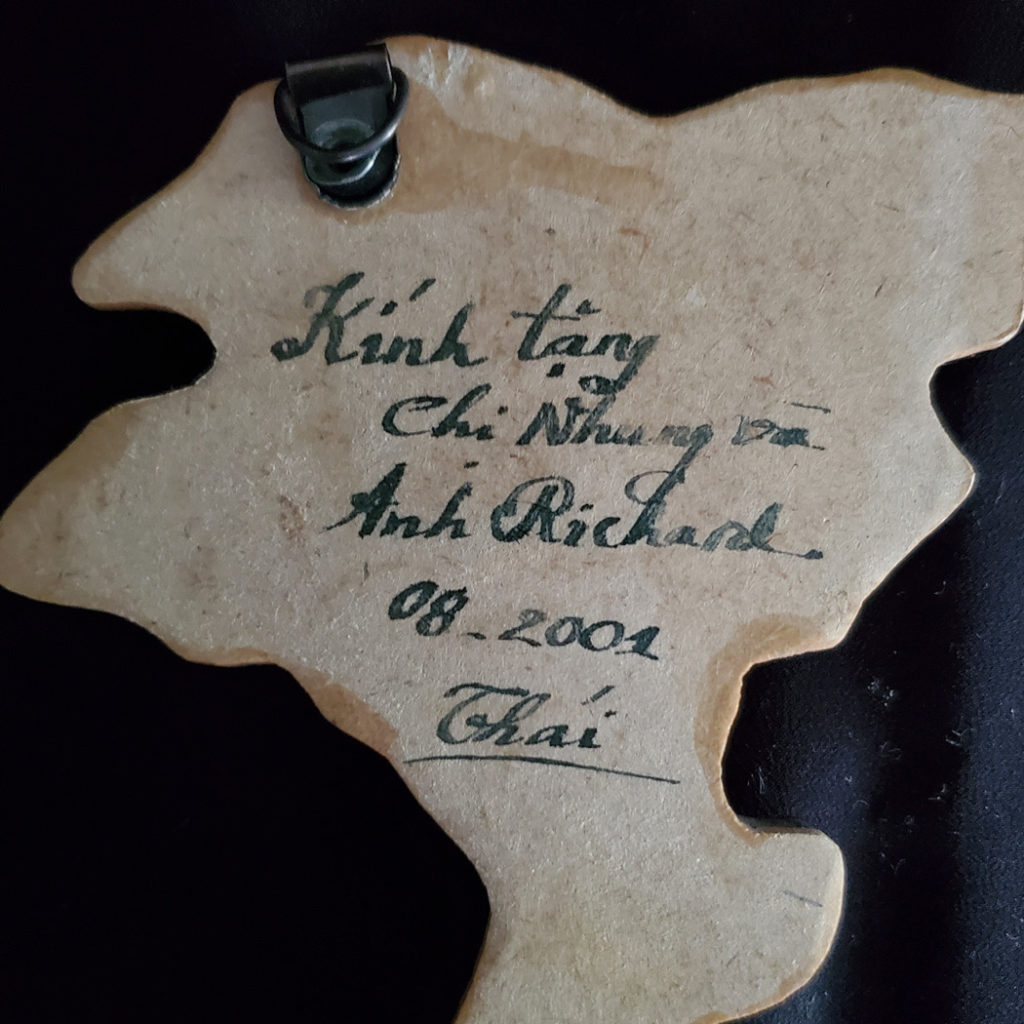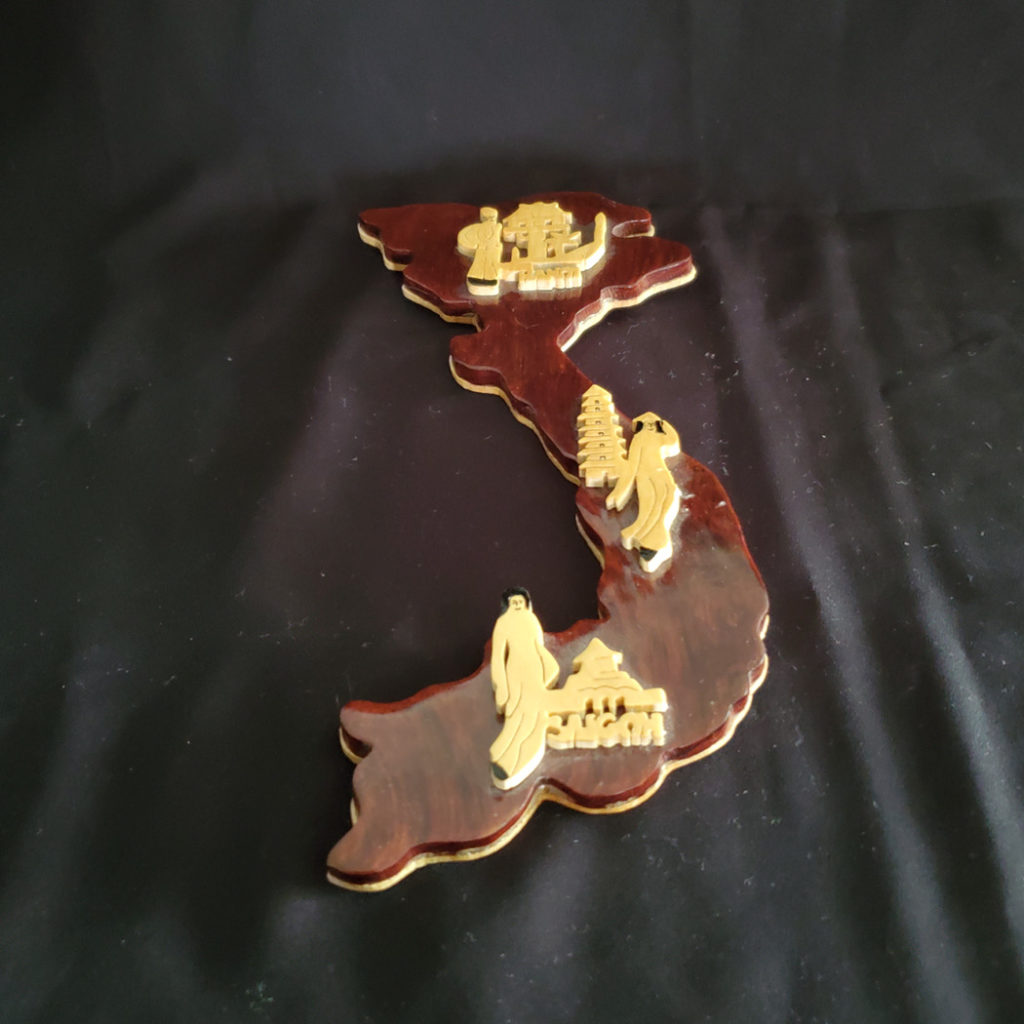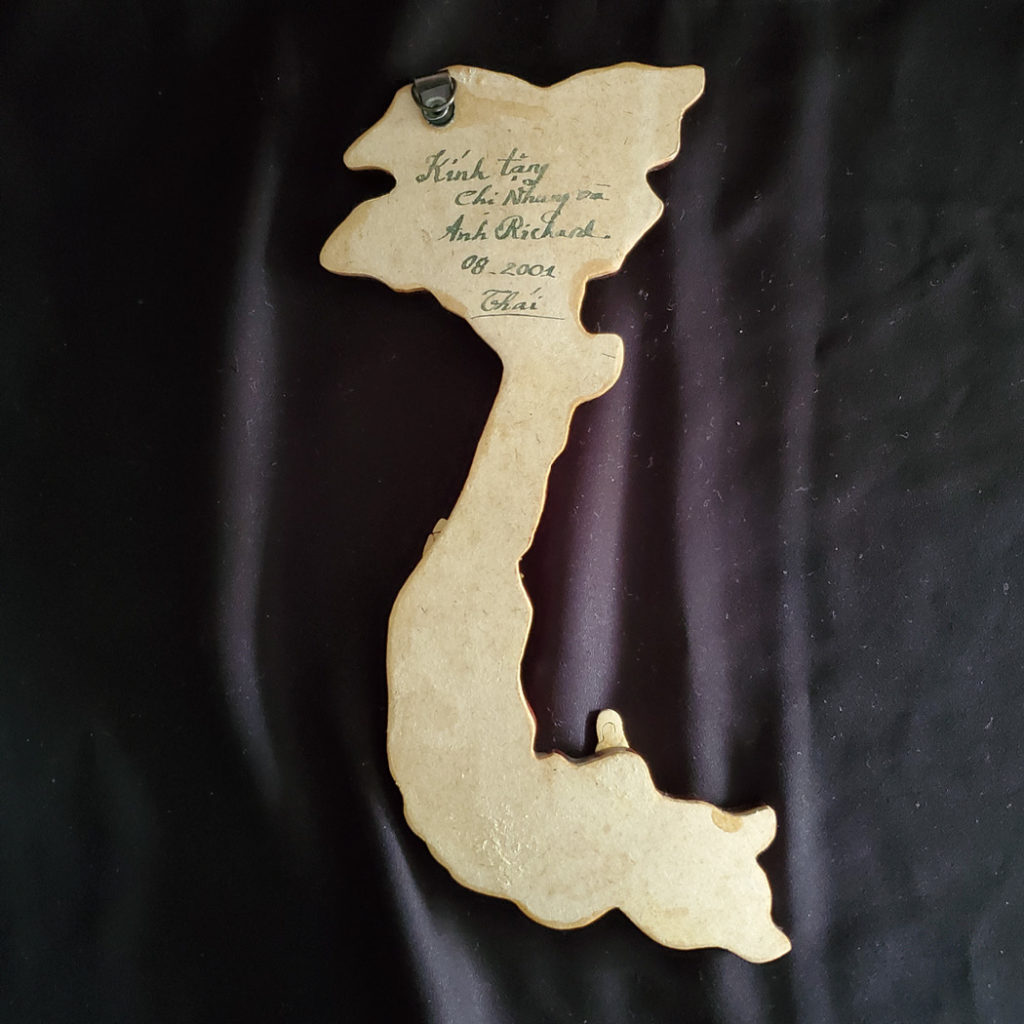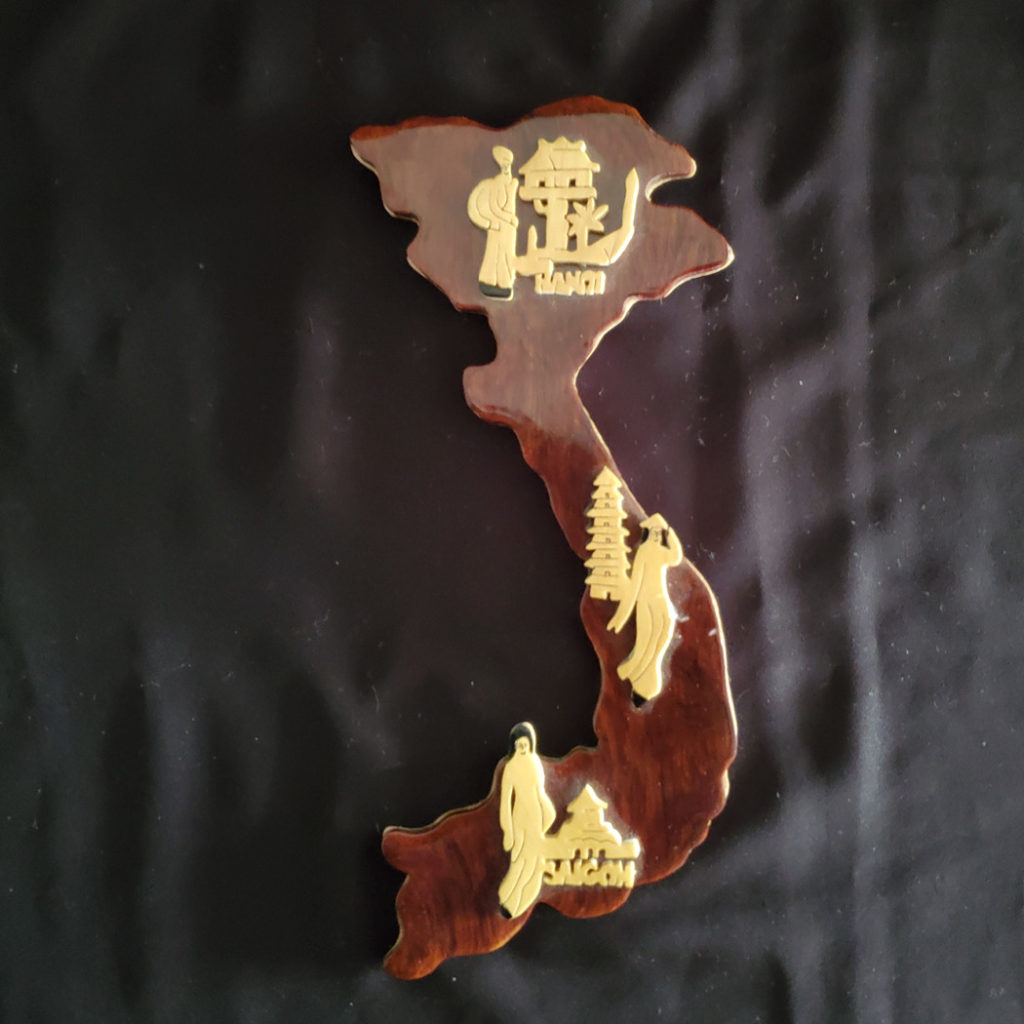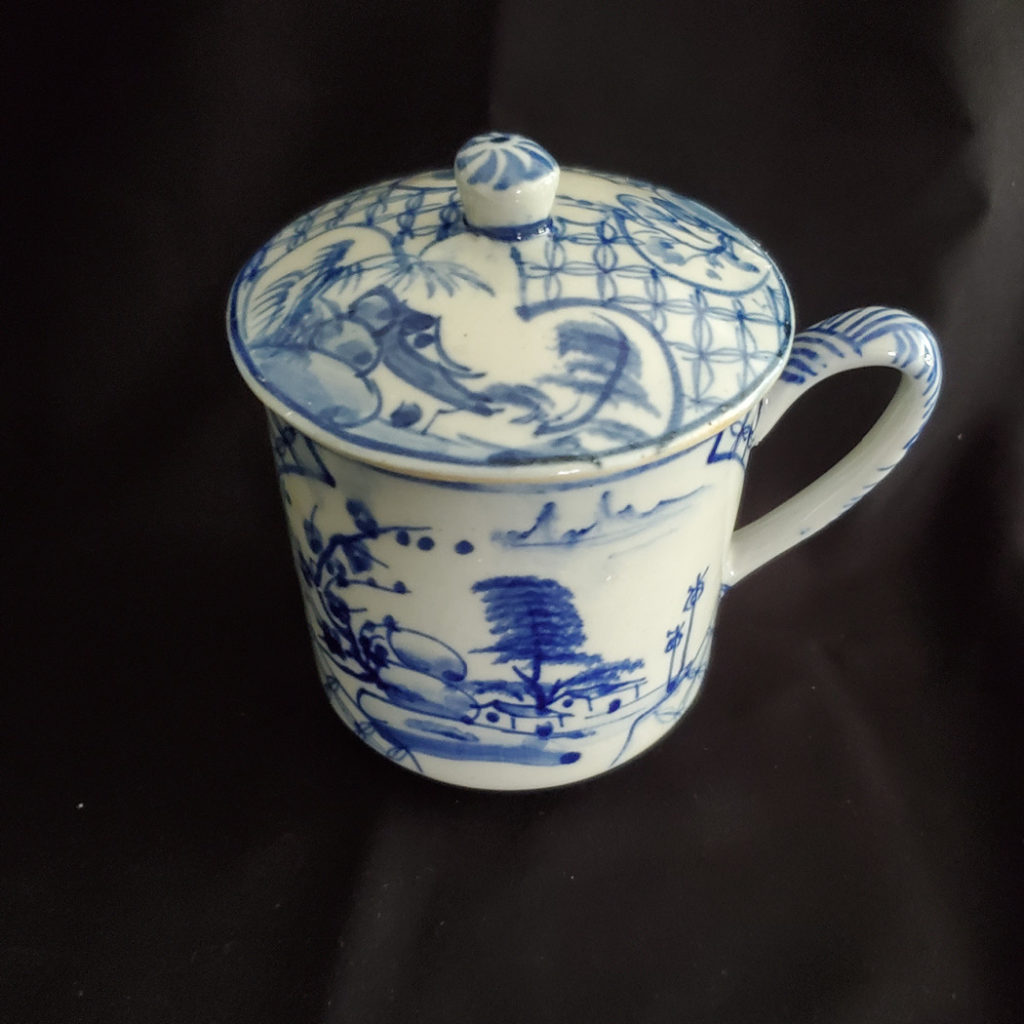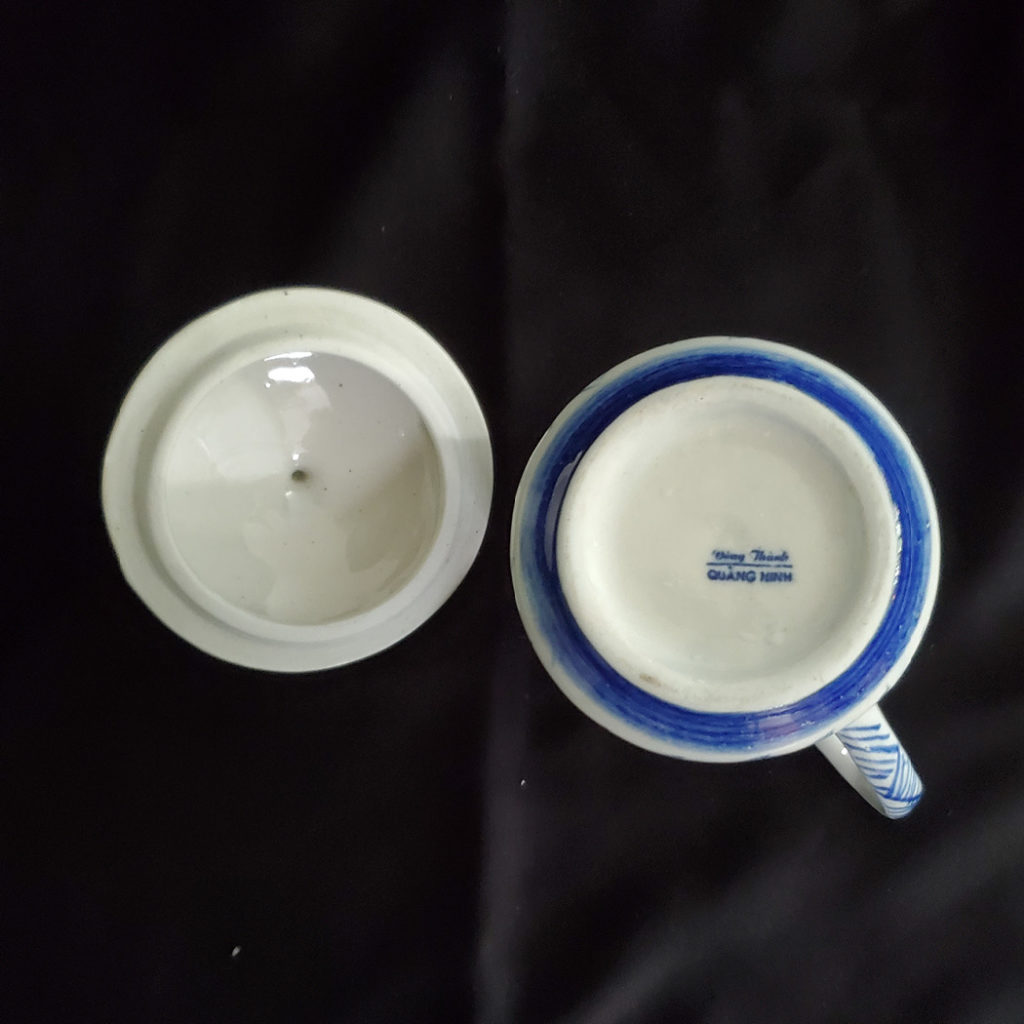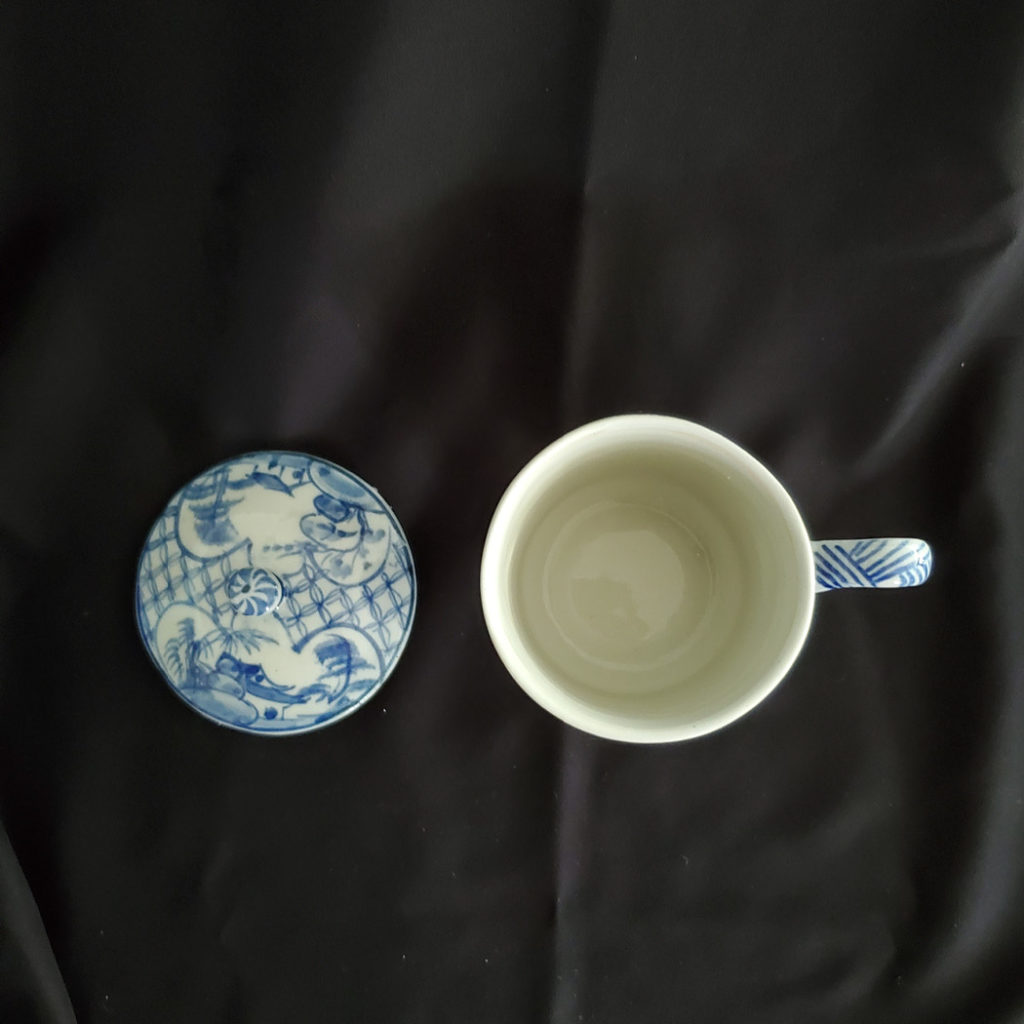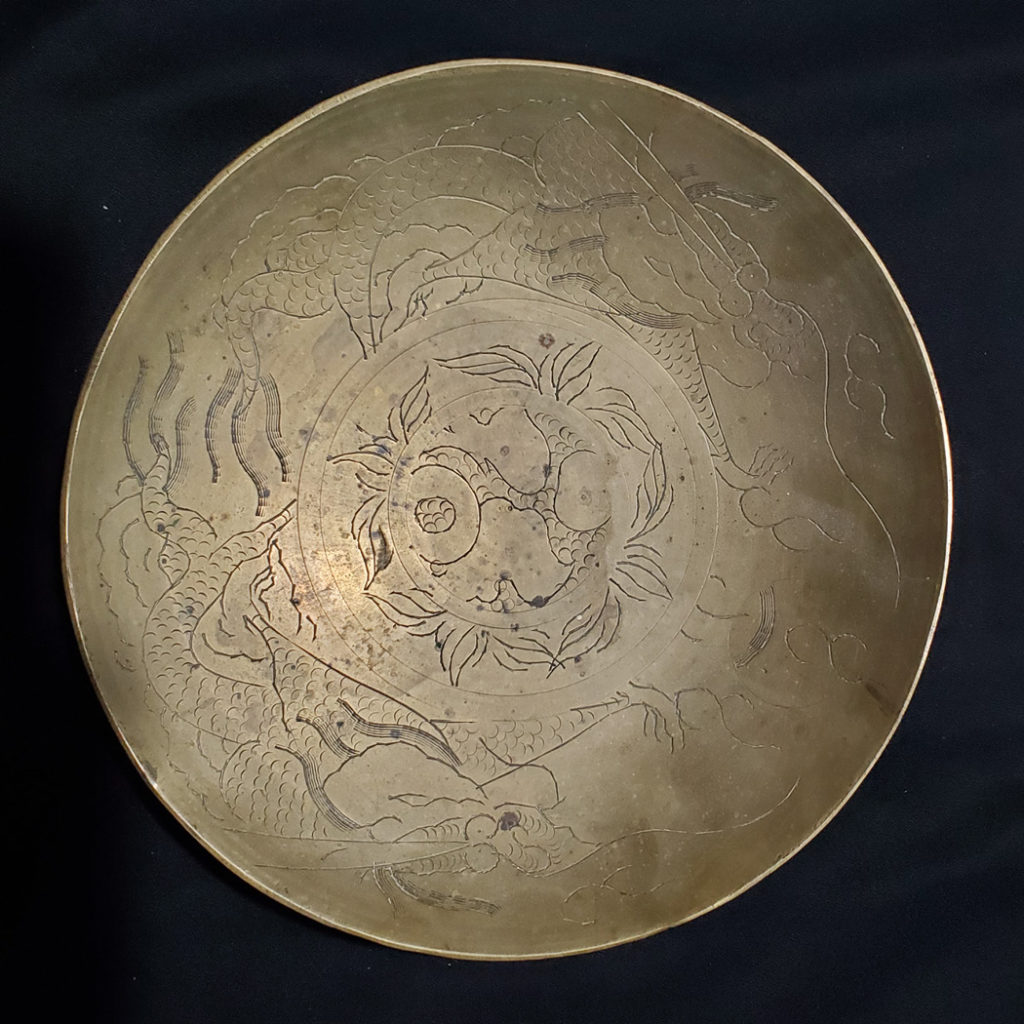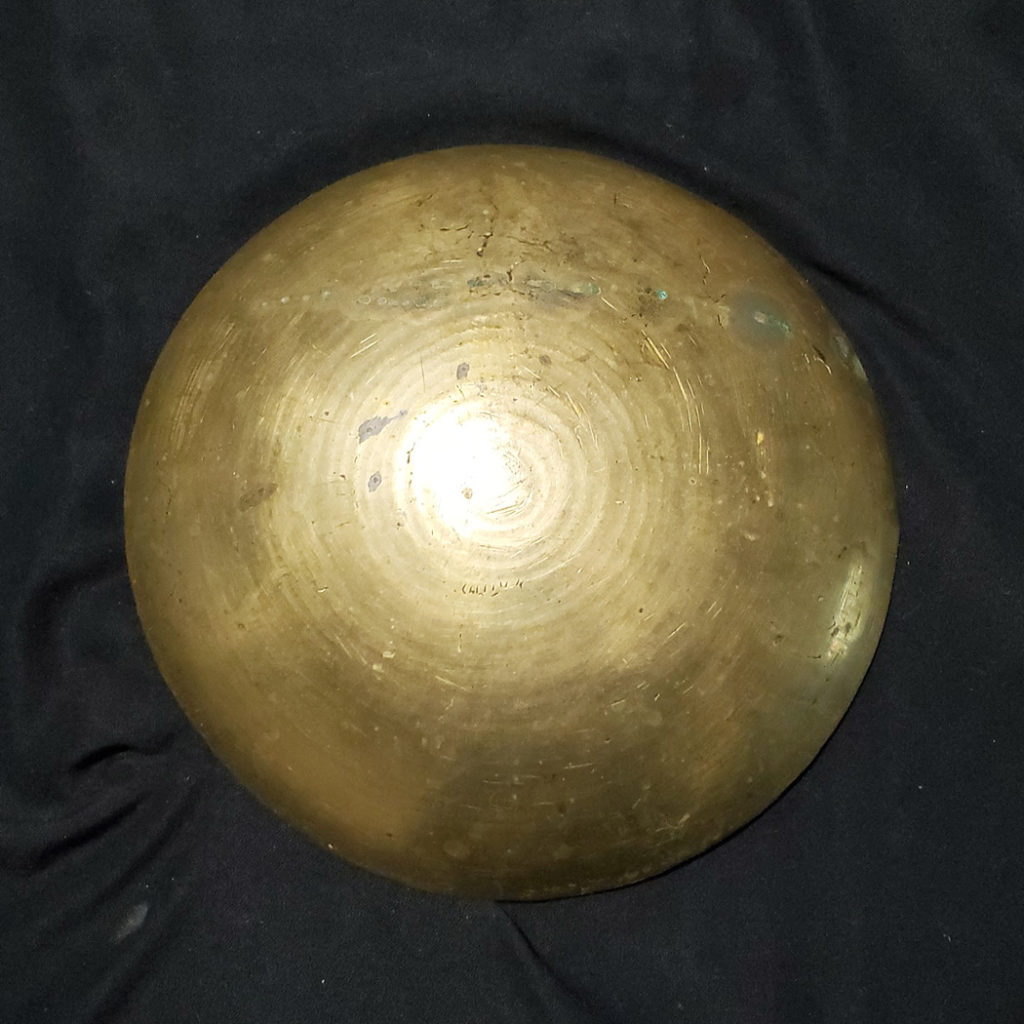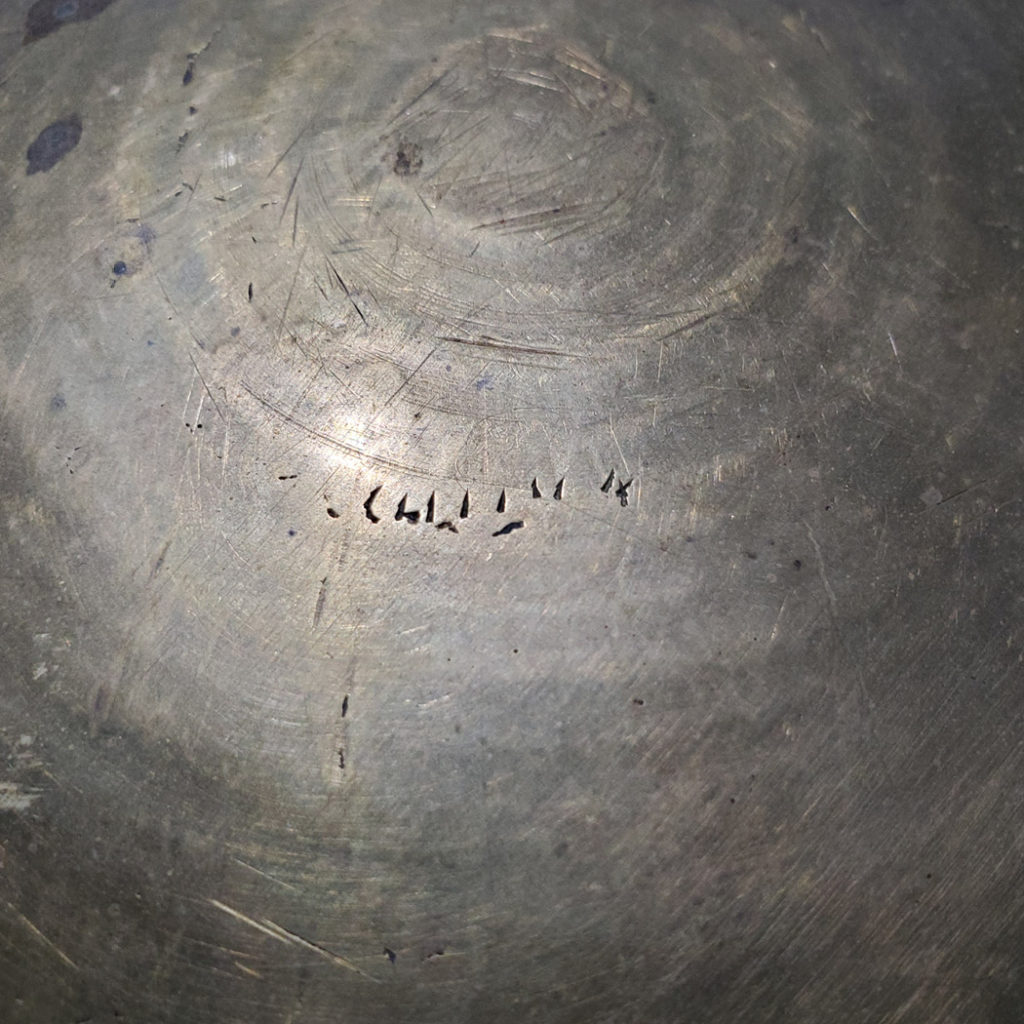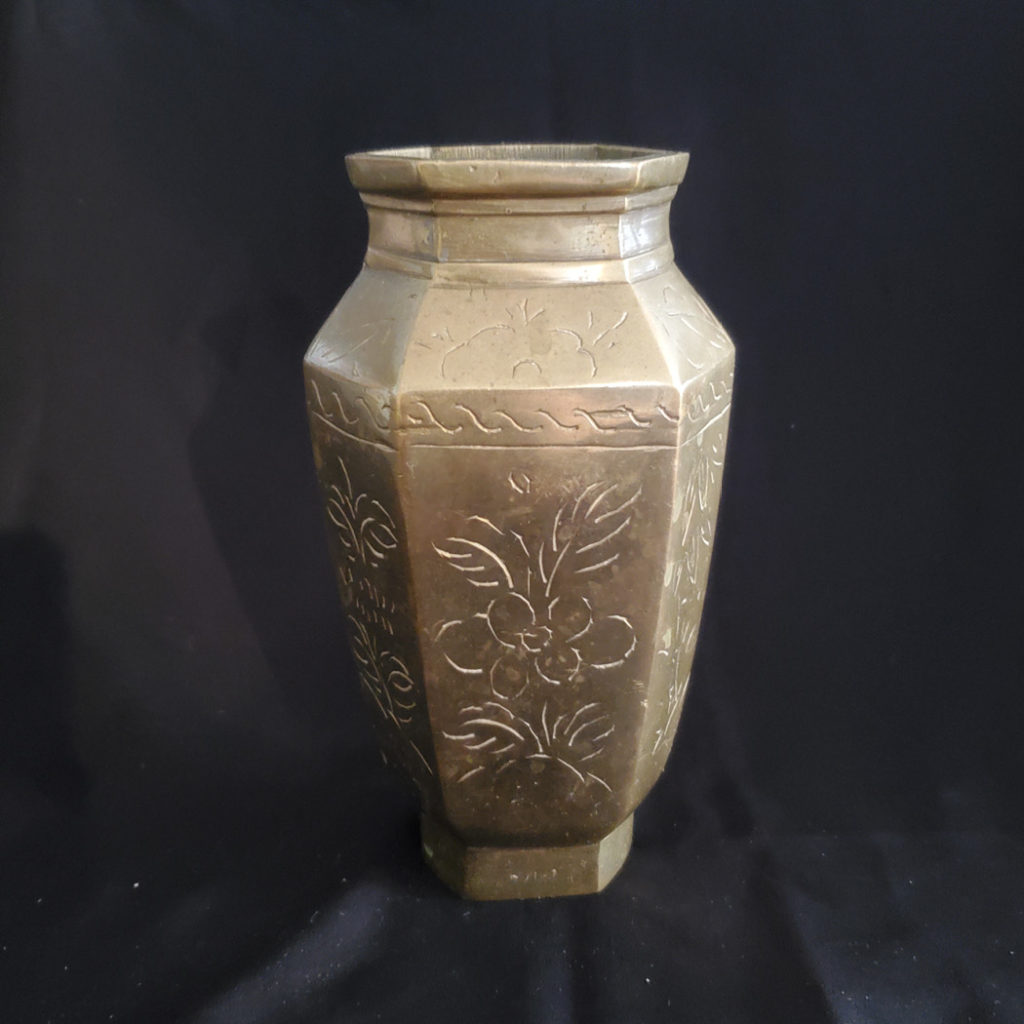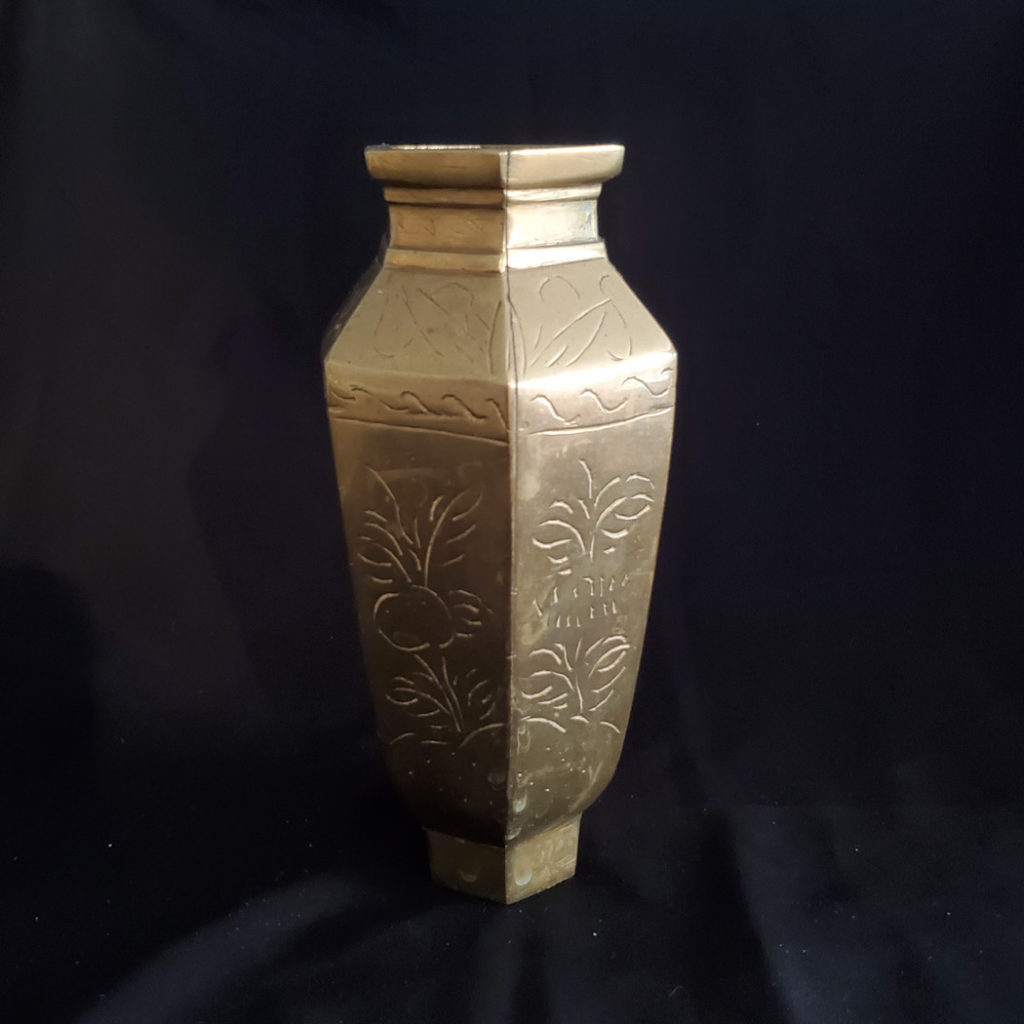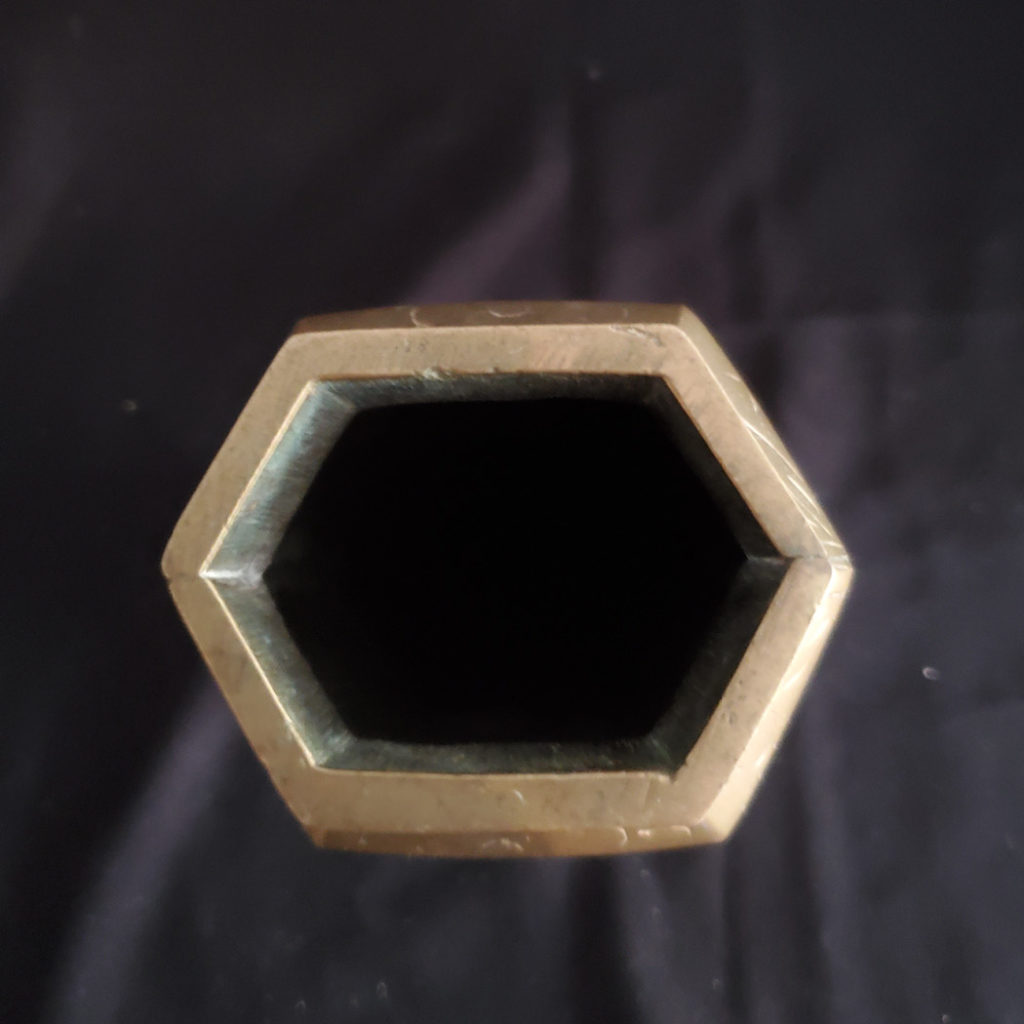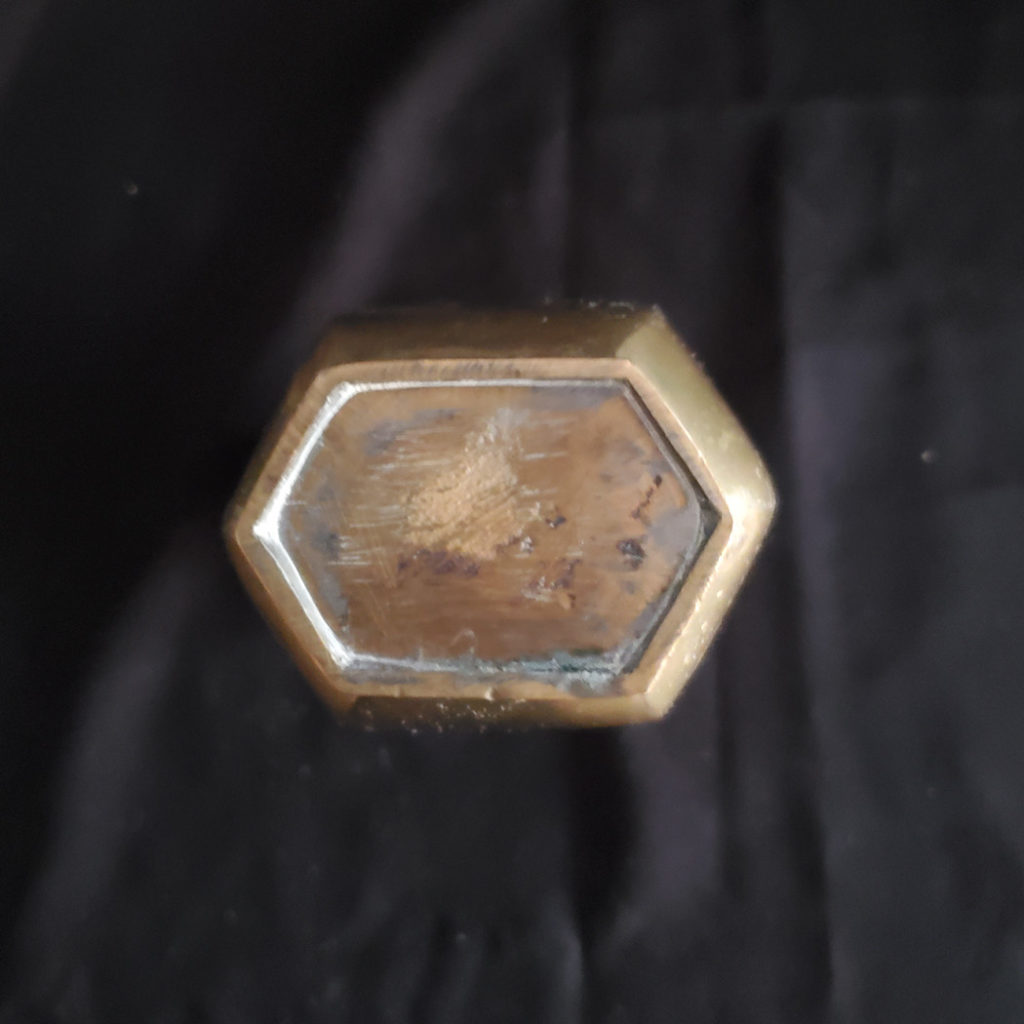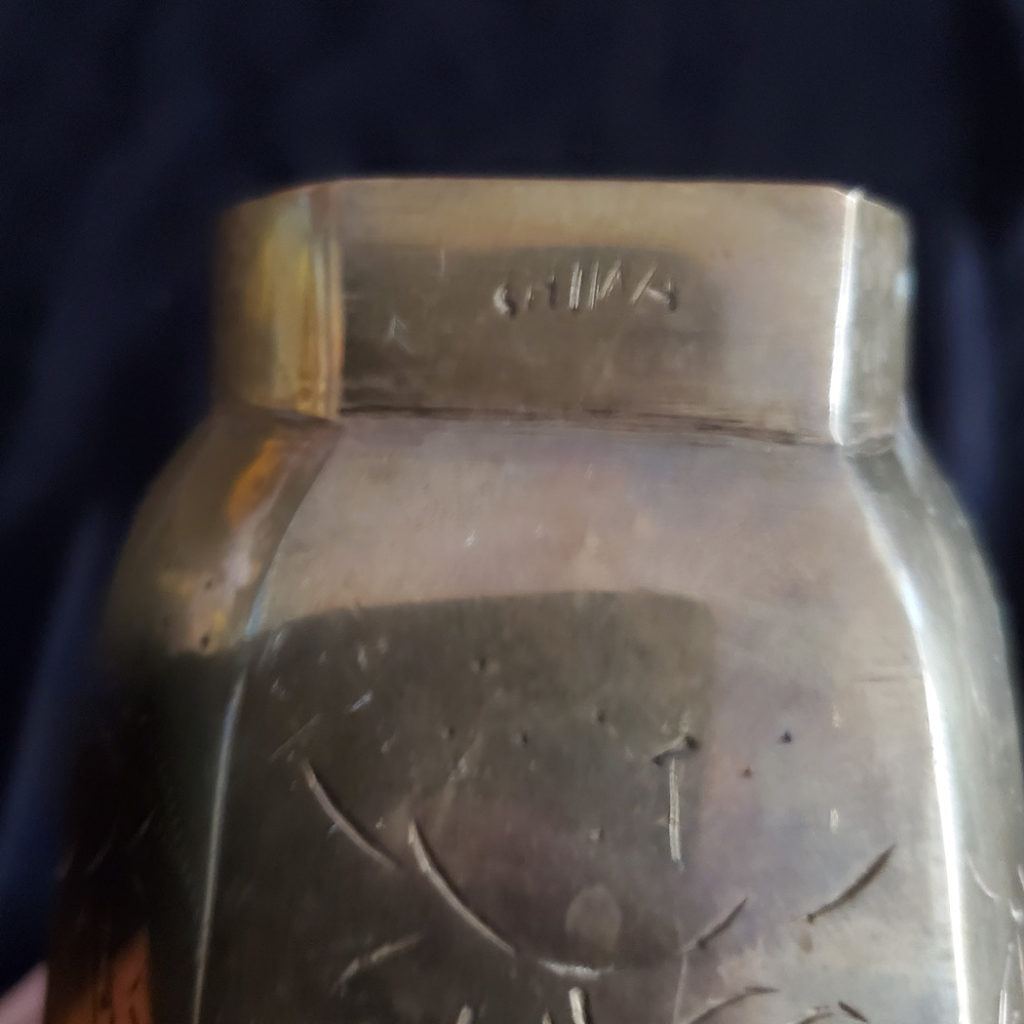#1004 I bought this many years ago. It is a beautiful piece. I cannot determine age so assume that it is a vintage reproduction of an ancient piece. It is very heavy and stunning to see. A wonderful example of East Asian metalwork. It measures 23 cm across.
#1025 This bowl is almost translucent. It appears to be from the early republic period. It is 10 cm x 5.5 cm.
#1021 Japanese art deco bowls dating to Taisho period – 1920s. The plate borders are distinctly Art Deco. The heron design is hand painted.
#1116 This is a beautiful example of Chiang Mai lacquer art. The provenance of this piece is that it was given as a gift to a Canadian, Buzz Lang 26 years ago. Presumably a fine example was selected for this diplomatic gift on the part of the Notary staff of the Thai embassy.
The art of making lacquer originally came from China and evolved unique Thai designs and techniques. Lacquerware is produced in the northern province of Chiang Mai through a painstaking process that involves imbedding colored paint and gold into engraved patterns. Lacquer is used to decorate everything from figurines, toys, bowls, trays and boxes to architectural features such as window frames.
This is a rare full colour piece. I have not removed the tape attaching the note to the back but this is easy to do. It measures 20 cm across.
#1007 This is a wonderful old small brass jar appearing to be from 19th century China. It may have been a tobacco tin, match holder, spice storage, match or incense holder. It measures 7.5 x 5.25 cm. It measures 7.5 x 5.25 cm.
#1022 Japanese hand painted ginger jar. Unmarked. I believe this to be pre-war but cannot determine this absolutely. 10 x 10 cm.
#1312 This plate has the secondary “005” mark in a triangle known on Macau plates. It is hand painted and exquisite. Measures26 cm across.
#1008 This small old statue has a lot of detail. Vintage ones like this one command high prices compared to the modern ones and they look very different in material and work. I saw one exactly like this today dated to the 1970s for $100 USD. This one measures 9 x 3 x 2.5 cm.
#1346 I am not sure of the stone. This is 5.5 cm across and would make a great pendant. I cannot determine age and it came with old things to me about 20 years ago. It is a little darker than it appears in this picture.
#1353 This has an exquisite painting on the saucer and cup. the saucer is 8.5 cm wide and the cup is 5.5 x 7. It is unmarked.
#1466 This large plate measuring 28 x 25.5 cm was produced by Maruki between 1912 and 1921. It is heavy, great condition and quite a statement piece.
#1467 This bowl from the 1920s measures 14 x 14.5 x 3 cm. The shape and lustre are certainly striking.
#1051 This hand painted plate is designed to go on the wall and has a hanger built in. It is dated to the 1920s-1930s based on the mark. It is 20.5 cm across.
#1314 The back stamp dates this to near 1918 (the wreath with just Japan underneath). It measures 9 x 17 x 14 cm.
#1009 Many cultures have significance in eggs and China is no exception. One is smaller than the other and they are: 5 x 3 x 3 and 6 x 3.5 x3.5 cm.
#1215 This is a large and very heavy brass tray with dragons on it. The mark is Xuande, a Ming emperor who was himself an artist. For this reason Chinese artists frequently use this mark for much more recent pieces. This brass charger is likely from the latter 19th century to the 1920s, or about 100 years old. It measures 31 x 3 cm. I have not cleaned it so that a buyer can decide if they want it to have a shine or an old patina.
#1023 The bowl has a gold rim and painting between the flowers. It is 7 x 15.5 cm. It is mid century.
#1247 Vintage pottery sake set made in japan. The label gives an idea of the period as this label was used in the 1960s. Interestingly, Japanese sets tended to have odd numbers like this one. The bottle measures 14 x 5 x 6 cm and the cups measure 4 x 4 cm.
#1213 The Shekwan ceramics are commonly known as mudware, mud figures or figurines, mud people, mud men, mudd men, or mudmen. Going back to the Tang dynasty, the Chinese have been producing these figures. They produced what we know as bonsai in a tray with miniature figures. The art was called Pen’Jing. They became an important and popular export with whole villages invovled in the had made creations.
Mudmen were brightly glazed figurines of men, women, wise men and old sages, seated or standing, holding flutes, scrolls, pots, fish and other objects of mystical importance or sometimes fishing. After completion of the rice harvest and the dry season set in, villagers turned to figurine production to stimulate the economy.
Each mudman was hand painted with a low temperature lead glass glaze in yellow, blue or green glaze with the occasional use of white or brown. The face, hands and feet were left unglazed to expose the natural color of the mud. The rocks, shoes or sandals were painted with a dark brown, almost black under-glaze, that was often used to paint hair and facial features as well. Occasionally the rocks were painted a red oxide or yellow ochre. This one measures 5.5 x 13.5 cm.
#1229 This is a very unusual Chinese sculpture of a child. It is also painted all over unlike most mud ware. This sculpture is believed to be from the Qing period in the 19th century. The sculpture measures 4.5 x 8 cm.
#1544 This is a Chinese figure with a mark on the bottom that is incomplete and western writing that may read In Augustin or Argenten. I have not been able to identify it. It is possible that the writing is that of an importer. It measures 14 x 5 x 5 cm. There is a small chip under the hat. Also known as Dehua porcelain, this porcelain has been made in Fujian since the Song dynasty, 960-1279. It reached a height during the Ming dynasty, 1368-1644.
#1250 Bowl with no glaze on the inside and a texture instead. Made in Japan. 15.5 x 7 cm.
#1024 A pair of bowls with the same pattern. One is a standard bowl with the pattern on the outside and the other is a candy bowl with a handle and the pattern on the inside. 15 x 7 cm for the one without the handle and 17 x 13 cm for the one with the handle.
#1026 These wonderful bowls come from the Juzan Gama family kiln. This maker is very well known. His work is known for exquisite patterns and florals as can be seen here. Each measures 15 x 7 cm.
#1041 This celadon teacup made in Korea is signed. It has a double wall which manages the heat so you don’t burn your hands. Beautiful traditional celadon design.
#1380 Korean Celadon, hand painted, unusual shape. Measures 12.5 x 12 x 8 cm.
#1241 I do not recognize the mark on this bud vase and presume it to be modern but I cannot tell the age. It is very attractive and unusual. It measures 5 cm x 5 cm.
#1011 You can find these boxes still being made today, but this is a a very old one. It has a wood lined interior. The hinge is intact as a piece of brass that slips between the wood and the brass on the lid. I have left it disconnected so that it does not get damaged. There are markings on the bottom for export. It is not in perfect condition showing its age with a patina that can be left or it could be cleaned up. It measures 8.5 x 6 x 3 cm.
#1043 This small Japanese bud vase was imported by Amrams Toronto probably in the 1970s. 7.5 x 9 cm
Because of the shape I am not sure what else it is and I found nothing to compare it to. The screws are quite old so this has some age. I have the impression of an artist bored after dinner carving the bone. It would make an interesting conversation piece or gift. If anyone can identify it better please let me know. It measures 10 x 13 cm.
#1053 This is a pair of unmarked Imari plates. They are old and small with exquisite tiny designs. I suspect these to be either from the Maiji or Taishō period. The marks on the back of the right one are surface only. 10 cm
#1054 This motif of a child on a bamboo mat was popular on export Japanese porcelain and these whimsical plates with the three dimensional image are quite interesting. I suspect they were made before the war in the 1920s or 30s. They are 11.5 x 8 cm each.
#1055 These are immortals from the early to mid last century with a lighter red-orange colour the details are quite extensive. They are about 8.5 x 4.5 x 4 cm each.
#1056 This appears to be from the late 1800s or early 1900s. It is 11.5 cm across.
#1057 This miniature beautifully painted prewar Japanese cup with geisha pattern. 6 x 3 cm
#1058 This small bowl has a wonderful flower design with great detail and a slightly raised surface. 9.5 x 4.5 cm
#1263 This Japanese Geisha plate is unmarked and likely dates from the 1930s to 50s as the earlier pieces tended to include gold paint. The porcelain is translucent and very fragile. This one has a couple tiny chips and some imperfections in the painting as most have. I have priced it accordingly. It is 5.5 x 2.5 cm.
The small detailed silver figurine measures 5 x 3 x 2.5 cm
#1060 Root carving is a traditional art form in China. So is the use of resins and lacquers. In the early 1900s the Chinese started to make resin versions of the Immortals figures and root carvings. Today these are replaced with modern plastics. This is an early example of resin carving made to look like wood and has the characteristics of the work produced pre 1940. This is rare today. This on measures 20 x 8 x 8 cm.
#1061 These porcelain immortals are signed. They measure 9 x 4 x 5 cm.
#1062 The porcelain is thin and delicate in this mid century sake set. The measurements for the bottle are 12.5 x 5.5 cm and for the cups 4 x 5.25 cm
#1063 These cloisonné balls are used for meditation dexterity strength exercise and decorative spiritual rehabilitation and as retro Asian decor. These look like they are probably from the 1970s.
#1064 These three bowls are unmarked studio pottery. The pair are 12.5 cm x 4.25 and the white third one is 13.5 x 5.5
#1065 Titi Kwok is a well known artist in Malaysia. To learn about him you can visit his site. These two paintings are older examples of his work picturing a fishing village. They use traditional and modern techniques including Chinese brush painting. The price here is less than the cost of framing. There is some wear on the frames. The size, including the frame, is 36 cm square. Price is for both framed paintings.
#1046 Chinese tea set for two in red clay. tray 16.5 x 5 cm pot 12 x 7 cm and cups 5 x 3 cm
#1107 This is a very large wall plate designed as a faithful reproduction of 16th century Imari. It comes with a wall hanger and is quite large. It is a Japanese hand made piece unlike Chinese factory reproductions. It is very heavy and measures 31 cm across.
#1224 This is a modern very high quality plate from Japan. It incorporates newer 20th century colours including greens and purples. It measures 16 x 4 cm.
#1225 This dish is unmarked but likely from the early 1900s. It measures 2 x 10 cm.
#1108 The Noritake backstamp or mark indicates that it was made around 1918. It is hand painted with a finger loop design that was popular at the time. It is 14.5 cm across.
#1109 This is a dish made in Japan during the period of occupation following the second world war 1945-1951. It is highly collectible. This dish is 14.5 x 13.5 x 4.5 cm.
#1479 This style of dish with a single handle and no rim was called a lemon or nappie dish. Often the are referenced as trinket dishes as few seem to use these terms. It is 14.5 cm across.
#1155 Traditional Chinese ginger jar. It is a little smaller than average at 9 x 9 cm. I believe this to be from the 1980s or more recent. It is not antique but very similar and designed to look like the antique jars. Very attractive.
#1533 Very attractive new tea set from Japan. Comes in original box, never used. Includes tea strainers for pot. Cups are 6.75 x 7.75 cm and the pot is 11 x 14 x 10 cm.
#1156 This duck teapot is a design that became popular in the 1960s and 70s. I believe this is from that period. It has a straw/wicker handle. The size is 11 x 21 x 12 cm.
#1158 The Takito company 1880-1948, is mostly known as of one of those specializing on the Lustreware type of decoration originally developed by the Noritake company. The “T T” in two rectangles dates from the 1920s to 30s. This cherry blossom motif was especially popular. It measures 16 x 10 x 12 cm.
#1389 This plate measures 22 cm across is very typical of the early 1900s Japanese export porcelain. This is a wonderful, well painted early example.
#1390 Orange lustreware became popular but this is a particularly fine example with the orange not being a solid but a gradient. The design, painting and condition are all excellent. It measures 12 x 13.5 cm.
#1532 Japanese bowl. Unknown backstamp. I suspect this was a custom backstamp for a particular importer. Age is unknown but it is a wonderful translucent porcelain. Measures 6 cm x 19 cm.
#1391 Nice examples of Japanese lustreware, likely from the 40s or 50s. The creamer is 12 x 8 x 9 and the sugar bowl is 11 x 13 x 10 cm
#1392 Very nice early cobalt edged translucent porcelain from Japan. There is a minor fleabite that you have to look to find on the inside rim of the sugar bowl. I priced this accordingly. The creamer is 11 x 9 cm and the sugar is 7.5 x 7 cm.
#1557 These plates are unmarked but clearly mid century Japanese. They have a couple very tiny chips that are not very noticeable. They are priced accordingly. The measure 17 x 18.5 x 2.5 cm.
#1554 This morriage vase has great detail in the bird motif and cobalt rim. It measures 7.5 x 11 cm.
#1552 Produced in Japan just after the second world war this Occupied Japan teacup is small and delicate. The saucer measures 11.5 cm across and the cup is 9 x 6.5 x 5.5 cm.
#1567 This is an unmarked example of Geishaware from Japan. It measures 9 x 13.5 x 11 cm.
#1393 Small trinket dish made in Occupied Japan. It measures 14.5 x 12.5 cm.
#1394 It is a beautifully painted moriage bowl from the early 1900s. It measures 10 x 3.5 cm. It may have once had a lid.
#1395 Beautiful shaped and painted cup and saucer with a warm scene. Cup is 10 x 8 x 6 cm and the saucer is 14 cm across. A larger volume cup than most.
#1396 This small dish is 12 cm across. The G in a wreath, according to Gothenberg, is a contract importer in Toronto for Noritake and is dated in the 1950s. This measures 12 cm across.
#1397 This modern cake plate is well designed and painted. It measures 26 cm across.
#1159 Kutani cup and Saucer mark: Tashiro. Operated a shop in Yokohama and had distinctively decorated pieces, sometimes by Kutani trained artists. Typical eggshell sold by this shop which ceased business circa 1937.
#1167 Five of these are the same and marked CK in a wreath, Japan. One is marked Foreign. From what I can tell this last one is earlier and is a little larger it is 11 cm across and the others are 10 cm. The last one is marked Made in Occupied Japan and then covered over somewhat by a gold paint as a person dedicated this to someone personally.
#1264 This floral plate has a gold raised texture on the edges. It is 15.5 cm across.
#1267 This porcelain is translucent. It is a wonderful, eye-catching piece to put on top of a bureau. It appears to be be early last century made in Japan, based on the look of the porcelain and the style of decoration. It measures 10 x 7 cm.
#1276 It has been confirmed that the lacquer tree existed in Japan from 12,600 years ago. They learned to refine urushi (poison oak sap) – the process taking several months. The Edo period (1603–1868) saw an increase in the focused cultivation of lacquer trees and the development of the techniques used. In the 18th century colored lacquers came into wider use.
Early nineteenth-century economic hardship decreased the demand for gold- or silver-decorated lacquerwares. The Meiji era saw a renewed interest in lacquer as artists developed new designs and experimented with new textures and finishes. This piece could have been made anywhere from the end of the 19th century to about 1940. Note the reflections in the picture from the bottom. It is uniformly black underneath but has an almost mirrored finish. The rest of it has aged more, as lacquer does, and has become more matte. It measures 11.5 x 17 x 8.5 cm.
#1275 Beautiful porcelain painted with scenes of vibrant colours. These types of scenes on porcelain were from the 1920s-30s up to mid century. The shape and design appears very modern despite their age. A wonderful set to serve cookies and cake. Rare to find them all together. Platter 28.5 x 12.5 x 3 serving plate 26 x 21.5 x 2 and small plates 14.5 x 14.5 x 2 cm.
#1280 This back stamp dates the pieces to 1911-1921. See mark 135 of Gotheborg Noritake marks. It measures 15 x 12 x 3.5 cm.
#1283 Miniature Satsuma plate 9.5 x 1.5 cm.
#1274 These are really beautiful plates. They are heavy and appear like antique plates but they are modern. The are very well made. They measure 25 x 5 cm.
#1269 This cream and sugar was made by the Nagoya Seito Sho company before the First World War. The creamer measures 7 x 8.5 x 5 cm and the sugar bowl measures 8 x 8 x 11.
#1288 This Noritake plate having its handle worn somewhat is not that unusual. It measure 19 x 7 cm. Likely it was made between 1921 and 1935.
#1289 This is a very recently made bowl. Attractive low cost Imari look. It is 6 x 11 cm.
#1295 These bowls appear very modern but are attractive. They are 7.5 x 3 cm.
#1260 Japanese jewelry boxes covered in black laquer and then wonderfully illustrated, at times with abalone, are highly sought after. The lacquer is natural as a medium for the Japanese considering they have an abundance of the raw material, tree sap from the toxicodendron vernicifluum or Japanese summac tree. While lacquer decoration is an ancient art, it evolved into including wonderfully ornate boxes in the early 20th century continuing through mid century. The box offered here is likely from the 1950s or 60s and contains a wind-up music box.
The prices for these boxes tend to be high but in this case the box is in poor condition despite still being beautiful. This one is missing the lock, the hinged tops to the top drawer and has its share of bumps and bruises. Perhaps its history and character marks have made it more affordable to you. It remains fully useful and an attractive mid century décor addition. It measures 21 x 15 x 11 cm.
#1422 Another lacquer jewelry box made in Japan in mid century. This box is in fair condition but could do with some restoration on the edges or can be enjoyed in its character shape. It is made by Goldwyn Jewelry in the 1960s in Japan. It is 18 x 12.5 x 11 cm.
#1284 This is a small vintage box in perfect condition. The top is leather pressed onto wood. The illustration is an old bus looking like it is from the 1940s. I suspect this was made about 30 years ago. It measures 7 x 4 cm.
#1360 The wall plaque shows locations of Hanoi and Saigon. It is signed on the back and dated 2001.
#1285 The mug is 12 x12 x9 cm.
#1339 This dish has a dragon motif. It is probably about 100 years old. It measures 20 x 4 cm
#1318 Antique vase, likely 19th century. Very heavy. Measures 8 x 10 x 18 cm
East Asian Collectibles
East Asian can refer to items from China, Japan, Korea, Thailand or other South East Asian countries. Materials represented here include porcelain, pottery, brush painting, metalwork, resin or cinnabar, stone, bone, brass, bronze.


